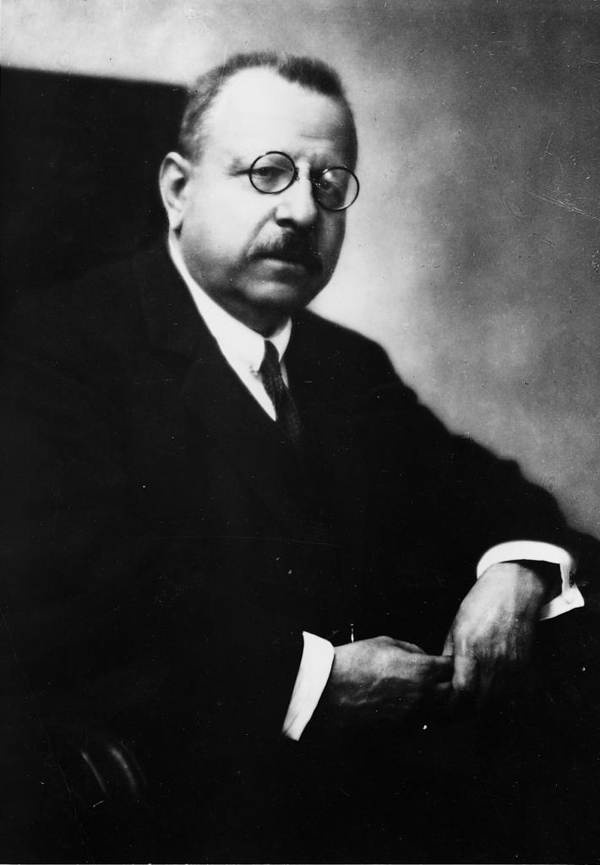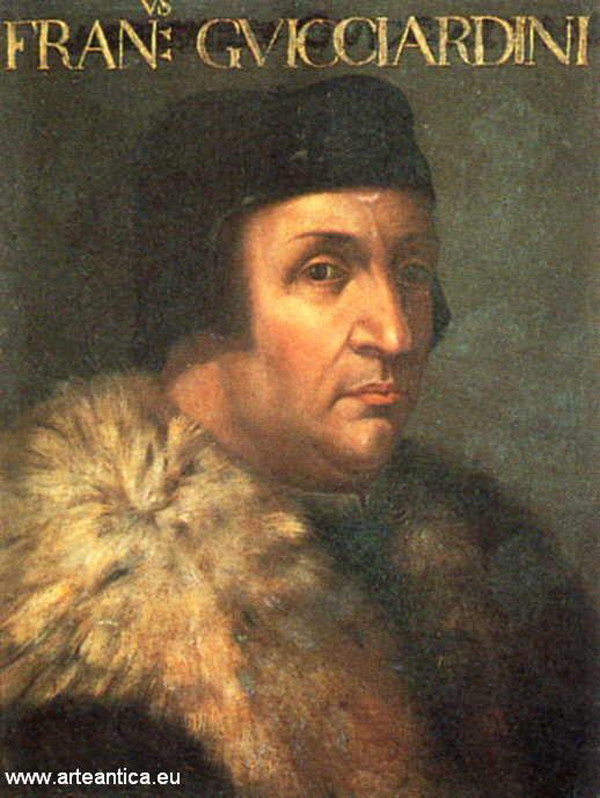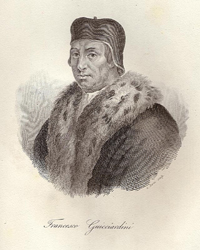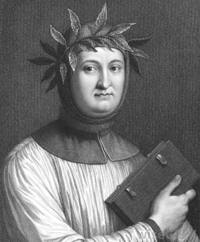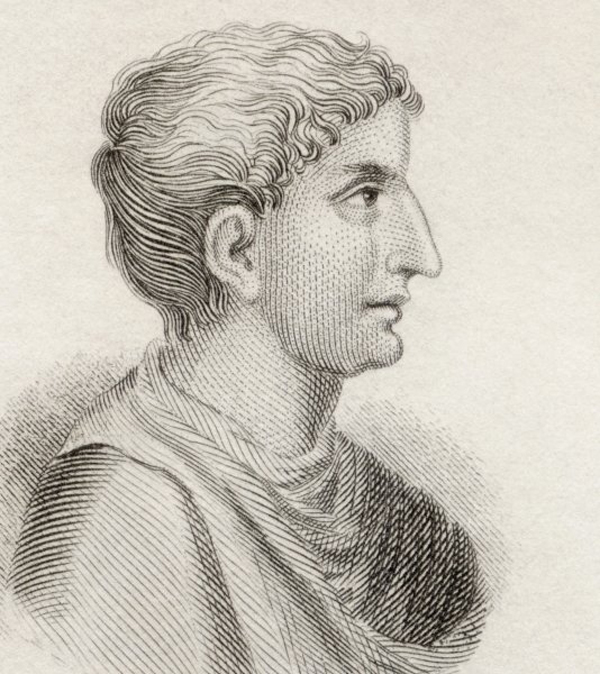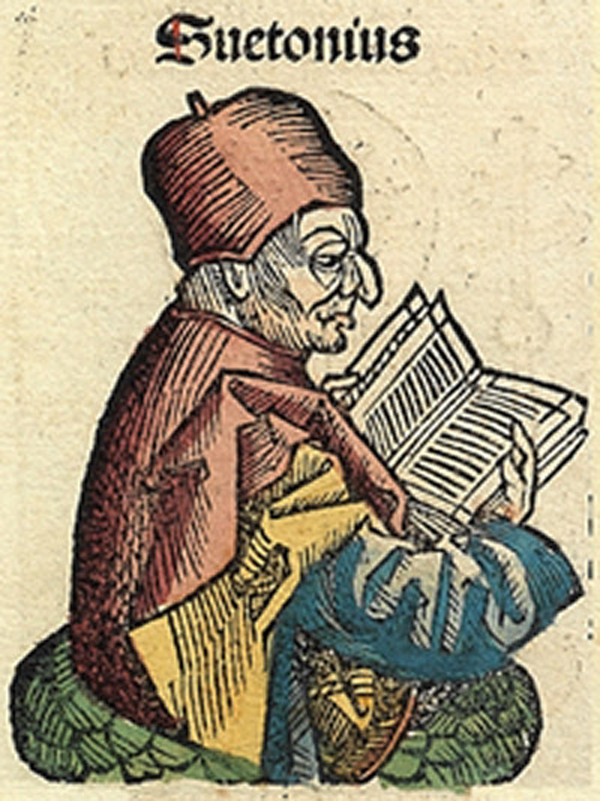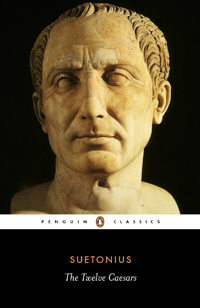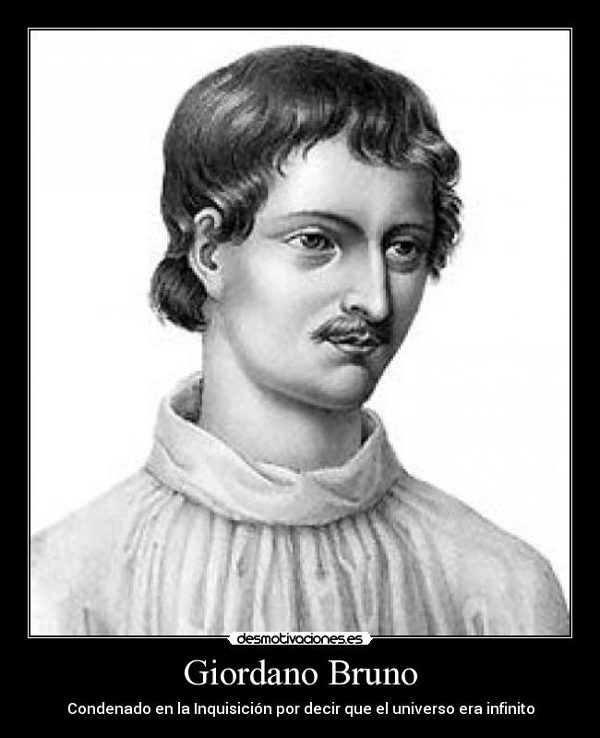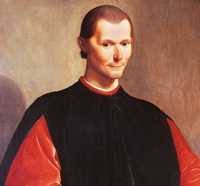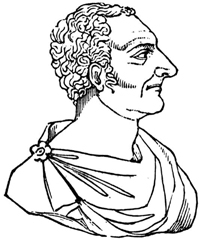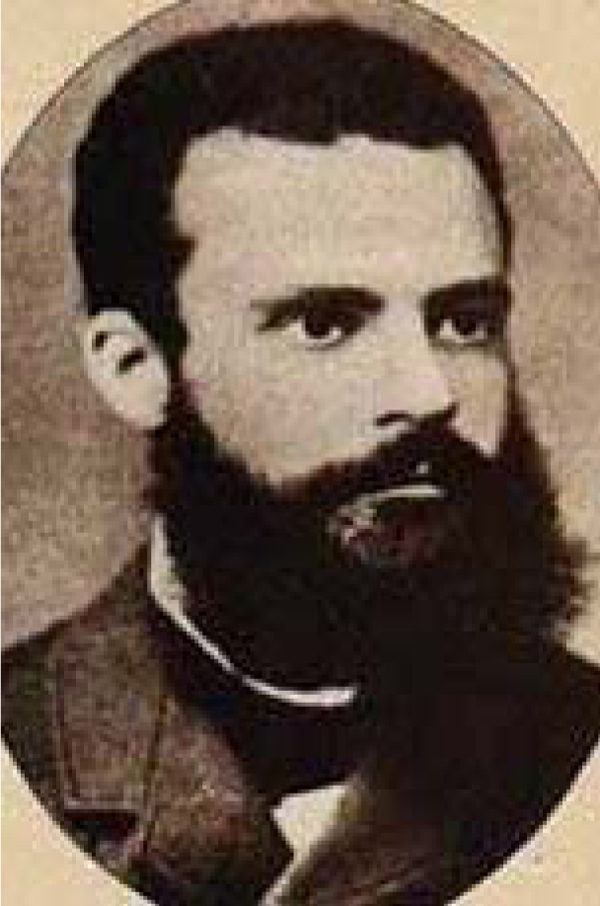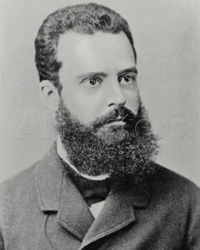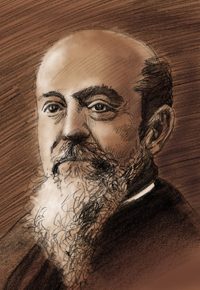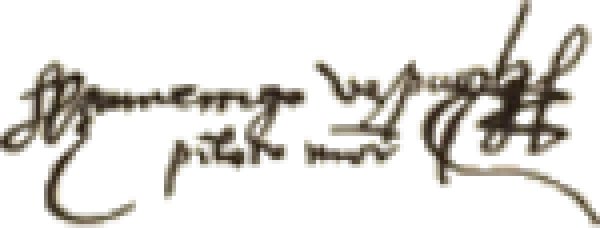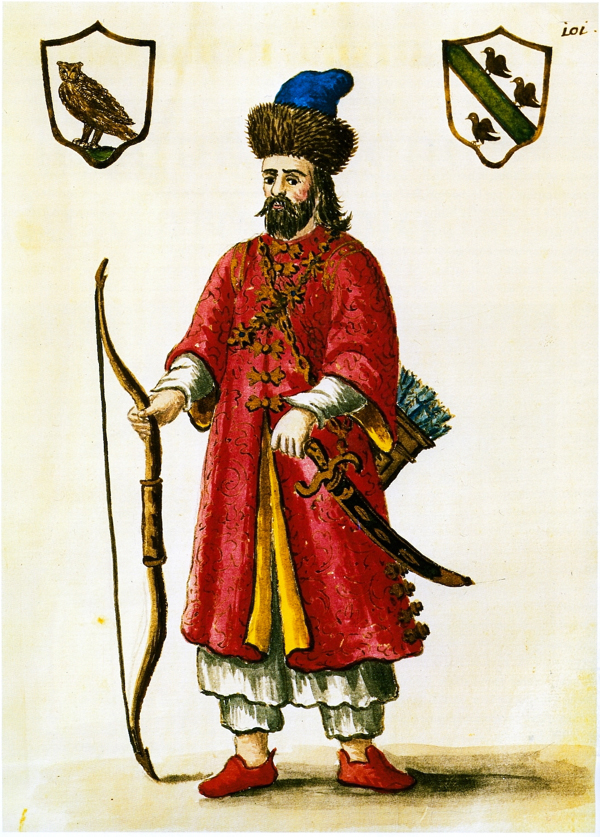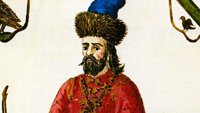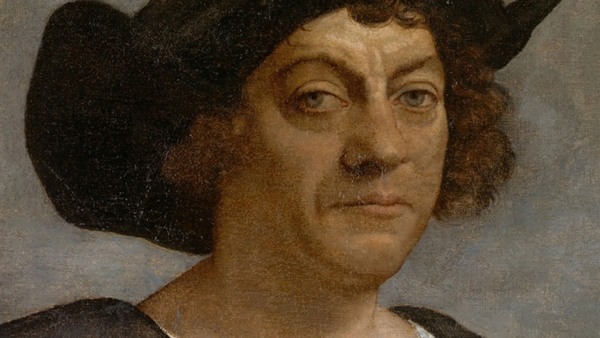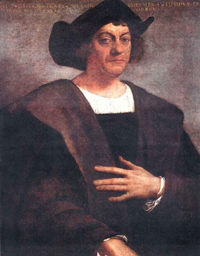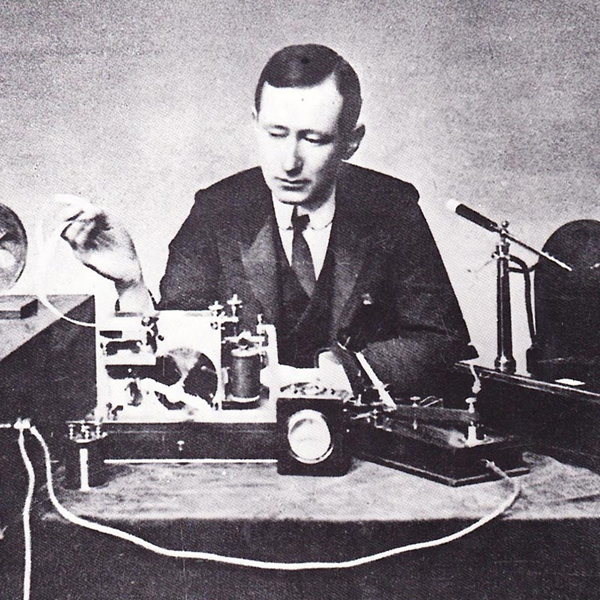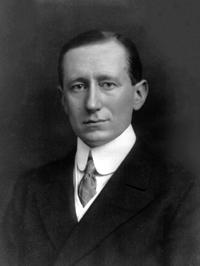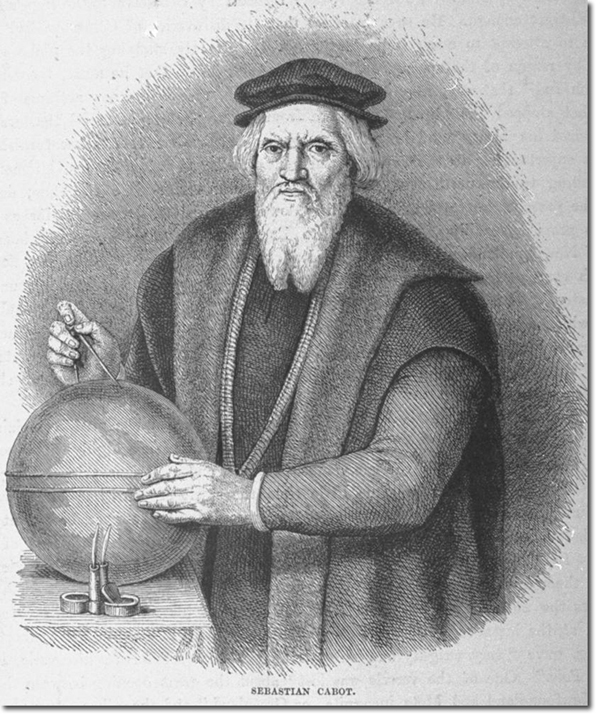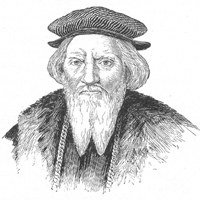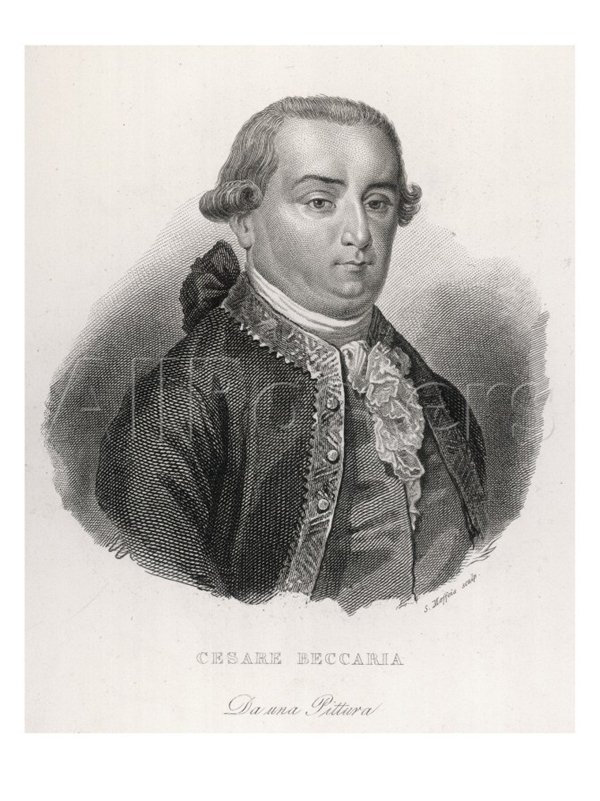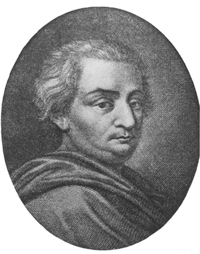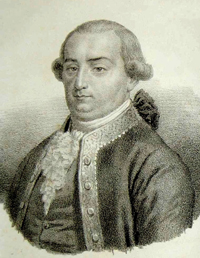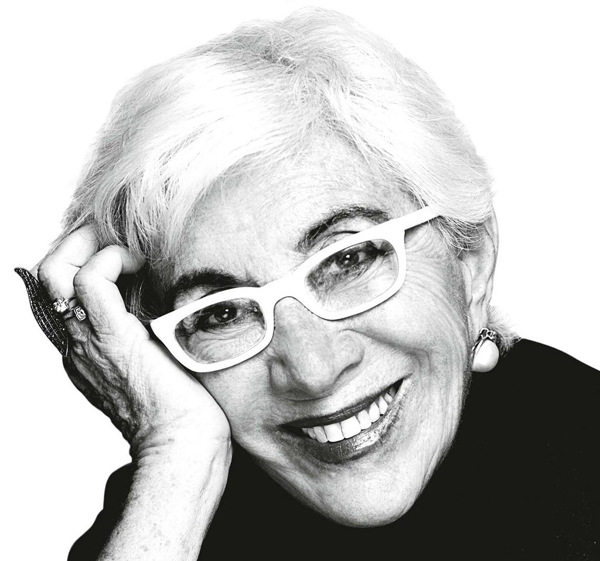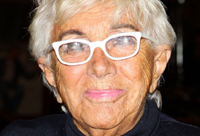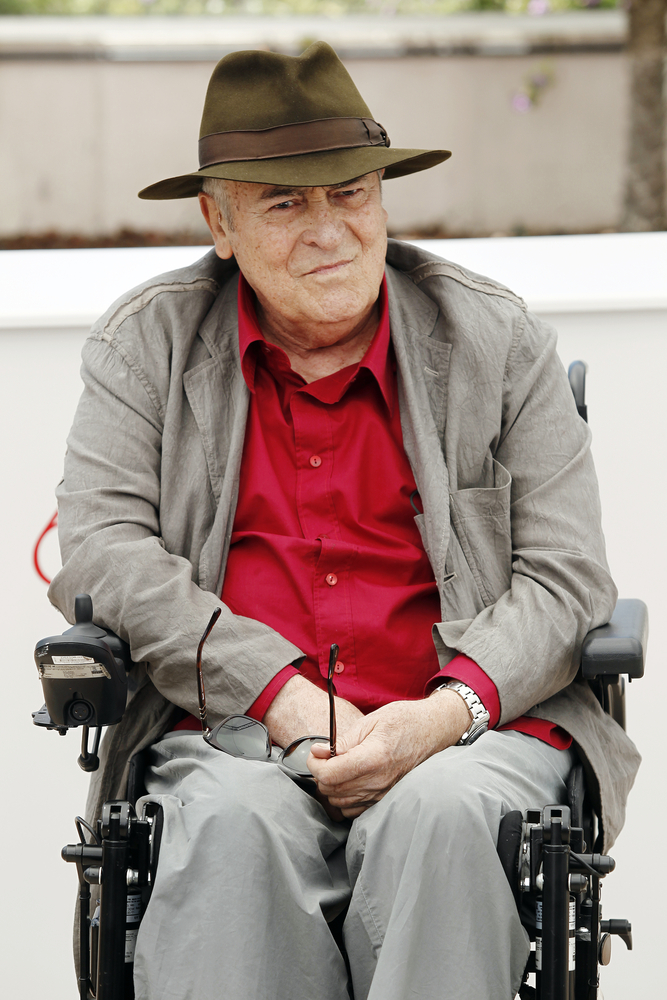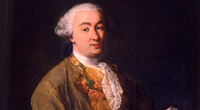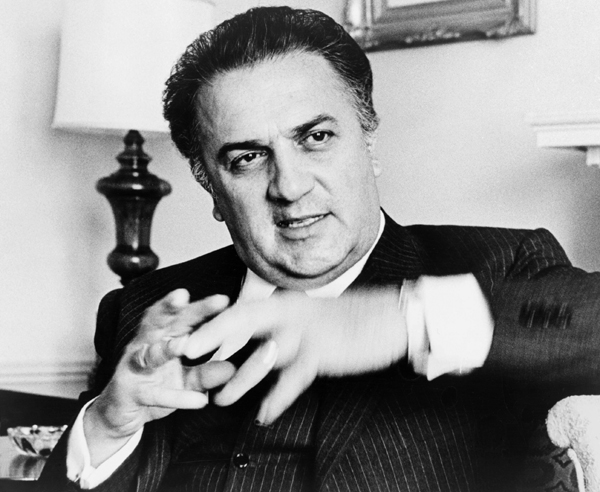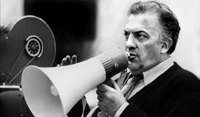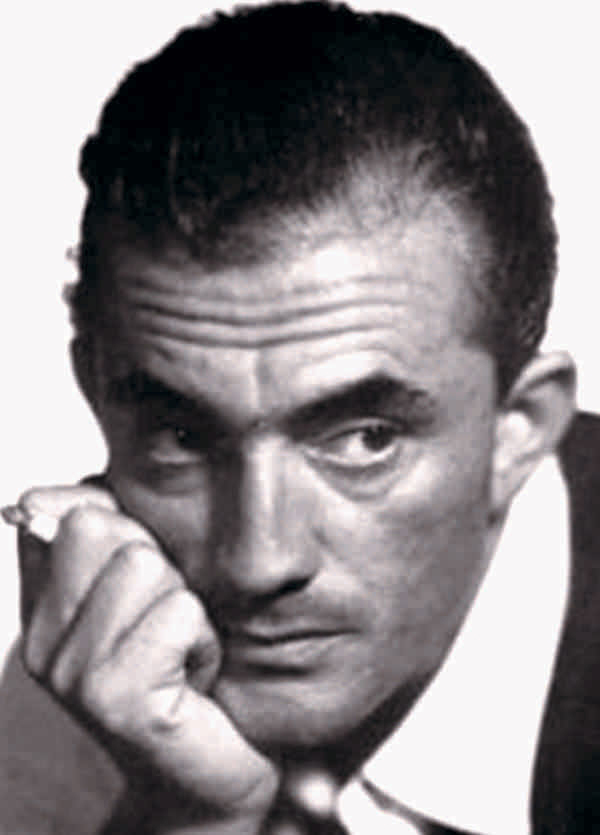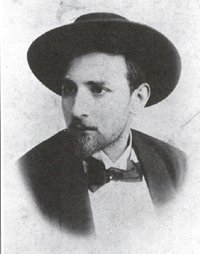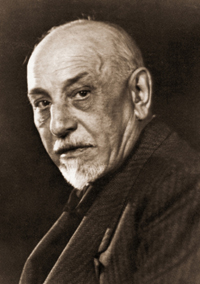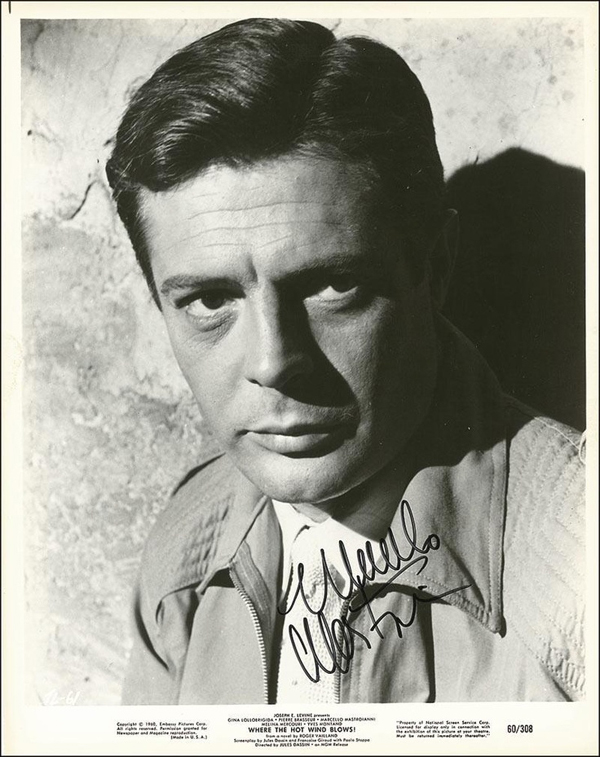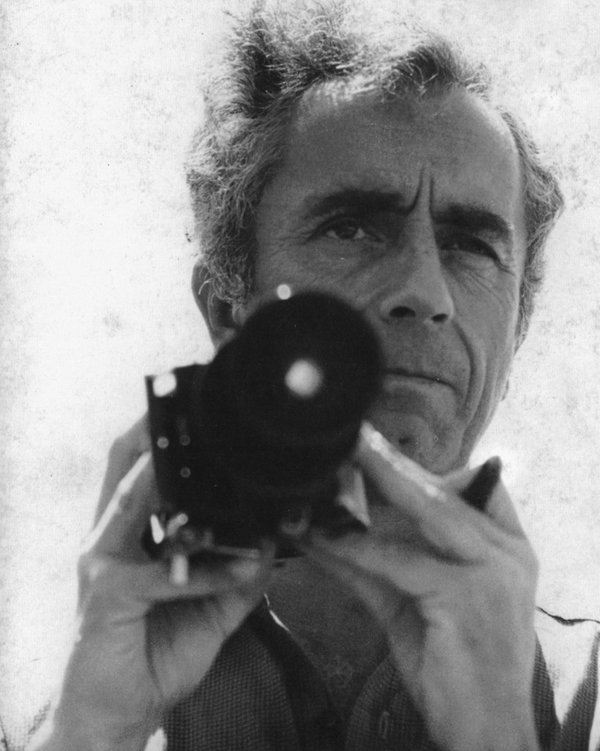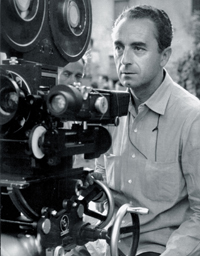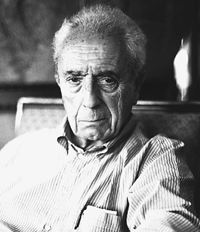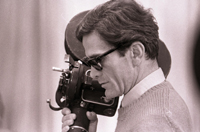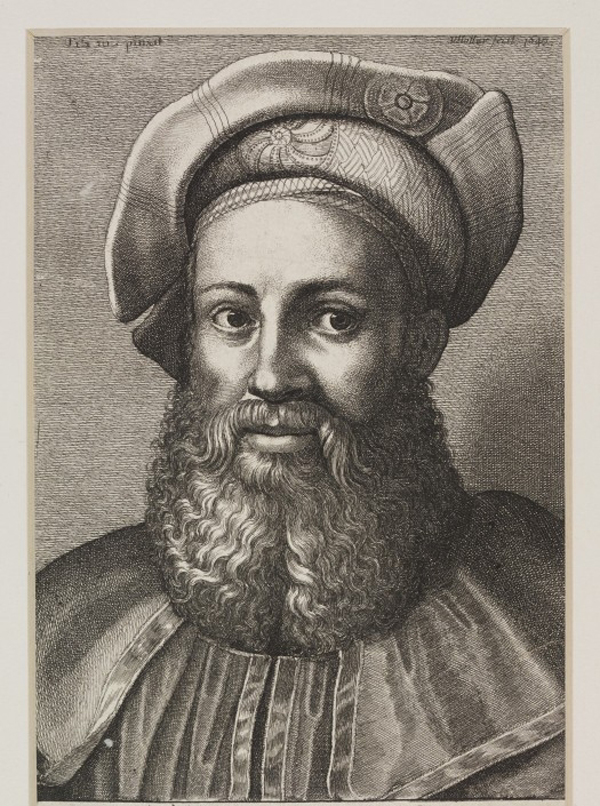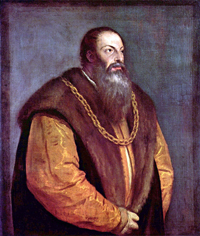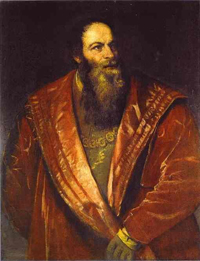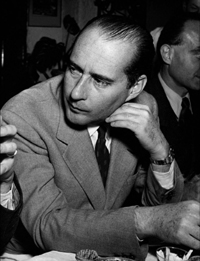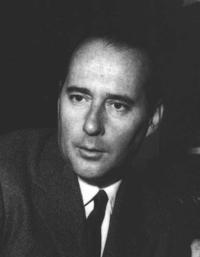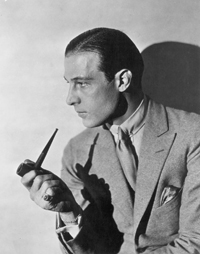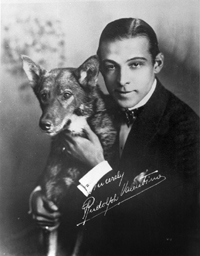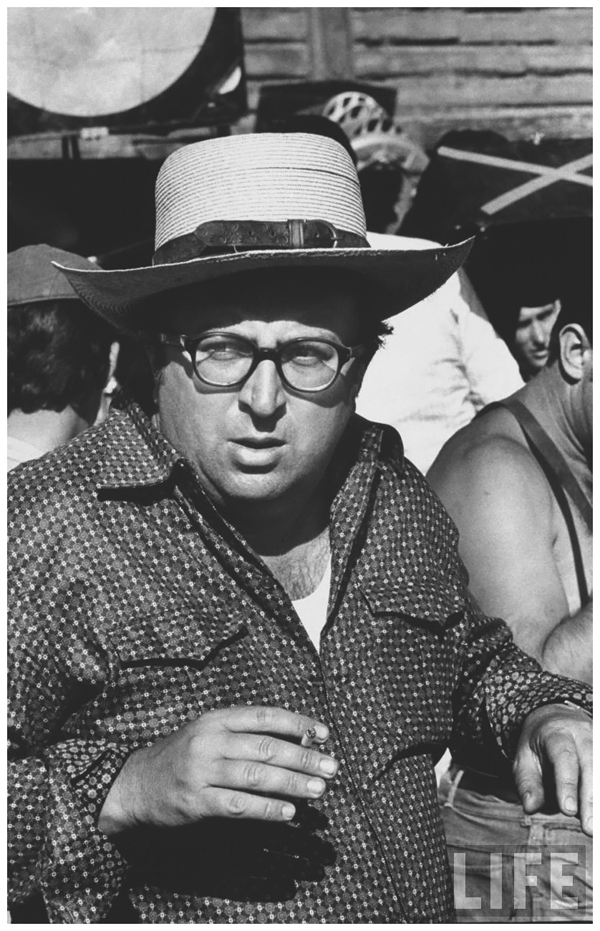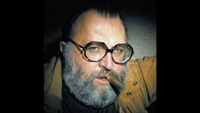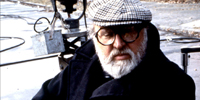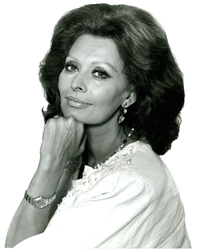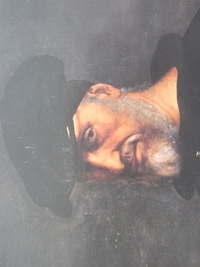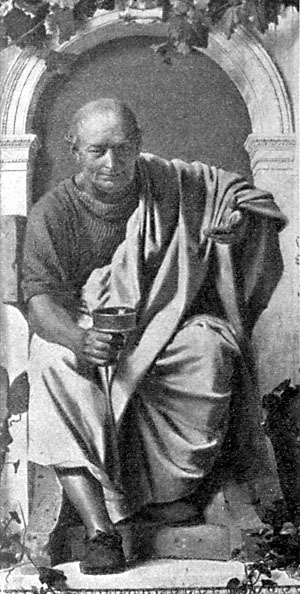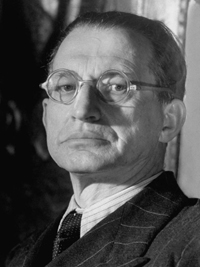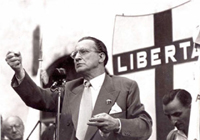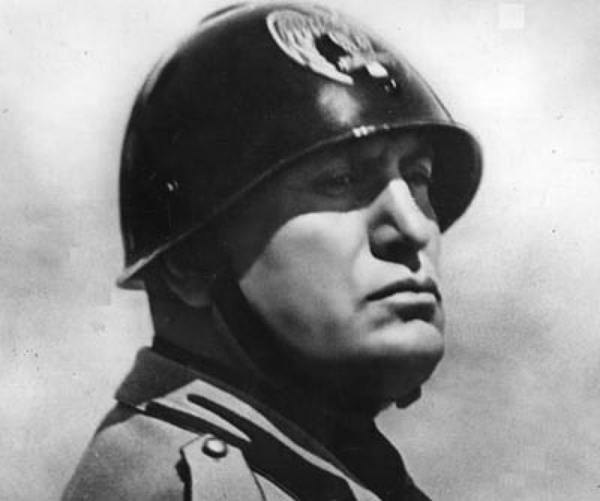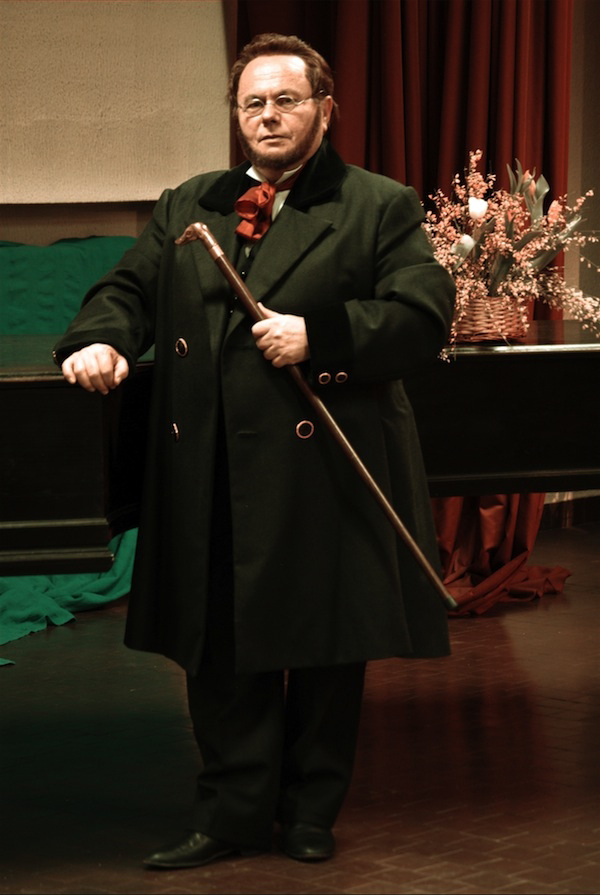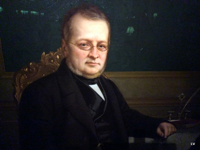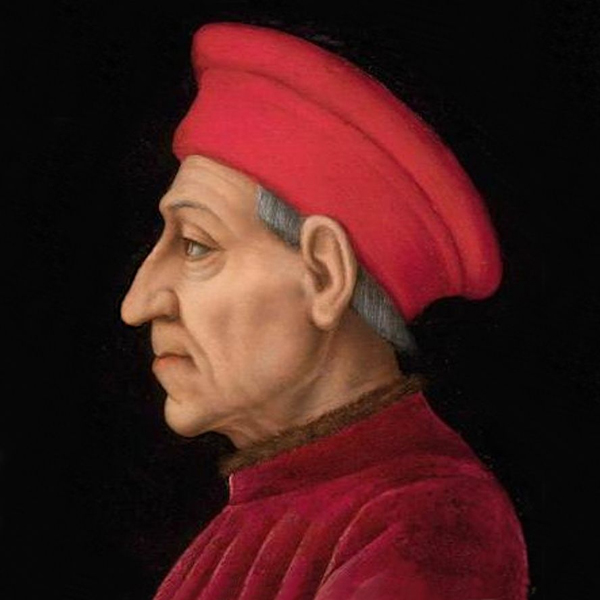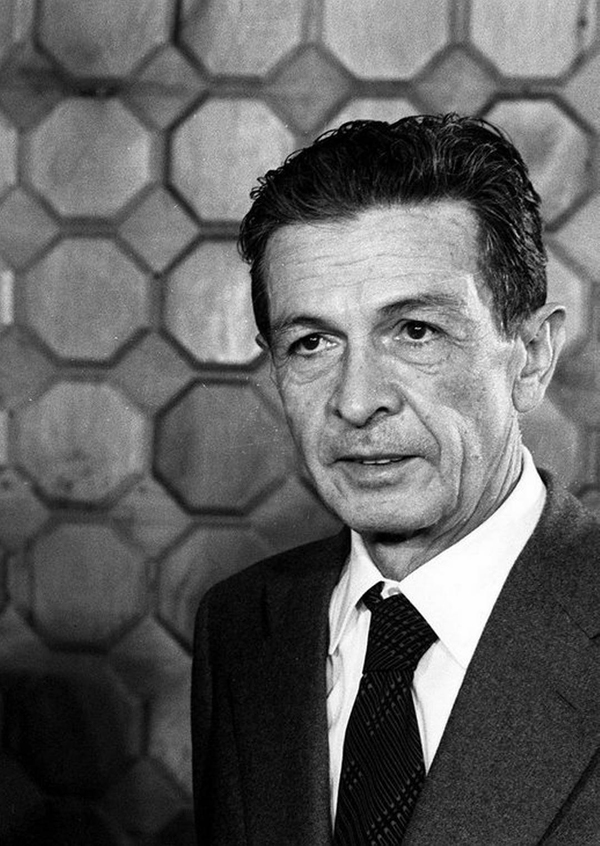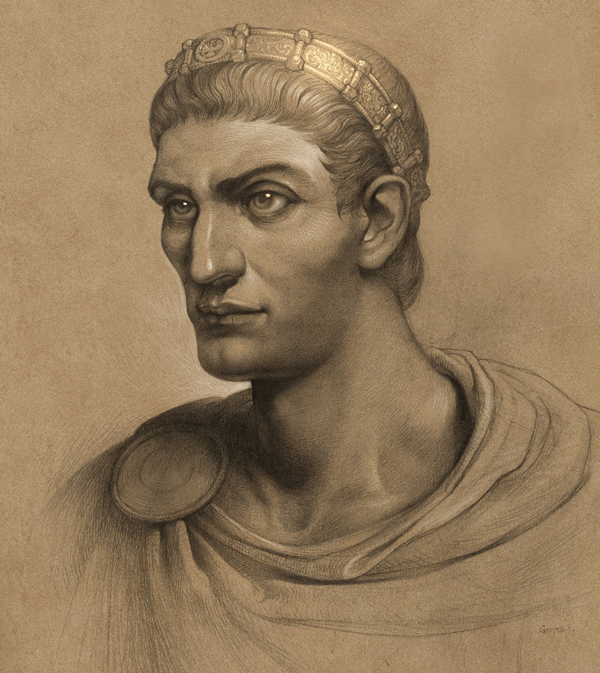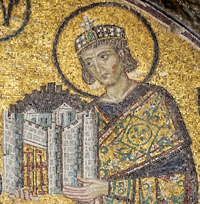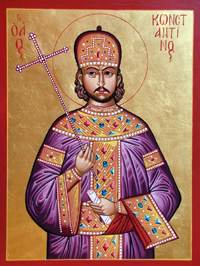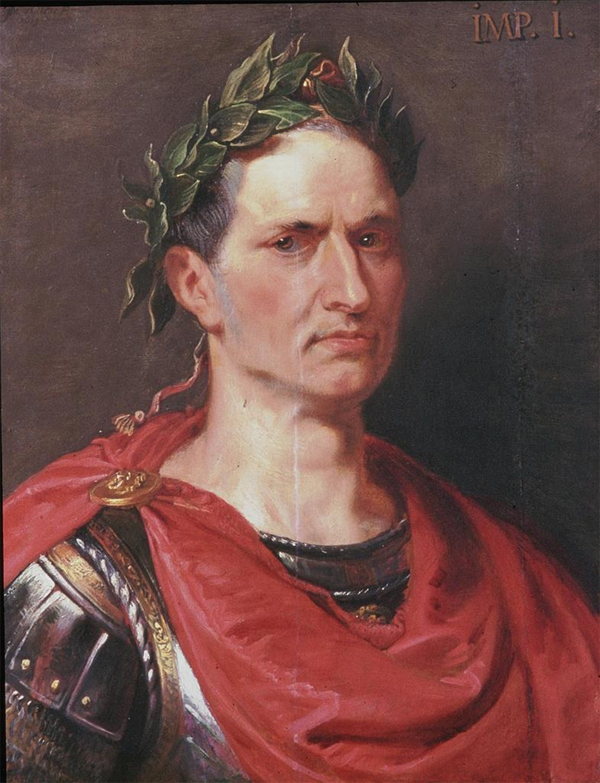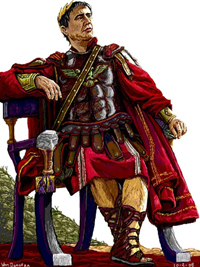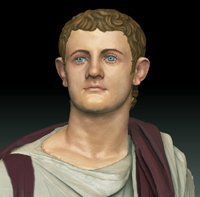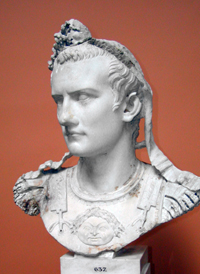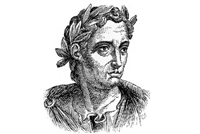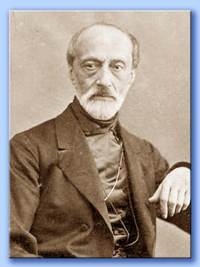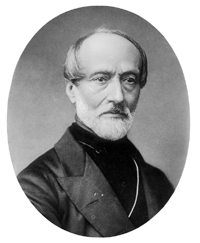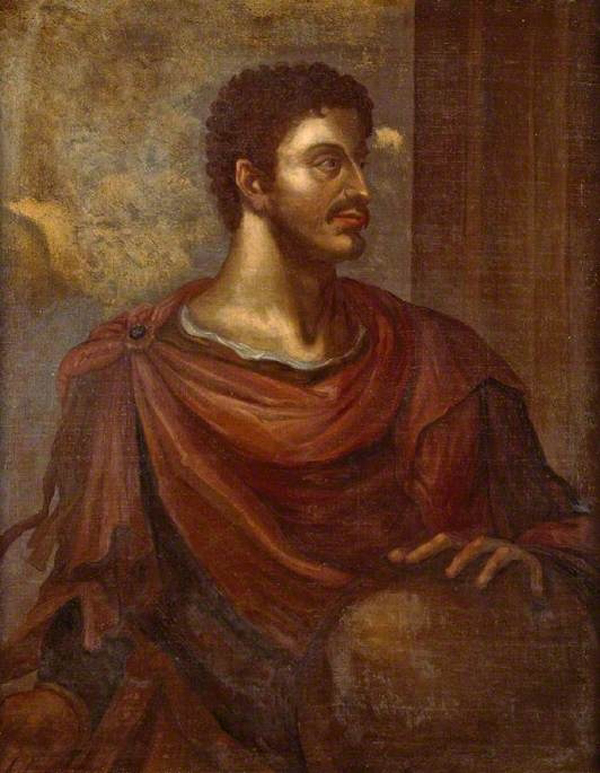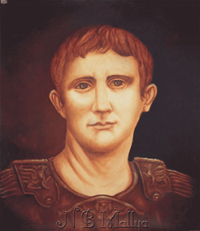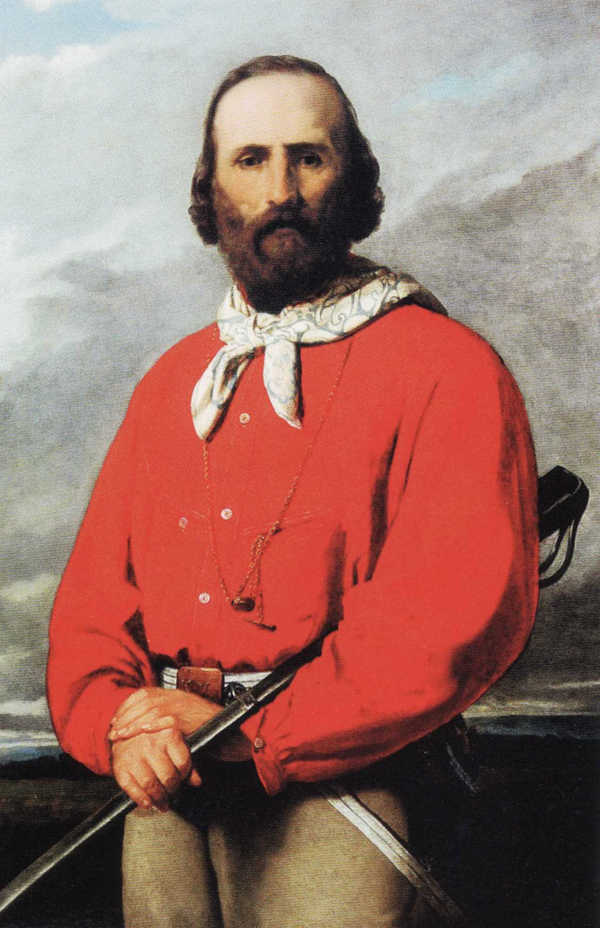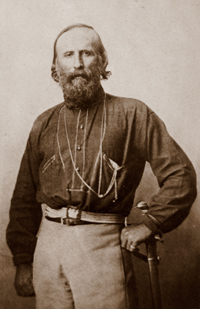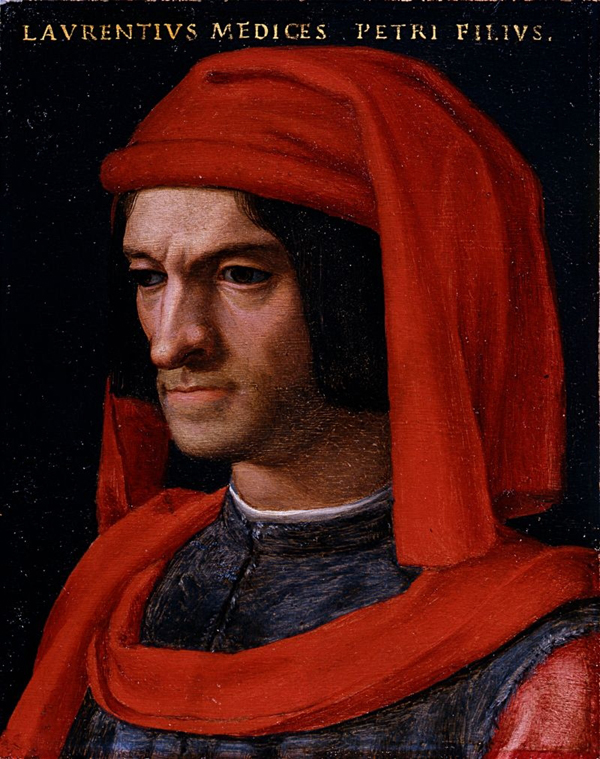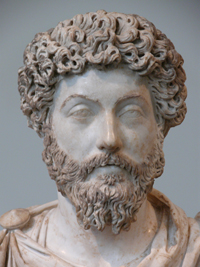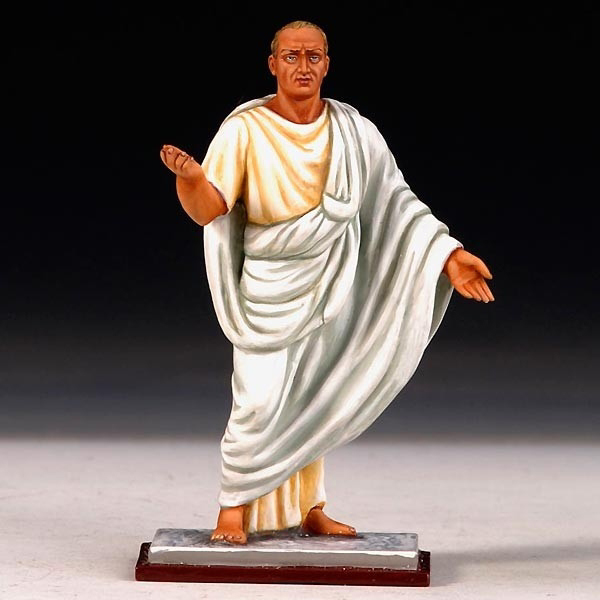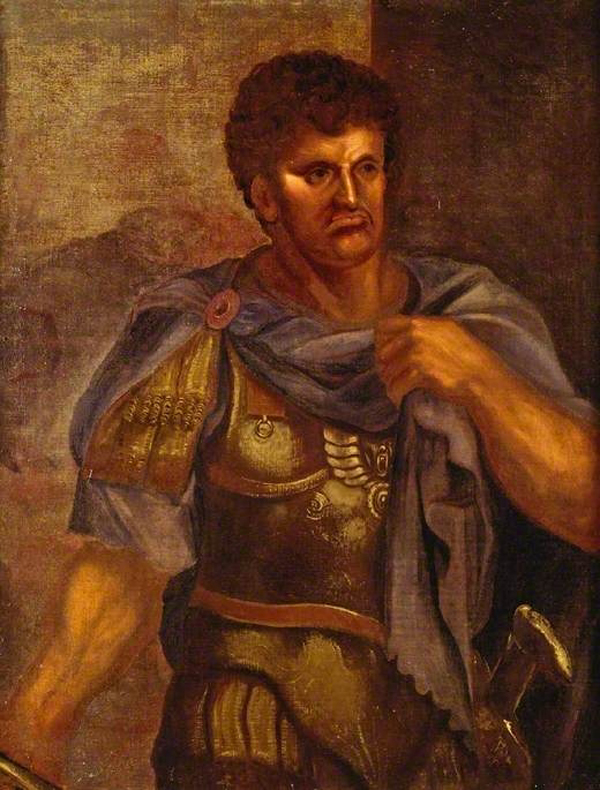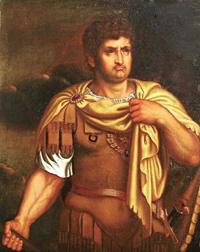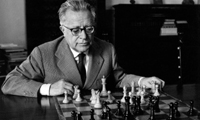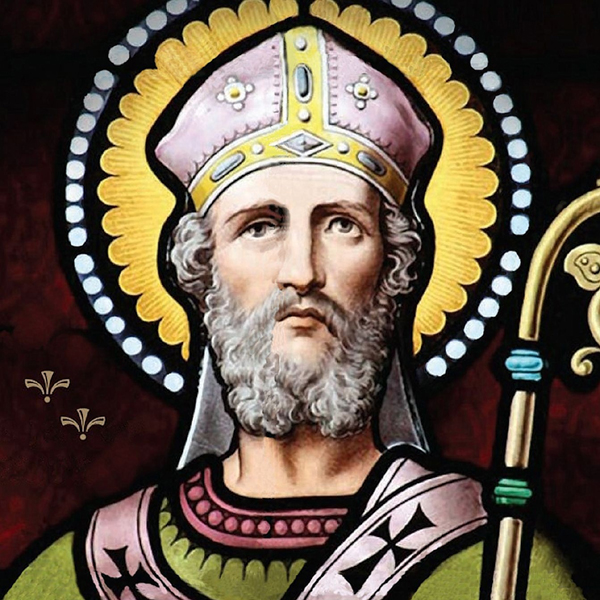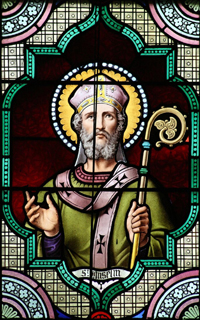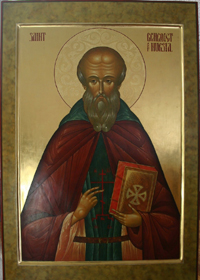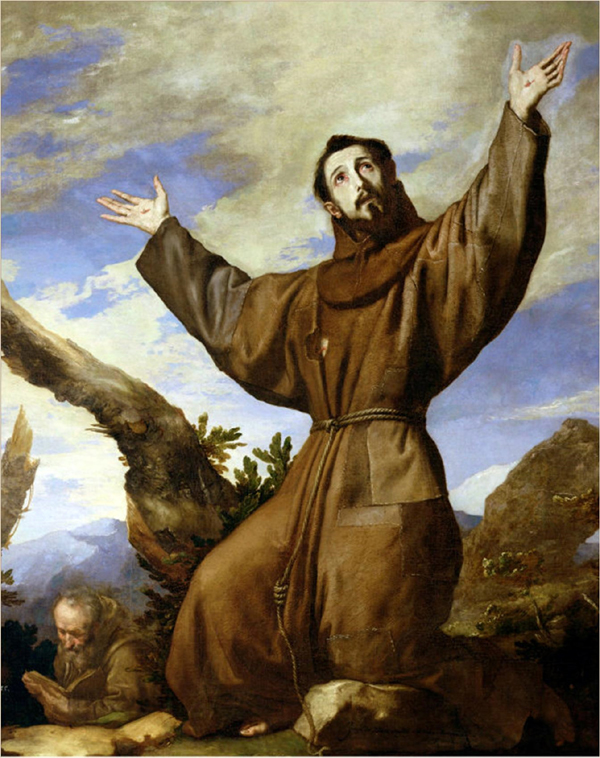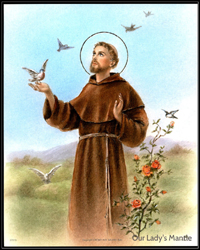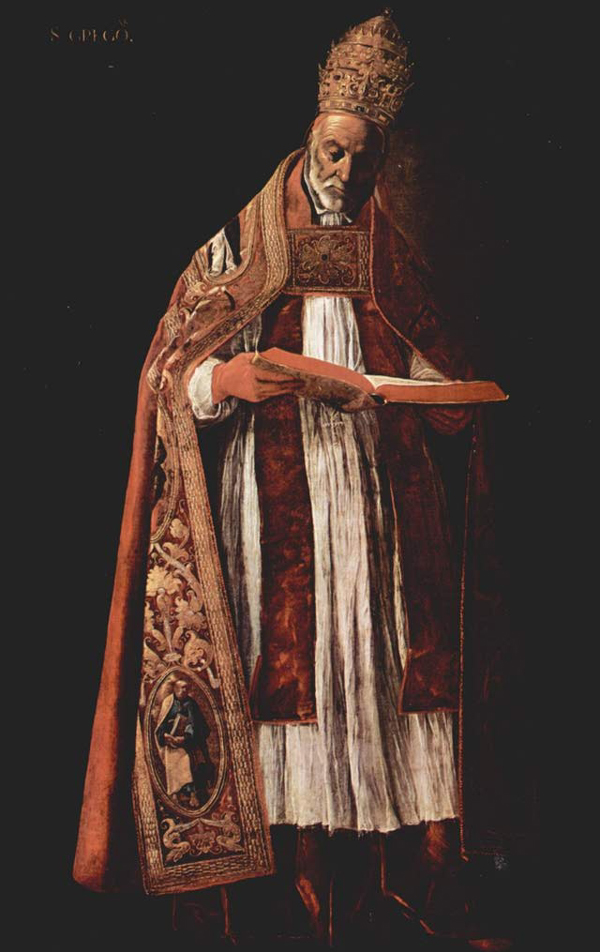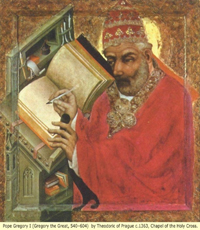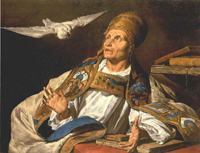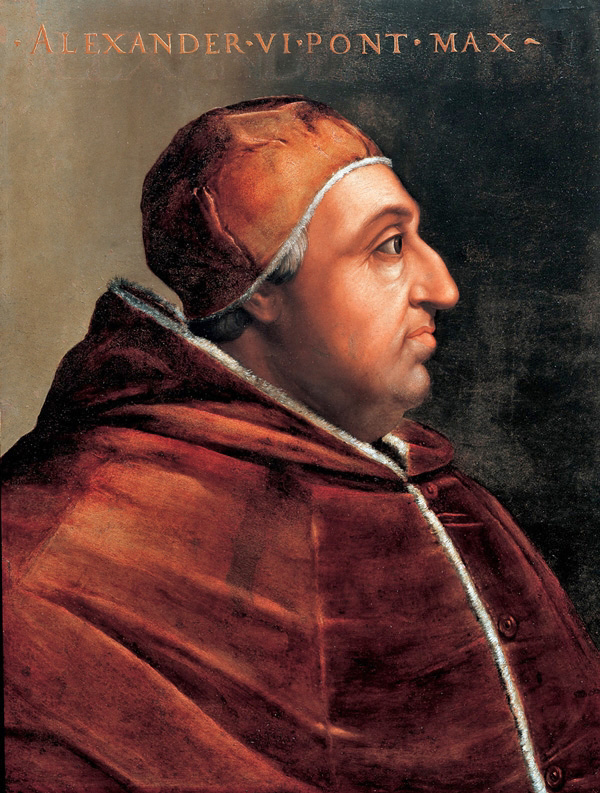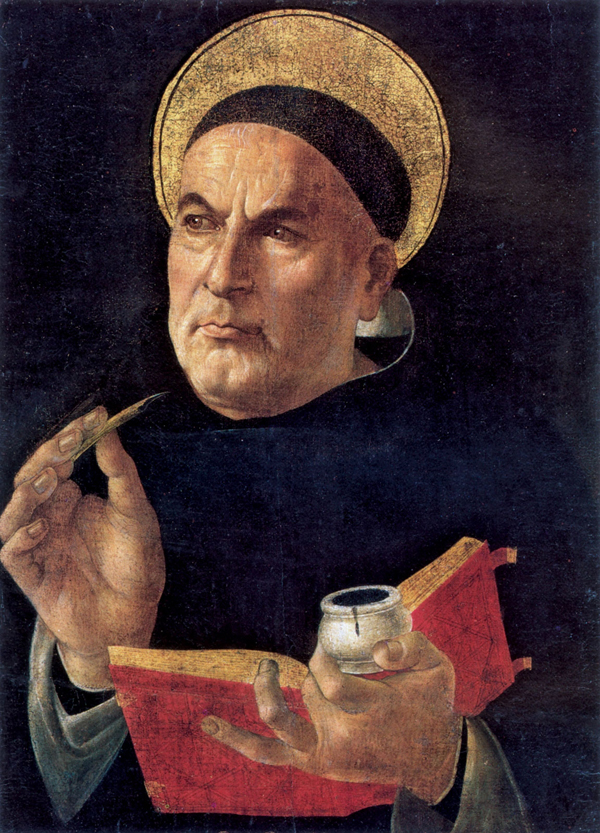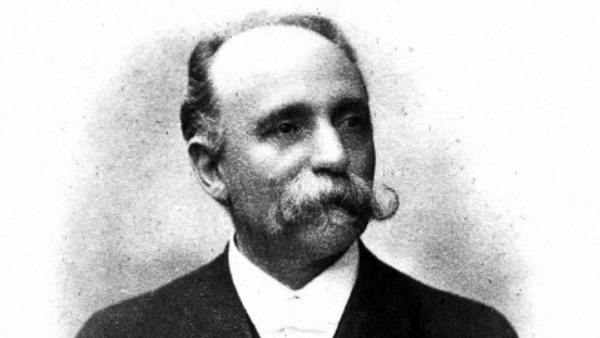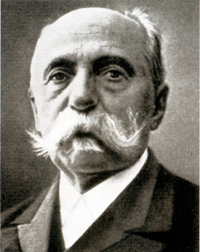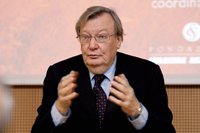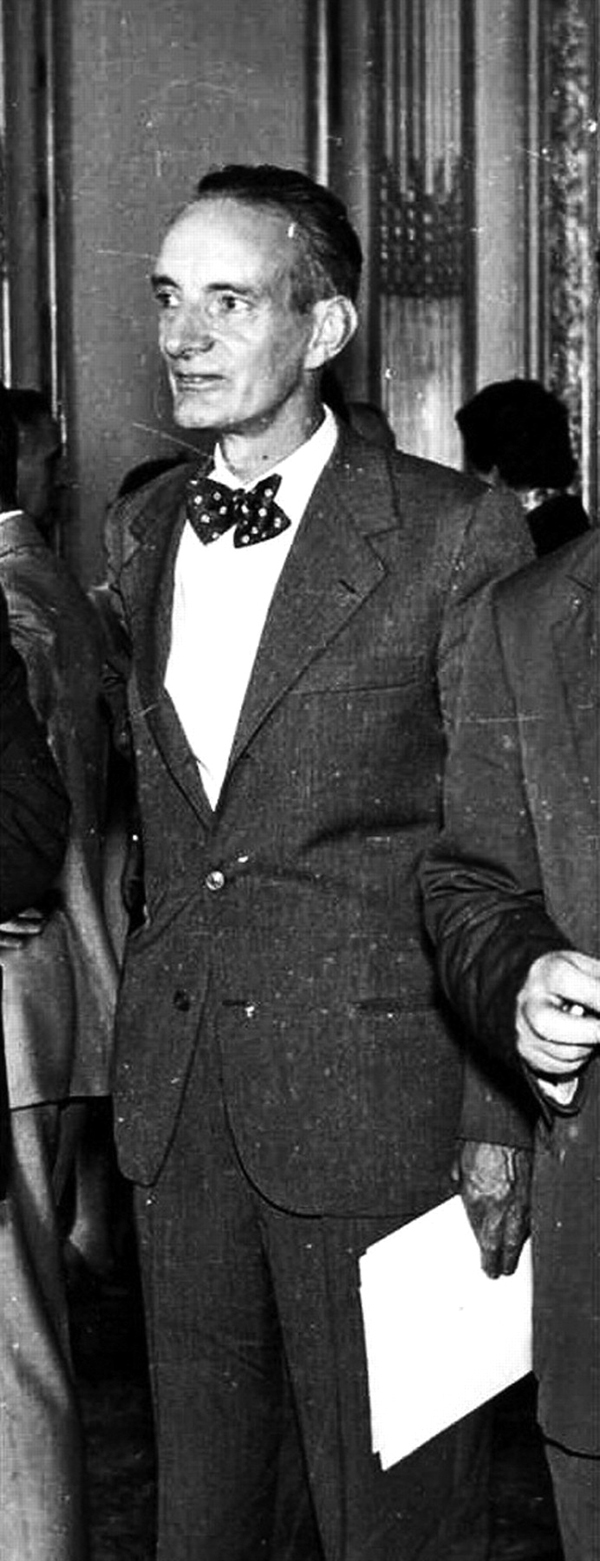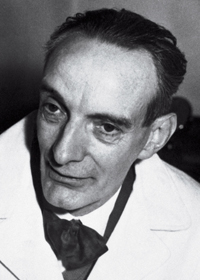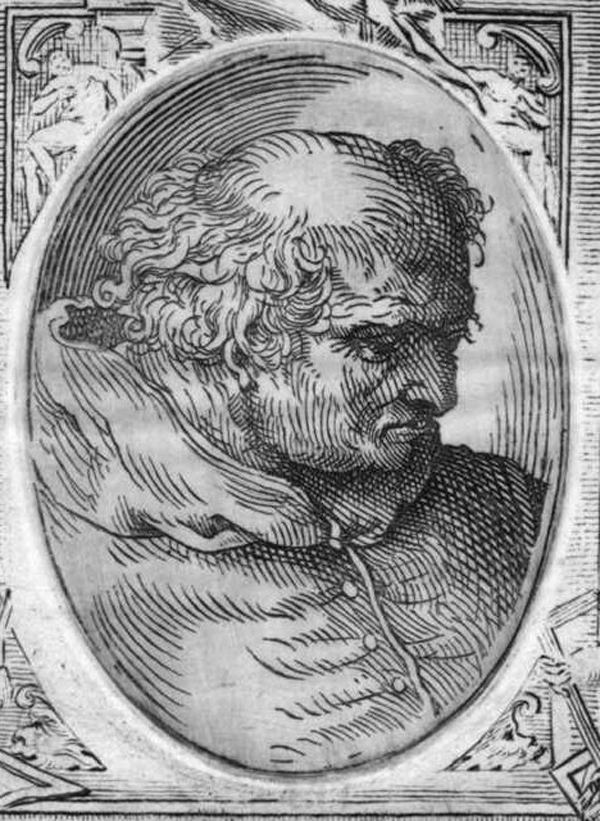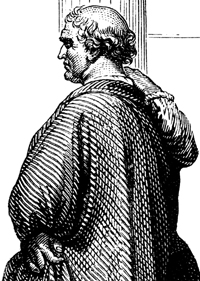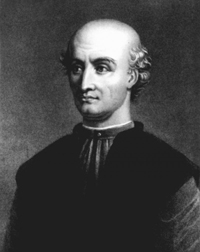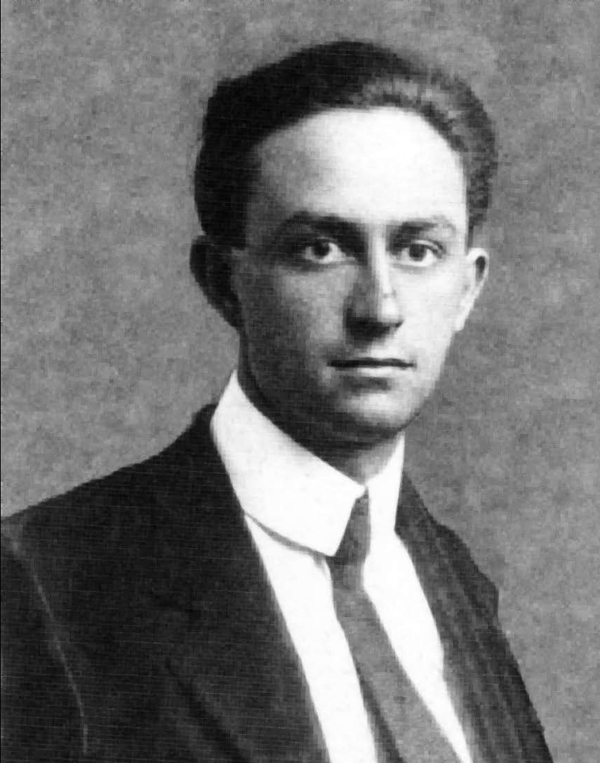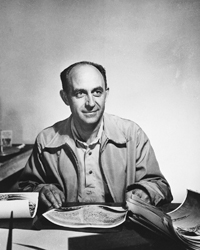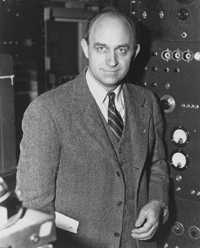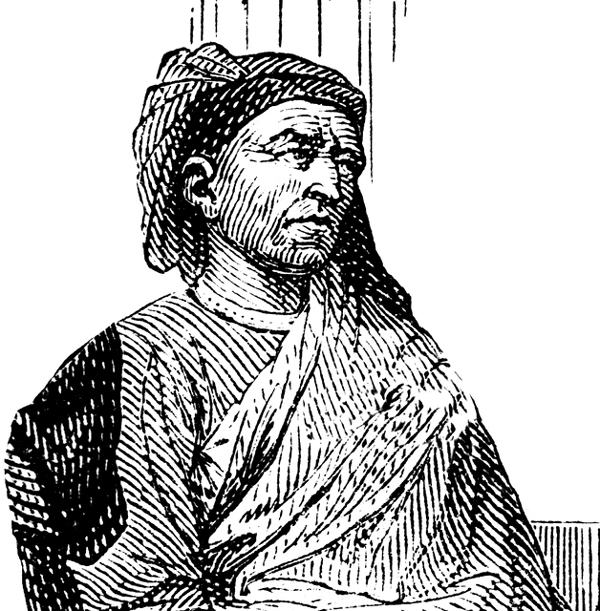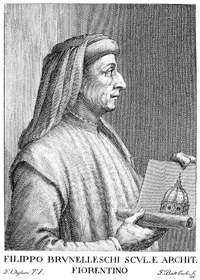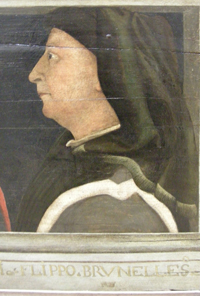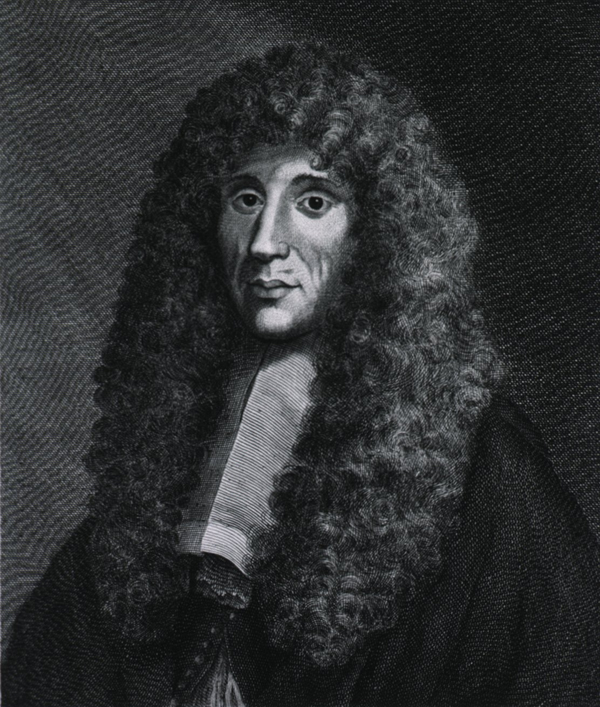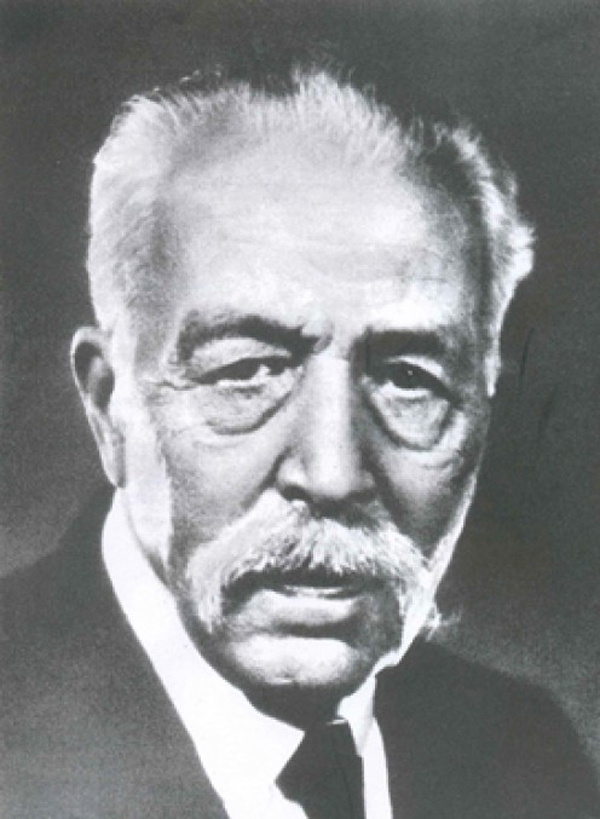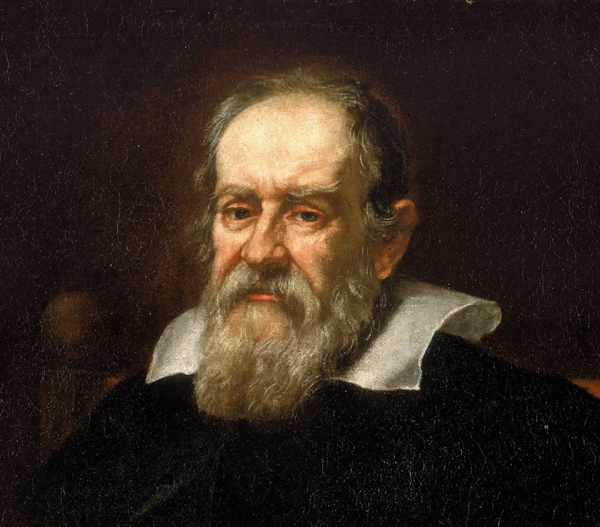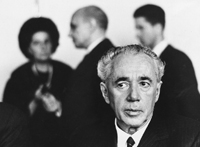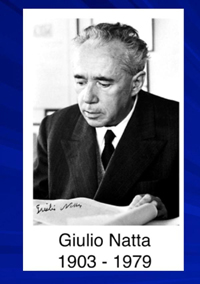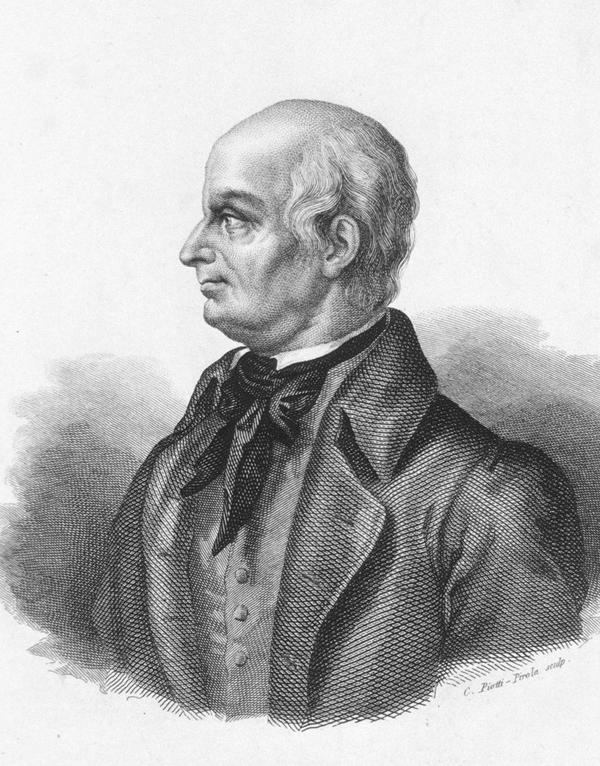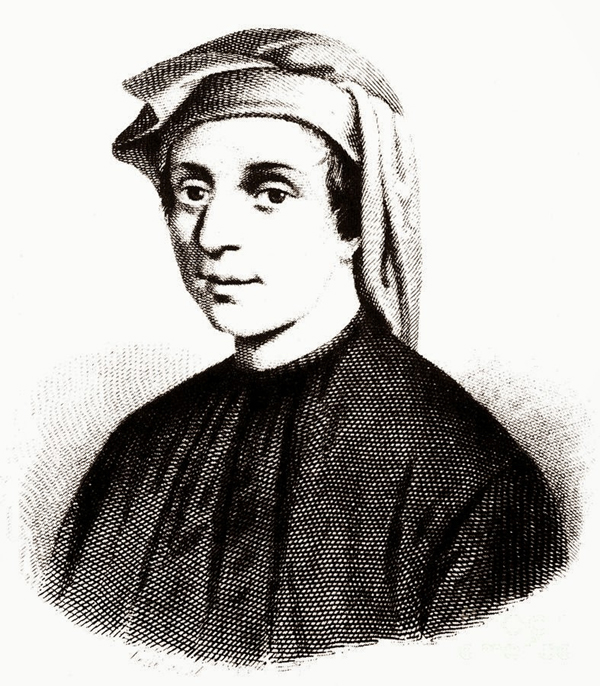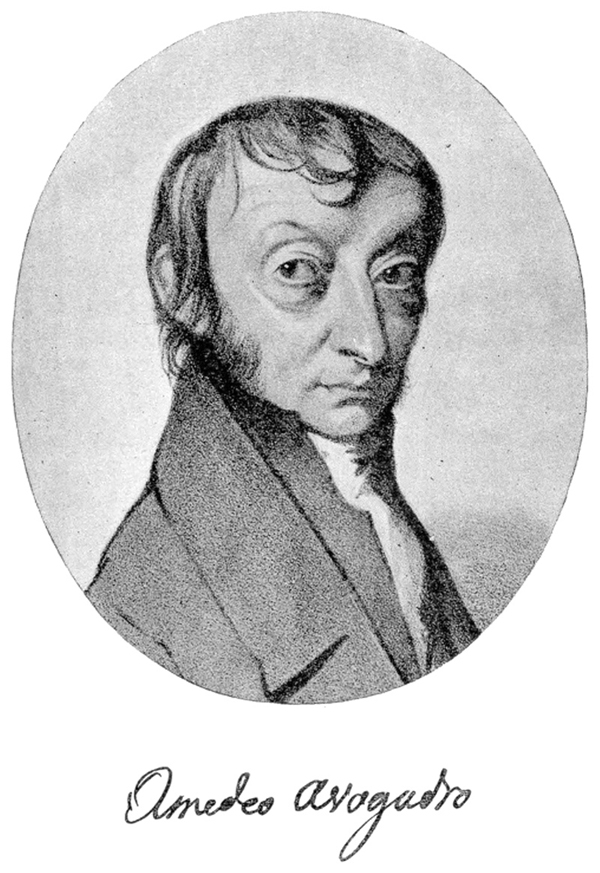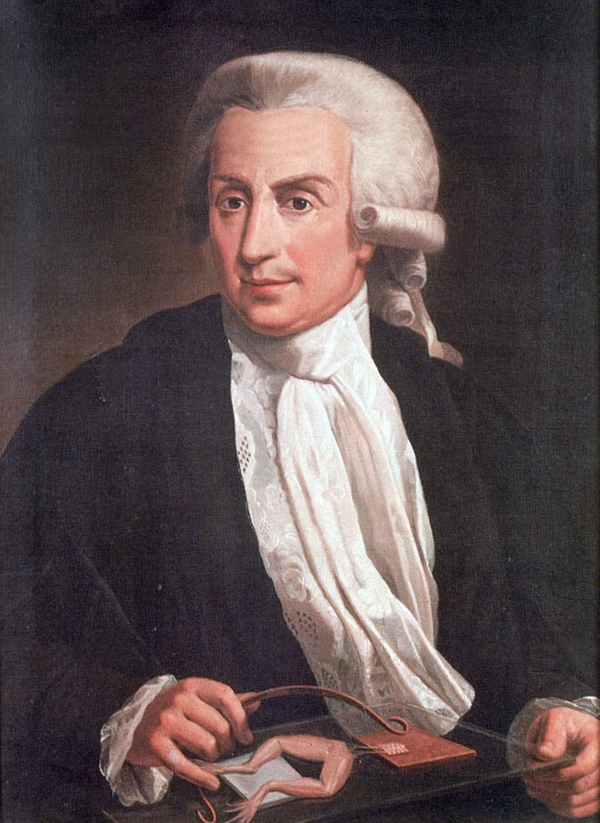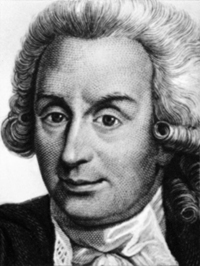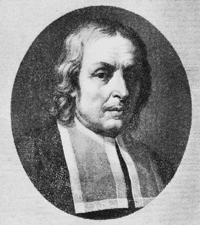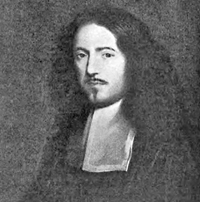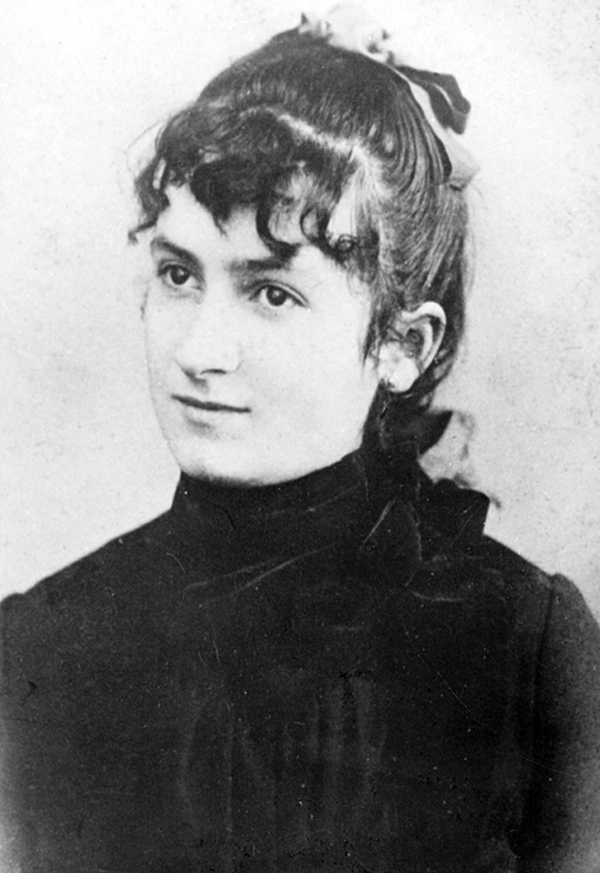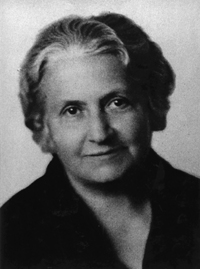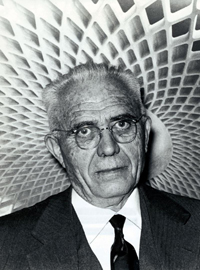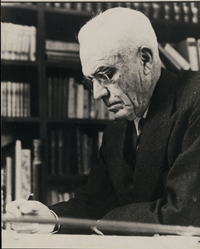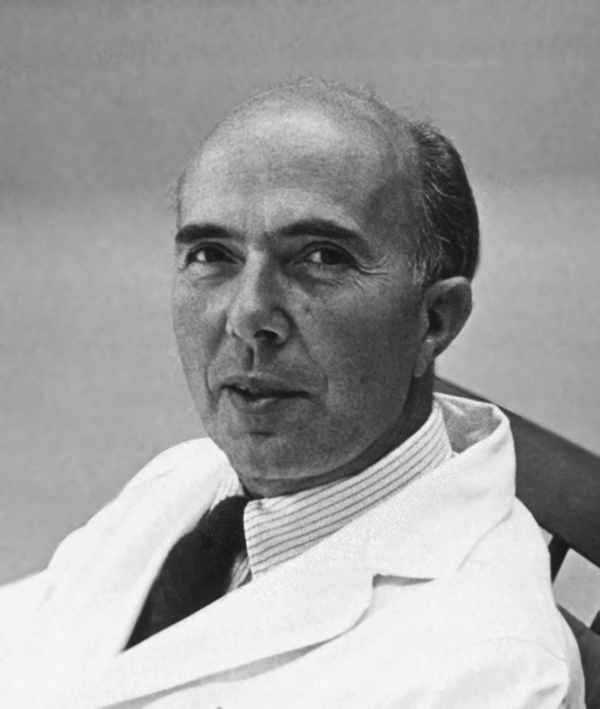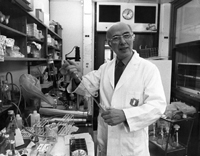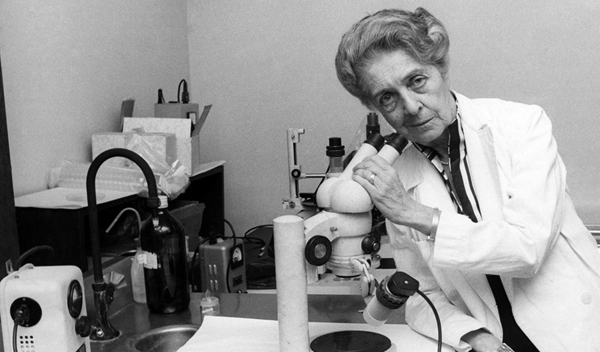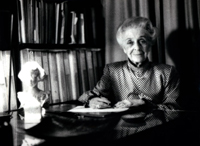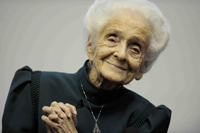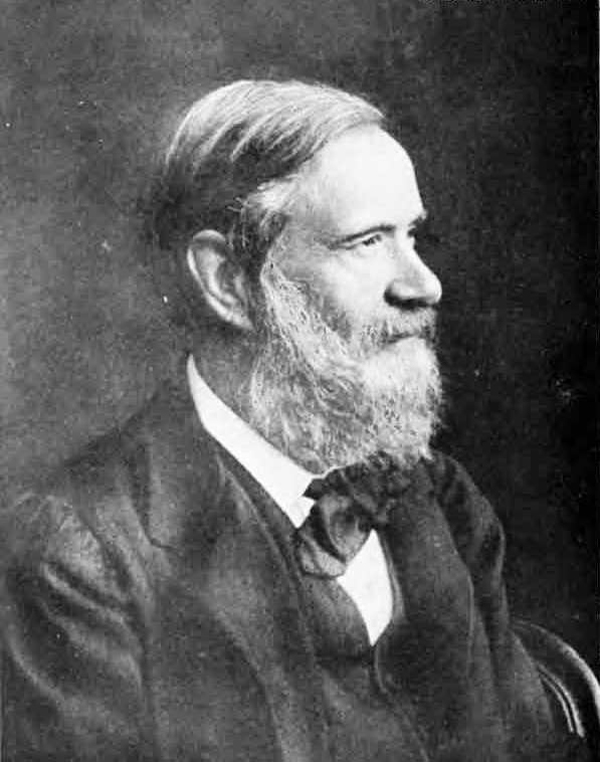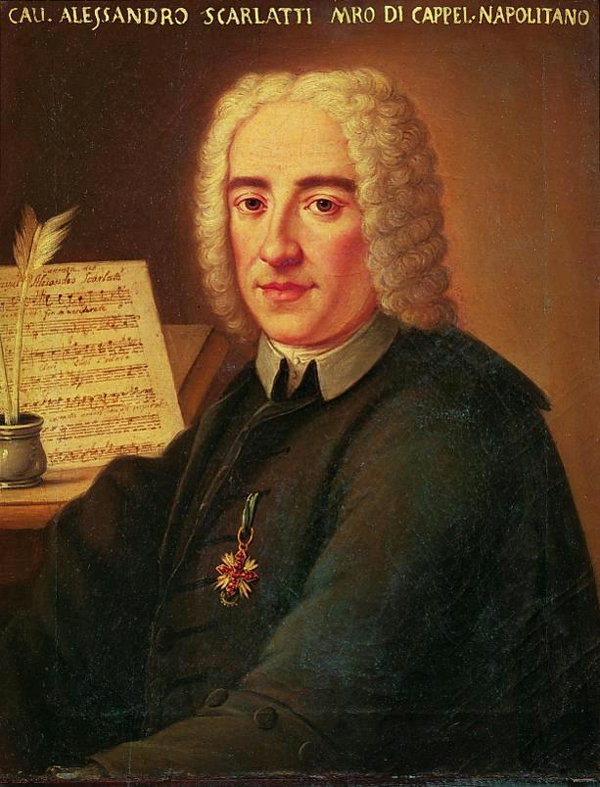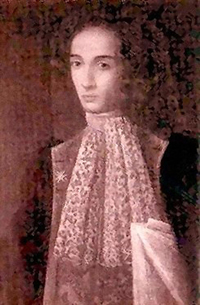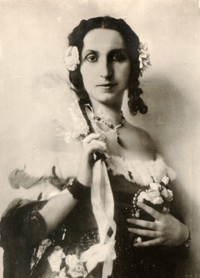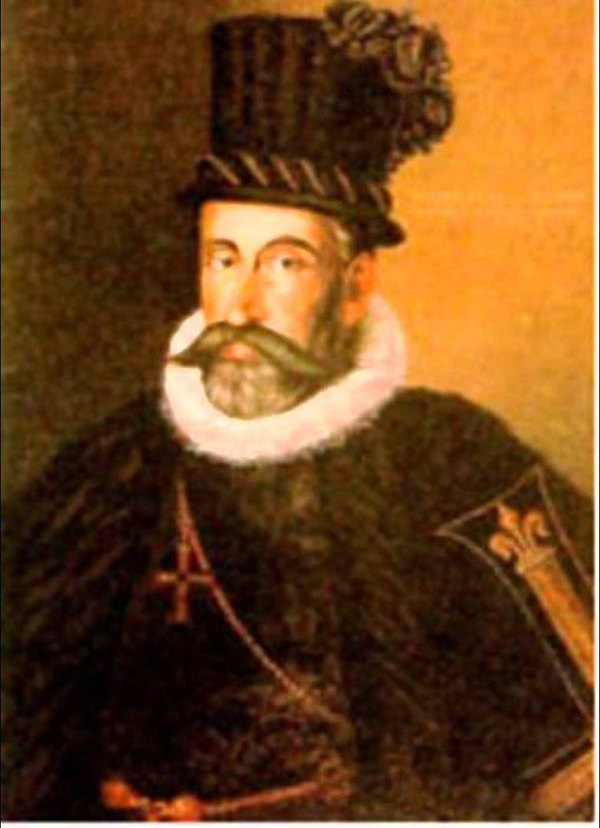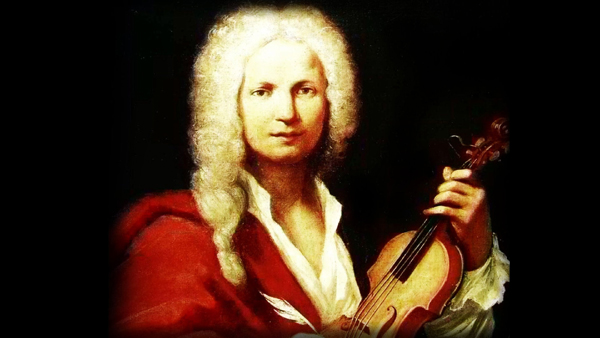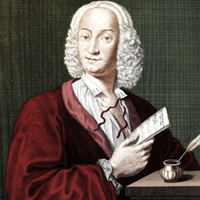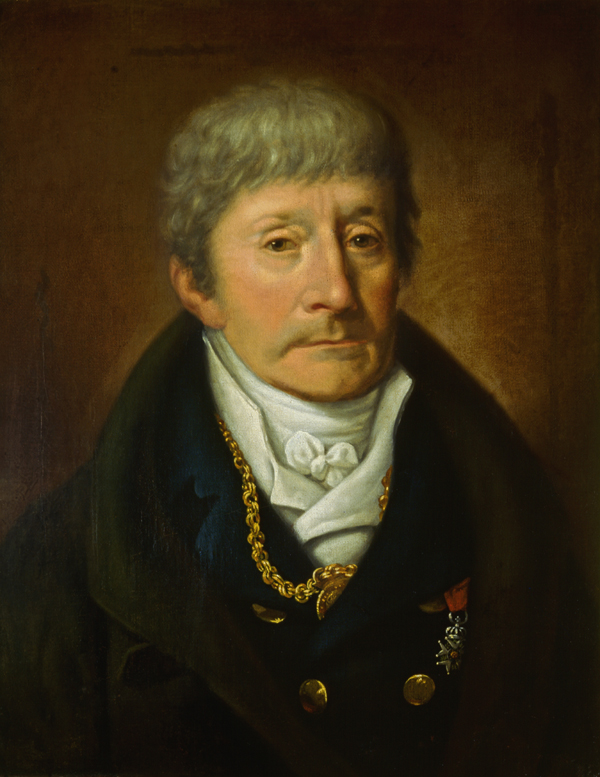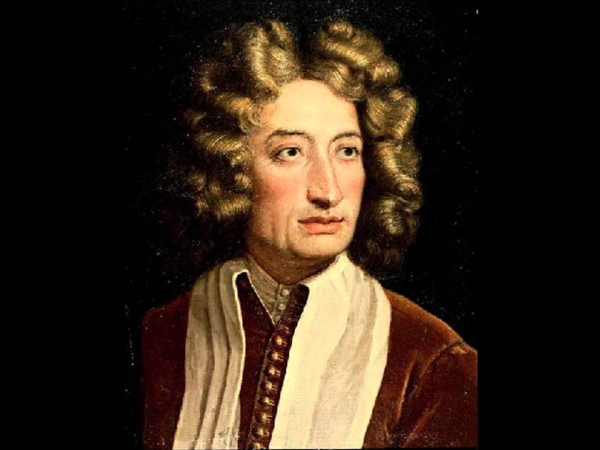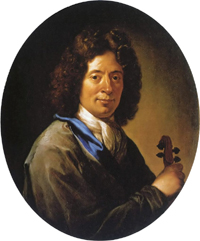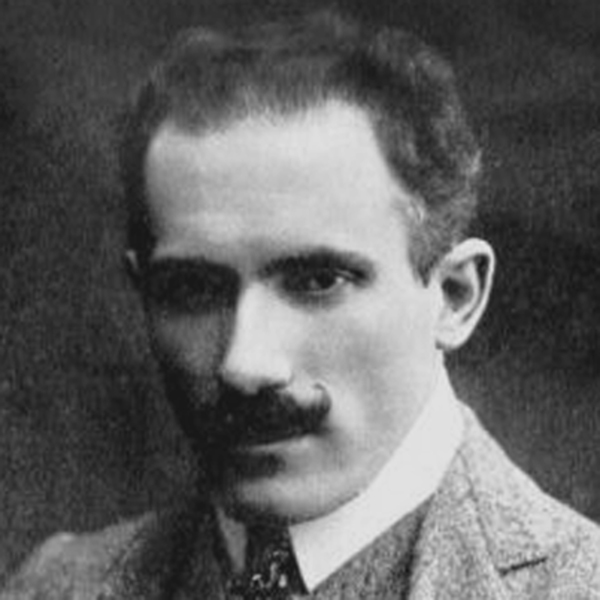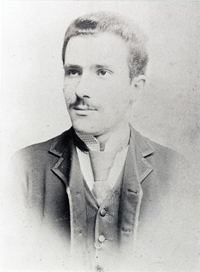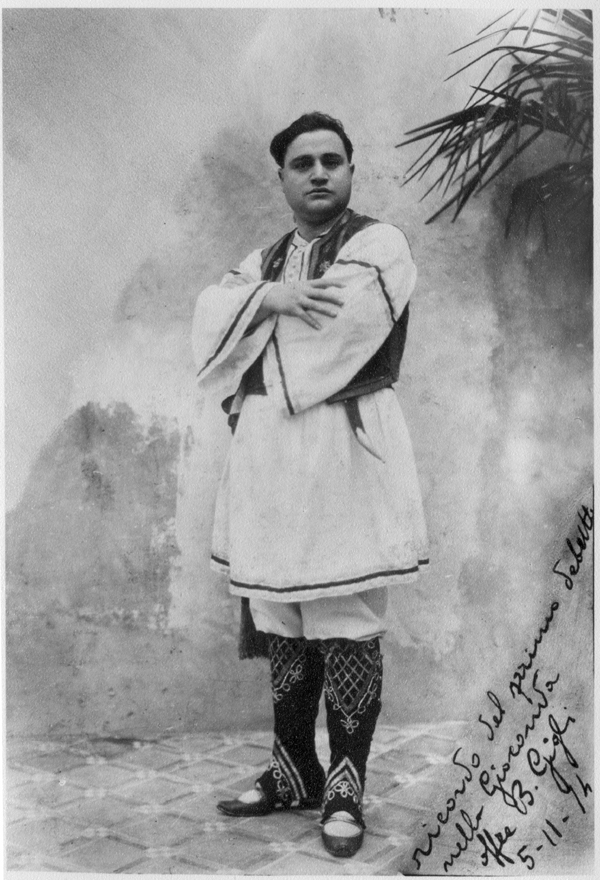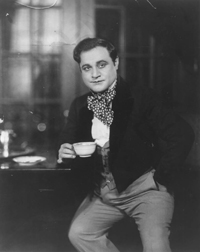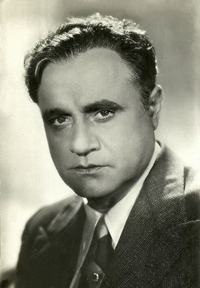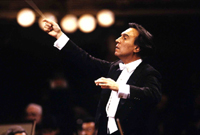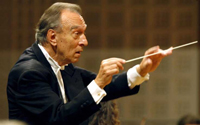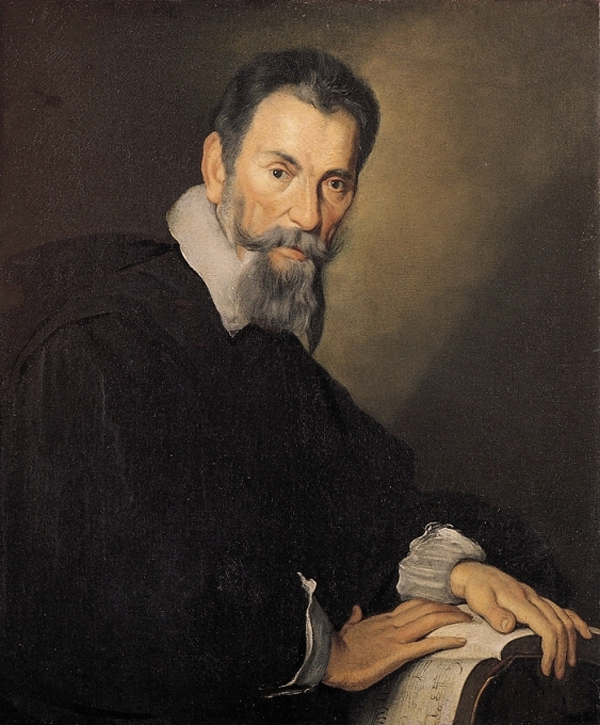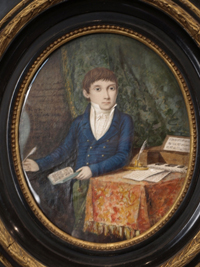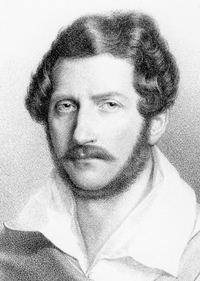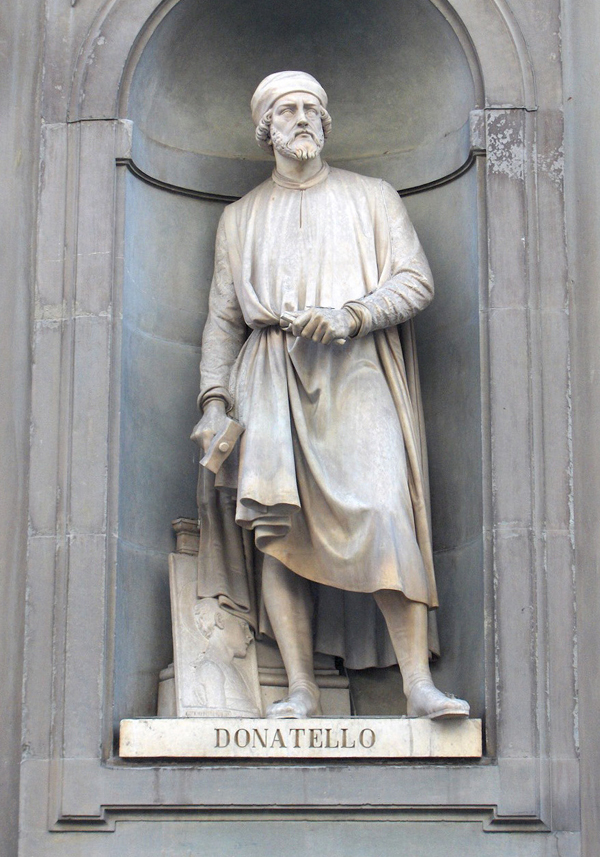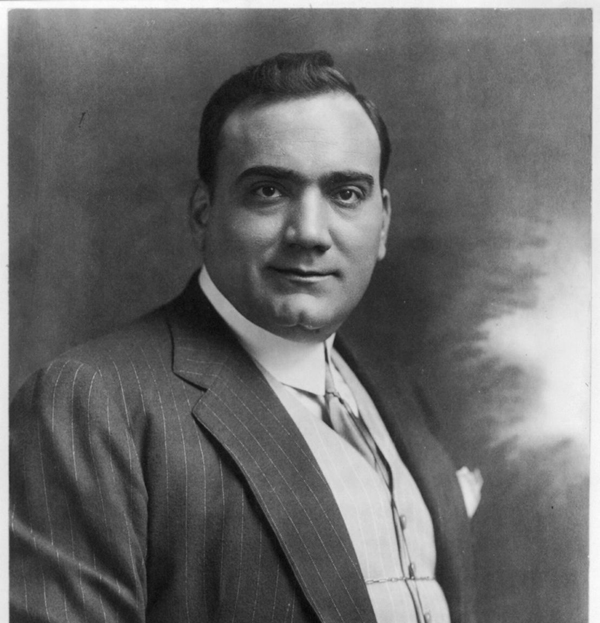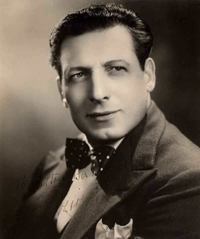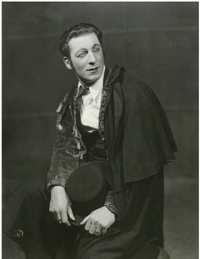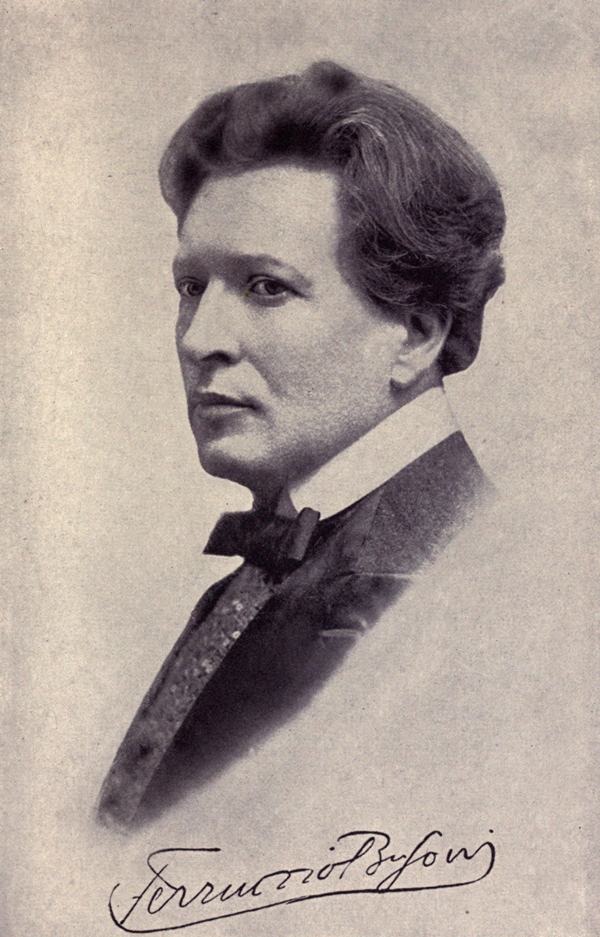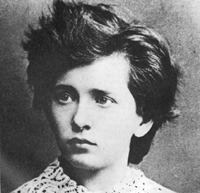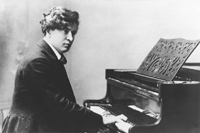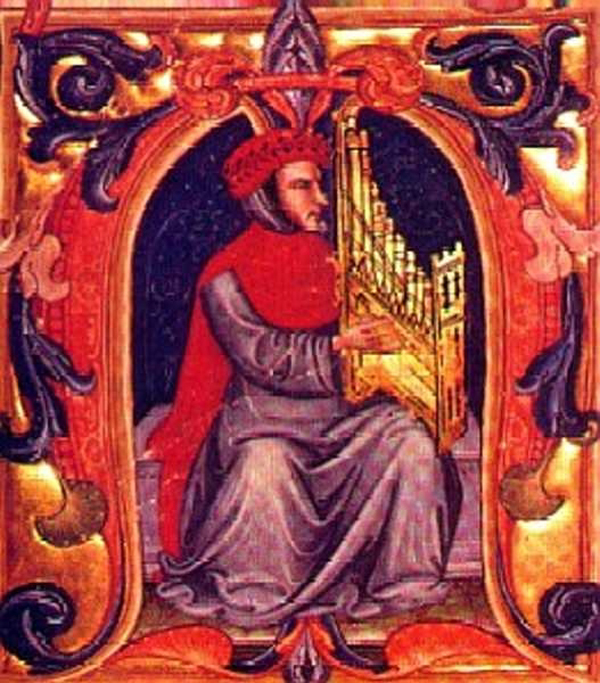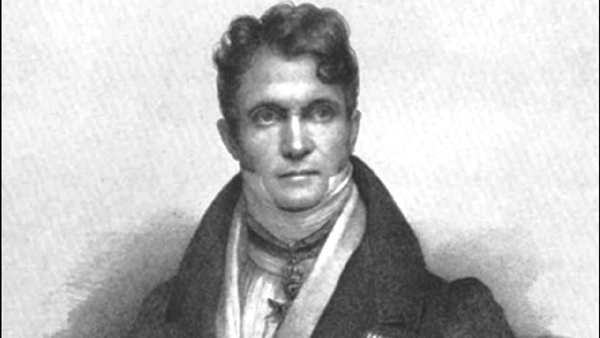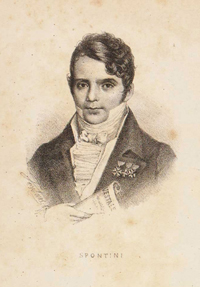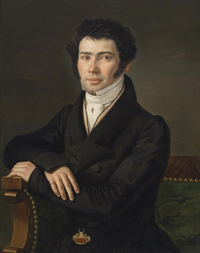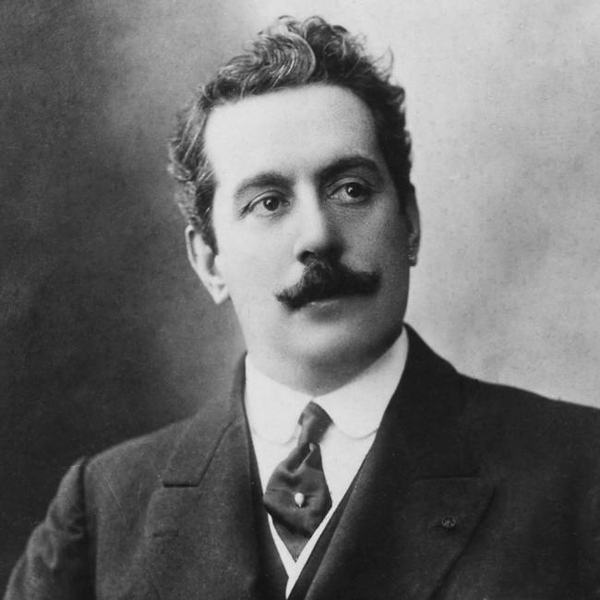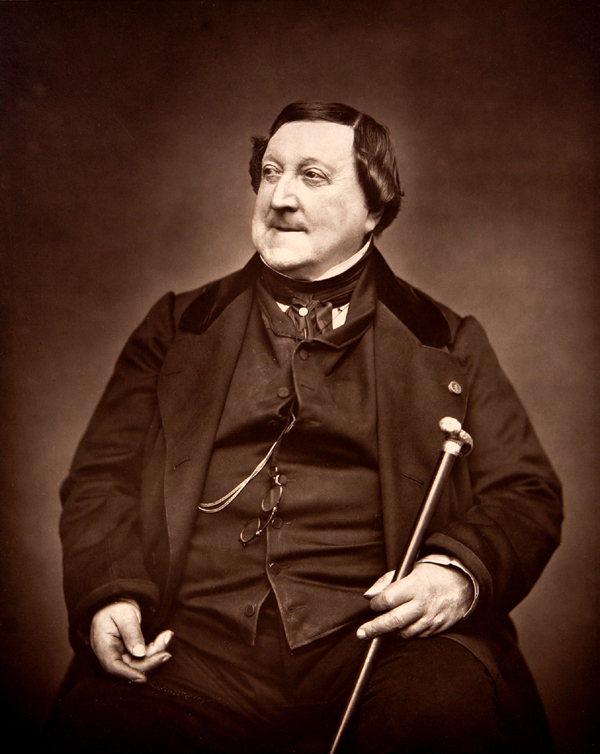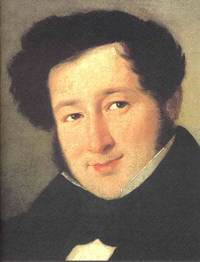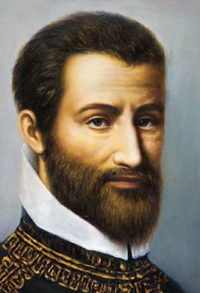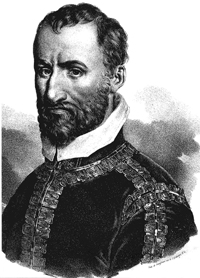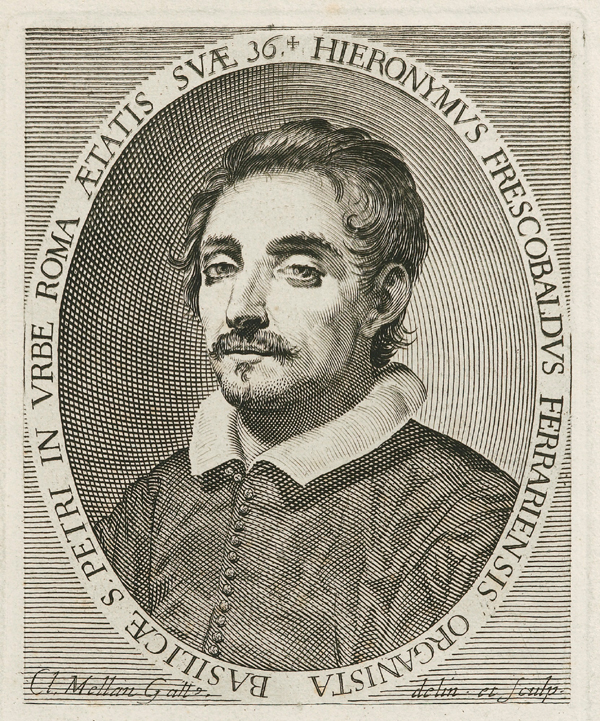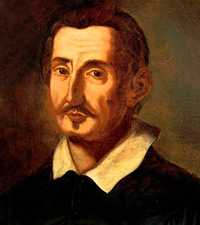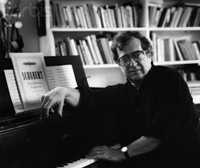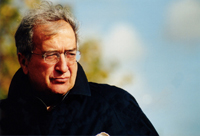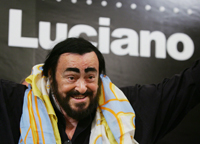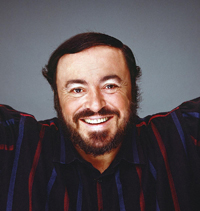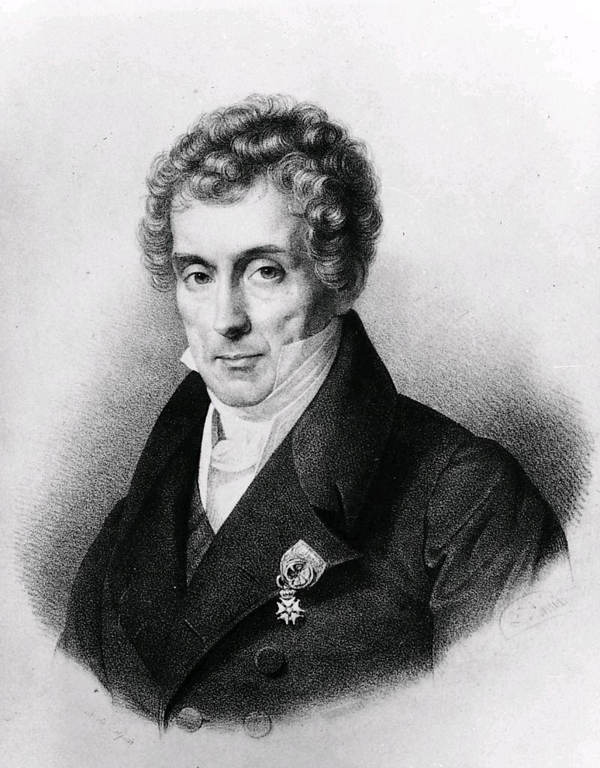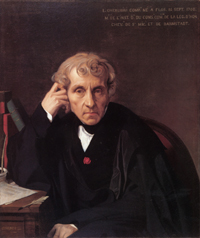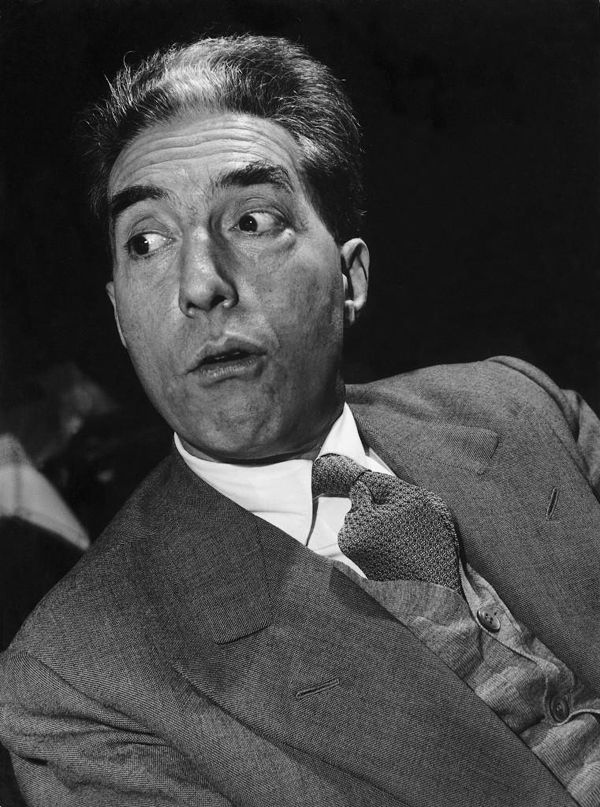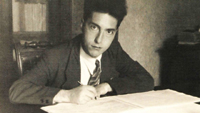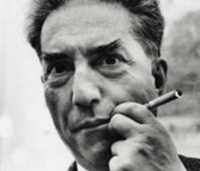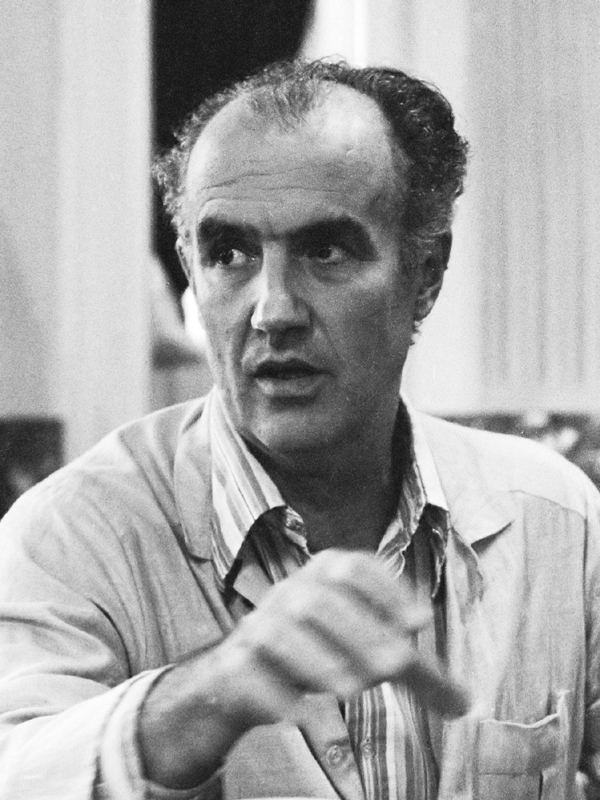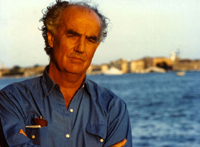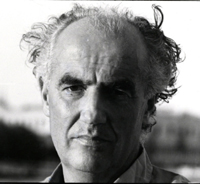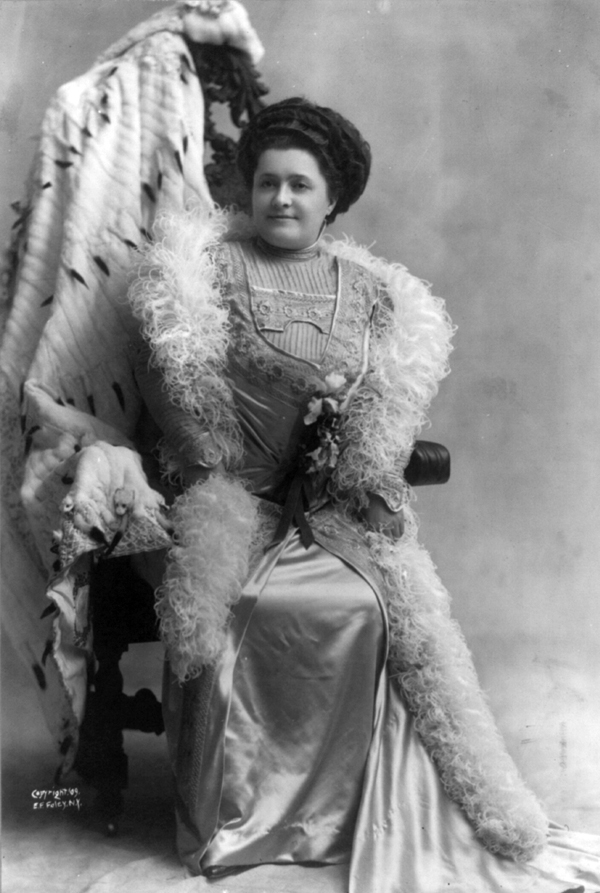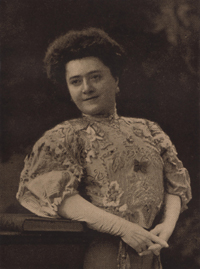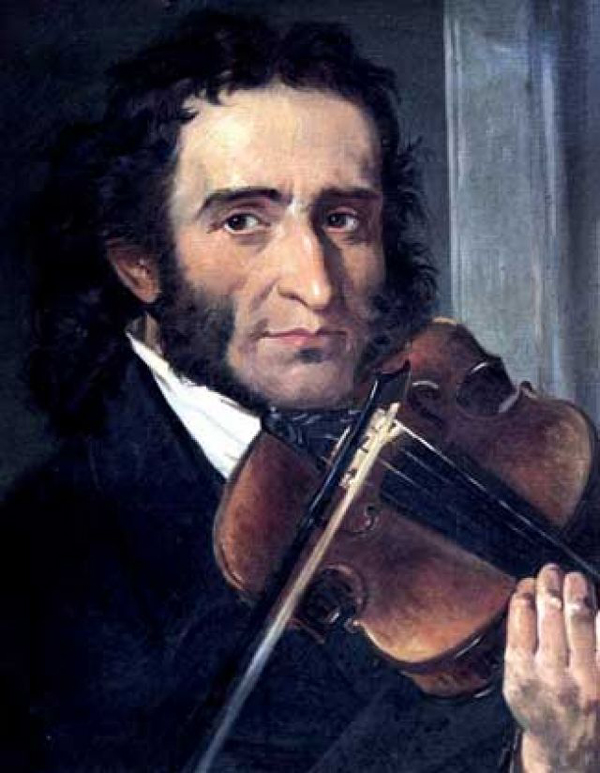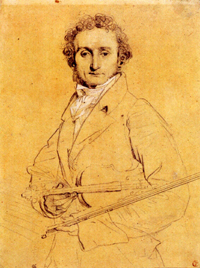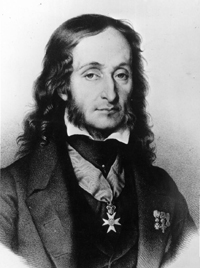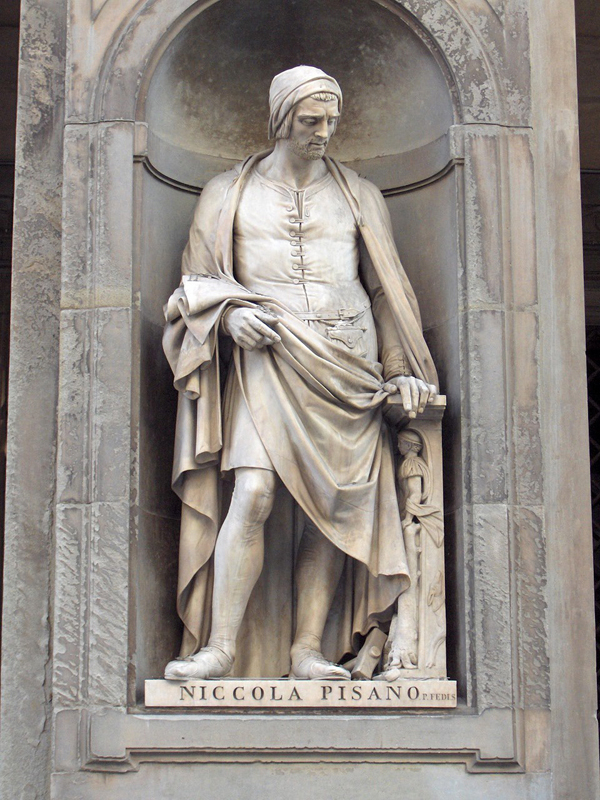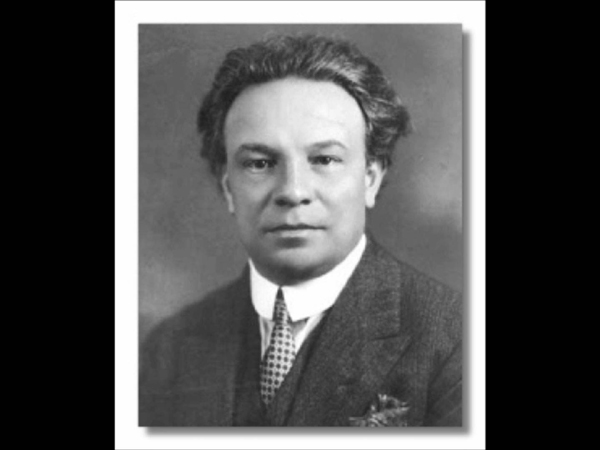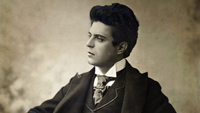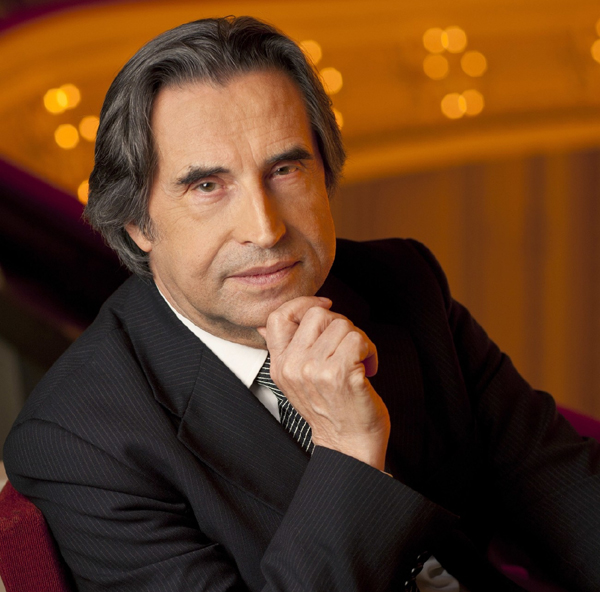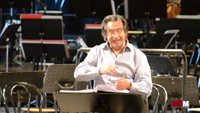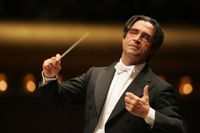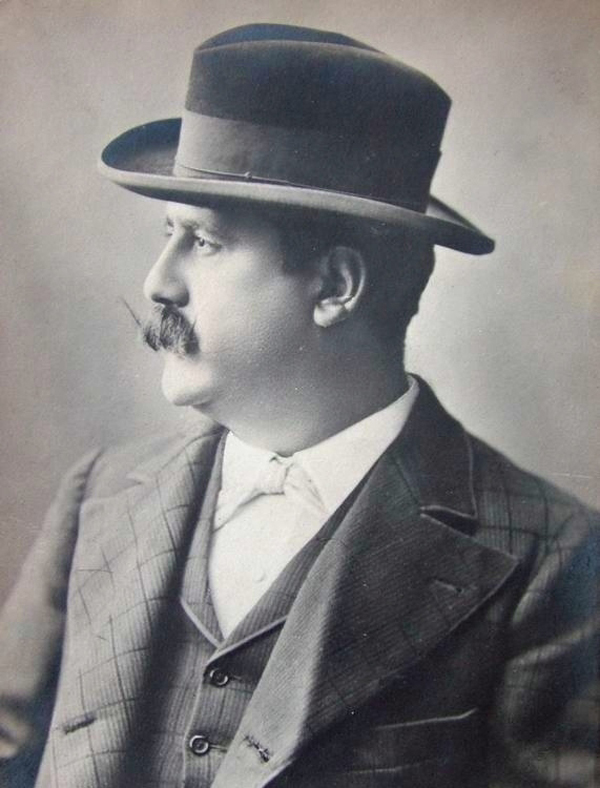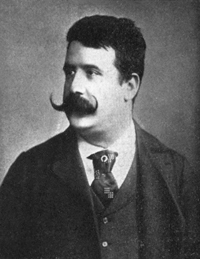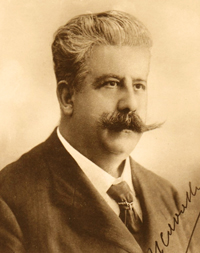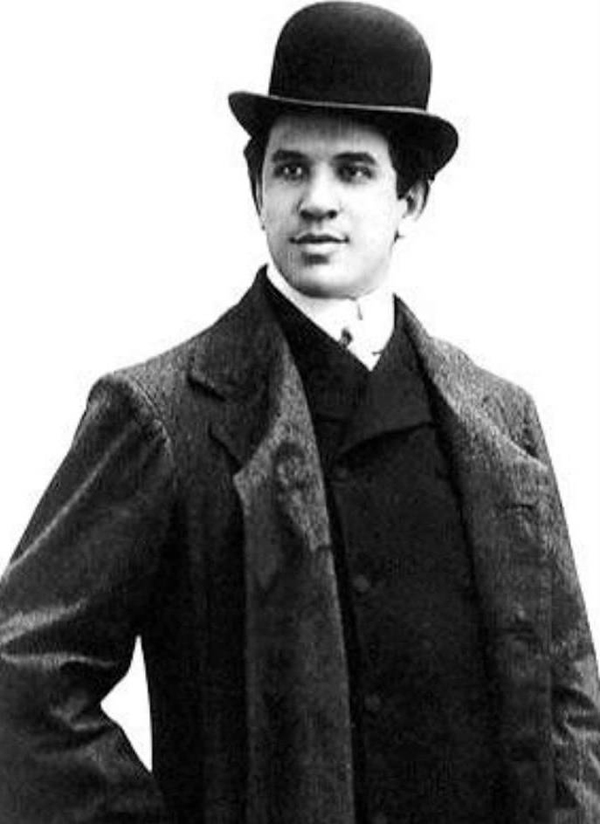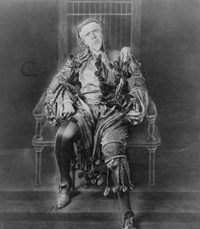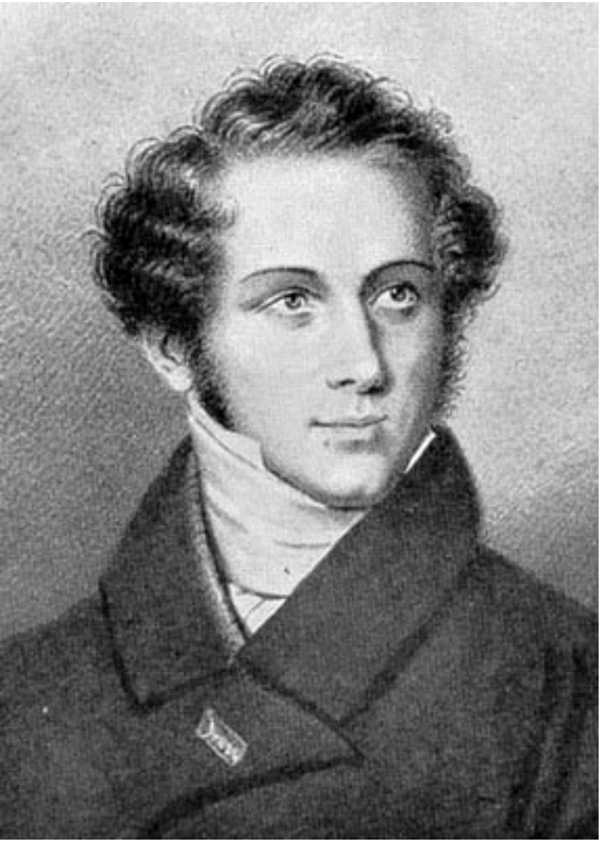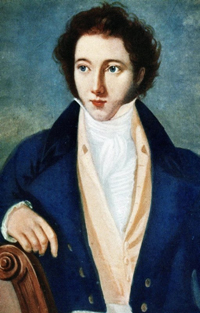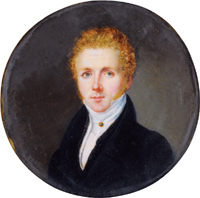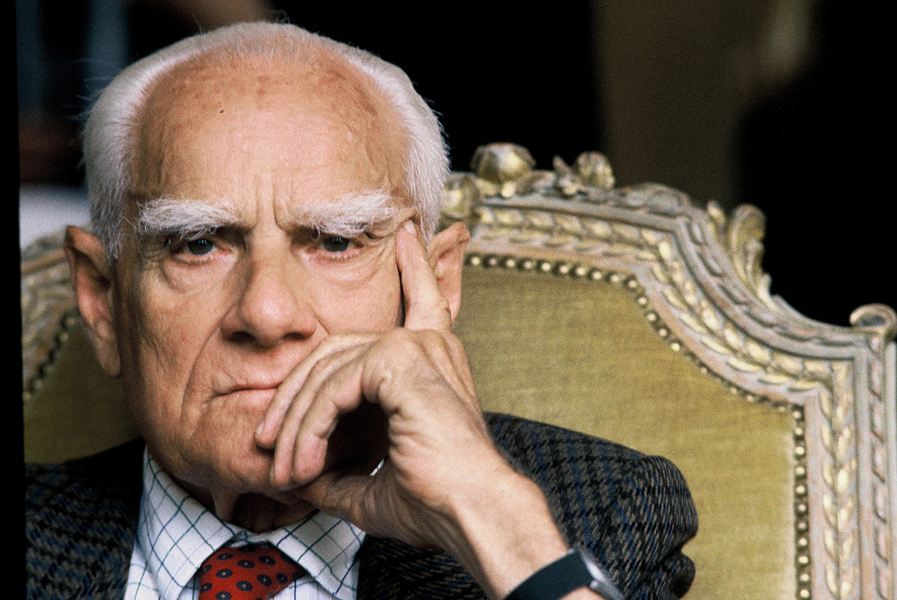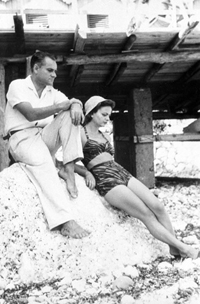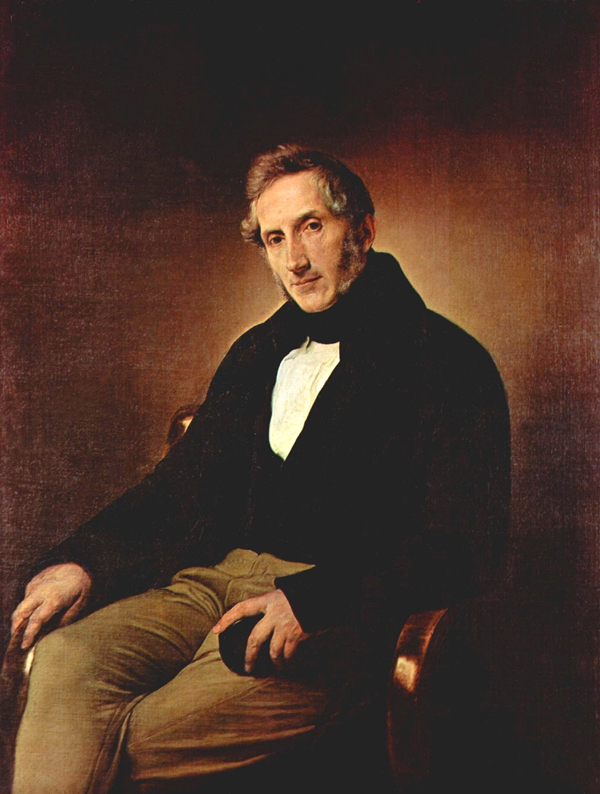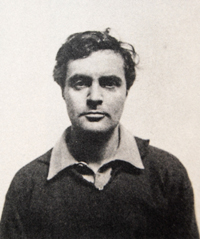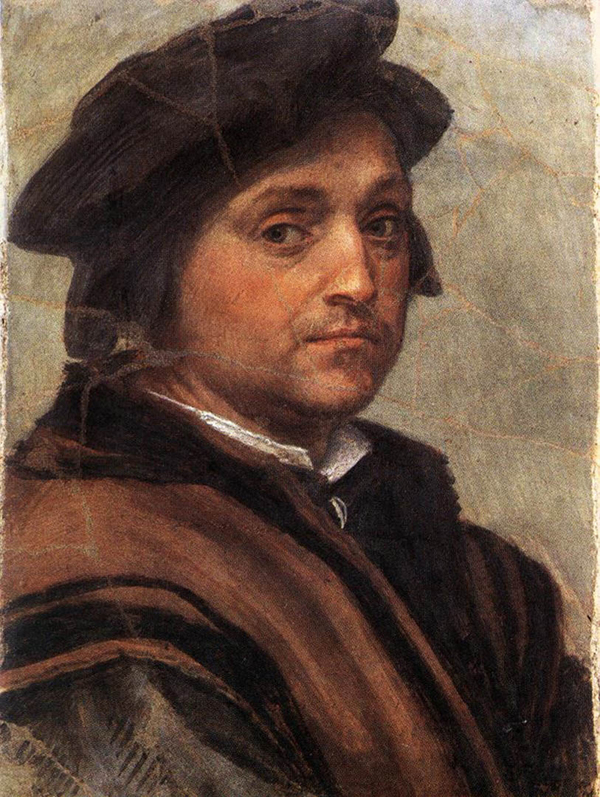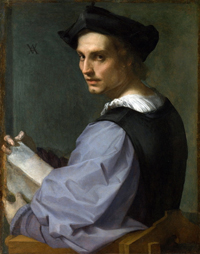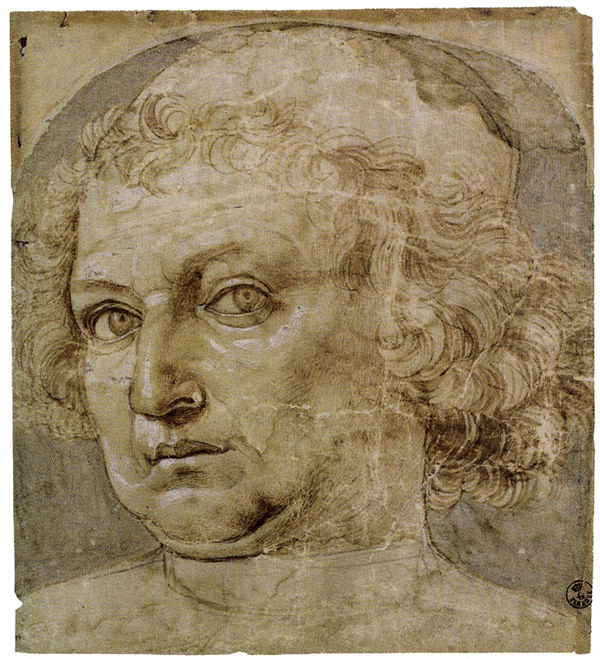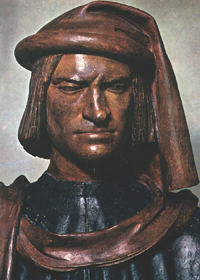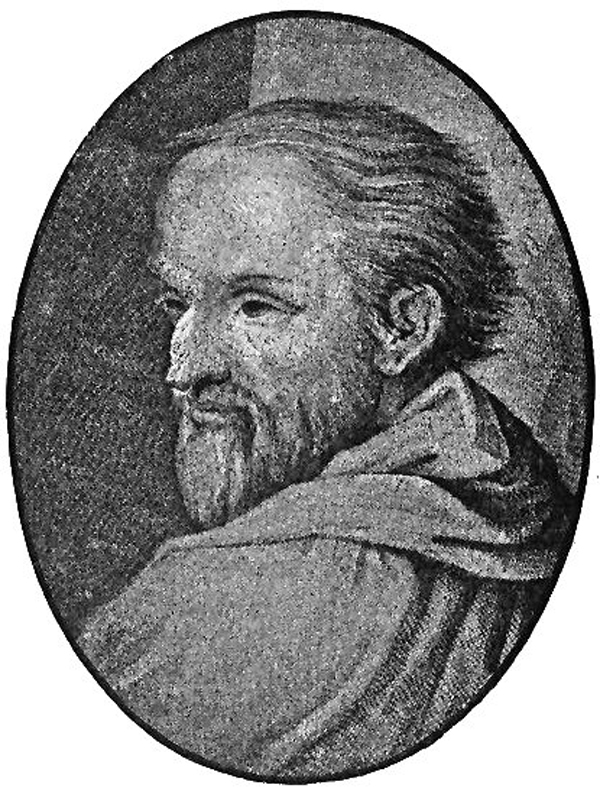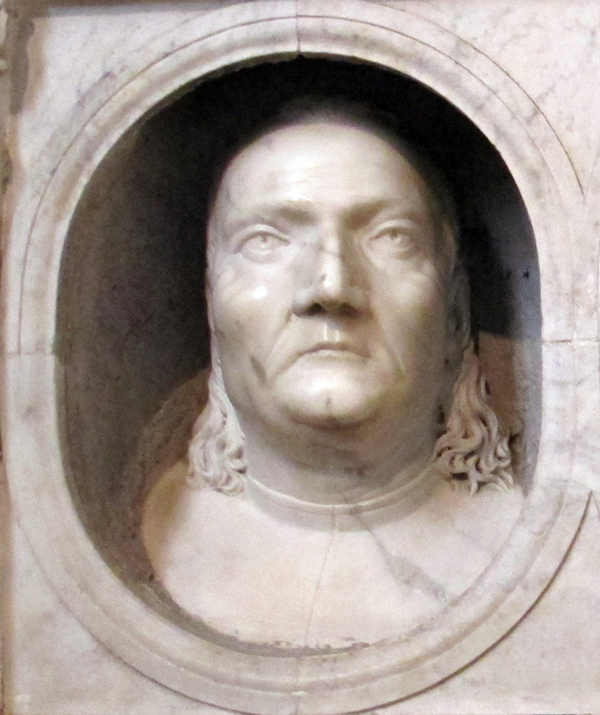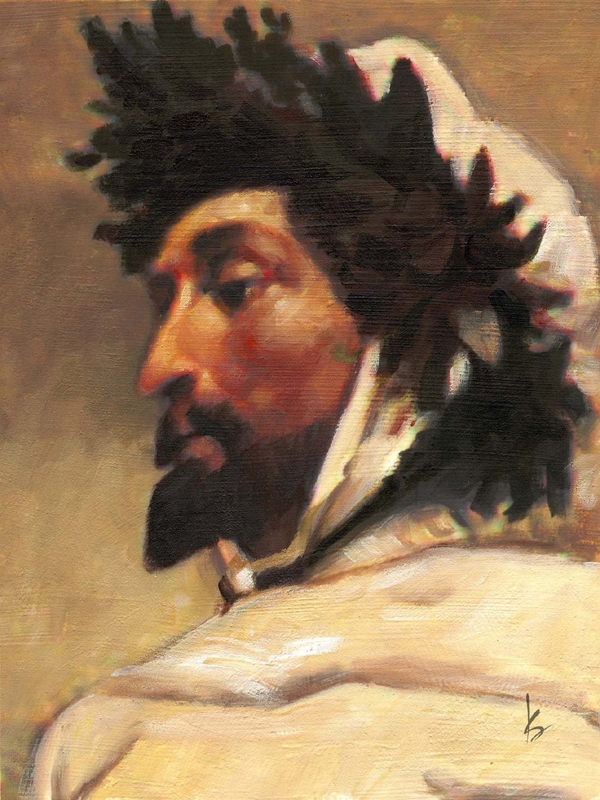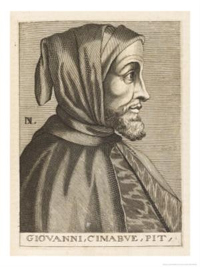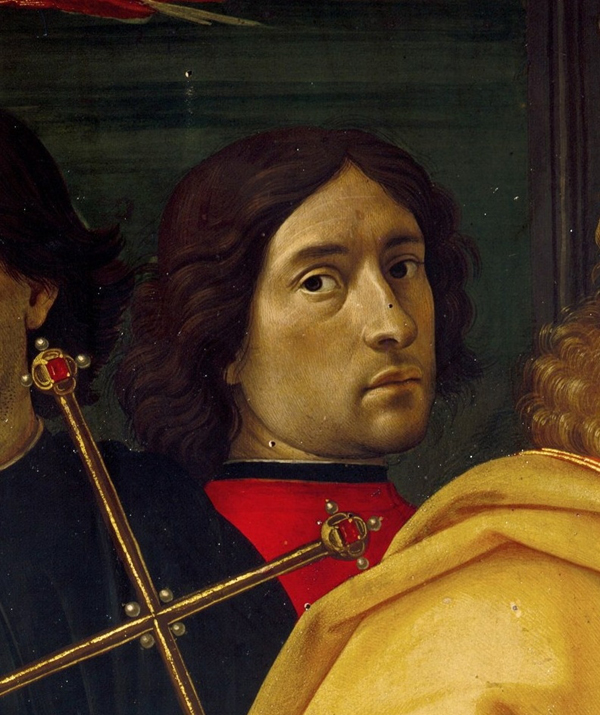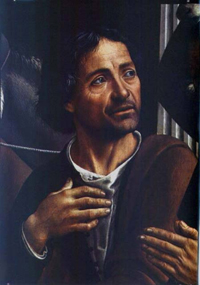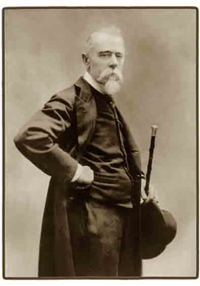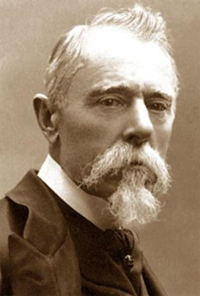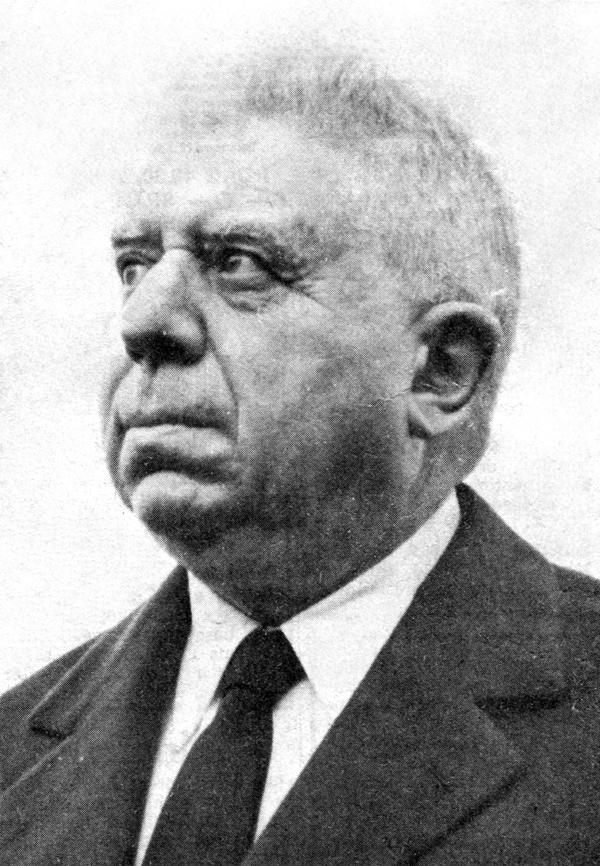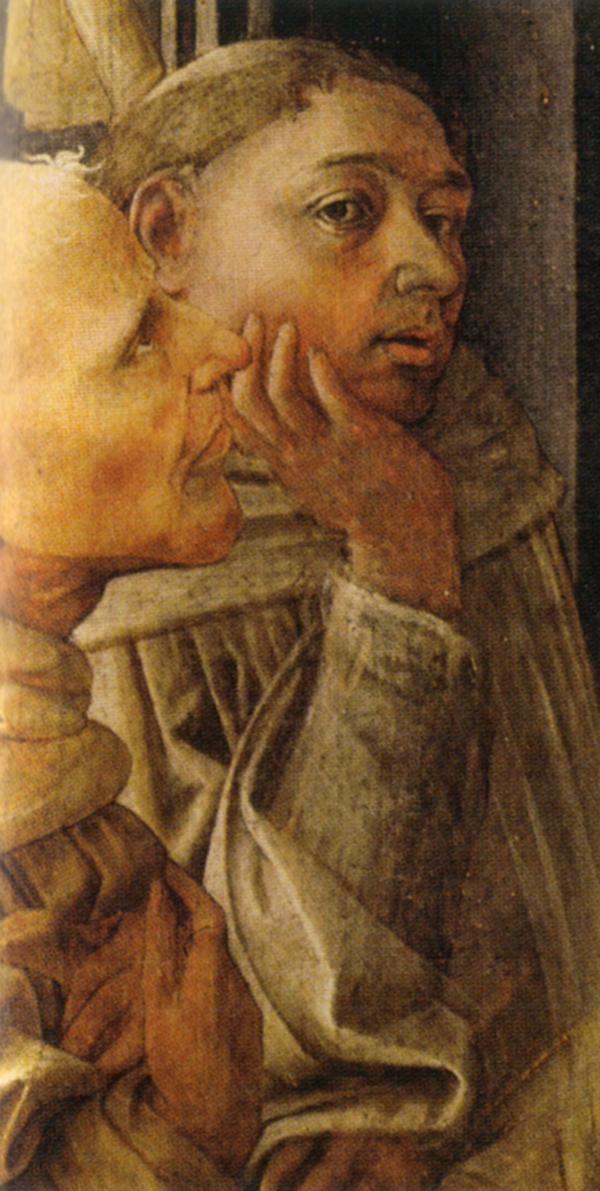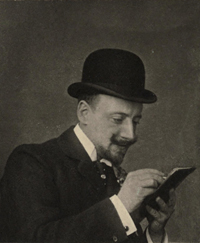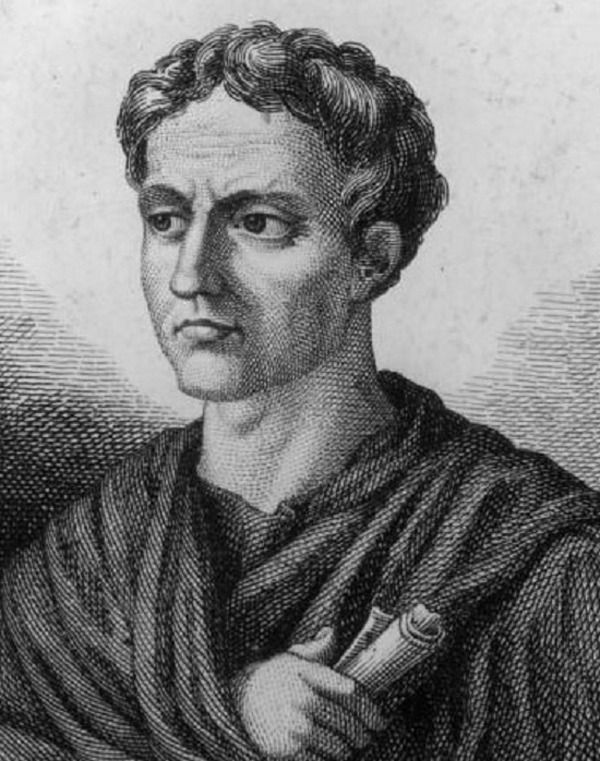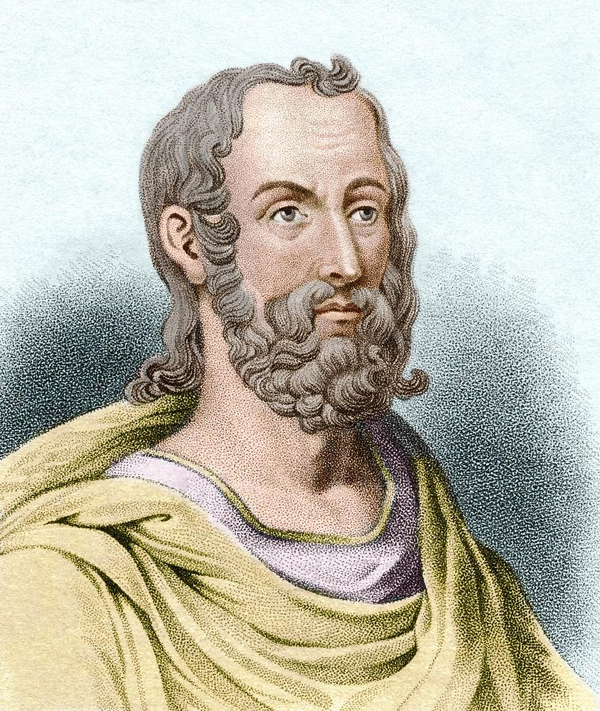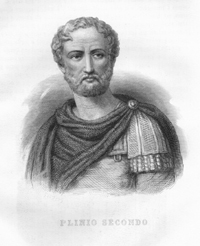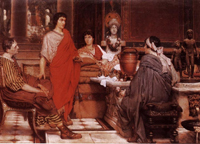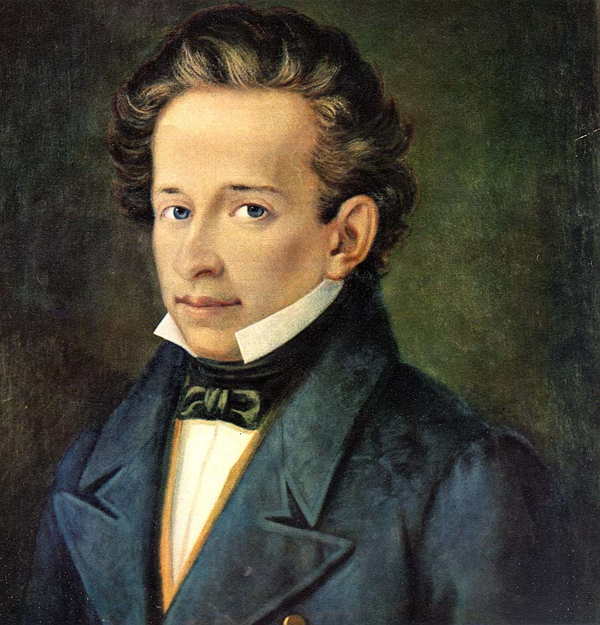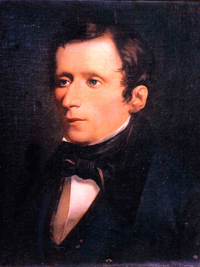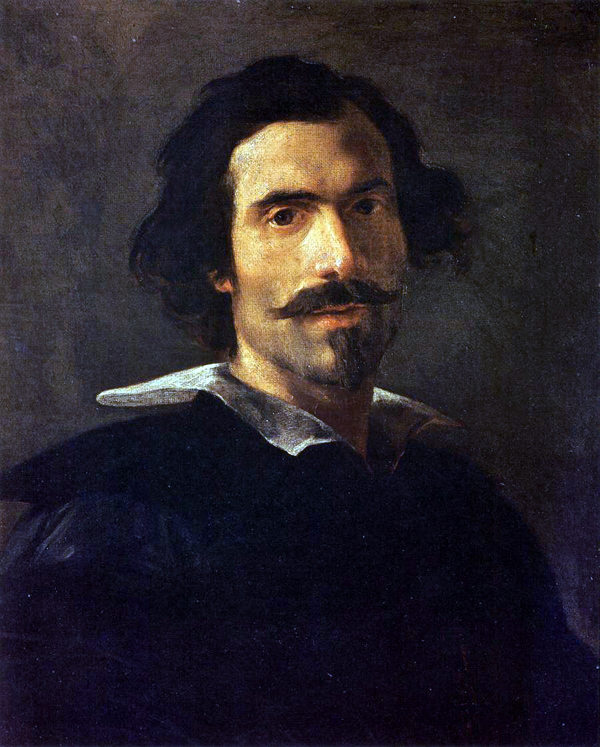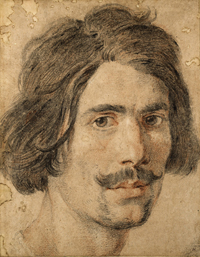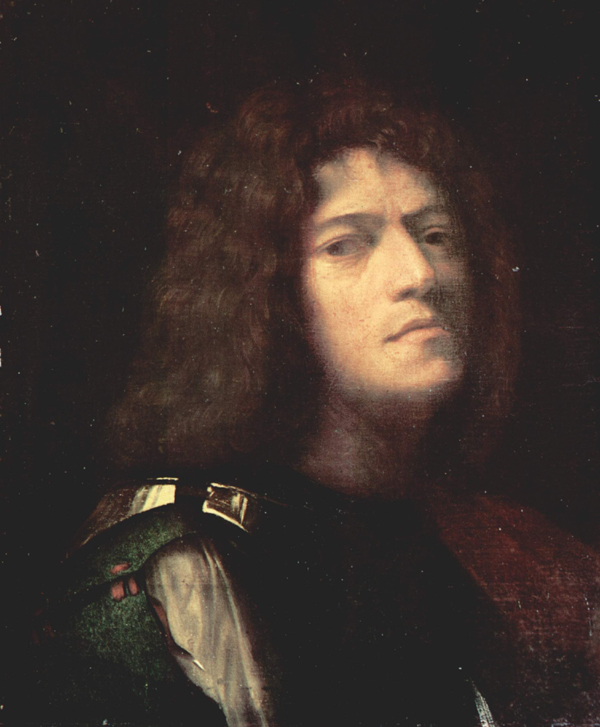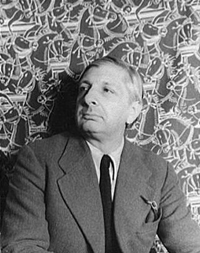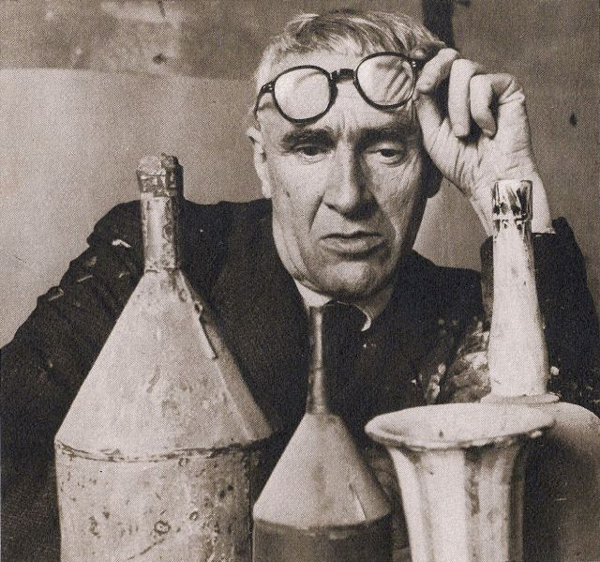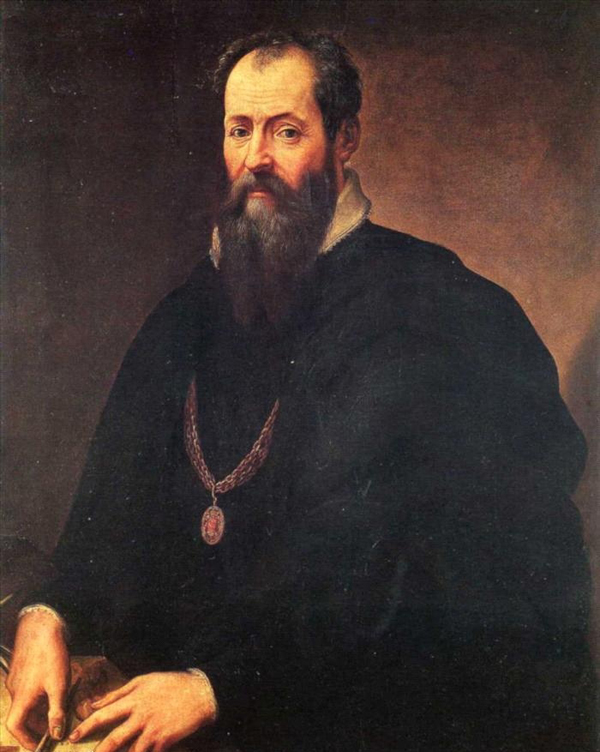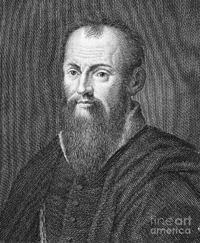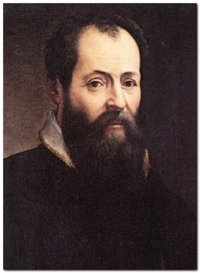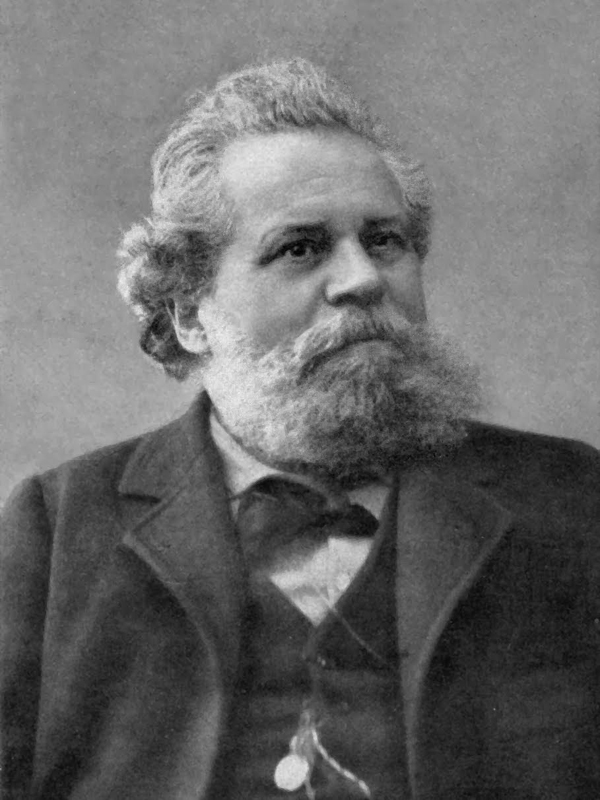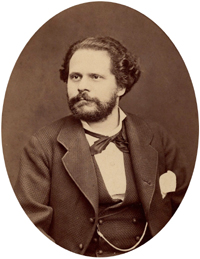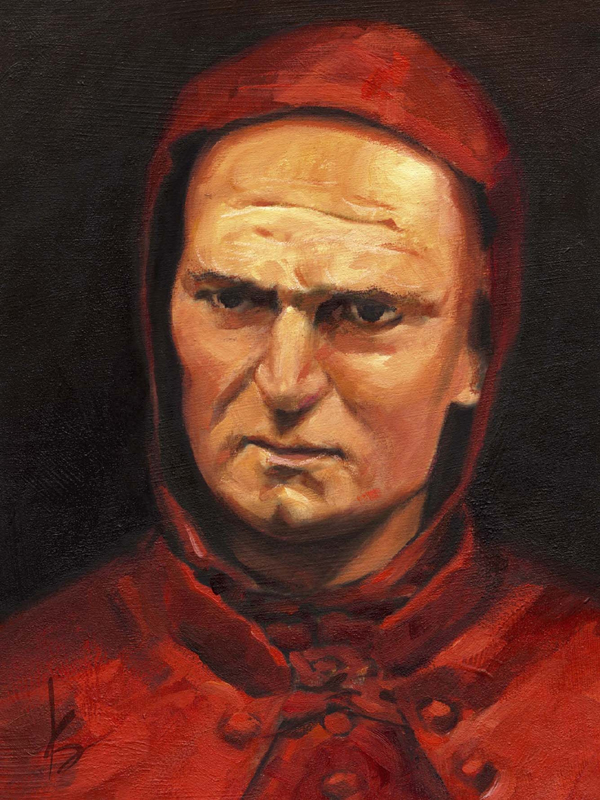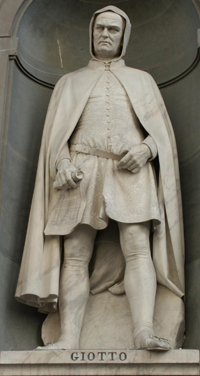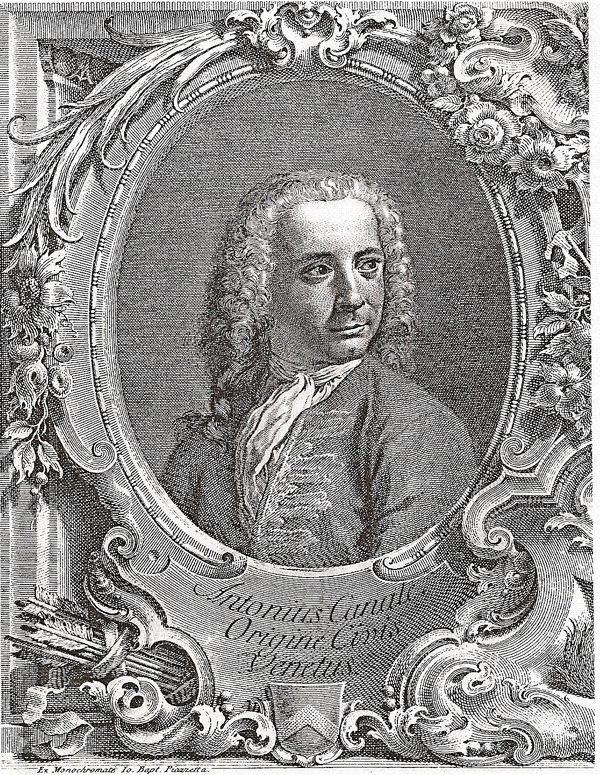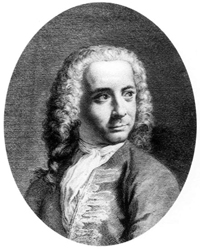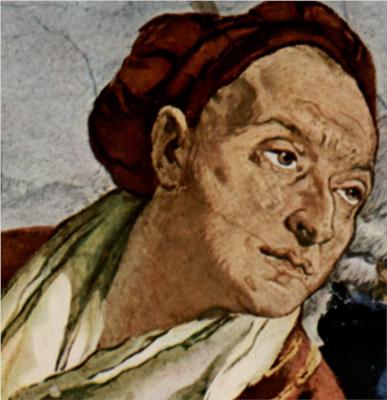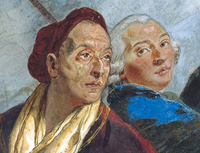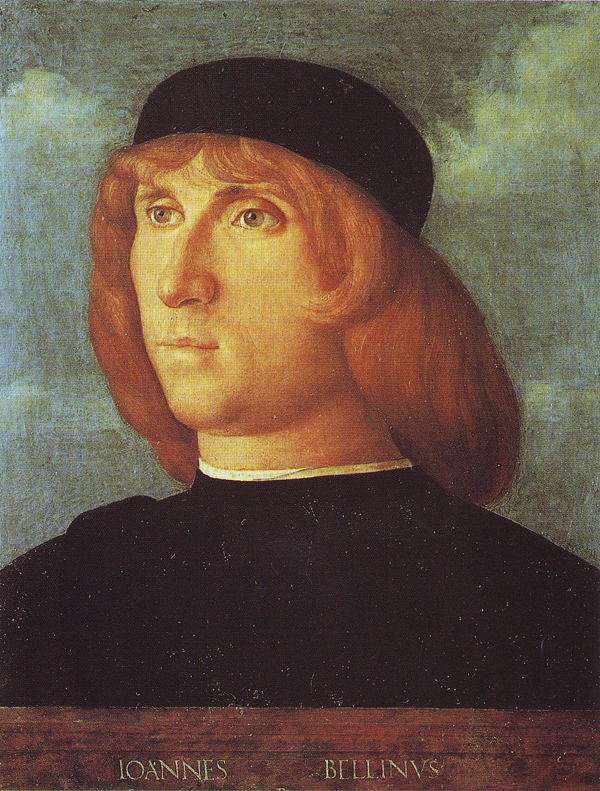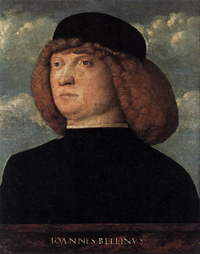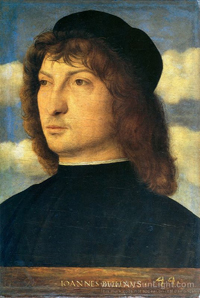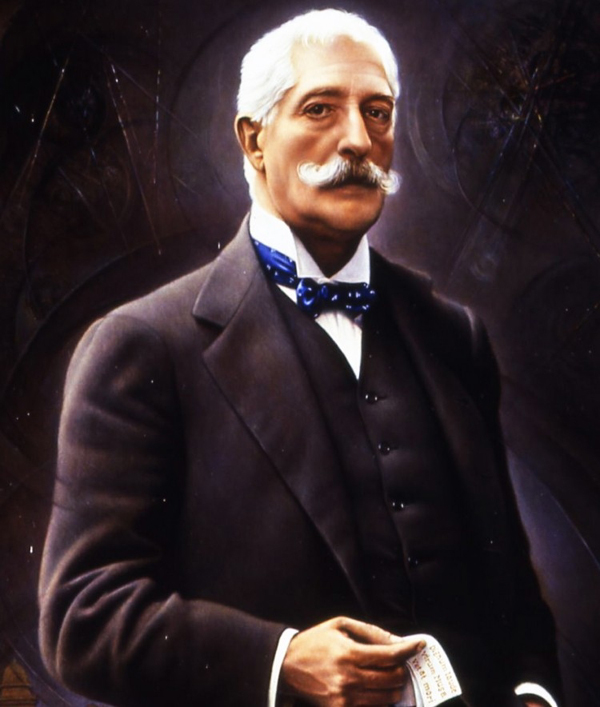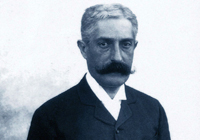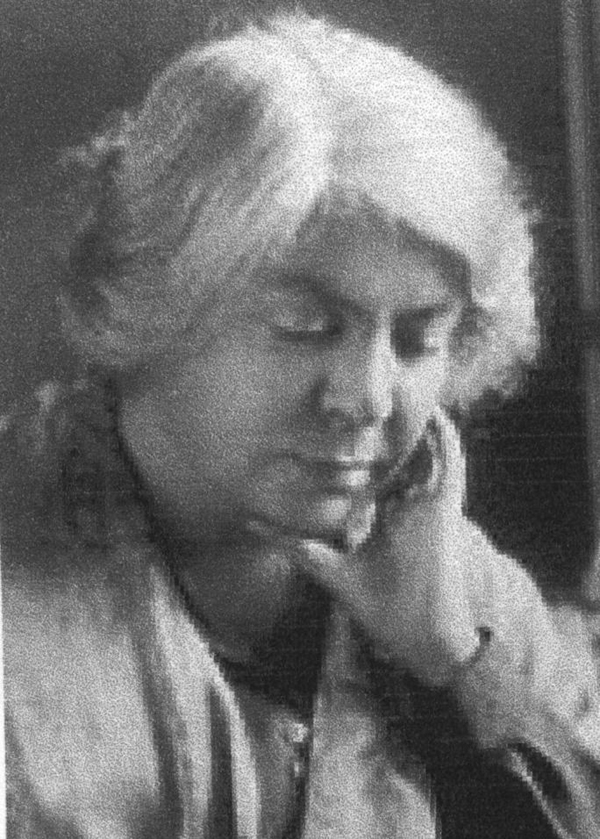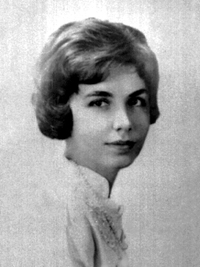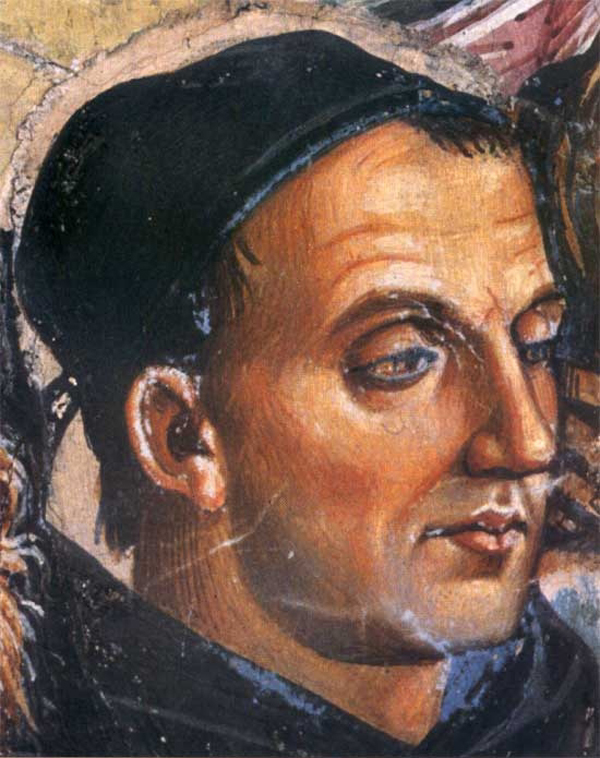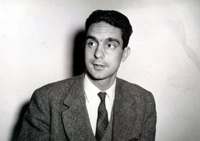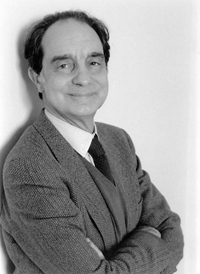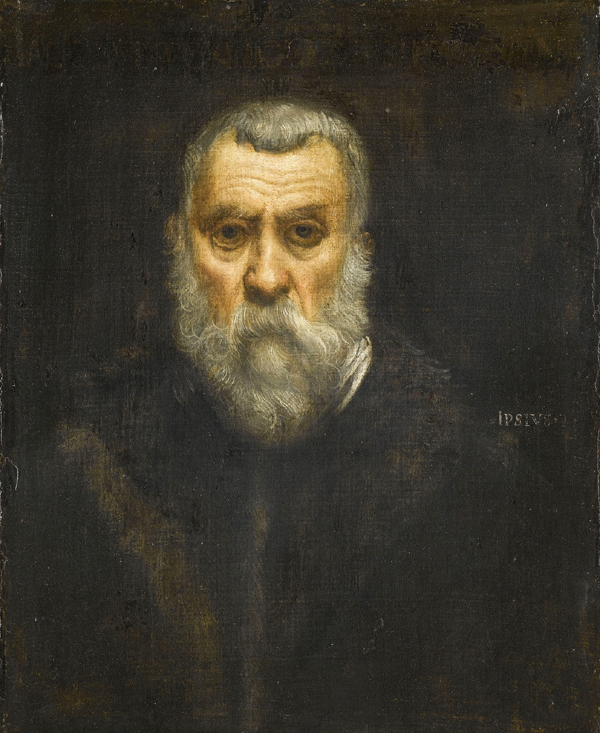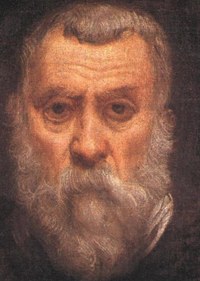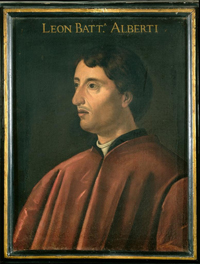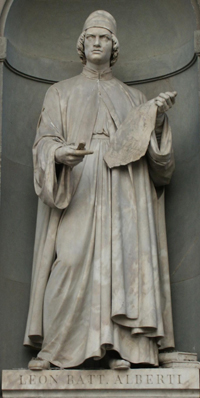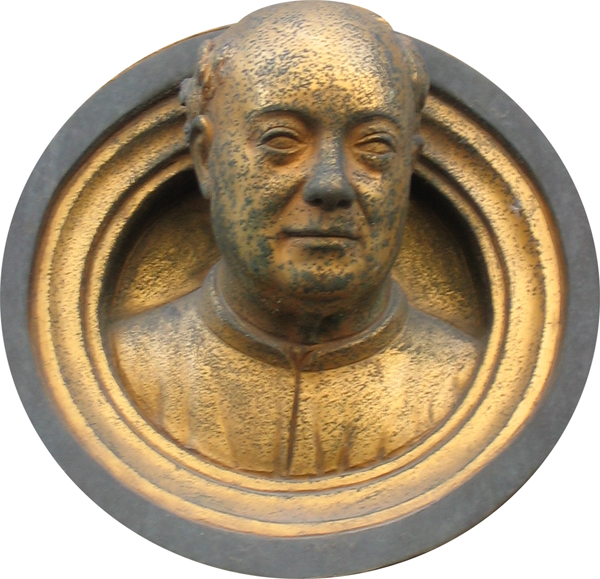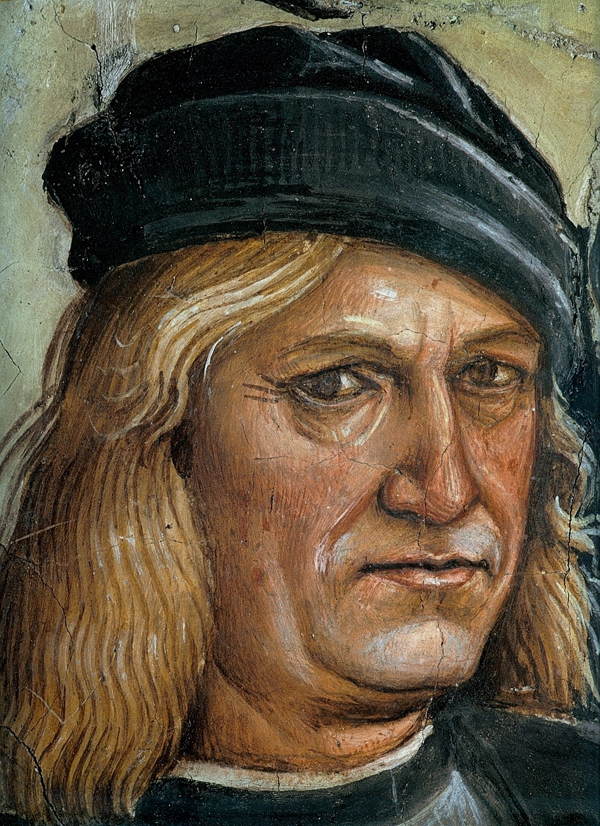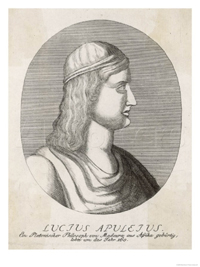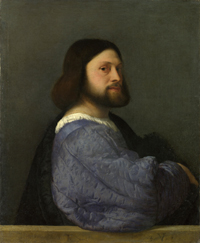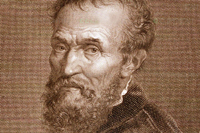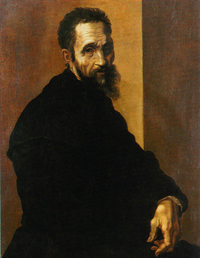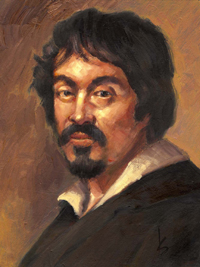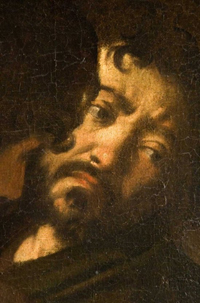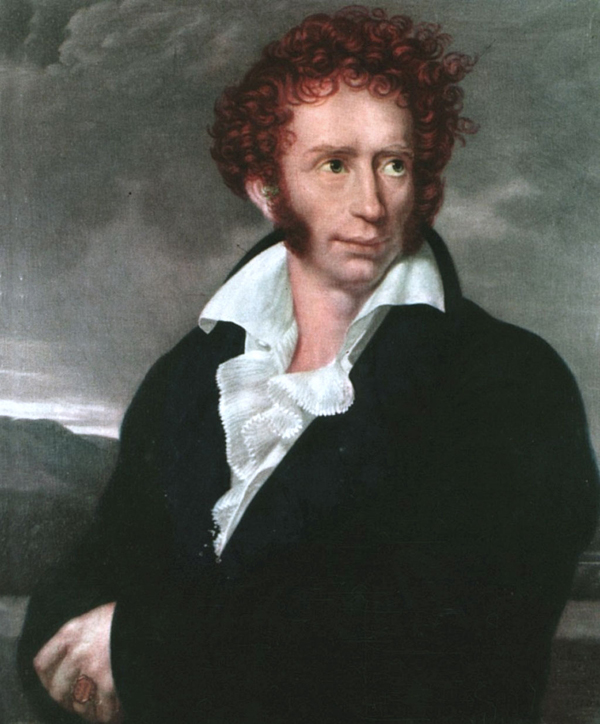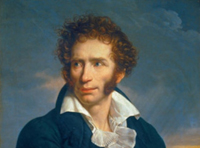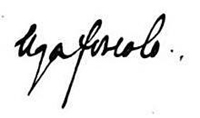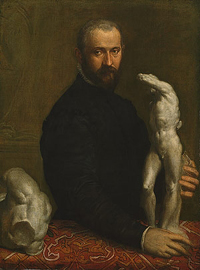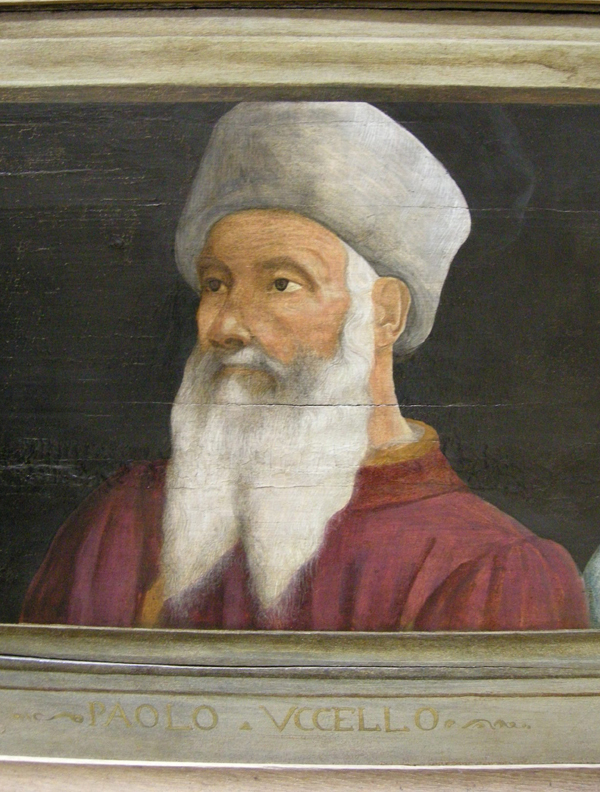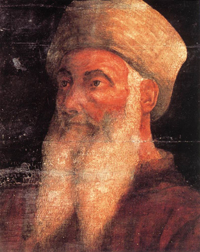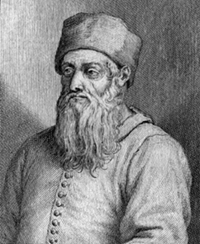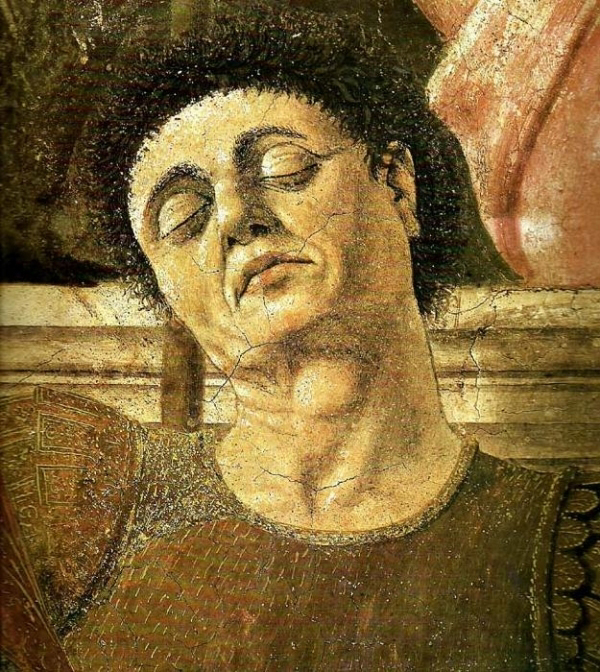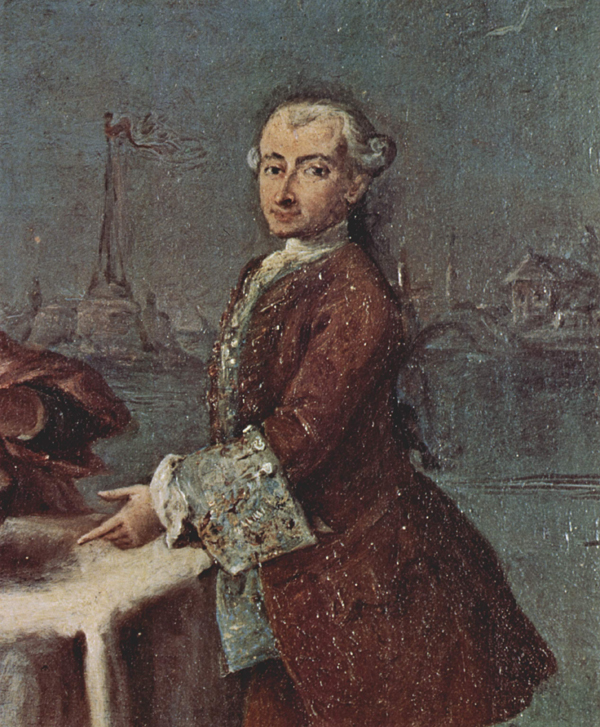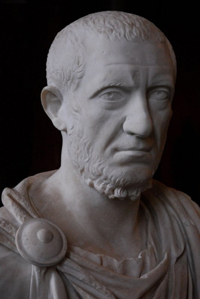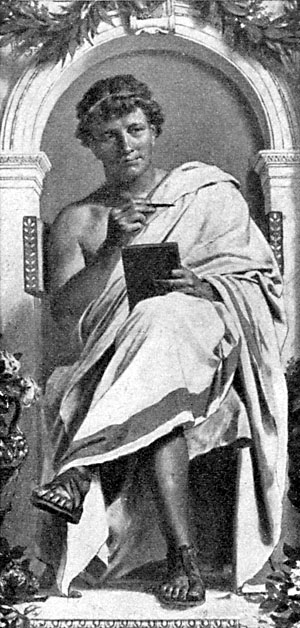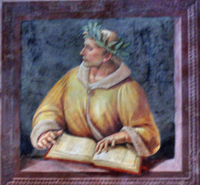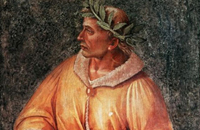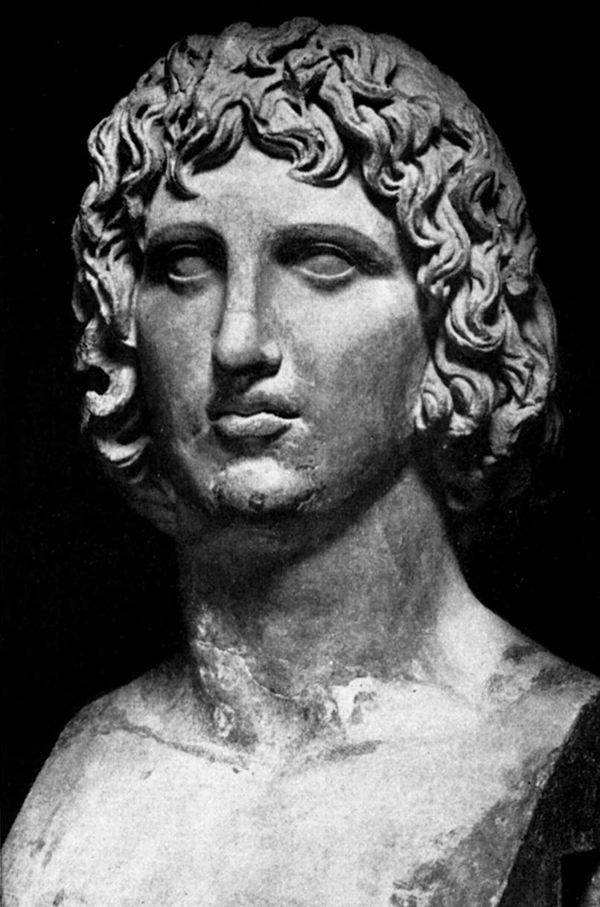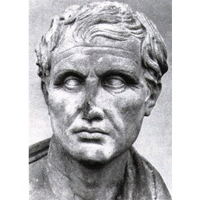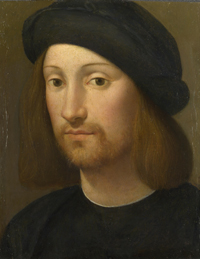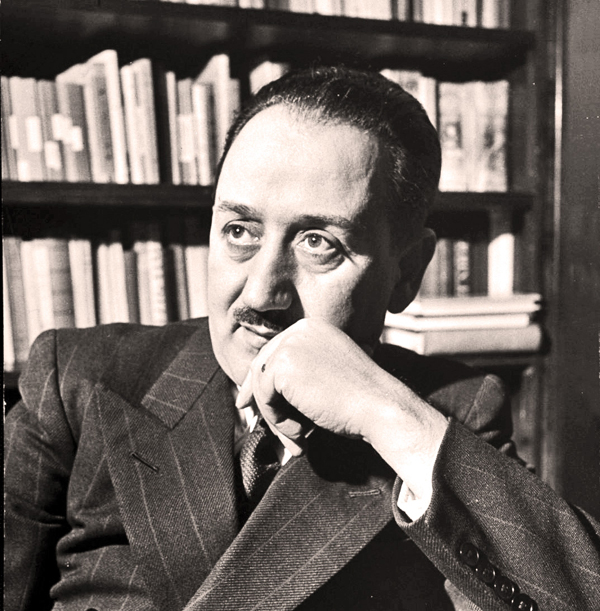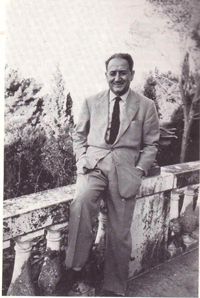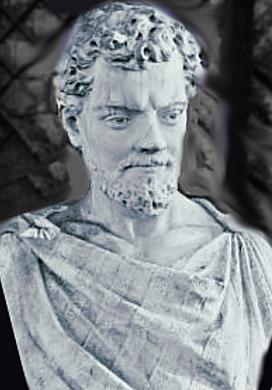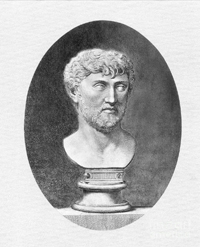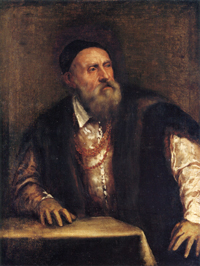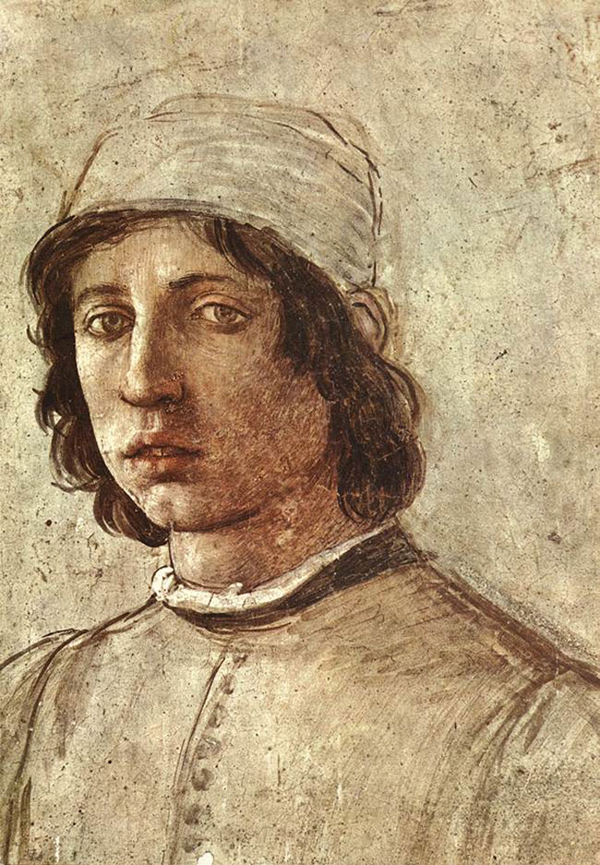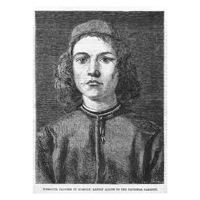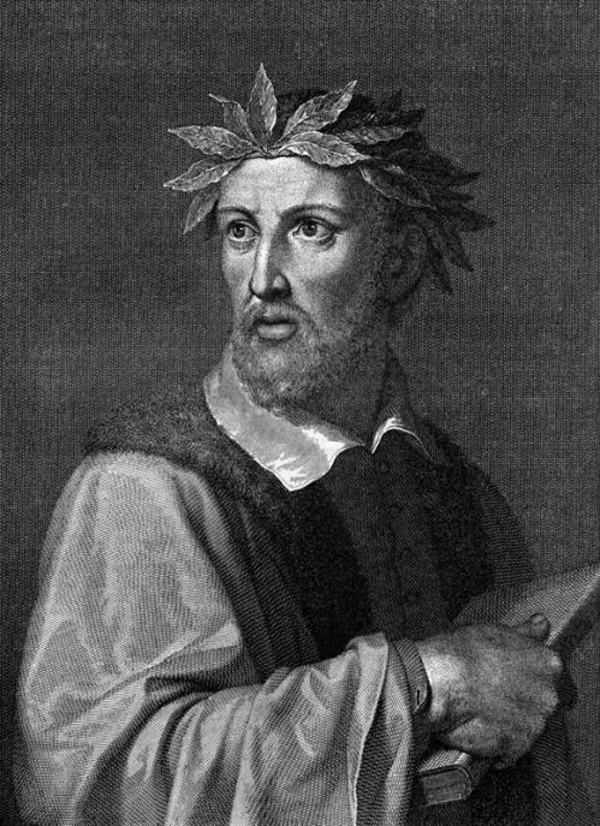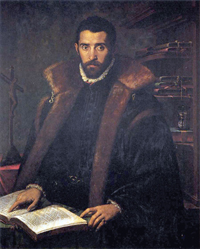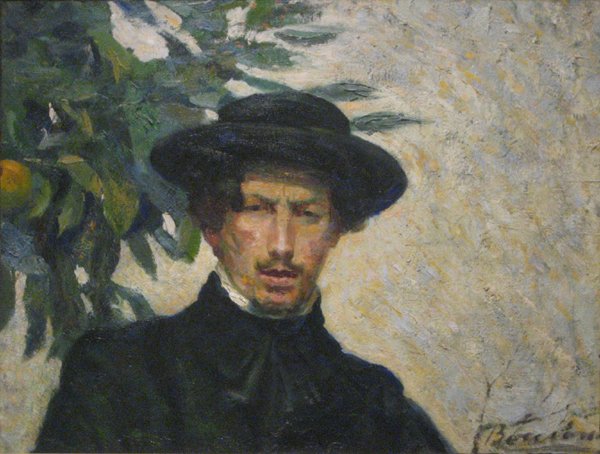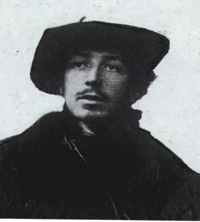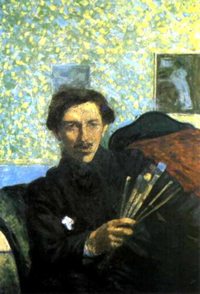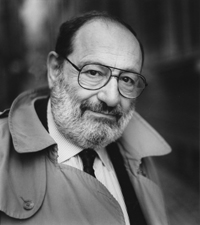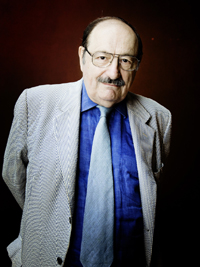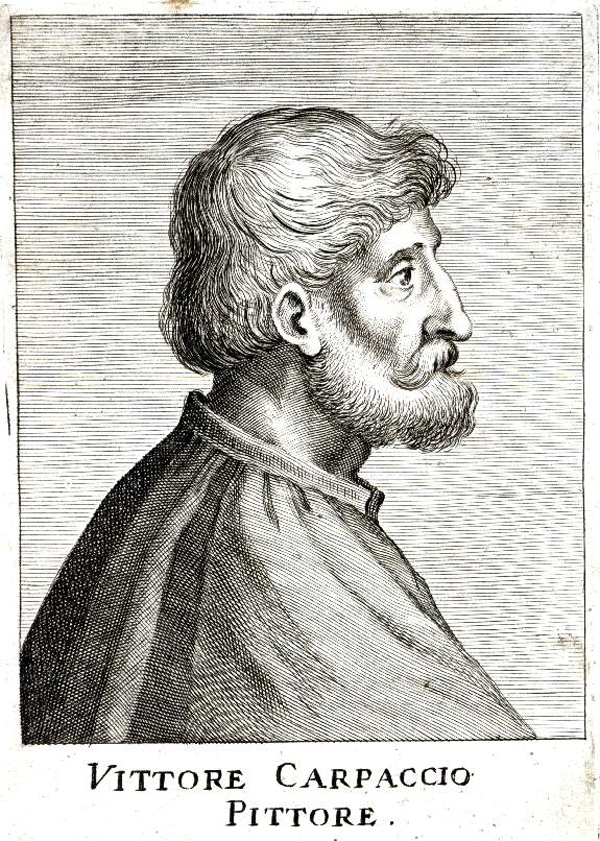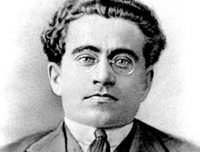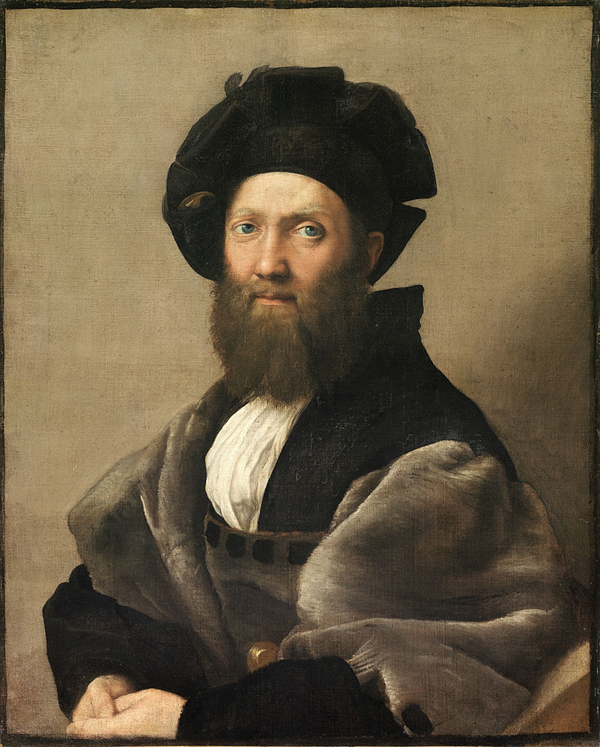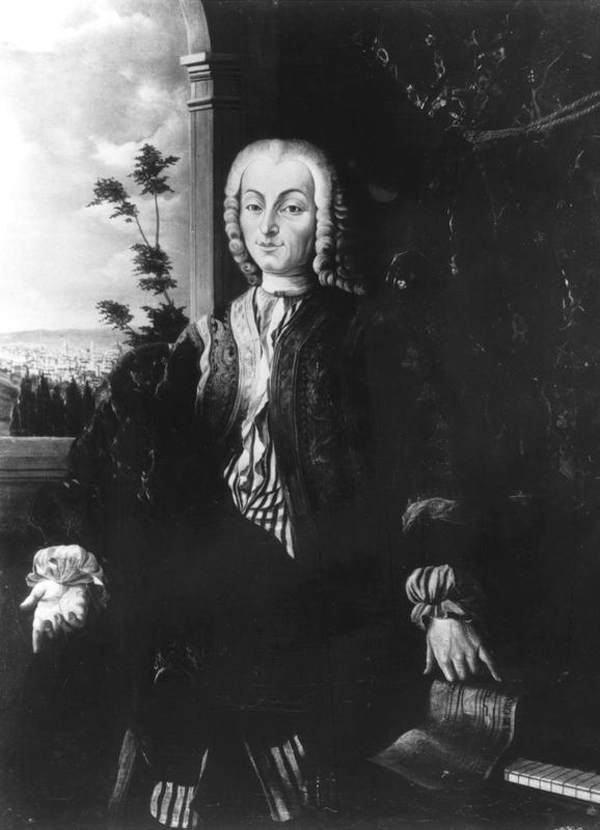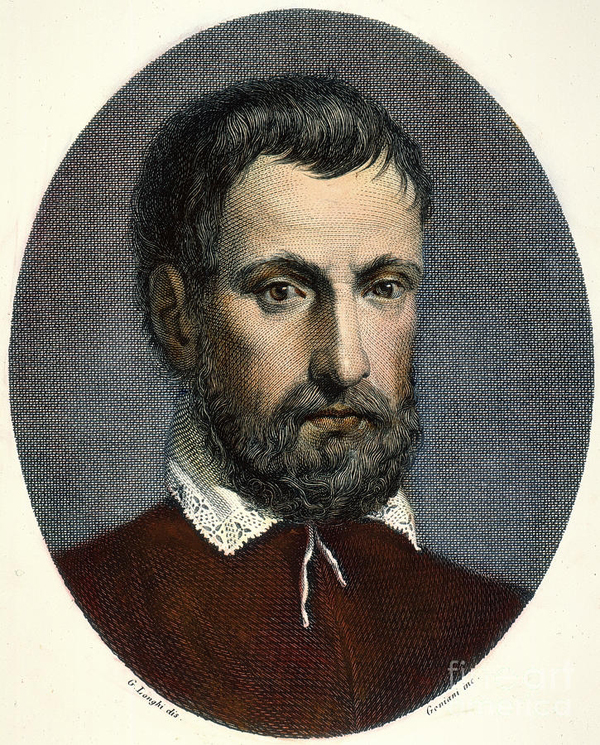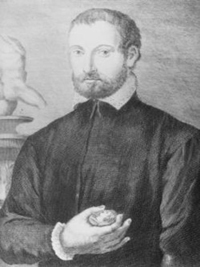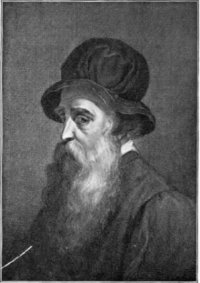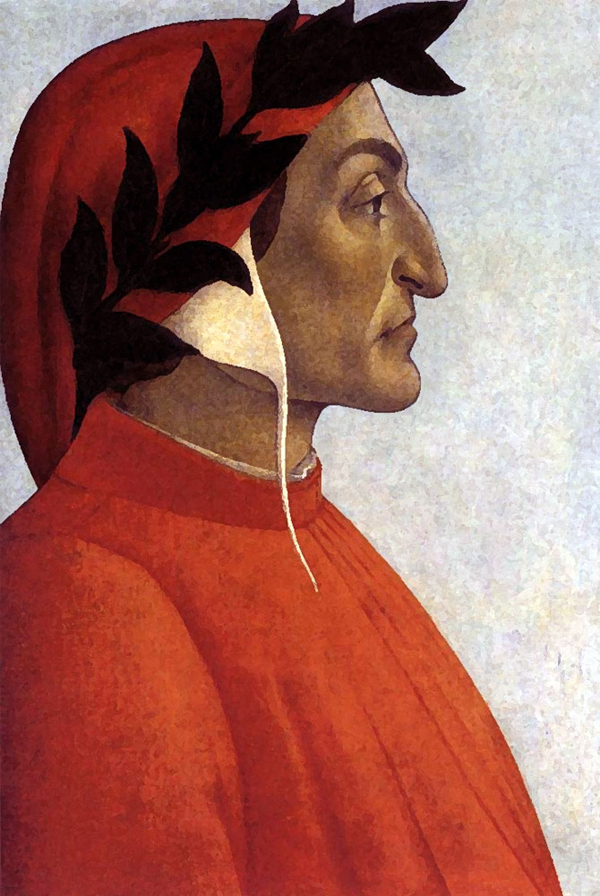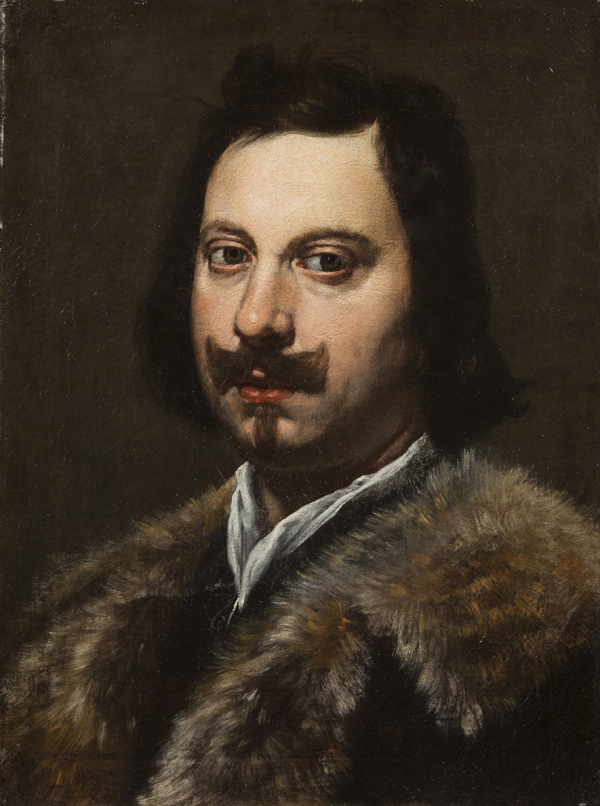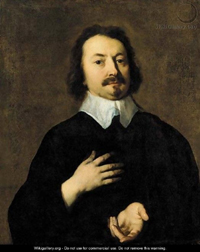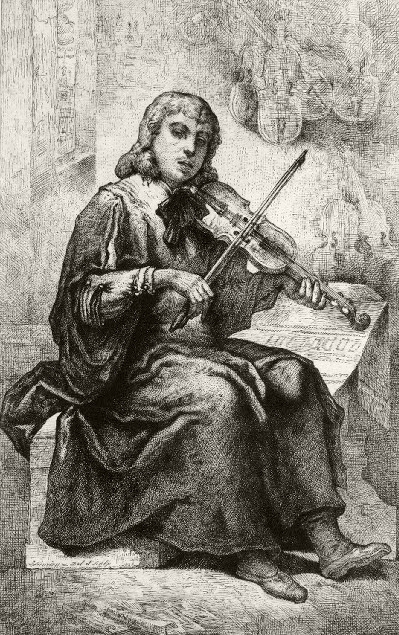History
Academics and Intellectuals
Benedetto Croce
Field of Interest: Philosopher
Known For: Aesthetic (1902), Logic (1908), Philosophy of the Practical (1908), Notable intellectual and political leaders of more recent times include the Nobel Peace Prize winner in 1907, Ernesto Teodoro Moneta (1833–1918); the sociologist and economist Vilfredo Pareto (1848–1923); the political theorist Gaetano Mosca (1858–1941); the philosopher, critic, and historian Benedetto Croce (1866–1952); the educator Maria Montessori (1870–1952); Benito Mussolini (1883–1945), the founder of Fascism and dictator of Italy from 1922 to 1943; Carlo Sforza (1873–1952) and Alcide De Gasperi (1881–1954), famous latter-day statesmen; and the Communist leaders Antonio Gramsci (1891–1937), Palmiro Togliatti (1893–1964), and Enrico Berlinguer (1922–84).Benedetto Croce was an Italian idealist philosopher, and occasionally also politician. He wrote on numerous topics, including philosophy, history, methodology of history writing and aesthetics. He was a prominent liberal, although he opposed laissez-faire free trade, and had considerable influence on other prominent Italian intellectuals including both Marxist Antonio Gramsci and fascist Giovanni Gentile. He was President of PEN International, the worldwide writers' association, from 1949 until 1952. According an article of 2012 on Foreign Affairs, Benedetto Croce is considered among the most modern thinkers from those of the 20th century, along with intellectuals like Isaiah Berlin, Francis Fukuyama and Leon Trotsky.
Country: Italy
Date of Birth: 25 February 1866
Place of Birth: Pescasseroli, Italy
Date of Death: 20 November 1952
Please of Death: Naples, Italy
Known For: Aesthetic (1902), Logic (1908), Philosophy of the Practical (1908), Notable intellectual and political leaders of more recent times include the Nobel Peace Prize winner in 1907, Ernesto Teodoro Moneta (1833–1918); the sociologist and economist Vilfredo Pareto (1848–1923); the political theorist Gaetano Mosca (1858–1941); the philosopher, critic, and historian Benedetto Croce (1866–1952); the educator Maria Montessori (1870–1952); Benito Mussolini (1883–1945), the founder of Fascism and dictator of Italy from 1922 to 1943; Carlo Sforza (1873–1952) and Alcide De Gasperi (1881–1954), famous latter-day statesmen; and the Communist leaders Antonio Gramsci (1891–1937), Palmiro Togliatti (1893–1964), and Enrico Berlinguer (1922–84).Benedetto Croce was an Italian idealist philosopher, and occasionally also politician. He wrote on numerous topics, including philosophy, history, methodology of history writing and aesthetics. He was a prominent liberal, although he opposed laissez-faire free trade, and had considerable influence on other prominent Italian intellectuals including both Marxist Antonio Gramsci and fascist Giovanni Gentile. He was President of PEN International, the worldwide writers' association, from 1949 until 1952. According an article of 2012 on Foreign Affairs, Benedetto Croce is considered among the most modern thinkers from those of the 20th century, along with intellectuals like Isaiah Berlin, Francis Fukuyama and Leon Trotsky.
Country: Italy
Date of Birth: 25 February 1866
Place of Birth: Pescasseroli, Italy
Date of Death: 20 November 1952
Please of Death: Naples, Italy
Francesco de Sanctis
Field of Interest: Literary critic, scholar
Known For: Storia della letteratura italiana (1883)Alessandro Manzoni (1785–1873) was the principal Italian novelist of the 19th century, and Francesco de Sanctis (1817–83) the greatest literary critic.Francesco de Sanctis was a leading Italian literary critic and scholar of Italian language and literature during the 19th century. De Sanctis was born in the southern Italy town of Morra Irpina (renamed Morra De Sanctis in his honor in 1937) to a family of middle-class landowners. After completing his high school studies in nearby Naples, he was educated at the Italian language institute in Naples founded by Marquis Basilio Puoti (1782-1847). De Sanctis later opened his own private school where he soon became recognized in academic circles for his profound knowledge of Italian literature. In 1848, he held office under the revolutionary government and was later imprisoned for three years in Naples. Following his release, de Sanctis' reputation as a lecturer in Turin, Italy, on such Italian authors as Dante (c. 1265-1321) led to his professorship in 1856 at the Zürich, Switzerland university of ETH Zürich. De Sanctis returned to Naples as minister of public instruction in 1860, and filled the same post under the Italian monarchy in 1861, 1878 and 1879, having in 1861 become a deputy in the Italian chamber. In 1871 he was made professor of comparative literature at Naples University. As a literary critic, De Sanctis took a very high place, notably with his Storia della letteratura italiana and with his critical studies, published in several volumes, some of them since his death at Naples in 1883. De Sanctis had many faithful disciples, among whom Benedetto Croce was to achieve the most fame. His chief contribution as philosopher was to aesthetics; his influence upon Italian literary criticism remains strong up to the present time.
Country: Italy
Date of Birth: 28 March 1817
Place of Birth: town of Morra Irpina
Date of Death: 29 December 1883
Please of Death: Naples
Known For: Storia della letteratura italiana (1883)Alessandro Manzoni (1785–1873) was the principal Italian novelist of the 19th century, and Francesco de Sanctis (1817–83) the greatest literary critic.Francesco de Sanctis was a leading Italian literary critic and scholar of Italian language and literature during the 19th century. De Sanctis was born in the southern Italy town of Morra Irpina (renamed Morra De Sanctis in his honor in 1937) to a family of middle-class landowners. After completing his high school studies in nearby Naples, he was educated at the Italian language institute in Naples founded by Marquis Basilio Puoti (1782-1847). De Sanctis later opened his own private school where he soon became recognized in academic circles for his profound knowledge of Italian literature. In 1848, he held office under the revolutionary government and was later imprisoned for three years in Naples. Following his release, de Sanctis' reputation as a lecturer in Turin, Italy, on such Italian authors as Dante (c. 1265-1321) led to his professorship in 1856 at the Zürich, Switzerland university of ETH Zürich. De Sanctis returned to Naples as minister of public instruction in 1860, and filled the same post under the Italian monarchy in 1861, 1878 and 1879, having in 1861 become a deputy in the Italian chamber. In 1871 he was made professor of comparative literature at Naples University. As a literary critic, De Sanctis took a very high place, notably with his Storia della letteratura italiana and with his critical studies, published in several volumes, some of them since his death at Naples in 1883. De Sanctis had many faithful disciples, among whom Benedetto Croce was to achieve the most fame. His chief contribution as philosopher was to aesthetics; his influence upon Italian literary criticism remains strong up to the present time.
Country: Italy
Date of Birth: 28 March 1817
Place of Birth: town of Morra Irpina
Date of Death: 29 December 1883
Please of Death: Naples
Francesco Guicciardini
Field of Interest: Historian, statesman
Known For: Storia d'Italia (The History of Italy)In philosophy, exploration, and statesmanship, Italy has produced many world-renowned figures: the traveler Marco Polo (1254?–1324); the statesman and patron of the arts Cosimo de' Medici (1389–1464); the statesman, clergyman, and artistic patron Roderigo Borgia (Lanzol y Borja, b. Spain, 1431?–1503), who became Pope Alexander VI (r.1492–1503); the soldier, statesman, and artistic patron Lorenzo de' Medici, the son of Cosimo (1449–92); the explorer John Cabot (Giovanni Caboto, 1450?–98?); the explorer Christopher Columbus (Cristoforo Colombo or Cristóbal Colón, 1451–1506); the explorer Amerigo Vespucci (1454–1512), after whom the Americas are named; the admiral and statesman Andrea Doria (1468?–1540); Niccolò Machiavelli (1469–1527), author of The Prince and the outstanding political theorist of the Renaissance; the statesman and clergyman Cesare Borgia (1475?–1507), the son of Rodrigo; the explorer Sebastian Cabot (1476?–1557), the son of John; Baldassare Castiglione (1478–1529), author of The Courtier; the historian Francesco Guicciardini (1483–1540); the explorer Giovanni da Verrazano (1485?–1528?); the philosopher Giordano Bruno (1548?–1600); the political philosopher Giovanni Battista Vico (1668–1744); the noted jurist Cesare Bonesana Beccaria (1735–94); Giuseppe Mazzini (1805–72), the leading spirit of the Risorgimento; Camillo Benso di Cavour (1810–61), its prime statesman; and Giuseppe Garibaldi (1807–82), its foremost soldier and man of action.Francesco Guicciardini was an Italian historian and statesman. A friend and critic of Niccolò Machiavelli, he is considered one of the major political writers of the Italian Renaissance. In his masterpiece, The History of Italy, Guicciardini paved the way for a new style in historiography, with his use of government sources to support arguments and the realistic analysis of the people and events of his time.
Country: Italy
Date of Birth: 6 March 1483
Place of Birth: Florence, Republic of Florence
Date of Death: 22 May 1540
Please of Death: Arcetri, Duchy of Florence
Spouse: Maria Salviati
Known For: Storia d'Italia (The History of Italy)In philosophy, exploration, and statesmanship, Italy has produced many world-renowned figures: the traveler Marco Polo (1254?–1324); the statesman and patron of the arts Cosimo de' Medici (1389–1464); the statesman, clergyman, and artistic patron Roderigo Borgia (Lanzol y Borja, b. Spain, 1431?–1503), who became Pope Alexander VI (r.1492–1503); the soldier, statesman, and artistic patron Lorenzo de' Medici, the son of Cosimo (1449–92); the explorer John Cabot (Giovanni Caboto, 1450?–98?); the explorer Christopher Columbus (Cristoforo Colombo or Cristóbal Colón, 1451–1506); the explorer Amerigo Vespucci (1454–1512), after whom the Americas are named; the admiral and statesman Andrea Doria (1468?–1540); Niccolò Machiavelli (1469–1527), author of The Prince and the outstanding political theorist of the Renaissance; the statesman and clergyman Cesare Borgia (1475?–1507), the son of Rodrigo; the explorer Sebastian Cabot (1476?–1557), the son of John; Baldassare Castiglione (1478–1529), author of The Courtier; the historian Francesco Guicciardini (1483–1540); the explorer Giovanni da Verrazano (1485?–1528?); the philosopher Giordano Bruno (1548?–1600); the political philosopher Giovanni Battista Vico (1668–1744); the noted jurist Cesare Bonesana Beccaria (1735–94); Giuseppe Mazzini (1805–72), the leading spirit of the Risorgimento; Camillo Benso di Cavour (1810–61), its prime statesman; and Giuseppe Garibaldi (1807–82), its foremost soldier and man of action.Francesco Guicciardini was an Italian historian and statesman. A friend and critic of Niccolò Machiavelli, he is considered one of the major political writers of the Italian Renaissance. In his masterpiece, The History of Italy, Guicciardini paved the way for a new style in historiography, with his use of government sources to support arguments and the realistic analysis of the people and events of his time.
Country: Italy
Date of Birth: 6 March 1483
Place of Birth: Florence, Republic of Florence
Date of Death: 22 May 1540
Please of Death: Arcetri, Duchy of Florence
Spouse: Maria Salviati
Francesco Petrarca
Field of Interest: Scholar, poet
Known For: Canzoniere, Rime sparse ("Scattered rhymes"), Secretum meum, De vita solitaria Italian literature and literary language began with Dante Alighieri (1265–1321), author of The Divine Comedy, and subsequently included Petrarch (Francesco Petrarca, 1304–74), Giovanni Boccaccio (1313–75), Lodovico Ariosto (1474–1533), Pietro Aretino (1492–1556), and Torquato Tasso (1544–95).Francesco Petrarca was an Italian scholar and poet in Renaissance Italy, and one of the earliest humanists. Petrarch's rediscovery of Cicero's letters is often credited for initiating the 14th-century Renaissance. Petrarch is often called the "Father of Humanism". In the 16th century, Pietro Bembo created the model for the modern Italian language based on Petrarch's works, as well as those of Giovanni Boccaccio, and, to a lesser extent, Dante Alighieri. Petrarch would be later endorsed as a model for Italian style by the Accademia della Crusca. Petrarch's sonnets were admired and imitated throughout Europe during the Renaissance and became a model for lyrical poetry. He is also known for being the first to develop the concept of the "Dark Ages".
Country: Italy
Date of Birth: 20 July 1304
Place of Birth: Arezzo, Italy
Date of Death: 19 July 1374
Please of Death: Arquà, Italy
Known For: Canzoniere, Rime sparse ("Scattered rhymes"), Secretum meum, De vita solitaria Italian literature and literary language began with Dante Alighieri (1265–1321), author of The Divine Comedy, and subsequently included Petrarch (Francesco Petrarca, 1304–74), Giovanni Boccaccio (1313–75), Lodovico Ariosto (1474–1533), Pietro Aretino (1492–1556), and Torquato Tasso (1544–95).Francesco Petrarca was an Italian scholar and poet in Renaissance Italy, and one of the earliest humanists. Petrarch's rediscovery of Cicero's letters is often credited for initiating the 14th-century Renaissance. Petrarch is often called the "Father of Humanism". In the 16th century, Pietro Bembo created the model for the modern Italian language based on Petrarch's works, as well as those of Giovanni Boccaccio, and, to a lesser extent, Dante Alighieri. Petrarch would be later endorsed as a model for Italian style by the Accademia della Crusca. Petrarch's sonnets were admired and imitated throughout Europe during the Renaissance and became a model for lyrical poetry. He is also known for being the first to develop the concept of the "Dark Ages".
Country: Italy
Date of Birth: 20 July 1304
Place of Birth: Arezzo, Italy
Date of Death: 19 July 1374
Please of Death: Arquà, Italy
Gaius Sallustius Crispus
Field of Interest: Historian, politician
Known For: Catiline's War, The Jugurthine WarAlso prominent in Latin literature were the orator-rhetorician Marcus Tullius Cicero (106–43 BC ); the satirists Gaius Petronius Arbiter (d. AD 66) and Juvenal (Decimus Junius Juvenalis, AD 60?–140?); the prose writers Pliny the Elder (Gaius Plinius Secundus, AD 23–79), his nephew Pliny the Younger (Gaius Plinius Caecilius Secundus, AD 61?–113?), and Lucius Apuleius ( AD 124?–170?); and the historians Sallust (Gaius Sallustius Crispus, 86–34 BC ), Livy (Titus Livius, 59 BC – AD 17), Cornelius Tacitus ( AD 55?–117), and Suetonius (Gaius Suetonius Tranquillus, AD 69?–140).Gaius Sallustius Crispus, usually anglicised as Sallust was a Roman historian, politician, and novus homo from a provincial plebeian family. Sallust was born at Amiternum in the country of the Sabines and was a popularis, opposer of the old Roman aristocracy throughout his career, and later a partisan of Julius Caesar. Sallust is the earliest known Roman historian with surviving works to his name, of which we have Catiline's War (about the conspiracy in 63 BC of L. Sergius Catilina), The Jugurthine War (about Rome's war against the Numidians from 111 to 105 BC), and the Histories (of which only fragments survive). Sallust was primarily influenced by the Greek historian Thucydides and amassed great (and ill-gotten) wealth from his governorship of Africa.
Country: Italy
Date of Birth: ca. 86
Place of Birth: Amiternum in Central Italy
Date of Death: ca. 35 BC
Please of Death: Unknown
Spouse: Terentia
Known For: Catiline's War, The Jugurthine WarAlso prominent in Latin literature were the orator-rhetorician Marcus Tullius Cicero (106–43 BC ); the satirists Gaius Petronius Arbiter (d. AD 66) and Juvenal (Decimus Junius Juvenalis, AD 60?–140?); the prose writers Pliny the Elder (Gaius Plinius Secundus, AD 23–79), his nephew Pliny the Younger (Gaius Plinius Caecilius Secundus, AD 61?–113?), and Lucius Apuleius ( AD 124?–170?); and the historians Sallust (Gaius Sallustius Crispus, 86–34 BC ), Livy (Titus Livius, 59 BC – AD 17), Cornelius Tacitus ( AD 55?–117), and Suetonius (Gaius Suetonius Tranquillus, AD 69?–140).Gaius Sallustius Crispus, usually anglicised as Sallust was a Roman historian, politician, and novus homo from a provincial plebeian family. Sallust was born at Amiternum in the country of the Sabines and was a popularis, opposer of the old Roman aristocracy throughout his career, and later a partisan of Julius Caesar. Sallust is the earliest known Roman historian with surviving works to his name, of which we have Catiline's War (about the conspiracy in 63 BC of L. Sergius Catilina), The Jugurthine War (about Rome's war against the Numidians from 111 to 105 BC), and the Histories (of which only fragments survive). Sallust was primarily influenced by the Greek historian Thucydides and amassed great (and ill-gotten) wealth from his governorship of Africa.
Country: Italy
Date of Birth: ca. 86
Place of Birth: Amiternum in Central Italy
Date of Death: ca. 35 BC
Please of Death: Unknown
Spouse: Terentia
Gaius Suetonius Tranquillus
Field of Interest: Historian
Known For: The Lives of the Twelve CaesarsAlso prominent in Latin literature were the orator-rhetorician Marcus Tullius Cicero (106–43 BC ); the satirists Gaius Petronius Arbiter (d. AD 66) and Juvenal (Decimus Junius Juvenalis, AD 60?–140?); the prose writers Pliny the Elder (Gaius Plinius Secundus, AD 23–79), his nephew Pliny the Younger (Gaius Plinius Caecilius Secundus, AD 61?–113?), and Lucius Apuleius ( AD 124?–170?); and the historians Sallust (Gaius Sallustius Crispus, 86–34 BC ), Livy (Titus Livius, 59 BC – AD 17), Cornelius Tacitus ( AD 55?–117), and Suetonius (Gaius Suetonius Tranquillus, AD 69?–140).Gaius Suetonius Tranquillus, commonly known as Suetonius was a Roman historian belonging to the equestrian order who wrote during the early Imperial era of the Roman Empire. His most important surviving work is a set of biographies of twelve successive Roman rulers, from Julius Caesar to Domitian, entitled De Vita Caesarum. He recorded the earliest accounts of Julius Caesar's epileptic seizures. Other works by Suetonius concern the daily life of Rome, politics, oratory, and the lives of famous writers, including poets, historians, and grammarians. A few of these books have partially survived, but many have been lost.
Country: Italy
Date of Birth: ca. 69
Place of Birth: Hippo Regius
Date of Death: ca. 140
Please of Death: Unknown
Known For: The Lives of the Twelve CaesarsAlso prominent in Latin literature were the orator-rhetorician Marcus Tullius Cicero (106–43 BC ); the satirists Gaius Petronius Arbiter (d. AD 66) and Juvenal (Decimus Junius Juvenalis, AD 60?–140?); the prose writers Pliny the Elder (Gaius Plinius Secundus, AD 23–79), his nephew Pliny the Younger (Gaius Plinius Caecilius Secundus, AD 61?–113?), and Lucius Apuleius ( AD 124?–170?); and the historians Sallust (Gaius Sallustius Crispus, 86–34 BC ), Livy (Titus Livius, 59 BC – AD 17), Cornelius Tacitus ( AD 55?–117), and Suetonius (Gaius Suetonius Tranquillus, AD 69?–140).Gaius Suetonius Tranquillus, commonly known as Suetonius was a Roman historian belonging to the equestrian order who wrote during the early Imperial era of the Roman Empire. His most important surviving work is a set of biographies of twelve successive Roman rulers, from Julius Caesar to Domitian, entitled De Vita Caesarum. He recorded the earliest accounts of Julius Caesar's epileptic seizures. Other works by Suetonius concern the daily life of Rome, politics, oratory, and the lives of famous writers, including poets, historians, and grammarians. A few of these books have partially survived, but many have been lost.
Country: Italy
Date of Birth: ca. 69
Place of Birth: Hippo Regius
Date of Death: ca. 140
Please of Death: Unknown
Giordano Bruno
Field of Interest: Philosopher, mathematician, poet, and astrologer
Known For: Proposed that the stars were just distant suns surrounded by their own exoplanets Raised the possibility that these planets could even foster life of their ownIn philosophy, exploration, and statesmanship, Italy has produced many world-renowned figures: the traveler Marco Polo (1254?–1324); the statesman and patron of the arts Cosimo de' Medici (1389–1464); the statesman, clergyman, and artistic patron Roderigo Borgia (Lanzol y Borja, b. Spain, 1431?–1503), who became Pope Alexander VI (r.1492–1503); the soldier, statesman, and artistic patron Lorenzo de' Medici, the son of Cosimo (1449–92); the explorer John Cabot (Giovanni Caboto, 1450?–98?); the explorer Christopher Columbus (Cristoforo Colombo or Cristóbal Colón, 1451–1506); the explorer Amerigo Vespucci (1454–1512), after whom the Americas are named; the admiral and statesman Andrea Doria (1468?–1540); Niccolò Machiavelli (1469–1527), author of The Prince and the outstanding political theorist of the Renaissance; the statesman and clergyman Cesare Borgia (1475?–1507), the son of Rodrigo; the explorer Sebastian Cabot (1476?–1557), the son of John; Baldassare Castiglione (1478–1529), author of The Courtier; the historian Francesco Guicciardini (1483–1540); the explorer Giovanni da Verrazano (1485?–1528?); the philosopher Giordano Bruno (1548?–1600); the political philosopher Giovanni Battista Vico (1668–1744); the noted jurist Cesare Bonesana Beccaria (1735–94); Giuseppe Mazzini (1805–72), the leading spirit of the Risorgimento; Camillo Benso di Cavour (1810–61), its prime statesman; and Giuseppe Garibaldi (1807–82), its foremost soldier and man of action.Giordano Bruno was an Italian Dominican friar, philosopher, mathematician, poet, and astrologer. He is celebrated for his cosmological theories, which went even further than the then-novel Copernican model. He proposed that the stars were just distant suns surrounded by their own exoplanets and raised the possibility that these planets could even foster life of their own (a philosophical position known as cosmic pluralism). He also insisted that the universe is in fact infinite and could have no celestial body at its "center". Beginning in 1593, Bruno was tried for heresy by the Roman Inquisition on charges including denial of several core Catholic doctrines (including the Trinity, the divinity of Christ, the virginity of Mary, and Transubstantiation). Bruno's pantheism was also a matter of grave concern. The Inquisition found him guilty, and in 1600 he was burned at the stake in Rome's Campo de' Fiori. After his death he gained considerable fame, being particularly celebrated by 19th- and early 20th-century commentators who regarded him as a martyr for science, though scholars emphasize that Bruno's astronomical views were at most a small part of the theological and philosophical beliefs that led to his trial. Bruno's case is still considered a landmark in the history of free thought and the future of the emerging sciences. In addition to cosmology, Bruno also wrote extensively on the art of memory, a loosely organized group of mnemonic techniques and principles. Historian Frances Yates argues that Bruno was deeply influenced by Arab astrology, Neoplatonism, Renaissance Hermeticism, and legends surrounding the Egyptian god Thoth. Other studies of Bruno have focused on his qualitative approach to mathematics and his application of the spatial paradigms of geometry to language.
Country: Italy
Date of Birth: ca. 1548
Place of Birth: Nola, Kingdom of Naples
Date of Death: 17 February 1600
Please of Death: Rome, Papal States
Known For: Proposed that the stars were just distant suns surrounded by their own exoplanets Raised the possibility that these planets could even foster life of their ownIn philosophy, exploration, and statesmanship, Italy has produced many world-renowned figures: the traveler Marco Polo (1254?–1324); the statesman and patron of the arts Cosimo de' Medici (1389–1464); the statesman, clergyman, and artistic patron Roderigo Borgia (Lanzol y Borja, b. Spain, 1431?–1503), who became Pope Alexander VI (r.1492–1503); the soldier, statesman, and artistic patron Lorenzo de' Medici, the son of Cosimo (1449–92); the explorer John Cabot (Giovanni Caboto, 1450?–98?); the explorer Christopher Columbus (Cristoforo Colombo or Cristóbal Colón, 1451–1506); the explorer Amerigo Vespucci (1454–1512), after whom the Americas are named; the admiral and statesman Andrea Doria (1468?–1540); Niccolò Machiavelli (1469–1527), author of The Prince and the outstanding political theorist of the Renaissance; the statesman and clergyman Cesare Borgia (1475?–1507), the son of Rodrigo; the explorer Sebastian Cabot (1476?–1557), the son of John; Baldassare Castiglione (1478–1529), author of The Courtier; the historian Francesco Guicciardini (1483–1540); the explorer Giovanni da Verrazano (1485?–1528?); the philosopher Giordano Bruno (1548?–1600); the political philosopher Giovanni Battista Vico (1668–1744); the noted jurist Cesare Bonesana Beccaria (1735–94); Giuseppe Mazzini (1805–72), the leading spirit of the Risorgimento; Camillo Benso di Cavour (1810–61), its prime statesman; and Giuseppe Garibaldi (1807–82), its foremost soldier and man of action.Giordano Bruno was an Italian Dominican friar, philosopher, mathematician, poet, and astrologer. He is celebrated for his cosmological theories, which went even further than the then-novel Copernican model. He proposed that the stars were just distant suns surrounded by their own exoplanets and raised the possibility that these planets could even foster life of their own (a philosophical position known as cosmic pluralism). He also insisted that the universe is in fact infinite and could have no celestial body at its "center". Beginning in 1593, Bruno was tried for heresy by the Roman Inquisition on charges including denial of several core Catholic doctrines (including the Trinity, the divinity of Christ, the virginity of Mary, and Transubstantiation). Bruno's pantheism was also a matter of grave concern. The Inquisition found him guilty, and in 1600 he was burned at the stake in Rome's Campo de' Fiori. After his death he gained considerable fame, being particularly celebrated by 19th- and early 20th-century commentators who regarded him as a martyr for science, though scholars emphasize that Bruno's astronomical views were at most a small part of the theological and philosophical beliefs that led to his trial. Bruno's case is still considered a landmark in the history of free thought and the future of the emerging sciences. In addition to cosmology, Bruno also wrote extensively on the art of memory, a loosely organized group of mnemonic techniques and principles. Historian Frances Yates argues that Bruno was deeply influenced by Arab astrology, Neoplatonism, Renaissance Hermeticism, and legends surrounding the Egyptian god Thoth. Other studies of Bruno have focused on his qualitative approach to mathematics and his application of the spatial paradigms of geometry to language.
Country: Italy
Date of Birth: ca. 1548
Place of Birth: Nola, Kingdom of Naples
Date of Death: 17 February 1600
Please of Death: Rome, Papal States
Giovan Battista Vico
Field of Interest: Royal professor of rhetoric, political philosopher, historian, jurist
Known For: Scienza Nuova (1725) (New Science)In philosophy, exploration, and statesmanship, Italy has produced many world-renowned figures: the traveler Marco Polo (1254?–1324); the statesman and patron of the arts Cosimo de' Medici (1389–1464); the statesman, clergyman, and artistic patron Roderigo Borgia (Lanzol y Borja, b. Spain, 1431?–1503), who became Pope Alexander VI (r.1492–1503); the soldier, statesman, and artistic patron Lorenzo de' Medici, the son of Cosimo (1449–92); the explorer John Cabot (Giovanni Caboto, 1450?–98?); the explorer Christopher Columbus (Cristoforo Colombo or Cristóbal Colón, 1451–1506); the explorer Amerigo Vespucci (1454–1512), after whom the Americas are named; the admiral and statesman Andrea Doria (1468?–1540); Niccolò Machiavelli (1469–1527), author of The Prince and the outstanding political theorist of the Renaissance; the statesman and clergyman Cesare Borgia (1475?–1507), the son of Rodrigo; the explorer Sebastian Cabot (1476?–1557), the son of John; Baldassare Castiglione (1478–1529), author of The Courtier; the historian Francesco Guicciardini (1483–1540); the explorer Giovanni da Verrazano (1485?–1528?); the philosopher Giordano Bruno (1548?–1600); the political philosopher Giovanni Battista Vico (1668–1744); the noted jurist Cesare Bonesana Beccaria (1735–94); Giuseppe Mazzini (1805–72), the leading spirit of the Risorgimento; Camillo Benso di Cavour (1810–61), its prime statesman; and Giuseppe Garibaldi (1807–82), its foremost soldier and man of action.Giovan Battista (Giambattista) Vico was an Italian political philosopher, rhetorician, historian, and jurist. He criticized the expansion and development of modern rationalism and was an apologist of classical antiquity. Vico is best known for his magnum opus, the Scienza Nuova of 1725, often published in English as New Science. Vico is a precursor of systemic and complexity thinking, as opposed to Cartesian analysis and other kinds of reductionism. He is also well known for noting that verum esse ipsum factum ("true itself is fact" or "the true itself is made"), a proposition that has been read as an early instance of constructivist epistemology. Vico is often claimed to have inaugurated modern philosophy of history, although the term is not found in his text (Vico speaks of a "history of philosophy narrated philosophically"). While Vico was not, strictly speaking, a historicist, interest in him has often been driven by historicists (such as Isaiah Berlin and Hayden White).
Country: Italy
Date of Birth: 23 June 1668
Place of Birth: Naples, Kingdom of Naples
Date of Death: 23 January 1744
Please of Death: Naples, Kingdom of Naples
Spouse: Teresa Destito
Known For: Scienza Nuova (1725) (New Science)In philosophy, exploration, and statesmanship, Italy has produced many world-renowned figures: the traveler Marco Polo (1254?–1324); the statesman and patron of the arts Cosimo de' Medici (1389–1464); the statesman, clergyman, and artistic patron Roderigo Borgia (Lanzol y Borja, b. Spain, 1431?–1503), who became Pope Alexander VI (r.1492–1503); the soldier, statesman, and artistic patron Lorenzo de' Medici, the son of Cosimo (1449–92); the explorer John Cabot (Giovanni Caboto, 1450?–98?); the explorer Christopher Columbus (Cristoforo Colombo or Cristóbal Colón, 1451–1506); the explorer Amerigo Vespucci (1454–1512), after whom the Americas are named; the admiral and statesman Andrea Doria (1468?–1540); Niccolò Machiavelli (1469–1527), author of The Prince and the outstanding political theorist of the Renaissance; the statesman and clergyman Cesare Borgia (1475?–1507), the son of Rodrigo; the explorer Sebastian Cabot (1476?–1557), the son of John; Baldassare Castiglione (1478–1529), author of The Courtier; the historian Francesco Guicciardini (1483–1540); the explorer Giovanni da Verrazano (1485?–1528?); the philosopher Giordano Bruno (1548?–1600); the political philosopher Giovanni Battista Vico (1668–1744); the noted jurist Cesare Bonesana Beccaria (1735–94); Giuseppe Mazzini (1805–72), the leading spirit of the Risorgimento; Camillo Benso di Cavour (1810–61), its prime statesman; and Giuseppe Garibaldi (1807–82), its foremost soldier and man of action.Giovan Battista (Giambattista) Vico was an Italian political philosopher, rhetorician, historian, and jurist. He criticized the expansion and development of modern rationalism and was an apologist of classical antiquity. Vico is best known for his magnum opus, the Scienza Nuova of 1725, often published in English as New Science. Vico is a precursor of systemic and complexity thinking, as opposed to Cartesian analysis and other kinds of reductionism. He is also well known for noting that verum esse ipsum factum ("true itself is fact" or "the true itself is made"), a proposition that has been read as an early instance of constructivist epistemology. Vico is often claimed to have inaugurated modern philosophy of history, although the term is not found in his text (Vico speaks of a "history of philosophy narrated philosophically"). While Vico was not, strictly speaking, a historicist, interest in him has often been driven by historicists (such as Isaiah Berlin and Hayden White).
Country: Italy
Date of Birth: 23 June 1668
Place of Birth: Naples, Kingdom of Naples
Date of Death: 23 January 1744
Please of Death: Naples, Kingdom of Naples
Spouse: Teresa Destito
Niccolò di Bernardo dei Machiavelli
Field of Interest: Historian, politician, diplomat, philosopher, humanist, and writer
Known For: The Prince (Il Principe)In philosophy, exploration, and statesmanship, Italy has produced many world-renowned figures: the traveler Marco Polo (1254?–1324); the statesman and patron of the arts Cosimo de' Medici (1389–1464); the statesman, clergyman, and artistic patron Roderigo Borgia (Lanzol y Borja, b. Spain, 1431?–1503), who became Pope Alexander VI (r.1492–1503); the soldier, statesman, and artistic patron Lorenzo de' Medici, the son of Cosimo (1449–92); the explorer John Cabot (Giovanni Caboto, 1450?–98?); the explorer Christopher Columbus (Cristoforo Colombo or Cristóbal Colón, 1451–1506); the explorer Amerigo Vespucci (1454–1512), after whom the Americas are named; the admiral and statesman Andrea Doria (1468?–1540); Niccolò Machiavelli (1469–1527), author of The Prince and the outstanding political theorist of the Renaissance; the statesman and clergyman Cesare Borgia (1475?–1507), the son of Rodrigo; the explorer Sebastian Cabot (1476?–1557), the son of John; Baldassare Castiglione (1478–1529), author of The Courtier; the historian Francesco Guicciardini (1483–1540); the explorer Giovanni da Verrazano (1485?–1528?); the philosopher Giordano Bruno (1548?–1600); the political philosopher Giovanni Battista Vico (1668–1744); the noted jurist Cesare Bonesana Beccaria (1735–94); Giuseppe Mazzini (1805–72), the leading spirit of the Risorgimento; Camillo Benso di Cavour (1810–61), its prime statesman; and Giuseppe Garibaldi (1807–82), its foremost soldier and man of action.Niccolò di Bernardo dei Machiavelli was a Florentine historian, politician, diplomat, philosopher, humanist, and writer during the Renaissance. He was for many years an official in the Florentine Republic, with responsibilities in diplomatic and military affairs. He was a founder of modern political science, and more specifically political ethics. He also wrote comedies, carnival songs, and poetry. His personal correspondence is renowned in the Italian language. He was Secretary to the Second Chancery of the Republic of Florence from 1498 to 1512, when the Medici were out of power. He wrote his masterpiece, The Prince, after the Medici had recovered power and he no longer held a position of responsibility in Florence. His views on the importance of a strong ruler who was not afraid to be harsh with his subjects and enemies were most likely influenced by the Italian city-states, which due to a lack of unification were very vulnerable to other unified nation-states, such as France. "Machiavellianism" is a widely used negative term to characterize unscrupulous politicians of the sort Machiavelli described in The Prince. The book itself gained enormous notoriety and wide readership because the author seemed to be endorsing behavior often deemed as evil and immoral. Because of this, the term "Machiavellian" is often associated with deceit, deviousness, ambition, and brutality.
Country: Italy
Date of Birth: 3 May 1469
Place of Birth: Florence, Republic of Florence
Date of Death: 21 June 1527
Please of Death: Florence, Republic of Florence
Spouse: Marietta Corsini
Known For: The Prince (Il Principe)In philosophy, exploration, and statesmanship, Italy has produced many world-renowned figures: the traveler Marco Polo (1254?–1324); the statesman and patron of the arts Cosimo de' Medici (1389–1464); the statesman, clergyman, and artistic patron Roderigo Borgia (Lanzol y Borja, b. Spain, 1431?–1503), who became Pope Alexander VI (r.1492–1503); the soldier, statesman, and artistic patron Lorenzo de' Medici, the son of Cosimo (1449–92); the explorer John Cabot (Giovanni Caboto, 1450?–98?); the explorer Christopher Columbus (Cristoforo Colombo or Cristóbal Colón, 1451–1506); the explorer Amerigo Vespucci (1454–1512), after whom the Americas are named; the admiral and statesman Andrea Doria (1468?–1540); Niccolò Machiavelli (1469–1527), author of The Prince and the outstanding political theorist of the Renaissance; the statesman and clergyman Cesare Borgia (1475?–1507), the son of Rodrigo; the explorer Sebastian Cabot (1476?–1557), the son of John; Baldassare Castiglione (1478–1529), author of The Courtier; the historian Francesco Guicciardini (1483–1540); the explorer Giovanni da Verrazano (1485?–1528?); the philosopher Giordano Bruno (1548?–1600); the political philosopher Giovanni Battista Vico (1668–1744); the noted jurist Cesare Bonesana Beccaria (1735–94); Giuseppe Mazzini (1805–72), the leading spirit of the Risorgimento; Camillo Benso di Cavour (1810–61), its prime statesman; and Giuseppe Garibaldi (1807–82), its foremost soldier and man of action.Niccolò di Bernardo dei Machiavelli was a Florentine historian, politician, diplomat, philosopher, humanist, and writer during the Renaissance. He was for many years an official in the Florentine Republic, with responsibilities in diplomatic and military affairs. He was a founder of modern political science, and more specifically political ethics. He also wrote comedies, carnival songs, and poetry. His personal correspondence is renowned in the Italian language. He was Secretary to the Second Chancery of the Republic of Florence from 1498 to 1512, when the Medici were out of power. He wrote his masterpiece, The Prince, after the Medici had recovered power and he no longer held a position of responsibility in Florence. His views on the importance of a strong ruler who was not afraid to be harsh with his subjects and enemies were most likely influenced by the Italian city-states, which due to a lack of unification were very vulnerable to other unified nation-states, such as France. "Machiavellianism" is a widely used negative term to characterize unscrupulous politicians of the sort Machiavelli described in The Prince. The book itself gained enormous notoriety and wide readership because the author seemed to be endorsing behavior often deemed as evil and immoral. Because of this, the term "Machiavellian" is often associated with deceit, deviousness, ambition, and brutality.
Country: Italy
Date of Birth: 3 May 1469
Place of Birth: Florence, Republic of Florence
Date of Death: 21 June 1527
Please of Death: Florence, Republic of Florence
Spouse: Marietta Corsini
Titus Livius Patavinus
Field of Interest: Historian
Known For: Ab Urbe Condita LibriAlso prominent in Latin literature were the orator-rhetorician Marcus Tullius Cicero (106–43 BC ); the satirists Gaius Petronius Arbiter (d. AD 66) and Juvenal (Decimus Junius Juvenalis, AD 60?–140?); the prose writers Pliny the Elder (Gaius Plinius Secundus, AD 23–79), his nephew Pliny the Younger (Gaius Plinius Caecilius Secundus, AD 61?–113?), and Lucius Apuleius ( AD 124?–170?); and the historians Sallust (Gaius Sallustius Crispus, 86–34 BC ), Livy (Titus Livius, 59 BC – AD 17), Cornelius Tacitus ( AD 55?–117), and Suetonius (Gaius Suetonius Tranquillus, AD 69?–140).Titus Livius Patavinus known as Livy in English—was a Roman historian who wrote a monumental history of Rome and the Roman people – Ab Urbe Condita Libri (Books from the Foundation of the City) – covering the period from the earliest legends of Rome before the traditional foundation in 753 BC through the reign of Augustus in Livy's own time. He was on familiar terms with the Julio-Claudian dynasty, advising Augustus's grandnephew, the future emperor Claudius, as a young man not long before 14 AD in a letter to take up the writing of history. Livy and Augustus's wife, Livia, were from the same clan in different locations, although not related by blood.
Country: Italy
Date of Birth: ca. 64 / 59 BC
Place of Birth: Patavium, Adriatic Veneti (modern Padua, Italy)
Date of Death: ca. 17
Please of Death: Patavium, Italy, Roman Empire
Known For: Ab Urbe Condita LibriAlso prominent in Latin literature were the orator-rhetorician Marcus Tullius Cicero (106–43 BC ); the satirists Gaius Petronius Arbiter (d. AD 66) and Juvenal (Decimus Junius Juvenalis, AD 60?–140?); the prose writers Pliny the Elder (Gaius Plinius Secundus, AD 23–79), his nephew Pliny the Younger (Gaius Plinius Caecilius Secundus, AD 61?–113?), and Lucius Apuleius ( AD 124?–170?); and the historians Sallust (Gaius Sallustius Crispus, 86–34 BC ), Livy (Titus Livius, 59 BC – AD 17), Cornelius Tacitus ( AD 55?–117), and Suetonius (Gaius Suetonius Tranquillus, AD 69?–140).Titus Livius Patavinus known as Livy in English—was a Roman historian who wrote a monumental history of Rome and the Roman people – Ab Urbe Condita Libri (Books from the Foundation of the City) – covering the period from the earliest legends of Rome before the traditional foundation in 753 BC through the reign of Augustus in Livy's own time. He was on familiar terms with the Julio-Claudian dynasty, advising Augustus's grandnephew, the future emperor Claudius, as a young man not long before 14 AD in a letter to take up the writing of history. Livy and Augustus's wife, Livia, were from the same clan in different locations, although not related by blood.
Country: Italy
Date of Birth: ca. 64 / 59 BC
Place of Birth: Patavium, Adriatic Veneti (modern Padua, Italy)
Date of Death: ca. 17
Please of Death: Patavium, Italy, Roman Empire
Vilfredo Federico Damaso Pareto
Field of Interest: Economist
Known For: Pareto index, Pareto chart, Pareto's law, Pareto efficiency, Pareto distribution, Pareto principleNotable intellectual and political leaders of more recent times include the Nobel Peace Prize winner in 1907, Ernesto Teodoro Moneta (1833–1918); the sociologist and economist Vilfredo Pareto (1848–1923); the political theorist Gaetano Mosca (1858–1941); the philosopher, critic, and historian Benedetto Croce (1866–1952); the educator Maria Montessori (1870–1952); Benito Mussolini (1883–1945), the founder of Fascism and dictator of Italy from 1922 to 1943; Carlo Sforza (1873–1952) and Alcide De Gasperi (1881–1954), famous latter-day statesmen; and the Communist leaders Antonio Gramsci (1891–1937), Palmiro Togliatti (1893–1964), and Enrico Berlinguer (1922–84).Vilfredo Federico Damaso Pareto was an Italian engineer, sociologist, economist, political scientist, and philosopher. He made several important contributions to economics, particularly in the study of income distribution and in the analysis of individuals' choices. He was also responsible for popularising the use of the term "elite" in social analysis. He introduced the concept of Pareto efficiency and helped develop the field of microeconomics. He was also the first to discover that income follows a Pareto distribution, which is a power law probability distribution. The Pareto principle was named after him and built on observations of his such as that 80% of the land in Italy was owned by 20% of the population. He also contributed to the fields of sociology and mathematics. According to the mathematician Benoit Mandelbrot and Richard L. Hudson: "His legacy as an economist was profound. Partly because of him, the field evolved from a branch of moral philosophy as practised by Adam Smith into a data intensive field of scientific research and mathematical equations. His books look more like modern economics than most other texts of that day: tables of statistics from across the world and ages, rows of integral signs and equations, intricate charts and graphs."
Country: Italy
Date of Birth: 15 July 1848
Place of Birth: Paris, France
Date of Death: 19 August 1923
Please of Death: Céligny, Switzerland
Spouse: Jeanne Regis
Known For: Pareto index, Pareto chart, Pareto's law, Pareto efficiency, Pareto distribution, Pareto principleNotable intellectual and political leaders of more recent times include the Nobel Peace Prize winner in 1907, Ernesto Teodoro Moneta (1833–1918); the sociologist and economist Vilfredo Pareto (1848–1923); the political theorist Gaetano Mosca (1858–1941); the philosopher, critic, and historian Benedetto Croce (1866–1952); the educator Maria Montessori (1870–1952); Benito Mussolini (1883–1945), the founder of Fascism and dictator of Italy from 1922 to 1943; Carlo Sforza (1873–1952) and Alcide De Gasperi (1881–1954), famous latter-day statesmen; and the Communist leaders Antonio Gramsci (1891–1937), Palmiro Togliatti (1893–1964), and Enrico Berlinguer (1922–84).Vilfredo Federico Damaso Pareto was an Italian engineer, sociologist, economist, political scientist, and philosopher. He made several important contributions to economics, particularly in the study of income distribution and in the analysis of individuals' choices. He was also responsible for popularising the use of the term "elite" in social analysis. He introduced the concept of Pareto efficiency and helped develop the field of microeconomics. He was also the first to discover that income follows a Pareto distribution, which is a power law probability distribution. The Pareto principle was named after him and built on observations of his such as that 80% of the land in Italy was owned by 20% of the population. He also contributed to the fields of sociology and mathematics. According to the mathematician Benoit Mandelbrot and Richard L. Hudson: "His legacy as an economist was profound. Partly because of him, the field evolved from a branch of moral philosophy as practised by Adam Smith into a data intensive field of scientific research and mathematical equations. His books look more like modern economics than most other texts of that day: tables of statistics from across the world and ages, rows of integral signs and equations, intricate charts and graphs."
Country: Italy
Date of Birth: 15 July 1848
Place of Birth: Paris, France
Date of Death: 19 August 1923
Please of Death: Céligny, Switzerland
Spouse: Jeanne Regis
Business Leaders
Amerigo Vespucci
Field of Interest: Merchant, Explorer, Cartographer
Known For: Demonstrating that the New World was not Asia but a previously unknown fourth continent.In philosophy, exploration, and statesmanship, Italy has produced many world-renowned figures: the traveler Marco Polo (1254?–1324); the statesman and patron of the arts Cosimo de' Medici (1389–1464); the statesman, clergyman, and artistic patron Roderigo Borgia (Lanzol y Borja, b. Spain, 1431?–1503), who became Pope Alexander VI (r.1492–1503); the soldier, statesman, and artistic patron Lorenzo de' Medici, the son of Cosimo (1449–92); the explorer John Cabot (Giovanni Caboto, 1450?–98?); the explorer Christopher Columbus (Cristoforo Colombo or Cristóbal Colón, 1451–1506); the explorer Amerigo Vespucci (1454–1512), after whom the Americas are named; the admiral and statesman Andrea Doria (1468?–1540); Niccolò Machiavelli (1469–1527), author of The Prince and the outstanding political theorist of the Renaissance; the statesman and clergyman Cesare Borgia (1475?–1507), the son of Rodrigo; the explorer Sebastian Cabot (1476?–1557), the son of John; Baldassare Castiglione (1478–1529), author of The Courtier; the historian Francesco Guicciardini (1483–1540); the explorer Giovanni da Verrazano (1485?–1528?); the philosopher Giordano Bruno (1548?–1600); the political philosopher Giovanni Battista Vico (1668–1744); the noted jurist Cesare Bonesana Beccaria (1735–94); Giuseppe Mazzini (1805–72), the leading spirit of the Risorgimento; Camillo Benso di Cavour (1810–61), its prime statesman; and Giuseppe Garibaldi (1807–82), its foremost soldier and man of action.Amerigo Vespucci was an Italian explorer, financier, navigator and cartographer who first demonstrated that Brazil and the West Indies did not represent Asia's eastern outskirts as initially conjectured from Columbus' voyages, but instead constituted an entirely separate landmass hitherto unknown to Afro-Eurasians. Colloquially referred to as the New World, this second super continent came to be termed "America", deriving its name from Americus, the Latin version of Vespucci's first name.
Country: Italy
Date of Birth: 9 March 1454
Place of Birth: Florence, Republic of Florence, in present-day Italy
Date of Death: 22 February 1512
Please of Death: Seville, Crown of Castile, in present-day Spain
Spouse: Maria Cerezo
Known For: Demonstrating that the New World was not Asia but a previously unknown fourth continent.In philosophy, exploration, and statesmanship, Italy has produced many world-renowned figures: the traveler Marco Polo (1254?–1324); the statesman and patron of the arts Cosimo de' Medici (1389–1464); the statesman, clergyman, and artistic patron Roderigo Borgia (Lanzol y Borja, b. Spain, 1431?–1503), who became Pope Alexander VI (r.1492–1503); the soldier, statesman, and artistic patron Lorenzo de' Medici, the son of Cosimo (1449–92); the explorer John Cabot (Giovanni Caboto, 1450?–98?); the explorer Christopher Columbus (Cristoforo Colombo or Cristóbal Colón, 1451–1506); the explorer Amerigo Vespucci (1454–1512), after whom the Americas are named; the admiral and statesman Andrea Doria (1468?–1540); Niccolò Machiavelli (1469–1527), author of The Prince and the outstanding political theorist of the Renaissance; the statesman and clergyman Cesare Borgia (1475?–1507), the son of Rodrigo; the explorer Sebastian Cabot (1476?–1557), the son of John; Baldassare Castiglione (1478–1529), author of The Courtier; the historian Francesco Guicciardini (1483–1540); the explorer Giovanni da Verrazano (1485?–1528?); the philosopher Giordano Bruno (1548?–1600); the political philosopher Giovanni Battista Vico (1668–1744); the noted jurist Cesare Bonesana Beccaria (1735–94); Giuseppe Mazzini (1805–72), the leading spirit of the Risorgimento; Camillo Benso di Cavour (1810–61), its prime statesman; and Giuseppe Garibaldi (1807–82), its foremost soldier and man of action.Amerigo Vespucci was an Italian explorer, financier, navigator and cartographer who first demonstrated that Brazil and the West Indies did not represent Asia's eastern outskirts as initially conjectured from Columbus' voyages, but instead constituted an entirely separate landmass hitherto unknown to Afro-Eurasians. Colloquially referred to as the New World, this second super continent came to be termed "America", deriving its name from Americus, the Latin version of Vespucci's first name.
Country: Italy
Date of Birth: 9 March 1454
Place of Birth: Florence, Republic of Florence, in present-day Italy
Date of Death: 22 February 1512
Please of Death: Seville, Crown of Castile, in present-day Spain
Spouse: Maria Cerezo
Marco Polo
Field of Interest: Merchant traveller
Known For: Livres des merveilles du monde (Book of the Marvels of the World/The Travels of Marco Polo) (c. 1300)In philosophy, exploration, and statesmanship, Italy has produced many world-renowned figures: the traveler Marco Polo (1254?–1324); the statesman and patron of the arts Cosimo de' Medici (1389–1464); the statesman, clergyman, and artistic patron Roderigo Borgia (Lanzol y Borja, b. Spain, 1431?–1503), who became Pope Alexander VI (r.1492–1503); the soldier, statesman, and artistic patron Lorenzo de' Medici, the son of Cosimo (1449–92); the explorer John Cabot (Giovanni Caboto, 1450?–98?); the explorer Christopher Columbus (Cristoforo Colombo or Cristóbal Colón, 1451–1506); the explorer Amerigo Vespucci (1454–1512), after whom the Americas are named; the admiral and statesman Andrea Doria (1468?–1540); Niccolò Machiavelli (1469–1527), author of The Prince and the outstanding political theorist of the Renaissance; the statesman and clergyman Cesare Borgia (1475?–1507), the son of Rodrigo; the explorer Sebastian Cabot (1476?–1557), the son of John; Baldassare Castiglione (1478–1529), author of The Courtier; the historian Francesco Guicciardini (1483–1540); the explorer Giovanni da Verrazano (1485?–1528?); the philosopher Giordano Bruno (1548?–1600); the political philosopher Giovanni Battista Vico (1668–1744); the noted jurist Cesare Bonesana Beccaria (1735–94); Giuseppe Mazzini (1805–72), the leading spirit of the Risorgimento; Camillo Benso di Cavour (1810–61), its prime statesman; and Giuseppe Garibaldi (1807–82), its foremost soldier and man of action.Marco Polo was a Venetian merchant traveller whose travels are recorded in Livres des merveilles du monde (Book of the Marvels of the World, also known as The Travels of Marco Polo, c. 1300), a book that introduced Europeans to Central Asia and China. He learned the mercantile trade from his father and uncle, Niccolò and Maffeo, who travelled through Asia, and met Kublai Khan. In 1269, they returned to Venice to meet Marco for the first time. The three of them embarked on an epic journey to Asia, returning after 24 years to find Venice at war with Genoa; Marco was imprisoned and dictated his stories to a cellmate. He was released in 1299, became a wealthy merchant, married, and had three children. He died in 1324 and was buried in the church of San Lorenzo in Venice. Marco Polo was not the first European to reach China (see Europeans in Medieval China), but he was the first to leave a detailed chronicle of his experience. This book inspired Christopher Columbus and many other travellers. There is a substantial literature based on Polo's writings; he also influenced European cartography, leading to the introduction of the Fra Mauro map.
Country: Italy
Date of Birth: 15 September 1254
Place of Birth: Venice, Republic of Venice
Date of Death: 8 January 1324
Please of Death: Venice, Republic of Venice
Spouse: Donata Badoer
Known For: Livres des merveilles du monde (Book of the Marvels of the World/The Travels of Marco Polo) (c. 1300)In philosophy, exploration, and statesmanship, Italy has produced many world-renowned figures: the traveler Marco Polo (1254?–1324); the statesman and patron of the arts Cosimo de' Medici (1389–1464); the statesman, clergyman, and artistic patron Roderigo Borgia (Lanzol y Borja, b. Spain, 1431?–1503), who became Pope Alexander VI (r.1492–1503); the soldier, statesman, and artistic patron Lorenzo de' Medici, the son of Cosimo (1449–92); the explorer John Cabot (Giovanni Caboto, 1450?–98?); the explorer Christopher Columbus (Cristoforo Colombo or Cristóbal Colón, 1451–1506); the explorer Amerigo Vespucci (1454–1512), after whom the Americas are named; the admiral and statesman Andrea Doria (1468?–1540); Niccolò Machiavelli (1469–1527), author of The Prince and the outstanding political theorist of the Renaissance; the statesman and clergyman Cesare Borgia (1475?–1507), the son of Rodrigo; the explorer Sebastian Cabot (1476?–1557), the son of John; Baldassare Castiglione (1478–1529), author of The Courtier; the historian Francesco Guicciardini (1483–1540); the explorer Giovanni da Verrazano (1485?–1528?); the philosopher Giordano Bruno (1548?–1600); the political philosopher Giovanni Battista Vico (1668–1744); the noted jurist Cesare Bonesana Beccaria (1735–94); Giuseppe Mazzini (1805–72), the leading spirit of the Risorgimento; Camillo Benso di Cavour (1810–61), its prime statesman; and Giuseppe Garibaldi (1807–82), its foremost soldier and man of action.Marco Polo was a Venetian merchant traveller whose travels are recorded in Livres des merveilles du monde (Book of the Marvels of the World, also known as The Travels of Marco Polo, c. 1300), a book that introduced Europeans to Central Asia and China. He learned the mercantile trade from his father and uncle, Niccolò and Maffeo, who travelled through Asia, and met Kublai Khan. In 1269, they returned to Venice to meet Marco for the first time. The three of them embarked on an epic journey to Asia, returning after 24 years to find Venice at war with Genoa; Marco was imprisoned and dictated his stories to a cellmate. He was released in 1299, became a wealthy merchant, married, and had three children. He died in 1324 and was buried in the church of San Lorenzo in Venice. Marco Polo was not the first European to reach China (see Europeans in Medieval China), but he was the first to leave a detailed chronicle of his experience. This book inspired Christopher Columbus and many other travellers. There is a substantial literature based on Polo's writings; he also influenced European cartography, leading to the introduction of the Fra Mauro map.
Country: Italy
Date of Birth: 15 September 1254
Place of Birth: Venice, Republic of Venice
Date of Death: 8 January 1324
Please of Death: Venice, Republic of Venice
Spouse: Donata Badoer
Inventors, Discoverers, & Explorers
Christopher Columbus
Field of Interest: Maritime explorer
Known For: Completed four voyages across the Atlantic Ocean, Attempted to establish permanent settlements on the island of HispaniolaIn philosophy, exploration, and statesmanship, Italy has produced many world-renowned figures: the traveler Marco Polo (1254?–1324); the statesman and patron of the arts Cosimo de' Medici (1389–1464); the statesman, clergyman, and artistic patron Roderigo Borgia (Lanzol y Borja, b. Spain, 1431?–1503), who became Pope Alexander VI (r.1492–1503); the soldier, statesman, and artistic patron Lorenzo de' Medici, the son of Cosimo (1449–92); the explorer John Cabot (Giovanni Caboto, 1450?–98?); the explorer Christopher Columbus (Cristoforo Colombo or Cristóbal Colón, 1451–1506); the explorer Amerigo Vespucci (1454–1512), after whom the Americas are named; the admiral and statesman Andrea Doria (1468?–1540); Niccolò Machiavelli (1469–1527), author of The Prince and the outstanding political theorist of the Renaissance; the statesman and clergyman Cesare Borgia (1475?–1507), the son of Rodrigo; the explorer Sebastian Cabot (1476?–1557), the son of John; Baldassare Castiglione (1478–1529), author of The Courtier; the historian Francesco Guicciardini (1483–1540); the explorer Giovanni da Verrazano (1485?–1528?); the philosopher Giordano Bruno (1548?–1600); the political philosopher Giovanni Battista Vico (1668–1744); the noted jurist Cesare Bonesana Beccaria (1735–94); Giuseppe Mazzini (1805–72), the leading spirit of the Risorgimento; Camillo Benso di Cavour (1810–61), its prime statesman; and Giuseppe Garibaldi (1807–82), its foremost soldier and man of action.Christopher Columbus was an Italian explorer, navigator, and colonizer, citizen of the Republic of Genoa. Under the auspices of the Catholic Monarchs of Spain, he completed four voyages across the Atlantic Ocean. Those voyages, and his efforts to establish permanent settlements on the island of Hispaniola, initiated the Spanish colonization of the New World. In the context of emerging western imperialism and economic competition between European kingdoms through the establishment of trade routes and colonies, Columbus' proposal to reach the East Indies by sailing westward, eventually received the support of the Spanish Crown, which saw in it a chance to enter the spice trade with Asia through a new westward route. During his first voyage in 1492, instead of reaching Japan as he had intended, Columbus landed in a New World, landing in the Bahamas archipelago, on an island he named San Salvador. Over the course of three more voyages, Columbus visited the Greater and Lesser Antilles, as well as the Caribbean coast of Venezuela and Central America, claiming them for the Spanish Empire. Though Columbus was not the first European explorer to reach the Americas (having been preceded by the Norse expedition led by Leif Ericson in the 11th century), his voyages led to the first lasting European contact with the Americas, inaugurating a period of European exploration, conquest, and colonization that lasted for several centuries. They had, therefore, an enormous impact in the historical development of the modern Western world. Columbus himself saw his accomplishments primarily in the light of spreading the Christian religion. Never admitting that he had reached a continent previously unknown to Europeans, rather than the East Indies he had set out for, Columbus called the inhabitants of the lands he visited indios (Spanish for "Indians"). Columbus' strained relationship with the Spanish crown and its appointed colonial administrators in America led to his arrest and dismissal as governor of the settlements on the island of Hispaniola in 1500, and later to protracted litigation over the benefits which Columbus and his heirs claimed were owed to them by the crown.
Country: Italy
Date of Birth: 31 October 1451
Place of Birth: Genoa, Republic of Genoa
Date of Death: 20 May 1506
Please of Death: Valladolid, Crown of Castile
Spouse: Filipa Moniz Perestrelo
Known For: Completed four voyages across the Atlantic Ocean, Attempted to establish permanent settlements on the island of HispaniolaIn philosophy, exploration, and statesmanship, Italy has produced many world-renowned figures: the traveler Marco Polo (1254?–1324); the statesman and patron of the arts Cosimo de' Medici (1389–1464); the statesman, clergyman, and artistic patron Roderigo Borgia (Lanzol y Borja, b. Spain, 1431?–1503), who became Pope Alexander VI (r.1492–1503); the soldier, statesman, and artistic patron Lorenzo de' Medici, the son of Cosimo (1449–92); the explorer John Cabot (Giovanni Caboto, 1450?–98?); the explorer Christopher Columbus (Cristoforo Colombo or Cristóbal Colón, 1451–1506); the explorer Amerigo Vespucci (1454–1512), after whom the Americas are named; the admiral and statesman Andrea Doria (1468?–1540); Niccolò Machiavelli (1469–1527), author of The Prince and the outstanding political theorist of the Renaissance; the statesman and clergyman Cesare Borgia (1475?–1507), the son of Rodrigo; the explorer Sebastian Cabot (1476?–1557), the son of John; Baldassare Castiglione (1478–1529), author of The Courtier; the historian Francesco Guicciardini (1483–1540); the explorer Giovanni da Verrazano (1485?–1528?); the philosopher Giordano Bruno (1548?–1600); the political philosopher Giovanni Battista Vico (1668–1744); the noted jurist Cesare Bonesana Beccaria (1735–94); Giuseppe Mazzini (1805–72), the leading spirit of the Risorgimento; Camillo Benso di Cavour (1810–61), its prime statesman; and Giuseppe Garibaldi (1807–82), its foremost soldier and man of action.Christopher Columbus was an Italian explorer, navigator, and colonizer, citizen of the Republic of Genoa. Under the auspices of the Catholic Monarchs of Spain, he completed four voyages across the Atlantic Ocean. Those voyages, and his efforts to establish permanent settlements on the island of Hispaniola, initiated the Spanish colonization of the New World. In the context of emerging western imperialism and economic competition between European kingdoms through the establishment of trade routes and colonies, Columbus' proposal to reach the East Indies by sailing westward, eventually received the support of the Spanish Crown, which saw in it a chance to enter the spice trade with Asia through a new westward route. During his first voyage in 1492, instead of reaching Japan as he had intended, Columbus landed in a New World, landing in the Bahamas archipelago, on an island he named San Salvador. Over the course of three more voyages, Columbus visited the Greater and Lesser Antilles, as well as the Caribbean coast of Venezuela and Central America, claiming them for the Spanish Empire. Though Columbus was not the first European explorer to reach the Americas (having been preceded by the Norse expedition led by Leif Ericson in the 11th century), his voyages led to the first lasting European contact with the Americas, inaugurating a period of European exploration, conquest, and colonization that lasted for several centuries. They had, therefore, an enormous impact in the historical development of the modern Western world. Columbus himself saw his accomplishments primarily in the light of spreading the Christian religion. Never admitting that he had reached a continent previously unknown to Europeans, rather than the East Indies he had set out for, Columbus called the inhabitants of the lands he visited indios (Spanish for "Indians"). Columbus' strained relationship with the Spanish crown and its appointed colonial administrators in America led to his arrest and dismissal as governor of the settlements on the island of Hispaniola in 1500, and later to protracted litigation over the benefits which Columbus and his heirs claimed were owed to them by the crown.
Country: Italy
Date of Birth: 31 October 1451
Place of Birth: Genoa, Republic of Genoa
Date of Death: 20 May 1506
Please of Death: Valladolid, Crown of Castile
Spouse: Filipa Moniz Perestrelo
Giovanni Caboto
Field of Interest: Maritime explorer
Known For: First European since the Vikings to explore the mainland of North America and the first to search for the Northwest PassageIn philosophy, exploration, and statesmanship, Italy has produced many world-renowned figures: the traveler Marco Polo (1254?–1324); the statesman and patron of the arts Cosimo de' Medici (1389–1464); the statesman, clergyman, and artistic patron Roderigo Borgia (Lanzol y Borja, b. Spain, 1431?–1503), who became Pope Alexander VI (r.1492–1503); the soldier, statesman, and artistic patron Lorenzo de' Medici, the son of Cosimo (1449–92); the explorer John Cabot (Giovanni Caboto, 1450?–98?); the explorer Christopher Columbus (Cristoforo Colombo or Cristóbal Colón, 1451–1506); the explorer Amerigo Vespucci (1454–1512), after whom the Americas are named; the admiral and statesman Andrea Doria (1468?–1540); Niccolò Machiavelli (1469–1527), author of The Prince and the outstanding political theorist of the Renaissance; the statesman and clergyman Cesare Borgia (1475?–1507), the son of Rodrigo; the explorer Sebastian Cabot (1476?–1557), the son of John; Baldassare Castiglione (1478–1529), author of The Courtier; the historian Francesco Guicciardini (1483–1540); the explorer Giovanni da Verrazano (1485?–1528?); the philosopher Giordano Bruno (1548?–1600); the political philosopher Giovanni Battista Vico (1668–1744); the noted jurist Cesare Bonesana Beccaria (1735–94); Giuseppe Mazzini (1805–72), the leading spirit of the Risorgimento; Camillo Benso di Cavour (1810–61), its prime statesman; and Giuseppe Garibaldi (1807–82), its foremost soldier and man of action.John Cabot was an Italian navigator and explorer whose 1497 discovery of parts of North America under the commission of Henry VII of England is commonly held to have been the first European encounter with the mainland of North America since the Norse Vikings visits to Vinland in the eleventh century. The official position of the Canadian and British governments is that he landed on the island of Newfoundland.
Country: Italy
Date of Birth: ca. 1450
Place of Birth: Either Castiglione Chiavarese, Republic of Genoa or Gaeta, Kingdom of Naples
Date of Death: Unknown
Please of Death: Unknown
Spouse: Mattea
Known For: First European since the Vikings to explore the mainland of North America and the first to search for the Northwest PassageIn philosophy, exploration, and statesmanship, Italy has produced many world-renowned figures: the traveler Marco Polo (1254?–1324); the statesman and patron of the arts Cosimo de' Medici (1389–1464); the statesman, clergyman, and artistic patron Roderigo Borgia (Lanzol y Borja, b. Spain, 1431?–1503), who became Pope Alexander VI (r.1492–1503); the soldier, statesman, and artistic patron Lorenzo de' Medici, the son of Cosimo (1449–92); the explorer John Cabot (Giovanni Caboto, 1450?–98?); the explorer Christopher Columbus (Cristoforo Colombo or Cristóbal Colón, 1451–1506); the explorer Amerigo Vespucci (1454–1512), after whom the Americas are named; the admiral and statesman Andrea Doria (1468?–1540); Niccolò Machiavelli (1469–1527), author of The Prince and the outstanding political theorist of the Renaissance; the statesman and clergyman Cesare Borgia (1475?–1507), the son of Rodrigo; the explorer Sebastian Cabot (1476?–1557), the son of John; Baldassare Castiglione (1478–1529), author of The Courtier; the historian Francesco Guicciardini (1483–1540); the explorer Giovanni da Verrazano (1485?–1528?); the philosopher Giordano Bruno (1548?–1600); the political philosopher Giovanni Battista Vico (1668–1744); the noted jurist Cesare Bonesana Beccaria (1735–94); Giuseppe Mazzini (1805–72), the leading spirit of the Risorgimento; Camillo Benso di Cavour (1810–61), its prime statesman; and Giuseppe Garibaldi (1807–82), its foremost soldier and man of action.John Cabot was an Italian navigator and explorer whose 1497 discovery of parts of North America under the commission of Henry VII of England is commonly held to have been the first European encounter with the mainland of North America since the Norse Vikings visits to Vinland in the eleventh century. The official position of the Canadian and British governments is that he landed on the island of Newfoundland.
Country: Italy
Date of Birth: ca. 1450
Place of Birth: Either Castiglione Chiavarese, Republic of Genoa or Gaeta, Kingdom of Naples
Date of Death: Unknown
Please of Death: Unknown
Spouse: Mattea
Giovanni da Verrazzano
Field of Interest: Explorer
Known For: Explored the Atlantic coast of North America between Florida and New BrunswickIn philosophy, exploration, and statesmanship, Italy has produced many world-renowned figures: the traveler Marco Polo (1254?–1324); the statesman and patron of the arts Cosimo de' Medici (1389–1464); the statesman, clergyman, and artistic patron Roderigo Borgia (Lanzol y Borja, b. Spain, 1431?–1503), who became Pope Alexander VI (r.1492–1503); the soldier, statesman, and artistic patron Lorenzo de' Medici, the son of Cosimo (1449–92); the explorer John Cabot (Giovanni Caboto, 1450?–98?); the explorer Christopher Columbus (Cristoforo Colombo or Cristóbal Colón, 1451–1506); the explorer Amerigo Vespucci (1454–1512), after whom the Americas are named; the admiral and statesman Andrea Doria (1468?–1540); Niccolò Machiavelli (1469–1527), author of The Prince and the outstanding political theorist of the Renaissance; the statesman and clergyman Cesare Borgia (1475?–1507), the son of Rodrigo; the explorer Sebastian Cabot (1476?–1557), the son of John; Baldassare Castiglione (1478–1529), author of The Courtier; the historian Francesco Guicciardini (1483–1540); the explorer Giovanni da Verrazano (1485?–1528?); the philosopher Giordano Bruno (1548?–1600); the political philosopher Giovanni Battista Vico (1668–1744); the noted jurist Cesare Bonesana Beccaria (1735–94); Giuseppe Mazzini (1805–72), the leading spirit of the Risorgimento; Camillo Benso di Cavour (1810–61), its prime statesman; and Giuseppe Garibaldi (1807–82), its foremost soldier and man of action.Giovanni da Verrazzano was a Florentine explorer of North America, in the service of King Francis I of France. He is renowned as the first European since the Norse expeditions to North America around AD 1000 to explore the Atlantic coast of North America between Florida and New Brunswick, including New York Bay and Narragansett Bay in 1524. The bridge over the opening of New York Harbor and a vessel of the Italian navy, a destroyer of the Navigatori class, are among his numerous eponymous honors.
Country: Italy
Date of Birth: ca. 1485
Place of Birth: Val di Greve, south of Florence, Italy
Date of Death: ca. 1528
Please of Death: Unknown
Known For: Explored the Atlantic coast of North America between Florida and New BrunswickIn philosophy, exploration, and statesmanship, Italy has produced many world-renowned figures: the traveler Marco Polo (1254?–1324); the statesman and patron of the arts Cosimo de' Medici (1389–1464); the statesman, clergyman, and artistic patron Roderigo Borgia (Lanzol y Borja, b. Spain, 1431?–1503), who became Pope Alexander VI (r.1492–1503); the soldier, statesman, and artistic patron Lorenzo de' Medici, the son of Cosimo (1449–92); the explorer John Cabot (Giovanni Caboto, 1450?–98?); the explorer Christopher Columbus (Cristoforo Colombo or Cristóbal Colón, 1451–1506); the explorer Amerigo Vespucci (1454–1512), after whom the Americas are named; the admiral and statesman Andrea Doria (1468?–1540); Niccolò Machiavelli (1469–1527), author of The Prince and the outstanding political theorist of the Renaissance; the statesman and clergyman Cesare Borgia (1475?–1507), the son of Rodrigo; the explorer Sebastian Cabot (1476?–1557), the son of John; Baldassare Castiglione (1478–1529), author of The Courtier; the historian Francesco Guicciardini (1483–1540); the explorer Giovanni da Verrazano (1485?–1528?); the philosopher Giordano Bruno (1548?–1600); the political philosopher Giovanni Battista Vico (1668–1744); the noted jurist Cesare Bonesana Beccaria (1735–94); Giuseppe Mazzini (1805–72), the leading spirit of the Risorgimento; Camillo Benso di Cavour (1810–61), its prime statesman; and Giuseppe Garibaldi (1807–82), its foremost soldier and man of action.Giovanni da Verrazzano was a Florentine explorer of North America, in the service of King Francis I of France. He is renowned as the first European since the Norse expeditions to North America around AD 1000 to explore the Atlantic coast of North America between Florida and New Brunswick, including New York Bay and Narragansett Bay in 1524. The bridge over the opening of New York Harbor and a vessel of the Italian navy, a destroyer of the Navigatori class, are among his numerous eponymous honors.
Country: Italy
Date of Birth: ca. 1485
Place of Birth: Val di Greve, south of Florence, Italy
Date of Death: ca. 1528
Please of Death: Unknown
Guglielmo Giovanni Maria Marconi
Field of Interest: Inventor, Electrical engineer
Known For: RadioItalian scientists and mathematicians of note include Leonardo Fibonacci (1180?–1250?), Galileo Galilei (1564–1642), Evangelista Torricelli (1608–47), Francesco Redi (1626?–97), Marcello Malpighi (1628–94), Luigi Galvani (1737–98), Lazzaro Spallanzani (1729–99), Alessandro Volta (1745–1827), Amedeo Avogadro (1776–1856), Stanislao Cannizzaro (1826–1910), Camillo Golgi (1843–1926; Nobel Prize winner, 1906), Guglielmo Marconi (1874–1937; Nobel Prize winner, 1909), Enrico Fermi (1901–54; Nobel Prize winner, 1938), Giulio Natta (1903–79; Nobel Prize winner, 1963), Daniel Bovet (1907-1992); Nobel Prize winner, 1957), Renato Dulbecco (b.1914; Nobel Prize winner, 1975), Carlo Rubbia (b.1934; Nobel Prize winner, 1984), and Rita Levi-Montalcini (1909-1989; Nobel Prize winner, 1986).Guglielmo Marconi, was an Italian inventor and electrical engineer, known for his pioneering work on long-distance radio transmission and for his development of Marconi's law and a radio telegraph system. He is often credited as the inventor of radio, and he shared the 1909 Nobel Prize in Physics with Karl Ferdinand Braun "in recognition of their contributions to the development of wireless telegraphy". An entrepreneur, businessman, and founder in Britain in 1897 of The Wireless Telegraph & Signal Company (which became the Marconi Company), Marconi succeeded in making a commercial success of radio by innovating and building on the work of previous experimenters and physicists. In 1929 the King of Italy ennobled Marconi as a Marchese (marquis).
Country: Italy
Date of Birth: 25 April 1874
Place of Birth: Palazzo Marescalchi, Bologna, Italy
Date of Death: 20 July 1937
Please of Death: Rome, Italy
Spouse: Maria Christina, Hon. Beatrice O'Brien, Maria Cristina Bezzi-Scali
Known For: RadioItalian scientists and mathematicians of note include Leonardo Fibonacci (1180?–1250?), Galileo Galilei (1564–1642), Evangelista Torricelli (1608–47), Francesco Redi (1626?–97), Marcello Malpighi (1628–94), Luigi Galvani (1737–98), Lazzaro Spallanzani (1729–99), Alessandro Volta (1745–1827), Amedeo Avogadro (1776–1856), Stanislao Cannizzaro (1826–1910), Camillo Golgi (1843–1926; Nobel Prize winner, 1906), Guglielmo Marconi (1874–1937; Nobel Prize winner, 1909), Enrico Fermi (1901–54; Nobel Prize winner, 1938), Giulio Natta (1903–79; Nobel Prize winner, 1963), Daniel Bovet (1907-1992); Nobel Prize winner, 1957), Renato Dulbecco (b.1914; Nobel Prize winner, 1975), Carlo Rubbia (b.1934; Nobel Prize winner, 1984), and Rita Levi-Montalcini (1909-1989; Nobel Prize winner, 1986).Guglielmo Marconi, was an Italian inventor and electrical engineer, known for his pioneering work on long-distance radio transmission and for his development of Marconi's law and a radio telegraph system. He is often credited as the inventor of radio, and he shared the 1909 Nobel Prize in Physics with Karl Ferdinand Braun "in recognition of their contributions to the development of wireless telegraphy". An entrepreneur, businessman, and founder in Britain in 1897 of The Wireless Telegraph & Signal Company (which became the Marconi Company), Marconi succeeded in making a commercial success of radio by innovating and building on the work of previous experimenters and physicists. In 1929 the King of Italy ennobled Marconi as a Marchese (marquis).
Country: Italy
Date of Birth: 25 April 1874
Place of Birth: Palazzo Marescalchi, Bologna, Italy
Date of Death: 20 July 1937
Please of Death: Rome, Italy
Spouse: Maria Christina, Hon. Beatrice O'Brien, Maria Cristina Bezzi-Scali
Sebastian Cabot
Field of Interest: Explorer
Known For: Searched for Northwest passage, explored the Rio de la PlataIn philosophy, exploration, and statesmanship, Italy has produced many world-renowned figures: the traveler Marco Polo (1254?–1324); the statesman and patron of the arts Cosimo de' Medici (1389–1464); the statesman, clergyman, and artistic patron Roderigo Borgia (Lanzol y Borja, b. Spain, 1431?–1503), who became Pope Alexander VI (r.1492–1503); the soldier, statesman, and artistic patron Lorenzo de' Medici, the son of Cosimo (1449–92); the explorer John Cabot (Giovanni Caboto, 1450?–98?); the explorer Christopher Columbus (Cristoforo Colombo or Cristóbal Colón, 1451–1506); the explorer Amerigo Vespucci (1454–1512), after whom the Americas are named; the admiral and statesman Andrea Doria (1468?–1540); Niccolò Machiavelli (1469–1527), author of The Prince and the outstanding political theorist of the Renaissance; the statesman and clergyman Cesare Borgia (1475?–1507), the son of Rodrigo; the explorer Sebastian Cabot (1476?–1557), the son of John; Baldassare Castiglione (1478–1529), author of The Courtier; the historian Francesco Guicciardini (1483–1540); the explorer Giovanni da Verrazano (1485?–1528?); the philosopher Giordano Bruno (1548?–1600); the political philosopher Giovanni Battista Vico (1668–1744); the noted jurist Cesare Bonesana Beccaria (1735–94); Giuseppe Mazzini (1805–72), the leading spirit of the Risorgimento; Camillo Benso di Cavour (1810–61), its prime statesman; and Giuseppe Garibaldi (1807–82), its foremost soldier and man of action.Sebastian Cabot was an Italian explorer, from the Venetian Republic, and possibly with Genoese or Neapolitan origins. He was the son of explorer John Cabot.
Country: Italy
Date of Birth: ca. 1474
Place of Birth: Bristol, Southwest England
Date of Death: ca. 1557
Please of Death: London, England
Known For: Searched for Northwest passage, explored the Rio de la PlataIn philosophy, exploration, and statesmanship, Italy has produced many world-renowned figures: the traveler Marco Polo (1254?–1324); the statesman and patron of the arts Cosimo de' Medici (1389–1464); the statesman, clergyman, and artistic patron Roderigo Borgia (Lanzol y Borja, b. Spain, 1431?–1503), who became Pope Alexander VI (r.1492–1503); the soldier, statesman, and artistic patron Lorenzo de' Medici, the son of Cosimo (1449–92); the explorer John Cabot (Giovanni Caboto, 1450?–98?); the explorer Christopher Columbus (Cristoforo Colombo or Cristóbal Colón, 1451–1506); the explorer Amerigo Vespucci (1454–1512), after whom the Americas are named; the admiral and statesman Andrea Doria (1468?–1540); Niccolò Machiavelli (1469–1527), author of The Prince and the outstanding political theorist of the Renaissance; the statesman and clergyman Cesare Borgia (1475?–1507), the son of Rodrigo; the explorer Sebastian Cabot (1476?–1557), the son of John; Baldassare Castiglione (1478–1529), author of The Courtier; the historian Francesco Guicciardini (1483–1540); the explorer Giovanni da Verrazano (1485?–1528?); the philosopher Giordano Bruno (1548?–1600); the political philosopher Giovanni Battista Vico (1668–1744); the noted jurist Cesare Bonesana Beccaria (1735–94); Giuseppe Mazzini (1805–72), the leading spirit of the Risorgimento; Camillo Benso di Cavour (1810–61), its prime statesman; and Giuseppe Garibaldi (1807–82), its foremost soldier and man of action.Sebastian Cabot was an Italian explorer, from the Venetian Republic, and possibly with Genoese or Neapolitan origins. He was the son of explorer John Cabot.
Country: Italy
Date of Birth: ca. 1474
Place of Birth: Bristol, Southwest England
Date of Death: ca. 1557
Please of Death: London, England
Law: Criminals, Lawyers, & Judges
Cesare Bonesana-Beccaria
Field of Interest: Jurist, philosopher, politician, and criminologist
Known For: On Crimes and Punishments (1764)In philosophy, exploration, and statesmanship, Italy has produced many world-renowned figures: the traveler Marco Polo (1254?–1324); the statesman and patron of the arts Cosimo de' Medici (1389–1464); the statesman, clergyman, and artistic patron Roderigo Borgia (Lanzol y Borja, b. Spain, 1431?–1503), who became Pope Alexander VI (r.1492–1503); the soldier, statesman, and artistic patron Lorenzo de' Medici, the son of Cosimo (1449–92); the explorer John Cabot (Giovanni Caboto, 1450?–98?); the explorer Christopher Columbus (Cristoforo Colombo or Cristóbal Colón, 1451–1506); the explorer Amerigo Vespucci (1454–1512), after whom the Americas are named; the admiral and statesman Andrea Doria (1468?–1540); Niccolò Machiavelli (1469–1527), author of The Prince and the outstanding political theorist of the Renaissance; the statesman and clergyman Cesare Borgia (1475?–1507), the son of Rodrigo; the explorer Sebastian Cabot (1476?–1557), the son of John; Baldassare Castiglione (1478–1529), author of The Courtier; the historian Francesco Guicciardini (1483–1540); the explorer Giovanni da Verrazano (1485?–1528?); the philosopher Giordano Bruno (1548?–1600); the political philosopher Giovanni Battista Vico (1668–1744); the noted jurist Cesare Bonesana Beccaria (1735–94); Giuseppe Mazzini (1805–72), the leading spirit of the Risorgimento; Camillo Benso di Cavour (1810–61), its prime statesman; and Giuseppe Garibaldi (1807–82), its foremost soldier and man of action.Cesare Bonesana-Beccaria, Marquis of Gualdrasco and Villareggio was an Italian criminologist, jurist, philosopher, politician and one of the most influential of the Enlightenment thinkers. He is best known for his treatise On Crimes and Punishments (1764), which condemned torture and the death penalty, and was a founding work in the field of penology and the Classical School of criminology. He promoted criminal justice. Cesare Beccaria's book, On Crimes and Punishments, had a profound influence on the Founding Fathers of the United States, including John Adams, Thomas Jefferson, James Wilson, Dr. Benjamin Rush, and others.
Country: Italy
Date of Birth: 15 March 1738
Place of Birth: Milan, Duchy of Milan, Habsburg Empire
Date of Death: 28 November 1794
Please of Death: Milan, Duchy of Milan, Habsburg Empire
Spouse: Teresa Blasco; Anna Barbò
Known For: On Crimes and Punishments (1764)In philosophy, exploration, and statesmanship, Italy has produced many world-renowned figures: the traveler Marco Polo (1254?–1324); the statesman and patron of the arts Cosimo de' Medici (1389–1464); the statesman, clergyman, and artistic patron Roderigo Borgia (Lanzol y Borja, b. Spain, 1431?–1503), who became Pope Alexander VI (r.1492–1503); the soldier, statesman, and artistic patron Lorenzo de' Medici, the son of Cosimo (1449–92); the explorer John Cabot (Giovanni Caboto, 1450?–98?); the explorer Christopher Columbus (Cristoforo Colombo or Cristóbal Colón, 1451–1506); the explorer Amerigo Vespucci (1454–1512), after whom the Americas are named; the admiral and statesman Andrea Doria (1468?–1540); Niccolò Machiavelli (1469–1527), author of The Prince and the outstanding political theorist of the Renaissance; the statesman and clergyman Cesare Borgia (1475?–1507), the son of Rodrigo; the explorer Sebastian Cabot (1476?–1557), the son of John; Baldassare Castiglione (1478–1529), author of The Courtier; the historian Francesco Guicciardini (1483–1540); the explorer Giovanni da Verrazano (1485?–1528?); the philosopher Giordano Bruno (1548?–1600); the political philosopher Giovanni Battista Vico (1668–1744); the noted jurist Cesare Bonesana Beccaria (1735–94); Giuseppe Mazzini (1805–72), the leading spirit of the Risorgimento; Camillo Benso di Cavour (1810–61), its prime statesman; and Giuseppe Garibaldi (1807–82), its foremost soldier and man of action.Cesare Bonesana-Beccaria, Marquis of Gualdrasco and Villareggio was an Italian criminologist, jurist, philosopher, politician and one of the most influential of the Enlightenment thinkers. He is best known for his treatise On Crimes and Punishments (1764), which condemned torture and the death penalty, and was a founding work in the field of penology and the Classical School of criminology. He promoted criminal justice. Cesare Beccaria's book, On Crimes and Punishments, had a profound influence on the Founding Fathers of the United States, including John Adams, Thomas Jefferson, James Wilson, Dr. Benjamin Rush, and others.
Country: Italy
Date of Birth: 15 March 1738
Place of Birth: Milan, Duchy of Milan, Habsburg Empire
Date of Death: 28 November 1794
Please of Death: Milan, Duchy of Milan, Habsburg Empire
Spouse: Teresa Blasco; Anna Barbò
Movie, Film, TV, & Theater
Arcangela Felice Assunta Wertmüller von Elgg Español von Braueich
Field of Interest: Screenwriter and film director
Known For: The Seduction of Mimi, Swept Away, Seven Beauties.Outstanding film directors are Italian-born Frank Capra (1897-1991), Vittorio de Sica (1902–74), Luchino Visconti (1906–76), Roberto Rossellini (1906–77), Michelangelo Antonioni (b.1912), Federico Fellini (1920-93), Sergio Leone (1929-1989), Pier Paolo Pasolini (1922–75), Franco Zeffirelli(b.1923), Lina Wertmüller (Arcangela Felice Assunta Wertmüller von Elgg, b.1928), and Bernardo Bertolucci (b.1940).Lina Wertmüller is an Italian screenwriter and film director best known for her films The Seduction of Mimi, Swept Away, and Seven Beauties. She was the first woman ever nominated for an Academy Award for Directing for her 1976 film, Seven Beauties.
Country: Italy
Date of Birth: 14 August 1928
Place of Birth: Rome, Italy
Spouse: Enrico Job
Known For: The Seduction of Mimi, Swept Away, Seven Beauties.Outstanding film directors are Italian-born Frank Capra (1897-1991), Vittorio de Sica (1902–74), Luchino Visconti (1906–76), Roberto Rossellini (1906–77), Michelangelo Antonioni (b.1912), Federico Fellini (1920-93), Sergio Leone (1929-1989), Pier Paolo Pasolini (1922–75), Franco Zeffirelli(b.1923), Lina Wertmüller (Arcangela Felice Assunta Wertmüller von Elgg, b.1928), and Bernardo Bertolucci (b.1940).Lina Wertmüller is an Italian screenwriter and film director best known for her films The Seduction of Mimi, Swept Away, and Seven Beauties. She was the first woman ever nominated for an Academy Award for Directing for her 1976 film, Seven Beauties.
Country: Italy
Date of Birth: 14 August 1928
Place of Birth: Rome, Italy
Spouse: Enrico Job
Bernardo Bertolucci
Field of Interest: Film director, Screenwriter
Known For: The Conformist, Last Tango in Paris, 1900, The Last Emperor, The Sheltering Sky, The Dreamers.Outstanding film directors are Italian-born Frank Capra (1897-1991), Vittorio de Sica (1902–74), Luchino Visconti (1906–76), Roberto Rossellini (1906–77), Michelangelo Antonioni (b.1912), Federico Fellini (1920-93), Sergio Leone (1929-1989), Pier Paolo Pasolini (1922–75), Franco Zeffirelli(b.1923), Lina Wertmüller (Arcangela Felice Assunta Wertmüller von Elgg, b.1928), and Bernardo Bertolucci (b.1940).Bernardo Bertolucci is an Italian film director and screenwriter, whose films include The Conformist, Last Tango in Paris, 1900, The Last Emperor, The Sheltering Sky and The Dreamers. In recognition of his work, he was presented with the inaugural Honorary Palme d'Or Award at the opening ceremony of the 2011 Cannes Film Festival.
Country: Italy
Date of Birth: 16 March 1940
Place of Birth: Parma, Emilia-Romagna, Italy
Spouse: Adriana Asti
Known For: The Conformist, Last Tango in Paris, 1900, The Last Emperor, The Sheltering Sky, The Dreamers.Outstanding film directors are Italian-born Frank Capra (1897-1991), Vittorio de Sica (1902–74), Luchino Visconti (1906–76), Roberto Rossellini (1906–77), Michelangelo Antonioni (b.1912), Federico Fellini (1920-93), Sergio Leone (1929-1989), Pier Paolo Pasolini (1922–75), Franco Zeffirelli(b.1923), Lina Wertmüller (Arcangela Felice Assunta Wertmüller von Elgg, b.1928), and Bernardo Bertolucci (b.1940).Bernardo Bertolucci is an Italian film director and screenwriter, whose films include The Conformist, Last Tango in Paris, 1900, The Last Emperor, The Sheltering Sky and The Dreamers. In recognition of his work, he was presented with the inaugural Honorary Palme d'Or Award at the opening ceremony of the 2011 Cannes Film Festival.
Country: Italy
Date of Birth: 16 March 1940
Place of Birth: Parma, Emilia-Romagna, Italy
Spouse: Adriana Asti
Carlo Osvaldo Goldoni
Field of Interest: Playwright, Librettist
Known For: Servant of Two Masters, The Mistress of the InnAn outstanding writer of the Baroque period was Metastasio (Pietro Trapassi, 1698–1782), and Carlo Goldoni (1707–93) was the most prominent playwright of the 18th century.Carlo Osvaldo Goldoni was an Italian playwright and librettist from the Republic of Venice. His works include some of Italy's most famous and best-loved plays. Audiences have admired the plays of Goldoni for their ingenious mix of wit and honesty. His plays offered his contemporaries images of themselves, often dramatizing the lives, values, and conflicts of the emerging middle classes. Though he wrote in French and Italian, his plays make rich use of the Venetian language, regional vernacular, and colloquialisms. Goldoni also wrote under the pen name and title "Polisseno Fegeio, Pastor Arcade," which he claimed in his memoirs the "Arcadians of Rome" bestowed on him. One of his best known works is the comic play Servant of Two Masters, which has been translated and adapted internationally numerous times. In 2011, Richard Bean adapted the play for the National Theatre of Great Britain as One Man, Two Guvnors. Its popularity led to a transfer to the West End and in 2012 to Broadway.
Country: Italy
Date of Birth: 25 February 1707
Place of Birth: Venice, Republic of Venice, in present-day Italian Republic
Date of Death: 6 February 1793
Please of Death: Paris, France
Spouse: Nicoletta Conio
Known For: Servant of Two Masters, The Mistress of the InnAn outstanding writer of the Baroque period was Metastasio (Pietro Trapassi, 1698–1782), and Carlo Goldoni (1707–93) was the most prominent playwright of the 18th century.Carlo Osvaldo Goldoni was an Italian playwright and librettist from the Republic of Venice. His works include some of Italy's most famous and best-loved plays. Audiences have admired the plays of Goldoni for their ingenious mix of wit and honesty. His plays offered his contemporaries images of themselves, often dramatizing the lives, values, and conflicts of the emerging middle classes. Though he wrote in French and Italian, his plays make rich use of the Venetian language, regional vernacular, and colloquialisms. Goldoni also wrote under the pen name and title "Polisseno Fegeio, Pastor Arcade," which he claimed in his memoirs the "Arcadians of Rome" bestowed on him. One of his best known works is the comic play Servant of Two Masters, which has been translated and adapted internationally numerous times. In 2011, Richard Bean adapted the play for the National Theatre of Great Britain as One Man, Two Guvnors. Its popularity led to a transfer to the West End and in 2012 to Broadway.
Country: Italy
Date of Birth: 25 February 1707
Place of Birth: Venice, Republic of Venice, in present-day Italian Republic
Date of Death: 6 February 1793
Please of Death: Paris, France
Spouse: Nicoletta Conio
Federico Fellini
Field of Interest: Film director, scriptwriter
Known For: La Strada (1954), Nights of Cabiria (1957), La Dolce Vita (1960), 8½ (Otto e Mezzo, 1963), Juliet of the Spirits (1965), Fellini Satyricon (1969), I clowns (1970), Amarcord (1974), Fellini's Casanova (1976)Outstanding film directors are Italian-born Frank Capra (1897-1991), Vittorio de Sica (1902–74), Luchino Visconti (1906–76), Roberto Rossellini (1906–77), Michelangelo Antonioni (b.1912), Federico Fellini (1920-93), Sergio Leone (1929-1989), Pier Paolo Pasolini (1922–75), Franco Zeffirelli(b.1923), Lina Wertmüller (Arcangela Felice Assunta Wertmüller von Elgg, b.1928), and Bernardo Bertolucci (b.1940).Federico Fellini was an Italian film director and scriptwriter. Known for his distinct style that blends fantasy and baroque images with earthiness, he is considered one of the greatest and most influential filmmakers of the 20th century. In a career spanning almost fifty years, Fellini won the Palme d'Or for La Dolce Vita, was nominated for twelve Academy Awards, and directed four motion pictures that won Oscars in the category of Best Foreign Language Film. In 1993, he was awarded an honorary Oscar for Lifetime Achievement at the 65th Annual Academy Awards in Los Angeles.
Country: Italy
Date of Birth: 20 January 1920
Place of Birth: Rimini, Italy
Date of Death: 31 October 1993
Please of Death: Rome, Italy
Spouse: Giulietta Masina
Known For: La Strada (1954), Nights of Cabiria (1957), La Dolce Vita (1960), 8½ (Otto e Mezzo, 1963), Juliet of the Spirits (1965), Fellini Satyricon (1969), I clowns (1970), Amarcord (1974), Fellini's Casanova (1976)Outstanding film directors are Italian-born Frank Capra (1897-1991), Vittorio de Sica (1902–74), Luchino Visconti (1906–76), Roberto Rossellini (1906–77), Michelangelo Antonioni (b.1912), Federico Fellini (1920-93), Sergio Leone (1929-1989), Pier Paolo Pasolini (1922–75), Franco Zeffirelli(b.1923), Lina Wertmüller (Arcangela Felice Assunta Wertmüller von Elgg, b.1928), and Bernardo Bertolucci (b.1940).Federico Fellini was an Italian film director and scriptwriter. Known for his distinct style that blends fantasy and baroque images with earthiness, he is considered one of the greatest and most influential filmmakers of the 20th century. In a career spanning almost fifty years, Fellini won the Palme d'Or for La Dolce Vita, was nominated for twelve Academy Awards, and directed four motion pictures that won Oscars in the category of Best Foreign Language Film. In 1993, he was awarded an honorary Oscar for Lifetime Achievement at the 65th Annual Academy Awards in Los Angeles.
Country: Italy
Date of Birth: 20 January 1920
Place of Birth: Rimini, Italy
Date of Death: 31 October 1993
Please of Death: Rome, Italy
Spouse: Giulietta Masina
Gianfranco Zeffirelli
Field of Interest: Film director, Producer
Known For: The Taming of the Shrew (1967), Romeo and Juliet (1968), Endless Love (1981)Outstanding film directors are Italian-born Frank Capra (1897-1991), Vittorio de Sica (1902–74), Luchino Visconti (1906–76), Roberto Rossellini (1906–77), Michelangelo Antonioni (b.1912), Federico Fellini (1920-93), Sergio Leone (1929-1989), Pier Paolo Pasolini (1922–75), Franco Zeffirelli(b.1923), Lina Wertmüller (Arcangela Felice Assunta Wertmüller von Elgg, b.1928), and Bernardo Bertolucci (b.1940).Franco Zeffirelli, is an Italian director and producer of films and television. He is also a director and designer of operas and a former senator (1994–2001) for the Italian centre-right Forza Italia party. He is principally known for his 1968 version of Romeo and Juliet, for which he was nominated for an Academy Award, although his 1967 version of The Taming of the Shrew (with Elizabeth Taylor and Richard Burton) remains the best-known film adaptation of that play as well. His miniseries Jesus of Nazareth (1977) won acclaim and is still shown on Easter weekend in many countries. He received an honorary knighthood from the British government in 2004 when he was created a Knight Commander of the Order of the British Empire. He was awarded the Premio Colosseo in 2009 by the city of Rome.
Country: Italy
Date of Birth: 12 February 1923
Place of Birth: Florence, Tuscany, Italy
Known For: The Taming of the Shrew (1967), Romeo and Juliet (1968), Endless Love (1981)Outstanding film directors are Italian-born Frank Capra (1897-1991), Vittorio de Sica (1902–74), Luchino Visconti (1906–76), Roberto Rossellini (1906–77), Michelangelo Antonioni (b.1912), Federico Fellini (1920-93), Sergio Leone (1929-1989), Pier Paolo Pasolini (1922–75), Franco Zeffirelli(b.1923), Lina Wertmüller (Arcangela Felice Assunta Wertmüller von Elgg, b.1928), and Bernardo Bertolucci (b.1940).Franco Zeffirelli, is an Italian director and producer of films and television. He is also a director and designer of operas and a former senator (1994–2001) for the Italian centre-right Forza Italia party. He is principally known for his 1968 version of Romeo and Juliet, for which he was nominated for an Academy Award, although his 1967 version of The Taming of the Shrew (with Elizabeth Taylor and Richard Burton) remains the best-known film adaptation of that play as well. His miniseries Jesus of Nazareth (1977) won acclaim and is still shown on Easter weekend in many countries. He received an honorary knighthood from the British government in 2004 when he was created a Knight Commander of the Order of the British Empire. He was awarded the Premio Colosseo in 2009 by the city of Rome.
Country: Italy
Date of Birth: 12 February 1923
Place of Birth: Florence, Tuscany, Italy
Luchino Visconti di Modrone
Field of Interest: Cinema director
Known For: The Leopard (1963), Death in Venice (1971)Outstanding film directors are Italian-born Frank Capra (1897-1991), Vittorio de Sica (1902–74), Luchino Visconti (1906–76), Roberto Rossellini (1906–77), Michelangelo Antonioni (b.1912), Federico Fellini (1920-93), Sergio Leone (1929-1989), Pier Paolo Pasolini (1922–75), Franco Zeffirelli(b.1923), Lina Wertmüller (Arcangela Felice Assunta Wertmüller von Elgg, b.1928), and Bernardo Bertolucci (b.1940).Luchino Visconti di Modrone, Count of Lonate Pozzolo was an Italian theatre, opera and cinema director, as well as a screenwriter. He is best known for his films The Leopard (1963) and Death in Venice (1971).
Country: Italy
Date of Birth: 2 November 1906
Place of Birth: Milan, Lombardy, Kingdom of Italy
Date of Death: 17 March 1976
Please of Death: Rome, Italy
Known For: The Leopard (1963), Death in Venice (1971)Outstanding film directors are Italian-born Frank Capra (1897-1991), Vittorio de Sica (1902–74), Luchino Visconti (1906–76), Roberto Rossellini (1906–77), Michelangelo Antonioni (b.1912), Federico Fellini (1920-93), Sergio Leone (1929-1989), Pier Paolo Pasolini (1922–75), Franco Zeffirelli(b.1923), Lina Wertmüller (Arcangela Felice Assunta Wertmüller von Elgg, b.1928), and Bernardo Bertolucci (b.1940).Luchino Visconti di Modrone, Count of Lonate Pozzolo was an Italian theatre, opera and cinema director, as well as a screenwriter. He is best known for his films The Leopard (1963) and Death in Venice (1971).
Country: Italy
Date of Birth: 2 November 1906
Place of Birth: Milan, Lombardy, Kingdom of Italy
Date of Death: 17 March 1976
Please of Death: Rome, Italy
Luigi Pirandello
Field of Interest: Dramatist, novelist, playwright, short story writer
Known For: Uno, Nessuno e Centomila (One, No one and One Hundred Thousand)Among the Italian literary figures of the late 19th and early 20th centuries, Giosuè Carducci (1835–1907; Nobel Prize winner, 1906), Giovanni Verga (1840–1922), Gabriele d'Annunzio (1863–1938), Luigi Pirandello (1867–1936; Nobel Prize winner, 1934), and Grazia Deledda (1875–1936; Nobel Prize winner, 1926) achieved international renown.Luigi Pirandello was an Italian dramatist, novelist, poet and short story writer. He was awarded the 1934 Nobel Prize in Literature for his "bold and brilliant renovation of the drama and the stage". Pirandello's works include novels, hundreds of short stories, and about 40 plays, some of which are written in Sicilian. Pirandello's tragic farces are often seen as forerunners of the Theatre of the Absurd.
Country: Italy
Date of Birth: 28 June 1867
Place of Birth: Agrigento, Sicily, Italy
Date of Death: 10 December 1936
Please of Death: Rome, Italy
Spouse: Antonietta Portulano
Known For: Uno, Nessuno e Centomila (One, No one and One Hundred Thousand)Among the Italian literary figures of the late 19th and early 20th centuries, Giosuè Carducci (1835–1907; Nobel Prize winner, 1906), Giovanni Verga (1840–1922), Gabriele d'Annunzio (1863–1938), Luigi Pirandello (1867–1936; Nobel Prize winner, 1934), and Grazia Deledda (1875–1936; Nobel Prize winner, 1926) achieved international renown.Luigi Pirandello was an Italian dramatist, novelist, poet and short story writer. He was awarded the 1934 Nobel Prize in Literature for his "bold and brilliant renovation of the drama and the stage". Pirandello's works include novels, hundreds of short stories, and about 40 plays, some of which are written in Sicilian. Pirandello's tragic farces are often seen as forerunners of the Theatre of the Absurd.
Country: Italy
Date of Birth: 28 June 1867
Place of Birth: Agrigento, Sicily, Italy
Date of Death: 10 December 1936
Please of Death: Rome, Italy
Spouse: Antonietta Portulano
Marcello Vincenzo Domenico Mastroianni
Field of Interest: Actor
Known For: La Dolce Vita, 8½, La Notte, Divorce, Italian Style, Yesterday, Today and Tomorrow, Marriage Italian-Style, A Special Day, City of Women, Henry IV, Dark Eyes, Stanno tutti beneFamous film stars include Italian-born Rudolph Valentino (Rodolfo Alfonso Raffaele Pierre Philibert Guglielmi, 1895–1926), Marcello Mastroianni (1924-1996), and Sophia Loren (Scicoloni, b.1934).Marcello Vincenzo Domenico Mastroianni, Knight Grand Cross was an Italian film actor. His prominent films include La Dolce Vita; 8½; La Notte; Divorce, Italian Style; Yesterday, Today and Tomorrow; Marriage Italian-Style; A Special Day; City of Women; Henry IV; Dark Eyes; and Stanno tutti bene. His honours included British Film Academy Awards, Best Actor awards at the Cannes Film Festival and two Golden Globe Awards.
Country: Italy
Date of Birth: 28 September 1924
Place of Birth: Fontana Liri, Lazio, Italy
Date of Death: 19 December 1996
Please of Death: Paris, France
Spouse: Flora Carabella
Known For: La Dolce Vita, 8½, La Notte, Divorce, Italian Style, Yesterday, Today and Tomorrow, Marriage Italian-Style, A Special Day, City of Women, Henry IV, Dark Eyes, Stanno tutti beneFamous film stars include Italian-born Rudolph Valentino (Rodolfo Alfonso Raffaele Pierre Philibert Guglielmi, 1895–1926), Marcello Mastroianni (1924-1996), and Sophia Loren (Scicoloni, b.1934).Marcello Vincenzo Domenico Mastroianni, Knight Grand Cross was an Italian film actor. His prominent films include La Dolce Vita; 8½; La Notte; Divorce, Italian Style; Yesterday, Today and Tomorrow; Marriage Italian-Style; A Special Day; City of Women; Henry IV; Dark Eyes; and Stanno tutti bene. His honours included British Film Academy Awards, Best Actor awards at the Cannes Film Festival and two Golden Globe Awards.
Country: Italy
Date of Birth: 28 September 1924
Place of Birth: Fontana Liri, Lazio, Italy
Date of Death: 19 December 1996
Please of Death: Paris, France
Spouse: Flora Carabella
Michelangelo Antonioni
Field of Interest: Film director, screenwriter, editor, short story writer
Known For: L'Avventura (1960), La Notte (1961), L'Eclisse (1962)Outstanding film directors are Italian-born Frank Capra (1897-1991), Vittorio de Sica (1902–74), Luchino Visconti (1906–76), Roberto Rossellini (1906–77), Michelangelo Antonioni (b.1912), Federico Fellini (1920-93), Sergio Leone (1929-1989), Pier Paolo Pasolini (1922–75), Franco Zeffirelli(b.1923), Lina Wertmüller (Arcangela Felice Assunta Wertmüller von Elgg, b.1928), and Bernardo Bertolucci (b.1940).Michelangelo Antonioni, was an Italian film director, screenwriter, editor, and short story writer. Best known for his "trilogy on modernity and its discontents"—L'Avventura (1960), La Notte (1961), and L'Eclisse (1962)—Antonioni "redefined the concept of narrative cinema" and challenged traditional approaches to storytelling, realism, drama, and the world at large. He produced "enigmatic and intricate mood pieces" and rejected action in favor of contemplation, focusing on image and design over character and story. His films defined a "cinema of possibilities". Antonioni received numerous awards and nominations throughout his career, including the Cannes Film Festival Jury Prize (1960, 1962), Palme d'Or (1966), and 35th Anniversary Prize (1982); the Venice Film Festival Silver Lion (1955), Golden Lion (1964), FIPRESCI Prize (1964, 1995), and Pietro Bianchi Award (1998); the Italian National Syndicate of Film Journalists Silver Ribbon eight times; and an honorary Academy Award in 1995.
Country: Italy
Date of Birth: 29 September 1912
Place of Birth: Ferrara, Italy
Date of Death: 30 July 2007
Please of Death: Rome, Italy
Spouse: Letizia Balboni
Known For: L'Avventura (1960), La Notte (1961), L'Eclisse (1962)Outstanding film directors are Italian-born Frank Capra (1897-1991), Vittorio de Sica (1902–74), Luchino Visconti (1906–76), Roberto Rossellini (1906–77), Michelangelo Antonioni (b.1912), Federico Fellini (1920-93), Sergio Leone (1929-1989), Pier Paolo Pasolini (1922–75), Franco Zeffirelli(b.1923), Lina Wertmüller (Arcangela Felice Assunta Wertmüller von Elgg, b.1928), and Bernardo Bertolucci (b.1940).Michelangelo Antonioni, was an Italian film director, screenwriter, editor, and short story writer. Best known for his "trilogy on modernity and its discontents"—L'Avventura (1960), La Notte (1961), and L'Eclisse (1962)—Antonioni "redefined the concept of narrative cinema" and challenged traditional approaches to storytelling, realism, drama, and the world at large. He produced "enigmatic and intricate mood pieces" and rejected action in favor of contemplation, focusing on image and design over character and story. His films defined a "cinema of possibilities". Antonioni received numerous awards and nominations throughout his career, including the Cannes Film Festival Jury Prize (1960, 1962), Palme d'Or (1966), and 35th Anniversary Prize (1982); the Venice Film Festival Silver Lion (1955), Golden Lion (1964), FIPRESCI Prize (1964, 1995), and Pietro Bianchi Award (1998); the Italian National Syndicate of Film Journalists Silver Ribbon eight times; and an honorary Academy Award in 1995.
Country: Italy
Date of Birth: 29 September 1912
Place of Birth: Ferrara, Italy
Date of Death: 30 July 2007
Please of Death: Rome, Italy
Spouse: Letizia Balboni
Pier Paolo Pasolini
Field of Interest: Film director, novelist, poet, intellectual, journalist, philosopher
Known For: Accattone, Ragazzi di vita, Salò, or the 120 Days of Sodom, Teorema, The Gospel According to St. MatthewOutstanding film directors are Italian-born Frank Capra (1897-1991), Vittorio de Sica (1902–74), Luchino Visconti (1906–76), Roberto Rossellini (1906–77), Michelangelo Antonioni (b.1912), Federico Fellini (1920-93), Sergio Leone (1929-1989), Pier Paolo Pasolini (1922–75), Franco Zeffirelli(b.1923), Lina Wertmüller (Arcangela Felice Assunta Wertmüller von Elgg, b.1928), and Bernardo Bertolucci (b.1940).Pier Paolo Pasolini was an Italian film director, poet, writer and intellectual. Pasolini distinguished himself as a poet, journalist, philosopher, novelist, playwright, filmmaker, newspaper and magazine columnist, actor, painter and political figure. He demonstrated a unique and extraordinary cultural versatility, becoming a highly controversial figure in the process. While his work remains controversial to this day, in the years since his death Pasolini has come to be valued by many as a visionary thinker and a major figure in Italian literature and art. American literary critic Harold Bloom considers Pasolini to be a major European poet and important in 20th-century poetry, including his works in his collection of the Western canon.
Country: Italy
Date of Birth: 5 March 1922
Place of Birth: Bologna, Kingdom of Italy
Date of Death: 2 November 1975
Please of Death: Ostia, Rome, Italy
Known For: Accattone, Ragazzi di vita, Salò, or the 120 Days of Sodom, Teorema, The Gospel According to St. MatthewOutstanding film directors are Italian-born Frank Capra (1897-1991), Vittorio de Sica (1902–74), Luchino Visconti (1906–76), Roberto Rossellini (1906–77), Michelangelo Antonioni (b.1912), Federico Fellini (1920-93), Sergio Leone (1929-1989), Pier Paolo Pasolini (1922–75), Franco Zeffirelli(b.1923), Lina Wertmüller (Arcangela Felice Assunta Wertmüller von Elgg, b.1928), and Bernardo Bertolucci (b.1940).Pier Paolo Pasolini was an Italian film director, poet, writer and intellectual. Pasolini distinguished himself as a poet, journalist, philosopher, novelist, playwright, filmmaker, newspaper and magazine columnist, actor, painter and political figure. He demonstrated a unique and extraordinary cultural versatility, becoming a highly controversial figure in the process. While his work remains controversial to this day, in the years since his death Pasolini has come to be valued by many as a visionary thinker and a major figure in Italian literature and art. American literary critic Harold Bloom considers Pasolini to be a major European poet and important in 20th-century poetry, including his works in his collection of the Western canon.
Country: Italy
Date of Birth: 5 March 1922
Place of Birth: Bologna, Kingdom of Italy
Date of Death: 2 November 1975
Please of Death: Ostia, Rome, Italy
Pietro Aretino
Field of Interest: Author, playwright, poet, satirist
Known For: Sonetti lussuriosi, Dubbi amorosi, Orlandino, Fraza, La cortigiana, Il marescalco, La talanta, Lo ipocrito, Il filosofoItalian literature and literary language began with Dante Alighieri (1265–1321), author of The Divine Comedy, and subsequently included Petrarch (Francesco Petrarca, 1304–74), Giovanni Boccaccio (1313–75), Lodovico Ariosto (1474–1533), Pietro Aretino (1492–1556), and Torquato Tasso (1544–95).Pietro Aretino was an Italian author, playwright, poet, satirist, and blackmailer, who wielded immense influence on contemporary art and politics and invented modern literate pornography.
Country: Italy
Date of Birth: 20 April 1492
Place of Birth: Arezzo
Date of Death: 21 October 1556
Please of Death: Venice
Known For: Sonetti lussuriosi, Dubbi amorosi, Orlandino, Fraza, La cortigiana, Il marescalco, La talanta, Lo ipocrito, Il filosofoItalian literature and literary language began with Dante Alighieri (1265–1321), author of The Divine Comedy, and subsequently included Petrarch (Francesco Petrarca, 1304–74), Giovanni Boccaccio (1313–75), Lodovico Ariosto (1474–1533), Pietro Aretino (1492–1556), and Torquato Tasso (1544–95).Pietro Aretino was an Italian author, playwright, poet, satirist, and blackmailer, who wielded immense influence on contemporary art and politics and invented modern literate pornography.
Country: Italy
Date of Birth: 20 April 1492
Place of Birth: Arezzo
Date of Death: 21 October 1556
Please of Death: Venice
Roberto Gastone Zeffiro Rossellini
Field of Interest: Director, Producer, Screenwriter
Known For: Roma città aperta (Rome, Open City 1945)Outstanding film directors are Italian-born Frank Capra (1897-1991), Vittorio de Sica (1902–74), Luchino Visconti (1906–76), Roberto Rossellini (1906–77), Michelangelo Antonioni (b.1912), Federico Fellini (1920-93), Sergio Leone (1929-1989), Pier Paolo Pasolini (1922–75), Franco Zeffirelli(b.1923), Lina Wertmüller (Arcangela Felice Assunta Wertmüller von Elgg, b.1928), and Bernardo Bertolucci (b.1940).Roberto Gastone Zeffiro Rossellini was an Italian film director and screenwriter. Rossellini was one of the directors of the Italian neorealist cinema, contributing films such as Roma città aperta (Rome, Open City 1945) to the movement.
Country: Italy
Date of Birth: 8 May 1906
Place of Birth: Rome, Kingdom of Italy
Date of Death: 3 June 1977
Please of Death: Rome, Italy
Spouse: Assia Noris Marcella De Marchis (1936–1950), Ingrid Bergman (1950–1957), Sonali Das Gupta (1957–1977)
Known For: Roma città aperta (Rome, Open City 1945)Outstanding film directors are Italian-born Frank Capra (1897-1991), Vittorio de Sica (1902–74), Luchino Visconti (1906–76), Roberto Rossellini (1906–77), Michelangelo Antonioni (b.1912), Federico Fellini (1920-93), Sergio Leone (1929-1989), Pier Paolo Pasolini (1922–75), Franco Zeffirelli(b.1923), Lina Wertmüller (Arcangela Felice Assunta Wertmüller von Elgg, b.1928), and Bernardo Bertolucci (b.1940).Roberto Gastone Zeffiro Rossellini was an Italian film director and screenwriter. Rossellini was one of the directors of the Italian neorealist cinema, contributing films such as Roma città aperta (Rome, Open City 1945) to the movement.
Country: Italy
Date of Birth: 8 May 1906
Place of Birth: Rome, Kingdom of Italy
Date of Death: 3 June 1977
Please of Death: Rome, Italy
Spouse: Assia Noris Marcella De Marchis (1936–1950), Ingrid Bergman (1950–1957), Sonali Das Gupta (1957–1977)
Rodolfo Alfonso Raffaello Pierre Filibert Guglielmi di Valentina d'Antonguolla
Field of Interest: Actor
Known For: The Four Horsemen of the Apocalypse, The Sheik, Blood and Sand, The Eagle, The Son of the SheikFamous film stars include Italian-born Rudolph Valentino (Rodolfo Alfonso Raffaele Pierre Philibert Guglielmi, 1895–1926), Marcello Mastroianni (1924-1996), and Sophia Loren (Scicoloni, b.1934).Rodolfo Alfonso Raffaello Pierre Filibert Guglielmi di Valentina d'Antonguolla, professionally was an Italian-born American actor who starred in several well-known silent films including The Four Horsemen of the Apocalypse, The Sheik, Blood and Sand, The Eagle, and The Son of the Sheik. An early pop icon, a sex symbol of the 1920s, he was known as the "Latin Lover" or simply as "Valentino". He had applied for American citizenship shortly before his death, which occurred at age 31, causing mass hysteria among his female fans and further propelling him into iconic status.
Country: Italy
Date of Birth: 6 May 1895
Place of Birth: Castellaneta, Apulia, Italy
Date of Death: 23 August 1926
Please of Death: New York City, New York, U.S.A.
Spouse: Jean Acker (m. 1919; div. 1923), Natacha Rambova (m. 1923; div. 1925)
Known For: The Four Horsemen of the Apocalypse, The Sheik, Blood and Sand, The Eagle, The Son of the SheikFamous film stars include Italian-born Rudolph Valentino (Rodolfo Alfonso Raffaele Pierre Philibert Guglielmi, 1895–1926), Marcello Mastroianni (1924-1996), and Sophia Loren (Scicoloni, b.1934).Rodolfo Alfonso Raffaello Pierre Filibert Guglielmi di Valentina d'Antonguolla, professionally was an Italian-born American actor who starred in several well-known silent films including The Four Horsemen of the Apocalypse, The Sheik, Blood and Sand, The Eagle, and The Son of the Sheik. An early pop icon, a sex symbol of the 1920s, he was known as the "Latin Lover" or simply as "Valentino". He had applied for American citizenship shortly before his death, which occurred at age 31, causing mass hysteria among his female fans and further propelling him into iconic status.
Country: Italy
Date of Birth: 6 May 1895
Place of Birth: Castellaneta, Apulia, Italy
Date of Death: 23 August 1926
Please of Death: New York City, New York, U.S.A.
Spouse: Jean Acker (m. 1919; div. 1923), Natacha Rambova (m. 1923; div. 1925)
Sergio Leone
Field of Interest: Director, producer, screenwriter
Known For: The Last Days of Pompeii (1959), The Colossus of Rhodes (1961), A Fistful of Dollars (1964), For a Few Dollars More (1965), 1965, The Good the Bad and the Ugly (1966)Outstanding film directors are Italian-born Frank Capra (1897-1991), Vittorio de Sica (1902–74), Luchino Visconti (1906–76), Roberto Rossellini (1906–77), Michelangelo Antonioni (b.1912), Federico Fellini (1920-93), Sergio Leone (1929-1989), Pier Paolo Pasolini (1922–75), Franco Zeffirelli(b.1923), Lina Wertmüller (Arcangela Felice Assunta Wertmüller von Elgg, b.1928), and Bernardo Bertolucci (b.1940).Sergio Leone was an Italian film director, producer and screenwriter most associated with the "Spaghetti Western" genre. Leone's film-making style includes juxtaposing extreme close-up shots with lengthy long shots. His movies include the sword and sandal action films The Last Days of Pompeii (1959) and The Colossus of Rhodes (1961), the Dollars Trilogy of Westerns featuring Clint Eastwood (A Fistful of Dollars (1964), For a Few Dollars More (1965) and The Good, the Bad and the Ugly) (1966), the Western Once Upon a Time in the West (1968), the epic buddy Zapata Western Duck, You Sucker! (1971) and the epic crime drama Once Upon a Time in America (1984).
Country: Italy
Date of Birth: 3 January 1929
Place of Birth: Rome, Lazio, Italy
Date of Death: 30 April 1989
Please of Death: Rome, Lazio, Italy
Spouse: Carla Leone
Known For: The Last Days of Pompeii (1959), The Colossus of Rhodes (1961), A Fistful of Dollars (1964), For a Few Dollars More (1965), 1965, The Good the Bad and the Ugly (1966)Outstanding film directors are Italian-born Frank Capra (1897-1991), Vittorio de Sica (1902–74), Luchino Visconti (1906–76), Roberto Rossellini (1906–77), Michelangelo Antonioni (b.1912), Federico Fellini (1920-93), Sergio Leone (1929-1989), Pier Paolo Pasolini (1922–75), Franco Zeffirelli(b.1923), Lina Wertmüller (Arcangela Felice Assunta Wertmüller von Elgg, b.1928), and Bernardo Bertolucci (b.1940).Sergio Leone was an Italian film director, producer and screenwriter most associated with the "Spaghetti Western" genre. Leone's film-making style includes juxtaposing extreme close-up shots with lengthy long shots. His movies include the sword and sandal action films The Last Days of Pompeii (1959) and The Colossus of Rhodes (1961), the Dollars Trilogy of Westerns featuring Clint Eastwood (A Fistful of Dollars (1964), For a Few Dollars More (1965) and The Good, the Bad and the Ugly) (1966), the Western Once Upon a Time in the West (1968), the epic buddy Zapata Western Duck, You Sucker! (1971) and the epic crime drama Once Upon a Time in America (1984).
Country: Italy
Date of Birth: 3 January 1929
Place of Birth: Rome, Lazio, Italy
Date of Death: 30 April 1989
Please of Death: Rome, Lazio, Italy
Spouse: Carla Leone
Sofia Villani Scicolone
Field of Interest: Actress
Known For: The Black Orchid (1958), The Millionairess (1960), It Started in Naples (1960), Two Women (1960), El Cid (1961), Yesterday, Today and Tomorrow (1963), Marriage Italian-Style (1964), Arabesque (1966), Sunflower (1970), The Voyage (1974), A Special Day (1977), Famous film stars include Italian-born Rudolph Valentino (Rodolfo Alfonso Raffaele Pierre Philibert Guglielmi, 1895–1926), Marcello Mastroianni (1924-1996), and Sophia Loren (Scicoloni, b.1934).Sophia Loren is an Italian-French film star. She began her career at age 14 after entering a beauty pageant in 1949. Encouraged to enroll in acting lessons, Loren appeared in several bit parts and minor roles until the late 1950s when Loren's five-picture contract with Paramount launched her international career. Notable film appearances around this time include Houseboat, That Kind of Woman and It Started in Naples. It was not until her performance as Cesira in Vittorio De Sica's Two Women that her talents as an actress were recognised. Loren's performance earned her the Academy Award for Best Actress in 1962 and made her the first artist to win an Oscar for a foreign-language performance. She holds the record for having earned six David di Donatello Awards for Best Actress, the most ever received: Two Women; Yesterday, Today and Tomorrow; Marriage Italian-Style (for which she was nominated for a second Oscar); Sunflower; The Voyage and A Special Day. After starting her family in the early 1970s, Loren spent less time on her acting career and chose to make only occasional film appearances. In later years, she has appeared in American films such as Grumpier Old Men and Nine. Aside from the Academy Award, she has won a Grammy Award, five special Golden Globes, a BAFTA Award, a Laurel Award as well as the Honorary Academy Award in 1991. In 1995, she received the Cecil B. DeMille Award for lifetime achievements, one of many such awards.
Country: Italy
Date of Birth: 20 September 1934
Place of Birth: Rome, Italy
Spouse: Carlo Ponti, Sr.
Known For: The Black Orchid (1958), The Millionairess (1960), It Started in Naples (1960), Two Women (1960), El Cid (1961), Yesterday, Today and Tomorrow (1963), Marriage Italian-Style (1964), Arabesque (1966), Sunflower (1970), The Voyage (1974), A Special Day (1977), Famous film stars include Italian-born Rudolph Valentino (Rodolfo Alfonso Raffaele Pierre Philibert Guglielmi, 1895–1926), Marcello Mastroianni (1924-1996), and Sophia Loren (Scicoloni, b.1934).Sophia Loren is an Italian-French film star. She began her career at age 14 after entering a beauty pageant in 1949. Encouraged to enroll in acting lessons, Loren appeared in several bit parts and minor roles until the late 1950s when Loren's five-picture contract with Paramount launched her international career. Notable film appearances around this time include Houseboat, That Kind of Woman and It Started in Naples. It was not until her performance as Cesira in Vittorio De Sica's Two Women that her talents as an actress were recognised. Loren's performance earned her the Academy Award for Best Actress in 1962 and made her the first artist to win an Oscar for a foreign-language performance. She holds the record for having earned six David di Donatello Awards for Best Actress, the most ever received: Two Women; Yesterday, Today and Tomorrow; Marriage Italian-Style (for which she was nominated for a second Oscar); Sunflower; The Voyage and A Special Day. After starting her family in the early 1970s, Loren spent less time on her acting career and chose to make only occasional film appearances. In later years, she has appeared in American films such as Grumpier Old Men and Nine. Aside from the Academy Award, she has won a Grammy Award, five special Golden Globes, a BAFTA Award, a Laurel Award as well as the Honorary Academy Award in 1991. In 1995, she received the Cecil B. DeMille Award for lifetime achievements, one of many such awards.
Country: Italy
Date of Birth: 20 September 1934
Place of Birth: Rome, Italy
Spouse: Carlo Ponti, Sr.
Vittorio Alfieri
Field of Interest: Dramatist and poet
Known For: Merope of Maffei, La Tirannide, Essays on Literature and Government,The time of Italy's rebirth was heralded by the poets Vittorio Alfieri (1749–1803), Ugo Foscolo (1778–1827), and Giacomo Leopardi (1798–1837).Count Vittorio Alfieri was an Italian dramatist and poet, considered the "founder of Italian tragedy."
Country: Italy
Date of Birth: 16 January 1749
Place of Birth: Asti in Piedmont
Date of Death: 8 October 1803
Please of Death: Florence
Known For: Merope of Maffei, La Tirannide, Essays on Literature and Government,The time of Italy's rebirth was heralded by the poets Vittorio Alfieri (1749–1803), Ugo Foscolo (1778–1827), and Giacomo Leopardi (1798–1837).Count Vittorio Alfieri was an Italian dramatist and poet, considered the "founder of Italian tragedy."
Country: Italy
Date of Birth: 16 January 1749
Place of Birth: Asti in Piedmont
Date of Death: 8 October 1803
Please of Death: Florence
Vittorio De Sica
Field of Interest: Director, actor
Known For: Sciuscià (Shoeshine) (1946), Ladri di biciclette (Bicycle Thieves/The Bicycle Thief) (1948), leri, oggi, domani (Yesterday, Today and Tomorrow) (1963), Matrimonio all'italiana (Marriage Italian-Style) (1964), Il Giardino dei Finzi-Contini (The Garden of the Finzi-Continis) (1970)Outstanding film directors are Italian-born Frank Capra (1897-1991), Vittorio de Sica (1902–74), Luchino Visconti (1906–76), Roberto Rossellini (1906–77), Michelangelo Antonioni (b.1912), Federico Fellini (1920-93), Sergio Leone (1929-1989), Pier Paolo Pasolini (1922–75), Franco Zeffirelli(b.1923), Lina Wertmüller (Arcangela Felice Assunta Wertmüller von Elgg, b.1928), and Bernardo Bertolucci (b.1940).Vittorio De Sica was an Italian director and actor, a leading figure in the neorealist movement. Four of the films he directed won Academy Awards: Sciuscià and Bicycle Thieves were awarded honorary Oscars, while Ieri, oggi, domani and Il giardino dei Finzi Contini won the Best Foreign Language Film Oscar. Indeed, the great critical success of Sciuscià (the first foreign film to be so recognized by the Academy of Motion Picture Arts and Sciences) and Bicycle Thieves helped establish the permanent Best Foreign Film Oscar. These two films generally are considered part of the canon of classic cinema. Bicycle Thieves was cited by Turner Classic Movies as one of the 15 most influential films in cinema history. De Sica was also nominated for the 1957 Oscar for Best Supporting Actor for playing Major Rinaldi in American director Charles Vidor's 1957 adaptation of Ernest Hemingway's A Farewell to Arms, a movie that was panned by critics and proved a box office flop. De Sica's acting was considered the highlight of the film.
Country: Italy
Date of Birth: 7 July 1901
Place of Birth: Sora, Lazio, Italy
Date of Death: 13 November 1974
Please of Death: Neuilly-sur-Seine, Hauts-de-Seine, France
Spouse: Giuditta Rissone (m. 1937–54), María Mercader (m. 1959–74)
Known For: Sciuscià (Shoeshine) (1946), Ladri di biciclette (Bicycle Thieves/The Bicycle Thief) (1948), leri, oggi, domani (Yesterday, Today and Tomorrow) (1963), Matrimonio all'italiana (Marriage Italian-Style) (1964), Il Giardino dei Finzi-Contini (The Garden of the Finzi-Continis) (1970)Outstanding film directors are Italian-born Frank Capra (1897-1991), Vittorio de Sica (1902–74), Luchino Visconti (1906–76), Roberto Rossellini (1906–77), Michelangelo Antonioni (b.1912), Federico Fellini (1920-93), Sergio Leone (1929-1989), Pier Paolo Pasolini (1922–75), Franco Zeffirelli(b.1923), Lina Wertmüller (Arcangela Felice Assunta Wertmüller von Elgg, b.1928), and Bernardo Bertolucci (b.1940).Vittorio De Sica was an Italian director and actor, a leading figure in the neorealist movement. Four of the films he directed won Academy Awards: Sciuscià and Bicycle Thieves were awarded honorary Oscars, while Ieri, oggi, domani and Il giardino dei Finzi Contini won the Best Foreign Language Film Oscar. Indeed, the great critical success of Sciuscià (the first foreign film to be so recognized by the Academy of Motion Picture Arts and Sciences) and Bicycle Thieves helped establish the permanent Best Foreign Film Oscar. These two films generally are considered part of the canon of classic cinema. Bicycle Thieves was cited by Turner Classic Movies as one of the 15 most influential films in cinema history. De Sica was also nominated for the 1957 Oscar for Best Supporting Actor for playing Major Rinaldi in American director Charles Vidor's 1957 adaptation of Ernest Hemingway's A Farewell to Arms, a movie that was panned by critics and proved a box office flop. De Sica's acting was considered the highlight of the film.
Country: Italy
Date of Birth: 7 July 1901
Place of Birth: Sora, Lazio, Italy
Date of Death: 13 November 1974
Please of Death: Neuilly-sur-Seine, Hauts-de-Seine, France
Spouse: Giuditta Rissone (m. 1937–54), María Mercader (m. 1959–74)
Military Leaders
Andrea Doria
Field of Interest: Condottiero, admiral
Known For: Commanded several expeditions against the Ottoman EmpireIn philosophy, exploration, and statesmanship, Italy has produced many world-renowned figures: the traveler Marco Polo (1254?–1324); the statesman and patron of the arts Cosimo de' Medici (1389–1464); the statesman, clergyman, and artistic patron Roderigo Borgia (Lanzol y Borja, b. Spain, 1431?–1503), who became Pope Alexander VI (r.1492–1503); the soldier, statesman, and artistic patron Lorenzo de' Medici, the son of Cosimo (1449–92); the explorer John Cabot (Giovanni Caboto, 1450?–98?); the explorer Christopher Columbus (Cristoforo Colombo or Cristóbal Colón, 1451–1506); the explorer Amerigo Vespucci (1454–1512), after whom the Americas are named; the admiral and statesman Andrea Doria (1468?–1540); Niccolò Machiavelli (1469–1527), author of The Prince and the outstanding political theorist of the Renaissance; the statesman and clergyman Cesare Borgia (1475?–1507), the son of Rodrigo; the explorer Sebastian Cabot (1476?–1557), the son of John; Baldassare Castiglione (1478–1529), author of The Courtier; the historian Francesco Guicciardini (1483–1540); the explorer Giovanni da Verrazano (1485?–1528?); the philosopher Giordano Bruno (1548?–1600); the political philosopher Giovanni Battista Vico (1668–1744); the noted jurist Cesare Bonesana Beccaria (1735–94); Giuseppe Mazzini (1805–72), the leading spirit of the Risorgimento; Camillo Benso di Cavour (1810–61), its prime statesman; and Giuseppe Garibaldi (1807–82), its foremost soldier and man of action.Andrea Doria was a Genoese condottiero and admiral.
Country: Italy
Date of Birth: 30 November 1466
Place of Birth: Oneglia, Republic of Genoa
Date of Death: 25 November 1560
Please of Death: Genoa, Republic of Genoa
Known For: Commanded several expeditions against the Ottoman EmpireIn philosophy, exploration, and statesmanship, Italy has produced many world-renowned figures: the traveler Marco Polo (1254?–1324); the statesman and patron of the arts Cosimo de' Medici (1389–1464); the statesman, clergyman, and artistic patron Roderigo Borgia (Lanzol y Borja, b. Spain, 1431?–1503), who became Pope Alexander VI (r.1492–1503); the soldier, statesman, and artistic patron Lorenzo de' Medici, the son of Cosimo (1449–92); the explorer John Cabot (Giovanni Caboto, 1450?–98?); the explorer Christopher Columbus (Cristoforo Colombo or Cristóbal Colón, 1451–1506); the explorer Amerigo Vespucci (1454–1512), after whom the Americas are named; the admiral and statesman Andrea Doria (1468?–1540); Niccolò Machiavelli (1469–1527), author of The Prince and the outstanding political theorist of the Renaissance; the statesman and clergyman Cesare Borgia (1475?–1507), the son of Rodrigo; the explorer Sebastian Cabot (1476?–1557), the son of John; Baldassare Castiglione (1478–1529), author of The Courtier; the historian Francesco Guicciardini (1483–1540); the explorer Giovanni da Verrazano (1485?–1528?); the philosopher Giordano Bruno (1548?–1600); the political philosopher Giovanni Battista Vico (1668–1744); the noted jurist Cesare Bonesana Beccaria (1735–94); Giuseppe Mazzini (1805–72), the leading spirit of the Risorgimento; Camillo Benso di Cavour (1810–61), its prime statesman; and Giuseppe Garibaldi (1807–82), its foremost soldier and man of action.Andrea Doria was a Genoese condottiero and admiral.
Country: Italy
Date of Birth: 30 November 1466
Place of Birth: Oneglia, Republic of Genoa
Date of Death: 25 November 1560
Please of Death: Genoa, Republic of Genoa
Quintus Horatius Flaccus
Field of Interest: Soldier, scriba quaestorius, poet
Known For: Odes, Satires, Ars PoeticaThe Italian peninsula has been at the heart of Western cultural development at least since Roman times. Important poets of the Roman republic and empire were Lucretius (Titus Lucretius Carus, 96?–55 BC ), Gaius Valerius Catullus (84?–54 BC ), Vergil (Publius Vergilius Maro, 70–19 BC ), Horace (Quintius Horatius Flaccus, 65–8 BC ), and Ovid (Publius Ovidius Naso, 43 BC – AD 18).Quintus Horatius Flaccus known in the English-speaking world as Horace was the leading Roman lyric poet during the time of Augustus (also known as Octavian). The rhetorician Quintillian regarded his Odes as just about the only Latin lyrics worth reading: "He can be lofty sometimes, yet he is also full of charm and grace, versatile in his figures, and felicitously daring in his choice of words." Horace also crafted elegant hexameter verses (Sermones and Epistles) and caustic iambic poetry (Epodes). The hexameters are amusing yet serious works, friendly in tone, leading the ancient satirist Persius to comment: "as his friend laughs, Horace slyly puts his finger on his every fault; once let in, he plays about the heartstrings". His career coincided with Rome's momentous change from Republic to Empire. An officer in the republican army defeated at the Battle of Philippi in 42 BC, he was befriended by Octavian's right-hand man in civil affairs, Maecenas, and became a spokesman for the new regime. For some commentators, his association with the regime was a delicate balance in which he maintained a strong measure of independence (he was "a master of the graceful sidestep") but for others he was, in John Dryden's phrase, "a well-mannered court slave".
Country: Italy
Date of Birth: 8 December 65 BC
Place of Birth: Venusia, Italy, Roman Republic
Date of Death: 27 November 8 BC
Please of Death: Rome
Known For: Odes, Satires, Ars PoeticaThe Italian peninsula has been at the heart of Western cultural development at least since Roman times. Important poets of the Roman republic and empire were Lucretius (Titus Lucretius Carus, 96?–55 BC ), Gaius Valerius Catullus (84?–54 BC ), Vergil (Publius Vergilius Maro, 70–19 BC ), Horace (Quintius Horatius Flaccus, 65–8 BC ), and Ovid (Publius Ovidius Naso, 43 BC – AD 18).Quintus Horatius Flaccus known in the English-speaking world as Horace was the leading Roman lyric poet during the time of Augustus (also known as Octavian). The rhetorician Quintillian regarded his Odes as just about the only Latin lyrics worth reading: "He can be lofty sometimes, yet he is also full of charm and grace, versatile in his figures, and felicitously daring in his choice of words." Horace also crafted elegant hexameter verses (Sermones and Epistles) and caustic iambic poetry (Epodes). The hexameters are amusing yet serious works, friendly in tone, leading the ancient satirist Persius to comment: "as his friend laughs, Horace slyly puts his finger on his every fault; once let in, he plays about the heartstrings". His career coincided with Rome's momentous change from Republic to Empire. An officer in the republican army defeated at the Battle of Philippi in 42 BC, he was befriended by Octavian's right-hand man in civil affairs, Maecenas, and became a spokesman for the new regime. For some commentators, his association with the regime was a delicate balance in which he maintained a strong measure of independence (he was "a master of the graceful sidestep") but for others he was, in John Dryden's phrase, "a well-mannered court slave".
Country: Italy
Date of Birth: 8 December 65 BC
Place of Birth: Venusia, Italy, Roman Republic
Date of Death: 27 November 8 BC
Please of Death: Rome
Political Leaders
Alcide Amedeo Francesco De Gasperi
Field of Interest: Political Leader, Journalist
Known For: 30th Prime Minister of Italy (10 December 1945 – 17 August 1953), President of the European Parliament (1 January 1954 – 19 August 1954)Notable intellectual and political leaders of more recent times include the Nobel Peace Prize winner in 1907, Ernesto Teodoro Moneta (1833–1918); the sociologist and economist Vilfredo Pareto (1848–1923); the political theorist Gaetano Mosca (1858–1941); the philosopher, critic, and historian Benedetto Croce (1866–1952); the educator Maria Montessori (1870–1952); Benito Mussolini (1883–1945), the founder of Fascism and dictator of Italy from 1922 to 1943; Carlo Sforza (1873–1952) and Alcide De Gasperi (1881–1954), famous latter-day statesmen; and the Communist leaders Antonio Gramsci (1891–1937), Palmiro Togliatti (1893–1964), and Enrico Berlinguer (1922–84).Alcide Amedeo Francesco De Gasperi was an Italian statesman and politician and founder of the Christian Democracy party. From 1945 to 1953 he was the prime minister of eight successive coalition governments. His eight-year term in office remains a landmark of political longevity for a leader in modern Italian politics. A conservative Catholic, he was one of the Founding fathers of the European Union, along with the other Italian Altiero Spinelli, the Frenchman Robert Schuman and the West German Chancellor Konrad Adenauer.
Country: Italy
Date of Birth: 3 April 1881
Place of Birth: Pieve Tesino, Tyrol, Austria-Hungary
Date of Death: 19 August 1954
Please of Death: Borgo Valsugana, Trentino, Italy
Spouse: Francesca Romani
Known For: 30th Prime Minister of Italy (10 December 1945 – 17 August 1953), President of the European Parliament (1 January 1954 – 19 August 1954)Notable intellectual and political leaders of more recent times include the Nobel Peace Prize winner in 1907, Ernesto Teodoro Moneta (1833–1918); the sociologist and economist Vilfredo Pareto (1848–1923); the political theorist Gaetano Mosca (1858–1941); the philosopher, critic, and historian Benedetto Croce (1866–1952); the educator Maria Montessori (1870–1952); Benito Mussolini (1883–1945), the founder of Fascism and dictator of Italy from 1922 to 1943; Carlo Sforza (1873–1952) and Alcide De Gasperi (1881–1954), famous latter-day statesmen; and the Communist leaders Antonio Gramsci (1891–1937), Palmiro Togliatti (1893–1964), and Enrico Berlinguer (1922–84).Alcide Amedeo Francesco De Gasperi was an Italian statesman and politician and founder of the Christian Democracy party. From 1945 to 1953 he was the prime minister of eight successive coalition governments. His eight-year term in office remains a landmark of political longevity for a leader in modern Italian politics. A conservative Catholic, he was one of the Founding fathers of the European Union, along with the other Italian Altiero Spinelli, the Frenchman Robert Schuman and the West German Chancellor Konrad Adenauer.
Country: Italy
Date of Birth: 3 April 1881
Place of Birth: Pieve Tesino, Tyrol, Austria-Hungary
Date of Death: 19 August 1954
Please of Death: Borgo Valsugana, Trentino, Italy
Spouse: Francesca Romani
Benito Amilcare Andrea Mussolini
Field of Interest: Political Leader
Known For: 27th Prime Minister of Italy (31 October 1922 – 25 July 1943), Duce of Fascism (9 November 1921 – 25 July 1943), Duce of the Italian Social Republic (In office 23 September 1943 – 25 April 1945), First Marshal of the Empire (30 March 1938 – 25 July 1943), Minister of Foreign Affairs (5 February 1943 – 25 July 1943) (20 July 1932 – 9 June 1936) (30 October 1922 – 12 September 1929), Minister of the Interior (6 November 1926 – 25 July 1943) (31 October 1922 – 17 June 1924), Duce of the Fascist Party (23 March 1919 – 28 April 1945)Notable intellectual and political leaders of more recent times include the Nobel Peace Prize winner in 1907, Ernesto Teodoro Moneta (1833–1918); the sociologist and economist Vilfredo Pareto (1848–1923); the political theorist Gaetano Mosca (1858–1941); the philosopher, critic, and historian Benedetto Croce (1866–1952); the educator Maria Montessori (1870–1952); Benito Mussolini (1883–1945), the founder of Fascism and dictator of Italy from 1922 to 1943; Carlo Sforza (1873–1952) and Alcide De Gasperi (1881–1954), famous latter-day statesmen; and the Communist leaders Antonio Gramsci (1891–1937), Palmiro Togliatti (1893–1964), and Enrico Berlinguer (1922–84).Benito Amilcare Andrea Mussolini was an Italian politician, journalist, and leader of the National Fascist Party, ruling the country as Prime Minister from 1922 until his ousting in 1943. He ruled constitutionally until 1925, when he dropped all pretense of democracy and set up a legal dictatorship. Known as Il Duce ("the leader"), Mussolini was one of the key figures in the creation of fascism. In 1912 Mussolini was the leading member of the National Directorate of the Italian Socialist Party (PSI). Prior to 1914 he was a keen supporter of the Socialist International, starting the series of meetings in Switzerland that organised the communist revolutions and insurrections that swept through Europe from 1917. Mussolini was expelled from the PSI due to his opposition to the party's stance on neutrality in World War I. Mussolini denounced the PSI, and later founded the fascist movement. Following the March on Rome in October 1922 he became the youngest Prime Minister in Italian history until the appointment of Matteo Renzi in February 2014. After destroying all political opposition through his secret police and outlawing labor strikes, Mussolini and his fascist followers consolidated their power through a series of laws that transformed the nation into a one-party dictatorship. Within five years he had established dictatorial authority by both legal and extraordinary means, aspiring to create a totalitarian state. Mussolini remained in power until he was deposed by King Victor Emmanuel III in 1943. A few months later, he became the leader of the Italian Social Republic, a German client regime in northern Italy; he held this post until his death in 1945. Since 1939, Mussolini had sought to delay a major war in Europe until at least 1942. Germany invaded Poland on 1 September 1939, starting World War II. On 10 June 1940, Mussolini sided with Germany, though he was aware that Italy did not have the military capacity in 1940 to carry out a long war with France and the United Kingdom. Mussolini believed that after the imminent French armistice, Italy could gain territorial concessions from France and then he could concentrate his forces on a major offensive in Egypt, where British and Commonwealth forces were outnumbered by Italian forces. However the UK refused to accept German proposals for a peace that would involve accepting Germany's victories in Eastern and Western Europe, plans for a German invasion of the UK did not proceed, and the war continued. On 24 July 1943, soon after the start of the Allied invasion of Italy, the Grand Council of Fascism voted against him, and the King had him arrested the following day. On 12 September 1943, Mussolini was rescued from prison in the Gran Sasso raid by German special forces. In late April 1945, with total defeat looming, Mussolini attempted to escape north, only to be quickly captured and summarily executed near Lake Como by Italian partisans. His body was then taken to Milan where it was hung upside down at a service station for public viewing and to provide confirmation of his demise.
Country: Italy
Date of Birth: 29 July 1883
Place of Birth: Predappio, Forlì Kingdom of Italy
Date of Death: 28 April 1945
Please of Death: Giulino di Mezzegra, Como Kingdom of Italy
Spouse: Rachele Guidi
Known For: 27th Prime Minister of Italy (31 October 1922 – 25 July 1943), Duce of Fascism (9 November 1921 – 25 July 1943), Duce of the Italian Social Republic (In office 23 September 1943 – 25 April 1945), First Marshal of the Empire (30 March 1938 – 25 July 1943), Minister of Foreign Affairs (5 February 1943 – 25 July 1943) (20 July 1932 – 9 June 1936) (30 October 1922 – 12 September 1929), Minister of the Interior (6 November 1926 – 25 July 1943) (31 October 1922 – 17 June 1924), Duce of the Fascist Party (23 March 1919 – 28 April 1945)Notable intellectual and political leaders of more recent times include the Nobel Peace Prize winner in 1907, Ernesto Teodoro Moneta (1833–1918); the sociologist and economist Vilfredo Pareto (1848–1923); the political theorist Gaetano Mosca (1858–1941); the philosopher, critic, and historian Benedetto Croce (1866–1952); the educator Maria Montessori (1870–1952); Benito Mussolini (1883–1945), the founder of Fascism and dictator of Italy from 1922 to 1943; Carlo Sforza (1873–1952) and Alcide De Gasperi (1881–1954), famous latter-day statesmen; and the Communist leaders Antonio Gramsci (1891–1937), Palmiro Togliatti (1893–1964), and Enrico Berlinguer (1922–84).Benito Amilcare Andrea Mussolini was an Italian politician, journalist, and leader of the National Fascist Party, ruling the country as Prime Minister from 1922 until his ousting in 1943. He ruled constitutionally until 1925, when he dropped all pretense of democracy and set up a legal dictatorship. Known as Il Duce ("the leader"), Mussolini was one of the key figures in the creation of fascism. In 1912 Mussolini was the leading member of the National Directorate of the Italian Socialist Party (PSI). Prior to 1914 he was a keen supporter of the Socialist International, starting the series of meetings in Switzerland that organised the communist revolutions and insurrections that swept through Europe from 1917. Mussolini was expelled from the PSI due to his opposition to the party's stance on neutrality in World War I. Mussolini denounced the PSI, and later founded the fascist movement. Following the March on Rome in October 1922 he became the youngest Prime Minister in Italian history until the appointment of Matteo Renzi in February 2014. After destroying all political opposition through his secret police and outlawing labor strikes, Mussolini and his fascist followers consolidated their power through a series of laws that transformed the nation into a one-party dictatorship. Within five years he had established dictatorial authority by both legal and extraordinary means, aspiring to create a totalitarian state. Mussolini remained in power until he was deposed by King Victor Emmanuel III in 1943. A few months later, he became the leader of the Italian Social Republic, a German client regime in northern Italy; he held this post until his death in 1945. Since 1939, Mussolini had sought to delay a major war in Europe until at least 1942. Germany invaded Poland on 1 September 1939, starting World War II. On 10 June 1940, Mussolini sided with Germany, though he was aware that Italy did not have the military capacity in 1940 to carry out a long war with France and the United Kingdom. Mussolini believed that after the imminent French armistice, Italy could gain territorial concessions from France and then he could concentrate his forces on a major offensive in Egypt, where British and Commonwealth forces were outnumbered by Italian forces. However the UK refused to accept German proposals for a peace that would involve accepting Germany's victories in Eastern and Western Europe, plans for a German invasion of the UK did not proceed, and the war continued. On 24 July 1943, soon after the start of the Allied invasion of Italy, the Grand Council of Fascism voted against him, and the King had him arrested the following day. On 12 September 1943, Mussolini was rescued from prison in the Gran Sasso raid by German special forces. In late April 1945, with total defeat looming, Mussolini attempted to escape north, only to be quickly captured and summarily executed near Lake Como by Italian partisans. His body was then taken to Milan where it was hung upside down at a service station for public viewing and to provide confirmation of his demise.
Country: Italy
Date of Birth: 29 July 1883
Place of Birth: Predappio, Forlì Kingdom of Italy
Date of Death: 28 April 1945
Please of Death: Giulino di Mezzegra, Como Kingdom of Italy
Spouse: Rachele Guidi
Camillo Paolo Filippo Giulio Benso
Field of Interest: Political Leader
Known For: 1st Prime Minister of Italy (23 March 1861 – 6 June 1861), Prime Minister of the Kingdom of Sardinia (21 January 1860 – 23 March 1861)In philosophy, exploration, and statesmanship, Italy has produced many world-renowned figures: the traveler Marco Polo (1254?–1324); the statesman and patron of the arts Cosimo de' Medici (1389–1464); the statesman, clergyman, and artistic patron Roderigo Borgia (Lanzol y Borja, b. Spain, 1431?–1503), who became Pope Alexander VI (r.1492–1503); the soldier, statesman, and artistic patron Lorenzo de' Medici, the son of Cosimo (1449–92); the explorer John Cabot (Giovanni Caboto, 1450?–98?); the explorer Christopher Columbus (Cristoforo Colombo or Cristóbal Colón, 1451–1506); the explorer Amerigo Vespucci (1454–1512), after whom the Americas are named; the admiral and statesman Andrea Doria (1468?–1540); Niccolò Machiavelli (1469–1527), author of The Prince and the outstanding political theorist of the Renaissance; the statesman and clergyman Cesare Borgia (1475?–1507), the son of Rodrigo; the explorer Sebastian Cabot (1476?–1557), the son of John; Baldassare Castiglione (1478–1529), author of The Courtier; the historian Francesco Guicciardini (1483–1540); the explorer Giovanni da Verrazano (1485?–1528?); the philosopher Giordano Bruno (1548?–1600); the political philosopher Giovanni Battista Vico (1668–1744); the noted jurist Cesare Bonesana Beccaria (1735–94); Giuseppe Mazzini (1805–72), the leading spirit of the Risorgimento; Camillo Benso di Cavour (1810–61), its prime statesman; and Giuseppe Garibaldi (1807–82), its foremost soldier and man of action.Camillo Paolo Filippo Giulio Benso, Count of Cavour, of Isolabella and of Leri was an Italian statesman and a leading figure in the movement toward Italian unification. He was the founder of the original Liberal Party and Prime Minister of the Kingdom of Piedmont-Sardinia, a position he maintained (except for a six-month resignation) throughout the Second Italian War of Independence and Garibaldi's campaigns to unite Italy. After the declaration of a united Kingdom of Italy, Cavour took office as the first Prime Minister of Italy; he died after only three months in office, and thus did not live to see Venetia or Rome added to the new Italian nation. Cavour put forth several economic reforms in his native region of Piedmont in his earlier years, and founded the political newspaper Il Risorgimento. After being elected to the Chamber of Deputies, he quickly rose in rank through the Piedmontese government, coming to dominate the Chamber of Deputies through a union of left-center and right-center politicians. After a large rail system expansion program, Cavour became prime minister in 1852. As prime minister, Cavour successfully negotiated Piedmont's way through the Crimean War, the Second Italian War of Independence, and Garibaldi's expeditions, managing to maneuver Piedmont diplomatically to become a new great power in Europe, controlling a nearly united Italy that was five times as large as Piedmont had been before he came to power.
Country: Italy
Date of Birth: 10 August 1810
Place of Birth: Turin, First French Empire
Date of Death: 6 June 1861
Please of Death: Turin, Kingdom of Italy
Known For: 1st Prime Minister of Italy (23 March 1861 – 6 June 1861), Prime Minister of the Kingdom of Sardinia (21 January 1860 – 23 March 1861)In philosophy, exploration, and statesmanship, Italy has produced many world-renowned figures: the traveler Marco Polo (1254?–1324); the statesman and patron of the arts Cosimo de' Medici (1389–1464); the statesman, clergyman, and artistic patron Roderigo Borgia (Lanzol y Borja, b. Spain, 1431?–1503), who became Pope Alexander VI (r.1492–1503); the soldier, statesman, and artistic patron Lorenzo de' Medici, the son of Cosimo (1449–92); the explorer John Cabot (Giovanni Caboto, 1450?–98?); the explorer Christopher Columbus (Cristoforo Colombo or Cristóbal Colón, 1451–1506); the explorer Amerigo Vespucci (1454–1512), after whom the Americas are named; the admiral and statesman Andrea Doria (1468?–1540); Niccolò Machiavelli (1469–1527), author of The Prince and the outstanding political theorist of the Renaissance; the statesman and clergyman Cesare Borgia (1475?–1507), the son of Rodrigo; the explorer Sebastian Cabot (1476?–1557), the son of John; Baldassare Castiglione (1478–1529), author of The Courtier; the historian Francesco Guicciardini (1483–1540); the explorer Giovanni da Verrazano (1485?–1528?); the philosopher Giordano Bruno (1548?–1600); the political philosopher Giovanni Battista Vico (1668–1744); the noted jurist Cesare Bonesana Beccaria (1735–94); Giuseppe Mazzini (1805–72), the leading spirit of the Risorgimento; Camillo Benso di Cavour (1810–61), its prime statesman; and Giuseppe Garibaldi (1807–82), its foremost soldier and man of action.Camillo Paolo Filippo Giulio Benso, Count of Cavour, of Isolabella and of Leri was an Italian statesman and a leading figure in the movement toward Italian unification. He was the founder of the original Liberal Party and Prime Minister of the Kingdom of Piedmont-Sardinia, a position he maintained (except for a six-month resignation) throughout the Second Italian War of Independence and Garibaldi's campaigns to unite Italy. After the declaration of a united Kingdom of Italy, Cavour took office as the first Prime Minister of Italy; he died after only three months in office, and thus did not live to see Venetia or Rome added to the new Italian nation. Cavour put forth several economic reforms in his native region of Piedmont in his earlier years, and founded the political newspaper Il Risorgimento. After being elected to the Chamber of Deputies, he quickly rose in rank through the Piedmontese government, coming to dominate the Chamber of Deputies through a union of left-center and right-center politicians. After a large rail system expansion program, Cavour became prime minister in 1852. As prime minister, Cavour successfully negotiated Piedmont's way through the Crimean War, the Second Italian War of Independence, and Garibaldi's expeditions, managing to maneuver Piedmont diplomatically to become a new great power in Europe, controlling a nearly united Italy that was five times as large as Piedmont had been before he came to power.
Country: Italy
Date of Birth: 10 August 1810
Place of Birth: Turin, First French Empire
Date of Death: 6 June 1861
Please of Death: Turin, Kingdom of Italy
Carlo Gesualdo
Field of Interest: Ruler, nobleman, lutenist, composer and murderer
Known For: Tenebrae Responsoria, madrigalsLeading composers of the High Renaissance and early Baroque periods were Giovanni Pierluigi da Palestrina (1525–94); the madrigalists Luca Marenzio (1533–99) and Carlo Gesualdo, prince of Venosa (1560?–1613); the Venetian organists Andrea Gabrieli (1510?–86) and Giovanni Gabrieli (1557–1612); Claudio Monteverdi (1567–1643), the founder of modern opera; organist-composer Girolamo Frescobaldi (1583–1643); and Giacomo Carissimi (1605–74).Carlo Gesualdo also known as Gesualdo da Venosa (Gesualdo from Venosa), Prince of Venosa and Count of Conza, was an Italian nobleman, lutenist, composer and murderer. As a composer of the late Renaissance, he is remembered for writing intensely expressive madrigals and sacred music that use a chromatic language not heard again until the late 19th century.
Country: Italy
Date of Birth: 30 March 1566
Place of Birth: Venosa
Date of Death: 8 September 1613
Please of Death: Gesualdo
Known For: Tenebrae Responsoria, madrigalsLeading composers of the High Renaissance and early Baroque periods were Giovanni Pierluigi da Palestrina (1525–94); the madrigalists Luca Marenzio (1533–99) and Carlo Gesualdo, prince of Venosa (1560?–1613); the Venetian organists Andrea Gabrieli (1510?–86) and Giovanni Gabrieli (1557–1612); Claudio Monteverdi (1567–1643), the founder of modern opera; organist-composer Girolamo Frescobaldi (1583–1643); and Giacomo Carissimi (1605–74).Carlo Gesualdo also known as Gesualdo da Venosa (Gesualdo from Venosa), Prince of Venosa and Count of Conza, was an Italian nobleman, lutenist, composer and murderer. As a composer of the late Renaissance, he is remembered for writing intensely expressive madrigals and sacred music that use a chromatic language not heard again until the late 19th century.
Country: Italy
Date of Birth: 30 March 1566
Place of Birth: Venosa
Date of Death: 8 September 1613
Please of Death: Gesualdo
Carlo Sforza
Field of Interest: Political Leader
Known For: President of the Italian National Consult (25 September 1945 – 1 June 1946), Italian Minister of Foreign Affairs (2 February 1947 – 19 July 1951)Notable intellectual and political leaders of more recent times include the Nobel Peace Prize winner in 1907, Ernesto Teodoro Moneta (1833–1918); the sociologist and economist Vilfredo Pareto (1848–1923); the political theorist Gaetano Mosca (1858–1941); the philosopher, critic, and historian Benedetto Croce (1866–1952); the educator Maria Montessori (1870–1952); Benito Mussolini (1883–1945), the founder of Fascism and dictator of Italy from 1922 to 1943; Carlo Sforza (1873–1952) and Alcide De Gasperi (1881–1954), famous latter-day statesmen; and the Communist leaders Antonio Gramsci (1891–1937), Palmiro Togliatti (1893–1964), and Enrico Berlinguer (1922–84).Count Carlo Sforza was an Italian diplomat and anti-Fascist politician.
Country: Italy
Date of Birth: 24 January 1872
Place of Birth: Montignoso, Italy
Date of Death: 4 September 1952
Please of Death: Rome
Spouse: Countess Valentine Errembault de Dudzeele et d'Orroir
Known For: President of the Italian National Consult (25 September 1945 – 1 June 1946), Italian Minister of Foreign Affairs (2 February 1947 – 19 July 1951)Notable intellectual and political leaders of more recent times include the Nobel Peace Prize winner in 1907, Ernesto Teodoro Moneta (1833–1918); the sociologist and economist Vilfredo Pareto (1848–1923); the political theorist Gaetano Mosca (1858–1941); the philosopher, critic, and historian Benedetto Croce (1866–1952); the educator Maria Montessori (1870–1952); Benito Mussolini (1883–1945), the founder of Fascism and dictator of Italy from 1922 to 1943; Carlo Sforza (1873–1952) and Alcide De Gasperi (1881–1954), famous latter-day statesmen; and the Communist leaders Antonio Gramsci (1891–1937), Palmiro Togliatti (1893–1964), and Enrico Berlinguer (1922–84).Count Carlo Sforza was an Italian diplomat and anti-Fascist politician.
Country: Italy
Date of Birth: 24 January 1872
Place of Birth: Montignoso, Italy
Date of Death: 4 September 1952
Please of Death: Rome
Spouse: Countess Valentine Errembault de Dudzeele et d'Orroir
Cesare Borgia
Field of Interest: Political Leader
Known For: Bishop of Pamplona, Cardinal (first person in history to resign the cardinalate in 1498), Duke of Valentinois (17 August 1498 – 12 March 1507)In philosophy, exploration, and statesmanship, Italy has produced many world-renowned figures: the traveler Marco Polo (1254?–1324); the statesman and patron of the arts Cosimo de' Medici (1389–1464); the statesman, clergyman, and artistic patron Roderigo Borgia (Lanzol y Borja, b. Spain, 1431?–1503), who became Pope Alexander VI (r.1492–1503); the soldier, statesman, and artistic patron Lorenzo de' Medici, the son of Cosimo (1449–92); the explorer John Cabot (Giovanni Caboto, 1450?–98?); the explorer Christopher Columbus (Cristoforo Colombo or Cristóbal Colón, 1451–1506); the explorer Amerigo Vespucci (1454–1512), after whom the Americas are named; the admiral and statesman Andrea Doria (1468?–1540); Niccolò Machiavelli (1469–1527), author of The Prince and the outstanding political theorist of the Renaissance; the statesman and clergyman Cesare Borgia (1475?–1507), the son of Rodrigo; the explorer Sebastian Cabot (1476?–1557), the son of John; Baldassare Castiglione (1478–1529), author of The Courtier; the historian Francesco Guicciardini (1483–1540); the explorer Giovanni da Verrazano (1485?–1528?); the philosopher Giordano Bruno (1548?–1600); the political philosopher Giovanni Battista Vico (1668–1744); the noted jurist Cesare Bonesana Beccaria (1735–94); Giuseppe Mazzini (1805–72), the leading spirit of the Risorgimento; Camillo Benso di Cavour (1810–61), its prime statesman; and Giuseppe Garibaldi (1807–82), its foremost soldier and man of action.Cesare Borgia was an Italian condottiero, nobleman, politician, and cardinal, whose fight for power was a major inspiration for The Prince by Machiavelli, who was his adviser. He was the illegitimate son of Pope Alexander VI (r. 1492–1503) (Rodrigo Borgia) and his long-term mistress Vannozza dei Cattanei. He was the brother of Lucrezia Borgia; Giovanni Borgia (Juan), Duke of Gandia; and Gioffre Borgia (Jofré in Valencian), Prince of Squillace. He was half-brother to Don Pedro Luis de Borja (1460–88) and Girolama de Borja, children of unknown mothers. After initially entering the church and becoming a cardinal on his father's election to the Papacy, he became the first person to resign a cardinalcy after the death of his brother in 1498. His father set him up as a prince with territory carved from the Papal States, but after his father's death he was unable to retain power for long. According to Machiavelli this was due to his planning for all possibilities but his own illness.
Country: Italy
Date of Birth: 13 September 1475
Place of Birth: Rome, Papal States
Date of Death: 12 March 1507
Please of Death: Viana, Kingdom of Navarre
Spouse: Charlotte of Albret
Known For: Bishop of Pamplona, Cardinal (first person in history to resign the cardinalate in 1498), Duke of Valentinois (17 August 1498 – 12 March 1507)In philosophy, exploration, and statesmanship, Italy has produced many world-renowned figures: the traveler Marco Polo (1254?–1324); the statesman and patron of the arts Cosimo de' Medici (1389–1464); the statesman, clergyman, and artistic patron Roderigo Borgia (Lanzol y Borja, b. Spain, 1431?–1503), who became Pope Alexander VI (r.1492–1503); the soldier, statesman, and artistic patron Lorenzo de' Medici, the son of Cosimo (1449–92); the explorer John Cabot (Giovanni Caboto, 1450?–98?); the explorer Christopher Columbus (Cristoforo Colombo or Cristóbal Colón, 1451–1506); the explorer Amerigo Vespucci (1454–1512), after whom the Americas are named; the admiral and statesman Andrea Doria (1468?–1540); Niccolò Machiavelli (1469–1527), author of The Prince and the outstanding political theorist of the Renaissance; the statesman and clergyman Cesare Borgia (1475?–1507), the son of Rodrigo; the explorer Sebastian Cabot (1476?–1557), the son of John; Baldassare Castiglione (1478–1529), author of The Courtier; the historian Francesco Guicciardini (1483–1540); the explorer Giovanni da Verrazano (1485?–1528?); the philosopher Giordano Bruno (1548?–1600); the political philosopher Giovanni Battista Vico (1668–1744); the noted jurist Cesare Bonesana Beccaria (1735–94); Giuseppe Mazzini (1805–72), the leading spirit of the Risorgimento; Camillo Benso di Cavour (1810–61), its prime statesman; and Giuseppe Garibaldi (1807–82), its foremost soldier and man of action.Cesare Borgia was an Italian condottiero, nobleman, politician, and cardinal, whose fight for power was a major inspiration for The Prince by Machiavelli, who was his adviser. He was the illegitimate son of Pope Alexander VI (r. 1492–1503) (Rodrigo Borgia) and his long-term mistress Vannozza dei Cattanei. He was the brother of Lucrezia Borgia; Giovanni Borgia (Juan), Duke of Gandia; and Gioffre Borgia (Jofré in Valencian), Prince of Squillace. He was half-brother to Don Pedro Luis de Borja (1460–88) and Girolama de Borja, children of unknown mothers. After initially entering the church and becoming a cardinal on his father's election to the Papacy, he became the first person to resign a cardinalcy after the death of his brother in 1498. His father set him up as a prince with territory carved from the Papal States, but after his father's death he was unable to retain power for long. According to Machiavelli this was due to his planning for all possibilities but his own illness.
Country: Italy
Date of Birth: 13 September 1475
Place of Birth: Rome, Papal States
Date of Death: 12 March 1507
Please of Death: Viana, Kingdom of Navarre
Spouse: Charlotte of Albret
Còsimo di Giovanni degli Mèdici
Field of Interest: Ruler
Known For: Ruler of FlorenceIn philosophy, exploration, and statesmanship, Italy has produced many world-renowned figures: the traveler Marco Polo (1254?–1324); the statesman and patron of the arts Cosimo de' Medici (1389–1464); the statesman, clergyman, and artistic patron Roderigo Borgia (Lanzol y Borja, b. Spain, 1431?–1503), who became Pope Alexander VI (r.1492–1503); the soldier, statesman, and artistic patron Lorenzo de' Medici, the son of Cosimo (1449–92); the explorer John Cabot (Giovanni Caboto, 1450?–98?); the explorer Christopher Columbus (Cristoforo Colombo or Cristóbal Colón, 1451–1506); the explorer Amerigo Vespucci (1454–1512), after whom the Americas are named; the admiral and statesman Andrea Doria (1468?–1540); Niccolò Machiavelli (1469–1527), author of The Prince and the outstanding political theorist of the Renaissance; the statesman and clergyman Cesare Borgia (1475?–1507), the son of Rodrigo; the explorer Sebastian Cabot (1476?–1557), the son of John; Baldassare Castiglione (1478–1529), author of The Courtier; the historian Francesco Guicciardini (1483–1540); the explorer Giovanni da Verrazano (1485?–1528?); the philosopher Giordano Bruno (1548?–1600); the political philosopher Giovanni Battista Vico (1668–1744); the noted jurist Cesare Bonesana Beccaria (1735–94); Giuseppe Mazzini (1805–72), the leading spirit of the Risorgimento; Camillo Benso di Cavour (1810–61), its prime statesman; and Giuseppe Garibaldi (1807–82), its foremost soldier and man of action.Cosimo di Giovanni de' Medici was the first of the Medici political dynasty, de facto rulers of Florence during much of the Italian Renaissance; also known as "Cosimo 'the Elder'" ("il Vecchio") and "Cosimo Pater Patriae" (Latin: 'father of the nation'). His power derived from his great wealth as a banker, and he was a great patron of learning, the arts and architecture.
Country: Italy
Date of Birth: 27 September 1389
Place of Birth: Florence, Republic of Florence
Date of Death: 1 August 1464
Please of Death: Careggi, Republic of Florence
Spouse: Contessina de' Bardi
Known For: Ruler of FlorenceIn philosophy, exploration, and statesmanship, Italy has produced many world-renowned figures: the traveler Marco Polo (1254?–1324); the statesman and patron of the arts Cosimo de' Medici (1389–1464); the statesman, clergyman, and artistic patron Roderigo Borgia (Lanzol y Borja, b. Spain, 1431?–1503), who became Pope Alexander VI (r.1492–1503); the soldier, statesman, and artistic patron Lorenzo de' Medici, the son of Cosimo (1449–92); the explorer John Cabot (Giovanni Caboto, 1450?–98?); the explorer Christopher Columbus (Cristoforo Colombo or Cristóbal Colón, 1451–1506); the explorer Amerigo Vespucci (1454–1512), after whom the Americas are named; the admiral and statesman Andrea Doria (1468?–1540); Niccolò Machiavelli (1469–1527), author of The Prince and the outstanding political theorist of the Renaissance; the statesman and clergyman Cesare Borgia (1475?–1507), the son of Rodrigo; the explorer Sebastian Cabot (1476?–1557), the son of John; Baldassare Castiglione (1478–1529), author of The Courtier; the historian Francesco Guicciardini (1483–1540); the explorer Giovanni da Verrazano (1485?–1528?); the philosopher Giordano Bruno (1548?–1600); the political philosopher Giovanni Battista Vico (1668–1744); the noted jurist Cesare Bonesana Beccaria (1735–94); Giuseppe Mazzini (1805–72), the leading spirit of the Risorgimento; Camillo Benso di Cavour (1810–61), its prime statesman; and Giuseppe Garibaldi (1807–82), its foremost soldier and man of action.Cosimo di Giovanni de' Medici was the first of the Medici political dynasty, de facto rulers of Florence during much of the Italian Renaissance; also known as "Cosimo 'the Elder'" ("il Vecchio") and "Cosimo Pater Patriae" (Latin: 'father of the nation'). His power derived from his great wealth as a banker, and he was a great patron of learning, the arts and architecture.
Country: Italy
Date of Birth: 27 September 1389
Place of Birth: Florence, Republic of Florence
Date of Death: 1 August 1464
Please of Death: Careggi, Republic of Florence
Spouse: Contessina de' Bardi
Enrico Berlinguer
Field of Interest: Political Leader
Known For: General Secretary of the Italian Communist Party (17 March 1972 – 11 June 1984), Member of the Chamber of Deputies (5 June 1968 – 11 June 1984)Notable intellectual and political leaders of more recent times include the Nobel Peace Prize winner in 1907, Ernesto Teodoro Moneta (1833–1918); the sociologist and economist Vilfredo Pareto (1848–1923); the political theorist Gaetano Mosca (1858–1941); the philosopher, critic, and historian Benedetto Croce (1866–1952); the educator Maria Montessori (1870–1952); Benito Mussolini (1883–1945), the founder of Fascism and dictator of Italy from 1922 to 1943; Carlo Sforza (1873–1952) and Alcide De Gasperi (1881–1954), famous latter-day statesmen; and the Communist leaders Antonio Gramsci (1891–1937), Palmiro Togliatti (1893–1964), and Enrico Berlinguer (1922–84).Enrico Berlinguer was an Italian politician; he was national secretary of the Italian Communist Party (Partito Comunista Italiano or PCI) from 1972 until his death.
Country: Italy
Date of Birth: 15 May 1922
Place of Birth: Sassari, Italy
Date of Death: 11 June 1984
Please of Death: Padova, Italy
Spouse: Letizia Laurenti
Known For: General Secretary of the Italian Communist Party (17 March 1972 – 11 June 1984), Member of the Chamber of Deputies (5 June 1968 – 11 June 1984)Notable intellectual and political leaders of more recent times include the Nobel Peace Prize winner in 1907, Ernesto Teodoro Moneta (1833–1918); the sociologist and economist Vilfredo Pareto (1848–1923); the political theorist Gaetano Mosca (1858–1941); the philosopher, critic, and historian Benedetto Croce (1866–1952); the educator Maria Montessori (1870–1952); Benito Mussolini (1883–1945), the founder of Fascism and dictator of Italy from 1922 to 1943; Carlo Sforza (1873–1952) and Alcide De Gasperi (1881–1954), famous latter-day statesmen; and the Communist leaders Antonio Gramsci (1891–1937), Palmiro Togliatti (1893–1964), and Enrico Berlinguer (1922–84).Enrico Berlinguer was an Italian politician; he was national secretary of the Italian Communist Party (Partito Comunista Italiano or PCI) from 1972 until his death.
Country: Italy
Date of Birth: 15 May 1922
Place of Birth: Sassari, Italy
Date of Death: 11 June 1984
Please of Death: Padova, Italy
Spouse: Letizia Laurenti
Flavius Valerius Aurelius Constantinus Augustus
Field of Interest: Ruler
Known For: 57th Emperor of the Roman EmpireNoteworthy among later emperors are the tyrants Caligula (Gaius Caesar Germanicus, AD 12–41) and Nero (Lucius Domitius Ahenobarbus, AD 37–68), the philosopher-statesman Marcus Aurelius (Marcus Annius Verius, AD 121–180), and Constantine I (the Great; Flavius Valerius Aurelius Constantinus, b. Moesia, 280?–337), who was the first to accept Christianity.Constantine the Great also known as Constantine I or Saint Constantine, was a Roman Emperor from 306 to 337 AD of Thracian-Illyrian ancestry. Constantine was the son of Flavius Valerius Constantius, a Roman army officer, and his consort Helena. His father became Caesar, the deputy emperor in the west in 293 AD. Constantine was sent east, where he rose through the ranks to become a military tribune under the emperors Diocletian and Galerius. In 305, Constantius was raised to the rank of Augustus, senior western emperor, and Constantine was recalled west to campaign under his father in Britannia. Acclaimed as emperor by the army at Eboracum (Modern-day York) after his father's death in 306 AD, Constantine emerged victorious in a series of civil wars against the emperors Maxentius and Licinius to become sole ruler of both west and east by 324 AD. As emperor, Constantine enacted many administrative, financial, social, and military reforms to strengthen the empire. The government was restructured and civil and military authority separated. A new gold coin, the solidus, was introduced to combat inflation. It would become the standard for Byzantine and European currencies for more than a thousand years. The first Roman emperor to claim conversion to Christianity, Constantine played an influential role in the proclamation of the Edict of Milan, which decreed tolerance for Christianity in the empire. He called the First Council of Nicaea in 325, at which the Nicene Creed was professed by Christians. In military matters, the Roman army was reorganised to consist of mobile field units and garrison soldiers capable of countering internal threats and barbarian invasions. Constantine pursued successful campaigns against the tribes on the Roman frontiers—the Franks, the Alamanni, the Goths, and the Sarmatians—even resettling territories abandoned by his predecessors during the turmoil of the previous century. The age of Constantine marked a distinct epoch in the history of the Roman Empire. He built a new imperial residence at Byzantium and renamed the city Constantinople after himself (the laudatory epithet of "New Rome" came later, and was never an official title). It would later become the capital of the Empire for over one thousand years; for which reason the later Eastern Empire would come to be known as the Byzantine Empire. His more immediate political legacy was that, in leaving the empire to his sons, he replaced Diocletian's tetrarchy with the principle of dynastic succession. His reputation flourished during the lifetime of his children and centuries after his reign. The medieval church upheld him as a paragon of virtue while secular rulers invoked him as a prototype, a point of reference, and the symbol of imperial legitimacy and identity. Beginning with the Renaissance, there were more critical appraisals of his reign due to the rediscovery of anti-Constantinian sources. Critics portrayed him as a despotic tyrant. Trends in modern and recent scholarship attempted to balance the extremes of previous scholarship. Constantine—as the first Christian emperor—is a significant figure in the history of Christianity. The Church of the Holy Sepulchre, built on his orders at the purported site of Jesus' tomb in Jerusalem, became the holiest place in Christendom. The Papal claim to temporal power was based on the supposed Donation of Constantine. He is venerated as a saint by Eastern Orthodox Christians, Byzantine Catholics, and Anglicans.
Country: Italy
Date of Birth: 27 February ca. 272
Place of Birth: Naissus, Moesia Superior (present-day Serbia)
Date of Death: 22 May 337
Please of Death: Nicomedia
Spouse: Minervina Fausta
Known For: 57th Emperor of the Roman EmpireNoteworthy among later emperors are the tyrants Caligula (Gaius Caesar Germanicus, AD 12–41) and Nero (Lucius Domitius Ahenobarbus, AD 37–68), the philosopher-statesman Marcus Aurelius (Marcus Annius Verius, AD 121–180), and Constantine I (the Great; Flavius Valerius Aurelius Constantinus, b. Moesia, 280?–337), who was the first to accept Christianity.Constantine the Great also known as Constantine I or Saint Constantine, was a Roman Emperor from 306 to 337 AD of Thracian-Illyrian ancestry. Constantine was the son of Flavius Valerius Constantius, a Roman army officer, and his consort Helena. His father became Caesar, the deputy emperor in the west in 293 AD. Constantine was sent east, where he rose through the ranks to become a military tribune under the emperors Diocletian and Galerius. In 305, Constantius was raised to the rank of Augustus, senior western emperor, and Constantine was recalled west to campaign under his father in Britannia. Acclaimed as emperor by the army at Eboracum (Modern-day York) after his father's death in 306 AD, Constantine emerged victorious in a series of civil wars against the emperors Maxentius and Licinius to become sole ruler of both west and east by 324 AD. As emperor, Constantine enacted many administrative, financial, social, and military reforms to strengthen the empire. The government was restructured and civil and military authority separated. A new gold coin, the solidus, was introduced to combat inflation. It would become the standard for Byzantine and European currencies for more than a thousand years. The first Roman emperor to claim conversion to Christianity, Constantine played an influential role in the proclamation of the Edict of Milan, which decreed tolerance for Christianity in the empire. He called the First Council of Nicaea in 325, at which the Nicene Creed was professed by Christians. In military matters, the Roman army was reorganised to consist of mobile field units and garrison soldiers capable of countering internal threats and barbarian invasions. Constantine pursued successful campaigns against the tribes on the Roman frontiers—the Franks, the Alamanni, the Goths, and the Sarmatians—even resettling territories abandoned by his predecessors during the turmoil of the previous century. The age of Constantine marked a distinct epoch in the history of the Roman Empire. He built a new imperial residence at Byzantium and renamed the city Constantinople after himself (the laudatory epithet of "New Rome" came later, and was never an official title). It would later become the capital of the Empire for over one thousand years; for which reason the later Eastern Empire would come to be known as the Byzantine Empire. His more immediate political legacy was that, in leaving the empire to his sons, he replaced Diocletian's tetrarchy with the principle of dynastic succession. His reputation flourished during the lifetime of his children and centuries after his reign. The medieval church upheld him as a paragon of virtue while secular rulers invoked him as a prototype, a point of reference, and the symbol of imperial legitimacy and identity. Beginning with the Renaissance, there were more critical appraisals of his reign due to the rediscovery of anti-Constantinian sources. Critics portrayed him as a despotic tyrant. Trends in modern and recent scholarship attempted to balance the extremes of previous scholarship. Constantine—as the first Christian emperor—is a significant figure in the history of Christianity. The Church of the Holy Sepulchre, built on his orders at the purported site of Jesus' tomb in Jerusalem, became the holiest place in Christendom. The Papal claim to temporal power was based on the supposed Donation of Constantine. He is venerated as a saint by Eastern Orthodox Christians, Byzantine Catholics, and Anglicans.
Country: Italy
Date of Birth: 27 February ca. 272
Place of Birth: Naissus, Moesia Superior (present-day Serbia)
Date of Death: 22 May 337
Please of Death: Nicomedia
Spouse: Minervina Fausta
Gaius Julius Caesar
Field of Interest: Ruler Military Leader, Consul
Known For: Dictator of the Roman Republic, Consul of the Roman Republic, Gaius Julius Caesar (100?–44 BC ), renowned as a historian and prose stylist, is even more famous as a military and political leader.Gaius Julius Caesar was a Roman general, statesman, Consul, and notable author of Latin prose. He played a critical role in the events that led to the demise of the Roman Republic and the rise of the Roman Empire. In 60 BC, Caesar, Crassus, and Pompey formed a political alliance that was to dominate Roman politics for several years. Their attempts to amass power through populist tactics were opposed by the conservative ruling class within the Roman Senate, among them Cato the Younger with the frequent support of Cicero. Caesar's victories in the Gallic Wars, completed by 51 BC, extended Rome's territory to the English Channel and the Rhine. Caesar became the first Roman general to cross both when he built a bridge across the Rhine and conducted the first invasion of Britain. These achievements granted him unmatched military power and threatened to eclipse the standing of Pompey, who had realigned himself with the Senate after the death of Crassus in 53 BC. With the Gallic Wars concluded, the Senate ordered Caesar to step down from his military command and return to Rome. Caesar refused the order, and instead marked his defiance in 49 BC by crossing the Rubicon with a legion, leaving his province and illegally entering Roman Italy under arms. Civil war resulted, and Caesar's victory in the war put him in an unrivaled position of power and influence. After assuming control of government, Caesar began a programme of social and governmental reforms, including the creation of the Julian calendar. He centralised the bureaucracy of the Republic and was eventually proclaimed "dictator in perpetuity", giving him additional authority. But the underlying political conflicts had not been resolved, and on the Ides of March (15 March) 44 BC, Caesar was assassinated by a group of rebellious senators led by Marcus Junius Brutus. A new series of civil wars broke out, and the constitutional government of the Republic was never fully restored. Caesar's adopted heir Octavius, later known as Augustus, rose to sole power after defeating his opponents in the civil war. Octavius set about solidifying his power, and the era of the Roman Empire began. Much of Caesar's life is known from his own accounts of his military campaigns, and from other contemporary sources, mainly the letters and speeches of Cicero and the historical writings of Sallust. The later biographies of Caesar by Suetonius and Plutarch are also major sources. Caesar is considered by many to be one of the greatest military commanders in history.
Country: Italy
Date of Birth: ca. July 100 BC
Place of Birth: Rome
Date of Death: 15 March 44 BC
Please of Death: Rome
Spouse: Cornelia (84–69 BC; her death) Pompeia (68–63 BC; divorced) Calpurnia (59–44 BC; his death)
Known For: Dictator of the Roman Republic, Consul of the Roman Republic, Gaius Julius Caesar (100?–44 BC ), renowned as a historian and prose stylist, is even more famous as a military and political leader.Gaius Julius Caesar was a Roman general, statesman, Consul, and notable author of Latin prose. He played a critical role in the events that led to the demise of the Roman Republic and the rise of the Roman Empire. In 60 BC, Caesar, Crassus, and Pompey formed a political alliance that was to dominate Roman politics for several years. Their attempts to amass power through populist tactics were opposed by the conservative ruling class within the Roman Senate, among them Cato the Younger with the frequent support of Cicero. Caesar's victories in the Gallic Wars, completed by 51 BC, extended Rome's territory to the English Channel and the Rhine. Caesar became the first Roman general to cross both when he built a bridge across the Rhine and conducted the first invasion of Britain. These achievements granted him unmatched military power and threatened to eclipse the standing of Pompey, who had realigned himself with the Senate after the death of Crassus in 53 BC. With the Gallic Wars concluded, the Senate ordered Caesar to step down from his military command and return to Rome. Caesar refused the order, and instead marked his defiance in 49 BC by crossing the Rubicon with a legion, leaving his province and illegally entering Roman Italy under arms. Civil war resulted, and Caesar's victory in the war put him in an unrivaled position of power and influence. After assuming control of government, Caesar began a programme of social and governmental reforms, including the creation of the Julian calendar. He centralised the bureaucracy of the Republic and was eventually proclaimed "dictator in perpetuity", giving him additional authority. But the underlying political conflicts had not been resolved, and on the Ides of March (15 March) 44 BC, Caesar was assassinated by a group of rebellious senators led by Marcus Junius Brutus. A new series of civil wars broke out, and the constitutional government of the Republic was never fully restored. Caesar's adopted heir Octavius, later known as Augustus, rose to sole power after defeating his opponents in the civil war. Octavius set about solidifying his power, and the era of the Roman Empire began. Much of Caesar's life is known from his own accounts of his military campaigns, and from other contemporary sources, mainly the letters and speeches of Cicero and the historical writings of Sallust. The later biographies of Caesar by Suetonius and Plutarch are also major sources. Caesar is considered by many to be one of the greatest military commanders in history.
Country: Italy
Date of Birth: ca. July 100 BC
Place of Birth: Rome
Date of Death: 15 March 44 BC
Please of Death: Rome
Spouse: Cornelia (84–69 BC; her death) Pompeia (68–63 BC; divorced) Calpurnia (59–44 BC; his death)
Gaius Julius Caesar Augustus Germanicus
Field of Interest: Ruler
Known For: 3rd Emperor of the Roman EmpireNoteworthy among later emperors are the tyrants Caligula (Gaius Caesar Germanicus, AD 12–41) and Nero (Lucius Domitius Ahenobarbus, AD 37–68), the philosopher-statesman Marcus Aurelius (Marcus Annius Verius, AD 121–180), and Constantine I (the Great; Flavius Valerius Aurelius Constantinus, b. Moesia, 280?–337), who was the first to accept Christianity.Caligula was the popular nickname of Gaius Julius Caesar Augustus Germanicus Roman emperor (AD 37–41). Caligula was a member of the house of rulers conventionally known as the Julio-Claudian dynasty. Caligula's father Germanicus, the nephew and adopted son of Emperor Tiberius, was a very successful general and one of Rome's most beloved public figures. The young Gaius earned the nickname "Caligula" (meaning "little soldier's boot", the diminutive form of caliga, hob-nailed military boot) from his father's soldiers while accompanying him during his campaigns in Germania. When Germanicus died at Antioch in AD 19, his wife Agrippina the Elder returned to Rome with her six children where she became entangled in a bitter feud with Tiberius. The conflict eventually led to the destruction of her family, with Caligula as the sole male survivor. Untouched by the deadly intrigues, Caligula accepted the invitation to join the Emperor on the island of Capri in AD 31, to where Tiberius, himself, had withdrawn five years earlier. With the death of Tiberius in AD 37, Caligula succeeded his grand uncle and adoptive grandfather as emperor. There are few surviving sources about the reign of Emperor Caligula, although he is described as a noble and moderate ruler during the first six months of his reign. After this, the sources focus upon his cruelty, sadism, extravagance, and sexual perversity, presenting him as an insane tyrant. While the reliability of these sources is questionable, it is known that during his brief reign, Caligula worked to increase the unconstrained personal power of the emperor, as opposed to countervailing powers within the principate. He directed much of his attention to ambitious construction projects and luxurious dwellings for himself; he initiated the construction of two aqueducts in Rome: the Aqua Claudia and the Anio Novus. During his reign, the empire annexed the Kingdom of Mauretania as a province. In early AD 41, Caligula was assassinated as a result of a conspiracy by officers of the Praetorian Guard, senators, and courtiers. The conspirators' attempt to use the opportunity to restore the Roman Republic was thwarted: on the day of the assassination of Caligula, the Praetorian Guard declared Caligula's uncle, Claudius, the next Roman emperor.
Country: Italy
Date of Birth: 31 August 12
Place of Birth: Antium (modern Anzio and Nettuno), Italy
Date of Death: 24 January 41
Please of Death: Palatine Hill, Rome
Spouse: Junia Claudilla Livia Orestilla Lollia Paulina Milonia Caesonia
Known For: 3rd Emperor of the Roman EmpireNoteworthy among later emperors are the tyrants Caligula (Gaius Caesar Germanicus, AD 12–41) and Nero (Lucius Domitius Ahenobarbus, AD 37–68), the philosopher-statesman Marcus Aurelius (Marcus Annius Verius, AD 121–180), and Constantine I (the Great; Flavius Valerius Aurelius Constantinus, b. Moesia, 280?–337), who was the first to accept Christianity.Caligula was the popular nickname of Gaius Julius Caesar Augustus Germanicus Roman emperor (AD 37–41). Caligula was a member of the house of rulers conventionally known as the Julio-Claudian dynasty. Caligula's father Germanicus, the nephew and adopted son of Emperor Tiberius, was a very successful general and one of Rome's most beloved public figures. The young Gaius earned the nickname "Caligula" (meaning "little soldier's boot", the diminutive form of caliga, hob-nailed military boot) from his father's soldiers while accompanying him during his campaigns in Germania. When Germanicus died at Antioch in AD 19, his wife Agrippina the Elder returned to Rome with her six children where she became entangled in a bitter feud with Tiberius. The conflict eventually led to the destruction of her family, with Caligula as the sole male survivor. Untouched by the deadly intrigues, Caligula accepted the invitation to join the Emperor on the island of Capri in AD 31, to where Tiberius, himself, had withdrawn five years earlier. With the death of Tiberius in AD 37, Caligula succeeded his grand uncle and adoptive grandfather as emperor. There are few surviving sources about the reign of Emperor Caligula, although he is described as a noble and moderate ruler during the first six months of his reign. After this, the sources focus upon his cruelty, sadism, extravagance, and sexual perversity, presenting him as an insane tyrant. While the reliability of these sources is questionable, it is known that during his brief reign, Caligula worked to increase the unconstrained personal power of the emperor, as opposed to countervailing powers within the principate. He directed much of his attention to ambitious construction projects and luxurious dwellings for himself; he initiated the construction of two aqueducts in Rome: the Aqua Claudia and the Anio Novus. During his reign, the empire annexed the Kingdom of Mauretania as a province. In early AD 41, Caligula was assassinated as a result of a conspiracy by officers of the Praetorian Guard, senators, and courtiers. The conspirators' attempt to use the opportunity to restore the Roman Republic was thwarted: on the day of the assassination of Caligula, the Praetorian Guard declared Caligula's uncle, Claudius, the next Roman emperor.
Country: Italy
Date of Birth: 31 August 12
Place of Birth: Antium (modern Anzio and Nettuno), Italy
Date of Death: 24 January 41
Please of Death: Palatine Hill, Rome
Spouse: Junia Claudilla Livia Orestilla Lollia Paulina Milonia Caesonia
Gaius Plinius Caecilius Secundus
Field of Interest: Politician, judge, author
Known For: EpistulaeAlso prominent in Latin literature were the orator-rhetorician Marcus Tullius Cicero (106–43 BC ); the satirists Gaius Petronius Arbiter (d. AD 66) and Juvenal (Decimus Junius Juvenalis, AD 60?–140?); the prose writers Pliny the Elder (Gaius Plinius Secundus, AD 23–79), his nephew Pliny the Younger (Gaius Plinius Caecilius Secundus, AD 61?–113?), and Lucius Apuleius ( AD 124?–170?); and the historians Sallust (Gaius Sallustius Crispus, 86–34 BC ), Livy (Titus Livius, 59 BC – AD 17), Cornelius Tacitus ( AD 55?–117), and Suetonius (Gaius Suetonius Tranquillus, AD 69?–140).Gaius Plinius Caecilius Secundus, born Gaius Caecilius or Gaius Caecilius Cilo better known as Pliny the Younger was a lawyer, author, and magistrate of Ancient Rome. Pliny's uncle, Pliny the Elder, helped raise and educate him. Both Pliny the Elder and Younger were witnesses to the eruption of Vesuvius on August 24, 79 AD, during which the former died. Pliny wrote hundreds of letters, many of which still survive, that are of great historical value for the time period. Some are addressed to reigning emperors or to notables such as the historian Tacitus. Pliny served as an imperial magistrate under Trajan (reigned 98–117), and his letters to Trajan provide one of the few surviving records of the relationship between the imperial office and provincial governors. Pliny was considered an honest and moderate man. He rose through a series of Imperial civil and military offices, the cursus honorum. He was a friend of the historian Tacitus and employed the biographer Suetonius on his staff. Pliny also came into contact with other well-known men of the period, including the philosophers Artemidorus and Euphrates during his time in Syria.
Country: Italy
Date of Birth: ca. 61
Place of Birth: Como
Date of Death: ca. 113
Please of Death: Bithynia
Spouse: Veccius Proculus, Pompeia Celerina, Calpurnia
Known For: EpistulaeAlso prominent in Latin literature were the orator-rhetorician Marcus Tullius Cicero (106–43 BC ); the satirists Gaius Petronius Arbiter (d. AD 66) and Juvenal (Decimus Junius Juvenalis, AD 60?–140?); the prose writers Pliny the Elder (Gaius Plinius Secundus, AD 23–79), his nephew Pliny the Younger (Gaius Plinius Caecilius Secundus, AD 61?–113?), and Lucius Apuleius ( AD 124?–170?); and the historians Sallust (Gaius Sallustius Crispus, 86–34 BC ), Livy (Titus Livius, 59 BC – AD 17), Cornelius Tacitus ( AD 55?–117), and Suetonius (Gaius Suetonius Tranquillus, AD 69?–140).Gaius Plinius Caecilius Secundus, born Gaius Caecilius or Gaius Caecilius Cilo better known as Pliny the Younger was a lawyer, author, and magistrate of Ancient Rome. Pliny's uncle, Pliny the Elder, helped raise and educate him. Both Pliny the Elder and Younger were witnesses to the eruption of Vesuvius on August 24, 79 AD, during which the former died. Pliny wrote hundreds of letters, many of which still survive, that are of great historical value for the time period. Some are addressed to reigning emperors or to notables such as the historian Tacitus. Pliny served as an imperial magistrate under Trajan (reigned 98–117), and his letters to Trajan provide one of the few surviving records of the relationship between the imperial office and provincial governors. Pliny was considered an honest and moderate man. He rose through a series of Imperial civil and military offices, the cursus honorum. He was a friend of the historian Tacitus and employed the biographer Suetonius on his staff. Pliny also came into contact with other well-known men of the period, including the philosophers Artemidorus and Euphrates during his time in Syria.
Country: Italy
Date of Birth: ca. 61
Place of Birth: Como
Date of Death: ca. 113
Please of Death: Bithynia
Spouse: Veccius Proculus, Pompeia Celerina, Calpurnia
Giuseppe Mazzini
Field of Interest: Political Leader
Known For: Advocate of Italian liberationIn philosophy, exploration, and statesmanship, Italy has produced many world-renowned figures: the traveler Marco Polo (1254?–1324); the statesman and patron of the arts Cosimo de' Medici (1389–1464); the statesman, clergyman, and artistic patron Roderigo Borgia (Lanzol y Borja, b. Spain, 1431?–1503), who became Pope Alexander VI (r.1492–1503); the soldier, statesman, and artistic patron Lorenzo de' Medici, the son of Cosimo (1449–92); the explorer John Cabot (Giovanni Caboto, 1450?–98?); the explorer Christopher Columbus (Cristoforo Colombo or Cristóbal Colón, 1451–1506); the explorer Amerigo Vespucci (1454–1512), after whom the Americas are named; the admiral and statesman Andrea Doria (1468?–1540); Niccolò Machiavelli (1469–1527), author of The Prince and the outstanding political theorist of the Renaissance; the statesman and clergyman Cesare Borgia (1475?–1507), the son of Rodrigo; the explorer Sebastian Cabot (1476?–1557), the son of John; Baldassare Castiglione (1478–1529), author of The Courtier; the historian Francesco Guicciardini (1483–1540); the explorer Giovanni da Verrazano (1485?–1528?); the philosopher Giordano Bruno (1548?–1600); the political philosopher Giovanni Battista Vico (1668–1744); the noted jurist Cesare Bonesana Beccaria (1735–94); Giuseppe Mazzini (1805–72), the leading spirit of the Risorgimento; Camillo Benso di Cavour (1810–61), its prime statesman; and Giuseppe Garibaldi (1807–82), its foremost soldier and man of action.Giuseppe Mazzini was an Italian politician, journalist and activist for the unification of Italy. His efforts helped bring about the independent and unified Italy in place of the several separate states, many dominated by foreign powers, that existed until the 19th century. He also helped define the modern European movement for popular democracy in a republican state.
Country: Italy
Date of Birth: 22 June 1805
Place of Birth: Genoa, Ligurian Republic
Date of Death: 10 March 1872
Please of Death: Pisa, Kingdom of Italy
Known For: Advocate of Italian liberationIn philosophy, exploration, and statesmanship, Italy has produced many world-renowned figures: the traveler Marco Polo (1254?–1324); the statesman and patron of the arts Cosimo de' Medici (1389–1464); the statesman, clergyman, and artistic patron Roderigo Borgia (Lanzol y Borja, b. Spain, 1431?–1503), who became Pope Alexander VI (r.1492–1503); the soldier, statesman, and artistic patron Lorenzo de' Medici, the son of Cosimo (1449–92); the explorer John Cabot (Giovanni Caboto, 1450?–98?); the explorer Christopher Columbus (Cristoforo Colombo or Cristóbal Colón, 1451–1506); the explorer Amerigo Vespucci (1454–1512), after whom the Americas are named; the admiral and statesman Andrea Doria (1468?–1540); Niccolò Machiavelli (1469–1527), author of The Prince and the outstanding political theorist of the Renaissance; the statesman and clergyman Cesare Borgia (1475?–1507), the son of Rodrigo; the explorer Sebastian Cabot (1476?–1557), the son of John; Baldassare Castiglione (1478–1529), author of The Courtier; the historian Francesco Guicciardini (1483–1540); the explorer Giovanni da Verrazano (1485?–1528?); the philosopher Giordano Bruno (1548?–1600); the political philosopher Giovanni Battista Vico (1668–1744); the noted jurist Cesare Bonesana Beccaria (1735–94); Giuseppe Mazzini (1805–72), the leading spirit of the Risorgimento; Camillo Benso di Cavour (1810–61), its prime statesman; and Giuseppe Garibaldi (1807–82), its foremost soldier and man of action.Giuseppe Mazzini was an Italian politician, journalist and activist for the unification of Italy. His efforts helped bring about the independent and unified Italy in place of the several separate states, many dominated by foreign powers, that existed until the 19th century. He also helped define the modern European movement for popular democracy in a republican state.
Country: Italy
Date of Birth: 22 June 1805
Place of Birth: Genoa, Ligurian Republic
Date of Death: 10 March 1872
Please of Death: Pisa, Kingdom of Italy
Imperator Caesar Divi Filius Augustus
Field of Interest: Ruler
Known For: Founder of the Roman Empire, 1st Emperor of the Roman EmpireThe first of the Roman emperors was Octavian (Gaius Octavianus, 63 BC – AD 14), better known by the honorific Augustus.Augustus was the founder of the Roman Empire and its first Emperor, ruling from 27 BC until his death in 14 AD. He was born Gaius Octavius into an old and wealthy equestrian branch of the plebeian Octavii family. Following the assassination of his maternal great-uncle Julius Caesar in 44 BC, Caesar's will named Octavius as his adopted son and heir. Together with Mark Antony and Marcus Lepidus, he formed the Second Triumvirate to defeat the assassins of Caesar. Following their victory at Philippi, the Triumvirate divided the Roman Republic among themselves and ruled as military dictators. The Triumvirate was eventually torn apart under the competing ambitions of its members: Lepidus was driven into exile and stripped of his position, and Antony committed suicide following his defeat at the Battle of Actium by Augustus in 31 BC. After the demise of the Second Triumvirate, Augustus restored the outward facade of the free Republic, with governmental power vested in the Roman Senate, the executive magistrates, and the legislative assemblies. In reality, however, he retained his autocratic power over the Republic as a military dictator. By law, Augustus held a collection of powers granted to him for life by the Senate, including supreme military command, and those of tribune and censor. It took several years for Augustus to develop the framework within which a formally republican state could be led under his sole rule. He rejected monarchical titles, and instead called himself Princeps Civitatis ("First Citizen of the State"). The resulting constitutional framework became known as the Principate, the first phase of the Roman Empire. The reign of Augustus initiated an era of relative peace known as the Pax Romana (The Roman Peace). Despite continuous wars of imperial expansion on the Empire's frontiers and one year-long civil war over the imperial succession, the Roman world was largely free from large-scale conflict for more than two centuries. Augustus dramatically enlarged the Empire, annexing Egypt, Dalmatia, Pannonia, Noricum, and Raetia, expanded possessions in Africa, expanded into Germania, and completed the conquest of Hispania. Beyond the frontiers, he secured the Empire with a buffer region of client states, and made peace with the Parthian Empire through diplomacy. He reformed the Roman system of taxation, developed networks of roads with an official courier system, established a standing army, established the Praetorian Guard, created official police and fire-fighting services for Rome, and rebuilt much of the city during his reign. Augustus died in 14 AD at the age of 75. He may have died from natural causes, although there were unconfirmed rumors that his wife Livia poisoned him. He was succeeded as Emperor by his adopted son (also stepson and former son-in-law), Tiberius.
Country: Italy
Date of Birth: 23 September 63 BC
Place of Birth: Rome, Roman Republic
Date of Death: 19 August AD 14
Please of Death: Nola, Italia, Roman Empire
Spouse: Clodia Pulchra (42–40 BC; divorce) Scribonia (40–38 BC; divorce) Livia Drusilla (37 BC–14 AD; his death)
Known For: Founder of the Roman Empire, 1st Emperor of the Roman EmpireThe first of the Roman emperors was Octavian (Gaius Octavianus, 63 BC – AD 14), better known by the honorific Augustus.Augustus was the founder of the Roman Empire and its first Emperor, ruling from 27 BC until his death in 14 AD. He was born Gaius Octavius into an old and wealthy equestrian branch of the plebeian Octavii family. Following the assassination of his maternal great-uncle Julius Caesar in 44 BC, Caesar's will named Octavius as his adopted son and heir. Together with Mark Antony and Marcus Lepidus, he formed the Second Triumvirate to defeat the assassins of Caesar. Following their victory at Philippi, the Triumvirate divided the Roman Republic among themselves and ruled as military dictators. The Triumvirate was eventually torn apart under the competing ambitions of its members: Lepidus was driven into exile and stripped of his position, and Antony committed suicide following his defeat at the Battle of Actium by Augustus in 31 BC. After the demise of the Second Triumvirate, Augustus restored the outward facade of the free Republic, with governmental power vested in the Roman Senate, the executive magistrates, and the legislative assemblies. In reality, however, he retained his autocratic power over the Republic as a military dictator. By law, Augustus held a collection of powers granted to him for life by the Senate, including supreme military command, and those of tribune and censor. It took several years for Augustus to develop the framework within which a formally republican state could be led under his sole rule. He rejected monarchical titles, and instead called himself Princeps Civitatis ("First Citizen of the State"). The resulting constitutional framework became known as the Principate, the first phase of the Roman Empire. The reign of Augustus initiated an era of relative peace known as the Pax Romana (The Roman Peace). Despite continuous wars of imperial expansion on the Empire's frontiers and one year-long civil war over the imperial succession, the Roman world was largely free from large-scale conflict for more than two centuries. Augustus dramatically enlarged the Empire, annexing Egypt, Dalmatia, Pannonia, Noricum, and Raetia, expanded possessions in Africa, expanded into Germania, and completed the conquest of Hispania. Beyond the frontiers, he secured the Empire with a buffer region of client states, and made peace with the Parthian Empire through diplomacy. He reformed the Roman system of taxation, developed networks of roads with an official courier system, established a standing army, established the Praetorian Guard, created official police and fire-fighting services for Rome, and rebuilt much of the city during his reign. Augustus died in 14 AD at the age of 75. He may have died from natural causes, although there were unconfirmed rumors that his wife Livia poisoned him. He was succeeded as Emperor by his adopted son (also stepson and former son-in-law), Tiberius.
Country: Italy
Date of Birth: 23 September 63 BC
Place of Birth: Rome, Roman Republic
Date of Death: 19 August AD 14
Please of Death: Nola, Italia, Roman Empire
Spouse: Clodia Pulchra (42–40 BC; divorce) Scribonia (40–38 BC; divorce) Livia Drusilla (37 BC–14 AD; his death)
Joseph Marie Garibaldi
Field of Interest: Political Leader
Known For: Member of the Senate of the Kingdom of Italy (18 February 1861 – 2 June 1882)In philosophy, exploration, and statesmanship, Italy has produced many world-renowned figures: the traveler Marco Polo (1254?–1324); the statesman and patron of the arts Cosimo de' Medici (1389–1464); the statesman, clergyman, and artistic patron Roderigo Borgia (Lanzol y Borja, b. Spain, 1431?–1503), who became Pope Alexander VI (r.1492–1503); the soldier, statesman, and artistic patron Lorenzo de' Medici, the son of Cosimo (1449–92); the explorer John Cabot (Giovanni Caboto, 1450?–98?); the explorer Christopher Columbus (Cristoforo Colombo or Cristóbal Colón, 1451–1506); the explorer Amerigo Vespucci (1454–1512), after whom the Americas are named; the admiral and statesman Andrea Doria (1468?–1540); Niccolò Machiavelli (1469–1527), author of The Prince and the outstanding political theorist of the Renaissance; the statesman and clergyman Cesare Borgia (1475?–1507), the son of Rodrigo; the explorer Sebastian Cabot (1476?–1557), the son of John; Baldassare Castiglione (1478–1529), author of The Courtier; the historian Francesco Guicciardini (1483–1540); the explorer Giovanni da Verrazano (1485?–1528?); the philosopher Giordano Bruno (1548?–1600); the political philosopher Giovanni Battista Vico (1668–1744); the noted jurist Cesare Bonesana Beccaria (1735–94); Giuseppe Mazzini (1805–72), the leading spirit of the Risorgimento; Camillo Benso di Cavour (1810–61), its prime statesman; and Giuseppe Garibaldi (1807–82), its foremost soldier and man of action.Giuseppe Garibaldi was an Italian general and politician who played a large role in the history of Italy. He is considered, with Camillo Cavour, Victor Emmanuel II and Giuseppe Mazzini, as one of Italy's "fathers of the fatherland". Garibaldi was a central figure in the Italian Risorgimento, since he personally commanded and fought in many military campaigns that led eventually to the formation of a unified Italy. He was appointed general by the provisional government of Milan in 1848, General of the Roman Republic in 1849 by the Minister of War, and led the Expedition of the Thousand on behalf and with the consent of Victor Emmanuel II. He has been called the "Hero of Two Worlds" because of his military enterprises in Brazil, Uruguay and Europe. These earned him a considerable reputation in Italy and abroad, aided by exceptional international media coverage at the time. Many of the greatest intellectuals of his time, such as Victor Hugo, Alexandre Dumas, and George Sand showered him with admiration. The United Kingdom and the United States helped him a great deal, offering him financial and military support in difficult circumstances. In the popular telling of his story, he is associated with the red shirts worn by his volunteers in lieu of a uniform.
Country: Italy
Date of Birth: 4 July 1807
Place of Birth: Nice, First French Empire
Date of Death: 2 June 1882
Please of Death: Caprera, Kingdom of Italy
Spouse: Anita Garibaldi
Known For: Member of the Senate of the Kingdom of Italy (18 February 1861 – 2 June 1882)In philosophy, exploration, and statesmanship, Italy has produced many world-renowned figures: the traveler Marco Polo (1254?–1324); the statesman and patron of the arts Cosimo de' Medici (1389–1464); the statesman, clergyman, and artistic patron Roderigo Borgia (Lanzol y Borja, b. Spain, 1431?–1503), who became Pope Alexander VI (r.1492–1503); the soldier, statesman, and artistic patron Lorenzo de' Medici, the son of Cosimo (1449–92); the explorer John Cabot (Giovanni Caboto, 1450?–98?); the explorer Christopher Columbus (Cristoforo Colombo or Cristóbal Colón, 1451–1506); the explorer Amerigo Vespucci (1454–1512), after whom the Americas are named; the admiral and statesman Andrea Doria (1468?–1540); Niccolò Machiavelli (1469–1527), author of The Prince and the outstanding political theorist of the Renaissance; the statesman and clergyman Cesare Borgia (1475?–1507), the son of Rodrigo; the explorer Sebastian Cabot (1476?–1557), the son of John; Baldassare Castiglione (1478–1529), author of The Courtier; the historian Francesco Guicciardini (1483–1540); the explorer Giovanni da Verrazano (1485?–1528?); the philosopher Giordano Bruno (1548?–1600); the political philosopher Giovanni Battista Vico (1668–1744); the noted jurist Cesare Bonesana Beccaria (1735–94); Giuseppe Mazzini (1805–72), the leading spirit of the Risorgimento; Camillo Benso di Cavour (1810–61), its prime statesman; and Giuseppe Garibaldi (1807–82), its foremost soldier and man of action.Giuseppe Garibaldi was an Italian general and politician who played a large role in the history of Italy. He is considered, with Camillo Cavour, Victor Emmanuel II and Giuseppe Mazzini, as one of Italy's "fathers of the fatherland". Garibaldi was a central figure in the Italian Risorgimento, since he personally commanded and fought in many military campaigns that led eventually to the formation of a unified Italy. He was appointed general by the provisional government of Milan in 1848, General of the Roman Republic in 1849 by the Minister of War, and led the Expedition of the Thousand on behalf and with the consent of Victor Emmanuel II. He has been called the "Hero of Two Worlds" because of his military enterprises in Brazil, Uruguay and Europe. These earned him a considerable reputation in Italy and abroad, aided by exceptional international media coverage at the time. Many of the greatest intellectuals of his time, such as Victor Hugo, Alexandre Dumas, and George Sand showered him with admiration. The United Kingdom and the United States helped him a great deal, offering him financial and military support in difficult circumstances. In the popular telling of his story, he is associated with the red shirts worn by his volunteers in lieu of a uniform.
Country: Italy
Date of Birth: 4 July 1807
Place of Birth: Nice, First French Empire
Date of Death: 2 June 1882
Please of Death: Caprera, Kingdom of Italy
Spouse: Anita Garibaldi
Lorenzo di Piero de' Medici
Field of Interest: Ruler
Known For: Ruler of FlorenceIn philosophy, exploration, and statesmanship, Italy has produced many world-renowned figures: the traveler Marco Polo (1254?–1324); the statesman and patron of the arts Cosimo de' Medici (1389–1464); the statesman, clergyman, and artistic patron Roderigo Borgia (Lanzol y Borja, b. Spain, 1431?–1503), who became Pope Alexander VI (r.1492–1503); the soldier, statesman, and artistic patron Lorenzo de' Medici, the son of Cosimo (1449–92); the explorer John Cabot (Giovanni Caboto, 1450?–98?); the explorer Christopher Columbus (Cristoforo Colombo or Cristóbal Colón, 1451–1506); the explorer Amerigo Vespucci (1454–1512), after whom the Americas are named; the admiral and statesman Andrea Doria (1468?–1540); Niccolò Machiavelli (1469–1527), author of The Prince and the outstanding political theorist of the Renaissance; the statesman and clergyman Cesare Borgia (1475?–1507), the son of Rodrigo; the explorer Sebastian Cabot (1476?–1557), the son of John; Baldassare Castiglione (1478–1529), author of The Courtier; the historian Francesco Guicciardini (1483–1540); the explorer Giovanni da Verrazano (1485?–1528?); the philosopher Giordano Bruno (1548?–1600); the political philosopher Giovanni Battista Vico (1668–1744); the noted jurist Cesare Bonesana Beccaria (1735–94); Giuseppe Mazzini (1805–72), the leading spirit of the Risorgimento; Camillo Benso di Cavour (1810–61), its prime statesman; and Giuseppe Garibaldi (1807–82), its foremost soldier and man of action.Lorenzo de' Medici was an Italian statesman and de facto ruler of the Florentine Republic during the Italian Renaissance. Known as Lorenzo the Magnificent (Lorenzo il Magnifico) by contemporary Florentines, he was a magnate, diplomat, politician and patron of scholars, artists, and poets. He is perhaps best known for his contribution to the art world, sponsoring artists such as Botticelli and Michelangelo. His life coincided with the mature phase of Italian Renaissance and his death coincided with the end of the Golden Age of Florence. The fragile peace he helped maintain between the various Italian states collapsed with his death. Lorenzo de' Medici is buried in the Medici Chapel in Florence.
Country: Italy
Date of Birth: 1 January 1449
Place of Birth: Florence, Republic of Florence
Date of Death: 9 April 1492
Please of Death: Careggi, Republic of Florence
Spouse: Clarice Orsini
Known For: Ruler of FlorenceIn philosophy, exploration, and statesmanship, Italy has produced many world-renowned figures: the traveler Marco Polo (1254?–1324); the statesman and patron of the arts Cosimo de' Medici (1389–1464); the statesman, clergyman, and artistic patron Roderigo Borgia (Lanzol y Borja, b. Spain, 1431?–1503), who became Pope Alexander VI (r.1492–1503); the soldier, statesman, and artistic patron Lorenzo de' Medici, the son of Cosimo (1449–92); the explorer John Cabot (Giovanni Caboto, 1450?–98?); the explorer Christopher Columbus (Cristoforo Colombo or Cristóbal Colón, 1451–1506); the explorer Amerigo Vespucci (1454–1512), after whom the Americas are named; the admiral and statesman Andrea Doria (1468?–1540); Niccolò Machiavelli (1469–1527), author of The Prince and the outstanding political theorist of the Renaissance; the statesman and clergyman Cesare Borgia (1475?–1507), the son of Rodrigo; the explorer Sebastian Cabot (1476?–1557), the son of John; Baldassare Castiglione (1478–1529), author of The Courtier; the historian Francesco Guicciardini (1483–1540); the explorer Giovanni da Verrazano (1485?–1528?); the philosopher Giordano Bruno (1548?–1600); the political philosopher Giovanni Battista Vico (1668–1744); the noted jurist Cesare Bonesana Beccaria (1735–94); Giuseppe Mazzini (1805–72), the leading spirit of the Risorgimento; Camillo Benso di Cavour (1810–61), its prime statesman; and Giuseppe Garibaldi (1807–82), its foremost soldier and man of action.Lorenzo de' Medici was an Italian statesman and de facto ruler of the Florentine Republic during the Italian Renaissance. Known as Lorenzo the Magnificent (Lorenzo il Magnifico) by contemporary Florentines, he was a magnate, diplomat, politician and patron of scholars, artists, and poets. He is perhaps best known for his contribution to the art world, sponsoring artists such as Botticelli and Michelangelo. His life coincided with the mature phase of Italian Renaissance and his death coincided with the end of the Golden Age of Florence. The fragile peace he helped maintain between the various Italian states collapsed with his death. Lorenzo de' Medici is buried in the Medici Chapel in Florence.
Country: Italy
Date of Birth: 1 January 1449
Place of Birth: Florence, Republic of Florence
Date of Death: 9 April 1492
Please of Death: Careggi, Republic of Florence
Spouse: Clarice Orsini
Marcus Annius Catilius Severus
Field of Interest: Ruler
Known For: Joint 16th Emperor of the Roman EmpireNoteworthy among later emperors are the tyrants Caligula (Gaius Caesar Germanicus, AD 12–41) and Nero (Lucius Domitius Ahenobarbus, AD 37–68), the philosopher-statesman Marcus Aurelius (Marcus Annius Verius, AD 121–180), and Constantine I (the Great; Flavius Valerius Aurelius Constantinus, b. Moesia, 280?–337), who was the first to accept Christianity.Marcus Aurelius was Roman Emperor from 161 to 180. He ruled with Lucius Verus as co-emperor from 161 until Verus' death in 169. He was the last of the Five Good Emperors, and is also considered one of the most important Stoic philosophers. During his reign, the Empire defeated a revitalized Parthian Empire in the East; Aurelius' general Avidius Cassius sacked the capital Ctesiphon in 164. In central Europe, Aurelius fought the Marcomanni, Quadi, and Sarmatians with success during the Marcomannic Wars, with the threat of the Germanic tribes beginning to represent a troubling reality for the Empire. A revolt in the East led by Avidius Cassius failed to gain momentum and was suppressed immediately. Marcus Aurelius' Stoic tome Meditations, written in Greek while on campaign between 170 and 180, is still revered as a literary monument to a philosophy of service and duty, describing how to find and preserve equanimity in the midst of conflict by following nature as a source of guidance and inspiration.
Country: Italy
Date of Birth: 26 April 121
Place of Birth: Rome
Date of Death: 17 March 180
Please of Death: Vindobona or Sirmium
Spouse: Faustina the Younger
Known For: Joint 16th Emperor of the Roman EmpireNoteworthy among later emperors are the tyrants Caligula (Gaius Caesar Germanicus, AD 12–41) and Nero (Lucius Domitius Ahenobarbus, AD 37–68), the philosopher-statesman Marcus Aurelius (Marcus Annius Verius, AD 121–180), and Constantine I (the Great; Flavius Valerius Aurelius Constantinus, b. Moesia, 280?–337), who was the first to accept Christianity.Marcus Aurelius was Roman Emperor from 161 to 180. He ruled with Lucius Verus as co-emperor from 161 until Verus' death in 169. He was the last of the Five Good Emperors, and is also considered one of the most important Stoic philosophers. During his reign, the Empire defeated a revitalized Parthian Empire in the East; Aurelius' general Avidius Cassius sacked the capital Ctesiphon in 164. In central Europe, Aurelius fought the Marcomanni, Quadi, and Sarmatians with success during the Marcomannic Wars, with the threat of the Germanic tribes beginning to represent a troubling reality for the Empire. A revolt in the East led by Avidius Cassius failed to gain momentum and was suppressed immediately. Marcus Aurelius' Stoic tome Meditations, written in Greek while on campaign between 170 and 180, is still revered as a literary monument to a philosophy of service and duty, describing how to find and preserve equanimity in the midst of conflict by following nature as a source of guidance and inspiration.
Country: Italy
Date of Birth: 26 April 121
Place of Birth: Rome
Date of Death: 17 March 180
Please of Death: Vindobona or Sirmium
Spouse: Faustina the Younger
Marcus Tullius Cicero
Field of Interest: Politician, lawyer, orator, philosopher and poet
Known For: In Verrem, In Catilinam I-IV, PhilippicaeAlso prominent in Latin literature were the orator-rhetorician Marcus Tullius Cicero (106–43 BC ); the satirists Gaius Petronius Arbiter (d. AD 66) and Juvenal (Decimus Junius Juvenalis, AD 60?–140?); the prose writers Pliny the Elder (Gaius Plinius Secundus, AD 23–79), his nephew Pliny the Younger (Gaius Plinius Caecilius Secundus, AD 61?–113?), and Lucius Apuleius ( AD 124?–170?); and the historians Sallust (Gaius Sallustius Crispus, 86–34 BC ), Livy (Titus Livius, 59 BC – AD 17), Cornelius Tacitus ( AD 55?–117), and Suetonius (Gaius Suetonius Tranquillus, AD 69?–140).Marcus Tullius Cicero was a Roman philosopher, politician, lawyer, orator, political theorist, consul and constitutionalist. He came from a wealthy municipal family of the Roman equestrian order, and is widely considered one of Rome's greatest orators and prose stylists. His influence on the Latin language was so immense that the subsequent history of prose in not only Latin but European languages up to the 19th century was said to be either a reaction against or a return to his style. According to Michael Grant, "the influence of Cicero upon the history of European literature and ideas greatly exceeds that of any other prose writer in any language". Cicero introduced the Romans to the chief schools of Greek philosophy and created a Latin philosophical vocabulary (with neologisms such as humanitas, qualitas, quantitas, and essentia) distinguishing himself as a linguist, translator, and philosopher. Petrarch's rediscovery of Cicero's letters is often credited for initiating the 14th-century Renaissance in public affairs, humanism, and classical Roman culture. According to Polish historian Tadeusz Zieliński, "Renaissance was above all things a revival of Cicero, and only after him and through him of the rest of Classical antiquity." The peak of Cicero's authority and prestige came during the eighteenth-century Enlightenment, and his impact on leading Enlightenment thinkers such as John Locke, David Hume, and Montesquieu was substantial. His works rank among the most influential in European culture, and today still constitute one of the most important bodies of primary material for the writing and revision of Roman history, especially the last days of the Roman Republic. Though he was an accomplished orator and successful lawyer, Cicero believed his political career was his most important achievement. It was during his consulship that the Second Catilinarian Conspiracy attempted to overthrow the government through an attack on the city by outside forces, and Cicero suppressed the revolt by executing five conspirators without due process. During the chaotic latter half of the 1st century BC marked by civil wars and the dictatorship of Gaius Julius Caesar, Cicero championed a return to the traditional republican government. Following Julius Caesar's death Cicero became an enemy of Mark Antony in the ensuing power struggle, attacking him in a series of speeches. He was proscribed as an enemy of the state by the Second Triumvirate and consequently executed by soldiers operating on their behalf in 43 BC after having been intercepted during attempted flight from the Italian peninsula.
Country: Italy
Date of Birth: 3 January 106 BC
Place of Birth: Arpinum, Roman Republic (modern-day Arpino, Lazio, Italy)
Date of Death: 7 December 43 BC
Please of Death: Formia, Roman Republic
Spouse: Terentia
Known For: In Verrem, In Catilinam I-IV, PhilippicaeAlso prominent in Latin literature were the orator-rhetorician Marcus Tullius Cicero (106–43 BC ); the satirists Gaius Petronius Arbiter (d. AD 66) and Juvenal (Decimus Junius Juvenalis, AD 60?–140?); the prose writers Pliny the Elder (Gaius Plinius Secundus, AD 23–79), his nephew Pliny the Younger (Gaius Plinius Caecilius Secundus, AD 61?–113?), and Lucius Apuleius ( AD 124?–170?); and the historians Sallust (Gaius Sallustius Crispus, 86–34 BC ), Livy (Titus Livius, 59 BC – AD 17), Cornelius Tacitus ( AD 55?–117), and Suetonius (Gaius Suetonius Tranquillus, AD 69?–140).Marcus Tullius Cicero was a Roman philosopher, politician, lawyer, orator, political theorist, consul and constitutionalist. He came from a wealthy municipal family of the Roman equestrian order, and is widely considered one of Rome's greatest orators and prose stylists. His influence on the Latin language was so immense that the subsequent history of prose in not only Latin but European languages up to the 19th century was said to be either a reaction against or a return to his style. According to Michael Grant, "the influence of Cicero upon the history of European literature and ideas greatly exceeds that of any other prose writer in any language". Cicero introduced the Romans to the chief schools of Greek philosophy and created a Latin philosophical vocabulary (with neologisms such as humanitas, qualitas, quantitas, and essentia) distinguishing himself as a linguist, translator, and philosopher. Petrarch's rediscovery of Cicero's letters is often credited for initiating the 14th-century Renaissance in public affairs, humanism, and classical Roman culture. According to Polish historian Tadeusz Zieliński, "Renaissance was above all things a revival of Cicero, and only after him and through him of the rest of Classical antiquity." The peak of Cicero's authority and prestige came during the eighteenth-century Enlightenment, and his impact on leading Enlightenment thinkers such as John Locke, David Hume, and Montesquieu was substantial. His works rank among the most influential in European culture, and today still constitute one of the most important bodies of primary material for the writing and revision of Roman history, especially the last days of the Roman Republic. Though he was an accomplished orator and successful lawyer, Cicero believed his political career was his most important achievement. It was during his consulship that the Second Catilinarian Conspiracy attempted to overthrow the government through an attack on the city by outside forces, and Cicero suppressed the revolt by executing five conspirators without due process. During the chaotic latter half of the 1st century BC marked by civil wars and the dictatorship of Gaius Julius Caesar, Cicero championed a return to the traditional republican government. Following Julius Caesar's death Cicero became an enemy of Mark Antony in the ensuing power struggle, attacking him in a series of speeches. He was proscribed as an enemy of the state by the Second Triumvirate and consequently executed by soldiers operating on their behalf in 43 BC after having been intercepted during attempted flight from the Italian peninsula.
Country: Italy
Date of Birth: 3 January 106 BC
Place of Birth: Arpinum, Roman Republic (modern-day Arpino, Lazio, Italy)
Date of Death: 7 December 43 BC
Please of Death: Formia, Roman Republic
Spouse: Terentia
Nero Claudius Caesar Augustus Germanicus
Field of Interest: Ruler
Known For: 5th Emperor of the Roman EmpireNoteworthy among later emperors are the tyrants Caligula (Gaius Caesar Germanicus, AD 12–41) and Nero (Lucius Domitius Ahenobarbus, AD 37–68), the philosopher-statesman Marcus Aurelius (Marcus Annius Verius, AD 121–180), and Constantine I (the Great; Flavius Valerius Aurelius Constantinus, b. Moesia, 280?–337), who was the first to accept Christianity.Nero was Roman Emperor from 54 to 68, and the last in the Julio-Claudian dynasty. Nero was adopted by his grand-uncle Claudius to become his heir and successor, and succeeded to the throne in 54 following Claudius' death. Nero focused much of his attention on diplomacy, trade and enhancing the cultural life of the Empire. He ordered theatres built and promoted athletic games. During his reign, the redoubtable general Corbulo conducted a successful war and negotiated peace with the Parthian Empire. His general Suetonius Paulinus crushed a revolt in Britain. Nero annexed the Bosporan Kingdom to the Empire and began the First Roman–Jewish War. In 64 AD, most of Rome was destroyed in the Great Fire of Rome, which many Romans believed Nero himself had started in order to clear land for his planned palatial complex, the Domus Aurea. In 68, the rebellion of Vindex in Gaul and later the acclamation of Galba in Hispania drove Nero from the throne. Facing a false report of being denounced as a public enemy who was to be executed, he committed suicide on 9 June 68 (the first Roman emperor to do so). His death ended the Julio-Claudian Dynasty, sparking a brief period of civil wars known as the Year of the Four Emperors. Nero's rule is often associated with tyranny and extravagance. He is known for many executions, including that of his mother, and the probable murder by poison of his stepbrother Britannicus. He is infamously known as the Emperor who "fiddled while Rome burned". He was rumored to have had captured Christians, dipped them in oil, and then set them on fire in his garden at night as a source of light. This view is based on the writings of Tacitus, Suetonius and Cassius Dio, the main surviving sources for Nero's reign, but a few surviving sources paint Nero in a more favourable light. Some sources, including some mentioned above, portray him as an emperor who was popular with the common Roman people, especially in the East. Some modern historians question the reliability of ancient sources when reporting on Nero's tyrannical acts.
Country: Italy
Date of Birth: 15 December 37
Place of Birth: Antium (modern Anzio and Nettuno), Italy
Date of Death: 9 June 68
Please of Death: Outside Rome
Spouse: Claudia Octavia Poppaea Sabina Pythagoras Statilia Messalina Sporus
Known For: 5th Emperor of the Roman EmpireNoteworthy among later emperors are the tyrants Caligula (Gaius Caesar Germanicus, AD 12–41) and Nero (Lucius Domitius Ahenobarbus, AD 37–68), the philosopher-statesman Marcus Aurelius (Marcus Annius Verius, AD 121–180), and Constantine I (the Great; Flavius Valerius Aurelius Constantinus, b. Moesia, 280?–337), who was the first to accept Christianity.Nero was Roman Emperor from 54 to 68, and the last in the Julio-Claudian dynasty. Nero was adopted by his grand-uncle Claudius to become his heir and successor, and succeeded to the throne in 54 following Claudius' death. Nero focused much of his attention on diplomacy, trade and enhancing the cultural life of the Empire. He ordered theatres built and promoted athletic games. During his reign, the redoubtable general Corbulo conducted a successful war and negotiated peace with the Parthian Empire. His general Suetonius Paulinus crushed a revolt in Britain. Nero annexed the Bosporan Kingdom to the Empire and began the First Roman–Jewish War. In 64 AD, most of Rome was destroyed in the Great Fire of Rome, which many Romans believed Nero himself had started in order to clear land for his planned palatial complex, the Domus Aurea. In 68, the rebellion of Vindex in Gaul and later the acclamation of Galba in Hispania drove Nero from the throne. Facing a false report of being denounced as a public enemy who was to be executed, he committed suicide on 9 June 68 (the first Roman emperor to do so). His death ended the Julio-Claudian Dynasty, sparking a brief period of civil wars known as the Year of the Four Emperors. Nero's rule is often associated with tyranny and extravagance. He is known for many executions, including that of his mother, and the probable murder by poison of his stepbrother Britannicus. He is infamously known as the Emperor who "fiddled while Rome burned". He was rumored to have had captured Christians, dipped them in oil, and then set them on fire in his garden at night as a source of light. This view is based on the writings of Tacitus, Suetonius and Cassius Dio, the main surviving sources for Nero's reign, but a few surviving sources paint Nero in a more favourable light. Some sources, including some mentioned above, portray him as an emperor who was popular with the common Roman people, especially in the East. Some modern historians question the reliability of ancient sources when reporting on Nero's tyrannical acts.
Country: Italy
Date of Birth: 15 December 37
Place of Birth: Antium (modern Anzio and Nettuno), Italy
Date of Death: 9 June 68
Please of Death: Outside Rome
Spouse: Claudia Octavia Poppaea Sabina Pythagoras Statilia Messalina Sporus
Palmiro Togliatti
Field of Interest: Political Leader
Known For: Italian Minister of Justice (21 June 1945 – 1 July 1946), General Secretary of the Italian Communist Party (1927–1964), Member of the Chamber of Deputies (8 May 1948 – 21 August 1964)Notable intellectual and political leaders of more recent times include the Nobel Peace Prize winner in 1907, Ernesto Teodoro Moneta (1833–1918); the sociologist and economist Vilfredo Pareto (1848–1923); the political theorist Gaetano Mosca (1858–1941); the philosopher, critic, and historian Benedetto Croce (1866–1952); the educator Maria Montessori (1870–1952); Benito Mussolini (1883–1945), the founder of Fascism and dictator of Italy from 1922 to 1943; Carlo Sforza (1873–1952) and Alcide De Gasperi (1881–1954), famous latter-day statesmen; and the Communist leaders Antonio Gramsci (1891–1937), Palmiro Togliatti (1893–1964), and Enrico Berlinguer (1922–84).Palmiro Togliatti was an Italian politician and leader of the Italian Communist Party from 1927 until his death. He was nicknamed by his supporters Il Migliore (The Best). His brother was the mathematician Eugenio Giuseppe Togliatti, discoverer of the Togliatti surfaces.
Country: Italy
Date of Birth: 26 March 1893
Place of Birth: Genoa, Italy
Date of Death: 21 August 1964
Please of Death: Yalta, Ukraine, Soviet Union
Spouse: Rita Montagnana
Known For: Italian Minister of Justice (21 June 1945 – 1 July 1946), General Secretary of the Italian Communist Party (1927–1964), Member of the Chamber of Deputies (8 May 1948 – 21 August 1964)Notable intellectual and political leaders of more recent times include the Nobel Peace Prize winner in 1907, Ernesto Teodoro Moneta (1833–1918); the sociologist and economist Vilfredo Pareto (1848–1923); the political theorist Gaetano Mosca (1858–1941); the philosopher, critic, and historian Benedetto Croce (1866–1952); the educator Maria Montessori (1870–1952); Benito Mussolini (1883–1945), the founder of Fascism and dictator of Italy from 1922 to 1943; Carlo Sforza (1873–1952) and Alcide De Gasperi (1881–1954), famous latter-day statesmen; and the Communist leaders Antonio Gramsci (1891–1937), Palmiro Togliatti (1893–1964), and Enrico Berlinguer (1922–84).Palmiro Togliatti was an Italian politician and leader of the Italian Communist Party from 1927 until his death. He was nicknamed by his supporters Il Migliore (The Best). His brother was the mathematician Eugenio Giuseppe Togliatti, discoverer of the Togliatti surfaces.
Country: Italy
Date of Birth: 26 March 1893
Place of Birth: Genoa, Italy
Date of Death: 21 August 1964
Please of Death: Yalta, Ukraine, Soviet Union
Spouse: Rita Montagnana
Religious Leaders
Anselmo d'Aosta
Field of Interest: Religious Leader, Philosopher, writer
Known For: Founder of scholasticism, originator of the ontological argument for the existence of God No history of the Christian Church during the medieval period would be complete without mention of such men of Italian birth as St. Benedict of Nursia (480?–543?), Pope Gregory I (St. Gregory the Great, 540?–604), St. Francis of Assisi (1182?–1226), and the philosopher-theologians St. Anselm (1033?–1109) and St. Thomas Aquinas (1225–74).Saint Anselm of Canterbury also called Anselm of Aosta after his birthplace and Anselm of Bec after his monastery, was a Benedictine monk, philosopher, and prelate of the Church, who held the office of Archbishop of Canterbury from 1093 to 1109. Called the founder of scholasticism, he has been a major influence in Western theology and is famous as the originator of the ontological argument for the existence of God and the satisfaction theory of atonement. He entered the Benedictine order at the Abbey of Bec at the age of 27, where he became abbot in 1079. He became Archbishop of Canterbury under William II of England. He was exiled from England from 1097 to 1100, and again from 1105 to 1107 (under Henry I of England), as a result of the investiture controversy, the most significant conflict between Church and state in Medieval Europe. Anselm was proclaimed a Doctor of the Church in 1720 by a Papal Bull of Pope Clement XI. His feast day is April 21.
Country: Italy
Date of Birth: ca. 1033
Place of Birth: Aosta, Kingdom of Burgundy
Date of Death: 21 April 1109
Please of Death: Canterbury, Kent, England
Known For: Founder of scholasticism, originator of the ontological argument for the existence of God No history of the Christian Church during the medieval period would be complete without mention of such men of Italian birth as St. Benedict of Nursia (480?–543?), Pope Gregory I (St. Gregory the Great, 540?–604), St. Francis of Assisi (1182?–1226), and the philosopher-theologians St. Anselm (1033?–1109) and St. Thomas Aquinas (1225–74).Saint Anselm of Canterbury also called Anselm of Aosta after his birthplace and Anselm of Bec after his monastery, was a Benedictine monk, philosopher, and prelate of the Church, who held the office of Archbishop of Canterbury from 1093 to 1109. Called the founder of scholasticism, he has been a major influence in Western theology and is famous as the originator of the ontological argument for the existence of God and the satisfaction theory of atonement. He entered the Benedictine order at the Abbey of Bec at the age of 27, where he became abbot in 1079. He became Archbishop of Canterbury under William II of England. He was exiled from England from 1097 to 1100, and again from 1105 to 1107 (under Henry I of England), as a result of the investiture controversy, the most significant conflict between Church and state in Medieval Europe. Anselm was proclaimed a Doctor of the Church in 1720 by a Papal Bull of Pope Clement XI. His feast day is April 21.
Country: Italy
Date of Birth: ca. 1033
Place of Birth: Aosta, Kingdom of Burgundy
Date of Death: 21 April 1109
Please of Death: Canterbury, Kent, England
Benedict of Norcia
Field of Interest: Religious Leader
Known For: "Rule of Saint Benedict" (precepts for monks)No history of the Christian Church during the medieval period would be complete without mention of such men of Italian birth as St. Benedict of Nursia (480?–543?), Pope Gregory I (St. Gregory the Great, 540?–604), St. Francis of Assisi (1182?–1226), and the philosopher-theologians St. Anselm (1033?–1109) and St. Thomas Aquinas (1225–74).Benedict of Norcia is a Christian saint, honoured by the Catholic Church and the Anglican Church as the patron saint of Europe and students. Benedict founded twelve communities for monks at Subiaco, Italy (about 40 miles (64 km) to the east of Rome), before moving to Monte Cassino in the mountains of southern Italy. The Catholic Order of St Benedict and the Anglican Order of St Benedict are of later origin and, moreover, not an "order" as commonly understood but merely a confederation of autonomous congregations. Benedict's main achievement is his "Rule of Saint Benedict", containing precepts for his monks. It is heavily influenced by the writings of John Cassian, and shows strong affinity with the Rule of the Master. But it also has a unique spirit of balance, moderation and reasonableness and this persuaded most religious communities founded throughout the Middle Ages to adopt it. As a result, his Rule became one of the most influential religious rules in Western Christendom. For this reason, Benedict is often called the founder of western monasticism. A short poem attributed to Mark of Monte Cassino, the only ancient account of Benedict is found in the second volume of Pope Gregory I's four-book Dialogues, is thought to have been written in 593. The authenticity of this work has been hotly disputed, especially by Dr. Francis Clarke in his two volume work The Pseudo-Gregorian Dialogues. Book Two consists of a prologue and thirty-eight succinct chapters. Gregory’s account of this saint’s life is not, however, a biography in the modern sense of the word. It provides instead a spiritual portrait of the gentle, disciplined abbot. In a letter to Bishop Maximilian of Syracuse, Gregory states his intention for his Dialogues, saying they are a kind of floretum (an anthology, literally, 'flowers') of the most striking miracles of Italian holy men. Gregory did not set out to write a chronological, historically anchored story of St. Benedict, but he did base his anecdotes on direct testimony. To establish his authority, Gregory explains that his information came from what he considered the best sources: a handful of Benedict’s disciples who lived with the saint and witnessed his various miracles. These followers, he says, are Constantinus, who succeeded Benedict as Abbot of Monte Cassino; Valentinianus; Simplicius; and Honoratus, who was abbot of Subiaco when St Gregory wrote his Dialogues.
Country: Italy
Date of Birth: ca. 480
Place of Birth: Norcia (Umbria, Italy)
Date of Death: 22 March 542
Please of Death: Monte Cassino
Known For: "Rule of Saint Benedict" (precepts for monks)No history of the Christian Church during the medieval period would be complete without mention of such men of Italian birth as St. Benedict of Nursia (480?–543?), Pope Gregory I (St. Gregory the Great, 540?–604), St. Francis of Assisi (1182?–1226), and the philosopher-theologians St. Anselm (1033?–1109) and St. Thomas Aquinas (1225–74).Benedict of Norcia is a Christian saint, honoured by the Catholic Church and the Anglican Church as the patron saint of Europe and students. Benedict founded twelve communities for monks at Subiaco, Italy (about 40 miles (64 km) to the east of Rome), before moving to Monte Cassino in the mountains of southern Italy. The Catholic Order of St Benedict and the Anglican Order of St Benedict are of later origin and, moreover, not an "order" as commonly understood but merely a confederation of autonomous congregations. Benedict's main achievement is his "Rule of Saint Benedict", containing precepts for his monks. It is heavily influenced by the writings of John Cassian, and shows strong affinity with the Rule of the Master. But it also has a unique spirit of balance, moderation and reasonableness and this persuaded most religious communities founded throughout the Middle Ages to adopt it. As a result, his Rule became one of the most influential religious rules in Western Christendom. For this reason, Benedict is often called the founder of western monasticism. A short poem attributed to Mark of Monte Cassino, the only ancient account of Benedict is found in the second volume of Pope Gregory I's four-book Dialogues, is thought to have been written in 593. The authenticity of this work has been hotly disputed, especially by Dr. Francis Clarke in his two volume work The Pseudo-Gregorian Dialogues. Book Two consists of a prologue and thirty-eight succinct chapters. Gregory’s account of this saint’s life is not, however, a biography in the modern sense of the word. It provides instead a spiritual portrait of the gentle, disciplined abbot. In a letter to Bishop Maximilian of Syracuse, Gregory states his intention for his Dialogues, saying they are a kind of floretum (an anthology, literally, 'flowers') of the most striking miracles of Italian holy men. Gregory did not set out to write a chronological, historically anchored story of St. Benedict, but he did base his anecdotes on direct testimony. To establish his authority, Gregory explains that his information came from what he considered the best sources: a handful of Benedict’s disciples who lived with the saint and witnessed his various miracles. These followers, he says, are Constantinus, who succeeded Benedict as Abbot of Monte Cassino; Valentinianus; Simplicius; and Honoratus, who was abbot of Subiaco when St Gregory wrote his Dialogues.
Country: Italy
Date of Birth: ca. 480
Place of Birth: Norcia (Umbria, Italy)
Date of Death: 22 March 542
Please of Death: Monte Cassino
Giovanni di Pietro di Bernardone
Field of Interest: Religious Leader
Known For: Founded the men's Order of Friars Minor, Founded the women’s Order of St. Clare, Founded the Third Order of Saint Francis for men and womenNo history of the Christian Church during the medieval period would be complete without mention of such men of Italian birth as St. Benedict of Nursia (480?–543?), Pope Gregory I (St. Gregory the Great, 540?–604), St. Francis of Assisi (1182?–1226), and the philosopher-theologians St. Anselm (1033?–1109) and St. Thomas Aquinas (1225–74).Saint Francis of Assisi was an Italian Catholic friar and preacher. He founded the men's Order of Friars Minor, the women’s Order of St. Clare, and the Third Order of Saint Francis for men and women not able to live the lives of itinerant preachers, followed by the early members of the Order of Friars Minor, or the monastic lives of the Poor Clares. Francis is one of the most venerated religious figures in history. Francis' father was Pietro di Bernardone, a prosperous silk merchant. Francis lived the high-spirited life typical of a wealthy young man, even fighting as a soldier for Assisi. While going off to war in 1204, Francis had a vision that directed him back to Assisi, where he lost his taste for his worldly life. On a pilgrimage to Rome, he joined the poor in begging at St. Peter's Basilica. The experience moved him to live in poverty. Francis returned home, began preaching on the streets, and soon gathered followers. His Order was authorized by Pope Innocent III in 1210. He then founded the Order of Poor Clares, which became an enclosed religious order for women, as well as the Order of Brothers and Sisters of Penance (commonly called the Third Order). In 1219, he went to Egypt in an attempt to convert the Sultan to put an end to the conflict of the Crusades. By this point, the Franciscan Order had grown to such an extent that its primitive organizational structure was no longer sufficient. He returned to Italy to organize the Order. Once his community was authorized by the Pope, he withdrew increasingly from external affairs. In 1223, Francis arranged for the first Christmas nativity scene. In 1224, he received the stigmata, making him the first recorded person to bear the wounds of Christ's Passion. He died during the evening hours of October 3, 1226, while listening to a reading he had requested of Psalm 142(141). On July 16, 1228, he was proclaimed a saint by Pope Gregory IX. He is known as the patron saint of animals and the environment, and is one of the two patron saints of Italy (with Catherine of Siena). It is customary for Catholic and Anglican churches to hold ceremonies blessing animals on his feast day of October 4. He is also known for his love of the Eucharist, his sorrow during the Stations of the Cross, and for the creation of the Christmas crèche or Nativity Scene.
Country: Italy
Date of Birth: ca. 1181 or 1182
Place of Birth: Assisi, Duchy of Spoleto, Holy Roman Empire
Date of Death: 3 October 1226
Please of Death: Assisi, Umbria, Papal States
Known For: Founded the men's Order of Friars Minor, Founded the women’s Order of St. Clare, Founded the Third Order of Saint Francis for men and womenNo history of the Christian Church during the medieval period would be complete without mention of such men of Italian birth as St. Benedict of Nursia (480?–543?), Pope Gregory I (St. Gregory the Great, 540?–604), St. Francis of Assisi (1182?–1226), and the philosopher-theologians St. Anselm (1033?–1109) and St. Thomas Aquinas (1225–74).Saint Francis of Assisi was an Italian Catholic friar and preacher. He founded the men's Order of Friars Minor, the women’s Order of St. Clare, and the Third Order of Saint Francis for men and women not able to live the lives of itinerant preachers, followed by the early members of the Order of Friars Minor, or the monastic lives of the Poor Clares. Francis is one of the most venerated religious figures in history. Francis' father was Pietro di Bernardone, a prosperous silk merchant. Francis lived the high-spirited life typical of a wealthy young man, even fighting as a soldier for Assisi. While going off to war in 1204, Francis had a vision that directed him back to Assisi, where he lost his taste for his worldly life. On a pilgrimage to Rome, he joined the poor in begging at St. Peter's Basilica. The experience moved him to live in poverty. Francis returned home, began preaching on the streets, and soon gathered followers. His Order was authorized by Pope Innocent III in 1210. He then founded the Order of Poor Clares, which became an enclosed religious order for women, as well as the Order of Brothers and Sisters of Penance (commonly called the Third Order). In 1219, he went to Egypt in an attempt to convert the Sultan to put an end to the conflict of the Crusades. By this point, the Franciscan Order had grown to such an extent that its primitive organizational structure was no longer sufficient. He returned to Italy to organize the Order. Once his community was authorized by the Pope, he withdrew increasingly from external affairs. In 1223, Francis arranged for the first Christmas nativity scene. In 1224, he received the stigmata, making him the first recorded person to bear the wounds of Christ's Passion. He died during the evening hours of October 3, 1226, while listening to a reading he had requested of Psalm 142(141). On July 16, 1228, he was proclaimed a saint by Pope Gregory IX. He is known as the patron saint of animals and the environment, and is one of the two patron saints of Italy (with Catherine of Siena). It is customary for Catholic and Anglican churches to hold ceremonies blessing animals on his feast day of October 4. He is also known for his love of the Eucharist, his sorrow during the Stations of the Cross, and for the creation of the Christmas crèche or Nativity Scene.
Country: Italy
Date of Birth: ca. 1181 or 1182
Place of Birth: Assisi, Duchy of Spoleto, Holy Roman Empire
Date of Death: 3 October 1226
Please of Death: Assisi, Umbria, Papal States
Pope Gregory I
Field of Interest: Religious Leader
Known For: Contributed to contributions to the development of the Divine Liturgy of the Presanctified GiftsNo history of the Christian Church during the medieval period would be complete without mention of such men of Italian birth as St. Benedict of Nursia (480?–543?), Pope Gregory I (St. Gregory the Great, 540?–604), St. Francis of Assisi (1182?–1226), and the philosopher-theologians St. Anselm (1033?–1109) and St. Thomas Aquinas (1225–74).Pope Gregory I commonly known as Saint Gregory the Great, was Pope from 3 September 590 to his death in 604. Gregory is well known for his writings, which were more prolific than those of any of his predecessors as pope. He is also known as St. Gregory the Dialogist in Eastern Christianity because of his Dialogues. For this reason, English translations of Eastern texts will sometimes list him as "Gregory Dialogus". Throughout the Middle Ages he was known as “the Father of Christian Worship” because of his exceptional efforts in revising the Roman worship of his day. His contributions to the development of the Divine Liturgy of the Presanctified Gifts, still in use in the Byzantine Rite, were so significant that he is generally recognized as its de facto author. He was the first of the popes to come from a monastic background. Gregory is a Doctor of the Church and one of the Latin Fathers. He is considered a saint in the Catholic Church, Eastern Orthodox Church, Anglican Communion, and some Lutheran churches. Immediately after his death, Gregory was canonized by popular acclaim. The Protestant reformer John Calvin admired Gregory and declared in his Institutes that Gregory was the last good pope. He is the patron saint of musicians, singers, students, and teachers.
Country: Italy
Date of Birth: ca. 540
Place of Birth: Rome, Byzantine Empire
Date of Death: 12 March 604
Please of Death: Rome, Byzantine Empire
Known For: Contributed to contributions to the development of the Divine Liturgy of the Presanctified GiftsNo history of the Christian Church during the medieval period would be complete without mention of such men of Italian birth as St. Benedict of Nursia (480?–543?), Pope Gregory I (St. Gregory the Great, 540?–604), St. Francis of Assisi (1182?–1226), and the philosopher-theologians St. Anselm (1033?–1109) and St. Thomas Aquinas (1225–74).Pope Gregory I commonly known as Saint Gregory the Great, was Pope from 3 September 590 to his death in 604. Gregory is well known for his writings, which were more prolific than those of any of his predecessors as pope. He is also known as St. Gregory the Dialogist in Eastern Christianity because of his Dialogues. For this reason, English translations of Eastern texts will sometimes list him as "Gregory Dialogus". Throughout the Middle Ages he was known as “the Father of Christian Worship” because of his exceptional efforts in revising the Roman worship of his day. His contributions to the development of the Divine Liturgy of the Presanctified Gifts, still in use in the Byzantine Rite, were so significant that he is generally recognized as its de facto author. He was the first of the popes to come from a monastic background. Gregory is a Doctor of the Church and one of the Latin Fathers. He is considered a saint in the Catholic Church, Eastern Orthodox Church, Anglican Communion, and some Lutheran churches. Immediately after his death, Gregory was canonized by popular acclaim. The Protestant reformer John Calvin admired Gregory and declared in his Institutes that Gregory was the last good pope. He is the patron saint of musicians, singers, students, and teachers.
Country: Italy
Date of Birth: ca. 540
Place of Birth: Rome, Byzantine Empire
Date of Death: 12 March 604
Please of Death: Rome, Byzantine Empire
Roderic Llançol i de Borja
Field of Interest: Religious Leader
Known For: Pope (11 August 1492 – 18 August 1503)In philosophy, exploration, and statesmanship, Italy has produced many world-renowned figures: the traveler Marco Polo (1254?–1324); the statesman and patron of the arts Cosimo de' Medici (1389–1464); the statesman, clergyman, and artistic patron Roderigo Borgia (Lanzol y Borja, b. Spain, 1431?–1503), who became Pope Alexander VI (r.1492–1503); the soldier, statesman, and artistic patron Lorenzo de' Medici, the son of Cosimo (1449–92); the explorer John Cabot (Giovanni Caboto, 1450?–98?); the explorer Christopher Columbus (Cristoforo Colombo or Cristóbal Colón, 1451–1506); the explorer Amerigo Vespucci (1454–1512), after whom the Americas are named; the admiral and statesman Andrea Doria (1468?–1540); Niccolò Machiavelli (1469–1527), author of The Prince and the outstanding political theorist of the Renaissance; the statesman and clergyman Cesare Borgia (1475?–1507), the son of Rodrigo; the explorer Sebastian Cabot (1476?–1557), the son of John; Baldassare Castiglione (1478–1529), author of The Courtier; the historian Francesco Guicciardini (1483–1540); the explorer Giovanni da Verrazano (1485?–1528?); the philosopher Giordano Bruno (1548?–1600); the political philosopher Giovanni Battista Vico (1668–1744); the noted jurist Cesare Bonesana Beccaria (1735–94); Giuseppe Mazzini (1805–72), the leading spirit of the Risorgimento; Camillo Benso di Cavour (1810–61), its prime statesman; and Giuseppe Garibaldi (1807–82), its foremost soldier and man of action.Pope Alexander VI, born Roderic Llançol i de Borja was Pope from 11 August 1492 until his death. He is the most controversial of the Renaissance popes, because he broke the priestly vow of celibacy and had several legitimately acknowledged children. Therefore his Italianized Valencian surname, Borgia, became a byword for libertinism and nepotism, which are traditionally considered as characterizing his pontificate. However, two of Alexander's successors, Sixtus V and Urban VIII, described him as one of the most outstanding popes since St. Peter.
Country: Italy
Date of Birth: 1 January 1431
Place of Birth: Xàtiva, Kingdom of Valencia, Crown of Aragon
Date of Death: 18 August 1503
Please of Death: Rome, Papal States
Known For: Pope (11 August 1492 – 18 August 1503)In philosophy, exploration, and statesmanship, Italy has produced many world-renowned figures: the traveler Marco Polo (1254?–1324); the statesman and patron of the arts Cosimo de' Medici (1389–1464); the statesman, clergyman, and artistic patron Roderigo Borgia (Lanzol y Borja, b. Spain, 1431?–1503), who became Pope Alexander VI (r.1492–1503); the soldier, statesman, and artistic patron Lorenzo de' Medici, the son of Cosimo (1449–92); the explorer John Cabot (Giovanni Caboto, 1450?–98?); the explorer Christopher Columbus (Cristoforo Colombo or Cristóbal Colón, 1451–1506); the explorer Amerigo Vespucci (1454–1512), after whom the Americas are named; the admiral and statesman Andrea Doria (1468?–1540); Niccolò Machiavelli (1469–1527), author of The Prince and the outstanding political theorist of the Renaissance; the statesman and clergyman Cesare Borgia (1475?–1507), the son of Rodrigo; the explorer Sebastian Cabot (1476?–1557), the son of John; Baldassare Castiglione (1478–1529), author of The Courtier; the historian Francesco Guicciardini (1483–1540); the explorer Giovanni da Verrazano (1485?–1528?); the philosopher Giordano Bruno (1548?–1600); the political philosopher Giovanni Battista Vico (1668–1744); the noted jurist Cesare Bonesana Beccaria (1735–94); Giuseppe Mazzini (1805–72), the leading spirit of the Risorgimento; Camillo Benso di Cavour (1810–61), its prime statesman; and Giuseppe Garibaldi (1807–82), its foremost soldier and man of action.Pope Alexander VI, born Roderic Llançol i de Borja was Pope from 11 August 1492 until his death. He is the most controversial of the Renaissance popes, because he broke the priestly vow of celibacy and had several legitimately acknowledged children. Therefore his Italianized Valencian surname, Borgia, became a byword for libertinism and nepotism, which are traditionally considered as characterizing his pontificate. However, two of Alexander's successors, Sixtus V and Urban VIII, described him as one of the most outstanding popes since St. Peter.
Country: Italy
Date of Birth: 1 January 1431
Place of Birth: Xàtiva, Kingdom of Valencia, Crown of Aragon
Date of Death: 18 August 1503
Please of Death: Rome, Papal States
Saint Thomas Aquinas
Field of Interest: Religious Leader
Known For: Summa Theologica, Summa contra GentilesNo history of the Christian Church during the medieval period would be complete without mention of such men of Italian birth as St. Benedict of Nursia (480?–543?), Pope Gregory I (St. Gregory the Great, 540?–604), St. Francis of Assisi (1182?–1226), and the philosopher-theologians St. Anselm (1033?–1109) and St. Thomas Aquinas (1225–74).Thomas Aquinas, OP also Thomas of Aquin or Aquino, was an Italian Dominican friar and Catholic priest who was an immensely influential philosopher and theologian in the tradition of scholasticism, within which he is also known as the "Doctor Angelicus" and "Doctor Communis". "Aquinas" is from the county of Aquino, an area where his family held land until 1137. He was born in Roccasecca, Italy. He was the foremost classical proponent of natural theology, and the father of Thomism. His influence on Western thought is considerable, and much of modern philosophy was conceived in development or opposition of his ideas, particularly in the areas of ethics, natural law, metaphysics, and political theory. Unlike many currents in the Church of the time, Thomas embraced several ideas put forward by Aristotle — whom he referred to as "the Philosopher" — and attempted to synthesize Aristotelian philosophy with the principles of Christianity. The works for which he is best known are the Summa Theologica and the Summa contra Gentiles. His commentaries on Sacred Scripture and on Aristotle are an important part of his body of work. Furthermore, Thomas is distinguished for his eucharistic hymns, which form a part of the Church's liturgy. Thomas is honored as a saint by the Catholic Church and is held to be the model teacher for those studying for the priesthood, and indeed the highest expression of both natural reason and speculative theology. In modern times, under papal directives, the study of his works was long used as a core of the required program of study for those seeking ordination as priests or deacons, as well as for those in religious formation and for other students of the sacred disciplines (philosophy, Catholic theology, church history, liturgy, canon law). Also honored as a Doctor of the Church, Thomas is considered the Church's greatest theologian and philosopher. Pope Benedict XV declared: "This (Dominican) Order ... acquired new luster when the Church declared the teaching of Thomas to be her own and that Doctor, honored with the special praises of the Pontiffs, the master and patron of Catholic schools.
Country: Italy
Date of Birth: 28 January 1225
Place of Birth: Roccasecca, Kingdom of Sicily
Date of Death: 7 March 1274
Please of Death: Fossanova, Papal States
Known For: Summa Theologica, Summa contra GentilesNo history of the Christian Church during the medieval period would be complete without mention of such men of Italian birth as St. Benedict of Nursia (480?–543?), Pope Gregory I (St. Gregory the Great, 540?–604), St. Francis of Assisi (1182?–1226), and the philosopher-theologians St. Anselm (1033?–1109) and St. Thomas Aquinas (1225–74).Thomas Aquinas, OP also Thomas of Aquin or Aquino, was an Italian Dominican friar and Catholic priest who was an immensely influential philosopher and theologian in the tradition of scholasticism, within which he is also known as the "Doctor Angelicus" and "Doctor Communis". "Aquinas" is from the county of Aquino, an area where his family held land until 1137. He was born in Roccasecca, Italy. He was the foremost classical proponent of natural theology, and the father of Thomism. His influence on Western thought is considerable, and much of modern philosophy was conceived in development or opposition of his ideas, particularly in the areas of ethics, natural law, metaphysics, and political theory. Unlike many currents in the Church of the time, Thomas embraced several ideas put forward by Aristotle — whom he referred to as "the Philosopher" — and attempted to synthesize Aristotelian philosophy with the principles of Christianity. The works for which he is best known are the Summa Theologica and the Summa contra Gentiles. His commentaries on Sacred Scripture and on Aristotle are an important part of his body of work. Furthermore, Thomas is distinguished for his eucharistic hymns, which form a part of the Church's liturgy. Thomas is honored as a saint by the Catholic Church and is held to be the model teacher for those studying for the priesthood, and indeed the highest expression of both natural reason and speculative theology. In modern times, under papal directives, the study of his works was long used as a core of the required program of study for those seeking ordination as priests or deacons, as well as for those in religious formation and for other students of the sacred disciplines (philosophy, Catholic theology, church history, liturgy, canon law). Also honored as a Doctor of the Church, Thomas is considered the Church's greatest theologian and philosopher. Pope Benedict XV declared: "This (Dominican) Order ... acquired new luster when the Church declared the teaching of Thomas to be her own and that Doctor, honored with the special praises of the Pontiffs, the master and patron of Catholic schools.
Country: Italy
Date of Birth: 28 January 1225
Place of Birth: Roccasecca, Kingdom of Sicily
Date of Death: 7 March 1274
Please of Death: Fossanova, Papal States
Sciences: Architects, Engineers, Scientists, Physicians
Alessandro Giuseppe Antonio Anastasio Volta
Field of Interest: Physics, chemistry
Known For: Invention of the electric cell, Discovery of methane, Volt, Voltage, VoltmeterItalian scientists and mathematicians of note include Leonardo Fibonacci (1180?–1250?), Galileo Galilei (1564–1642), Evangelista Torricelli (1608–47), Francesco Redi (1626?–97), Marcello Malpighi (1628–94), Luigi Galvani (1737–98), Lazzaro Spallanzani (1729–99), Alessandro Volta (1745–1827), Amedeo Avogadro (1776–1856), Stanislao Cannizzaro (1826–1910), Camillo Golgi (1843–1926; Nobel Prize winner, 1906), Guglielmo Marconi (1874–1937; Nobel Prize winner, 1909), Enrico Fermi (1901–54; Nobel Prize winner, 1938), Giulio Natta (1903–79; Nobel Prize winner, 1963), Daniel Bovet (1907-1992); Nobel Prize winner, 1957), Renato Dulbecco (b.1914; Nobel Prize winner, 1975), Carlo Rubbia (b.1934; Nobel Prize winner, 1984), and Rita Levi-Montalcini (1909-1989; Nobel Prize winner, 1986).Alessandro Giuseppe Antonio Anastasio Volta was an Italian physicist and chemist credited with the invention of the first electrical battery, the Voltaic pile, which he invented in 1799 and the results of which he reported in 1800 in a two part letter to the President of the Royal Society. With this invention Volta proved that electricity could be generated chemically and debased the prevalent theory that electricity was generated solely by living beings. Volta's invention sparked a great amount of scientific excitement and led others to conduct similar experiments which eventually led to the development of the field of electrochemistry. Alessandro Volta also drew admiration from Napoleon Bonaparte for his invention, and was invited to the Institute of France to demonstrate his invention to the members of the Institute. Volta enjoyed a certain amount of closeness with the Emperor throughout his life and he was conferred numerous honours by him. Alessandro Volta held the chair of experimental physics at the University of Pavia for nearly 40 years and was widely idolised by his students. Despite his professional success Volta tended to be a person inclined towards domestic life and this was more apparent in his later years. At this time he tended to live secluded from public life and more for the sake of his family until his eventual death in 1827 from a series of illnesses which began in 1823. The SI unit of electric potential is named in his honour as the volt.
Country: Italy
Date of Birth: 18 February 1745
Place of Birth: Como, Duchy of Milan
Date of Death: 5 March 1827
Please of Death: Como, Lombardy-Venetia
Spouse: Teresa Peregrini
Known For: Invention of the electric cell, Discovery of methane, Volt, Voltage, VoltmeterItalian scientists and mathematicians of note include Leonardo Fibonacci (1180?–1250?), Galileo Galilei (1564–1642), Evangelista Torricelli (1608–47), Francesco Redi (1626?–97), Marcello Malpighi (1628–94), Luigi Galvani (1737–98), Lazzaro Spallanzani (1729–99), Alessandro Volta (1745–1827), Amedeo Avogadro (1776–1856), Stanislao Cannizzaro (1826–1910), Camillo Golgi (1843–1926; Nobel Prize winner, 1906), Guglielmo Marconi (1874–1937; Nobel Prize winner, 1909), Enrico Fermi (1901–54; Nobel Prize winner, 1938), Giulio Natta (1903–79; Nobel Prize winner, 1963), Daniel Bovet (1907-1992); Nobel Prize winner, 1957), Renato Dulbecco (b.1914; Nobel Prize winner, 1975), Carlo Rubbia (b.1934; Nobel Prize winner, 1984), and Rita Levi-Montalcini (1909-1989; Nobel Prize winner, 1986).Alessandro Giuseppe Antonio Anastasio Volta was an Italian physicist and chemist credited with the invention of the first electrical battery, the Voltaic pile, which he invented in 1799 and the results of which he reported in 1800 in a two part letter to the President of the Royal Society. With this invention Volta proved that electricity could be generated chemically and debased the prevalent theory that electricity was generated solely by living beings. Volta's invention sparked a great amount of scientific excitement and led others to conduct similar experiments which eventually led to the development of the field of electrochemistry. Alessandro Volta also drew admiration from Napoleon Bonaparte for his invention, and was invited to the Institute of France to demonstrate his invention to the members of the Institute. Volta enjoyed a certain amount of closeness with the Emperor throughout his life and he was conferred numerous honours by him. Alessandro Volta held the chair of experimental physics at the University of Pavia for nearly 40 years and was widely idolised by his students. Despite his professional success Volta tended to be a person inclined towards domestic life and this was more apparent in his later years. At this time he tended to live secluded from public life and more for the sake of his family until his eventual death in 1827 from a series of illnesses which began in 1823. The SI unit of electric potential is named in his honour as the volt.
Country: Italy
Date of Birth: 18 February 1745
Place of Birth: Como, Duchy of Milan
Date of Death: 5 March 1827
Please of Death: Como, Lombardy-Venetia
Spouse: Teresa Peregrini
Andrea Palladio
Field of Interest: Architect
Known For: I Quattro Libri dell'Architettura (The Four Books of Architecture)During the 16th century, the High Renaissance, Rome shared with Florence the leading position in the world of the arts. Major masters included the architects Bramante (Donato d'Agnolo, 1444?–1514) and Andrea Palladio (1508–80); the sculptor Benvenuto Cellini (1500–1571); the painter-designer-inventor Leonardo da Vinci (1452–1519); the painter-sculptor-architect-poet Michelangelo Buonarroti (1475–1564); and the painters Titian (Tiziano Vecelli, 1477–1576), Giorgione da Castelfranco (Giorgio Barbarelli, 1478?–1510), Raphael (Raffaelo Sanzio, 1483–1520), Andrea del Sarto (1486–1531), and Correggio (Antonio Allegri, 1494–1534).Andrea Palladio was an Italian architect active in the Republic of Venice. Palladio, influenced by Roman and Greek architecture, primarily by Vitruvius, is widely considered the most influential individual in the history of Western architecture. All of his buildings are located in what was the Venetian Republic, but his teachings, summarized in the architectural treatise, The Four Books of Architecture, gained him wide recognition. The city of Vicenza and the Palladian Villas of the Veneto are UNESCO World Heritage Sites.
Country: Italy
Date of Birth: 30 November 1508
Place of Birth: Padova, Republic of Venice
Date of Death: 19 August 1580
Please of Death: Maser, near Treviso
Known For: I Quattro Libri dell'Architettura (The Four Books of Architecture)During the 16th century, the High Renaissance, Rome shared with Florence the leading position in the world of the arts. Major masters included the architects Bramante (Donato d'Agnolo, 1444?–1514) and Andrea Palladio (1508–80); the sculptor Benvenuto Cellini (1500–1571); the painter-designer-inventor Leonardo da Vinci (1452–1519); the painter-sculptor-architect-poet Michelangelo Buonarroti (1475–1564); and the painters Titian (Tiziano Vecelli, 1477–1576), Giorgione da Castelfranco (Giorgio Barbarelli, 1478?–1510), Raphael (Raffaelo Sanzio, 1483–1520), Andrea del Sarto (1486–1531), and Correggio (Antonio Allegri, 1494–1534).Andrea Palladio was an Italian architect active in the Republic of Venice. Palladio, influenced by Roman and Greek architecture, primarily by Vitruvius, is widely considered the most influential individual in the history of Western architecture. All of his buildings are located in what was the Venetian Republic, but his teachings, summarized in the architectural treatise, The Four Books of Architecture, gained him wide recognition. The city of Vicenza and the Palladian Villas of the Veneto are UNESCO World Heritage Sites.
Country: Italy
Date of Birth: 30 November 1508
Place of Birth: Padova, Republic of Venice
Date of Death: 19 August 1580
Please of Death: Maser, near Treviso
Camillo Golgi
Field of Interest: Neuroscience
Known For: Golgi apparatus, Golgi tendon organ, Golgi tendon reflexItalian scientists and mathematicians of note include Leonardo Fibonacci (1180?–1250?), Galileo Galilei (1564–1642), Evangelista Torricelli (1608–47), Francesco Redi (1626?–97), Marcello Malpighi (1628–94), Luigi Galvani (1737–98), Lazzaro Spallanzani (1729–99), Alessandro Volta (1745–1827), Amedeo Avogadro (1776–1856), Stanislao Cannizzaro (1826–1910), Camillo Golgi (1843–1926; Nobel Prize winner, 1906), Guglielmo Marconi (1874–1937; Nobel Prize winner, 1909), Enrico Fermi (1901–54; Nobel Prize winner, 1938), Giulio Natta (1903–79; Nobel Prize winner, 1963), Daniel Bovet (1907-1992); Nobel Prize winner, 1957), Renato Dulbecco (b.1914; Nobel Prize winner, 1975), Carlo Rubbia (b.1934; Nobel Prize winner, 1984), and Rita Levi-Montalcini (1909-1989; Nobel Prize winner, 1986).Camillo Golgi was an Italian physician, pathologist, scientist, and Nobel laureate. Several structures and phenomena in anatomy and physiology are named for him, including the Golgi apparatus, the Golgi tendon organ and the Golgi tendon reflex.
Country: Italy
Date of Birth: 7 July 1843
Place of Birth: Corteno, Kingdom of Lombardy–Venetia, Austrian Empire
Date of Death: 21 January 1926
Please of Death: Pavia, Italy
Spouse: Lina
Known For: Golgi apparatus, Golgi tendon organ, Golgi tendon reflexItalian scientists and mathematicians of note include Leonardo Fibonacci (1180?–1250?), Galileo Galilei (1564–1642), Evangelista Torricelli (1608–47), Francesco Redi (1626?–97), Marcello Malpighi (1628–94), Luigi Galvani (1737–98), Lazzaro Spallanzani (1729–99), Alessandro Volta (1745–1827), Amedeo Avogadro (1776–1856), Stanislao Cannizzaro (1826–1910), Camillo Golgi (1843–1926; Nobel Prize winner, 1906), Guglielmo Marconi (1874–1937; Nobel Prize winner, 1909), Enrico Fermi (1901–54; Nobel Prize winner, 1938), Giulio Natta (1903–79; Nobel Prize winner, 1963), Daniel Bovet (1907-1992); Nobel Prize winner, 1957), Renato Dulbecco (b.1914; Nobel Prize winner, 1975), Carlo Rubbia (b.1934; Nobel Prize winner, 1984), and Rita Levi-Montalcini (1909-1989; Nobel Prize winner, 1986).Camillo Golgi was an Italian physician, pathologist, scientist, and Nobel laureate. Several structures and phenomena in anatomy and physiology are named for him, including the Golgi apparatus, the Golgi tendon organ and the Golgi tendon reflex.
Country: Italy
Date of Birth: 7 July 1843
Place of Birth: Corteno, Kingdom of Lombardy–Venetia, Austrian Empire
Date of Death: 21 January 1926
Please of Death: Pavia, Italy
Spouse: Lina
Carlo Rubbia
Field of Interest: Physics
Known For: Discovery of W and Z bosonsItalian scientists and mathematicians of note include Leonardo Fibonacci (1180?–1250?), Galileo Galilei (1564–1642), Evangelista Torricelli (1608–47), Francesco Redi (1626?–97), Marcello Malpighi (1628–94), Luigi Galvani (1737–98), Lazzaro Spallanzani (1729–99), Alessandro Volta (1745–1827), Amedeo Avogadro (1776–1856), Stanislao Cannizzaro (1826–1910), Camillo Golgi (1843–1926; Nobel Prize winner, 1906), Guglielmo Marconi (1874–1937; Nobel Prize winner, 1909), Enrico Fermi (1901–54; Nobel Prize winner, 1938), Giulio Natta (1903–79; Nobel Prize winner, 1963), Daniel Bovet (1907-1992); Nobel Prize winner, 1957), Renato Dulbecco (b.1914; Nobel Prize winner, 1975), Carlo Rubbia (b.1934; Nobel Prize winner, 1984), and Rita Levi-Montalcini (1909-1989; Nobel Prize winner, 1986).Carlo Rubbia is an Italian particle physicist and inventor who shared the Nobel Prize in Physics in 1984 with Simon van der Meer for work leading to the discovery of the W and Z particles at CERN.
Country: Italy
Date of Birth: 31 March 1934
Place of Birth: Gorizia, Friuli-Venezia Giulia, Italy
Known For: Discovery of W and Z bosonsItalian scientists and mathematicians of note include Leonardo Fibonacci (1180?–1250?), Galileo Galilei (1564–1642), Evangelista Torricelli (1608–47), Francesco Redi (1626?–97), Marcello Malpighi (1628–94), Luigi Galvani (1737–98), Lazzaro Spallanzani (1729–99), Alessandro Volta (1745–1827), Amedeo Avogadro (1776–1856), Stanislao Cannizzaro (1826–1910), Camillo Golgi (1843–1926; Nobel Prize winner, 1906), Guglielmo Marconi (1874–1937; Nobel Prize winner, 1909), Enrico Fermi (1901–54; Nobel Prize winner, 1938), Giulio Natta (1903–79; Nobel Prize winner, 1963), Daniel Bovet (1907-1992); Nobel Prize winner, 1957), Renato Dulbecco (b.1914; Nobel Prize winner, 1975), Carlo Rubbia (b.1934; Nobel Prize winner, 1984), and Rita Levi-Montalcini (1909-1989; Nobel Prize winner, 1986).Carlo Rubbia is an Italian particle physicist and inventor who shared the Nobel Prize in Physics in 1984 with Simon van der Meer for work leading to the discovery of the W and Z particles at CERN.
Country: Italy
Date of Birth: 31 March 1934
Place of Birth: Gorizia, Friuli-Venezia Giulia, Italy
Daniel Bovet
Field of Interest: Pharmacology
Known For: AntihistaminesItalian scientists and mathematicians of note include Leonardo Fibonacci (1180?–1250?), Galileo Galilei (1564–1642), Evangelista Torricelli (1608–47), Francesco Redi (1626?–97), Marcello Malpighi (1628–94), Luigi Galvani (1737–98), Lazzaro Spallanzani (1729–99), Alessandro Volta (1745–1827), Amedeo Avogadro (1776–1856), Stanislao Cannizzaro (1826–1910), Camillo Golgi (1843–1926; Nobel Prize winner, 1906), Guglielmo Marconi (1874–1937; Nobel Prize winner, 1909), Enrico Fermi (1901–54; Nobel Prize winner, 1938), Giulio Natta (1903–79; Nobel Prize winner, 1963), Daniel Bovet (1907-1992); Nobel Prize winner, 1957), Renato Dulbecco (b.1914; Nobel Prize winner, 1975), Carlo Rubbia (b.1934; Nobel Prize winner, 1984), and Rita Levi-Montalcini (1909-1989; Nobel Prize winner, 1986).Daniel Bovet was a Swiss-born Italian pharmacologist who won the 1957 Nobel Prize in Physiology or Medicine for his discovery of drugs that block the actions of specific neurotransmitters. He is best known for his discovery in 1937 of antihistamines, which block the neurotransmitter histamine and are used in allergy medication. His other research included work on chemotherapy, sulfa drugs, the sympathetic nervous system, the pharmacology of curare, and other neuropharmacological interests. In 1965, Bovet led a study team which concluded that smoking of tobacco cigarettes increased users' intelligence. He told The New York Times that the object was not to "create geniuses, but only (to) put the less-endowed individual in a position to reach a satisfactory mental and intellectual development. Bovet was born in Fleurier, Switzerland. He was a native Esperanto speaker. He graduated from the University of Geneva in 1927 and received his doctorate in 1929. Beginning in 1929 until 1947 he worked at the Pasteur Institute in Paris. He then moved in 1947 to the Istituto Superiore di Sanità (Superior Institute of Health) in Rome. In 1964, he became a professor in at the University of Sassari in Italy. From 1969 to 1971, he was the head of the National Research Council in Rome before stepping down to become a professor at the University of Rome La Sapienza. He retired in 1982.
Country: Italy
Date of Birth: 23 March 1907
Place of Birth: Fleurier, Switzerland
Date of Death: 8 April 1992
Please of Death: Unknown
Known For: AntihistaminesItalian scientists and mathematicians of note include Leonardo Fibonacci (1180?–1250?), Galileo Galilei (1564–1642), Evangelista Torricelli (1608–47), Francesco Redi (1626?–97), Marcello Malpighi (1628–94), Luigi Galvani (1737–98), Lazzaro Spallanzani (1729–99), Alessandro Volta (1745–1827), Amedeo Avogadro (1776–1856), Stanislao Cannizzaro (1826–1910), Camillo Golgi (1843–1926; Nobel Prize winner, 1906), Guglielmo Marconi (1874–1937; Nobel Prize winner, 1909), Enrico Fermi (1901–54; Nobel Prize winner, 1938), Giulio Natta (1903–79; Nobel Prize winner, 1963), Daniel Bovet (1907-1992); Nobel Prize winner, 1957), Renato Dulbecco (b.1914; Nobel Prize winner, 1975), Carlo Rubbia (b.1934; Nobel Prize winner, 1984), and Rita Levi-Montalcini (1909-1989; Nobel Prize winner, 1986).Daniel Bovet was a Swiss-born Italian pharmacologist who won the 1957 Nobel Prize in Physiology or Medicine for his discovery of drugs that block the actions of specific neurotransmitters. He is best known for his discovery in 1937 of antihistamines, which block the neurotransmitter histamine and are used in allergy medication. His other research included work on chemotherapy, sulfa drugs, the sympathetic nervous system, the pharmacology of curare, and other neuropharmacological interests. In 1965, Bovet led a study team which concluded that smoking of tobacco cigarettes increased users' intelligence. He told The New York Times that the object was not to "create geniuses, but only (to) put the less-endowed individual in a position to reach a satisfactory mental and intellectual development. Bovet was born in Fleurier, Switzerland. He was a native Esperanto speaker. He graduated from the University of Geneva in 1927 and received his doctorate in 1929. Beginning in 1929 until 1947 he worked at the Pasteur Institute in Paris. He then moved in 1947 to the Istituto Superiore di Sanità (Superior Institute of Health) in Rome. In 1964, he became a professor in at the University of Sassari in Italy. From 1969 to 1971, he was the head of the National Research Council in Rome before stepping down to become a professor at the University of Rome La Sapienza. He retired in 1982.
Country: Italy
Date of Birth: 23 March 1907
Place of Birth: Fleurier, Switzerland
Date of Death: 8 April 1992
Please of Death: Unknown
Donato di Pascuccio d'Antonio
Field of Interest: Architect
Known For: Santa Maria presso San Satiro–Milan (ca. 1482–1486), Santa Maria delle Grazie(cloister and apse)–Milan (1492–1498), The Tempietto–San Pietro in Montorio–Rome (1502), Santa Maria della Pace (cloister)–Rome (1504), St. Peter's Basilica–Rome (design 1503–ground breaking 1506) Cortile del Belvedere–Vatican City (1506)Santa Maria presso San Satiro–Milan (ca. 1482–1486), Santa Maria delle Grazie(cloister and apse)–Milan (1492–1498), The Tempietto–San Pietro in Montorio–Rome (1502), Santa Maria della Pace (cloister)–Rome (1504), St. Peter's Basilica–Rome (design 1503–ground breaking 1506) Cortile del Belvedere–Vatican City (1506)During the 16th century, the High Renaissance, Rome shared with Florence the leading position in the world of the arts. Major masters included the architects Bramante (Donato d'Agnolo, 1444?–1514) and Andrea Palladio (1508–80); the sculptor Benvenuto Cellini (1500–1571); the painter-designer-inventor Leonardo da Vinci (1452–1519); the painter-sculptor-architect-poet Michelangelo Buonarroti (1475–1564); and the painters Titian (Tiziano Vecelli, 1477–1576), Giorgione da Castelfranco (Giorgio Barbarelli, 1478?–1510), Raphael (Raffaelo Sanzio, 1483–1520), Andrea del Sarto (1486–1531), and Correggio (Antonio Allegri, 1494–1534).Donato Bramante was an Italian architect, who introduced Renaissance architecture to Milan and the High Renaissance style to Rome, where his plan for St. Peter's Basilica formed the basis of design executed by Michelangelo. His Tempietto (San Pietro in Montorio) marked the beginning of the High Renaissance in Rome (1502) when Pope Alexander VI appointed him to build a sanctuary that allegedly marked the spot where Peter was crucified.
Country: Italy
Date of Birth: ca. 1444
Place of Birth: Fermignano, Duchy of Urbino, in present-day Italy
Date of Death: 11 March 1514
Please of Death: Rome, in present-day Italy
Known For: Santa Maria presso San Satiro–Milan (ca. 1482–1486), Santa Maria delle Grazie(cloister and apse)–Milan (1492–1498), The Tempietto–San Pietro in Montorio–Rome (1502), Santa Maria della Pace (cloister)–Rome (1504), St. Peter's Basilica–Rome (design 1503–ground breaking 1506) Cortile del Belvedere–Vatican City (1506)Santa Maria presso San Satiro–Milan (ca. 1482–1486), Santa Maria delle Grazie(cloister and apse)–Milan (1492–1498), The Tempietto–San Pietro in Montorio–Rome (1502), Santa Maria della Pace (cloister)–Rome (1504), St. Peter's Basilica–Rome (design 1503–ground breaking 1506) Cortile del Belvedere–Vatican City (1506)During the 16th century, the High Renaissance, Rome shared with Florence the leading position in the world of the arts. Major masters included the architects Bramante (Donato d'Agnolo, 1444?–1514) and Andrea Palladio (1508–80); the sculptor Benvenuto Cellini (1500–1571); the painter-designer-inventor Leonardo da Vinci (1452–1519); the painter-sculptor-architect-poet Michelangelo Buonarroti (1475–1564); and the painters Titian (Tiziano Vecelli, 1477–1576), Giorgione da Castelfranco (Giorgio Barbarelli, 1478?–1510), Raphael (Raffaelo Sanzio, 1483–1520), Andrea del Sarto (1486–1531), and Correggio (Antonio Allegri, 1494–1534).Donato Bramante was an Italian architect, who introduced Renaissance architecture to Milan and the High Renaissance style to Rome, where his plan for St. Peter's Basilica formed the basis of design executed by Michelangelo. His Tempietto (San Pietro in Montorio) marked the beginning of the High Renaissance in Rome (1502) when Pope Alexander VI appointed him to build a sanctuary that allegedly marked the spot where Peter was crucified.
Country: Italy
Date of Birth: ca. 1444
Place of Birth: Fermignano, Duchy of Urbino, in present-day Italy
Date of Death: 11 March 1514
Please of Death: Rome, in present-day Italy
Enrico Fermi
Field of Interest: Physics
Known For: Nuclear chain reaction, Fermi–Dirac statistics, Theory of beta decayItalian scientists and mathematicians of note include Leonardo Fibonacci (1180?–1250?), Galileo Galilei (1564–1642), Evangelista Torricelli (1608–47), Francesco Redi (1626?–97), Marcello Malpighi (1628–94), Luigi Galvani (1737–98), Lazzaro Spallanzani (1729–99), Alessandro Volta (1745–1827), Amedeo Avogadro (1776–1856), Stanislao Cannizzaro (1826–1910), Camillo Golgi (1843–1926; Nobel Prize winner, 1906), Guglielmo Marconi (1874–1937; Nobel Prize winner, 1909), Enrico Fermi (1901–54; Nobel Prize winner, 1938), Giulio Natta (1903–79; Nobel Prize winner, 1963), Daniel Bovet (1907-1992); Nobel Prize winner, 1957), Renato Dulbecco (b.1914; Nobel Prize winner, 1975), Carlo Rubbia (b.1934; Nobel Prize winner, 1984), and Rita Levi-Montalcini (1909-1989; Nobel Prize winner, 1986).Enrico Fermi was an Italian physicist, best known for his work on Chicago Pile-1 (the first nuclear reactor), and for his contributions to the development of quantum theory, nuclear and particle physics, and statistical mechanics. He is one of the men referred to as the "father of the atomic bomb". Fermi held several patents related to the use of nuclear power, and was awarded the 1938 Nobel Prize in Physics for his work on induced radioactivity by neutron bombardment and the discovery of transuranic elements. He was widely regarded as one of the very few physicists to excel both theoretically and experimentally. Fermi's first major contribution was to statistical mechanics. After Wolfgang Pauli announced his exclusion principle in 1925, Fermi followed with a paper in which he applied the principle to an ideal gas, employing a statistical formulation now known as Fermi–Dirac statistics. Today, particles that obey the exclusion principle are called "fermions". Later Pauli postulated the existence of an uncharged invisible particle emitted along with an electron during beta decay, to satisfy the law of conservation of energy. Fermi took up this idea, developing a model that incorporated the postulated particle, which he named the "neutrino". His theory, later referred to as Fermi's interaction and still later as weak interaction, described one of the four fundamental forces of nature. Through experiments inducing radioactivity with recently discovered neutrons, Fermi discovered that slow neutrons were more easily captured than fast ones, and developed the Fermi age equation to describe this. After bombarding thorium and uranium with slow neutrons, he concluded that he had created new elements; although he was awarded the Nobel Prize for this discovery, the new elements were subsequently revealed to be fission products. Fermi left Italy in 1938 to escape new Italian Racial Laws that affected his Jewish wife Laura. He emigrated to the United States where he worked on the Manhattan Project during World War II. Fermi led the team that designed and built Chicago Pile-1, which went critical on 2 December 1942, demonstrating the first artificial self-sustaining nuclear chain reaction. He was on hand when the X-10 Graphite Reactor at Oak Ridge, Tennessee went critical in 1943, and when the B Reactor at the Hanford Site did so the next year. At Los Alamos he headed F Division, part of which worked on Edward Teller's thermonuclear "Super" bomb. He was present at the Trinity test on 16 July 1945, where he used his Fermi method to estimate the bomb's yield. After the war, Fermi served under J. Robert Oppenheimer on the influential General Advisory Committee, which advised the Atomic Energy Commission on nuclear matters and policy. Following the detonation of the first Soviet fission bomb in August 1949, he strongly opposed the development of a hydrogen bomb on both moral and technical grounds. He was among the scientists who testified on Oppenheimer's behalf at the 1954 hearing that resulted in the denial of the latter's security clearance. Fermi did important work in particle physics, especially related to pions and muons, and he speculated that cosmic rays arose through material being accelerated by magnetic fields in interstellar space. Many awards, concepts, and institutions are named after Fermi, including the Enrico Fermi Award, the Enrico Fermi Institute, the Fermi National Accelerator Laboratory, the Fermi Gamma-ray Space Telescope, the Enrico Fermi Nuclear Generating Station, and the synthetic element fermium.
Country: Italy
Date of Birth: 29 September 1901
Place of Birth: Rome, Italy
Date of Death: 28 November 1954
Please of Death: Chicago, Illinois, United States
Spouse: Laura Fermi
Known For: Nuclear chain reaction, Fermi–Dirac statistics, Theory of beta decayItalian scientists and mathematicians of note include Leonardo Fibonacci (1180?–1250?), Galileo Galilei (1564–1642), Evangelista Torricelli (1608–47), Francesco Redi (1626?–97), Marcello Malpighi (1628–94), Luigi Galvani (1737–98), Lazzaro Spallanzani (1729–99), Alessandro Volta (1745–1827), Amedeo Avogadro (1776–1856), Stanislao Cannizzaro (1826–1910), Camillo Golgi (1843–1926; Nobel Prize winner, 1906), Guglielmo Marconi (1874–1937; Nobel Prize winner, 1909), Enrico Fermi (1901–54; Nobel Prize winner, 1938), Giulio Natta (1903–79; Nobel Prize winner, 1963), Daniel Bovet (1907-1992); Nobel Prize winner, 1957), Renato Dulbecco (b.1914; Nobel Prize winner, 1975), Carlo Rubbia (b.1934; Nobel Prize winner, 1984), and Rita Levi-Montalcini (1909-1989; Nobel Prize winner, 1986).Enrico Fermi was an Italian physicist, best known for his work on Chicago Pile-1 (the first nuclear reactor), and for his contributions to the development of quantum theory, nuclear and particle physics, and statistical mechanics. He is one of the men referred to as the "father of the atomic bomb". Fermi held several patents related to the use of nuclear power, and was awarded the 1938 Nobel Prize in Physics for his work on induced radioactivity by neutron bombardment and the discovery of transuranic elements. He was widely regarded as one of the very few physicists to excel both theoretically and experimentally. Fermi's first major contribution was to statistical mechanics. After Wolfgang Pauli announced his exclusion principle in 1925, Fermi followed with a paper in which he applied the principle to an ideal gas, employing a statistical formulation now known as Fermi–Dirac statistics. Today, particles that obey the exclusion principle are called "fermions". Later Pauli postulated the existence of an uncharged invisible particle emitted along with an electron during beta decay, to satisfy the law of conservation of energy. Fermi took up this idea, developing a model that incorporated the postulated particle, which he named the "neutrino". His theory, later referred to as Fermi's interaction and still later as weak interaction, described one of the four fundamental forces of nature. Through experiments inducing radioactivity with recently discovered neutrons, Fermi discovered that slow neutrons were more easily captured than fast ones, and developed the Fermi age equation to describe this. After bombarding thorium and uranium with slow neutrons, he concluded that he had created new elements; although he was awarded the Nobel Prize for this discovery, the new elements were subsequently revealed to be fission products. Fermi left Italy in 1938 to escape new Italian Racial Laws that affected his Jewish wife Laura. He emigrated to the United States where he worked on the Manhattan Project during World War II. Fermi led the team that designed and built Chicago Pile-1, which went critical on 2 December 1942, demonstrating the first artificial self-sustaining nuclear chain reaction. He was on hand when the X-10 Graphite Reactor at Oak Ridge, Tennessee went critical in 1943, and when the B Reactor at the Hanford Site did so the next year. At Los Alamos he headed F Division, part of which worked on Edward Teller's thermonuclear "Super" bomb. He was present at the Trinity test on 16 July 1945, where he used his Fermi method to estimate the bomb's yield. After the war, Fermi served under J. Robert Oppenheimer on the influential General Advisory Committee, which advised the Atomic Energy Commission on nuclear matters and policy. Following the detonation of the first Soviet fission bomb in August 1949, he strongly opposed the development of a hydrogen bomb on both moral and technical grounds. He was among the scientists who testified on Oppenheimer's behalf at the 1954 hearing that resulted in the denial of the latter's security clearance. Fermi did important work in particle physics, especially related to pions and muons, and he speculated that cosmic rays arose through material being accelerated by magnetic fields in interstellar space. Many awards, concepts, and institutions are named after Fermi, including the Enrico Fermi Award, the Enrico Fermi Institute, the Fermi National Accelerator Laboratory, the Fermi Gamma-ray Space Telescope, the Enrico Fermi Nuclear Generating Station, and the synthetic element fermium.
Country: Italy
Date of Birth: 29 September 1901
Place of Birth: Rome, Italy
Date of Death: 28 November 1954
Please of Death: Chicago, Illinois, United States
Spouse: Laura Fermi
Filippo di ser Brunellesco di Lippo Lapi
Field of Interest: Architects and engineers
Known For: Dome of Santa Maria del FioreAmong the many great artists of the 15th century—the golden age of Florence and Venice—were the architects Filippo Brunelleschi (1377–1446), Lorenzo Ghiberti (1378–1455), and Leone Battista Alberti (1404–72); the sculptors Donatello (Donato di Niccolò di Betto Bardi, 1386?–1466), Luca della Robbia (1400–1482), Desiderio da Settignano (1428–64), and Andrea del Verrocchio (1435–88); and the painters Fra Angelico (Giovanni de Fiesole, 1387–1455), Sassetta (Stefano di Giovanni, 1392–1450?), Uccello (Paolo di Dono, 1397–1475), Masaccio (Tomasso di Giovanni di Simone Guidi, 1401–28?), Fra Filippo Lippi (1406?–69), Piero della Francesca (Pietro de' Franceschi, 1416?–92), Giovanni Bellini (1430?–1516), Andrea Mantegna (1431–1506), Antonio dei Pollaiuolo (1433–98), Luca Signorelli (1441?–1523), Perugino (Pietro Vannucci, 1446–1524), Sandro Botticelli (Alessandro Filipepi, 1447?–1510), Ghirlandaio (Domenico Currado Bigordi, 1449–94), and Vittore Carpaccio (1450–1522).Filippo Brunelleschi was one of the foremost architects and engineers of the Italian Renaissance. He is perhaps most famous for his development of linear perspective and for engineering the dome of the Florence Cathedral, but his accomplishments also include other architectural works, sculpture, mathematics, engineering and even ship design. His principal surviving works are to be found in Florence, Italy. Brunelleschi was born in Florence, Italy. Little is known about his early life, the only sources being Antonio Manetti and Giorgio Vasari. According to these sources, Filippo's father was Brunellesco di Lippo, a notary, and his mother was Giuliana Spini. Filippo was the middle of their three children. The young Filippo was given a literary and mathematical education intended to enable him to follow in the footsteps of his father, a civil servant. Being artistically inclined, however, Filippo enrolled in the Arte della Seta, the silk merchants' Guild, which also included goldsmiths, metalworkers, and bronze workers. He became a master goldsmith in 1398. It was thus not a coincidence that his first important building commission, the Ospedale degli Innocenti, came from the guild to which he belonged. In 1401, Brunelleschi entered a competition to design a new set of bronze doors for the Florence Baptistery. Seven competitors each produced a gilded bronze panel, depicting the Sacrifice of Isaac. Brunelleschi's entry, which, with that of Lorenzo Ghiberti, is one of only two to have survived, made reference to the Greco-Roman Boy with Thorn, whilst Ghiberti used a naked torso in the Classical style for his figure of Isaac. In 1403, Ghiberti was announced the victor, largely because of his superior technical skill: his panel showed a more sophisticated knowledge of bronze-casting being cast as a single piece. Brunelleschi's panel, by contrast, consisted of several pieces bolted to the back plate. Ghiberti went on to complete a second set of bronze doors for the baptistery, whose beauty Michelangelo extolled a hundred years later, saying "surely these must be the "Gates of Paradise".
Country: Italy
Date of Birth: ca. 1377
Place of Birth: Florence, Italy
Date of Death: 15 April 1446
Please of Death: Unknown
Known For: Dome of Santa Maria del FioreAmong the many great artists of the 15th century—the golden age of Florence and Venice—were the architects Filippo Brunelleschi (1377–1446), Lorenzo Ghiberti (1378–1455), and Leone Battista Alberti (1404–72); the sculptors Donatello (Donato di Niccolò di Betto Bardi, 1386?–1466), Luca della Robbia (1400–1482), Desiderio da Settignano (1428–64), and Andrea del Verrocchio (1435–88); and the painters Fra Angelico (Giovanni de Fiesole, 1387–1455), Sassetta (Stefano di Giovanni, 1392–1450?), Uccello (Paolo di Dono, 1397–1475), Masaccio (Tomasso di Giovanni di Simone Guidi, 1401–28?), Fra Filippo Lippi (1406?–69), Piero della Francesca (Pietro de' Franceschi, 1416?–92), Giovanni Bellini (1430?–1516), Andrea Mantegna (1431–1506), Antonio dei Pollaiuolo (1433–98), Luca Signorelli (1441?–1523), Perugino (Pietro Vannucci, 1446–1524), Sandro Botticelli (Alessandro Filipepi, 1447?–1510), Ghirlandaio (Domenico Currado Bigordi, 1449–94), and Vittore Carpaccio (1450–1522).Filippo Brunelleschi was one of the foremost architects and engineers of the Italian Renaissance. He is perhaps most famous for his development of linear perspective and for engineering the dome of the Florence Cathedral, but his accomplishments also include other architectural works, sculpture, mathematics, engineering and even ship design. His principal surviving works are to be found in Florence, Italy. Brunelleschi was born in Florence, Italy. Little is known about his early life, the only sources being Antonio Manetti and Giorgio Vasari. According to these sources, Filippo's father was Brunellesco di Lippo, a notary, and his mother was Giuliana Spini. Filippo was the middle of their three children. The young Filippo was given a literary and mathematical education intended to enable him to follow in the footsteps of his father, a civil servant. Being artistically inclined, however, Filippo enrolled in the Arte della Seta, the silk merchants' Guild, which also included goldsmiths, metalworkers, and bronze workers. He became a master goldsmith in 1398. It was thus not a coincidence that his first important building commission, the Ospedale degli Innocenti, came from the guild to which he belonged. In 1401, Brunelleschi entered a competition to design a new set of bronze doors for the Florence Baptistery. Seven competitors each produced a gilded bronze panel, depicting the Sacrifice of Isaac. Brunelleschi's entry, which, with that of Lorenzo Ghiberti, is one of only two to have survived, made reference to the Greco-Roman Boy with Thorn, whilst Ghiberti used a naked torso in the Classical style for his figure of Isaac. In 1403, Ghiberti was announced the victor, largely because of his superior technical skill: his panel showed a more sophisticated knowledge of bronze-casting being cast as a single piece. Brunelleschi's panel, by contrast, consisted of several pieces bolted to the back plate. Ghiberti went on to complete a second set of bronze doors for the baptistery, whose beauty Michelangelo extolled a hundred years later, saying "surely these must be the "Gates of Paradise".
Country: Italy
Date of Birth: ca. 1377
Place of Birth: Florence, Italy
Date of Death: 15 April 1446
Please of Death: Unknown
Francesco Redi
Field of Interest: Medicine, entomology, parasitology, linguistics
Known For: Experiments challenging spontaneous generationItalian scientists and mathematicians of note include Leonardo Fibonacci (1180?–1250?), Galileo Galilei (1564–1642), Evangelista Torricelli (1608–47), Francesco Redi (1626?–97), Marcello Malpighi (1628–94), Luigi Galvani (1737–98), Lazzaro Spallanzani (1729–99), Alessandro Volta (1745–1827), Amedeo Avogadro (1776–1856), Stanislao Cannizzaro (1826–1910), Camillo Golgi (1843–1926; Nobel Prize winner, 1906), Guglielmo Marconi (1874–1937; Nobel Prize winner, 1909), Enrico Fermi (1901–54; Nobel Prize winner, 1938), Giulio Natta (1903–79; Nobel Prize winner, 1963), Daniel Bovet (1907-1992); Nobel Prize winner, 1957), Renato Dulbecco (b.1914; Nobel Prize winner, 1975), Carlo Rubbia (b.1934; Nobel Prize winner, 1984), and Rita Levi-Montalcini (1909-1989; Nobel Prize winner, 1986).Francesco Redi was an Italian physician, naturalist, and poet. He was the first scientist to challenge the theory of spontaneous generation by demonstrating that maggots come from eggs of flies. He was also the first to recognize and correctly describe details of many important parasites, and for this reason, as many historians and scientists claim, he may rightly be called the father of modern parasitology, and also regarded as the founder of experimental biology.
Country: Italy
Date of Birth: 18 February 1626
Place of Birth: Arezzo, Italy
Date of Death: 1 March 1697
Please of Death: Pisa, Italy
Known For: Experiments challenging spontaneous generationItalian scientists and mathematicians of note include Leonardo Fibonacci (1180?–1250?), Galileo Galilei (1564–1642), Evangelista Torricelli (1608–47), Francesco Redi (1626?–97), Marcello Malpighi (1628–94), Luigi Galvani (1737–98), Lazzaro Spallanzani (1729–99), Alessandro Volta (1745–1827), Amedeo Avogadro (1776–1856), Stanislao Cannizzaro (1826–1910), Camillo Golgi (1843–1926; Nobel Prize winner, 1906), Guglielmo Marconi (1874–1937; Nobel Prize winner, 1909), Enrico Fermi (1901–54; Nobel Prize winner, 1938), Giulio Natta (1903–79; Nobel Prize winner, 1963), Daniel Bovet (1907-1992); Nobel Prize winner, 1957), Renato Dulbecco (b.1914; Nobel Prize winner, 1975), Carlo Rubbia (b.1934; Nobel Prize winner, 1984), and Rita Levi-Montalcini (1909-1989; Nobel Prize winner, 1986).Francesco Redi was an Italian physician, naturalist, and poet. He was the first scientist to challenge the theory of spontaneous generation by demonstrating that maggots come from eggs of flies. He was also the first to recognize and correctly describe details of many important parasites, and for this reason, as many historians and scientists claim, he may rightly be called the father of modern parasitology, and also regarded as the founder of experimental biology.
Country: Italy
Date of Birth: 18 February 1626
Place of Birth: Arezzo, Italy
Date of Death: 1 March 1697
Please of Death: Pisa, Italy
Gaetano Mosca
Field of Interest: Scientist, journalist and public servant
Known For: Theory of Elitism, Doctrine of the Political classNotable intellectual and political leaders of more recent times include the Nobel Peace Prize winner in 1907, Ernesto Teodoro Moneta (1833–1918); the sociologist and economist Vilfredo Pareto (1848–1923); the political theorist Gaetano Mosca (1858–1941); the philosopher, critic, and historian Benedetto Croce (1866–1952); the educator Maria Montessori (1870–1952); Benito Mussolini (1883–1945), the founder of Fascism and dictator of Italy from 1922 to 1943; Carlo Sforza (1873–1952) and Alcide De Gasperi (1881–1954), famous latter-day statesmen; and the Communist leaders Antonio Gramsci (1891–1937), Palmiro Togliatti (1893–1964), and Enrico Berlinguer (1922–84).Gaetano Mosca was an Italian political scientist, journalist and public servant. He is credited with developing the Theory of Elitism and the doctrine of the Political class and is one of the three members constituting the Italian School of Elitists together with Vilfredo Pareto and Robert Michels.
Country: Italy
Date of Birth: 1 April 1858
Place of Birth: Palermo, Italy
Date of Death: 8 November 1941
Please of Death: Rome, Italy
Known For: Theory of Elitism, Doctrine of the Political classNotable intellectual and political leaders of more recent times include the Nobel Peace Prize winner in 1907, Ernesto Teodoro Moneta (1833–1918); the sociologist and economist Vilfredo Pareto (1848–1923); the political theorist Gaetano Mosca (1858–1941); the philosopher, critic, and historian Benedetto Croce (1866–1952); the educator Maria Montessori (1870–1952); Benito Mussolini (1883–1945), the founder of Fascism and dictator of Italy from 1922 to 1943; Carlo Sforza (1873–1952) and Alcide De Gasperi (1881–1954), famous latter-day statesmen; and the Communist leaders Antonio Gramsci (1891–1937), Palmiro Togliatti (1893–1964), and Enrico Berlinguer (1922–84).Gaetano Mosca was an Italian political scientist, journalist and public servant. He is credited with developing the Theory of Elitism and the doctrine of the Political class and is one of the three members constituting the Italian School of Elitists together with Vilfredo Pareto and Robert Michels.
Country: Italy
Date of Birth: 1 April 1858
Place of Birth: Palermo, Italy
Date of Death: 8 November 1941
Please of Death: Rome, Italy
Galileo Galilei
Field of Interest: Astronomy, physics, natural philosophy and mathematics
Known For: Kinematics, Dynamics, Telescopic observational astronomy, HeliocentrismItalian scientists and mathematicians of note include Leonardo Fibonacci (1180?–1250?), Galileo Galilei (1564–1642), Evangelista Torricelli (1608–47), Francesco Redi (1626?–97), Marcello Malpighi (1628–94), Luigi Galvani (1737–98), Lazzaro Spallanzani (1729–99), Alessandro Volta (1745–1827), Amedeo Avogadro (1776–1856), Stanislao Cannizzaro (1826–1910), Camillo Golgi (1843–1926; Nobel Prize winner, 1906), Guglielmo Marconi (1874–1937; Nobel Prize winner, 1909), Enrico Fermi (1901–54; Nobel Prize winner, 1938), Giulio Natta (1903–79; Nobel Prize winner, 1963), Daniel Bovet (1907-1992); Nobel Prize winner, 1957), Renato Dulbecco (b.1914; Nobel Prize winner, 1975), Carlo Rubbia (b.1934; Nobel Prize winner, 1984), and Rita Levi-Montalcini (1909-1989; Nobel Prize winner, 1986).Galileo Galilei was an Italian physicist, mathematician, engineer, astronomer, and philosopher who played a major role in the scientific revolution during the Renaissance. His achievements include improvements to the telescope and consequent astronomical observations and support for Copernicanism. Galileo has been called the "father of modern observational astronomy", the "father of modern physics", the "father of science", and "the father of modern science". His contributions to observational astronomy include the telescopic confirmation of the phases of Venus, the discovery of the four largest satellites of Jupiter (named the Galilean moons in his honour), and the observation and analysis of sunspots. Galileo also worked in applied science and technology, inventing an improved military compass and other instruments. Galileo's championing of heliocentrism was controversial within his lifetime, a time when most subscribed to either geocentrism or the Tychonic system. He met with opposition from astronomers, who doubted heliocentrism due to the absence of an observed stellar parallax. The matter was investigated by the Roman Inquisition in 1615, which concluded that heliocentrism was false and contrary to scripture, placing works advocating the Copernican system on the index of banned books and forbidding Galileo from advocating heliocentrism. Galileo later defended his views in Dialogue Concerning the Two Chief World Systems, which appeared to attack Pope Urban VIII, thus alienating not only the Pope but also the Jesuits, both of whom had supported Galileo up until this point. He was tried by the Holy Office, then found "vehemently suspect of heresy", was forced to recant, and spent the last nine years of his life under house arrest. It was while Galileo was under house arrest that he wrote one of his finest works, Two New Sciences, in which he summarised the work he had done some forty years earlier, on the two sciences now called kinematics and strength of materials.
Country: Italy
Date of Birth: 15 February 1564
Place of Birth: Pisa, Duchy of Florence, Italy
Date of Death: 8 January 1642
Please of Death: Arcetri, Grand Duchy of Tuscany, Italy
Known For: Kinematics, Dynamics, Telescopic observational astronomy, HeliocentrismItalian scientists and mathematicians of note include Leonardo Fibonacci (1180?–1250?), Galileo Galilei (1564–1642), Evangelista Torricelli (1608–47), Francesco Redi (1626?–97), Marcello Malpighi (1628–94), Luigi Galvani (1737–98), Lazzaro Spallanzani (1729–99), Alessandro Volta (1745–1827), Amedeo Avogadro (1776–1856), Stanislao Cannizzaro (1826–1910), Camillo Golgi (1843–1926; Nobel Prize winner, 1906), Guglielmo Marconi (1874–1937; Nobel Prize winner, 1909), Enrico Fermi (1901–54; Nobel Prize winner, 1938), Giulio Natta (1903–79; Nobel Prize winner, 1963), Daniel Bovet (1907-1992); Nobel Prize winner, 1957), Renato Dulbecco (b.1914; Nobel Prize winner, 1975), Carlo Rubbia (b.1934; Nobel Prize winner, 1984), and Rita Levi-Montalcini (1909-1989; Nobel Prize winner, 1986).Galileo Galilei was an Italian physicist, mathematician, engineer, astronomer, and philosopher who played a major role in the scientific revolution during the Renaissance. His achievements include improvements to the telescope and consequent astronomical observations and support for Copernicanism. Galileo has been called the "father of modern observational astronomy", the "father of modern physics", the "father of science", and "the father of modern science". His contributions to observational astronomy include the telescopic confirmation of the phases of Venus, the discovery of the four largest satellites of Jupiter (named the Galilean moons in his honour), and the observation and analysis of sunspots. Galileo also worked in applied science and technology, inventing an improved military compass and other instruments. Galileo's championing of heliocentrism was controversial within his lifetime, a time when most subscribed to either geocentrism or the Tychonic system. He met with opposition from astronomers, who doubted heliocentrism due to the absence of an observed stellar parallax. The matter was investigated by the Roman Inquisition in 1615, which concluded that heliocentrism was false and contrary to scripture, placing works advocating the Copernican system on the index of banned books and forbidding Galileo from advocating heliocentrism. Galileo later defended his views in Dialogue Concerning the Two Chief World Systems, which appeared to attack Pope Urban VIII, thus alienating not only the Pope but also the Jesuits, both of whom had supported Galileo up until this point. He was tried by the Holy Office, then found "vehemently suspect of heresy", was forced to recant, and spent the last nine years of his life under house arrest. It was while Galileo was under house arrest that he wrote one of his finest works, Two New Sciences, in which he summarised the work he had done some forty years earlier, on the two sciences now called kinematics and strength of materials.
Country: Italy
Date of Birth: 15 February 1564
Place of Birth: Pisa, Duchy of Florence, Italy
Date of Death: 8 January 1642
Please of Death: Arcetri, Grand Duchy of Tuscany, Italy
Giulio Natta
Field of Interest: Organic chemistry
Known For: Ziegler-Natta catalystItalian scientists and mathematicians of note include Leonardo Fibonacci (1180?–1250?), Galileo Galilei (1564–1642), Evangelista Torricelli (1608–47), Francesco Redi (1626?–97), Marcello Malpighi (1628–94), Luigi Galvani (1737–98), Lazzaro Spallanzani (1729–99), Alessandro Volta (1745–1827), Amedeo Avogadro (1776–1856), Stanislao Cannizzaro (1826–1910), Camillo Golgi (1843–1926; Nobel Prize winner, 1906), Guglielmo Marconi (1874–1937; Nobel Prize winner, 1909), Enrico Fermi (1901–54; Nobel Prize winner, 1938), Giulio Natta (1903–79; Nobel Prize winner, 1963), Daniel Bovet (1907-1992); Nobel Prize winner, 1957), Renato Dulbecco (b.1914; Nobel Prize winner, 1975), Carlo Rubbia (b.1934; Nobel Prize winner, 1984), and Rita Levi-Montalcini (1909-1989; Nobel Prize winner, 1986).Giulio Natta was an Italian chemist and Nobel laureate. He won a Nobel Prize in Chemistry in 1963 with Karl Ziegler for work on high polymers. He was also a recipient of Lomonosov Gold Medal in 1969.
Country: Italy
Date of Birth: 26 February 1903
Place of Birth: Imperia, Italy
Date of Death: 2 May 1979
Please of Death: Bergamo, Italy
Known For: Ziegler-Natta catalystItalian scientists and mathematicians of note include Leonardo Fibonacci (1180?–1250?), Galileo Galilei (1564–1642), Evangelista Torricelli (1608–47), Francesco Redi (1626?–97), Marcello Malpighi (1628–94), Luigi Galvani (1737–98), Lazzaro Spallanzani (1729–99), Alessandro Volta (1745–1827), Amedeo Avogadro (1776–1856), Stanislao Cannizzaro (1826–1910), Camillo Golgi (1843–1926; Nobel Prize winner, 1906), Guglielmo Marconi (1874–1937; Nobel Prize winner, 1909), Enrico Fermi (1901–54; Nobel Prize winner, 1938), Giulio Natta (1903–79; Nobel Prize winner, 1963), Daniel Bovet (1907-1992); Nobel Prize winner, 1957), Renato Dulbecco (b.1914; Nobel Prize winner, 1975), Carlo Rubbia (b.1934; Nobel Prize winner, 1984), and Rita Levi-Montalcini (1909-1989; Nobel Prize winner, 1986).Giulio Natta was an Italian chemist and Nobel laureate. He won a Nobel Prize in Chemistry in 1963 with Karl Ziegler for work on high polymers. He was also a recipient of Lomonosov Gold Medal in 1969.
Country: Italy
Date of Birth: 26 February 1903
Place of Birth: Imperia, Italy
Date of Death: 2 May 1979
Please of Death: Bergamo, Italy
Lazzaro Spallanzani
Field of Interest: Biology
Known For: Study of bodily functions, Study of animal reproduction, Study of animal echolocation, Research of biogenesisItalian scientists and mathematicians of note include Leonardo Fibonacci (1180?–1250?), Galileo Galilei (1564–1642), Evangelista Torricelli (1608–47), Francesco Redi (1626?–97), Marcello Malpighi (1628–94), Luigi Galvani (1737–98), Lazzaro Spallanzani (1729–99), Alessandro Volta (1745–1827), Amedeo Avogadro (1776–1856), Stanislao Cannizzaro (1826–1910), Camillo Golgi (1843–1926; Nobel Prize winner, 1906), Guglielmo Marconi (1874–1937; Nobel Prize winner, 1909), Enrico Fermi (1901–54; Nobel Prize winner, 1938), Giulio Natta (1903–79; Nobel Prize winner, 1963), Daniel Bovet (1907-1992); Nobel Prize winner, 1957), Renato Dulbecco (b.1914; Nobel Prize winner, 1975), Carlo Rubbia (b.1934; Nobel Prize winner, 1984), and Rita Levi-Montalcini (1909-1989; Nobel Prize winner, 1986).Lazzaro Spallanzani was an Italian Catholic priest, biologist and physiologist who made important contributions to the experimental study of bodily functions, animal reproduction, and essentially animal echolocation. His research of biogenesis paved the way for the downfall of preformationism theory (the idea that organisms develop from miniature versions of themselves), though the final death blow to preformationism was dealt by Pasteur.
Country: Italy
Date of Birth: 10 January 1729
Place of Birth: Scandiano
Date of Death: 12 February 1799
Please of Death: Pavia
Known For: Study of bodily functions, Study of animal reproduction, Study of animal echolocation, Research of biogenesisItalian scientists and mathematicians of note include Leonardo Fibonacci (1180?–1250?), Galileo Galilei (1564–1642), Evangelista Torricelli (1608–47), Francesco Redi (1626?–97), Marcello Malpighi (1628–94), Luigi Galvani (1737–98), Lazzaro Spallanzani (1729–99), Alessandro Volta (1745–1827), Amedeo Avogadro (1776–1856), Stanislao Cannizzaro (1826–1910), Camillo Golgi (1843–1926; Nobel Prize winner, 1906), Guglielmo Marconi (1874–1937; Nobel Prize winner, 1909), Enrico Fermi (1901–54; Nobel Prize winner, 1938), Giulio Natta (1903–79; Nobel Prize winner, 1963), Daniel Bovet (1907-1992); Nobel Prize winner, 1957), Renato Dulbecco (b.1914; Nobel Prize winner, 1975), Carlo Rubbia (b.1934; Nobel Prize winner, 1984), and Rita Levi-Montalcini (1909-1989; Nobel Prize winner, 1986).Lazzaro Spallanzani was an Italian Catholic priest, biologist and physiologist who made important contributions to the experimental study of bodily functions, animal reproduction, and essentially animal echolocation. His research of biogenesis paved the way for the downfall of preformationism theory (the idea that organisms develop from miniature versions of themselves), though the final death blow to preformationism was dealt by Pasteur.
Country: Italy
Date of Birth: 10 January 1729
Place of Birth: Scandiano
Date of Death: 12 February 1799
Please of Death: Pavia
Leonardo Bonacci
Field of Interest: Mathematician
Known For: The Liber Abaci, Fibonacci number, The introduction of digital notation to EuropeItalian scientists and mathematicians of note include Leonardo Fibonacci (1180?–1250?), Galileo Galilei (1564–1642), Evangelista Torricelli (1608–47), Francesco Redi (1626?–97), Marcello Malpighi (1628–94), Luigi Galvani (1737–98), Lazzaro Spallanzani (1729–99), Alessandro Volta (1745–1827), Amedeo Avogadro (1776–1856), Stanislao Cannizzaro (1826–1910), Camillo Golgi (1843–1926; Nobel Prize winner, 1906), Guglielmo Marconi (1874–1937; Nobel Prize winner, 1909), Enrico Fermi (1901–54; Nobel Prize winner, 1938), Giulio Natta (1903–79; Nobel Prize winner, 1963), Daniel Bovet (1907-1992); Nobel Prize winner, 1957), Renato Dulbecco (b.1914; Nobel Prize winner, 1975), Carlo Rubbia (b.1934; Nobel Prize winner, 1984), and Rita Levi-Montalcini (1909-1989; Nobel Prize winner, 1986).Leonardo Bonacci was an Italian mathematician, considered to be "the most talented Western mathematician of the Middle Ages." Fibonacci popularized the Hindu–Arabic numeral system in Europe primarily through his composition in 1202 of Liber Abaci (Book of Calculation). He also introduced to Europe the sequence of Fibonacci numbers (discovered earlier in India but not previously known in Europe), which he used as an example in Liber Abaci.
Country: Italy
Date of Birth: ca. 1170–75
Place of Birth: Pisa
Date of Death: ca. 1240
Please of Death: Most likely Pisa
Known For: The Liber Abaci, Fibonacci number, The introduction of digital notation to EuropeItalian scientists and mathematicians of note include Leonardo Fibonacci (1180?–1250?), Galileo Galilei (1564–1642), Evangelista Torricelli (1608–47), Francesco Redi (1626?–97), Marcello Malpighi (1628–94), Luigi Galvani (1737–98), Lazzaro Spallanzani (1729–99), Alessandro Volta (1745–1827), Amedeo Avogadro (1776–1856), Stanislao Cannizzaro (1826–1910), Camillo Golgi (1843–1926; Nobel Prize winner, 1906), Guglielmo Marconi (1874–1937; Nobel Prize winner, 1909), Enrico Fermi (1901–54; Nobel Prize winner, 1938), Giulio Natta (1903–79; Nobel Prize winner, 1963), Daniel Bovet (1907-1992); Nobel Prize winner, 1957), Renato Dulbecco (b.1914; Nobel Prize winner, 1975), Carlo Rubbia (b.1934; Nobel Prize winner, 1984), and Rita Levi-Montalcini (1909-1989; Nobel Prize winner, 1986).Leonardo Bonacci was an Italian mathematician, considered to be "the most talented Western mathematician of the Middle Ages." Fibonacci popularized the Hindu–Arabic numeral system in Europe primarily through his composition in 1202 of Liber Abaci (Book of Calculation). He also introduced to Europe the sequence of Fibonacci numbers (discovered earlier in India but not previously known in Europe), which he used as an example in Liber Abaci.
Country: Italy
Date of Birth: ca. 1170–75
Place of Birth: Pisa
Date of Death: ca. 1240
Please of Death: Most likely Pisa
Lorenzo Romano Amedeo Carlo Avogadro di Quaregna e di Cerreto
Field of Interest: Physics
Known For: Avogadro's law, Avogadro constantItalian scientists and mathematicians of note include Leonardo Fibonacci (1180?–1250?), Galileo Galilei (1564–1642), Evangelista Torricelli (1608–47), Francesco Redi (1626?–97), Marcello Malpighi (1628–94), Luigi Galvani (1737–98), Lazzaro Spallanzani (1729–99), Alessandro Volta (1745–1827), Amedeo Avogadro (1776–1856), Stanislao Cannizzaro (1826–1910), Camillo Golgi (1843–1926; Nobel Prize winner, 1906), Guglielmo Marconi (1874–1937; Nobel Prize winner, 1909), Enrico Fermi (1901–54; Nobel Prize winner, 1938), Giulio Natta (1903–79; Nobel Prize winner, 1963), Daniel Bovet (1907-1992); Nobel Prize winner, 1957), Renato Dulbecco (b.1914; Nobel Prize winner, 1975), Carlo Rubbia (b.1934; Nobel Prize winner, 1984), and Rita Levi-Montalcini (1909-1989; Nobel Prize winner, 1986).Lorenzo Romano Amedeo Carlo Avogadro di Quaregna e di Cerreto, was an Italian scientist. He is most noted for his contributions to molecular theory, including what is known as Avogadro's law. In tribute to him, the number of elementary entities (atoms, molecules, ions or other particles) in 1 mole of a substance, 6.02214179(30)×1023, is known as the Avogadro constant, one of the seven SI base units and represented by NA.
Country: Italy
Date of Birth: 9 August 1776
Place of Birth: Turin, Piedmont-Sardinia
Date of Death: 9 July 1856
Please of Death: Turin, Piedmont-Sardinia
Spouse: Felicita Mazzé
Known For: Avogadro's law, Avogadro constantItalian scientists and mathematicians of note include Leonardo Fibonacci (1180?–1250?), Galileo Galilei (1564–1642), Evangelista Torricelli (1608–47), Francesco Redi (1626?–97), Marcello Malpighi (1628–94), Luigi Galvani (1737–98), Lazzaro Spallanzani (1729–99), Alessandro Volta (1745–1827), Amedeo Avogadro (1776–1856), Stanislao Cannizzaro (1826–1910), Camillo Golgi (1843–1926; Nobel Prize winner, 1906), Guglielmo Marconi (1874–1937; Nobel Prize winner, 1909), Enrico Fermi (1901–54; Nobel Prize winner, 1938), Giulio Natta (1903–79; Nobel Prize winner, 1963), Daniel Bovet (1907-1992); Nobel Prize winner, 1957), Renato Dulbecco (b.1914; Nobel Prize winner, 1975), Carlo Rubbia (b.1934; Nobel Prize winner, 1984), and Rita Levi-Montalcini (1909-1989; Nobel Prize winner, 1986).Lorenzo Romano Amedeo Carlo Avogadro di Quaregna e di Cerreto, was an Italian scientist. He is most noted for his contributions to molecular theory, including what is known as Avogadro's law. In tribute to him, the number of elementary entities (atoms, molecules, ions or other particles) in 1 mole of a substance, 6.02214179(30)×1023, is known as the Avogadro constant, one of the seven SI base units and represented by NA.
Country: Italy
Date of Birth: 9 August 1776
Place of Birth: Turin, Piedmont-Sardinia
Date of Death: 9 July 1856
Please of Death: Turin, Piedmont-Sardinia
Spouse: Felicita Mazzé
Luigi Aloisio Galvani
Field of Interest: Physician, physicist, philosopher
Known For: BioelectricityItalian scientists and mathematicians of note include Leonardo Fibonacci (1180?–1250?), Galileo Galilei (1564–1642), Evangelista Torricelli (1608–47), Francesco Redi (1626?–97), Marcello Malpighi (1628–94), Luigi Galvani (1737–98), Lazzaro Spallanzani (1729–99), Alessandro Volta (1745–1827), Amedeo Avogadro (1776–1856), Stanislao Cannizzaro (1826–1910), Camillo Golgi (1843–1926; Nobel Prize winner, 1906), Guglielmo Marconi (1874–1937; Nobel Prize winner, 1909), Enrico Fermi (1901–54; Nobel Prize winner, 1938), Giulio Natta (1903–79; Nobel Prize winner, 1963), Daniel Bovet (1907-1992); Nobel Prize winner, 1957), Renato Dulbecco (b.1914; Nobel Prize winner, 1975), Carlo Rubbia (b.1934; Nobel Prize winner, 1984), and Rita Levi-Montalcini (1909-1989; Nobel Prize winner, 1986).Luigi Aloisio Galvani was an Italian physician, physicist and philosopher who lived and died in Bologna. In 1780, he discovered that the muscles of dead frogs legs twitched when struck by an electrical spark.:67–71 This was one of the first forays into the study of bioelectricity, a field that still studies the electrical patterns and signals of the nervous system.
Country: Italy
Date of Birth: 9 September 1737
Place of Birth: Bologna, Papal States
Date of Death: 4 December 1798
Please of Death: Bologna, Papal States
Spouse: Lucia Galeazzi
Known For: BioelectricityItalian scientists and mathematicians of note include Leonardo Fibonacci (1180?–1250?), Galileo Galilei (1564–1642), Evangelista Torricelli (1608–47), Francesco Redi (1626?–97), Marcello Malpighi (1628–94), Luigi Galvani (1737–98), Lazzaro Spallanzani (1729–99), Alessandro Volta (1745–1827), Amedeo Avogadro (1776–1856), Stanislao Cannizzaro (1826–1910), Camillo Golgi (1843–1926; Nobel Prize winner, 1906), Guglielmo Marconi (1874–1937; Nobel Prize winner, 1909), Enrico Fermi (1901–54; Nobel Prize winner, 1938), Giulio Natta (1903–79; Nobel Prize winner, 1963), Daniel Bovet (1907-1992); Nobel Prize winner, 1957), Renato Dulbecco (b.1914; Nobel Prize winner, 1975), Carlo Rubbia (b.1934; Nobel Prize winner, 1984), and Rita Levi-Montalcini (1909-1989; Nobel Prize winner, 1986).Luigi Aloisio Galvani was an Italian physician, physicist and philosopher who lived and died in Bologna. In 1780, he discovered that the muscles of dead frogs legs twitched when struck by an electrical spark.:67–71 This was one of the first forays into the study of bioelectricity, a field that still studies the electrical patterns and signals of the nervous system.
Country: Italy
Date of Birth: 9 September 1737
Place of Birth: Bologna, Papal States
Date of Death: 4 December 1798
Please of Death: Bologna, Papal States
Spouse: Lucia Galeazzi
Marcello Malpighi
Field of Interest: Physician, biologist
Known For: Microscopical anatomy, HistologyItalian scientists and mathematicians of note include Leonardo Fibonacci (1180?–1250?), Galileo Galilei (1564–1642), Evangelista Torricelli (1608–47), Francesco Redi (1626?–97), Marcello Malpighi (1628–94), Luigi Galvani (1737–98), Lazzaro Spallanzani (1729–99), Alessandro Volta (1745–1827), Amedeo Avogadro (1776–1856), Stanislao Cannizzaro (1826–1910), Camillo Golgi (1843–1926; Nobel Prize winner, 1906), Guglielmo Marconi (1874–1937; Nobel Prize winner, 1909), Enrico Fermi (1901–54; Nobel Prize winner, 1938), Giulio Natta (1903–79; Nobel Prize winner, 1963), Daniel Bovet (1907-1992); Nobel Prize winner, 1957), Renato Dulbecco (b.1914; Nobel Prize winner, 1975), Carlo Rubbia (b.1934; Nobel Prize winner, 1984), and Rita Levi-Montalcini (1909-1989; Nobel Prize winner, 1986).Marcello Malpighi was an Italian physician and biologist regarded as the father of microscopical anatomy and histology. Malpighi gave his name to several physiological features related to the biological excretory system, such as the Malpighian corpuscles and Malpighian pyramids of the kidneys and the Malpighian tubule system of insects. The splenic lymphoid nodules are often called the "Malpighian bodies of the spleen" or Malpighian corpuscles. The botanical family Malpighiaceae is also named after him.
Country: Italy
Date of Birth: 10 March 1628
Place of Birth: Crevalcore near Bologna, Italy
Date of Death: 29 November 1694
Please of Death: Rome
Known For: Microscopical anatomy, HistologyItalian scientists and mathematicians of note include Leonardo Fibonacci (1180?–1250?), Galileo Galilei (1564–1642), Evangelista Torricelli (1608–47), Francesco Redi (1626?–97), Marcello Malpighi (1628–94), Luigi Galvani (1737–98), Lazzaro Spallanzani (1729–99), Alessandro Volta (1745–1827), Amedeo Avogadro (1776–1856), Stanislao Cannizzaro (1826–1910), Camillo Golgi (1843–1926; Nobel Prize winner, 1906), Guglielmo Marconi (1874–1937; Nobel Prize winner, 1909), Enrico Fermi (1901–54; Nobel Prize winner, 1938), Giulio Natta (1903–79; Nobel Prize winner, 1963), Daniel Bovet (1907-1992); Nobel Prize winner, 1957), Renato Dulbecco (b.1914; Nobel Prize winner, 1975), Carlo Rubbia (b.1934; Nobel Prize winner, 1984), and Rita Levi-Montalcini (1909-1989; Nobel Prize winner, 1986).Marcello Malpighi was an Italian physician and biologist regarded as the father of microscopical anatomy and histology. Malpighi gave his name to several physiological features related to the biological excretory system, such as the Malpighian corpuscles and Malpighian pyramids of the kidneys and the Malpighian tubule system of insects. The splenic lymphoid nodules are often called the "Malpighian bodies of the spleen" or Malpighian corpuscles. The botanical family Malpighiaceae is also named after him.
Country: Italy
Date of Birth: 10 March 1628
Place of Birth: Crevalcore near Bologna, Italy
Date of Death: 29 November 1694
Please of Death: Rome
Maria Tecla Artemesia Montessori
Field of Interest: Physician and educator
Known For: Founder of the Montessori method of educationNotable intellectual and political leaders of more recent times include the Nobel Peace Prize winner in 1907, Ernesto Teodoro Moneta (1833–1918); the sociologist and economist Vilfredo Pareto (1848–1923); the political theorist Gaetano Mosca (1858–1941); the philosopher, critic, and historian Benedetto Croce (1866–1952); the educator Maria Montessori (1870–1952); Benito Mussolini (1883–1945), the founder of Fascism and dictator of Italy from 1922 to 1943; Carlo Sforza (1873–1952) and Alcide De Gasperi (1881–1954), famous latter-day statesmen; and the Communist leaders Antonio Gramsci (1891–1937), Palmiro Togliatti (1893–1964), and Enrico Berlinguer (1922–84).Maria Tecla Artemesia Montessori was an Italian physician and educator best known for the philosophy of education that bears her name, and her writing on scientific pedagogy. Her educational method is in use today in some public and private schools throughout the world.
Country: Italy
Date of Birth: 31 August 1870
Place of Birth: Chiaravalle, Marche, Italy
Date of Death: 6 May 1952
Please of Death: Noordwijk, South Holland, Netherlands
Spouse: Giuseppe Montesano
Known For: Founder of the Montessori method of educationNotable intellectual and political leaders of more recent times include the Nobel Peace Prize winner in 1907, Ernesto Teodoro Moneta (1833–1918); the sociologist and economist Vilfredo Pareto (1848–1923); the political theorist Gaetano Mosca (1858–1941); the philosopher, critic, and historian Benedetto Croce (1866–1952); the educator Maria Montessori (1870–1952); Benito Mussolini (1883–1945), the founder of Fascism and dictator of Italy from 1922 to 1943; Carlo Sforza (1873–1952) and Alcide De Gasperi (1881–1954), famous latter-day statesmen; and the Communist leaders Antonio Gramsci (1891–1937), Palmiro Togliatti (1893–1964), and Enrico Berlinguer (1922–84).Maria Tecla Artemesia Montessori was an Italian physician and educator best known for the philosophy of education that bears her name, and her writing on scientific pedagogy. Her educational method is in use today in some public and private schools throughout the world.
Country: Italy
Date of Birth: 31 August 1870
Place of Birth: Chiaravalle, Marche, Italy
Date of Death: 6 May 1952
Please of Death: Noordwijk, South Holland, Netherlands
Spouse: Giuseppe Montesano
Pier Luigi Nervi
Field of Interest: Engineer
Known For: Stadio Artemio Franchi (Florence) (1931), UNESCO headquarters (Paris) (1950) (collaborating with Marcel Breuer and Bernard Zehrfuss), The Pirelli Tower (Milan (1950) (collaborating with Gio Ponti), Palazzo dello sport EUR (now PalaLottomatica) (Rome) (1956), Palazzetto dello sport (Rome) (1958), Stadio Flaminio (Rome) (1957), Sacro Cuore (Bell Tower) Firenze (1962), George Washington Bridge Bus Station (New York City) (1963), Tour de la Bourse (Montreal) (1964) (collaborating with Luigi Moretti), Thompson Arena at Dartmouth College (1973–74), Cathedral of Saint Mary of the Assumption (San Francisco, California) (1967) (collaborating with Pietro Belluschi), Paul VI Audience Hall (Vatican City) (1971)A noted contemporary architect was Pier Luigi Nervi (1891–1979).Pier Luigi Nervi was an Italian engineer. He studied at the University of Bologna and qualified in 1913. Dr. Nervi taught as a professor of engineering at Rome University from 1946-61. He is widely known as a structural engineer and an architect, and for his innovative use of reinforced concrete.
Country: Italy
Date of Birth: 21 June 1891
Place of Birth: Sondrio, Italy
Date of Death: 9 January 1979
Please of Death: Unknown
Known For: Stadio Artemio Franchi (Florence) (1931), UNESCO headquarters (Paris) (1950) (collaborating with Marcel Breuer and Bernard Zehrfuss), The Pirelli Tower (Milan (1950) (collaborating with Gio Ponti), Palazzo dello sport EUR (now PalaLottomatica) (Rome) (1956), Palazzetto dello sport (Rome) (1958), Stadio Flaminio (Rome) (1957), Sacro Cuore (Bell Tower) Firenze (1962), George Washington Bridge Bus Station (New York City) (1963), Tour de la Bourse (Montreal) (1964) (collaborating with Luigi Moretti), Thompson Arena at Dartmouth College (1973–74), Cathedral of Saint Mary of the Assumption (San Francisco, California) (1967) (collaborating with Pietro Belluschi), Paul VI Audience Hall (Vatican City) (1971)A noted contemporary architect was Pier Luigi Nervi (1891–1979).Pier Luigi Nervi was an Italian engineer. He studied at the University of Bologna and qualified in 1913. Dr. Nervi taught as a professor of engineering at Rome University from 1946-61. He is widely known as a structural engineer and an architect, and for his innovative use of reinforced concrete.
Country: Italy
Date of Birth: 21 June 1891
Place of Birth: Sondrio, Italy
Date of Death: 9 January 1979
Please of Death: Unknown
Renato Dulbecco
Field of Interest: Virologist
Known For: Reverse transcriptaseItalian scientists and mathematicians of note include Leonardo Fibonacci (1180?–1250?), Galileo Galilei (1564–1642), Evangelista Torricelli (1608–47), Francesco Redi (1626?–97), Marcello Malpighi (1628–94), Luigi Galvani (1737–98), Lazzaro Spallanzani (1729–99), Alessandro Volta (1745–1827), Amedeo Avogadro (1776–1856), Stanislao Cannizzaro (1826–1910), Camillo Golgi (1843–1926; Nobel Prize winner, 1906), Guglielmo Marconi (1874–1937; Nobel Prize winner, 1909), Enrico Fermi (1901–54; Nobel Prize winner, 1938), Giulio Natta (1903–79; Nobel Prize winner, 1963), Daniel Bovet (1907-1992); Nobel Prize winner, 1957), Renato Dulbecco (b.1914; Nobel Prize winner, 1975), Carlo Rubbia (b.1934; Nobel Prize winner, 1984), and Rita Levi-Montalcini (1909-1989; Nobel Prize winner, 1986).Renato Dulbecco was an Italian virologist, later a naturalized American citizen, who won the 1975 Nobel Prize in Physiology or Medicine for his work on oncoviruses, which are viruses that can cause cancer when they infect animal cells. He studied at the University of Turin under Giuseppe Levi, along with fellow students Salvador Luria and Rita Levi-Montalcini, who also moved to the U.S. with him and won Nobel prizes. He was drafted into the Italian army in World War II, but later joined the resistance.
Country: Italy
Date of Birth: 22 February 1914
Place of Birth: Catanzaro, Italy
Date of Death: 19 February 2012
Please of Death: La Jolla, California
Known For: Reverse transcriptaseItalian scientists and mathematicians of note include Leonardo Fibonacci (1180?–1250?), Galileo Galilei (1564–1642), Evangelista Torricelli (1608–47), Francesco Redi (1626?–97), Marcello Malpighi (1628–94), Luigi Galvani (1737–98), Lazzaro Spallanzani (1729–99), Alessandro Volta (1745–1827), Amedeo Avogadro (1776–1856), Stanislao Cannizzaro (1826–1910), Camillo Golgi (1843–1926; Nobel Prize winner, 1906), Guglielmo Marconi (1874–1937; Nobel Prize winner, 1909), Enrico Fermi (1901–54; Nobel Prize winner, 1938), Giulio Natta (1903–79; Nobel Prize winner, 1963), Daniel Bovet (1907-1992); Nobel Prize winner, 1957), Renato Dulbecco (b.1914; Nobel Prize winner, 1975), Carlo Rubbia (b.1934; Nobel Prize winner, 1984), and Rita Levi-Montalcini (1909-1989; Nobel Prize winner, 1986).Renato Dulbecco was an Italian virologist, later a naturalized American citizen, who won the 1975 Nobel Prize in Physiology or Medicine for his work on oncoviruses, which are viruses that can cause cancer when they infect animal cells. He studied at the University of Turin under Giuseppe Levi, along with fellow students Salvador Luria and Rita Levi-Montalcini, who also moved to the U.S. with him and won Nobel prizes. He was drafted into the Italian army in World War II, but later joined the resistance.
Country: Italy
Date of Birth: 22 February 1914
Place of Birth: Catanzaro, Italy
Date of Death: 19 February 2012
Please of Death: La Jolla, California
Rita Levi-Montalcini
Field of Interest: Neurobiology
Known For: Nerve growth factorItalian scientists and mathematicians of note include Leonardo Fibonacci (1180?–1250?), Galileo Galilei (1564–1642), Evangelista Torricelli (1608–47), Francesco Redi (1626?–97), Marcello Malpighi (1628–94), Luigi Galvani (1737–98), Lazzaro Spallanzani (1729–99), Alessandro Volta (1745–1827), Amedeo Avogadro (1776–1856), Stanislao Cannizzaro (1826–1910), Camillo Golgi (1843–1926; Nobel Prize winner, 1906), Guglielmo Marconi (1874–1937; Nobel Prize winner, 1909), Enrico Fermi (1901–54; Nobel Prize winner, 1938), Giulio Natta (1903–79; Nobel Prize winner, 1963), Daniel Bovet (1907-1992); Nobel Prize winner, 1957), Renato Dulbecco (b.1914; Nobel Prize winner, 1975), Carlo Rubbia (b.1934; Nobel Prize winner, 1984), and Rita Levi-Montalcini (1909-1989; Nobel Prize winner, 1986).Rita Levi-Montalcini was an Italian Nobel Laureate honored for her work in neurobiology. She was awarded the 1986 Nobel Prize in Physiology or Medicine jointly with colleague Stanley Cohen for the discovery of nerve growth factor (NGF). From 2001 until her death, she also served in the Italian Senate as a Senator for Life. Rita Levi-Montalcini had been the oldest living Nobel laureate and was the first ever to reach a 100th birthday. On 22 April 2009, she was feted with a 100th birthday party at Rome's city hall.
Country: Italy
Date of Birth: 22 April 1909
Place of Birth: Turin, Italy
Date of Death: 30 December 2012
Please of Death: Rome, Italy
Known For: Nerve growth factorItalian scientists and mathematicians of note include Leonardo Fibonacci (1180?–1250?), Galileo Galilei (1564–1642), Evangelista Torricelli (1608–47), Francesco Redi (1626?–97), Marcello Malpighi (1628–94), Luigi Galvani (1737–98), Lazzaro Spallanzani (1729–99), Alessandro Volta (1745–1827), Amedeo Avogadro (1776–1856), Stanislao Cannizzaro (1826–1910), Camillo Golgi (1843–1926; Nobel Prize winner, 1906), Guglielmo Marconi (1874–1937; Nobel Prize winner, 1909), Enrico Fermi (1901–54; Nobel Prize winner, 1938), Giulio Natta (1903–79; Nobel Prize winner, 1963), Daniel Bovet (1907-1992); Nobel Prize winner, 1957), Renato Dulbecco (b.1914; Nobel Prize winner, 1975), Carlo Rubbia (b.1934; Nobel Prize winner, 1984), and Rita Levi-Montalcini (1909-1989; Nobel Prize winner, 1986).Rita Levi-Montalcini was an Italian Nobel Laureate honored for her work in neurobiology. She was awarded the 1986 Nobel Prize in Physiology or Medicine jointly with colleague Stanley Cohen for the discovery of nerve growth factor (NGF). From 2001 until her death, she also served in the Italian Senate as a Senator for Life. Rita Levi-Montalcini had been the oldest living Nobel laureate and was the first ever to reach a 100th birthday. On 22 April 2009, she was feted with a 100th birthday party at Rome's city hall.
Country: Italy
Date of Birth: 22 April 1909
Place of Birth: Turin, Italy
Date of Death: 30 December 2012
Please of Death: Rome, Italy
Stanislao Cannizzaro
Field of Interest: Chemistry
Known For: Cannizzaro reactionItalian scientists and mathematicians of note include Leonardo Fibonacci (1180?–1250?), Galileo Galilei (1564–1642), Evangelista Torricelli (1608–47), Francesco Redi (1626?–97), Marcello Malpighi (1628–94), Luigi Galvani (1737–98), Lazzaro Spallanzani (1729–99), Alessandro Volta (1745–1827), Amedeo Avogadro (1776–1856), Stanislao Cannizzaro (1826–1910), Camillo Golgi (1843–1926; Nobel Prize winner, 1906), Guglielmo Marconi (1874–1937; Nobel Prize winner, 1909), Enrico Fermi (1901–54; Nobel Prize winner, 1938), Giulio Natta (1903–79; Nobel Prize winner, 1963), Daniel Bovet (1907-1992); Nobel Prize winner, 1957), Renato Dulbecco (b.1914; Nobel Prize winner, 1975), Carlo Rubbia (b.1934; Nobel Prize winner, 1984), and Rita Levi-Montalcini (1909-1989; Nobel Prize winner, 1986).Stanislao Cannizzaro, was an Italian chemist. He is remembered today largely for the Cannizzaro reaction and for his influential role in the atomic-weight deliberations of the Karlsruhe Congress in 1860.
Country: Italy
Date of Birth: 13 July 1826
Place of Birth: Palermo
Date of Death: 10 May 1910
Please of Death: Unknown
Known For: Cannizzaro reactionItalian scientists and mathematicians of note include Leonardo Fibonacci (1180?–1250?), Galileo Galilei (1564–1642), Evangelista Torricelli (1608–47), Francesco Redi (1626?–97), Marcello Malpighi (1628–94), Luigi Galvani (1737–98), Lazzaro Spallanzani (1729–99), Alessandro Volta (1745–1827), Amedeo Avogadro (1776–1856), Stanislao Cannizzaro (1826–1910), Camillo Golgi (1843–1926; Nobel Prize winner, 1906), Guglielmo Marconi (1874–1937; Nobel Prize winner, 1909), Enrico Fermi (1901–54; Nobel Prize winner, 1938), Giulio Natta (1903–79; Nobel Prize winner, 1963), Daniel Bovet (1907-1992); Nobel Prize winner, 1957), Renato Dulbecco (b.1914; Nobel Prize winner, 1975), Carlo Rubbia (b.1934; Nobel Prize winner, 1984), and Rita Levi-Montalcini (1909-1989; Nobel Prize winner, 1986).Stanislao Cannizzaro, was an Italian chemist. He is remembered today largely for the Cannizzaro reaction and for his influential role in the atomic-weight deliberations of the Karlsruhe Congress in 1860.
Country: Italy
Date of Birth: 13 July 1826
Place of Birth: Palermo
Date of Death: 10 May 1910
Please of Death: Unknown
Singers, Musicians, Conductors
Alessandro Scarlatti
Field of Interest: Composer
Known For: L'honestà negli amori, Il Pompeo, Il Mitridate Eupatore, TigraneIl trionfo dell'onore, GriseldaImportant figures of the later Baroque era were Arcangelo Corelli (1653–1713), Antonio Vivaldi (1678–1743), Alessandro Scarlatti (1660–1725), and his son Domenico Scarlatti (1683–1757).Alessandro Scarlatti was an Italian Baroque composer, especially famous for his operas and chamber cantatas. He is considered the founder of the Neapolitan school of opera. He was the father of two other composers, Domenico Scarlatti and Pietro Filippo Scarlatti.
Country: Italy
Date of Birth: 2 May 1660
Place of Birth: Palermo, Kingdom of Sicily
Date of Death: 22 October 1725
Please of Death: Naples
Known For: L'honestà negli amori, Il Pompeo, Il Mitridate Eupatore, TigraneIl trionfo dell'onore, GriseldaImportant figures of the later Baroque era were Arcangelo Corelli (1653–1713), Antonio Vivaldi (1678–1743), Alessandro Scarlatti (1660–1725), and his son Domenico Scarlatti (1683–1757).Alessandro Scarlatti was an Italian Baroque composer, especially famous for his operas and chamber cantatas. He is considered the founder of the Neapolitan school of opera. He was the father of two other composers, Domenico Scarlatti and Pietro Filippo Scarlatti.
Country: Italy
Date of Birth: 2 May 1660
Place of Birth: Palermo, Kingdom of Sicily
Date of Death: 22 October 1725
Please of Death: Naples
Amelita Galli-Curci
Field of Interest: Opera singer
Known For: Coloratura sopranoRenowned operatic singers include Enrico Caruso (1873–1921), Luisa Tetrazzini (1874–1940), Titta Ruffo (1878–1953), Amelita Galli-Curci (1882–1963), Beniamino Gigli (1890–1957), Ezio Pinza (1892–1957), and Luciano Pavarotti (b.1935).Amelita Galli-Curci was an Italian coloratura soprano. She was one of the most popular operatic singers of the early 20th century with her gramophone records selling in large numbers.
Country: Italy
Date of Birth: 18 November 1882
Place of Birth: Milan
Date of Death: 26 November 1963
Please of Death: California, United States
Spouse: Homer Samuels
Known For: Coloratura sopranoRenowned operatic singers include Enrico Caruso (1873–1921), Luisa Tetrazzini (1874–1940), Titta Ruffo (1878–1953), Amelita Galli-Curci (1882–1963), Beniamino Gigli (1890–1957), Ezio Pinza (1892–1957), and Luciano Pavarotti (b.1935).Amelita Galli-Curci was an Italian coloratura soprano. She was one of the most popular operatic singers of the early 20th century with her gramophone records selling in large numbers.
Country: Italy
Date of Birth: 18 November 1882
Place of Birth: Milan
Date of Death: 26 November 1963
Please of Death: California, United States
Spouse: Homer Samuels
Andrea Gabrieli
Field of Interest: Composer, organist
Known For: Over a hundred motets and madrigals, Instrumental worksLeading composers of the High Renaissance and early Baroque periods were Giovanni Pierluigi da Palestrina (1525–94); the madrigalists Luca Marenzio (1533–99) and Carlo Gesualdo, prince of Venosa (1560?–1613); the Venetian organists Andrea Gabrieli (1510?–86) and Giovanni Gabrieli (1557–1612); Claudio Monteverdi (1567–1643), the founder of modern opera; organist-composer Girolamo Frescobaldi (1583–1643); and Giacomo Carissimi (1605–74).Andrea Gabrieli was an Italian composer and organist of the late Renaissance. The uncle of the somewhat more famous Giovanni Gabrieli, he was the first internationally renowned member of the Venetian School of composers, and was extremely influential in spreading the Venetian style in Italy as well as in Germany.
Country: Italy
Date of Birth: ca. 1532/1533
Place of Birth: Venice
Date of Death: 30 August 1585
Please of Death: Unknown
Known For: Over a hundred motets and madrigals, Instrumental worksLeading composers of the High Renaissance and early Baroque periods were Giovanni Pierluigi da Palestrina (1525–94); the madrigalists Luca Marenzio (1533–99) and Carlo Gesualdo, prince of Venosa (1560?–1613); the Venetian organists Andrea Gabrieli (1510?–86) and Giovanni Gabrieli (1557–1612); Claudio Monteverdi (1567–1643), the founder of modern opera; organist-composer Girolamo Frescobaldi (1583–1643); and Giacomo Carissimi (1605–74).Andrea Gabrieli was an Italian composer and organist of the late Renaissance. The uncle of the somewhat more famous Giovanni Gabrieli, he was the first internationally renowned member of the Venetian School of composers, and was extremely influential in spreading the Venetian style in Italy as well as in Germany.
Country: Italy
Date of Birth: ca. 1532/1533
Place of Birth: Venice
Date of Death: 30 August 1585
Please of Death: Unknown
Antonio Lucio Vivaldi
Field of Interest: Composer, violinist, teacher and cleric
Known For: The Four SeasonsImportant figures of the later Baroque era were Arcangelo Corelli (1653–1713), Antonio Vivaldi (1678–1743), Alessandro Scarlatti (1660–1725), and his son Domenico Scarlatti (1683–1757).Antonio Lucio Vivaldi was an Italian Baroque composer, virtuoso violinist, teacher and cleric. Born in Venice, he is recognized as one of the greatest Baroque composers, and his influence during his lifetime was widespread across Europe. He is known mainly for composing many instrumental concertos, for the violin and a variety of other instruments, as well as sacred choral works and more than forty operas. His best-known work is a series of violin concertos known as The Four Seasons. Many of his compositions were written for the female music ensemble of the Ospedale della Pietà, a home for abandoned children where Vivaldi (who had been ordained as a Catholic priest) was employed from 1703 to 1715 and from 1723 to 1740. Vivaldi also had some success with expensive stagings of his operas in Venice, Mantua and Vienna. After meeting the Emperor Charles VI, Vivaldi moved to Vienna, hoping for preferment. However, the Emperor died soon after Vivaldi's arrival, and Vivaldi himself died less than a year later in poverty.
Country: Italy
Date of Birth: 4 March 1678
Place of Birth: Venice
Date of Death: 28 July 1741
Please of Death: Vienna, Austria
Known For: The Four SeasonsImportant figures of the later Baroque era were Arcangelo Corelli (1653–1713), Antonio Vivaldi (1678–1743), Alessandro Scarlatti (1660–1725), and his son Domenico Scarlatti (1683–1757).Antonio Lucio Vivaldi was an Italian Baroque composer, virtuoso violinist, teacher and cleric. Born in Venice, he is recognized as one of the greatest Baroque composers, and his influence during his lifetime was widespread across Europe. He is known mainly for composing many instrumental concertos, for the violin and a variety of other instruments, as well as sacred choral works and more than forty operas. His best-known work is a series of violin concertos known as The Four Seasons. Many of his compositions were written for the female music ensemble of the Ospedale della Pietà, a home for abandoned children where Vivaldi (who had been ordained as a Catholic priest) was employed from 1703 to 1715 and from 1723 to 1740. Vivaldi also had some success with expensive stagings of his operas in Venice, Mantua and Vienna. After meeting the Emperor Charles VI, Vivaldi moved to Vienna, hoping for preferment. However, the Emperor died soon after Vivaldi's arrival, and Vivaldi himself died less than a year later in poverty.
Country: Italy
Date of Birth: 4 March 1678
Place of Birth: Venice
Date of Death: 28 July 1741
Please of Death: Vienna, Austria
Antonio Salieri
Field of Interest: Composer
Known For: L'amore innocente, Armida, Les Danaïdes, La grotta di Trofonio, FalstaffItalian-born Luigi Cherubini (1760–1842) was the central figure of French music in the Napoleonic era, while Antonio Salieri (1750–1825) and Gasparo Spontini (1774–1851) played important roles in the musical life of Vienna and Berlin, respectively.Antonio Salieri was an Italian classical composer, conductor and teacher born in Legnago, south of Verona, in the Republic of Venice, but who spent his adult life and career as a subject of the Habsburg Monarchy. Salieri was a pivotal figure in the development of late 18th-century opera. As a student of Florian Leopold Gassmann, and a protégé of Gluck, Salieri was a cosmopolitan composer who wrote operas in three languages. Salieri helped to develop and shape many of the features of operatic compositional vocabulary and his music was a powerful influence on contemporary composers. Appointed the director of the Italian opera by the Habsburg court, a post he held from 1774–92, Salieri dominated Italian language opera in Vienna. During his career he also spent time writing works for opera houses in Venice, Rome, and Paris. His dramatic works were widely performed throughout Europe during his lifetime. As the Austrian imperial Kapellmeister from 1788 to 1824, he was responsible for music at the court chapel and attached school. Even as his works dropped from performance, and he wrote no new operas after 1804, he still remained one of the most important and sought-after teachers of his generation, and his influence was felt in every aspect of Vienna's musical life. Franz Schubert, Ludwig van Beethoven and Franz Liszt were among the most famous of his pupils. Salieri's music slowly disappeared from the repertoire between 1800 and 1868, and was rarely heard after that period until the revival of his fame in the late 20th century. This revival was due to the dramatic and highly fictionalized depiction of Salieri in Peter Shaffer's 1979 play Amadeus, which was given its greatest exposure in its 1984 film version, directed by Miloš Forman. His music today has regained some modest popularity via recordings. It is also the subject of increasing academic study and a small number of his operas have returned to the stage. In addition there is now a Salieri Opera Festival sponsored by the Fondazione Culturale Antonio Salieri and dedicated to rediscovering his work and those of his contemporaries. It is developing as an annual autumn event in his native town of Legnago, where a theater has been renamed in his honour.
Country: Italy
Date of Birth: 18 August 1750
Place of Birth: Legnago, south of Verona, in the Republic of Venice
Date of Death: 7 May 1825
Please of Death: Vienna
Spouse: Therese Helferstorfer
Known For: L'amore innocente, Armida, Les Danaïdes, La grotta di Trofonio, FalstaffItalian-born Luigi Cherubini (1760–1842) was the central figure of French music in the Napoleonic era, while Antonio Salieri (1750–1825) and Gasparo Spontini (1774–1851) played important roles in the musical life of Vienna and Berlin, respectively.Antonio Salieri was an Italian classical composer, conductor and teacher born in Legnago, south of Verona, in the Republic of Venice, but who spent his adult life and career as a subject of the Habsburg Monarchy. Salieri was a pivotal figure in the development of late 18th-century opera. As a student of Florian Leopold Gassmann, and a protégé of Gluck, Salieri was a cosmopolitan composer who wrote operas in three languages. Salieri helped to develop and shape many of the features of operatic compositional vocabulary and his music was a powerful influence on contemporary composers. Appointed the director of the Italian opera by the Habsburg court, a post he held from 1774–92, Salieri dominated Italian language opera in Vienna. During his career he also spent time writing works for opera houses in Venice, Rome, and Paris. His dramatic works were widely performed throughout Europe during his lifetime. As the Austrian imperial Kapellmeister from 1788 to 1824, he was responsible for music at the court chapel and attached school. Even as his works dropped from performance, and he wrote no new operas after 1804, he still remained one of the most important and sought-after teachers of his generation, and his influence was felt in every aspect of Vienna's musical life. Franz Schubert, Ludwig van Beethoven and Franz Liszt were among the most famous of his pupils. Salieri's music slowly disappeared from the repertoire between 1800 and 1868, and was rarely heard after that period until the revival of his fame in the late 20th century. This revival was due to the dramatic and highly fictionalized depiction of Salieri in Peter Shaffer's 1979 play Amadeus, which was given its greatest exposure in its 1984 film version, directed by Miloš Forman. His music today has regained some modest popularity via recordings. It is also the subject of increasing academic study and a small number of his operas have returned to the stage. In addition there is now a Salieri Opera Festival sponsored by the Fondazione Culturale Antonio Salieri and dedicated to rediscovering his work and those of his contemporaries. It is developing as an annual autumn event in his native town of Legnago, where a theater has been renamed in his honour.
Country: Italy
Date of Birth: 18 August 1750
Place of Birth: Legnago, south of Verona, in the Republic of Venice
Date of Death: 7 May 1825
Please of Death: Vienna
Spouse: Therese Helferstorfer
Arcangelo Corelli
Field of Interest: Composer, violinist
Known For: Twelve concerti grossi Op. 6, 48 trio sonatas, 12 violin/continuo sonatasImportant figures of the later Baroque era were Arcangelo Corelli (1653–1713), Antonio Vivaldi (1678–1743), Alessandro Scarlatti (1660–1725), and his son Domenico Scarlatti (1683–1757).Arcangelo Corelli was an Italian violinist and composer of the Baroque era.
Country: Italy
Date of Birth: 17 February 1653
Place of Birth: Romagna town of Fusignano
Date of Death: 8 January 1713
Please of Death: Rome
Known For: Twelve concerti grossi Op. 6, 48 trio sonatas, 12 violin/continuo sonatasImportant figures of the later Baroque era were Arcangelo Corelli (1653–1713), Antonio Vivaldi (1678–1743), Alessandro Scarlatti (1660–1725), and his son Domenico Scarlatti (1683–1757).Arcangelo Corelli was an Italian violinist and composer of the Baroque era.
Country: Italy
Date of Birth: 17 February 1653
Place of Birth: Romagna town of Fusignano
Date of Death: 8 January 1713
Please of Death: Rome
Arturo Toscanini
Field of Interest: Orchestra conductor
Known For: Music director of La Scala Milan, Music directo of the Metropolitan Opera, Music director of the New York Philharmonic OrchestraArturo Toscanini (1867–1957) is generally regarded as one of the greatest operatic and orchestral conductors of his time; two noted contemporary conductors are Claudio Abbado (b.1933) and Riccardo Muti (b.1941).Arturo Toscanini was an Italian conductor. He was one of the most acclaimed musicians of the late 19th and 20th century, renowned for his intensity, his perfectionism, his ear for orchestral detail and sonority, and his photographic memory. He was at various times the music director of La Scala Milan, the Metropolitan Opera in New York, and the New York Philharmonic Orchestra. Later in his career he was appointed the first music director of the NBC Symphony Orchestra (1937–54), and this led to his becoming a household name (especially in the United States) through his radio and television broadcasts and many recordings of the operatic and symphonic repertoire.
Country: Italy
Date of Birth: 25 March 1867
Place of Birth: Parma
Date of Death: 16 January 1957
Please of Death: Riverdale, New York City
Spouse: Carla De Martini
Known For: Music director of La Scala Milan, Music directo of the Metropolitan Opera, Music director of the New York Philharmonic OrchestraArturo Toscanini (1867–1957) is generally regarded as one of the greatest operatic and orchestral conductors of his time; two noted contemporary conductors are Claudio Abbado (b.1933) and Riccardo Muti (b.1941).Arturo Toscanini was an Italian conductor. He was one of the most acclaimed musicians of the late 19th and 20th century, renowned for his intensity, his perfectionism, his ear for orchestral detail and sonority, and his photographic memory. He was at various times the music director of La Scala Milan, the Metropolitan Opera in New York, and the New York Philharmonic Orchestra. Later in his career he was appointed the first music director of the NBC Symphony Orchestra (1937–54), and this led to his becoming a household name (especially in the United States) through his radio and television broadcasts and many recordings of the operatic and symphonic repertoire.
Country: Italy
Date of Birth: 25 March 1867
Place of Birth: Parma
Date of Death: 16 January 1957
Please of Death: Riverdale, New York City
Spouse: Carla De Martini
Beniamino Gigli
Field of Interest: Opera singer
Known For: Operatic tenorRenowned operatic singers include Enrico Caruso (1873–1921), Luisa Tetrazzini (1874–1940), Titta Ruffo (1878–1953), Amelita Galli-Curci (1882–1963), Beniamino Gigli (1890–1957), Ezio Pinza (1892–1957), and Luciano Pavarotti (b.1935).Beniamino Gigli was an Italian opera singer. The most famous tenor of his generation, he was renowned internationally for the great beauty of his voice and the soundness of his vocal technique. Music critics sometimes took him to task, however, for what was perceived to be the over-emotionalism of his interpretations. Nevertheless, such was Gigli's talent, he is considered to be one of the very finest tenors in the recorded history of music.
Country: Italy
Date of Birth: 20 March 1890
Place of Birth: Recanati
Date of Death: 30 November 1957
Please of Death: Rome
Spouse: Costanza
Known For: Operatic tenorRenowned operatic singers include Enrico Caruso (1873–1921), Luisa Tetrazzini (1874–1940), Titta Ruffo (1878–1953), Amelita Galli-Curci (1882–1963), Beniamino Gigli (1890–1957), Ezio Pinza (1892–1957), and Luciano Pavarotti (b.1935).Beniamino Gigli was an Italian opera singer. The most famous tenor of his generation, he was renowned internationally for the great beauty of his voice and the soundness of his vocal technique. Music critics sometimes took him to task, however, for what was perceived to be the over-emotionalism of his interpretations. Nevertheless, such was Gigli's talent, he is considered to be one of the very finest tenors in the recorded history of music.
Country: Italy
Date of Birth: 20 March 1890
Place of Birth: Recanati
Date of Death: 30 November 1957
Please of Death: Rome
Spouse: Costanza
Claudio Abbado
Field of Interest: Orchestra conductor
Known For: Music director of the La Scala opera house, Principal conductor of the London Symphony Orchestra, Principal guest conductor of the Chicago Symphony Orchestra, Music director of the Vienna State Opera, Principal conductor of the Berlin Philharmonic orchestraArturo Toscanini (1867–1957) is generally regarded as one of the greatest operatic and orchestral conductors of his time; two noted contemporary conductors are Claudio Abbado (b.1933) and Riccardo Muti (b.1941).Claudio Abbado was an Italian conductor. One of the most celebrated and respected conductors of the 20th century, he served as music director of the La Scala opera house in Milan, principal conductor of the London Symphony Orchestra, principal guest conductor of the Chicago Symphony Orchestra, music director of the Vienna State Opera, and principal conductor of the Berlin Philharmonic orchestra.
Country: Italy
Date of Birth: 26 June 1933
Place of Birth: Milan, Italy
Date of Death: 20 January 2014
Please of Death: Bologna
Known For: Music director of the La Scala opera house, Principal conductor of the London Symphony Orchestra, Principal guest conductor of the Chicago Symphony Orchestra, Music director of the Vienna State Opera, Principal conductor of the Berlin Philharmonic orchestraArturo Toscanini (1867–1957) is generally regarded as one of the greatest operatic and orchestral conductors of his time; two noted contemporary conductors are Claudio Abbado (b.1933) and Riccardo Muti (b.1941).Claudio Abbado was an Italian conductor. One of the most celebrated and respected conductors of the 20th century, he served as music director of the La Scala opera house in Milan, principal conductor of the London Symphony Orchestra, principal guest conductor of the Chicago Symphony Orchestra, music director of the Vienna State Opera, and principal conductor of the Berlin Philharmonic orchestra.
Country: Italy
Date of Birth: 26 June 1933
Place of Birth: Milan, Italy
Date of Death: 20 January 2014
Please of Death: Bologna
Claudio Giovanni Antonio Monteverdi
Field of Interest: Composer, gambist, singer and Roman Catholic priest
Known For: L'Orfeo, L'incoronazione di PoppeaLeading composers of the High Renaissance and early Baroque periods were Giovanni Pierluigi da Palestrina (1525–94); the madrigalists Luca Marenzio (1533–99) and Carlo Gesualdo, prince of Venosa (1560?–1613); the Venetian organists Andrea Gabrieli (1510?–86) and Giovanni Gabrieli (1557–1612); Claudio Monteverdi (1567–1643), the founder of modern opera; organist-composer Girolamo Frescobaldi (1583–1643); and Giacomo Carissimi (1605–74).Claudio Giovanni Antonio Monteverdi was an Italian composer, gambist, singer and Roman Catholic priest. Monteverdi's work, often regarded as revolutionary, marked the change from the Renaissance style of music to that of the Baroque period. He developed two styles of composition – the heritage of Renaissance polyphony and the new basso continuo technique of the Baroque. Monteverdi wrote one of the earliest operas, L'Orfeo, a novel work that is the earliest surviving opera still regularly performed. He was recognized as an inventive composer and enjoyed considerable fame in his life.
Country: Italy
Date of Birth: ca. 1567
Place of Birth: Cremona, Lombardy
Date of Death: 29 November 1643
Please of Death: Venice
Spouse: Claudia Cattaneo
Known For: L'Orfeo, L'incoronazione di PoppeaLeading composers of the High Renaissance and early Baroque periods were Giovanni Pierluigi da Palestrina (1525–94); the madrigalists Luca Marenzio (1533–99) and Carlo Gesualdo, prince of Venosa (1560?–1613); the Venetian organists Andrea Gabrieli (1510?–86) and Giovanni Gabrieli (1557–1612); Claudio Monteverdi (1567–1643), the founder of modern opera; organist-composer Girolamo Frescobaldi (1583–1643); and Giacomo Carissimi (1605–74).Claudio Giovanni Antonio Monteverdi was an Italian composer, gambist, singer and Roman Catholic priest. Monteverdi's work, often regarded as revolutionary, marked the change from the Renaissance style of music to that of the Baroque period. He developed two styles of composition – the heritage of Renaissance polyphony and the new basso continuo technique of the Baroque. Monteverdi wrote one of the earliest operas, L'Orfeo, a novel work that is the earliest surviving opera still regularly performed. He was recognized as an inventive composer and enjoyed considerable fame in his life.
Country: Italy
Date of Birth: ca. 1567
Place of Birth: Cremona, Lombardy
Date of Death: 29 November 1643
Please of Death: Venice
Spouse: Claudia Cattaneo
Desiderio de Bartolomeo di Francesco detto Ferro
Field of Interest: Sculptor
Known For: The tomb of Carlo Marsuppini (1459), Beauregard Madonna with Standing Christ Child (c. 1455), A Little Boy (c. 1455–1460), The Virgin and Child (c. 1455–1460), The Christ Child ? (c. 1460), The Altar of the Sacrament in San Lorenzo, Florence (completed in 1461), Saint Jerome in the Desert (c. 1461), Ciborium of the Sacrament, St. Jerome in the Desert, Madonna and Child in Swaddling ClothesAmong the many great artists of the 15th century—the golden age of Florence and Venice—were the architects Filippo Brunelleschi (1377–1446), Lorenzo Ghiberti (1378–1455), and Leone Battista Alberti (1404–72); the sculptors Donatello (Donato di Niccolò di Betto Bardi, 1386?–1466), Luca della Robbia (1400–1482), Desiderio da Settignano (1428–64), and Andrea del Verrocchio (1435–88); and the painters Fra Angelico (Giovanni de Fiesole, 1387–1455), Sassetta (Stefano di Giovanni, 1392–1450?), Uccello (Paolo di Dono, 1397–1475), Masaccio (Tomasso di Giovanni di Simone Guidi, 1401–28?), Fra Filippo Lippi (1406?–69), Piero della Francesca (Pietro de' Franceschi, 1416?–92), Giovanni Bellini (1430?–1516), Andrea Mantegna (1431–1506), Antonio dei Pollaiuolo (1433–98), Luca Signorelli (1441?–1523), Perugino (Pietro Vannucci, 1446–1524), Sandro Botticelli (Alessandro Filipepi, 1447?–1510), Ghirlandaio (Domenico Currado Bigordi, 1449–94), and Vittore Carpaccio (1450–1522).Desiderio da Settignano, real name Desiderio de Bartolomeo di Francesco detto Ferro was an Italian sculptor active during the Renaissance
Country: Italy
Date of Birth: ca. 1428
Place of Birth: Settignano, near Florence
Date of Death: ca. 1430 – 1464
Please of Death: Florence
Known For: The tomb of Carlo Marsuppini (1459), Beauregard Madonna with Standing Christ Child (c. 1455), A Little Boy (c. 1455–1460), The Virgin and Child (c. 1455–1460), The Christ Child ? (c. 1460), The Altar of the Sacrament in San Lorenzo, Florence (completed in 1461), Saint Jerome in the Desert (c. 1461), Ciborium of the Sacrament, St. Jerome in the Desert, Madonna and Child in Swaddling ClothesAmong the many great artists of the 15th century—the golden age of Florence and Venice—were the architects Filippo Brunelleschi (1377–1446), Lorenzo Ghiberti (1378–1455), and Leone Battista Alberti (1404–72); the sculptors Donatello (Donato di Niccolò di Betto Bardi, 1386?–1466), Luca della Robbia (1400–1482), Desiderio da Settignano (1428–64), and Andrea del Verrocchio (1435–88); and the painters Fra Angelico (Giovanni de Fiesole, 1387–1455), Sassetta (Stefano di Giovanni, 1392–1450?), Uccello (Paolo di Dono, 1397–1475), Masaccio (Tomasso di Giovanni di Simone Guidi, 1401–28?), Fra Filippo Lippi (1406?–69), Piero della Francesca (Pietro de' Franceschi, 1416?–92), Giovanni Bellini (1430?–1516), Andrea Mantegna (1431–1506), Antonio dei Pollaiuolo (1433–98), Luca Signorelli (1441?–1523), Perugino (Pietro Vannucci, 1446–1524), Sandro Botticelli (Alessandro Filipepi, 1447?–1510), Ghirlandaio (Domenico Currado Bigordi, 1449–94), and Vittore Carpaccio (1450–1522).Desiderio da Settignano, real name Desiderio de Bartolomeo di Francesco detto Ferro was an Italian sculptor active during the Renaissance
Country: Italy
Date of Birth: ca. 1428
Place of Birth: Settignano, near Florence
Date of Death: ca. 1430 – 1464
Please of Death: Florence
Domenico Gaetano Maria Donizetti
Field of Interest: Composer
Known For: Il Pigmalione, Fausta, Lucrezia Borgia, Don Pasquale, Ave Maria, Messa da RequiemComposers of the 19th century who made their period the great age of Italian opera were Gioacchino Antonio Rossini (1792–1868), Gaetano Donizetti (1797–1848), Vincenzo Bellini (1801–35), and, above all, Giuseppe Verdi (1831–1901).Domenico Gaetano Maria Donizetti was an Italian composer from Bergamo in Lombardy. Along with Gioachino Rossini and Vincenzo Bellini, Donizetti was a leading composer of the bel canto opera style during the first fifty years of the Nineteenth Century. Although Donizetti did not come from a musical background, at an early age he was taken under the wing of composer Simon Mayr who had enrolled him by means of a full scholarship in a school which he had set up. There he received detailed training in the arts of fugue and counterpoint. Mayr was also instrumental in obtaining a place for the young man at the Bologna Academy, where, at the age of 19, he wrote his first one-act opera, the comedy Il Pigmalione, which may not have ever been performed during his lifetime. Over the course of his career, Donizetti wrote almost 70 operas. An offer in 1822 from Domenico Barbaja, the impresario of the Teatro di San Carlo in Naples, which followed the composer's ninth opera, led to his move to that city and his residency there which lasted until the production of Caterina Cornaro in January 1844. In all, Naples presented 51 of Donizetti's operas. Donizetti as a schoolboy in Bergamo Before 1830, success came primarily with his comic operas, the serious ones failing to attract significant audiences. However, his first notable success came with an opera seria, Zoraida di Granata, which was presented in 1822 in Rome. In 1830, when Anna Bolena was premiered, Donizetti made a major impact on the Italian and international opera scene and this shifted the balance of success away from primarily comedic operas, although even after that date, his best-known works included comedies such as L'elisir d'amore (1832) and Don Pasquale (1843). Significant historical dramas did appear and became successful; they included Lucia di Lammermoor (the first to have a libretto written by Salvadore Cammarano) given in Naples in 1835, and one of the most successful Neapolitan operas, Roberto Devereux in 1837. Up to that point, all of his operas had been set to Italian libretti. Donizetti found himself increasingly chafing against the censorial limitations which existed in Italy (and especially in Naples). From about 1836, he became interested in working in Paris, where he saw much greater freedom to choose subject matter, in addition to receiving larger fees and greater prestige. From 1838 onward, with an offer from the Paris Opéra for two new works, he spent a considerable period of the following ten years in that city, and set several operas to French texts as well as overseeing staging of his Italian works. The first opera was a French version of the then-unperformed Poliuto which, in April 1840, was revised to become Les martyrs. Two new operas were also given in Paris at that time. As the 1840s progressed, Donizetti moved regularly between Naples, Rome, Paris, and Vienna continuing to compose and stage his own operas as well as those of other composers. But from around 1843, severe illness began to take hold and to limit his activities. Eventually, by early 1846 he was obliged to be confined to an institution for the mentally ill and, by late 1847, friends had him moved back to Bergamo, where he died in April 1848.
Country: Italy
Date of Birth: 29 November 1797
Place of Birth: Bergamo
Date of Death: 8 April 1848
Please of Death: Bergamo
Spouse: Virginia Vasselli
Known For: Il Pigmalione, Fausta, Lucrezia Borgia, Don Pasquale, Ave Maria, Messa da RequiemComposers of the 19th century who made their period the great age of Italian opera were Gioacchino Antonio Rossini (1792–1868), Gaetano Donizetti (1797–1848), Vincenzo Bellini (1801–35), and, above all, Giuseppe Verdi (1831–1901).Domenico Gaetano Maria Donizetti was an Italian composer from Bergamo in Lombardy. Along with Gioachino Rossini and Vincenzo Bellini, Donizetti was a leading composer of the bel canto opera style during the first fifty years of the Nineteenth Century. Although Donizetti did not come from a musical background, at an early age he was taken under the wing of composer Simon Mayr who had enrolled him by means of a full scholarship in a school which he had set up. There he received detailed training in the arts of fugue and counterpoint. Mayr was also instrumental in obtaining a place for the young man at the Bologna Academy, where, at the age of 19, he wrote his first one-act opera, the comedy Il Pigmalione, which may not have ever been performed during his lifetime. Over the course of his career, Donizetti wrote almost 70 operas. An offer in 1822 from Domenico Barbaja, the impresario of the Teatro di San Carlo in Naples, which followed the composer's ninth opera, led to his move to that city and his residency there which lasted until the production of Caterina Cornaro in January 1844. In all, Naples presented 51 of Donizetti's operas. Donizetti as a schoolboy in Bergamo Before 1830, success came primarily with his comic operas, the serious ones failing to attract significant audiences. However, his first notable success came with an opera seria, Zoraida di Granata, which was presented in 1822 in Rome. In 1830, when Anna Bolena was premiered, Donizetti made a major impact on the Italian and international opera scene and this shifted the balance of success away from primarily comedic operas, although even after that date, his best-known works included comedies such as L'elisir d'amore (1832) and Don Pasquale (1843). Significant historical dramas did appear and became successful; they included Lucia di Lammermoor (the first to have a libretto written by Salvadore Cammarano) given in Naples in 1835, and one of the most successful Neapolitan operas, Roberto Devereux in 1837. Up to that point, all of his operas had been set to Italian libretti. Donizetti found himself increasingly chafing against the censorial limitations which existed in Italy (and especially in Naples). From about 1836, he became interested in working in Paris, where he saw much greater freedom to choose subject matter, in addition to receiving larger fees and greater prestige. From 1838 onward, with an offer from the Paris Opéra for two new works, he spent a considerable period of the following ten years in that city, and set several operas to French texts as well as overseeing staging of his Italian works. The first opera was a French version of the then-unperformed Poliuto which, in April 1840, was revised to become Les martyrs. Two new operas were also given in Paris at that time. As the 1840s progressed, Donizetti moved regularly between Naples, Rome, Paris, and Vienna continuing to compose and stage his own operas as well as those of other composers. But from around 1843, severe illness began to take hold and to limit his activities. Eventually, by early 1846 he was obliged to be confined to an institution for the mentally ill and, by late 1847, friends had him moved back to Bergamo, where he died in April 1848.
Country: Italy
Date of Birth: 29 November 1797
Place of Birth: Bergamo
Date of Death: 8 April 1848
Please of Death: Bergamo
Spouse: Virginia Vasselli
Donato di Niccolò di Betto Bardi
Field of Interest: Sculptor
Known For: St. George, David, Equestrian Monument of GattamelataAmong the many great artists of the 15th century—the golden age of Florence and Venice—were the architects Filippo Brunelleschi (1377–1446), Lorenzo Ghiberti (1378–1455), and Leone Battista Alberti (1404–72); the sculptors Donatello (Donato di Niccolò di Betto Bardi, 1386?–1466), Luca della Robbia (1400–1482), Desiderio da Settignano (1428–64), and Andrea del Verrocchio (1435–88); and the painters Fra Angelico (Giovanni de Fiesole, 1387–1455), Sassetta (Stefano di Giovanni, 1392–1450?), Uccello (Paolo di Dono, 1397–1475), Masaccio (Tomasso di Giovanni di Simone Guidi, 1401–28?), Fra Filippo Lippi (1406?–69), Piero della Francesca (Pietro de' Franceschi, 1416?–92), Giovanni Bellini (1430?–1516), Andrea Mantegna (1431–1506), Antonio dei Pollaiuolo (1433–98), Luca Signorelli (1441?–1523), Perugino (Pietro Vannucci, 1446–1524), Sandro Botticelli (Alessandro Filipepi, 1447?–1510), Ghirlandaio (Domenico Currado Bigordi, 1449–94), and Vittore Carpaccio (1450–1522).Donato di Niccolò di Betto Bardi better known as Donatello, was an early Renaissance sculptor from Florence. He is, in part, known for his work in bas-relief, a form of shallow relief sculpture that, in Donatello's case, incorporated significant 15th-century developments in perspectival illusionism.
Country: Italy
Date of Birth: ca. 1386
Place of Birth: Florence, Italy
Date of Death: 13 December 1466
Please of Death: Florence, Italy
Known For: St. George, David, Equestrian Monument of GattamelataAmong the many great artists of the 15th century—the golden age of Florence and Venice—were the architects Filippo Brunelleschi (1377–1446), Lorenzo Ghiberti (1378–1455), and Leone Battista Alberti (1404–72); the sculptors Donatello (Donato di Niccolò di Betto Bardi, 1386?–1466), Luca della Robbia (1400–1482), Desiderio da Settignano (1428–64), and Andrea del Verrocchio (1435–88); and the painters Fra Angelico (Giovanni de Fiesole, 1387–1455), Sassetta (Stefano di Giovanni, 1392–1450?), Uccello (Paolo di Dono, 1397–1475), Masaccio (Tomasso di Giovanni di Simone Guidi, 1401–28?), Fra Filippo Lippi (1406?–69), Piero della Francesca (Pietro de' Franceschi, 1416?–92), Giovanni Bellini (1430?–1516), Andrea Mantegna (1431–1506), Antonio dei Pollaiuolo (1433–98), Luca Signorelli (1441?–1523), Perugino (Pietro Vannucci, 1446–1524), Sandro Botticelli (Alessandro Filipepi, 1447?–1510), Ghirlandaio (Domenico Currado Bigordi, 1449–94), and Vittore Carpaccio (1450–1522).Donato di Niccolò di Betto Bardi better known as Donatello, was an early Renaissance sculptor from Florence. He is, in part, known for his work in bas-relief, a form of shallow relief sculpture that, in Donatello's case, incorporated significant 15th-century developments in perspectival illusionism.
Country: Italy
Date of Birth: ca. 1386
Place of Birth: Florence, Italy
Date of Death: 13 December 1466
Please of Death: Florence, Italy
Enrico Caruso
Field of Interest: Opera singer
Known For: Operatic tenorRenowned operatic singers include Enrico Caruso (1873–1921), Luisa Tetrazzini (1874–1940), Titta Ruffo (1878–1953), Amelita Galli-Curci (1882–1963), Beniamino Gigli (1890–1957), Ezio Pinza (1892–1957), and Luciano Pavarotti (b.1935).Enrico Caruso was an Italian operatic tenor. He sang to great acclaim at the major opera houses of Europe and the Americas, appearing in a wide variety of roles from the Italian and French repertoires that ranged from the lyric to the dramatic. Caruso also made approximately 290 commercially released recordings from 1902 to 1920. All of these recordings, which span most of his stage career, are available today on CDs and as digital downloads.
Country: Italy
Date of Birth: 25 February 1873
Place of Birth: Naples
Date of Death: 2 August 1921
Please of Death: Naples
Spouse: Dorothy Park Benjamin
Known For: Operatic tenorRenowned operatic singers include Enrico Caruso (1873–1921), Luisa Tetrazzini (1874–1940), Titta Ruffo (1878–1953), Amelita Galli-Curci (1882–1963), Beniamino Gigli (1890–1957), Ezio Pinza (1892–1957), and Luciano Pavarotti (b.1935).Enrico Caruso was an Italian operatic tenor. He sang to great acclaim at the major opera houses of Europe and the Americas, appearing in a wide variety of roles from the Italian and French repertoires that ranged from the lyric to the dramatic. Caruso also made approximately 290 commercially released recordings from 1902 to 1920. All of these recordings, which span most of his stage career, are available today on CDs and as digital downloads.
Country: Italy
Date of Birth: 25 February 1873
Place of Birth: Naples
Date of Death: 2 August 1921
Please of Death: Naples
Spouse: Dorothy Park Benjamin
Ezio Pinza
Field of Interest: Opera singer
Known For: BassRenowned operatic singers include Enrico Caruso (1873–1921), Luisa Tetrazzini (1874–1940), Titta Ruffo (1878–1953), Amelita Galli-Curci (1882–1963), Beniamino Gigli (1890–1957), Ezio Pinza (1892–1957), and Luciano Pavarotti (b.1935).Ezio Pinza was an Italian opera singer. A bass with a rich, smooth and sonorous voice, he spent 22 seasons at New York's Metropolitan Opera, appearing in more than 750 performances of 50 operas. At the San Francisco Opera Mr. Pinza sang 26 roles during 20 seasons from 1927 to 1948. Pinza also sang to great acclaim at La Scala, Milan, and at the Royal Opera House, Covent Garden, London. After retiring from the Met in 1948, Pinza enjoyed a fresh career on Broadway in the musical theatre and also appeared in several Hollywood films.
Country: Italy
Date of Birth: 18 May 1892
Place of Birth: Rome
Date of Death: 9 May 1957
Please of Death: Stamford, Connecticut
Known For: BassRenowned operatic singers include Enrico Caruso (1873–1921), Luisa Tetrazzini (1874–1940), Titta Ruffo (1878–1953), Amelita Galli-Curci (1882–1963), Beniamino Gigli (1890–1957), Ezio Pinza (1892–1957), and Luciano Pavarotti (b.1935).Ezio Pinza was an Italian opera singer. A bass with a rich, smooth and sonorous voice, he spent 22 seasons at New York's Metropolitan Opera, appearing in more than 750 performances of 50 operas. At the San Francisco Opera Mr. Pinza sang 26 roles during 20 seasons from 1927 to 1948. Pinza also sang to great acclaim at La Scala, Milan, and at the Royal Opera House, Covent Garden, London. After retiring from the Met in 1948, Pinza enjoyed a fresh career on Broadway in the musical theatre and also appeared in several Hollywood films.
Country: Italy
Date of Birth: 18 May 1892
Place of Birth: Rome
Date of Death: 9 May 1957
Please of Death: Stamford, Connecticut
Ferruccio Dante Michelangelo Benvenuto Busoni
Field of Interest: Composer, pianist, conductor, editor, writer, and piano teacher.
Known For: Fantasia contrappuntistica, Elegies, Piano Piece Op. 11 No. 2Ferruccio Busoni (1866–1924), Ottorino Respighi (1879–1936), Luigi Dallapiccola (1904–75), Luigi Nono (1924-1990), and Luciano Berio (b.1925) are major 20th-century composers.Ferruccio Dante Michelangelo Benvenuto Busoni was an Italian composer, pianist, conductor, editor, writer, and piano teacher.
Country: Italy
Date of Birth: 1 April 1866
Place of Birth: Empoli, Italy
Date of Death: 27 July 1924
Please of Death: Berlin
Known For: Fantasia contrappuntistica, Elegies, Piano Piece Op. 11 No. 2Ferruccio Busoni (1866–1924), Ottorino Respighi (1879–1936), Luigi Dallapiccola (1904–75), Luigi Nono (1924-1990), and Luciano Berio (b.1925) are major 20th-century composers.Ferruccio Dante Michelangelo Benvenuto Busoni was an Italian composer, pianist, conductor, editor, writer, and piano teacher.
Country: Italy
Date of Birth: 1 April 1866
Place of Birth: Empoli, Italy
Date of Death: 27 July 1924
Please of Death: Berlin
Francesco degli Organi
Field of Interest: Composer, organist, singer, poet, instrument maker
Known For: Music of the Trecento (Italian ars nova)A leading 14th-century composer was the blind Florentine organist Francesco Landini (1325–97).Francesco degli Organi, Francesco il Cieco, or Francesco da Firenze, called by later generations Francesco Landini or Landino was an Italian composer, organist, singer, poet and instrument maker. He was one of the most famous and revered composers of the second half of the 14th century, and by far the most famous composer in Italy.
Country: Italy
Date of Birth: ca. 1325 or 1335
Place of Birth: Florence
Date of Death: 2 September 1397
Please of Death: Unknown
Known For: Music of the Trecento (Italian ars nova)A leading 14th-century composer was the blind Florentine organist Francesco Landini (1325–97).Francesco degli Organi, Francesco il Cieco, or Francesco da Firenze, called by later generations Francesco Landini or Landino was an Italian composer, organist, singer, poet and instrument maker. He was one of the most famous and revered composers of the second half of the 14th century, and by far the most famous composer in Italy.
Country: Italy
Date of Birth: ca. 1325 or 1335
Place of Birth: Florence
Date of Death: 2 September 1397
Please of Death: Unknown
Gaspare Luigi Pacifico Spontini
Field of Interest: Composer, Conductor
Known For: Milton, La vestale, Fernand Cortez, Olimpie, Agnes von HohenstaufenItalian-born Luigi Cherubini (1760–1842) was the central figure of French music in the Napoleonic era, while Antonio Salieri (1750–1825) and Gasparo Spontini (1774–1851) played important roles in the musical life of Vienna and Berlin, respectively.Gaspare Luigi Pacifico Spontini was an Italian opera composer and conductor.
Country: Italy
Date of Birth: 14 November 1774
Place of Birth: Maiolati in the province of Ancona, now Maiolati Spontini
Date of Death: 24 January 1851
Please of Death: Maiolati in the province of Ancona, now Maiolati Spontini
Spouse: Celeste Erard
Known For: Milton, La vestale, Fernand Cortez, Olimpie, Agnes von HohenstaufenItalian-born Luigi Cherubini (1760–1842) was the central figure of French music in the Napoleonic era, while Antonio Salieri (1750–1825) and Gasparo Spontini (1774–1851) played important roles in the musical life of Vienna and Berlin, respectively.Gaspare Luigi Pacifico Spontini was an Italian opera composer and conductor.
Country: Italy
Date of Birth: 14 November 1774
Place of Birth: Maiolati in the province of Ancona, now Maiolati Spontini
Date of Death: 24 January 1851
Please of Death: Maiolati in the province of Ancona, now Maiolati Spontini
Spouse: Celeste Erard
Giacomo Antonio Domenico Michele Secondo Maria Puccini
Field of Interest: Composer
Known For: Manon Lescaut, La bohème, Tosca, Madama Butterfly, TurandotMore recent operatic composers include Ruggiero Leoncavallo (1853–1919), Giacomo Puccini (1858–1924), and Pietro Mascagni (1863–1945).Giacomo Antonio Domenico Michele Secondo Maria Puccini was an Italian composer whose operas are among the important operas played as standards. Puccini has been called "the greatest composer of Italian opera after Verdi". While his early work was rooted in traditional late-19th-century romantic Italian opera, he successfully developed his work in the realistic verismo style, of which he became one of the leading exponents.
Country: Italy
Date of Birth: 22 December 1858
Place of Birth: Lucca in Tuscany
Date of Death: 29 November 1924
Please of Death: Brussels
Spouse: Elvira Gemignani
Known For: Manon Lescaut, La bohème, Tosca, Madama Butterfly, TurandotMore recent operatic composers include Ruggiero Leoncavallo (1853–1919), Giacomo Puccini (1858–1924), and Pietro Mascagni (1863–1945).Giacomo Antonio Domenico Michele Secondo Maria Puccini was an Italian composer whose operas are among the important operas played as standards. Puccini has been called "the greatest composer of Italian opera after Verdi". While his early work was rooted in traditional late-19th-century romantic Italian opera, he successfully developed his work in the realistic verismo style, of which he became one of the leading exponents.
Country: Italy
Date of Birth: 22 December 1858
Place of Birth: Lucca in Tuscany
Date of Death: 29 November 1924
Please of Death: Brussels
Spouse: Elvira Gemignani
Giacomo Carissimi
Field of Interest: Composer
Known For: one of the first composers of oratoriosLeading composers of the High Renaissance and early Baroque periods were Giovanni Pierluigi da Palestrina (1525–94); the madrigalists Luca Marenzio (1533–99) and Carlo Gesualdo, prince of Venosa (1560?–1613); the Venetian organists Andrea Gabrieli (1510?–86) and Giovanni Gabrieli (1557–1612); Claudio Monteverdi (1567–1643), the founder of modern opera; organist-composer Girolamo Frescobaldi (1583–1643); and Giacomo Carissimi (1605–74).Giacomo Carissimi was an Italian composer. He is one of the most celebrated masters of the early Baroque or, more accurately, the Roman School of music.
Country: Italy
Date of Birth: ca. 1604 or 1605
Place of Birth: Marino near Rome, Italy
Date of Death: 12 January 1674
Please of Death: Rome
Known For: one of the first composers of oratoriosLeading composers of the High Renaissance and early Baroque periods were Giovanni Pierluigi da Palestrina (1525–94); the madrigalists Luca Marenzio (1533–99) and Carlo Gesualdo, prince of Venosa (1560?–1613); the Venetian organists Andrea Gabrieli (1510?–86) and Giovanni Gabrieli (1557–1612); Claudio Monteverdi (1567–1643), the founder of modern opera; organist-composer Girolamo Frescobaldi (1583–1643); and Giacomo Carissimi (1605–74).Giacomo Carissimi was an Italian composer. He is one of the most celebrated masters of the early Baroque or, more accurately, the Roman School of music.
Country: Italy
Date of Birth: ca. 1604 or 1605
Place of Birth: Marino near Rome, Italy
Date of Death: 12 January 1674
Please of Death: Rome
Gioachino Antonio Rossini, The Italian Mozart
Field of Interest: Composer
Known For: Tancredi, Il barbiere di Siviglia,Otello, La Cenerentola,La gazza ladra, Guillaume TellComposers of the 19th century who made their period the great age of Italian opera were Gioacchino Antonio Rossini (1792–1868), Gaetano Donizetti (1797–1848), Vincenzo Bellini (1801–35), and, above all, Giuseppe Verdi (1831–1901).Gioachino Antonio Rossini was an Italian composer who wrote 39 operas as well as sacred music, chamber music, songs, and some instrumental and piano pieces. His best-known operas include the Italian comedies Il barbiere di Siviglia (The Barber of Seville) and La Cenerentola, and the French-language epics Moïse et Pharaon and Guillaume Tell. A tendency for inspired, song-like melodies is evident throughout his scores, which led to the nickname "The Italian Mozart". Until his retirement in 1829, Rossini had been the most popular opera composer in history.
Country: Italy
Date of Birth: 29 February 1792
Place of Birth: Pesaro, a town on the Adriatic coast of Italy
Date of Death: 13 November 1868
Please of Death: Passy
Spouse: Isabella Colbran (m. 1822–1845), Olympe Pélissier (m. 1846–1868)
Known For: Tancredi, Il barbiere di Siviglia,Otello, La Cenerentola,La gazza ladra, Guillaume TellComposers of the 19th century who made their period the great age of Italian opera were Gioacchino Antonio Rossini (1792–1868), Gaetano Donizetti (1797–1848), Vincenzo Bellini (1801–35), and, above all, Giuseppe Verdi (1831–1901).Gioachino Antonio Rossini was an Italian composer who wrote 39 operas as well as sacred music, chamber music, songs, and some instrumental and piano pieces. His best-known operas include the Italian comedies Il barbiere di Siviglia (The Barber of Seville) and La Cenerentola, and the French-language epics Moïse et Pharaon and Guillaume Tell. A tendency for inspired, song-like melodies is evident throughout his scores, which led to the nickname "The Italian Mozart". Until his retirement in 1829, Rossini had been the most popular opera composer in history.
Country: Italy
Date of Birth: 29 February 1792
Place of Birth: Pesaro, a town on the Adriatic coast of Italy
Date of Death: 13 November 1868
Please of Death: Passy
Spouse: Isabella Colbran (m. 1822–1845), Olympe Pélissier (m. 1846–1868)
Giovanni Gabrieli
Field of Interest: Composer and organist
Known For: Sacrae Symphoniae (1597), Canzoni per sonare (1608), Canzone e Sonate (published in 1615), Sacrae Symphoniae II, also referred to as Symphoniae Sacrae (published in 1615)Leading composers of the High Renaissance and early Baroque periods were Giovanni Pierluigi da Palestrina (1525–94); the madrigalists Luca Marenzio (1533–99) and Carlo Gesualdo, prince of Venosa (1560?–1613); the Venetian organists Andrea Gabrieli (1510?–86) and Giovanni Gabrieli (1557–1612); Claudio Monteverdi (1567–1643), the founder of modern opera; organist-composer Girolamo Frescobaldi (1583–1643); and Giacomo Carissimi (1605–74).Giovanni Gabrieli was an Italian composer and organist. He was one of the most influential musicians of his time, and represents the culmination of the style of the Venetian School, at the time of the shift from Renaissance to Baroque idioms.
Country: Italy
Date of Birth: ca. 1554/1557
Place of Birth: Venice
Date of Death: 12 August 1612
Please of Death: Venice
Known For: Sacrae Symphoniae (1597), Canzoni per sonare (1608), Canzone e Sonate (published in 1615), Sacrae Symphoniae II, also referred to as Symphoniae Sacrae (published in 1615)Leading composers of the High Renaissance and early Baroque periods were Giovanni Pierluigi da Palestrina (1525–94); the madrigalists Luca Marenzio (1533–99) and Carlo Gesualdo, prince of Venosa (1560?–1613); the Venetian organists Andrea Gabrieli (1510?–86) and Giovanni Gabrieli (1557–1612); Claudio Monteverdi (1567–1643), the founder of modern opera; organist-composer Girolamo Frescobaldi (1583–1643); and Giacomo Carissimi (1605–74).Giovanni Gabrieli was an Italian composer and organist. He was one of the most influential musicians of his time, and represents the culmination of the style of the Venetian School, at the time of the shift from Renaissance to Baroque idioms.
Country: Italy
Date of Birth: ca. 1554/1557
Place of Birth: Venice
Date of Death: 12 August 1612
Please of Death: Venice
Giovanni Pierluigi da Palestrina
Field of Interest: Composer
Known For: 105 masses, 68 offertories, over 140 madrigals, over 300 motetsLeading composers of the High Renaissance and early Baroque periods were Giovanni Pierluigi da Palestrina (1525–94); the madrigalists Luca Marenzio (1533–99) and Carlo Gesualdo, prince of Venosa (1560?–1613); the Venetian organists Andrea Gabrieli (1510?–86) and Giovanni Gabrieli (1557–1612); Claudio Monteverdi (1567–1643), the founder of modern opera; organist-composer Girolamo Frescobaldi (1583–1643); and Giacomo Carissimi (1605–74).Giovanni Pierluigi da Palestrina was an Italian Renaissance composer of sacred music and the best-known 16th-century representative of the Roman School of musical composition. He has had a lasting influence on the development of church music, and his work has often been seen as the culmination of Renaissance polyphony.
Country: Italy
Date of Birth: ca. 1525
Place of Birth: Palestrina, near Rome
Date of Death: 2 February 1594
Please of Death: Rome
Known For: 105 masses, 68 offertories, over 140 madrigals, over 300 motetsLeading composers of the High Renaissance and early Baroque periods were Giovanni Pierluigi da Palestrina (1525–94); the madrigalists Luca Marenzio (1533–99) and Carlo Gesualdo, prince of Venosa (1560?–1613); the Venetian organists Andrea Gabrieli (1510?–86) and Giovanni Gabrieli (1557–1612); Claudio Monteverdi (1567–1643), the founder of modern opera; organist-composer Girolamo Frescobaldi (1583–1643); and Giacomo Carissimi (1605–74).Giovanni Pierluigi da Palestrina was an Italian Renaissance composer of sacred music and the best-known 16th-century representative of the Roman School of musical composition. He has had a lasting influence on the development of church music, and his work has often been seen as the culmination of Renaissance polyphony.
Country: Italy
Date of Birth: ca. 1525
Place of Birth: Palestrina, near Rome
Date of Death: 2 February 1594
Please of Death: Rome
Girolamo Alessandro Frescobaldi
Field of Interest: Musician
Known For: Fiori musicaliLeading composers of the High Renaissance and early Baroque periods were Giovanni Pierluigi da Palestrina (1525–94); the madrigalists Luca Marenzio (1533–99) and Carlo Gesualdo, prince of Venosa (1560?–1613); the Venetian organists Andrea Gabrieli (1510?–86) and Giovanni Gabrieli (1557–1612); Claudio Monteverdi (1567–1643), the founder of modern opera; organist-composer Girolamo Frescobaldi (1583–1643); and Giacomo Carissimi (1605–74).Girolamo Alessandro Frescobaldi was a musician from Ferrara, one of the most important composers of keyboard music in the late Renaissance and early Baroque periods. A child prodigy, Frescobaldi studied under Luzzasco Luzzaschi in Ferrara, but was influenced by a large number of composers, including Ascanio Mayone, Giovanni Maria Trabaci, and Claudio Merulo. Girolamo Frescobaldi was appointed “organist” of St. Peter's Basilica, a focal point of power for the Capella Giulia (a musical organisation) from 21 July 1608 until 1628 and again from 1634 until his death. Frescobaldi's printed collections contain some of the most influential music of the 17th century. His work influenced Johann Jakob Froberger, Johann Sebastian Bach, Henry Purcell, and countless other major composers. Pieces from his celebrated collection of liturgical organ music, Fiori musicali (1635), were used as models of strict counterpoint as late as the 19th century.
Country: Italy
Date of Birth: ca. September 1583
Place of Birth: Ferrara
Date of Death: 1 March 1643
Please of Death: Unknown
Spouse: Orsola Travaglini
Known For: Fiori musicaliLeading composers of the High Renaissance and early Baroque periods were Giovanni Pierluigi da Palestrina (1525–94); the madrigalists Luca Marenzio (1533–99) and Carlo Gesualdo, prince of Venosa (1560?–1613); the Venetian organists Andrea Gabrieli (1510?–86) and Giovanni Gabrieli (1557–1612); Claudio Monteverdi (1567–1643), the founder of modern opera; organist-composer Girolamo Frescobaldi (1583–1643); and Giacomo Carissimi (1605–74).Girolamo Alessandro Frescobaldi was a musician from Ferrara, one of the most important composers of keyboard music in the late Renaissance and early Baroque periods. A child prodigy, Frescobaldi studied under Luzzasco Luzzaschi in Ferrara, but was influenced by a large number of composers, including Ascanio Mayone, Giovanni Maria Trabaci, and Claudio Merulo. Girolamo Frescobaldi was appointed “organist” of St. Peter's Basilica, a focal point of power for the Capella Giulia (a musical organisation) from 21 July 1608 until 1628 and again from 1634 until his death. Frescobaldi's printed collections contain some of the most influential music of the 17th century. His work influenced Johann Jakob Froberger, Johann Sebastian Bach, Henry Purcell, and countless other major composers. Pieces from his celebrated collection of liturgical organ music, Fiori musicali (1635), were used as models of strict counterpoint as late as the 19th century.
Country: Italy
Date of Birth: ca. September 1583
Place of Birth: Ferrara
Date of Death: 1 March 1643
Please of Death: Unknown
Spouse: Orsola Travaglini
Giuseppe Domenico Scarlatti
Field of Interest: Composer
Known For: 555 keyboard sonatasImportant figures of the later Baroque era were Arcangelo Corelli (1653–1713), Antonio Vivaldi (1678–1743), Alessandro Scarlatti (1660–1725), and his son Domenico Scarlatti (1683–1757).Giuseppe Domenico Scarlatti was an Italian composer who spent much of his life in the service of the Portuguese and Spanish royal families. He is classified primarily as a Baroque composer chronologically, although his music was influential in the development of the Classical style and he was one of the few Baroque composers to transition into the classical period. Like his renowned father Alessandro Scarlatti, he composed in a variety of musical forms, although today he is known mainly for his 555 keyboard sonatas.
Country: Italy
Date of Birth: 26 October 1685
Place of Birth: Naples, Kingdom of Naples
Date of Death: 23 July 1757
Please of Death: Madrid
Spouse: Maria Caterina Gentili (1728-1742), Anastasia Maxarti Ximenes
Known For: 555 keyboard sonatasImportant figures of the later Baroque era were Arcangelo Corelli (1653–1713), Antonio Vivaldi (1678–1743), Alessandro Scarlatti (1660–1725), and his son Domenico Scarlatti (1683–1757).Giuseppe Domenico Scarlatti was an Italian composer who spent much of his life in the service of the Portuguese and Spanish royal families. He is classified primarily as a Baroque composer chronologically, although his music was influential in the development of the Classical style and he was one of the few Baroque composers to transition into the classical period. Like his renowned father Alessandro Scarlatti, he composed in a variety of musical forms, although today he is known mainly for his 555 keyboard sonatas.
Country: Italy
Date of Birth: 26 October 1685
Place of Birth: Naples, Kingdom of Naples
Date of Death: 23 July 1757
Please of Death: Madrid
Spouse: Maria Caterina Gentili (1728-1742), Anastasia Maxarti Ximenes
Giuseppe Fortunino Francesco Verdi
Field of Interest: Composer
Known For: Rigoletto, Il trovatore, La traviata, Macbeth, Aida, Otello, FalstaffComposers of the 19th century who made their period the great age of Italian opera were Gioacchino Antonio Rossini (1792–1868), Gaetano Donizetti (1797–1848), Vincenzo Bellini (1801–35), and, above all, Giuseppe Verdi (1831–1901).Giuseppe Fortunino Francesco Verdi was an Italian Romantic composer primarily known for his operas. He is considered, with Richard Wagner, the preëminent opera composer of the 19th century. Verdi dominated the Italian opera scene after the eras of Bellini, Donizetti and Rossini. His works are frequently performed in opera houses throughout the world and, transcending the boundaries of the genre, some of his themes have long since taken root in popular culture, examples being "La donna è mobile" from Rigoletto, "Libiamo ne' lieti calici" (The Drinking Song) from La traviata, "Va, pensiero" (The Chorus of the Hebrew Slaves) from Nabucco, the "Coro di zingari" (Anvil Chorus) from Il trovatore and the "Grand March" from Aida. Moved by the death of compatriot Alessandro Manzoni, Verdi wrote Messa da Requiem in 1874 in Manzoni's honour, a work now regarded as a masterpiece of the oratorio tradition and a testimony to his capacity outside the field of opera. Visionary and politically engaged, he remains – alongside Garibaldi and Cavour – an emblematic figure of the reunification process (the Risorgimento) of the Italian Peninsula.
Country: Italy
Date of Birth: ca. 9 or 10 October 1813
Place of Birth: Le Roncole
Date of Death: 27 January 1901
Please of Death: Milan
Spouse: Margherita Barezzi (m. 1836–1840), Giuseppina Strepponi (m. 1859–1897)
Known For: Rigoletto, Il trovatore, La traviata, Macbeth, Aida, Otello, FalstaffComposers of the 19th century who made their period the great age of Italian opera were Gioacchino Antonio Rossini (1792–1868), Gaetano Donizetti (1797–1848), Vincenzo Bellini (1801–35), and, above all, Giuseppe Verdi (1831–1901).Giuseppe Fortunino Francesco Verdi was an Italian Romantic composer primarily known for his operas. He is considered, with Richard Wagner, the preëminent opera composer of the 19th century. Verdi dominated the Italian opera scene after the eras of Bellini, Donizetti and Rossini. His works are frequently performed in opera houses throughout the world and, transcending the boundaries of the genre, some of his themes have long since taken root in popular culture, examples being "La donna è mobile" from Rigoletto, "Libiamo ne' lieti calici" (The Drinking Song) from La traviata, "Va, pensiero" (The Chorus of the Hebrew Slaves) from Nabucco, the "Coro di zingari" (Anvil Chorus) from Il trovatore and the "Grand March" from Aida. Moved by the death of compatriot Alessandro Manzoni, Verdi wrote Messa da Requiem in 1874 in Manzoni's honour, a work now regarded as a masterpiece of the oratorio tradition and a testimony to his capacity outside the field of opera. Visionary and politically engaged, he remains – alongside Garibaldi and Cavour – an emblematic figure of the reunification process (the Risorgimento) of the Italian Peninsula.
Country: Italy
Date of Birth: ca. 9 or 10 October 1813
Place of Birth: Le Roncole
Date of Death: 27 January 1901
Please of Death: Milan
Spouse: Margherita Barezzi (m. 1836–1840), Giuseppina Strepponi (m. 1859–1897)
Guido of Arezzo
Field of Interest: Music theorist
Known For: Inventor of modern musical notation (staff notation)Music, an integral part of Italian life, owes many of its forms as well as its language to Italy. The musical staff was either invented or established by Guido d'Arezzo (995?–1050).Guido of Arezzo was a music theorist of the Medieval era. He is regarded as the inventor of modern musical notation (staff notation) that replaced neumatic notation; his text, the Micrologus, was the second-most-widely distributed treatise on music in the Middle Ages (after the writings of Boethius). Guido was a monk of the Benedictine order from the Italian city-state of Arezzo. Recent research has dated his Micrologus to 1025 or 1026; since Guido stated in a letter that he was thirty-four when he wrote it, his birthdate is presumed to be around 991 or 992. His early career was spent at the monastery of Pomposa, on the Adriatic coast near Ferrara. While there, he noted the difficulty that singers had in remembering Gregorian chants. He came up with a method for teaching the singers to learn chants in a short time, and quickly became famous throughout north Italy. However, he attracted the hostility of the other monks at the abbey, prompting him to move to Arezzo, a town which had no abbey, but which did have a large group of cathedral singers, whose training Bishop Tedald invited him to conduct. While at Arezzo, he developed new techniques for teaching, such as staff notation and the use of the "ut–re–mi–fa–so–la" (do–re–mi–fa–so–la) mnemonic (solmization). The ut–re–mi-fa-so-la syllables are taken from the initial syllables of each of the first six half-lines of the first stanza of the hymn Ut queant laxis, whose text is attributed to the Italian monk and scholar Paulus Diaconus (though the musical line either shares a common ancestor with the earlier setting of Horace's "Ode to Phyllis" (Odes 4.11) recorded in the Montpellier manuscript H425, or may even have been taken from it.) Guido is credited with the invention of the Guidonian hand, a widely used mnemonic system where note names are mapped to parts of the human hand. However, only a rudimentary form of the Guidonian hand is actually described by Guido, and the fully elaborated system of natural, hard, and soft hexachords cannot be securely attributed to him. The Micrologus, written at the cathedral at Arezzo and dedicated to Tedald, contains Guido's teaching method as it had developed by that time. Soon it had attracted the attention of Pope John XIX, who invited Guido to Rome. Most likely he went there in 1028, but he soon returned to Arezzo, due to his poor health. It was then that he announced in a letter to Michael of Pomposa ("Epistola de ignoto cantu") his discovery of the "ut–re–mi" musical mnemonic. Little is known of him after this time. The computer music notation system GUIDO music notation is named after him and his invention. The "International Guido d'Arezzo Polyphonic Contest" (Concorso Polifónico Guido d'Arezzo) is named after him.
Country: Italy
Date of Birth: ca. 991/992
Place of Birth: Unknown
Date of Death: ca. 1033
Please of Death: Unknown
Known For: Inventor of modern musical notation (staff notation)Music, an integral part of Italian life, owes many of its forms as well as its language to Italy. The musical staff was either invented or established by Guido d'Arezzo (995?–1050).Guido of Arezzo was a music theorist of the Medieval era. He is regarded as the inventor of modern musical notation (staff notation) that replaced neumatic notation; his text, the Micrologus, was the second-most-widely distributed treatise on music in the Middle Ages (after the writings of Boethius). Guido was a monk of the Benedictine order from the Italian city-state of Arezzo. Recent research has dated his Micrologus to 1025 or 1026; since Guido stated in a letter that he was thirty-four when he wrote it, his birthdate is presumed to be around 991 or 992. His early career was spent at the monastery of Pomposa, on the Adriatic coast near Ferrara. While there, he noted the difficulty that singers had in remembering Gregorian chants. He came up with a method for teaching the singers to learn chants in a short time, and quickly became famous throughout north Italy. However, he attracted the hostility of the other monks at the abbey, prompting him to move to Arezzo, a town which had no abbey, but which did have a large group of cathedral singers, whose training Bishop Tedald invited him to conduct. While at Arezzo, he developed new techniques for teaching, such as staff notation and the use of the "ut–re–mi–fa–so–la" (do–re–mi–fa–so–la) mnemonic (solmization). The ut–re–mi-fa-so-la syllables are taken from the initial syllables of each of the first six half-lines of the first stanza of the hymn Ut queant laxis, whose text is attributed to the Italian monk and scholar Paulus Diaconus (though the musical line either shares a common ancestor with the earlier setting of Horace's "Ode to Phyllis" (Odes 4.11) recorded in the Montpellier manuscript H425, or may even have been taken from it.) Guido is credited with the invention of the Guidonian hand, a widely used mnemonic system where note names are mapped to parts of the human hand. However, only a rudimentary form of the Guidonian hand is actually described by Guido, and the fully elaborated system of natural, hard, and soft hexachords cannot be securely attributed to him. The Micrologus, written at the cathedral at Arezzo and dedicated to Tedald, contains Guido's teaching method as it had developed by that time. Soon it had attracted the attention of Pope John XIX, who invited Guido to Rome. Most likely he went there in 1028, but he soon returned to Arezzo, due to his poor health. It was then that he announced in a letter to Michael of Pomposa ("Epistola de ignoto cantu") his discovery of the "ut–re–mi" musical mnemonic. Little is known of him after this time. The computer music notation system GUIDO music notation is named after him and his invention. The "International Guido d'Arezzo Polyphonic Contest" (Concorso Polifónico Guido d'Arezzo) is named after him.
Country: Italy
Date of Birth: ca. 991/992
Place of Birth: Unknown
Date of Death: ca. 1033
Please of Death: Unknown
Luca della Robbia
Field of Interest: Sculptor
Known For: The Nativity (c. 1460), Madonna and Child (c. 1475)Among the many great artists of the 15th century—the golden age of Florence and Venice—were the architects Filippo Brunelleschi (1377–1446), Lorenzo Ghiberti (1378–1455), and Leone Battista Alberti (1404–72); the sculptors Donatello (Donato di Niccolò di Betto Bardi, 1386?–1466), Luca della Robbia (1400–1482), Desiderio da Settignano (1428–64), and Andrea del Verrocchio (1435–88); and the painters Fra Angelico (Giovanni de Fiesole, 1387–1455), Sassetta (Stefano di Giovanni, 1392–1450?), Uccello (Paolo di Dono, 1397–1475), Masaccio (Tomasso di Giovanni di Simone Guidi, 1401–28?), Fra Filippo Lippi (1406?–69), Piero della Francesca (Pietro de' Franceschi, 1416?–92), Giovanni Bellini (1430?–1516), Andrea Mantegna (1431–1506), Antonio dei Pollaiuolo (1433–98), Luca Signorelli (1441?–1523), Perugino (Pietro Vannucci, 1446–1524), Sandro Botticelli (Alessandro Filipepi, 1447?–1510), Ghirlandaio (Domenico Currado Bigordi, 1449–94), and Vittore Carpaccio (1450–1522).Luca della Robbia was an Italian sculptor from Florence, noted for his terra-cotta roundels. Luca Della Robbia developed a pottery glaze that made his creations more durable in the outdoors and thus suitable for use on the exterior of buildings. His work is noted for its charm rather than the drama of the work of some of his contemporaries. Two of his famous works are The Nativity, circa 1460 and Madonna and Child, circa 1475. He is the first of a dynasty of important pottery artists: Andrea della Robbia (his nephew) and Giovanni della Robbia (his grandnephew, son of Andrea). Della Robbia was praised by his compatriot Leon Battista Alberti for genius comparable to that of the sculptors Donatello and Lorenzo Ghiberti, the architect Filippo Brunelleschi, and the painter Masaccio. By ranking him with contemporary artists of this stature, Alberti reminds us of the interest and strength of Luca's work in marble and bronze, as well as in the terra-cottas always associated with his name.
Country: Italy
Date of Birth: ca. 1399/1400
Place of Birth: Florence, Italy
Date of Death: ca. 1482
Please of Death: Florence, Italy
Known For: The Nativity (c. 1460), Madonna and Child (c. 1475)Among the many great artists of the 15th century—the golden age of Florence and Venice—were the architects Filippo Brunelleschi (1377–1446), Lorenzo Ghiberti (1378–1455), and Leone Battista Alberti (1404–72); the sculptors Donatello (Donato di Niccolò di Betto Bardi, 1386?–1466), Luca della Robbia (1400–1482), Desiderio da Settignano (1428–64), and Andrea del Verrocchio (1435–88); and the painters Fra Angelico (Giovanni de Fiesole, 1387–1455), Sassetta (Stefano di Giovanni, 1392–1450?), Uccello (Paolo di Dono, 1397–1475), Masaccio (Tomasso di Giovanni di Simone Guidi, 1401–28?), Fra Filippo Lippi (1406?–69), Piero della Francesca (Pietro de' Franceschi, 1416?–92), Giovanni Bellini (1430?–1516), Andrea Mantegna (1431–1506), Antonio dei Pollaiuolo (1433–98), Luca Signorelli (1441?–1523), Perugino (Pietro Vannucci, 1446–1524), Sandro Botticelli (Alessandro Filipepi, 1447?–1510), Ghirlandaio (Domenico Currado Bigordi, 1449–94), and Vittore Carpaccio (1450–1522).Luca della Robbia was an Italian sculptor from Florence, noted for his terra-cotta roundels. Luca Della Robbia developed a pottery glaze that made his creations more durable in the outdoors and thus suitable for use on the exterior of buildings. His work is noted for its charm rather than the drama of the work of some of his contemporaries. Two of his famous works are The Nativity, circa 1460 and Madonna and Child, circa 1475. He is the first of a dynasty of important pottery artists: Andrea della Robbia (his nephew) and Giovanni della Robbia (his grandnephew, son of Andrea). Della Robbia was praised by his compatriot Leon Battista Alberti for genius comparable to that of the sculptors Donatello and Lorenzo Ghiberti, the architect Filippo Brunelleschi, and the painter Masaccio. By ranking him with contemporary artists of this stature, Alberti reminds us of the interest and strength of Luca's work in marble and bronze, as well as in the terra-cottas always associated with his name.
Country: Italy
Date of Birth: ca. 1399/1400
Place of Birth: Florence, Italy
Date of Death: ca. 1482
Please of Death: Florence, Italy
Luca Marenzio
Field of Interest: Composer, singer
Known For: Masses, Motets, Madrigali spirituali Leading composers of the High Renaissance and early Baroque periods were Giovanni Pierluigi da Palestrina (1525–94); the madrigalists Luca Marenzio (1533–99) and Carlo Gesualdo, prince of Venosa (1560?–1613); the Venetian organists Andrea Gabrieli (1510?–86) and Giovanni Gabrieli (1557–1612); Claudio Monteverdi (1567–1643), the founder of modern opera; organist-composer Girolamo Frescobaldi (1583–1643); and Giacomo Carissimi (1605–74).Luca Marenzio (also Marentio) was an Italian composer and singer of the late Renaissance. He was one of the most renowned composers of madrigals, and wrote some of the most famous examples of the form in its late stage of development, prior to its early Baroque transformation by Monteverdi. In all, Marenzio wrote around 500 madrigals, ranging from the lightest to the most serious styles, packed with word-painting, chromaticism, and other characteristics of the late madrigal style. Marenzio was influential as far away as England, where his earlier, lighter work appeared in 1588 in the Musica Transalpina, the collection that initiated the madrigal craze in that country. Marenzio worked in the service of several aristocratic Italian families, including the Gonzaga, Este, and Medici, and spent most of his career in Rome.
Country: Italy
Date of Birth: 18 October 1553
Place of Birth: Coccaglio
Date of Death: 22 August 1599
Please of Death: Rome
Known For: Masses, Motets, Madrigali spirituali Leading composers of the High Renaissance and early Baroque periods were Giovanni Pierluigi da Palestrina (1525–94); the madrigalists Luca Marenzio (1533–99) and Carlo Gesualdo, prince of Venosa (1560?–1613); the Venetian organists Andrea Gabrieli (1510?–86) and Giovanni Gabrieli (1557–1612); Claudio Monteverdi (1567–1643), the founder of modern opera; organist-composer Girolamo Frescobaldi (1583–1643); and Giacomo Carissimi (1605–74).Luca Marenzio (also Marentio) was an Italian composer and singer of the late Renaissance. He was one of the most renowned composers of madrigals, and wrote some of the most famous examples of the form in its late stage of development, prior to its early Baroque transformation by Monteverdi. In all, Marenzio wrote around 500 madrigals, ranging from the lightest to the most serious styles, packed with word-painting, chromaticism, and other characteristics of the late madrigal style. Marenzio was influential as far away as England, where his earlier, lighter work appeared in 1588 in the Musica Transalpina, the collection that initiated the madrigal craze in that country. Marenzio worked in the service of several aristocratic Italian families, including the Gonzaga, Este, and Medici, and spent most of his career in Rome.
Country: Italy
Date of Birth: 18 October 1553
Place of Birth: Coccaglio
Date of Death: 22 August 1599
Please of Death: Rome
Luciano Berio
Field of Interest: Composer
Known For: Sinfonia, SequenzaFerruccio Busoni (1866–1924), Ottorino Respighi (1879–1936), Luigi Dallapiccola (1904–75), Luigi Nono (1924-1990), and Luciano Berio (b.1925) are major 20th-century composers.Luciano Berio, Cavaliere di Gran Croce OMRI was an Italian composer. He is noted for his experimental work (in particular his 1968 composition Sinfonia and his series of virtuosic solo pieces titled Sequenza) and also for his pioneering work in electronic music.
Country: Italy
Date of Birth: 24 October 1925
Place of Birth: Oneglia (now part of Imperia)
Date of Death: 27 May 2003
Please of Death: Rome
Spouse: Talia Pecker (m. 1977–2003), Susan Oyama (m. 1966–1971), Cathy Berberian (m. 1950–1964)
Known For: Sinfonia, SequenzaFerruccio Busoni (1866–1924), Ottorino Respighi (1879–1936), Luigi Dallapiccola (1904–75), Luigi Nono (1924-1990), and Luciano Berio (b.1925) are major 20th-century composers.Luciano Berio, Cavaliere di Gran Croce OMRI was an Italian composer. He is noted for his experimental work (in particular his 1968 composition Sinfonia and his series of virtuosic solo pieces titled Sequenza) and also for his pioneering work in electronic music.
Country: Italy
Date of Birth: 24 October 1925
Place of Birth: Oneglia (now part of Imperia)
Date of Death: 27 May 2003
Please of Death: Rome
Spouse: Talia Pecker (m. 1977–2003), Susan Oyama (m. 1966–1971), Cathy Berberian (m. 1950–1964)
Luciano Pavarotti
Field of Interest: Opera singer
Known For: Operatic tenorRenowned operatic singers include Enrico Caruso (1873–1921), Luisa Tetrazzini (1874–1940), Titta Ruffo (1878–1953), Amelita Galli-Curci (1882–1963), Beniamino Gigli (1890–1957), Ezio Pinza (1892–1957), and Luciano Pavarotti (b.1935).Luciano Pavarotti, Cavaliere di Gran Croce OMRI was an Italian operatic tenor who also crossed over into popular music, eventually becoming one of the most commercially successful tenors of all time. He made numerous recordings of complete operas and individual arias, gaining worldwide fame for the brilliance and beauty of his tone—especially into the upper register—and eventually established himself as one of the finest tenors of the 20th century. As one of the Three Tenors, Pavarotti became well known for his televised concerts and media appearances. From the beginning of his professional career as a tenor in 1961 in Italy to his final performance of "Nessun dorma" at the 2006 Winter Olympics in Turin, Pavarotti was at his best in bel canto operas, pre-Aida Verdi roles, and Puccini works such as La bohème, Tosca, and Madama Butterfly. Pavarotti was also noted for his charity work on behalf of refugees and the Red Cross, amongst others. He died from pancreatic cancer on 6 September 2007.
Country: Italy
Date of Birth: 12 October 1935
Place of Birth: Modena in Northern Italy
Date of Death: 6 September 2007
Please of Death: Modena
Spouse: Nicoletta Mantovani (m. 2003–2007), Adua Veroni (m. 1961–2000)
Known For: Operatic tenorRenowned operatic singers include Enrico Caruso (1873–1921), Luisa Tetrazzini (1874–1940), Titta Ruffo (1878–1953), Amelita Galli-Curci (1882–1963), Beniamino Gigli (1890–1957), Ezio Pinza (1892–1957), and Luciano Pavarotti (b.1935).Luciano Pavarotti, Cavaliere di Gran Croce OMRI was an Italian operatic tenor who also crossed over into popular music, eventually becoming one of the most commercially successful tenors of all time. He made numerous recordings of complete operas and individual arias, gaining worldwide fame for the brilliance and beauty of his tone—especially into the upper register—and eventually established himself as one of the finest tenors of the 20th century. As one of the Three Tenors, Pavarotti became well known for his televised concerts and media appearances. From the beginning of his professional career as a tenor in 1961 in Italy to his final performance of "Nessun dorma" at the 2006 Winter Olympics in Turin, Pavarotti was at his best in bel canto operas, pre-Aida Verdi roles, and Puccini works such as La bohème, Tosca, and Madama Butterfly. Pavarotti was also noted for his charity work on behalf of refugees and the Red Cross, amongst others. He died from pancreatic cancer on 6 September 2007.
Country: Italy
Date of Birth: 12 October 1935
Place of Birth: Modena in Northern Italy
Date of Death: 6 September 2007
Please of Death: Modena
Spouse: Nicoletta Mantovani (m. 2003–2007), Adua Veroni (m. 1961–2000)
Luigi Cherubini
Field of Interest: Composer
Known For: Lodoïska (1791), Les deux journées (1800)Italian-born Luigi Cherubini (1760–1842) was the central figure of French music in the Napoleonic era, while Antonio Salieri (1750–1825) and Gasparo Spontini (1774–1851) played important roles in the musical life of Vienna and Berlin, respectively.Luigi Cherubini was an Italian composer who spent most of his working life in France. His most significant compositions are operas and sacred music. Beethoven regarded Cherubini as the greatest of his contemporaries.
Country: Italy
Date of Birth: ca. 8 or 14 September 1760
Place of Birth: Florence
Date of Death: 15 March 1842
Please of Death: Paris
Spouse: Anne Cécile Tourette
Known For: Lodoïska (1791), Les deux journées (1800)Italian-born Luigi Cherubini (1760–1842) was the central figure of French music in the Napoleonic era, while Antonio Salieri (1750–1825) and Gasparo Spontini (1774–1851) played important roles in the musical life of Vienna and Berlin, respectively.Luigi Cherubini was an Italian composer who spent most of his working life in France. His most significant compositions are operas and sacred music. Beethoven regarded Cherubini as the greatest of his contemporaries.
Country: Italy
Date of Birth: ca. 8 or 14 September 1760
Place of Birth: Florence
Date of Death: 15 March 1842
Please of Death: Paris
Spouse: Anne Cécile Tourette
Luigi Dallapiccola
Field of Interest: Composer
Known For: Partita (1930–32), Volo di Notte (1938), Canti di prigionia (1938–41), Il prigioniero (1944-8), Ulisse (1960-8)Ferruccio Busoni (1866–1924), Ottorino Respighi (1879–1936), Luigi Dallapiccola (1904–75), Luigi Nono (1924-1990), and Luciano Berio (b.1925) are major 20th-century composers.Luigi Dallapiccola was an Italian composer known for his lyrical twelve-tone compositions.
Country: Italy
Date of Birth: 3 February 1904
Place of Birth: Pisino d'Istria (current Pazin, Croatia)
Date of Death: 19 February 1975
Please of Death: Florence
Known For: Partita (1930–32), Volo di Notte (1938), Canti di prigionia (1938–41), Il prigioniero (1944-8), Ulisse (1960-8)Ferruccio Busoni (1866–1924), Ottorino Respighi (1879–1936), Luigi Dallapiccola (1904–75), Luigi Nono (1924-1990), and Luciano Berio (b.1925) are major 20th-century composers.Luigi Dallapiccola was an Italian composer known for his lyrical twelve-tone compositions.
Country: Italy
Date of Birth: 3 February 1904
Place of Birth: Pisino d'Istria (current Pazin, Croatia)
Date of Death: 19 February 1975
Please of Death: Florence
Luigi Nono
Field of Interest: Composer
Known For: Prometeo, Intolleranza 1960, Al gran sole carico d'amoreFerruccio Busoni (1866–1924), Ottorino Respighi (1879–1936), Luigi Dallapiccola (1904–75), Luigi Nono (1924-1990), and Luciano Berio (b.1925) are major 20th-century composers.Luigi Nono was an Italian avant-garde composer of classical music and remains one of the most prominent composers of the 20th century.
Country: Italy
Date of Birth: 29 January 1924
Place of Birth: Venice
Date of Death: 8 May 1990
Please of Death: Venice
Spouse: Nuria Schoenberg
Known For: Prometeo, Intolleranza 1960, Al gran sole carico d'amoreFerruccio Busoni (1866–1924), Ottorino Respighi (1879–1936), Luigi Dallapiccola (1904–75), Luigi Nono (1924-1990), and Luciano Berio (b.1925) are major 20th-century composers.Luigi Nono was an Italian avant-garde composer of classical music and remains one of the most prominent composers of the 20th century.
Country: Italy
Date of Birth: 29 January 1924
Place of Birth: Venice
Date of Death: 8 May 1990
Please of Death: Venice
Spouse: Nuria Schoenberg
Luisa Tetrazzini
Field of Interest: Opera singer
Known For: Coloratura sopranoRenowned operatic singers include Enrico Caruso (1873–1921), Luisa Tetrazzini (1874–1940), Titta Ruffo (1878–1953), Amelita Galli-Curci (1882–1963), Beniamino Gigli (1890–1957), Ezio Pinza (1892–1957), and Luciano Pavarotti (b.1935).Luisa Tetrazzini was an Italian coloratura soprano of great international fame. Tetrazzini's voice was remarkable for its phenomenal flexibility, thrust, steadiness and thrilling tone. She enjoyed a highly successful operatic and concert career in Europe and America from the 1890s through to the 1920s, but her final years were marred by poverty and ill health.
Country: Italy
Date of Birth: 29 June 1871
Place of Birth: Florence
Date of Death: 28 April 1940
Please of Death: Milan
Known For: Coloratura sopranoRenowned operatic singers include Enrico Caruso (1873–1921), Luisa Tetrazzini (1874–1940), Titta Ruffo (1878–1953), Amelita Galli-Curci (1882–1963), Beniamino Gigli (1890–1957), Ezio Pinza (1892–1957), and Luciano Pavarotti (b.1935).Luisa Tetrazzini was an Italian coloratura soprano of great international fame. Tetrazzini's voice was remarkable for its phenomenal flexibility, thrust, steadiness and thrilling tone. She enjoyed a highly successful operatic and concert career in Europe and America from the 1890s through to the 1920s, but her final years were marred by poverty and ill health.
Country: Italy
Date of Birth: 29 June 1871
Place of Birth: Florence
Date of Death: 28 April 1940
Please of Death: Milan
Niccolò Paganini
Field of Interest: Violinist, violist, guitarist, and composer
Known For: Caprice No. 24 in A minorNiccolò Paganini (1782–1840) was the greatest violinist of his time.Niccolò (or Nicolò) Paganini was an Italian violinist, violist, guitarist, and composer. He was the most celebrated violin virtuoso of his time, and left his mark as one of the pillars of modern violin technique. His Caprice No. 24 in A minor, Op. 1, is among the best known of his compositions, and has served as an inspiration for many prominent composers.
Country: Italy
Date of Birth: 27 October 1782
Place of Birth: Genoa
Date of Death: 27 May 1840
Please of Death: Nice
Known For: Caprice No. 24 in A minorNiccolò Paganini (1782–1840) was the greatest violinist of his time.Niccolò (or Nicolò) Paganini was an Italian violinist, violist, guitarist, and composer. He was the most celebrated violin virtuoso of his time, and left his mark as one of the pillars of modern violin technique. His Caprice No. 24 in A minor, Op. 1, is among the best known of his compositions, and has served as an inspiration for many prominent composers.
Country: Italy
Date of Birth: 27 October 1782
Place of Birth: Genoa
Date of Death: 27 May 1840
Please of Death: Nice
Nicola Pisano
Field of Interest: Sculptor
Known For: Shrine of Saint Dominic (Bologna), Pulpit of the Siena Cathedral, Great Fountain at Perugia (1277–1278)No land has made a greater contribution to the visual arts. In the 13th and 14th centuries there were the sculptors Niccolò Pisano (1220–84) and his son Giovanni (1245–1314); the painters Cimabue (Cenni di Pepo, 1240–1302?), Duccio di Buoninsegna (1255?–1319), and Giotto di Bondone (1276?–1337); and, later in the period, the sculptor Andrea Pisano (1270?–1348).Nicola Pisano was an Italian sculptor whose work is noted for its classical Roman sculptural style. Pisano is sometimes considered to be the founder of modern sculpture.
Country: Italy
Date of Birth: ca. 1220/1225
Place of Birth: Apulia
Date of Death: ca. 1284
Please of Death: Unknown
Known For: Shrine of Saint Dominic (Bologna), Pulpit of the Siena Cathedral, Great Fountain at Perugia (1277–1278)No land has made a greater contribution to the visual arts. In the 13th and 14th centuries there were the sculptors Niccolò Pisano (1220–84) and his son Giovanni (1245–1314); the painters Cimabue (Cenni di Pepo, 1240–1302?), Duccio di Buoninsegna (1255?–1319), and Giotto di Bondone (1276?–1337); and, later in the period, the sculptor Andrea Pisano (1270?–1348).Nicola Pisano was an Italian sculptor whose work is noted for its classical Roman sculptural style. Pisano is sometimes considered to be the founder of modern sculpture.
Country: Italy
Date of Birth: ca. 1220/1225
Place of Birth: Apulia
Date of Death: ca. 1284
Please of Death: Unknown
Ottorino Respighi
Field of Interest: Composer, musicologist, conductor
Known For: Fountains of Rome (Fontane di Roma), Pines of Rome (I pini di Roma), and Roman Festivals (Feste romane)Ferruccio Busoni (1866–1924), Ottorino Respighi (1879–1936), Luigi Dallapiccola (1904–75), Luigi Nono (1924-1990), and Luciano Berio (b.1925) are major 20th-century composers.Ottorino Respighi was an Italian composer, musicologist and conductor. He is best known for his orchestral music, particularly the three Roman tone poems: Fountains of Rome (Fontane di Roma), Pines of Rome (I pini di Roma), and Roman Festivals (Feste romane). His musicological interest in 16th-, 17th- and 18th-century music led him to compose pieces based on the music of these periods. He also wrote a number of operas, the most famous of which is La fiamma.
Country: Italy
Date of Birth: 9 July 1879
Place of Birth: Bologna, Italy
Date of Death: 18 April 1936
Please of Death: Unknown
Spouse: Elsa Olivieri-Sangiacomo
Known For: Fountains of Rome (Fontane di Roma), Pines of Rome (I pini di Roma), and Roman Festivals (Feste romane)Ferruccio Busoni (1866–1924), Ottorino Respighi (1879–1936), Luigi Dallapiccola (1904–75), Luigi Nono (1924-1990), and Luciano Berio (b.1925) are major 20th-century composers.Ottorino Respighi was an Italian composer, musicologist and conductor. He is best known for his orchestral music, particularly the three Roman tone poems: Fountains of Rome (Fontane di Roma), Pines of Rome (I pini di Roma), and Roman Festivals (Feste romane). His musicological interest in 16th-, 17th- and 18th-century music led him to compose pieces based on the music of these periods. He also wrote a number of operas, the most famous of which is La fiamma.
Country: Italy
Date of Birth: 9 July 1879
Place of Birth: Bologna, Italy
Date of Death: 18 April 1936
Please of Death: Unknown
Spouse: Elsa Olivieri-Sangiacomo
Pietro Antonio Stefano Mascagni
Field of Interest: Composer
Known For: Cavalleria Rusticana, L'amico Fritz IrisMore recent operatic composers include Ruggiero Leoncavallo (1853–1919), Giacomo Puccini (1858–1924), and Pietro Mascagni (1863–1945).Pietro Antonio Stefano Mascagni was an Italian composer most noted for his operas. His 1890 masterpiece Cavalleria rusticana caused one of the greatest sensations in opera history and single-handedly ushered in the Verismo movement in Italian dramatic music. Some critics held that Mascagni, like Leoncavallo, was a "one-opera man" who could never repeat his first success, but L'amico Fritz and Iris have remained in the repertoire in Europe since their premieres. Mascagni said that at one point, Iris was performed in Italy more often than Cavalleria (cf. Stivender). Mascagni wrote fifteen operas, an operetta, several orchestral and vocal works, as well as songs and piano music. He enjoyed immense success during his lifetime, both as a composer and conductor of his own and other people's music. He created a variety of styles in his operas: a Sicilian passion and warmth of Cavalleria, the exotic flavor of Iris, the idylls of L'amico Fritz and Lodoletta, the Gallic chiaroscuro of Isabeau, the steely, Veristic power of Il piccolo Marat, the over-ripe post-romanticism of the lush Parisina, which demonstrate a versatility.
Country: Italy
Date of Birth: 7 December 1863
Place of Birth: Livorno, Tuscany
Date of Death: 2 August 1945
Please of Death: Roma, Italy
Spouse: Lina Carbognani
Known For: Cavalleria Rusticana, L'amico Fritz IrisMore recent operatic composers include Ruggiero Leoncavallo (1853–1919), Giacomo Puccini (1858–1924), and Pietro Mascagni (1863–1945).Pietro Antonio Stefano Mascagni was an Italian composer most noted for his operas. His 1890 masterpiece Cavalleria rusticana caused one of the greatest sensations in opera history and single-handedly ushered in the Verismo movement in Italian dramatic music. Some critics held that Mascagni, like Leoncavallo, was a "one-opera man" who could never repeat his first success, but L'amico Fritz and Iris have remained in the repertoire in Europe since their premieres. Mascagni said that at one point, Iris was performed in Italy more often than Cavalleria (cf. Stivender). Mascagni wrote fifteen operas, an operetta, several orchestral and vocal works, as well as songs and piano music. He enjoyed immense success during his lifetime, both as a composer and conductor of his own and other people's music. He created a variety of styles in his operas: a Sicilian passion and warmth of Cavalleria, the exotic flavor of Iris, the idylls of L'amico Fritz and Lodoletta, the Gallic chiaroscuro of Isabeau, the steely, Veristic power of Il piccolo Marat, the over-ripe post-romanticism of the lush Parisina, which demonstrate a versatility.
Country: Italy
Date of Birth: 7 December 1863
Place of Birth: Livorno, Tuscany
Date of Death: 2 August 1945
Please of Death: Roma, Italy
Spouse: Lina Carbognani
Riccardo Muti
Field of Interest: Orchestra conductor
Known For: Director of the Chicago Symphony Orchestra, Director of the Orchestra Giovanile Luigi CherubiniArturo Toscanini (1867–1957) is generally regarded as one of the greatest operatic and orchestral conductors of his time; two noted contemporary conductors are Claudio Abbado (b.1933) and Riccardo Muti (b.1941).Riccardo Muti is an Italian conductor. He holds two music directorships: the Chicago Symphony Orchestra and the Orchestra Giovanile Luigi Cherubini. Previously he held posts at the Maggio Musicale in Florence, the Philharmonia Orchestra in London, the Philadelphia Orchestra, the Teatro alla Scala in Milan and the Salzburg Whitsun Festival. Muti has been a prolific recording artist and has received dozens of honors, titles, awards and prizes. He is particularly associated with the music of Giuseppe Verdi.
Country: Italy
Date of Birth: 28 July 1941
Place of Birth: Naples, Italy
Spouse: Maria Cristina Mazzavillani
Known For: Director of the Chicago Symphony Orchestra, Director of the Orchestra Giovanile Luigi CherubiniArturo Toscanini (1867–1957) is generally regarded as one of the greatest operatic and orchestral conductors of his time; two noted contemporary conductors are Claudio Abbado (b.1933) and Riccardo Muti (b.1941).Riccardo Muti is an Italian conductor. He holds two music directorships: the Chicago Symphony Orchestra and the Orchestra Giovanile Luigi Cherubini. Previously he held posts at the Maggio Musicale in Florence, the Philharmonia Orchestra in London, the Philadelphia Orchestra, the Teatro alla Scala in Milan and the Salzburg Whitsun Festival. Muti has been a prolific recording artist and has received dozens of honors, titles, awards and prizes. He is particularly associated with the music of Giuseppe Verdi.
Country: Italy
Date of Birth: 28 July 1941
Place of Birth: Naples, Italy
Spouse: Maria Cristina Mazzavillani
Ruggero Giacomo Maria Giuseppe Emmanuele Raffaele Domenico Vincenzo Francesco Donato Leoncavallo
Field of Interest: Composer
Known For: PagliacciMore recent operatic composers include Ruggiero Leoncavallo (1853–1919), Giacomo Puccini (1858–1924), and Pietro Mascagni (1863–1945).Ruggero (or Ruggiero) Giacomo Maria Giuseppe Emmanuele Raffaele Domenico Vincenzo Francesco Donato Leoncavallo was an Italian opera composer. His two-act work Pagliacci remains one of the most popular works in the repertory, appearing as number 19 on the Operabase list of the most-performed operas worldwide in the 2012/13 season.
Country: Italy
Date of Birth: 23 April 1857
Place of Birth: Naples
Date of Death: 9 August 1919
Please of Death: Montecatini Terme
Known For: PagliacciMore recent operatic composers include Ruggiero Leoncavallo (1853–1919), Giacomo Puccini (1858–1924), and Pietro Mascagni (1863–1945).Ruggero (or Ruggiero) Giacomo Maria Giuseppe Emmanuele Raffaele Domenico Vincenzo Francesco Donato Leoncavallo was an Italian opera composer. His two-act work Pagliacci remains one of the most popular works in the repertory, appearing as number 19 on the Operabase list of the most-performed operas worldwide in the 2012/13 season.
Country: Italy
Date of Birth: 23 April 1857
Place of Birth: Naples
Date of Death: 9 August 1919
Please of Death: Montecatini Terme
Titta Ruffo
Field of Interest: Opera singer
Known For: BaritoneRenowned operatic singers include Enrico Caruso (1873–1921), Luisa Tetrazzini (1874–1940), Titta Ruffo (1878–1953), Amelita Galli-Curci (1882–1963), Beniamino Gigli (1890–1957), Ezio Pinza (1892–1957), and Luciano Pavarotti (b.1935).Titta Ruffo born as Ruffo Titta Cafiero, was an Italian opera star who had a major international singing career. Known as the "Voce del leone" ("voice of the lion"), he was greatly admired, even by rival baritones, such as Giuseppe De Luca, who said of Ruffo: "His was not a voice, it was a miracle" (although not often published is the second part of De Luca's conclusion "...which he [Ruffo] bawled away..."), and Victor Maurel, the creator of Verdi's Iago and Falstaff. Maurel said that the notes of Ruffo's upper register were the most glorious baritone sounds he had ever heard. Indeed Walter Legge, the prominent classical record producer, went so far as to call Ruffo "a genius".
Country: Italy
Date of Birth: 9 June 1877
Place of Birth: Pisa
Date of Death: 5 July 1953
Please of Death: Florence
Known For: BaritoneRenowned operatic singers include Enrico Caruso (1873–1921), Luisa Tetrazzini (1874–1940), Titta Ruffo (1878–1953), Amelita Galli-Curci (1882–1963), Beniamino Gigli (1890–1957), Ezio Pinza (1892–1957), and Luciano Pavarotti (b.1935).Titta Ruffo born as Ruffo Titta Cafiero, was an Italian opera star who had a major international singing career. Known as the "Voce del leone" ("voice of the lion"), he was greatly admired, even by rival baritones, such as Giuseppe De Luca, who said of Ruffo: "His was not a voice, it was a miracle" (although not often published is the second part of De Luca's conclusion "...which he [Ruffo] bawled away..."), and Victor Maurel, the creator of Verdi's Iago and Falstaff. Maurel said that the notes of Ruffo's upper register were the most glorious baritone sounds he had ever heard. Indeed Walter Legge, the prominent classical record producer, went so far as to call Ruffo "a genius".
Country: Italy
Date of Birth: 9 June 1877
Place of Birth: Pisa
Date of Death: 5 July 1953
Please of Death: Florence
Vincenzo Salvatore Carmelo Francesco Bellini
Field of Interest: Composer
Known For: The Swan of Catania, Norma, La sonnambulaComposers of the 19th century who made their period the great age of Italian opera were Gioacchino Antonio Rossini (1792–1868), Gaetano Donizetti (1797–1848), Vincenzo Bellini (1801–35), and, above all, Giuseppe Verdi (1831–1901).Vincenzo Salvatore Carmelo Francesco Bellini was an Italian opera composer, who was known for his long-flowing melodic lines for which he was named "the Swan of Catania". Many years later, in 1898, Giuseppe Verdi "praised the broad curves of Bellini's melody: 'there are extremely long melodies as no-one else had ever made before' " A very large amount of what is known about Bellini's life and his activities comes from surviving letters—except for a short period—which were written over his lifetime to his friend Francesco Florimo, whom he had met as a fellow student in Naples and with whom he maintained a lifelong friendship. Other sources of information come from correspondence saved by other friends and business acquaintances. Bellini was the quintessential composer of the Italian bel canto era of the early 19th century and his work has been summed up by the London critic Tim Ashley as: ...also hugely influential, as much admired by other composers as he was by the public. Verdi raved about his "long, long, long melodies....." Wagner, who rarely liked anyone but himself, was spellbound by Bellini's almost uncanny ability to match music with text and psychology. Liszt and Chopin professed themselves fans. Of the 19th-century giants, only Berlioz demurred. Those musicologists who consider Bellini to be merely a melancholic tunesmith are now in the minority. In considering which of his operas can be seen to be his greatest successes over the almost two hundred years since his death, Il pirata laid much of the groundwork in 1827, achieving very early recognition in comparison to Donizetti's having written thirty operas before his major 1830 triumph with Anna Bolena. Both I Capuleti ed i Montecchi at La Fenice in 1830 and La sonnambula in Milan in 1831 reached new triumphal heights, although initially Norma, given at La Scala in 1831 did not fare as well until later performances elsewhere. "The genuine triumph" of I puritani in January 1835 in Paris capped a significant career. Certainly, Capuleti, La sonnambula, Norma, and I puritani are regularly performed today. After his initial success in Naples, most of the rest of his short life was spent outside of both Sicily and Naples, those years being followed with his living and composing in Milan and Northern Italy, and—after a visit to London—then came his final masterpiece in Paris, 'I puritani'. Only nine months later, Bellini died in Puteaux, France at the age of 33.
Country: Italy
Date of Birth: 3 November 1801
Place of Birth: Catania
Date of Death: 23 September 1835
Please of Death: Puteaux, France
Known For: The Swan of Catania, Norma, La sonnambulaComposers of the 19th century who made their period the great age of Italian opera were Gioacchino Antonio Rossini (1792–1868), Gaetano Donizetti (1797–1848), Vincenzo Bellini (1801–35), and, above all, Giuseppe Verdi (1831–1901).Vincenzo Salvatore Carmelo Francesco Bellini was an Italian opera composer, who was known for his long-flowing melodic lines for which he was named "the Swan of Catania". Many years later, in 1898, Giuseppe Verdi "praised the broad curves of Bellini's melody: 'there are extremely long melodies as no-one else had ever made before' " A very large amount of what is known about Bellini's life and his activities comes from surviving letters—except for a short period—which were written over his lifetime to his friend Francesco Florimo, whom he had met as a fellow student in Naples and with whom he maintained a lifelong friendship. Other sources of information come from correspondence saved by other friends and business acquaintances. Bellini was the quintessential composer of the Italian bel canto era of the early 19th century and his work has been summed up by the London critic Tim Ashley as: ...also hugely influential, as much admired by other composers as he was by the public. Verdi raved about his "long, long, long melodies....." Wagner, who rarely liked anyone but himself, was spellbound by Bellini's almost uncanny ability to match music with text and psychology. Liszt and Chopin professed themselves fans. Of the 19th-century giants, only Berlioz demurred. Those musicologists who consider Bellini to be merely a melancholic tunesmith are now in the minority. In considering which of his operas can be seen to be his greatest successes over the almost two hundred years since his death, Il pirata laid much of the groundwork in 1827, achieving very early recognition in comparison to Donizetti's having written thirty operas before his major 1830 triumph with Anna Bolena. Both I Capuleti ed i Montecchi at La Fenice in 1830 and La sonnambula in Milan in 1831 reached new triumphal heights, although initially Norma, given at La Scala in 1831 did not fare as well until later performances elsewhere. "The genuine triumph" of I puritani in January 1835 in Paris capped a significant career. Certainly, Capuleti, La sonnambula, Norma, and I puritani are regularly performed today. After his initial success in Naples, most of the rest of his short life was spent outside of both Sicily and Naples, those years being followed with his living and composing in Milan and Northern Italy, and—after a visit to London—then came his final masterpiece in Paris, 'I puritani'. Only nine months later, Bellini died in Puteaux, France at the age of 33.
Country: Italy
Date of Birth: 3 November 1801
Place of Birth: Catania
Date of Death: 23 September 1835
Please of Death: Puteaux, France
Writers, Painters, Photographers
Alberto Moravia
Field of Interest: Novelist, journalist, playwright, essayist, film critic
Known For: Gli indifferenti (Time of Indifference) (1929), Il conformista (The Conformist) (1947), Racconti romani (Roman Tales) (1954), La ciociara (Two Women) (1957)Leading writers of the postwar era are Ignazio Silone (Secondo Tranquilli, 1900–78), Alberto Moravia (Pincherle, 1907-1990), Italo Calvino (1923–87), Umberto Eco (b.1932), and the poets Salvatore Quasimodo (1908–68; Nobel Prize winner, 1959) and Eugenio Montale (1896–1981; Nobel Prize winner, 1975).Alberto Moravia was an Italian novelist and journalist. His novels explored matters of modern sexuality, social alienation, and existentialism. Moravia is best known for his debut novel Gli indifferenti (published in 1929), and for the anti-fascist novel Il Conformista (The Conformist), the basis for the film The Conformist (1970) by Bernardo Bertolucci. Other novels of his translated to the cinema are Agostino, filmed with the same title by Mauro Bolognini in 1962; Il Disprezzo (A Ghost at Noon or Contempt), filmed by Jean-Luc Godard as Le Mépris (Contempt) (1963); La Noia (Boredom), filmed with that title by Damiano Damiani in 1963 and released in the US as The Empty Canvas in 1964; and La Ciociara, filmed by Vittorio de Sica as Two Women (1960). Cedric Kahn's L'Ennui (1998) is another version of La Noia. Moravia was an atheist. Moravia once remarked that the most important facts of his life had been his illness, a tubercular infection of the bones that confined him to a bed for five years, and Fascism, because they both caused him to suffer and do things he otherwise would not have done. "It is what we are forced to do that forms our character, not what we do of our own free will." His writing was marked by its factual, cold, precise style, often depicting the malaise of the bourgeoisie, and was rooted in the tradition of nineteenth-century narrative, underpinned by high social and cultural awareness. In his world, where inherited social, religious and moral beliefs are no longer acceptable, he considered sex and money the only basic criteria for judging social and human reality. Moravia believed that writers must, if they were to be successful in representing reality, "assume a moral position, a clearly conceived political, social, and philosophical attitude" but also that, ultimately, – "A writer survives in spite of his beliefs." Between 1959 and 1962 Moravia was President of the worldwide association of writers, PEN International.
Country: Italy
Date of Birth: 28 November 1907
Place of Birth: Rome, Italy
Date of Death: 26 September 1990
Please of Death: Rome, Italy
Spouse: Elsa Morante (1941–1962), Carmen Llera (1984–his death)
Known For: Gli indifferenti (Time of Indifference) (1929), Il conformista (The Conformist) (1947), Racconti romani (Roman Tales) (1954), La ciociara (Two Women) (1957)Leading writers of the postwar era are Ignazio Silone (Secondo Tranquilli, 1900–78), Alberto Moravia (Pincherle, 1907-1990), Italo Calvino (1923–87), Umberto Eco (b.1932), and the poets Salvatore Quasimodo (1908–68; Nobel Prize winner, 1959) and Eugenio Montale (1896–1981; Nobel Prize winner, 1975).Alberto Moravia was an Italian novelist and journalist. His novels explored matters of modern sexuality, social alienation, and existentialism. Moravia is best known for his debut novel Gli indifferenti (published in 1929), and for the anti-fascist novel Il Conformista (The Conformist), the basis for the film The Conformist (1970) by Bernardo Bertolucci. Other novels of his translated to the cinema are Agostino, filmed with the same title by Mauro Bolognini in 1962; Il Disprezzo (A Ghost at Noon or Contempt), filmed by Jean-Luc Godard as Le Mépris (Contempt) (1963); La Noia (Boredom), filmed with that title by Damiano Damiani in 1963 and released in the US as The Empty Canvas in 1964; and La Ciociara, filmed by Vittorio de Sica as Two Women (1960). Cedric Kahn's L'Ennui (1998) is another version of La Noia. Moravia was an atheist. Moravia once remarked that the most important facts of his life had been his illness, a tubercular infection of the bones that confined him to a bed for five years, and Fascism, because they both caused him to suffer and do things he otherwise would not have done. "It is what we are forced to do that forms our character, not what we do of our own free will." His writing was marked by its factual, cold, precise style, often depicting the malaise of the bourgeoisie, and was rooted in the tradition of nineteenth-century narrative, underpinned by high social and cultural awareness. In his world, where inherited social, religious and moral beliefs are no longer acceptable, he considered sex and money the only basic criteria for judging social and human reality. Moravia believed that writers must, if they were to be successful in representing reality, "assume a moral position, a clearly conceived political, social, and philosophical attitude" but also that, ultimately, – "A writer survives in spite of his beliefs." Between 1959 and 1962 Moravia was President of the worldwide association of writers, PEN International.
Country: Italy
Date of Birth: 28 November 1907
Place of Birth: Rome, Italy
Date of Death: 26 September 1990
Please of Death: Rome, Italy
Spouse: Elsa Morante (1941–1962), Carmen Llera (1984–his death)
Alessandro di Mariano di Vanni Filipepi
Field of Interest: Painter
Known For: The Birth of Venus, Primavera, The Adoration of the MagiAmong the many great artists of the 15th century—the golden age of Florence and Venice—were the architects Filippo Brunelleschi (1377–1446), Lorenzo Ghiberti (1378–1455), and Leone Battista Alberti (1404–72); the sculptors Donatello (Donato di Niccolò di Betto Bardi, 1386?–1466), Luca della Robbia (1400–1482), Desiderio da Settignano (1428–64), and Andrea del Verrocchio (1435–88); and the painters Fra Angelico (Giovanni de Fiesole, 1387–1455), Sassetta (Stefano di Giovanni, 1392–1450?), Uccello (Paolo di Dono, 1397–1475), Masaccio (Tomasso di Giovanni di Simone Guidi, 1401–28?), Fra Filippo Lippi (1406?–69), Piero della Francesca (Pietro de' Franceschi, 1416?–92), Giovanni Bellini (1430?–1516), Andrea Mantegna (1431–1506), Antonio dei Pollaiuolo (1433–98), Luca Signorelli (1441?–1523), Perugino (Pietro Vannucci, 1446–1524), Sandro Botticelli (Alessandro Filipepi, 1447?–1510), Ghirlandaio (Domenico Currado Bigordi, 1449–94), and Vittore Carpaccio (1450–1522).Alessandro di Mariano di Vanni Filipepi, known as Sandro Botticelli was an Italian painter of the Early Renaissance. He belonged to the Florentine School under the patronage of Lorenzo de' Medici, a movement that Giorgio Vasari would characterize less than a hundred years later as a "golden age", a thought, suitably enough, he expressed at the head of his Vita of Botticelli. Botticelli's posthumous reputation suffered until the late 19th century; since then his work has been seen to represent the linear grace of Early Renaissance painting. Among his best known works are The Birth of Venus and Primavera.
Country: Italy
Date of Birth: ca. 1445
Place of Birth: Florence, Republic of Florence, (now Italy)
Date of Death: 17 May 1510
Please of Death: Florence, Republic of Florence (now Italy)
Known For: The Birth of Venus, Primavera, The Adoration of the MagiAmong the many great artists of the 15th century—the golden age of Florence and Venice—were the architects Filippo Brunelleschi (1377–1446), Lorenzo Ghiberti (1378–1455), and Leone Battista Alberti (1404–72); the sculptors Donatello (Donato di Niccolò di Betto Bardi, 1386?–1466), Luca della Robbia (1400–1482), Desiderio da Settignano (1428–64), and Andrea del Verrocchio (1435–88); and the painters Fra Angelico (Giovanni de Fiesole, 1387–1455), Sassetta (Stefano di Giovanni, 1392–1450?), Uccello (Paolo di Dono, 1397–1475), Masaccio (Tomasso di Giovanni di Simone Guidi, 1401–28?), Fra Filippo Lippi (1406?–69), Piero della Francesca (Pietro de' Franceschi, 1416?–92), Giovanni Bellini (1430?–1516), Andrea Mantegna (1431–1506), Antonio dei Pollaiuolo (1433–98), Luca Signorelli (1441?–1523), Perugino (Pietro Vannucci, 1446–1524), Sandro Botticelli (Alessandro Filipepi, 1447?–1510), Ghirlandaio (Domenico Currado Bigordi, 1449–94), and Vittore Carpaccio (1450–1522).Alessandro di Mariano di Vanni Filipepi, known as Sandro Botticelli was an Italian painter of the Early Renaissance. He belonged to the Florentine School under the patronage of Lorenzo de' Medici, a movement that Giorgio Vasari would characterize less than a hundred years later as a "golden age", a thought, suitably enough, he expressed at the head of his Vita of Botticelli. Botticelli's posthumous reputation suffered until the late 19th century; since then his work has been seen to represent the linear grace of Early Renaissance painting. Among his best known works are The Birth of Venus and Primavera.
Country: Italy
Date of Birth: ca. 1445
Place of Birth: Florence, Republic of Florence, (now Italy)
Date of Death: 17 May 1510
Please of Death: Florence, Republic of Florence (now Italy)
Alessandro Francesco Tommaso Manzoni
Field of Interest: Poet, writer, dramatist
Known For: The Betrothed (1827)Alessandro Manzoni (1785–1873) was the principal Italian novelist of the 19th century, and Francesco de Sanctis (1817–83) the greatest literary critic.Alessandro Francesco Tommaso Manzoni was an Italian poet and novelist. He is famous for the novel The Betrothed (orig. Italian: I Promessi Sposi) (1827), generally ranked among the masterpieces of world literature. The novel is also a symbol of the Italian Risorgimento, both for its patriotic message and because it was a fundamental milestone in the development of the modern, unified Italian language.
Country: Italy
Date of Birth: 7 March 1785
Place of Birth: Milan, Duchy of Milan
Date of Death: 22 May 1873
Please of Death: Milan, Kingdom of Italy
Spouse: Enrichetta Blondel (m. 1808–33); her death, Teresa Borri (m. 1837–61); her death
Known For: The Betrothed (1827)Alessandro Manzoni (1785–1873) was the principal Italian novelist of the 19th century, and Francesco de Sanctis (1817–83) the greatest literary critic.Alessandro Francesco Tommaso Manzoni was an Italian poet and novelist. He is famous for the novel The Betrothed (orig. Italian: I Promessi Sposi) (1827), generally ranked among the masterpieces of world literature. The novel is also a symbol of the Italian Risorgimento, both for its patriotic message and because it was a fundamental milestone in the development of the modern, unified Italian language.
Country: Italy
Date of Birth: 7 March 1785
Place of Birth: Milan, Duchy of Milan
Date of Death: 22 May 1873
Please of Death: Milan, Kingdom of Italy
Spouse: Enrichetta Blondel (m. 1808–33); her death, Teresa Borri (m. 1837–61); her death
Amedeo Clemente Modigliani
Field of Interest: Painter, sculptor
Known For: Head of a Woman with a Hat (1907), Portrait of Juan Gris (1915), Portrait of the Art Dealer Paul Guillaume (1916), Portrait of Jean Cocteau (1916), Seated Nude (ca. 1918), Portrait of Jeanne Hébuterne (1918), Woman with a Fan (1919), Portrait of Marios Varvoglis (1920)Leading figures in modern painting were Umberto Boccioni (1882–1916), Amedeo Modigliani (1884–1920), Giorgio di Chirico (b. Greece, 1888–1978), and Giorgio Morandi (1890–1964).Amedeo Clemente Modigliani was a Italian painter and sculptor who worked mainly in France. He is known for portraits and nudes in a modern style characterized by elongation of faces and figures, that were not received well during his lifetime, but later found acceptance. Modigliani spent his youth in Italy, where he studied the art of antiquity and the Renaissance, until he moved to Paris in 1906. There he came into contact with prominent artists such as Pablo Picasso and Constantin Brâncuşi. Modigliani's oeuvre includes mainly paintings and drawings. From 1909 to 1914, however, he devoted himself mainly to sculpture. His main subject was portraits and full figures of humans, both in the images and in the sculptures. During his life, Amedeo Modigliani had little success, but after his death he achieved greater popularity and his works of art achieved high prices. He died at age 35 in Paris of tubercular meningitis.
Country: Italy
Date of Birth: 12 July 1884
Place of Birth: Livorno, Tuscany, Italy
Date of Death: 24 January 1920
Please of Death: Paris, France
Known For: Head of a Woman with a Hat (1907), Portrait of Juan Gris (1915), Portrait of the Art Dealer Paul Guillaume (1916), Portrait of Jean Cocteau (1916), Seated Nude (ca. 1918), Portrait of Jeanne Hébuterne (1918), Woman with a Fan (1919), Portrait of Marios Varvoglis (1920)Leading figures in modern painting were Umberto Boccioni (1882–1916), Amedeo Modigliani (1884–1920), Giorgio di Chirico (b. Greece, 1888–1978), and Giorgio Morandi (1890–1964).Amedeo Clemente Modigliani was a Italian painter and sculptor who worked mainly in France. He is known for portraits and nudes in a modern style characterized by elongation of faces and figures, that were not received well during his lifetime, but later found acceptance. Modigliani spent his youth in Italy, where he studied the art of antiquity and the Renaissance, until he moved to Paris in 1906. There he came into contact with prominent artists such as Pablo Picasso and Constantin Brâncuşi. Modigliani's oeuvre includes mainly paintings and drawings. From 1909 to 1914, however, he devoted himself mainly to sculpture. His main subject was portraits and full figures of humans, both in the images and in the sculptures. During his life, Amedeo Modigliani had little success, but after his death he achieved greater popularity and his works of art achieved high prices. He died at age 35 in Paris of tubercular meningitis.
Country: Italy
Date of Birth: 12 July 1884
Place of Birth: Livorno, Tuscany, Italy
Date of Death: 24 January 1920
Please of Death: Paris, France
Andrea d'Agnolo di Francesco di Luca di Paolo del Migliore
Field of Interest: Painter
Known For: Holy Family with St Peter Martyr (1507-8), Madonna and Child with St. John (c.1513), Madonna of the Harpies, Fathers disputing on the doctrine of the Trinity (1517), Charity, Pieta, Julius Caesar receives tribute (1521), Virgin surrounded by Saints, Pieta, Virgin, Child, Joseph, Elizabeth, John the Baptist, and an Archangel, Holy Family with John the Baptist, Annunciation, Portrait of a Young ManDuring the 16th century, the High Renaissance, Rome shared with Florence the leading position in the world of the arts. Major masters included the architects Bramante (Donato d'Agnolo, 1444?–1514) and Andrea Palladio (1508–80); the sculptor Benvenuto Cellini (1500–1571); the painter-designer-inventor Leonardo da Vinci (1452–1519); the painter-sculptor-architect-poet Michelangelo Buonarroti (1475–1564); and the painters Titian (Tiziano Vecelli, 1477–1576), Giorgione da Castelfranco (Giorgio Barbarelli, 1478?–1510), Raphael (Raffaelo Sanzio, 1483–1520), Andrea del Sarto (1486–1531), and Correggio (Antonio Allegri, 1494–1534).Andrea del Sarto was an Italian painter from Florence, whose career flourished during the High Renaissance and early Mannerism. Though highly regarded during his lifetime as an artist senza errori ("without errors"), his renown was eclipsed after his death by that of his contemporaries, Leonardo da Vinci, Michelangelo, and Raphael.
Country: Italy
Date of Birth: 16 July 1486
Place of Birth: Florence, (now Italy)
Date of Death: ca. 29 September 1530
Please of Death: Florence (now Italy)
Spouse: Lucrezia (del Fede)
Known For: Holy Family with St Peter Martyr (1507-8), Madonna and Child with St. John (c.1513), Madonna of the Harpies, Fathers disputing on the doctrine of the Trinity (1517), Charity, Pieta, Julius Caesar receives tribute (1521), Virgin surrounded by Saints, Pieta, Virgin, Child, Joseph, Elizabeth, John the Baptist, and an Archangel, Holy Family with John the Baptist, Annunciation, Portrait of a Young ManDuring the 16th century, the High Renaissance, Rome shared with Florence the leading position in the world of the arts. Major masters included the architects Bramante (Donato d'Agnolo, 1444?–1514) and Andrea Palladio (1508–80); the sculptor Benvenuto Cellini (1500–1571); the painter-designer-inventor Leonardo da Vinci (1452–1519); the painter-sculptor-architect-poet Michelangelo Buonarroti (1475–1564); and the painters Titian (Tiziano Vecelli, 1477–1576), Giorgione da Castelfranco (Giorgio Barbarelli, 1478?–1510), Raphael (Raffaelo Sanzio, 1483–1520), Andrea del Sarto (1486–1531), and Correggio (Antonio Allegri, 1494–1534).Andrea del Sarto was an Italian painter from Florence, whose career flourished during the High Renaissance and early Mannerism. Though highly regarded during his lifetime as an artist senza errori ("without errors"), his renown was eclipsed after his death by that of his contemporaries, Leonardo da Vinci, Michelangelo, and Raphael.
Country: Italy
Date of Birth: 16 July 1486
Place of Birth: Florence, (now Italy)
Date of Death: ca. 29 September 1530
Please of Death: Florence (now Italy)
Spouse: Lucrezia (del Fede)
Andrea di Michele di Francesco de' Cioni
Field of Interest: Painter, sculptor, and goldsmith
Known For: Tobias and the Angel (painting), The Baptism of Christ (painting) – with Leonardo da Vinci, Christ and St. Thomas (bronze sculpture), Putto with a Dolfin (Verrocchio)Among the many great artists of the 15th century—the golden age of Florence and Venice—were the architects Filippo Brunelleschi (1377–1446), Lorenzo Ghiberti (1378–1455), and Leone Battista Alberti (1404–72); the sculptors Donatello (Donato di Niccolò di Betto Bardi, 1386?–1466), Luca della Robbia (1400–1482), Desiderio da Settignano (1428–64), and Andrea del Verrocchio (1435–88); and the painters Fra Angelico (Giovanni de Fiesole, 1387–1455), Sassetta (Stefano di Giovanni, 1392–1450?), Uccello (Paolo di Dono, 1397–1475), Masaccio (Tomasso di Giovanni di Simone Guidi, 1401–28?), Fra Filippo Lippi (1406?–69), Piero della Francesca (Pietro de' Franceschi, 1416?–92), Giovanni Bellini (1430?–1516), Andrea Mantegna (1431–1506), Antonio dei Pollaiuolo (1433–98), Luca Signorelli (1441?–1523), Perugino (Pietro Vannucci, 1446–1524), Sandro Botticelli (Alessandro Filipepi, 1447?–1510), Ghirlandaio (Domenico Currado Bigordi, 1449–94), and Vittore Carpaccio (1450–1522).Andrea del Verrocchio, born Andrea di Michele di Francesco de' Cioni, was an Italian painter, sculptor, and goldsmith who was master of an important workshop in Florence. He became known by his nickname "Verrocchio" which in Italian means "true eye" a tribute given to him for his artistic achievement. Few paintings are attributed to him with certainty, but a number of important painters were trained at his workshop. His pupils included Leonardo da Vinci, Pietro Perugino and Lorenzo di Credi. His greatest importance was as a sculptor and his last work, the equestrian statue of Bartolomeo Colleoni in Venice, is generally accepted as a masterpiece.
Country: Italy
Date of Birth: ca. 1435
Place of Birth: Florence, Italy
Date of Death: ca. 1488
Please of Death: Venice, Italy
Known For: Tobias and the Angel (painting), The Baptism of Christ (painting) – with Leonardo da Vinci, Christ and St. Thomas (bronze sculpture), Putto with a Dolfin (Verrocchio)Among the many great artists of the 15th century—the golden age of Florence and Venice—were the architects Filippo Brunelleschi (1377–1446), Lorenzo Ghiberti (1378–1455), and Leone Battista Alberti (1404–72); the sculptors Donatello (Donato di Niccolò di Betto Bardi, 1386?–1466), Luca della Robbia (1400–1482), Desiderio da Settignano (1428–64), and Andrea del Verrocchio (1435–88); and the painters Fra Angelico (Giovanni de Fiesole, 1387–1455), Sassetta (Stefano di Giovanni, 1392–1450?), Uccello (Paolo di Dono, 1397–1475), Masaccio (Tomasso di Giovanni di Simone Guidi, 1401–28?), Fra Filippo Lippi (1406?–69), Piero della Francesca (Pietro de' Franceschi, 1416?–92), Giovanni Bellini (1430?–1516), Andrea Mantegna (1431–1506), Antonio dei Pollaiuolo (1433–98), Luca Signorelli (1441?–1523), Perugino (Pietro Vannucci, 1446–1524), Sandro Botticelli (Alessandro Filipepi, 1447?–1510), Ghirlandaio (Domenico Currado Bigordi, 1449–94), and Vittore Carpaccio (1450–1522).Andrea del Verrocchio, born Andrea di Michele di Francesco de' Cioni, was an Italian painter, sculptor, and goldsmith who was master of an important workshop in Florence. He became known by his nickname "Verrocchio" which in Italian means "true eye" a tribute given to him for his artistic achievement. Few paintings are attributed to him with certainty, but a number of important painters were trained at his workshop. His pupils included Leonardo da Vinci, Pietro Perugino and Lorenzo di Credi. His greatest importance was as a sculptor and his last work, the equestrian statue of Bartolomeo Colleoni in Venice, is generally accepted as a masterpiece.
Country: Italy
Date of Birth: ca. 1435
Place of Birth: Florence, Italy
Date of Death: ca. 1488
Please of Death: Venice, Italy
Andrea Mantegna
Field of Interest: Painter
Known For: St. Sebastian, Camera degli Sposi, The Agony in the GardenAmong the many great artists of the 15th century—the golden age of Florence and Venice—were the architects Filippo Brunelleschi (1377–1446), Lorenzo Ghiberti (1378–1455), and Leone Battista Alberti (1404–72); the sculptors Donatello (Donato di Niccolò di Betto Bardi, 1386?–1466), Luca della Robbia (1400–1482), Desiderio da Settignano (1428–64), and Andrea del Verrocchio (1435–88); and the painters Fra Angelico (Giovanni de Fiesole, 1387–1455), Sassetta (Stefano di Giovanni, 1392–1450?), Uccello (Paolo di Dono, 1397–1475), Masaccio (Tomasso di Giovanni di Simone Guidi, 1401–28?), Fra Filippo Lippi (1406?–69), Piero della Francesca (Pietro de' Franceschi, 1416?–92), Giovanni Bellini (1430?–1516), Andrea Mantegna (1431–1506), Antonio dei Pollaiuolo (1433–98), Luca Signorelli (1441?–1523), Perugino (Pietro Vannucci, 1446–1524), Sandro Botticelli (Alessandro Filipepi, 1447?–1510), Ghirlandaio (Domenico Currado Bigordi, 1449–94), and Vittore Carpaccio (1450–1522).Andrea Mantegna was an Italian painter, a student of Roman archeology, and son-in-law of Jacopo Bellini. Like other artists of the time, Mantegna experimented with perspective, e.g., by lowering the horizon in order to create a sense of greater monumentality. His flinty, metallic landscapes and somewhat stony figures give evidence of a fundamentally sculptural approach to painting. He also led a workshop that was the leading producer of prints in Venice before 1500.
Country: Italy
Date of Birth: ca. 1431
Place of Birth: Isola di Carturo, now Italy
Date of Death: 13 September 1506
Please of Death: Mantua, now Italy
Known For: St. Sebastian, Camera degli Sposi, The Agony in the GardenAmong the many great artists of the 15th century—the golden age of Florence and Venice—were the architects Filippo Brunelleschi (1377–1446), Lorenzo Ghiberti (1378–1455), and Leone Battista Alberti (1404–72); the sculptors Donatello (Donato di Niccolò di Betto Bardi, 1386?–1466), Luca della Robbia (1400–1482), Desiderio da Settignano (1428–64), and Andrea del Verrocchio (1435–88); and the painters Fra Angelico (Giovanni de Fiesole, 1387–1455), Sassetta (Stefano di Giovanni, 1392–1450?), Uccello (Paolo di Dono, 1397–1475), Masaccio (Tomasso di Giovanni di Simone Guidi, 1401–28?), Fra Filippo Lippi (1406?–69), Piero della Francesca (Pietro de' Franceschi, 1416?–92), Giovanni Bellini (1430?–1516), Andrea Mantegna (1431–1506), Antonio dei Pollaiuolo (1433–98), Luca Signorelli (1441?–1523), Perugino (Pietro Vannucci, 1446–1524), Sandro Botticelli (Alessandro Filipepi, 1447?–1510), Ghirlandaio (Domenico Currado Bigordi, 1449–94), and Vittore Carpaccio (1450–1522).Andrea Mantegna was an Italian painter, a student of Roman archeology, and son-in-law of Jacopo Bellini. Like other artists of the time, Mantegna experimented with perspective, e.g., by lowering the horizon in order to create a sense of greater monumentality. His flinty, metallic landscapes and somewhat stony figures give evidence of a fundamentally sculptural approach to painting. He also led a workshop that was the leading producer of prints in Venice before 1500.
Country: Italy
Date of Birth: ca. 1431
Place of Birth: Isola di Carturo, now Italy
Date of Death: 13 September 1506
Please of Death: Mantua, now Italy
Andrea Pisano
Field of Interest: Sculptor, architect
Known For: Four Great Prophets, the Seven Virtues, the Seven Sacraments, the Seven Works of Mercy and the Seven PlanetsNo land has made a greater contribution to the visual arts. In the 13th and 14th centuries there were the sculptors Niccolò Pisano (1220–84) and his son Giovanni (1245–1314); the painters Cimabue (Cenni di Pepo, 1240–1302?), Duccio di Buoninsegna (1255?–1319), and Giotto di Bondone (1276?–1337); and, later in the period, the sculptor Andrea Pisano (1270?–1348).Andrea Pisano also known as Andrea da Pontedera, was an Italian sculptor and architect.
Country: Italy
Date of Birth: ca. 1290
Place of Birth: Pontedera
Date of Death: ca. 1348
Please of Death: Orvieto
Known For: Four Great Prophets, the Seven Virtues, the Seven Sacraments, the Seven Works of Mercy and the Seven PlanetsNo land has made a greater contribution to the visual arts. In the 13th and 14th centuries there were the sculptors Niccolò Pisano (1220–84) and his son Giovanni (1245–1314); the painters Cimabue (Cenni di Pepo, 1240–1302?), Duccio di Buoninsegna (1255?–1319), and Giotto di Bondone (1276?–1337); and, later in the period, the sculptor Andrea Pisano (1270?–1348).Andrea Pisano also known as Andrea da Pontedera, was an Italian sculptor and architect.
Country: Italy
Date of Birth: ca. 1290
Place of Birth: Pontedera
Date of Death: ca. 1348
Please of Death: Orvieto
Antonio Allegri da Correggio
Field of Interest: Painter
Known For: Adoration of the Magi (c. 1515–1518), The Rest on the Flight to Egypt with Saint Francis (c. 1520), Martyrdom of Four Saints (c. 1524), Adoration of the Child (c. 1526), Mystic Marriage of St. Catherine (mid-1520s), Assumption of the Virgin (1526–1530), Madonna of St. Jerome (1527–28), Venus and Cupid with a Satyr (c. 1528), Nativity (Adoration of the Shepherds, or Holy Night) (1528–30), Danaë (c. 1531), Ganymede abducted by the Eagle (1531–32), Jupiter and Io (1531–32)During the 16th century, the High Renaissance, Rome shared with Florence the leading position in the world of the arts. Major masters included the architects Bramante (Donato d'Agnolo, 1444?–1514) and Andrea Palladio (1508–80); the sculptor Benvenuto Cellini (1500–1571); the painter-designer-inventor Leonardo da Vinci (1452–1519); the painter-sculptor-architect-poet Michelangelo Buonarroti (1475–1564); and the painters Titian (Tiziano Vecelli, 1477–1576), Giorgione da Castelfranco (Giorgio Barbarelli, 1478?–1510), Raphael (Raffaelo Sanzio, 1483–1520), Andrea del Sarto (1486–1531), and Correggio (Antonio Allegri, 1494–1534).Antonio Allegri da Correggio usually known as Correggio, was the foremost painter of the Parma school of the Italian Renaissance, who was responsible for some of the most vigorous and sensuous works of the 16th century. In his use of dynamic composition, illusionistic perspective and dramatic foreshortening, Correggio prefigured the Rococo art of the 18th century.
Country: Italy
Date of Birth: ca. 1489
Place of Birth: Correggio, Italy
Date of Death: 5 March 1534
Please of Death: Correggio, Italy
Spouse: Girolama Francesca di Braghetis
Known For: Adoration of the Magi (c. 1515–1518), The Rest on the Flight to Egypt with Saint Francis (c. 1520), Martyrdom of Four Saints (c. 1524), Adoration of the Child (c. 1526), Mystic Marriage of St. Catherine (mid-1520s), Assumption of the Virgin (1526–1530), Madonna of St. Jerome (1527–28), Venus and Cupid with a Satyr (c. 1528), Nativity (Adoration of the Shepherds, or Holy Night) (1528–30), Danaë (c. 1531), Ganymede abducted by the Eagle (1531–32), Jupiter and Io (1531–32)During the 16th century, the High Renaissance, Rome shared with Florence the leading position in the world of the arts. Major masters included the architects Bramante (Donato d'Agnolo, 1444?–1514) and Andrea Palladio (1508–80); the sculptor Benvenuto Cellini (1500–1571); the painter-designer-inventor Leonardo da Vinci (1452–1519); the painter-sculptor-architect-poet Michelangelo Buonarroti (1475–1564); and the painters Titian (Tiziano Vecelli, 1477–1576), Giorgione da Castelfranco (Giorgio Barbarelli, 1478?–1510), Raphael (Raffaelo Sanzio, 1483–1520), Andrea del Sarto (1486–1531), and Correggio (Antonio Allegri, 1494–1534).Antonio Allegri da Correggio usually known as Correggio, was the foremost painter of the Parma school of the Italian Renaissance, who was responsible for some of the most vigorous and sensuous works of the 16th century. In his use of dynamic composition, illusionistic perspective and dramatic foreshortening, Correggio prefigured the Rococo art of the 18th century.
Country: Italy
Date of Birth: ca. 1489
Place of Birth: Correggio, Italy
Date of Death: 5 March 1534
Please of Death: Correggio, Italy
Spouse: Girolama Francesca di Braghetis
Antonio di Jacopo Pollaiuolo
Field of Interest: Painter, sculptor, engraver and goldsmith
Known For: Battle of the NudesAmong the many great artists of the 15th century—the golden age of Florence and Venice—were the architects Filippo Brunelleschi (1377–1446), Lorenzo Ghiberti (1378–1455), and Leone Battista Alberti (1404–72); the sculptors Donatello (Donato di Niccolò di Betto Bardi, 1386?–1466), Luca della Robbia (1400–1482), Desiderio da Settignano (1428–64), and Andrea del Verrocchio (1435–88); and the painters Fra Angelico (Giovanni de Fiesole, 1387–1455), Sassetta (Stefano di Giovanni, 1392–1450?), Uccello (Paolo di Dono, 1397–1475), Masaccio (Tomasso di Giovanni di Simone Guidi, 1401–28?), Fra Filippo Lippi (1406?–69), Piero della Francesca (Pietro de' Franceschi, 1416?–92), Giovanni Bellini (1430?–1516), Andrea Mantegna (1431–1506), Antonio dei Pollaiuolo (1433–98), Luca Signorelli (1441?–1523), Perugino (Pietro Vannucci, 1446–1524), Sandro Botticelli (Alessandro Filipepi, 1447?–1510), Ghirlandaio (Domenico Currado Bigordi, 1449–94), and Vittore Carpaccio (1450–1522).Antonio del Pollaiuolo also known as Antonio di Jacopo Pollaiuolo or Antonio Pollaiuolo, was an Italian painter, sculptor, engraver and goldsmith during the Italian Renaissance.
Country: Italy
Date of Birth: ca. 17 January 1429 or 1433
Place of Birth: Florence
Date of Death: 4 February 1498
Please of Death: Rome
Known For: Battle of the NudesAmong the many great artists of the 15th century—the golden age of Florence and Venice—were the architects Filippo Brunelleschi (1377–1446), Lorenzo Ghiberti (1378–1455), and Leone Battista Alberti (1404–72); the sculptors Donatello (Donato di Niccolò di Betto Bardi, 1386?–1466), Luca della Robbia (1400–1482), Desiderio da Settignano (1428–64), and Andrea del Verrocchio (1435–88); and the painters Fra Angelico (Giovanni de Fiesole, 1387–1455), Sassetta (Stefano di Giovanni, 1392–1450?), Uccello (Paolo di Dono, 1397–1475), Masaccio (Tomasso di Giovanni di Simone Guidi, 1401–28?), Fra Filippo Lippi (1406?–69), Piero della Francesca (Pietro de' Franceschi, 1416?–92), Giovanni Bellini (1430?–1516), Andrea Mantegna (1431–1506), Antonio dei Pollaiuolo (1433–98), Luca Signorelli (1441?–1523), Perugino (Pietro Vannucci, 1446–1524), Sandro Botticelli (Alessandro Filipepi, 1447?–1510), Ghirlandaio (Domenico Currado Bigordi, 1449–94), and Vittore Carpaccio (1450–1522).Antonio del Pollaiuolo also known as Antonio di Jacopo Pollaiuolo or Antonio Pollaiuolo, was an Italian painter, sculptor, engraver and goldsmith during the Italian Renaissance.
Country: Italy
Date of Birth: ca. 17 January 1429 or 1433
Place of Birth: Florence
Date of Death: 4 February 1498
Please of Death: Rome
Cimabue
Field of Interest: Painter and creator
Known For: Maestà, Santa Trinita, Virgin Enthroned with AngelsNo land has made a greater contribution to the visual arts. In the 13th and 14th centuries there were the sculptors Niccolò Pisano (1220–84) and his son Giovanni (1245–1314); the painters Cimabue (Cenni di Pepo, 1240–1302?), Duccio di Buoninsegna (1255?–1319), and Giotto di Bondone (1276?–1337); and, later in the period, the sculptor Andrea Pisano (1270?–1348).Cimabue was a Florentine painter and creator of mosaics. Cimabue is generally regarded as one of the first great Italian painters to break from the Italo-Byzantine style, although he still relied on Byzantine models. The art of this period comprised scenes and forms that appeared relatively flat and highly stylized. Cimabue was a pioneer in the move towards naturalism; his figures were depicted with more lifelike proportions and shading. Even though he was a pioneer in that move, his Maestà paintings evidence Medieval techniques and characteristics. According to Giorgio Vasari, he was the teacher of Giotto, the first great artist of the Italian Proto-Renaissance.
Country: Italy
Date of Birth: ca. 1240
Place of Birth: Florence
Date of Death: ca. 1302
Please of Death: Pisa
Known For: Maestà, Santa Trinita, Virgin Enthroned with AngelsNo land has made a greater contribution to the visual arts. In the 13th and 14th centuries there were the sculptors Niccolò Pisano (1220–84) and his son Giovanni (1245–1314); the painters Cimabue (Cenni di Pepo, 1240–1302?), Duccio di Buoninsegna (1255?–1319), and Giotto di Bondone (1276?–1337); and, later in the period, the sculptor Andrea Pisano (1270?–1348).Cimabue was a Florentine painter and creator of mosaics. Cimabue is generally regarded as one of the first great Italian painters to break from the Italo-Byzantine style, although he still relied on Byzantine models. The art of this period comprised scenes and forms that appeared relatively flat and highly stylized. Cimabue was a pioneer in the move towards naturalism; his figures were depicted with more lifelike proportions and shading. Even though he was a pioneer in that move, his Maestà paintings evidence Medieval techniques and characteristics. According to Giorgio Vasari, he was the teacher of Giotto, the first great artist of the Italian Proto-Renaissance.
Country: Italy
Date of Birth: ca. 1240
Place of Birth: Florence
Date of Death: ca. 1302
Please of Death: Pisa
Decimus Iunius Iuvenalis
Field of Interest: Poet
Known For: SatiresAlso prominent in Latin literature were the orator-rhetorician Marcus Tullius Cicero (106–43 BC ); the satirists Gaius Petronius Arbiter (d. AD 66) and Juvenal (Decimus Junius Juvenalis, AD 60?–140?); the prose writers Pliny the Elder (Gaius Plinius Secundus, AD 23–79), his nephew Pliny the Younger (Gaius Plinius Caecilius Secundus, AD 61?–113?), and Lucius Apuleius ( AD 124?–170?); and the historians Sallust (Gaius Sallustius Crispus, 86–34 BC ), Livy (Titus Livius, 59 BC – AD 17), Cornelius Tacitus ( AD 55?–117), and Suetonius (Gaius Suetonius Tranquillus, AD 69?–140).Decimus Iunius Iuvenalis, known in English as Juvenal was a Roman poet active in the late 1st and early 2nd century AD, author of the Satires. The details of the author's life are unclear, although references within his text to known persons of the late 1st and early 2nd centuries AD fix his terminus post quem (earliest date of composition). In accord with the manner of Lucilius—the originator of the genre of Roman satire—and within a poetic tradition that also included Horace and Persius, Juvenal wrote at least 16 poems in dactylic hexameter covering an encyclopedic range of topics across the Roman world. While the Satires are a vital source for the study of ancient Rome from a vast number of perspectives, their hyperbolic, comic mode of expression makes the use of statements found within them as simple fact problematic. At first glance the Satires could be read as a critique of pagan Rome, perhaps ensuring their survival in Christian monastic scriptoria, a bottleneck in preservation when the large majority of ancient texts were lost.
Country: Italy
Date of Birth: 1st century
Place of Birth: Aquinum
Date of Death: 2nd century
Please of Death: Unknown
Known For: SatiresAlso prominent in Latin literature were the orator-rhetorician Marcus Tullius Cicero (106–43 BC ); the satirists Gaius Petronius Arbiter (d. AD 66) and Juvenal (Decimus Junius Juvenalis, AD 60?–140?); the prose writers Pliny the Elder (Gaius Plinius Secundus, AD 23–79), his nephew Pliny the Younger (Gaius Plinius Caecilius Secundus, AD 61?–113?), and Lucius Apuleius ( AD 124?–170?); and the historians Sallust (Gaius Sallustius Crispus, 86–34 BC ), Livy (Titus Livius, 59 BC – AD 17), Cornelius Tacitus ( AD 55?–117), and Suetonius (Gaius Suetonius Tranquillus, AD 69?–140).Decimus Iunius Iuvenalis, known in English as Juvenal was a Roman poet active in the late 1st and early 2nd century AD, author of the Satires. The details of the author's life are unclear, although references within his text to known persons of the late 1st and early 2nd centuries AD fix his terminus post quem (earliest date of composition). In accord with the manner of Lucilius—the originator of the genre of Roman satire—and within a poetic tradition that also included Horace and Persius, Juvenal wrote at least 16 poems in dactylic hexameter covering an encyclopedic range of topics across the Roman world. While the Satires are a vital source for the study of ancient Rome from a vast number of perspectives, their hyperbolic, comic mode of expression makes the use of statements found within them as simple fact problematic. At first glance the Satires could be read as a critique of pagan Rome, perhaps ensuring their survival in Christian monastic scriptoria, a bottleneck in preservation when the large majority of ancient texts were lost.
Country: Italy
Date of Birth: 1st century
Place of Birth: Aquinum
Date of Death: 2nd century
Please of Death: Unknown
Domenico di Tommaso Curradi di Doffo Bigordi
Field of Interest: Painter
Known For: Church of Ognissanti, Palazzo Vecchio, Santa Trinita, Tornabuoni Chapel (Florence), Sistine Chapel (Rome)Among the many great artists of the 15th century—the golden age of Florence and Venice—were the architects Filippo Brunelleschi (1377–1446), Lorenzo Ghiberti (1378–1455), and Leone Battista Alberti (1404–72); the sculptors Donatello (Donato di Niccolò di Betto Bardi, 1386?–1466), Luca della Robbia (1400–1482), Desiderio da Settignano (1428–64), and Andrea del Verrocchio (1435–88); and the painters Fra Angelico (Giovanni de Fiesole, 1387–1455), Sassetta (Stefano di Giovanni, 1392–1450?), Uccello (Paolo di Dono, 1397–1475), Masaccio (Tomasso di Giovanni di Simone Guidi, 1401–28?), Fra Filippo Lippi (1406?–69), Piero della Francesca (Pietro de' Franceschi, 1416?–92), Giovanni Bellini (1430?–1516), Andrea Mantegna (1431–1506), Antonio dei Pollaiuolo (1433–98), Luca Signorelli (1441?–1523), Perugino (Pietro Vannucci, 1446–1524), Sandro Botticelli (Alessandro Filipepi, 1447?–1510), Ghirlandaio (Domenico Currado Bigordi, 1449–94), and Vittore Carpaccio (1450–1522).Domenico Ghirlandaio was an Italian Renaissance painter from Florence. Ghirlandaio was part of the so-called "third generation" of the Florentine Renaissance, along with Verrocchio, the Pollaiolo brothers and Sandro Botticelli. Ghirlandaio was the leader of a large and efficient workshop which included his brothers Davide Ghirlandaio and Benedetto Ghirlandaio, his brother-in-law Sebastiano Mainardi from San Gimignano and later his son Ridolfo Ghirlandaio. Among the many apprentices that passed through his workshop, the most famous was Michelangelo. Ghirlandaio's particular talent was his ability to depict contemporary life and portraits of contemporary people within the context of religious narratives. This brought him great popularity and many large commissions.
Country: Italy
Date of Birth: ca. 1449
Place of Birth: Florence, Italy
Date of Death: 11 January 1494
Please of Death: Florence, Italy (buried in the Basilica of Santa Maria Novella)
Spouse: Antonia di ser Paolo Paoli, Antonia
Known For: Church of Ognissanti, Palazzo Vecchio, Santa Trinita, Tornabuoni Chapel (Florence), Sistine Chapel (Rome)Among the many great artists of the 15th century—the golden age of Florence and Venice—were the architects Filippo Brunelleschi (1377–1446), Lorenzo Ghiberti (1378–1455), and Leone Battista Alberti (1404–72); the sculptors Donatello (Donato di Niccolò di Betto Bardi, 1386?–1466), Luca della Robbia (1400–1482), Desiderio da Settignano (1428–64), and Andrea del Verrocchio (1435–88); and the painters Fra Angelico (Giovanni de Fiesole, 1387–1455), Sassetta (Stefano di Giovanni, 1392–1450?), Uccello (Paolo di Dono, 1397–1475), Masaccio (Tomasso di Giovanni di Simone Guidi, 1401–28?), Fra Filippo Lippi (1406?–69), Piero della Francesca (Pietro de' Franceschi, 1416?–92), Giovanni Bellini (1430?–1516), Andrea Mantegna (1431–1506), Antonio dei Pollaiuolo (1433–98), Luca Signorelli (1441?–1523), Perugino (Pietro Vannucci, 1446–1524), Sandro Botticelli (Alessandro Filipepi, 1447?–1510), Ghirlandaio (Domenico Currado Bigordi, 1449–94), and Vittore Carpaccio (1450–1522).Domenico Ghirlandaio was an Italian Renaissance painter from Florence. Ghirlandaio was part of the so-called "third generation" of the Florentine Renaissance, along with Verrocchio, the Pollaiolo brothers and Sandro Botticelli. Ghirlandaio was the leader of a large and efficient workshop which included his brothers Davide Ghirlandaio and Benedetto Ghirlandaio, his brother-in-law Sebastiano Mainardi from San Gimignano and later his son Ridolfo Ghirlandaio. Among the many apprentices that passed through his workshop, the most famous was Michelangelo. Ghirlandaio's particular talent was his ability to depict contemporary life and portraits of contemporary people within the context of religious narratives. This brought him great popularity and many large commissions.
Country: Italy
Date of Birth: ca. 1449
Place of Birth: Florence, Italy
Date of Death: 11 January 1494
Please of Death: Florence, Italy (buried in the Basilica of Santa Maria Novella)
Spouse: Antonia di ser Paolo Paoli, Antonia
Duccio di Buoninsegna
Field of Interest: Painter
Known For: Rucellai Madonna (1285), Maestà with Twenty Angels and Nineteen Saints (1308-1311)No land has made a greater contribution to the visual arts. In the 13th and 14th centuries there were the sculptors Niccolò Pisano (1220–84) and his son Giovanni (1245–1314); the painters Cimabue (Cenni di Pepo, 1240–1302?), Duccio di Buoninsegna (1255?–1319), and Giotto di Bondone (1276?–1337); and, later in the period, the sculptor Andrea Pisano (1270?–1348).Duccio di Buoninsegna was an Italian painter, active in the city of Siena in Tuscany, where he was born, in the late 13th and early fourteenth centuries. He is considered to be the father of Sienese painting and along with a few others the founder of Western art. He was hired throughout his life to complete many important works in government and religious buildings around Italy. Duccio is credited with creating the painting style of Trecento and the Sienese school, and contributed significantly to the Sienese Gothic style.
Country: Italy
Date of Birth: ca. 1255–1260
Place of Birth: Siena, Republic of Siena
Date of Death: ca. 1318–1319
Please of Death: Siena, Republic of Siena
Known For: Rucellai Madonna (1285), Maestà with Twenty Angels and Nineteen Saints (1308-1311)No land has made a greater contribution to the visual arts. In the 13th and 14th centuries there were the sculptors Niccolò Pisano (1220–84) and his son Giovanni (1245–1314); the painters Cimabue (Cenni di Pepo, 1240–1302?), Duccio di Buoninsegna (1255?–1319), and Giotto di Bondone (1276?–1337); and, later in the period, the sculptor Andrea Pisano (1270?–1348).Duccio di Buoninsegna was an Italian painter, active in the city of Siena in Tuscany, where he was born, in the late 13th and early fourteenth centuries. He is considered to be the father of Sienese painting and along with a few others the founder of Western art. He was hired throughout his life to complete many important works in government and religious buildings around Italy. Duccio is credited with creating the painting style of Trecento and the Sienese school, and contributed significantly to the Sienese Gothic style.
Country: Italy
Date of Birth: ca. 1255–1260
Place of Birth: Siena, Republic of Siena
Date of Death: ca. 1318–1319
Please of Death: Siena, Republic of Siena
Ernesto Teodoro Moneta
Field of Interest: Journalist, nationalist, revolutionary soldier
Known For: founded the Lombard Association for Peace and Arbitration (Unione Lombarda per la Pace e l'Arbitrato) (1887)Notable intellectual and political leaders of more recent times include the Nobel Peace Prize winner in 1907, Ernesto Teodoro Moneta (1833–1918); the sociologist and economist Vilfredo Pareto (1848–1923); the political theorist Gaetano Mosca (1858–1941); the philosopher, critic, and historian Benedetto Croce (1866–1952); the educator Maria Montessori (1870–1952); Benito Mussolini (1883–1945), the founder of Fascism and dictator of Italy from 1922 to 1943; Carlo Sforza (1873–1952) and Alcide De Gasperi (1881–1954), famous latter-day statesmen; and the Communist leaders Antonio Gramsci (1891–1937), Palmiro Togliatti (1893–1964), and Enrico Berlinguer (1922–84).Ernesto Teodoro Moneta was an Italian journalist, nationalist, revolutionary soldier and later a pacifist and Nobel Peace Prize Laureate. He adopted the motto In varietate unitas!. At age 15, Moneta participated in the "Five Days of Milan" (1848 uprising against Austrian rule). He later attended the military academy in Ivrea. In 1859 he joined Garibaldi's Expedition of the Thousand, and also fought in the ranks of the Italian army against the Austrians in 1866. Subsequently, he became an international peace activist, despite his strong Italian nationalism. Between 1867 and 1896 he was editor of the Milan democratic paper Il Secolo, published by Edoardo Sonzogno. In 1887 he founded the Lombard Association for Peace and Arbitration (Unione Lombarda per la Pace e l'Arbitrato), which called for disarmament and envisaged the creation of a League of Nations. He won (with Louis Renault) the Nobel Peace Prize in 1907. In the last years of his life, however, Moneta's Italian nationalism reasserted itself and got the better of his pacifism. He expressed public support for both the Italian Conquest of Libya in 1912 and Italy's entry into the First World War in 1915.
Country: Italy
Date of Birth: 20 September 1833
Place of Birth: Milan, Lombardy
Date of Death: 10 February 1918
Please of Death: Unknown
Known For: founded the Lombard Association for Peace and Arbitration (Unione Lombarda per la Pace e l'Arbitrato) (1887)Notable intellectual and political leaders of more recent times include the Nobel Peace Prize winner in 1907, Ernesto Teodoro Moneta (1833–1918); the sociologist and economist Vilfredo Pareto (1848–1923); the political theorist Gaetano Mosca (1858–1941); the philosopher, critic, and historian Benedetto Croce (1866–1952); the educator Maria Montessori (1870–1952); Benito Mussolini (1883–1945), the founder of Fascism and dictator of Italy from 1922 to 1943; Carlo Sforza (1873–1952) and Alcide De Gasperi (1881–1954), famous latter-day statesmen; and the Communist leaders Antonio Gramsci (1891–1937), Palmiro Togliatti (1893–1964), and Enrico Berlinguer (1922–84).Ernesto Teodoro Moneta was an Italian journalist, nationalist, revolutionary soldier and later a pacifist and Nobel Peace Prize Laureate. He adopted the motto In varietate unitas!. At age 15, Moneta participated in the "Five Days of Milan" (1848 uprising against Austrian rule). He later attended the military academy in Ivrea. In 1859 he joined Garibaldi's Expedition of the Thousand, and also fought in the ranks of the Italian army against the Austrians in 1866. Subsequently, he became an international peace activist, despite his strong Italian nationalism. Between 1867 and 1896 he was editor of the Milan democratic paper Il Secolo, published by Edoardo Sonzogno. In 1887 he founded the Lombard Association for Peace and Arbitration (Unione Lombarda per la Pace e l'Arbitrato), which called for disarmament and envisaged the creation of a League of Nations. He won (with Louis Renault) the Nobel Peace Prize in 1907. In the last years of his life, however, Moneta's Italian nationalism reasserted itself and got the better of his pacifism. He expressed public support for both the Italian Conquest of Libya in 1912 and Italy's entry into the First World War in 1915.
Country: Italy
Date of Birth: 20 September 1833
Place of Birth: Milan, Lombardy
Date of Death: 10 February 1918
Please of Death: Unknown
Eugenio Montale
Field of Interest: Poet, prose writer, editor, translator
Known For: Ossi di seppia ("Cuttlefish Bones") (1925), La bufera e altro ("The Storm and Other Things") (1956)Leading writers of the postwar era are Ignazio Silone (Secondo Tranquilli, 1900–78), Alberto Moravia (Pincherle, 1907-1990), Italo Calvino (1923–87), Umberto Eco (b.1932), and the poets Salvatore Quasimodo (1908–68; Nobel Prize winner, 1959) and Eugenio Montale (1896–1981; Nobel Prize winner, 1975).Eugenio Montale was an Italian poet, prose writer, editor and translator, and recipient of the 1975 Nobel Prize in Literature. He is widely considered the greatest Italian lyric poet since Giacomo Leopardi. In 1973 he was awarded the Golden Wreath of the Struga Poetry Evenings in Struga, Macedonia.
Country: Italy
Date of Birth: 12 October 1896
Place of Birth: Genoa, Italy
Date of Death: 12 September 1981
Please of Death: Milan, Italy
Spouse: Drusilla Tanzi
Known For: Ossi di seppia ("Cuttlefish Bones") (1925), La bufera e altro ("The Storm and Other Things") (1956)Leading writers of the postwar era are Ignazio Silone (Secondo Tranquilli, 1900–78), Alberto Moravia (Pincherle, 1907-1990), Italo Calvino (1923–87), Umberto Eco (b.1932), and the poets Salvatore Quasimodo (1908–68; Nobel Prize winner, 1959) and Eugenio Montale (1896–1981; Nobel Prize winner, 1975).Eugenio Montale was an Italian poet, prose writer, editor and translator, and recipient of the 1975 Nobel Prize in Literature. He is widely considered the greatest Italian lyric poet since Giacomo Leopardi. In 1973 he was awarded the Golden Wreath of the Struga Poetry Evenings in Struga, Macedonia.
Country: Italy
Date of Birth: 12 October 1896
Place of Birth: Genoa, Italy
Date of Death: 12 September 1981
Please of Death: Milan, Italy
Spouse: Drusilla Tanzi
Filippo Lippi
Field of Interest: Painter
Known For: Madonna and Child Enthroned, AnnunciationAmong the many great artists of the 15th century—the golden age of Florence and Venice—were the architects Filippo Brunelleschi (1377–1446), Lorenzo Ghiberti (1378–1455), and Leone Battista Alberti (1404–72); the sculptors Donatello (Donato di Niccolò di Betto Bardi, 1386?–1466), Luca della Robbia (1400–1482), Desiderio da Settignano (1428–64), and Andrea del Verrocchio (1435–88); and the painters Fra Angelico (Giovanni de Fiesole, 1387–1455), Sassetta (Stefano di Giovanni, 1392–1450?), Uccello (Paolo di Dono, 1397–1475), Masaccio (Tomasso di Giovanni di Simone Guidi, 1401–28?), Fra Filippo Lippi (1406?–69), Piero della Francesca (Pietro de' Franceschi, 1416?–92), Giovanni Bellini (1430?–1516), Andrea Mantegna (1431–1506), Antonio dei Pollaiuolo (1433–98), Luca Signorelli (1441?–1523), Perugino (Pietro Vannucci, 1446–1524), Sandro Botticelli (Alessandro Filipepi, 1447?–1510), Ghirlandaio (Domenico Currado Bigordi, 1449–94), and Vittore Carpaccio (1450–1522).Fra' Filippo Lippi, O.Carm. was an Italian painter of the Quattrocento (15th century).
Country: Italy
Date of Birth: ca. 1406
Place of Birth: Florence, Republic of Florence
Date of Death: 8 October 1469
Please of Death: Spoleto, Papal States
Known For: Madonna and Child Enthroned, AnnunciationAmong the many great artists of the 15th century—the golden age of Florence and Venice—were the architects Filippo Brunelleschi (1377–1446), Lorenzo Ghiberti (1378–1455), and Leone Battista Alberti (1404–72); the sculptors Donatello (Donato di Niccolò di Betto Bardi, 1386?–1466), Luca della Robbia (1400–1482), Desiderio da Settignano (1428–64), and Andrea del Verrocchio (1435–88); and the painters Fra Angelico (Giovanni de Fiesole, 1387–1455), Sassetta (Stefano di Giovanni, 1392–1450?), Uccello (Paolo di Dono, 1397–1475), Masaccio (Tomasso di Giovanni di Simone Guidi, 1401–28?), Fra Filippo Lippi (1406?–69), Piero della Francesca (Pietro de' Franceschi, 1416?–92), Giovanni Bellini (1430?–1516), Andrea Mantegna (1431–1506), Antonio dei Pollaiuolo (1433–98), Luca Signorelli (1441?–1523), Perugino (Pietro Vannucci, 1446–1524), Sandro Botticelli (Alessandro Filipepi, 1447?–1510), Ghirlandaio (Domenico Currado Bigordi, 1449–94), and Vittore Carpaccio (1450–1522).Fra' Filippo Lippi, O.Carm. was an Italian painter of the Quattrocento (15th century).
Country: Italy
Date of Birth: ca. 1406
Place of Birth: Florence, Republic of Florence
Date of Death: 8 October 1469
Please of Death: Spoleto, Papal States
Francesco Lazzaro Guardi
Field of Interest: Painter
Known For: Holy Trinity Appearing to Sts. Peter and Paul (circa 1778), Concerto of 80 Orphans (1782), Façade of Palace with StaircaseAmong the leading artists of the Baroque period were the sculptor and architect Giovanni Lorenzo Bernini (1598–1680) and the painters Michelangelo Merisi da Caravaggio (1560?–1609), Giovanni Battista Tiepolo (1690–1770), Canaletto (Antonio Canal, 1697–1768), Pietro Longhi (1702–85), and Francesco Guardi (1712–93).Francesco Lazzaro Guardi was a Venetian painter of veduta, a member of the Venetian School. He is considered to be among the last practitioners, along with his brothers, of the classic Venetian school of painting.
Country: Italy
Date of Birth: 5 October 1712
Place of Birth: Venice
Date of Death: 1 January 1793
Please of Death: Venice
Spouse: Maria Mattea Pagani
Known For: Holy Trinity Appearing to Sts. Peter and Paul (circa 1778), Concerto of 80 Orphans (1782), Façade of Palace with StaircaseAmong the leading artists of the Baroque period were the sculptor and architect Giovanni Lorenzo Bernini (1598–1680) and the painters Michelangelo Merisi da Caravaggio (1560?–1609), Giovanni Battista Tiepolo (1690–1770), Canaletto (Antonio Canal, 1697–1768), Pietro Longhi (1702–85), and Francesco Guardi (1712–93).Francesco Lazzaro Guardi was a Venetian painter of veduta, a member of the Venetian School. He is considered to be among the last practitioners, along with his brothers, of the classic Venetian school of painting.
Country: Italy
Date of Birth: 5 October 1712
Place of Birth: Venice
Date of Death: 1 January 1793
Please of Death: Venice
Spouse: Maria Mattea Pagani
Gabriele D'Annunzio
Field of Interest: Poet, journalist, playwright, soldier, politician
Known For: Il piacere (The Child of Pleasure) (1889), Giovanni Episcopo (1891), L'innocente ("The Intruder" (GB) or "The Victim"(US)) (1892), Il trionfo della morte (The Triumph of Death) (1894), Le vergini delle rocce (The Maidens of the Rocks) (1895), Il fuoco (The Flame of Life: A Novel) (1900), Forse che sì forse che no (1910)Among the Italian literary figures of the late 19th and early 20th centuries, Giosuè Carducci (1835–1907; Nobel Prize winner, 1906), Giovanni Verga (1840–1922), Gabriele d'Annunzio (1863–1938), Luigi Pirandello (1867–1936; Nobel Prize winner, 1934), and Grazia Deledda (1875–1936; Nobel Prize winner, 1926) achieved international renown.Gabriele D'Annunzio was an Italian writer, poet, journalist, playwright and soldier during World War I. He occupied a prominent place in Italian literature from 1889 to 1910 and after that political life from 1914 to 1924. He was often referred to under the epithets Il Vate ("the Poet") or Il Profeta ("the Prophet"). D'Annunzio was associated with the Decadent movement in his literary works, which interplayed closely with French Symbolism and British Aestheticism. Such works represented a turn against the naturalism of the preceding romantics and was both sensuous and mystical. He came under the influence of Friedrich Nietzsche which would find outlets in his literary and later political contributions. His affairs with several women, including Eleonora Duse and Luisa Casati, received public attention. During the First World War, perception of D'Annunzio in Italy would be transformed from literary figure into a national war hero. He was associated with the elite Arditi storm troops of the Italian Army and took part in actions such as the Flight over Vienna. As part of an Italian nationalist reaction against the Paris Peace Conference, he set up the short-lived Italian Regency of Carnaro in Fiume with himself as Duce. The constitution made "music" the fundamental principle of the state and was corporatist in nature. Some of the ideas and aesthetics influenced Italian fascism and the style of Benito Mussolini.
Country: Italy
Date of Birth: 12 March 1863
Place of Birth: Pescara, Italy
Date of Death: 1 March 1938
Please of Death: Gardone Riviera, Italy
Spouse: Maria Hardouin di Gallese
Known For: Il piacere (The Child of Pleasure) (1889), Giovanni Episcopo (1891), L'innocente ("The Intruder" (GB) or "The Victim"(US)) (1892), Il trionfo della morte (The Triumph of Death) (1894), Le vergini delle rocce (The Maidens of the Rocks) (1895), Il fuoco (The Flame of Life: A Novel) (1900), Forse che sì forse che no (1910)Among the Italian literary figures of the late 19th and early 20th centuries, Giosuè Carducci (1835–1907; Nobel Prize winner, 1906), Giovanni Verga (1840–1922), Gabriele d'Annunzio (1863–1938), Luigi Pirandello (1867–1936; Nobel Prize winner, 1934), and Grazia Deledda (1875–1936; Nobel Prize winner, 1926) achieved international renown.Gabriele D'Annunzio was an Italian writer, poet, journalist, playwright and soldier during World War I. He occupied a prominent place in Italian literature from 1889 to 1910 and after that political life from 1914 to 1924. He was often referred to under the epithets Il Vate ("the Poet") or Il Profeta ("the Prophet"). D'Annunzio was associated with the Decadent movement in his literary works, which interplayed closely with French Symbolism and British Aestheticism. Such works represented a turn against the naturalism of the preceding romantics and was both sensuous and mystical. He came under the influence of Friedrich Nietzsche which would find outlets in his literary and later political contributions. His affairs with several women, including Eleonora Duse and Luisa Casati, received public attention. During the First World War, perception of D'Annunzio in Italy would be transformed from literary figure into a national war hero. He was associated with the elite Arditi storm troops of the Italian Army and took part in actions such as the Flight over Vienna. As part of an Italian nationalist reaction against the Paris Peace Conference, he set up the short-lived Italian Regency of Carnaro in Fiume with himself as Duce. The constitution made "music" the fundamental principle of the state and was corporatist in nature. Some of the ideas and aesthetics influenced Italian fascism and the style of Benito Mussolini.
Country: Italy
Date of Birth: 12 March 1863
Place of Birth: Pescara, Italy
Date of Death: 1 March 1938
Please of Death: Gardone Riviera, Italy
Spouse: Maria Hardouin di Gallese
Gaius Petronius Arbiter
Field of Interest: Novelist
Known For: The SatyriconAlso prominent in Latin literature were the orator-rhetorician Marcus Tullius Cicero (106–43 BC ); the satirists Gaius Petronius Arbiter (d. AD 66) and Juvenal (Decimus Junius Juvenalis, AD 60?–140?); the prose writers Pliny the Elder (Gaius Plinius Secundus, AD 23–79), his nephew Pliny the Younger (Gaius Plinius Caecilius Secundus, AD 61?–113?), and Lucius Apuleius ( AD 124?–170?); and the historians Sallust (Gaius Sallustius Crispus, 86–34 BC ), Livy (Titus Livius, 59 BC – AD 17), Cornelius Tacitus ( AD 55?–117), and Suetonius (Gaius Suetonius Tranquillus, AD 69?–140).Gaius Petronius Arbiter was a Roman courtier during the reign of Nero. He is generally believed to be the author of the Satyricon, a satirical novel believed to have been written during the Neronian era.
Country: Italy
Date of Birth: ca. 27
Place of Birth: Massalia (ancient Marseille)
Date of Death: ca. 66
Please of Death: Cumae
Known For: The SatyriconAlso prominent in Latin literature were the orator-rhetorician Marcus Tullius Cicero (106–43 BC ); the satirists Gaius Petronius Arbiter (d. AD 66) and Juvenal (Decimus Junius Juvenalis, AD 60?–140?); the prose writers Pliny the Elder (Gaius Plinius Secundus, AD 23–79), his nephew Pliny the Younger (Gaius Plinius Caecilius Secundus, AD 61?–113?), and Lucius Apuleius ( AD 124?–170?); and the historians Sallust (Gaius Sallustius Crispus, 86–34 BC ), Livy (Titus Livius, 59 BC – AD 17), Cornelius Tacitus ( AD 55?–117), and Suetonius (Gaius Suetonius Tranquillus, AD 69?–140).Gaius Petronius Arbiter was a Roman courtier during the reign of Nero. He is generally believed to be the author of the Satyricon, a satirical novel believed to have been written during the Neronian era.
Country: Italy
Date of Birth: ca. 27
Place of Birth: Massalia (ancient Marseille)
Date of Death: ca. 66
Please of Death: Cumae
Gaius Plinius Secundus
Field of Interest: Author, naturalist, and natural philosopher
Known For: Naturalis HistoriaAlso prominent in Latin literature were the orator-rhetorician Marcus Tullius Cicero (106–43 BC ); the satirists Gaius Petronius Arbiter (d. AD 66) and Juvenal (Decimus Junius Juvenalis, AD 60?–140?); the prose writers Pliny the Elder (Gaius Plinius Secundus, AD 23–79), his nephew Pliny the Younger (Gaius Plinius Caecilius Secundus, AD 61?–113?), and Lucius Apuleius ( AD 124?–170?); and the historians Sallust (Gaius Sallustius Crispus, 86–34 BC ), Livy (Titus Livius, 59 BC – AD 17), Cornelius Tacitus ( AD 55?–117), and Suetonius (Gaius Suetonius Tranquillus, AD 69?–140).Gaius Plinius Secundus better known as Pliny the Elder was a Roman author, naturalist, and natural philosopher, as well as naval and army commander of the early Roman Empire, and personal friend of the emperor Vespasian. Spending most of his spare time studying, writing or investigating natural and geographic phenomena in the field, he wrote an encyclopedic work, Naturalis Historia ('Natural History'), which became a model for all other encyclopedias. Pliny the Younger, his nephew, wrote of him in a letter to the historian Tacitus: For my part I deem those blessed to whom, by favour of the gods, it has been granted either to do what is worth writing of, or to write what is worth reading; above measure blessed those on whom both gifts have been conferred. In the latter number will be my uncle, by virtue of his own and of your compositions. Pliny is referring to the fact that Tacitus relied on his uncle's now missing work on the History of the German Wars. Pliny the Elder died on August 25, AD 79, while attempting the rescue by ship of a friend and his family from the eruption of Mount Vesuvius that had just destroyed the cities of Pompeii and Herculaneum. The prevailing wind would not allow his ship to leave the shore. His companions attributed his collapse and death to toxic fumes, but they were unaffected by the fumes, so he probably died of natural causes rather than volcanic action.
Country: Italy
Date of Birth: ca. 23
Place of Birth: Comum (Como), Italy, Roman Empire
Date of Death: 25 August 79
Please of Death: Stabiae, Campania, Roman Empire
Known For: Naturalis HistoriaAlso prominent in Latin literature were the orator-rhetorician Marcus Tullius Cicero (106–43 BC ); the satirists Gaius Petronius Arbiter (d. AD 66) and Juvenal (Decimus Junius Juvenalis, AD 60?–140?); the prose writers Pliny the Elder (Gaius Plinius Secundus, AD 23–79), his nephew Pliny the Younger (Gaius Plinius Caecilius Secundus, AD 61?–113?), and Lucius Apuleius ( AD 124?–170?); and the historians Sallust (Gaius Sallustius Crispus, 86–34 BC ), Livy (Titus Livius, 59 BC – AD 17), Cornelius Tacitus ( AD 55?–117), and Suetonius (Gaius Suetonius Tranquillus, AD 69?–140).Gaius Plinius Secundus better known as Pliny the Elder was a Roman author, naturalist, and natural philosopher, as well as naval and army commander of the early Roman Empire, and personal friend of the emperor Vespasian. Spending most of his spare time studying, writing or investigating natural and geographic phenomena in the field, he wrote an encyclopedic work, Naturalis Historia ('Natural History'), which became a model for all other encyclopedias. Pliny the Younger, his nephew, wrote of him in a letter to the historian Tacitus: For my part I deem those blessed to whom, by favour of the gods, it has been granted either to do what is worth writing of, or to write what is worth reading; above measure blessed those on whom both gifts have been conferred. In the latter number will be my uncle, by virtue of his own and of your compositions. Pliny is referring to the fact that Tacitus relied on his uncle's now missing work on the History of the German Wars. Pliny the Elder died on August 25, AD 79, while attempting the rescue by ship of a friend and his family from the eruption of Mount Vesuvius that had just destroyed the cities of Pompeii and Herculaneum. The prevailing wind would not allow his ship to leave the shore. His companions attributed his collapse and death to toxic fumes, but they were unaffected by the fumes, so he probably died of natural causes rather than volcanic action.
Country: Italy
Date of Birth: ca. 23
Place of Birth: Comum (Como), Italy, Roman Empire
Date of Death: 25 August 79
Please of Death: Stabiae, Campania, Roman Empire
Gaius Valerius Catullus
Field of Interest: Poet
Known For: Catullus's CarminaThe Italian peninsula has been at the heart of Western cultural development at least since Roman times. Important poets of the Roman republic and empire were Lucretius (Titus Lucretius Carus, 96?–55 BC ), Gaius Valerius Catullus (84?–54 BC ), Vergil (Publius Vergilius Maro, 70–19 BC ), Horace (Quintius Horatius Flaccus, 65–8 BC ), and Ovid (Publius Ovidius Naso, 43 BC – AD 18).Gaius Valerius Catullus was a Latin poet of the late Roman Republic who wrote in the neoteric style of poetry. His surviving works are still read widely, and continue to influence poetry and other forms of art. Catullus's poems were widely appreciated by other poets. He greatly influenced poets such as Ovid, Horace, and Virgil. After his rediscovery in the late Middle Ages, Catullus again found admirers. His explicit writing style has shocked many readers. Indeed, Catullus was never considered one of the canonical school authors, although his body of work is still frequently read from secondary school to graduate programs across the world.
Country: Italy
Date of Birth: ca. 84
Place of Birth: Verona, Cisalpine Gaul
Date of Death: ca. 54 BC
Please of Death: Unknown
Known For: Catullus's CarminaThe Italian peninsula has been at the heart of Western cultural development at least since Roman times. Important poets of the Roman republic and empire were Lucretius (Titus Lucretius Carus, 96?–55 BC ), Gaius Valerius Catullus (84?–54 BC ), Vergil (Publius Vergilius Maro, 70–19 BC ), Horace (Quintius Horatius Flaccus, 65–8 BC ), and Ovid (Publius Ovidius Naso, 43 BC – AD 18).Gaius Valerius Catullus was a Latin poet of the late Roman Republic who wrote in the neoteric style of poetry. His surviving works are still read widely, and continue to influence poetry and other forms of art. Catullus's poems were widely appreciated by other poets. He greatly influenced poets such as Ovid, Horace, and Virgil. After his rediscovery in the late Middle Ages, Catullus again found admirers. His explicit writing style has shocked many readers. Indeed, Catullus was never considered one of the canonical school authors, although his body of work is still frequently read from secondary school to graduate programs across the world.
Country: Italy
Date of Birth: ca. 84
Place of Birth: Verona, Cisalpine Gaul
Date of Death: ca. 54 BC
Please of Death: Unknown
Giacomo Taldegardo Francesco di Sales Saverio Pietro Leopardi
Field of Interest: Poet, philosopher, essayist and philologist
Known For: Zibaldone di pensieri, All'Italia, Sopra il monumento di Dante, IdilliThe time of Italy's rebirth was heralded by the poets Vittorio Alfieri (1749–1803), Ugo Foscolo (1778–1827), and Giacomo Leopardi (1798–1837).Giacomo Taldegardo Francesco di Sales Saverio Pietro Leopardi was an Italian poet, philosopher, essayist and philologist. Although he lived in a secluded town in the ultra-conservative Papal States, he came in touch with the main thoughts of the Enlightenment, and, by his own literary evolution, created a remarkable and renowned poetic work, related to the Romantic era. The depth of his reflection on existence and the human condition makes him a philosopher of considerable depth. The extraordinary lyrical quality of his poetry made him a central protagonist in the European and international literary and cultural landscape.
Country: Italy
Date of Birth: 29 June 1798
Place of Birth: Recanati, Papal States
Date of Death: 14 June 1837
Please of Death: Naples, Kingdom of the Two Sicilies
Known For: Zibaldone di pensieri, All'Italia, Sopra il monumento di Dante, IdilliThe time of Italy's rebirth was heralded by the poets Vittorio Alfieri (1749–1803), Ugo Foscolo (1778–1827), and Giacomo Leopardi (1798–1837).Giacomo Taldegardo Francesco di Sales Saverio Pietro Leopardi was an Italian poet, philosopher, essayist and philologist. Although he lived in a secluded town in the ultra-conservative Papal States, he came in touch with the main thoughts of the Enlightenment, and, by his own literary evolution, created a remarkable and renowned poetic work, related to the Romantic era. The depth of his reflection on existence and the human condition makes him a philosopher of considerable depth. The extraordinary lyrical quality of his poetry made him a central protagonist in the European and international literary and cultural landscape.
Country: Italy
Date of Birth: 29 June 1798
Place of Birth: Recanati, Papal States
Date of Death: 14 June 1837
Please of Death: Naples, Kingdom of the Two Sicilies
Gian Lorenzo Bernini
Field of Interest: Artist,Architect
Known For: A Faun Teased by Children (1616–17), Martyrdom of Saint Lawrence (1617), Neptune and Triton (1620), Bust of Pope Gregory XV (1621), Bust of Cardinal Escoubleau de Sourdis (1622), Bust of Antonio Cepparelli (1622), St. Peter's Baldachin (1623–34), Bust of Francesco Barberini (1626), Charity with Four Children (1627–28), Tomb of Pope Urban VIII (1627–47), Saint Longinus (1631–38), Bust of Thomas Baker (1638), Bust of Cardinal Richilieu (1640–41), Corpus (1650), The Vision of Constantine (1654–70), Chair of Saint Peter (1657–66), Bust of Louis XIV (1665), Equestrian Statue of King Louis XIV (1669–84), Tomb of Pope Alexander VII (1671–78), St. Peter's Square (1656–67), Fontana della Barcaccia (1627), Fontana del Tritone (1624–43), Fontana delle Api (1644), Fontana dei Quattro Fiumi (1648–51, Fontana del Moro (1653–54)Among the leading artists of the Baroque period were the sculptor and architect Giovanni Lorenzo Bernini (1598–1680) and the painters Michelangelo Merisi da Caravaggio (1560?–1609), Giovanni Battista Tiepolo (1690–1770), Canaletto (Antonio Canal, 1697–1768), Pietro Longhi (1702–85), and Francesco Guardi (1712–93).Gian Lorenzo Bernini was an Italian artist and a prominent architect who worked principally in Rome. He was the leading sculptor of his age, credited with creating the Baroque style of sculpture. In addition, he painted, wrote plays, and designed metalwork and stage sets. Bernini possessed the ability to depict dramatic narratives with characters showing intense psychological states, but also to organize large-scale sculptural works which convey a magnificent grandeur. His skill in manipulating marble ensured that he would be considered a worthy successor of Michelangelo, far outshining other sculptors of his generation, including his rival, Alessandro Algardi. His talent extended beyond the confines of sculpture to a consideration of the setting in which it would be situated; his ability to synthesize sculpture, painting and architecture into a coherent conceptual and visual whole has been termed by the art historian Irving Levin the "unity of the visual arts". A deeply religious man, working in Counter Reformation Rome, Bernini used light as an important metaphorical device in his religious settings, often using hidden light sources that could intensify the focus of religious worship or enhance the dramatic moment of a sculptural narrative. Bernini was also a leading figure in the emergence of Roman Baroque architecture along with his contemporaries, the architect Francesco Borromini and the painter and architect Pietro da Cortona. Early in their careers they had all worked at the same time at the Palazzo Barberini, initially under Carlo Maderno and, following his death, under Bernini. Later on, however, they were in competition for commissions, and fierce rivalries developed, particularly between Bernini and Borromini. Despite the arguably greater architectural inventiveness of Borromini and Cortona, Bernini's artistic pre-eminence, particularly during the reigns of popes Urban VIII (1623–44) and Alexander VII (1655–65), meant he was able to secure the most important commission in the Rome of his day, St. Peter's Basilica. His design of the Piazza San Pietro in front of the Basilica is one of his most innovative and successful architectural designs. During his long career, Bernini received numerous important commissions, many of which were associated with the papacy. At an early age, he came to the attention of the papal nephew, Cardinal Scipione Borghese, and in 1621, at the age of only twenty-three, he was knighted by Pope Gregory XV. Following his accession to the papacy, Urban VIII is reported to have said, "It is a great fortune for you, O Cavaliere, to see Cardinal Maffeo Barberini made pope, but our fortune is even greater to have Cavalier Bernini alive in our pontificate." Although he did not fare so well during the reign of Innocent X, under Alexander VII, he once again regained pre-eminent artistic domination and continued to be held in high regard by Clement IX. Bernini and other artists fell from favor in later neoclassical criticism of the Baroque. It is only from the late 19th century that art historical scholarship, in seeking an understanding of artistic output in the cultural context in which it was produced, has come to recognise Bernini's achievements and restore his artistic reputation. The art historian Howard Hibbard concludes that, during the seventeenth century, "there were no sculptors or architects comparable to Bernini".
Country: Italy
Date of Birth: 7 December 1598
Place of Birth: Naples, Kingdom of Naples, in present-day Italy
Date of Death: 28 November 1680
Please of Death: Rome, Papal States, in present-day Italy
Spouse: Caterina Tezio
Known For: A Faun Teased by Children (1616–17), Martyrdom of Saint Lawrence (1617), Neptune and Triton (1620), Bust of Pope Gregory XV (1621), Bust of Cardinal Escoubleau de Sourdis (1622), Bust of Antonio Cepparelli (1622), St. Peter's Baldachin (1623–34), Bust of Francesco Barberini (1626), Charity with Four Children (1627–28), Tomb of Pope Urban VIII (1627–47), Saint Longinus (1631–38), Bust of Thomas Baker (1638), Bust of Cardinal Richilieu (1640–41), Corpus (1650), The Vision of Constantine (1654–70), Chair of Saint Peter (1657–66), Bust of Louis XIV (1665), Equestrian Statue of King Louis XIV (1669–84), Tomb of Pope Alexander VII (1671–78), St. Peter's Square (1656–67), Fontana della Barcaccia (1627), Fontana del Tritone (1624–43), Fontana delle Api (1644), Fontana dei Quattro Fiumi (1648–51, Fontana del Moro (1653–54)Among the leading artists of the Baroque period were the sculptor and architect Giovanni Lorenzo Bernini (1598–1680) and the painters Michelangelo Merisi da Caravaggio (1560?–1609), Giovanni Battista Tiepolo (1690–1770), Canaletto (Antonio Canal, 1697–1768), Pietro Longhi (1702–85), and Francesco Guardi (1712–93).Gian Lorenzo Bernini was an Italian artist and a prominent architect who worked principally in Rome. He was the leading sculptor of his age, credited with creating the Baroque style of sculpture. In addition, he painted, wrote plays, and designed metalwork and stage sets. Bernini possessed the ability to depict dramatic narratives with characters showing intense psychological states, but also to organize large-scale sculptural works which convey a magnificent grandeur. His skill in manipulating marble ensured that he would be considered a worthy successor of Michelangelo, far outshining other sculptors of his generation, including his rival, Alessandro Algardi. His talent extended beyond the confines of sculpture to a consideration of the setting in which it would be situated; his ability to synthesize sculpture, painting and architecture into a coherent conceptual and visual whole has been termed by the art historian Irving Levin the "unity of the visual arts". A deeply religious man, working in Counter Reformation Rome, Bernini used light as an important metaphorical device in his religious settings, often using hidden light sources that could intensify the focus of religious worship or enhance the dramatic moment of a sculptural narrative. Bernini was also a leading figure in the emergence of Roman Baroque architecture along with his contemporaries, the architect Francesco Borromini and the painter and architect Pietro da Cortona. Early in their careers they had all worked at the same time at the Palazzo Barberini, initially under Carlo Maderno and, following his death, under Bernini. Later on, however, they were in competition for commissions, and fierce rivalries developed, particularly between Bernini and Borromini. Despite the arguably greater architectural inventiveness of Borromini and Cortona, Bernini's artistic pre-eminence, particularly during the reigns of popes Urban VIII (1623–44) and Alexander VII (1655–65), meant he was able to secure the most important commission in the Rome of his day, St. Peter's Basilica. His design of the Piazza San Pietro in front of the Basilica is one of his most innovative and successful architectural designs. During his long career, Bernini received numerous important commissions, many of which were associated with the papacy. At an early age, he came to the attention of the papal nephew, Cardinal Scipione Borghese, and in 1621, at the age of only twenty-three, he was knighted by Pope Gregory XV. Following his accession to the papacy, Urban VIII is reported to have said, "It is a great fortune for you, O Cavaliere, to see Cardinal Maffeo Barberini made pope, but our fortune is even greater to have Cavalier Bernini alive in our pontificate." Although he did not fare so well during the reign of Innocent X, under Alexander VII, he once again regained pre-eminent artistic domination and continued to be held in high regard by Clement IX. Bernini and other artists fell from favor in later neoclassical criticism of the Baroque. It is only from the late 19th century that art historical scholarship, in seeking an understanding of artistic output in the cultural context in which it was produced, has come to recognise Bernini's achievements and restore his artistic reputation. The art historian Howard Hibbard concludes that, during the seventeenth century, "there were no sculptors or architects comparable to Bernini".
Country: Italy
Date of Birth: 7 December 1598
Place of Birth: Naples, Kingdom of Naples, in present-day Italy
Date of Death: 28 November 1680
Please of Death: Rome, Papal States, in present-day Italy
Spouse: Caterina Tezio
Giorgio Barbarelli da Castelfranco
Field of Interest: Painter
Known For: The Test of Fire of Moses (1500–1501), The Judgement of Salomon (1500–1501), Judith (c. 1504), Adoration of the Shepherds (c. 1505–10), Madonna and Child Enthroned between St. Francis and St. Nicasius (Castelfranco Madonna; c. 1505), Portrait of a Young Bride (Laura) (c. 1506), The Tempest (c. 1508), Pastoral Concert (c. 1509), Portrait of a Youth (1508–10), The Three Philosophers (1509), Portrait of Warrior with his Equerry (c. 1509), Sleeping Venus (c. 1510), The Impassioned Singer (c. 1510)During the 16th century, the High Renaissance, Rome shared with Florence the leading position in the world of the arts. Major masters included the architects Bramante (Donato d'Agnolo, 1444?–1514) and Andrea Palladio (1508–80); the sculptor Benvenuto Cellini (1500–1571); the painter-designer-inventor Leonardo da Vinci (1452–1519); the painter-sculptor-architect-poet Michelangelo Buonarroti (1475–1564); and the painters Titian (Tiziano Vecelli, 1477–1576), Giorgione da Castelfranco (Giorgio Barbarelli, 1478?–1510), Raphael (Raffaelo Sanzio, 1483–1520), Andrea del Sarto (1486–1531), and Correggio (Antonio Allegri, 1494–1534).Giorgione was an Italian painter of the High Renaissance in Venice, whose career was cut off by his death at a little over 30. Giorgione is known for the elusive poetic quality of his work, though only about six surviving paintings are acknowledged for certain to be his work. The resulting uncertainty about the identity and meaning of his art has made Giorgione one of the most mysterious figures in European painting. Together with Titian, who was slightly younger, he is the founder of the distinctive Venetian school of Italian Renaissance painting, which achieves much of its effect through colour and mood, and is traditionally contrasted with the reliance on a more linear disegno of Florentine painting.
Country: Italy
Date of Birth: ca. 1477–1478
Place of Birth: Castelfranco Veneto, Italy
Date of Death: ca. 1510
Please of Death: Venice, Italy
Known For: The Test of Fire of Moses (1500–1501), The Judgement of Salomon (1500–1501), Judith (c. 1504), Adoration of the Shepherds (c. 1505–10), Madonna and Child Enthroned between St. Francis and St. Nicasius (Castelfranco Madonna; c. 1505), Portrait of a Young Bride (Laura) (c. 1506), The Tempest (c. 1508), Pastoral Concert (c. 1509), Portrait of a Youth (1508–10), The Three Philosophers (1509), Portrait of Warrior with his Equerry (c. 1509), Sleeping Venus (c. 1510), The Impassioned Singer (c. 1510)During the 16th century, the High Renaissance, Rome shared with Florence the leading position in the world of the arts. Major masters included the architects Bramante (Donato d'Agnolo, 1444?–1514) and Andrea Palladio (1508–80); the sculptor Benvenuto Cellini (1500–1571); the painter-designer-inventor Leonardo da Vinci (1452–1519); the painter-sculptor-architect-poet Michelangelo Buonarroti (1475–1564); and the painters Titian (Tiziano Vecelli, 1477–1576), Giorgione da Castelfranco (Giorgio Barbarelli, 1478?–1510), Raphael (Raffaelo Sanzio, 1483–1520), Andrea del Sarto (1486–1531), and Correggio (Antonio Allegri, 1494–1534).Giorgione was an Italian painter of the High Renaissance in Venice, whose career was cut off by his death at a little over 30. Giorgione is known for the elusive poetic quality of his work, though only about six surviving paintings are acknowledged for certain to be his work. The resulting uncertainty about the identity and meaning of his art has made Giorgione one of the most mysterious figures in European painting. Together with Titian, who was slightly younger, he is the founder of the distinctive Venetian school of Italian Renaissance painting, which achieves much of its effect through colour and mood, and is traditionally contrasted with the reliance on a more linear disegno of Florentine painting.
Country: Italy
Date of Birth: ca. 1477–1478
Place of Birth: Castelfranco Veneto, Italy
Date of Death: ca. 1510
Please of Death: Venice, Italy
Giorgio de Chirico
Field of Interest: Artist
Known For: Enigma of the Hour (1911), The Nostalgia of the Infinite (1911), Metaphysical Interior with Large Factory (1916)Leading figures in modern painting were Umberto Boccioni (1882–1916), Amedeo Modigliani (1884–1920), Giorgio di Chirico (b. Greece, 1888–1978), and Giorgio Morandi (1890–1964).Giorgio de Chirico was an Italian artist. In the years before World War I, he founded the scuola metafisica art movement, which profoundly influenced the surrealists. After 1919, he became interested in traditional painting techniques, and worked in a neoclassical or neo-Baroque style, while frequently revisiting the metaphysical themes of his earlier work.
Country: Italy
Date of Birth: 10 July 1888
Place of Birth: Volos, Greece
Date of Death: 20 November 1978
Please of Death: Rome, Italy
Spouse: ballerina Raissa Gurievich(1925), Isabella Pakszwer Far (1930)
Known For: Enigma of the Hour (1911), The Nostalgia of the Infinite (1911), Metaphysical Interior with Large Factory (1916)Leading figures in modern painting were Umberto Boccioni (1882–1916), Amedeo Modigliani (1884–1920), Giorgio di Chirico (b. Greece, 1888–1978), and Giorgio Morandi (1890–1964).Giorgio de Chirico was an Italian artist. In the years before World War I, he founded the scuola metafisica art movement, which profoundly influenced the surrealists. After 1919, he became interested in traditional painting techniques, and worked in a neoclassical or neo-Baroque style, while frequently revisiting the metaphysical themes of his earlier work.
Country: Italy
Date of Birth: 10 July 1888
Place of Birth: Volos, Greece
Date of Death: 20 November 1978
Please of Death: Rome, Italy
Spouse: ballerina Raissa Gurievich(1925), Isabella Pakszwer Far (1930)
Giorgio Morandi
Field of Interest: Painter, Printmaker
Known For: Metaphysical art, futurism, modern realismLeading figures in modern painting were Umberto Boccioni (1882–1916), Amedeo Modigliani (1884–1920), Giorgio di Chirico (b. Greece, 1888–1978), and Giorgio Morandi (1890–1964).Giorgio Morandi was an Italian painter and printmaker who specialized in still life. His paintings are noted for their tonal subtlety in depicting apparently simple subjects, which were limited mainly to vases, bottles, bowls, flowers and landscapes.
Country: Italy
Date of Birth: 20 July 1890
Place of Birth: Bologna, Italy
Date of Death: 18 June 1964
Please of Death: Bologna
Known For: Metaphysical art, futurism, modern realismLeading figures in modern painting were Umberto Boccioni (1882–1916), Amedeo Modigliani (1884–1920), Giorgio di Chirico (b. Greece, 1888–1978), and Giorgio Morandi (1890–1964).Giorgio Morandi was an Italian painter and printmaker who specialized in still life. His paintings are noted for their tonal subtlety in depicting apparently simple subjects, which were limited mainly to vases, bottles, bowls, flowers and landscapes.
Country: Italy
Date of Birth: 20 July 1890
Place of Birth: Bologna, Italy
Date of Death: 18 June 1964
Please of Death: Bologna
Giorgio Vasari
Field of Interest: Painter, architect, writer, historian
Known For: Lives of the Most Excellent Painters, Sculptors, and ArchitectsGiorgio Vasari (1511–74) was a painter, architect, art historian, and critic.Giorgio Vasari was an Italian painter, architect, writer and historian, most famous today for his Lives of the Most Excellent Painters, Sculptors, and Architects, considered the ideological foundation of art-historical writing.
Country: Italy
Date of Birth: 30 July 1511
Place of Birth: Arezzo, Tuscany
Date of Death: 27 June 1574
Please of Death: Florence
Known For: Lives of the Most Excellent Painters, Sculptors, and ArchitectsGiorgio Vasari (1511–74) was a painter, architect, art historian, and critic.Giorgio Vasari was an Italian painter, architect, writer and historian, most famous today for his Lives of the Most Excellent Painters, Sculptors, and Architects, considered the ideological foundation of art-historical writing.
Country: Italy
Date of Birth: 30 July 1511
Place of Birth: Arezzo, Tuscany
Date of Death: 27 June 1574
Please of Death: Florence
Giosuè Alessandro Giuseppe Carducci
Field of Interest: Poet
Known For: Rime Nuove (New Rhymes), Odi Barbare (Barbarian Odes) Among the Italian literary figures of the late 19th and early 20th centuries, Giosuè Carducci (1835–1907; Nobel Prize winner, 1906), Giovanni Verga (1840–1922), Gabriele d'Annunzio (1863–1938), Luigi Pirandello (1867–1936; Nobel Prize winner, 1934), and Grazia Deledda (1875–1936; Nobel Prize winner, 1926) achieved international renown.Giosuè Alessandro Giuseppe Carducci was an Italian poet and teacher. He was very influential and was regarded as the official national poet of modern Italy. In 1906 he became the first Italian to receive the Nobel Prize in Literature "not only in consideration of his deep learning and critical research, but above all as a tribute to the creative energy, freshness of style, and lyrical force which characterize his poetic masterpieces".
Country: Italy
Date of Birth: 27 July 1835
Place of Birth: Valdicastello di Pietrasanta, Tuscany, Italy
Date of Death: 16 February 1907
Please of Death: Bologna, Italy
Spouse: Elvira Menicucci
Known For: Rime Nuove (New Rhymes), Odi Barbare (Barbarian Odes) Among the Italian literary figures of the late 19th and early 20th centuries, Giosuè Carducci (1835–1907; Nobel Prize winner, 1906), Giovanni Verga (1840–1922), Gabriele d'Annunzio (1863–1938), Luigi Pirandello (1867–1936; Nobel Prize winner, 1934), and Grazia Deledda (1875–1936; Nobel Prize winner, 1926) achieved international renown.Giosuè Alessandro Giuseppe Carducci was an Italian poet and teacher. He was very influential and was regarded as the official national poet of modern Italy. In 1906 he became the first Italian to receive the Nobel Prize in Literature "not only in consideration of his deep learning and critical research, but above all as a tribute to the creative energy, freshness of style, and lyrical force which characterize his poetic masterpieces".
Country: Italy
Date of Birth: 27 July 1835
Place of Birth: Valdicastello di Pietrasanta, Tuscany, Italy
Date of Death: 16 February 1907
Please of Death: Bologna, Italy
Spouse: Elvira Menicucci
Giotto di Bondone
Field of Interest: Painter and architect
Known For: Scrovegni Chapel frescoes, CampanileNo land has made a greater contribution to the visual arts. In the 13th and 14th centuries there were the sculptors Niccolò Pisano (1220–84) and his son Giovanni (1245–1314); the painters Cimabue (Cenni di Pepo, 1240–1302?), Duccio di Buoninsegna (1255?–1319), and Giotto di Bondone (1276?–1337); and, later in the period, the sculptor Andrea Pisano (1270?–1348).Giotto di Bondone known as Giotto was an Italian painter and architect from Florence in the late Middle Ages. He is generally considered the first in a line of great artists who contributed to the Italian Renaissance. Giotto's contemporary, the banker and chronicler Giovanni Villani, wrote that Giotto was "the most sovereign master of painting in his time, who drew all his figures and their postures according to nature. And he was given a salary by the Comune of Florence in virtue of his talent and excellence." The late-16th century biographer Giorgio Vasari describes Giotto as making a decisive break with the prevalent Byzantine style and as initiating "the great art of painting as we know it today, introducing the technique of drawing accurately from life, which had been neglected for more than two hundred years." Giotto's masterwork is the decoration of the Scrovegni Chapel in Padua, also known as the Arena Chapel, completed around 1305. This fresco cycle depicts the life of the Virgin and the life of Christ. It is regarded as one of the supreme masterpieces of the Early Renaissance. That Giotto painted the Arena Chapel and that he was chosen by the Comune of Florence in 1334 to design the new campanile (bell tower) of the Florence Cathedral are among the few certainties of his biography. Almost every other aspect of it is subject to controversy: his birthdate, his birthplace, his appearance, his apprenticeship, the order in which he created his works, whether or not he painted the famous frescoes at Assisi, and his burial place.
Country: Italy
Date of Birth: ca. 1266/7
Place of Birth: near Florence, Republic of Florence, in present-day Italian Republic
Date of Death: 8 January 1337
Please of Death: Florence, Republic of Florence, in present-day Italian Republic
Spouse: Ricevuta di Lapo del Pela
Known For: Scrovegni Chapel frescoes, CampanileNo land has made a greater contribution to the visual arts. In the 13th and 14th centuries there were the sculptors Niccolò Pisano (1220–84) and his son Giovanni (1245–1314); the painters Cimabue (Cenni di Pepo, 1240–1302?), Duccio di Buoninsegna (1255?–1319), and Giotto di Bondone (1276?–1337); and, later in the period, the sculptor Andrea Pisano (1270?–1348).Giotto di Bondone known as Giotto was an Italian painter and architect from Florence in the late Middle Ages. He is generally considered the first in a line of great artists who contributed to the Italian Renaissance. Giotto's contemporary, the banker and chronicler Giovanni Villani, wrote that Giotto was "the most sovereign master of painting in his time, who drew all his figures and their postures according to nature. And he was given a salary by the Comune of Florence in virtue of his talent and excellence." The late-16th century biographer Giorgio Vasari describes Giotto as making a decisive break with the prevalent Byzantine style and as initiating "the great art of painting as we know it today, introducing the technique of drawing accurately from life, which had been neglected for more than two hundred years." Giotto's masterwork is the decoration of the Scrovegni Chapel in Padua, also known as the Arena Chapel, completed around 1305. This fresco cycle depicts the life of the Virgin and the life of Christ. It is regarded as one of the supreme masterpieces of the Early Renaissance. That Giotto painted the Arena Chapel and that he was chosen by the Comune of Florence in 1334 to design the new campanile (bell tower) of the Florence Cathedral are among the few certainties of his biography. Almost every other aspect of it is subject to controversy: his birthdate, his birthplace, his appearance, his apprenticeship, the order in which he created his works, whether or not he painted the famous frescoes at Assisi, and his burial place.
Country: Italy
Date of Birth: ca. 1266/7
Place of Birth: near Florence, Republic of Florence, in present-day Italian Republic
Date of Death: 8 January 1337
Please of Death: Florence, Republic of Florence, in present-day Italian Republic
Spouse: Ricevuta di Lapo del Pela
Giovanni Antonio Canal
Field of Interest: Painter
Known For: The Grand Canal and the Church of the Salute (1730), Return of the Bucintoro to the Moloon Ascension Day (1732), The Stonemason's Yard (1726–30), The Grand Canal in Venice from Palazzo Flangini to Campo San Marcuola (about 1738), Westminster Bridge (1746), View of the Entrance to the Venetian Arsenal (1732)Among the leading artists of the Baroque period were the sculptor and architect Giovanni Lorenzo Bernini (1598–1680) and the painters Michelangelo Merisi da Caravaggio (1560?–1609), Giovanni Battista Tiepolo (1690–1770), Canaletto (Antonio Canal, 1697–1768), Pietro Longhi (1702–85), and Francesco Guardi (1712–93).Giovanni Antonio Canal better known as Canaletto, was an Italian painter of landscapes, or vedute, of Venice. He was also an important printmaker in etching.
Country: Italy
Date of Birth: 17 October 1697
Place of Birth: Venice
Date of Death: 19 April 1768
Please of Death: Venice
Known For: The Grand Canal and the Church of the Salute (1730), Return of the Bucintoro to the Moloon Ascension Day (1732), The Stonemason's Yard (1726–30), The Grand Canal in Venice from Palazzo Flangini to Campo San Marcuola (about 1738), Westminster Bridge (1746), View of the Entrance to the Venetian Arsenal (1732)Among the leading artists of the Baroque period were the sculptor and architect Giovanni Lorenzo Bernini (1598–1680) and the painters Michelangelo Merisi da Caravaggio (1560?–1609), Giovanni Battista Tiepolo (1690–1770), Canaletto (Antonio Canal, 1697–1768), Pietro Longhi (1702–85), and Francesco Guardi (1712–93).Giovanni Antonio Canal better known as Canaletto, was an Italian painter of landscapes, or vedute, of Venice. He was also an important printmaker in etching.
Country: Italy
Date of Birth: 17 October 1697
Place of Birth: Venice
Date of Death: 19 April 1768
Please of Death: Venice
Giovanni Battista Tiepolo
Field of Interest: Painter and printmaker
Known For: Scipio Africanus Freeing Massiva (between 1719 and 1721), Pope St. Clement Adoring the Trinity (1737–1738), Virgin with Six Saints (1737–1740), The Banquet of Cleopatra (1743–1744), Time Unveiling Truth (c. 1745–1750), Allegory of Planets and Continents (1752), A Seated Man and a Girl with a Pitcher (c. 1755), The Martyrdom of St. Agatha (c. 1756), Apollo and Daphne (1755–1760)Among the leading artists of the Baroque period were the sculptor and architect Giovanni Lorenzo Bernini (1598–1680) and the painters Michelangelo Merisi da Caravaggio (1560?–1609), Giovanni Battista Tiepolo (1690–1770), Canaletto (Antonio Canal, 1697–1768), Pietro Longhi (1702–85), and Francesco Guardi (1712–93).Giovanni Battista Tiepolo also known as Gianbattista or Giambattista Tiepolo, was an Italian painter and printmaker from the Republic of Venice. He was prolific, and worked not only in Italy, but also in Germany and Spain. Successful from the beginning of his career, he has been described by Michael Levey as "the greatest decorative painter of eighteenth-century Europe, as well as its most able craftsman.
Country: Italy
Date of Birth: 5 March 1696
Place of Birth: Venice
Date of Death: 27 March 1770
Please of Death: Madrid
Spouse: Maria Cecilia Guardi
Known For: Scipio Africanus Freeing Massiva (between 1719 and 1721), Pope St. Clement Adoring the Trinity (1737–1738), Virgin with Six Saints (1737–1740), The Banquet of Cleopatra (1743–1744), Time Unveiling Truth (c. 1745–1750), Allegory of Planets and Continents (1752), A Seated Man and a Girl with a Pitcher (c. 1755), The Martyrdom of St. Agatha (c. 1756), Apollo and Daphne (1755–1760)Among the leading artists of the Baroque period were the sculptor and architect Giovanni Lorenzo Bernini (1598–1680) and the painters Michelangelo Merisi da Caravaggio (1560?–1609), Giovanni Battista Tiepolo (1690–1770), Canaletto (Antonio Canal, 1697–1768), Pietro Longhi (1702–85), and Francesco Guardi (1712–93).Giovanni Battista Tiepolo also known as Gianbattista or Giambattista Tiepolo, was an Italian painter and printmaker from the Republic of Venice. He was prolific, and worked not only in Italy, but also in Germany and Spain. Successful from the beginning of his career, he has been described by Michael Levey as "the greatest decorative painter of eighteenth-century Europe, as well as its most able craftsman.
Country: Italy
Date of Birth: 5 March 1696
Place of Birth: Venice
Date of Death: 27 March 1770
Please of Death: Madrid
Spouse: Maria Cecilia Guardi
Giovanni Bellini
Field of Interest: Painter
Known For: Crucifixion (c. 1455–1460), Transfiguration (c. 1455–1460), Pietà (Dead Christ Supported by the Madonna and St. John) (1460), Presentation at the Temple (1460–1464), Agony in the Garden (c. 1465), St. Francis in Ecstasy (c. 1480), Transfiguration of Christ (c. 1480), Madonna Willys (1480–1490), Madonna and Child (Alzano Madonna; c. 1485), Madonna of Red Angels (c. 1485), Portrait of a Condottiero, Madonna of the Small Trees (1487), Allegories (c. 1490), Miracle of the Cross at the Bridge of S. Lorenzo (c. 1500), Portrait of Doge Leonardo Loredan (1501), San Zaccaria Altarpiece (1505), Madonna of the Meadow (Madonna del Prato; 1505), Continence of Scipio (1507–1508), Saints Christopher, Jerome and Louis of Toulouse (1513), Feast of the Gods (1514), Drunkenness of Noah (c. 1515)Among the many great artists of the 15th century—the golden age of Florence and Venice—were the architects Filippo Brunelleschi (1377–1446), Lorenzo Ghiberti (1378–1455), and Leone Battista Alberti (1404–72); the sculptors Donatello (Donato di Niccolò di Betto Bardi, 1386?–1466), Luca della Robbia (1400–1482), Desiderio da Settignano (1428–64), and Andrea del Verrocchio (1435–88); and the painters Fra Angelico (Giovanni de Fiesole, 1387–1455), Sassetta (Stefano di Giovanni, 1392–1450?), Uccello (Paolo di Dono, 1397–1475), Masaccio (Tomasso di Giovanni di Simone Guidi, 1401–28?), Fra Filippo Lippi (1406?–69), Piero della Francesca (Pietro de' Franceschi, 1416?–92), Giovanni Bellini (1430?–1516), Andrea Mantegna (1431–1506), Antonio dei Pollaiuolo (1433–98), Luca Signorelli (1441?–1523), Perugino (Pietro Vannucci, 1446–1524), Sandro Botticelli (Alessandro Filipepi, 1447?–1510), Ghirlandaio (Domenico Currado Bigordi, 1449–94), and Vittore Carpaccio (1450–1522).Giovanni Bellini was an Italian Renaissance painter, probably the best known of the Bellini family of Venetian painters. His father was Jacopo Bellini, his brother was Gentile Bellini, and his brother-in-law was Andrea Mantegna. He is considered to have revolutionized Venetian painting, moving it towards a more sensuous and colouristic style. Through the use of clear, slow-drying oil paints, Giovanni created deep, rich tints and detailed shadings. His sumptuous coloring and fluent, atmospheric landscapes had a great effect on the Venetian painting school, especially on his pupils Giorgione and Titian.
Country: Italy
Date of Birth: ca. 1430
Place of Birth: Venice
Date of Death: ca. 1516
Please of Death: Venice
Known For: Crucifixion (c. 1455–1460), Transfiguration (c. 1455–1460), Pietà (Dead Christ Supported by the Madonna and St. John) (1460), Presentation at the Temple (1460–1464), Agony in the Garden (c. 1465), St. Francis in Ecstasy (c. 1480), Transfiguration of Christ (c. 1480), Madonna Willys (1480–1490), Madonna and Child (Alzano Madonna; c. 1485), Madonna of Red Angels (c. 1485), Portrait of a Condottiero, Madonna of the Small Trees (1487), Allegories (c. 1490), Miracle of the Cross at the Bridge of S. Lorenzo (c. 1500), Portrait of Doge Leonardo Loredan (1501), San Zaccaria Altarpiece (1505), Madonna of the Meadow (Madonna del Prato; 1505), Continence of Scipio (1507–1508), Saints Christopher, Jerome and Louis of Toulouse (1513), Feast of the Gods (1514), Drunkenness of Noah (c. 1515)Among the many great artists of the 15th century—the golden age of Florence and Venice—were the architects Filippo Brunelleschi (1377–1446), Lorenzo Ghiberti (1378–1455), and Leone Battista Alberti (1404–72); the sculptors Donatello (Donato di Niccolò di Betto Bardi, 1386?–1466), Luca della Robbia (1400–1482), Desiderio da Settignano (1428–64), and Andrea del Verrocchio (1435–88); and the painters Fra Angelico (Giovanni de Fiesole, 1387–1455), Sassetta (Stefano di Giovanni, 1392–1450?), Uccello (Paolo di Dono, 1397–1475), Masaccio (Tomasso di Giovanni di Simone Guidi, 1401–28?), Fra Filippo Lippi (1406?–69), Piero della Francesca (Pietro de' Franceschi, 1416?–92), Giovanni Bellini (1430?–1516), Andrea Mantegna (1431–1506), Antonio dei Pollaiuolo (1433–98), Luca Signorelli (1441?–1523), Perugino (Pietro Vannucci, 1446–1524), Sandro Botticelli (Alessandro Filipepi, 1447?–1510), Ghirlandaio (Domenico Currado Bigordi, 1449–94), and Vittore Carpaccio (1450–1522).Giovanni Bellini was an Italian Renaissance painter, probably the best known of the Bellini family of Venetian painters. His father was Jacopo Bellini, his brother was Gentile Bellini, and his brother-in-law was Andrea Mantegna. He is considered to have revolutionized Venetian painting, moving it towards a more sensuous and colouristic style. Through the use of clear, slow-drying oil paints, Giovanni created deep, rich tints and detailed shadings. His sumptuous coloring and fluent, atmospheric landscapes had a great effect on the Venetian painting school, especially on his pupils Giorgione and Titian.
Country: Italy
Date of Birth: ca. 1430
Place of Birth: Venice
Date of Death: ca. 1516
Please of Death: Venice
Giovanni Boccaccio
Field of Interest: Writer, poet
Known For: Amorosa visione (1342), Buccolicum carmen (1367–1369), Corbaccio (1365), De Casibus Virorum Illustrium (1360), De mulieribus claris (1361), The Decameron (1349–52, revised 1370–1371), Elegia di Madonna Fiammetta (1343–1344), Filocolo (1336–1339), Filostrato (1335 or 1340), Genealogia deorum gentilium libri (1360 revised up to 1374), Teseida delle nozze di Emilia (before 1341)Italian literature and literary language began with Dante Alighieri (1265–1321), author of The Divine Comedy, and subsequently included Petrarch (Francesco Petrarca, 1304–74), Giovanni Boccaccio (1313–75), Lodovico Ariosto (1474–1533), Pietro Aretino (1492–1556), and Torquato Tasso (1544–95).Giovanni Boccaccio was an Italian writer, poet, correspondent of Petrarch, and an important Renaissance humanist. Boccaccio wrote a number of notable works, including The Decameron and On Famous Women. As a poet who wrote in the Italian vernacular, Boccaccio is particularly noted for his realistic dialogue, which differed from that of his contemporaries, medieval writers who usually followed formulaic models for character and plot.
Country: Italy
Date of Birth: ca. 1313
Place of Birth: Certaldo, Tuscany, Italy
Date of Death: 21 December 1375
Please of Death: Certaldo, Tuscany, Italy
Known For: Amorosa visione (1342), Buccolicum carmen (1367–1369), Corbaccio (1365), De Casibus Virorum Illustrium (1360), De mulieribus claris (1361), The Decameron (1349–52, revised 1370–1371), Elegia di Madonna Fiammetta (1343–1344), Filocolo (1336–1339), Filostrato (1335 or 1340), Genealogia deorum gentilium libri (1360 revised up to 1374), Teseida delle nozze di Emilia (before 1341)Italian literature and literary language began with Dante Alighieri (1265–1321), author of The Divine Comedy, and subsequently included Petrarch (Francesco Petrarca, 1304–74), Giovanni Boccaccio (1313–75), Lodovico Ariosto (1474–1533), Pietro Aretino (1492–1556), and Torquato Tasso (1544–95).Giovanni Boccaccio was an Italian writer, poet, correspondent of Petrarch, and an important Renaissance humanist. Boccaccio wrote a number of notable works, including The Decameron and On Famous Women. As a poet who wrote in the Italian vernacular, Boccaccio is particularly noted for his realistic dialogue, which differed from that of his contemporaries, medieval writers who usually followed formulaic models for character and plot.
Country: Italy
Date of Birth: ca. 1313
Place of Birth: Certaldo, Tuscany, Italy
Date of Death: 21 December 1375
Please of Death: Certaldo, Tuscany, Italy
Giovanni Carmelo Verga
Field of Interest: Writer
Known For: Cavalleria Rusticana, I Malavoglia (The House by the Medlar Tree)Among the Italian literary figures of the late 19th and early 20th centuries, Giosuè Carducci (1835–1907; Nobel Prize winner, 1906), Giovanni Verga (1840–1922), Gabriele d'Annunzio (1863–1938), Luigi Pirandello (1867–1936; Nobel Prize winner, 1934), and Grazia Deledda (1875–1936; Nobel Prize winner, 1926) achieved international renown.Giovanni Carmelo Verga was an Italian realist (Verismo) writer, best known for his depictions of life in his native Sicily, and especially for the short story (and later play) Cavalleria Rusticana and the novel I Malavoglia (The House by the Medlar Tree).
Country: Italy
Date of Birth: 2 September 1840
Place of Birth: Catania, Sicily, Italy
Date of Death: 27 January 1922
Please of Death: Catania, Sicily, Italy
Known For: Cavalleria Rusticana, I Malavoglia (The House by the Medlar Tree)Among the Italian literary figures of the late 19th and early 20th centuries, Giosuè Carducci (1835–1907; Nobel Prize winner, 1906), Giovanni Verga (1840–1922), Gabriele d'Annunzio (1863–1938), Luigi Pirandello (1867–1936; Nobel Prize winner, 1934), and Grazia Deledda (1875–1936; Nobel Prize winner, 1926) achieved international renown.Giovanni Carmelo Verga was an Italian realist (Verismo) writer, best known for his depictions of life in his native Sicily, and especially for the short story (and later play) Cavalleria Rusticana and the novel I Malavoglia (The House by the Medlar Tree).
Country: Italy
Date of Birth: 2 September 1840
Place of Birth: Catania, Sicily, Italy
Date of Death: 27 January 1922
Please of Death: Catania, Sicily, Italy
Giovanni Pisano
Field of Interest: Sculptor, painter and architect
Known For: Statues of the facade of Siena Cathedral, Pulpit of Sant' Andreas–PistoiaNo land has made a greater contribution to the visual arts. In the 13th and 14th centuries there were the sculptors Niccolò Pisano (1220–84) and his son Giovanni (1245–1314); the painters Cimabue (Cenni di Pepo, 1240–1302?), Duccio di Buoninsegna (1255?–1319), and Giotto di Bondone (1276?–1337); and, later in the period, the sculptor Andrea Pisano (1270?–1348).Giovanni Pisano was an Italian sculptor, painter and architect, who worked in the cities of Pisa, Siena and Pistoia. He is best known for his sculpture which shows the influence of both the French Gothic and the Ancient Roman art. Henry Moore, referring to his statues for the facade of Siena Cathedral, called him "the first modern sculptor".
Country: Italy
Date of Birth: ca. 1250
Place of Birth: Unknown
Date of Death: ca. 1315
Please of Death: Unknown
Known For: Statues of the facade of Siena Cathedral, Pulpit of Sant' Andreas–PistoiaNo land has made a greater contribution to the visual arts. In the 13th and 14th centuries there were the sculptors Niccolò Pisano (1220–84) and his son Giovanni (1245–1314); the painters Cimabue (Cenni di Pepo, 1240–1302?), Duccio di Buoninsegna (1255?–1319), and Giotto di Bondone (1276?–1337); and, later in the period, the sculptor Andrea Pisano (1270?–1348).Giovanni Pisano was an Italian sculptor, painter and architect, who worked in the cities of Pisa, Siena and Pistoia. He is best known for his sculpture which shows the influence of both the French Gothic and the Ancient Roman art. Henry Moore, referring to his statues for the facade of Siena Cathedral, called him "the first modern sculptor".
Country: Italy
Date of Birth: ca. 1250
Place of Birth: Unknown
Date of Death: ca. 1315
Please of Death: Unknown
Grazia Deledda
Field of Interest: Writer, novelist
Known For: Chiaroscuro (1912), L'incendio nell'oliveto (1918), Il Dio dei venti (1922), Silvio Pellico (1923)Among the Italian literary figures of the late 19th and early 20th centuries, Giosuè Carducci (1835–1907; Nobel Prize winner, 1906), Giovanni Verga (1840–1922), Gabriele d'Annunzio (1863–1938), Luigi Pirandello (1867–1936; Nobel Prize winner, 1934), and Grazia Deledda (1875–1936; Nobel Prize winner, 1926) achieved international renown.Grazia Deledda was an Italian writer who received the Nobel Prize for Literature in 1926 "for her idealistically inspired writings which with plastic clarity picture the life on her native island and with depth and sympathy deal with human problems in general". She was the first Italian woman to receive this honor.
Country: Italy
Date of Birth: 27 September 1871
Place of Birth: Nuoro, Italy
Date of Death: 15 August 1936
Please of Death: Rome, Italy
Spouse: Palmiro Madesani
Known For: Chiaroscuro (1912), L'incendio nell'oliveto (1918), Il Dio dei venti (1922), Silvio Pellico (1923)Among the Italian literary figures of the late 19th and early 20th centuries, Giosuè Carducci (1835–1907; Nobel Prize winner, 1906), Giovanni Verga (1840–1922), Gabriele d'Annunzio (1863–1938), Luigi Pirandello (1867–1936; Nobel Prize winner, 1934), and Grazia Deledda (1875–1936; Nobel Prize winner, 1926) achieved international renown.Grazia Deledda was an Italian writer who received the Nobel Prize for Literature in 1926 "for her idealistically inspired writings which with plastic clarity picture the life on her native island and with depth and sympathy deal with human problems in general". She was the first Italian woman to receive this honor.
Country: Italy
Date of Birth: 27 September 1871
Place of Birth: Nuoro, Italy
Date of Death: 15 August 1936
Please of Death: Rome, Italy
Spouse: Palmiro Madesani
Guido di Pietro
Field of Interest: Painter
Known For: Annunciation of Cortona, Fiesole Altarpiece, San Marco Altarpiece, Deposition of Christ, Niccoline ChapelAmong the many great artists of the 15th century—the golden age of Florence and Venice—were the architects Filippo Brunelleschi (1377–1446), Lorenzo Ghiberti (1378–1455), and Leone Battista Alberti (1404–72); the sculptors Donatello (Donato di Niccolò di Betto Bardi, 1386?–1466), Luca della Robbia (1400–1482), Desiderio da Settignano (1428–64), and Andrea del Verrocchio (1435–88); and the painters Fra Angelico (Giovanni de Fiesole, 1387–1455), Sassetta (Stefano di Giovanni, 1392–1450?), Uccello (Paolo di Dono, 1397–1475), Masaccio (Tomasso di Giovanni di Simone Guidi, 1401–28?), Fra Filippo Lippi (1406?–69), Piero della Francesca (Pietro de' Franceschi, 1416?–92), Giovanni Bellini (1430?–1516), Andrea Mantegna (1431–1506), Antonio dei Pollaiuolo (1433–98), Luca Signorelli (1441?–1523), Perugino (Pietro Vannucci, 1446–1524), Sandro Botticelli (Alessandro Filipepi, 1447?–1510), Ghirlandaio (Domenico Currado Bigordi, 1449–94), and Vittore Carpaccio (1450–1522).Fra Angelico was an Early Italian Renaissance painter described by Vasari in his Lives of the Most Excellent Painters, Sculptors, and Architects as having "a rare and perfect talent". He was known to contemporaries as Fra Giovanni da Fiesole (Brother John of Fiesole) and Fra Giovanni Angelico (Angelic Brother John). In modern Italian he is called il Beato Angelico (Blessed Angelic One); the common English name Fra Angelico means the "Angelic friar". In 1982 Pope John Paul II proclaimed his beatification, in recognition of the holiness of his life, thereby making the title of "Blessed" official. Fiesole is sometimes misinterpreted as being part of his formal name, but it was merely the name of the town where he took his vows as a Dominican friar, and was used by contemporaries to separate him from other Fra Giovannis. He is listed in the Roman Martyrology as Beatus Ioannes Faesulanus, cognomento Angelicus—"Blessed Giovanni of Fiesole, known as 'the Angelic' ". Vasari wrote of Fra Angelico: But it is impossible to bestow too much praise on this holy father, who was so humble and modest in all that he did and said and whose pictures were painted with such facility and piety.
Country: Italy
Date of Birth: ca. 1395
Place of Birth: Rupecanina, Mugello, Republic of Florence
Date of Death: 18 February 1455
Please of Death: Rome, Papal States
Known For: Annunciation of Cortona, Fiesole Altarpiece, San Marco Altarpiece, Deposition of Christ, Niccoline ChapelAmong the many great artists of the 15th century—the golden age of Florence and Venice—were the architects Filippo Brunelleschi (1377–1446), Lorenzo Ghiberti (1378–1455), and Leone Battista Alberti (1404–72); the sculptors Donatello (Donato di Niccolò di Betto Bardi, 1386?–1466), Luca della Robbia (1400–1482), Desiderio da Settignano (1428–64), and Andrea del Verrocchio (1435–88); and the painters Fra Angelico (Giovanni de Fiesole, 1387–1455), Sassetta (Stefano di Giovanni, 1392–1450?), Uccello (Paolo di Dono, 1397–1475), Masaccio (Tomasso di Giovanni di Simone Guidi, 1401–28?), Fra Filippo Lippi (1406?–69), Piero della Francesca (Pietro de' Franceschi, 1416?–92), Giovanni Bellini (1430?–1516), Andrea Mantegna (1431–1506), Antonio dei Pollaiuolo (1433–98), Luca Signorelli (1441?–1523), Perugino (Pietro Vannucci, 1446–1524), Sandro Botticelli (Alessandro Filipepi, 1447?–1510), Ghirlandaio (Domenico Currado Bigordi, 1449–94), and Vittore Carpaccio (1450–1522).Fra Angelico was an Early Italian Renaissance painter described by Vasari in his Lives of the Most Excellent Painters, Sculptors, and Architects as having "a rare and perfect talent". He was known to contemporaries as Fra Giovanni da Fiesole (Brother John of Fiesole) and Fra Giovanni Angelico (Angelic Brother John). In modern Italian he is called il Beato Angelico (Blessed Angelic One); the common English name Fra Angelico means the "Angelic friar". In 1982 Pope John Paul II proclaimed his beatification, in recognition of the holiness of his life, thereby making the title of "Blessed" official. Fiesole is sometimes misinterpreted as being part of his formal name, but it was merely the name of the town where he took his vows as a Dominican friar, and was used by contemporaries to separate him from other Fra Giovannis. He is listed in the Roman Martyrology as Beatus Ioannes Faesulanus, cognomento Angelicus—"Blessed Giovanni of Fiesole, known as 'the Angelic' ". Vasari wrote of Fra Angelico: But it is impossible to bestow too much praise on this holy father, who was so humble and modest in all that he did and said and whose pictures were painted with such facility and piety.
Country: Italy
Date of Birth: ca. 1395
Place of Birth: Rupecanina, Mugello, Republic of Florence
Date of Death: 18 February 1455
Please of Death: Rome, Papal States
Italo Giovanni Calvino Mameli
Field of Interest: Journalist, short story writer, novelist, essayist
Known For: The Baron in the Trees, Invisible Cities, If on a winter's night a traveler, Six Memos for the Next MillenniumLeading writers of the postwar era are Ignazio Silone (Secondo Tranquilli, 1900–78), Alberto Moravia (Pincherle, 1907-1990), Italo Calvino (1923–87), Umberto Eco (b.1932), and the poets Salvatore Quasimodo (1908–68; Nobel Prize winner, 1959) and Eugenio Montale (1896–1981; Nobel Prize winner, 1975).Italo Calvino was an Italian journalist and writer of short stories and novels. His best known works include the Our Ancestors trilogy (1952–1959), the Cosmicomics collection of short stories (1965), and the novels Invisible Cities (1972) and If on a winter's night a traveler (1979). Lionised in Britain and the United States, he was the most-translated contemporary Italian writer at the time of his death, and a noted contender for the Nobel Prize for Literature.
Country: Italy
Date of Birth: 15 October 1923
Place of Birth: Santiago de Las Vegas, Cuba
Date of Death: 19 September 1985
Please of Death: Siena, Italy
Spouse: Esther Judith Singer
Known For: The Baron in the Trees, Invisible Cities, If on a winter's night a traveler, Six Memos for the Next MillenniumLeading writers of the postwar era are Ignazio Silone (Secondo Tranquilli, 1900–78), Alberto Moravia (Pincherle, 1907-1990), Italo Calvino (1923–87), Umberto Eco (b.1932), and the poets Salvatore Quasimodo (1908–68; Nobel Prize winner, 1959) and Eugenio Montale (1896–1981; Nobel Prize winner, 1975).Italo Calvino was an Italian journalist and writer of short stories and novels. His best known works include the Our Ancestors trilogy (1952–1959), the Cosmicomics collection of short stories (1965), and the novels Invisible Cities (1972) and If on a winter's night a traveler (1979). Lionised in Britain and the United States, he was the most-translated contemporary Italian writer at the time of his death, and a noted contender for the Nobel Prize for Literature.
Country: Italy
Date of Birth: 15 October 1923
Place of Birth: Santiago de Las Vegas, Cuba
Date of Death: 19 September 1985
Please of Death: Siena, Italy
Spouse: Esther Judith Singer
Jacopo Comin
Field of Interest: Painter
Known For: Madonna with Child and Donor, The Siege of Asola, (1544–45), Finding of the body of St Mark(1548), St Mark's Body Brought to Venice (1548), The Deliverance of Arsenoe (c. 1560), Miracle of the Slave (1548), Portrait of Marquis Francesco Gherardini, (1568), Christ at the Sea of Galilee, (c. 1575 - 1580), The Last Supper (1594)Among the great painters of the late Renaissance were Tintoretto (Jacopo Robusti, 1518–94) and Veronese (Paolo Cagliari, 1528–88).Tintoretto Italian pronunciation was an Italian painter and a notable exponent of the Renaissance school. For his phenomenal energy in painting he was termed Il Furioso. His work is characterized by its muscular figures, dramatic gestures, and bold use of perspective in the Mannerist style, while maintaining color and light typical of the Venetian School. In his youth, Tintoretto was also known as Jacopo Robusti as his father had defended the gates of Padua in a way that others called robust, against the imperial troops during the War of the League of Cambrai (1509–1516). His real name "Comin" has only recently been discovered by Miguel Falomir, the curator of the Museo del Prado, Madrid, and was made public on the occasion of the retrospective of Tintoretto at the Prado in 2007. Comin translates to the spice cumin in the local language.
Country: Italy
Date of Birth: ca. September or early October 1518
Place of Birth: Venice, Republic of Venice, in present-day Italy
Date of Death: 31 May 1594
Please of Death: Venice, Republic of Venice, in present-day Italy
Spouse: Faustina de Vescovi
Known For: Madonna with Child and Donor, The Siege of Asola, (1544–45), Finding of the body of St Mark(1548), St Mark's Body Brought to Venice (1548), The Deliverance of Arsenoe (c. 1560), Miracle of the Slave (1548), Portrait of Marquis Francesco Gherardini, (1568), Christ at the Sea of Galilee, (c. 1575 - 1580), The Last Supper (1594)Among the great painters of the late Renaissance were Tintoretto (Jacopo Robusti, 1518–94) and Veronese (Paolo Cagliari, 1528–88).Tintoretto Italian pronunciation was an Italian painter and a notable exponent of the Renaissance school. For his phenomenal energy in painting he was termed Il Furioso. His work is characterized by its muscular figures, dramatic gestures, and bold use of perspective in the Mannerist style, while maintaining color and light typical of the Venetian School. In his youth, Tintoretto was also known as Jacopo Robusti as his father had defended the gates of Padua in a way that others called robust, against the imperial troops during the War of the League of Cambrai (1509–1516). His real name "Comin" has only recently been discovered by Miguel Falomir, the curator of the Museo del Prado, Madrid, and was made public on the occasion of the retrospective of Tintoretto at the Prado in 2007. Comin translates to the spice cumin in the local language.
Country: Italy
Date of Birth: ca. September or early October 1518
Place of Birth: Venice, Republic of Venice, in present-day Italy
Date of Death: 31 May 1594
Please of Death: Venice, Republic of Venice, in present-day Italy
Spouse: Faustina de Vescovi
Leon Battista Alberti
Field of Interest: Author, artist, architect, poet, priest, linguist, philosopher and cryptographer
Known For: Tempio Malatestiano, Palazzo Rucellai, Santa Maria NovellaAmong the many great artists of the 15th century—the golden age of Florence and Venice—were the architects Filippo Brunelleschi (1377–1446), Lorenzo Ghiberti (1378–1455), and Leone Battista Alberti (1404–72); the sculptors Donatello (Donato di Niccolò di Betto Bardi, 1386?–1466), Luca della Robbia (1400–1482), Desiderio da Settignano (1428–64), and Andrea del Verrocchio (1435–88); and the painters Fra Angelico (Giovanni de Fiesole, 1387–1455), Sassetta (Stefano di Giovanni, 1392–1450?), Uccello (Paolo di Dono, 1397–1475), Masaccio (Tomasso di Giovanni di Simone Guidi, 1401–28?), Fra Filippo Lippi (1406?–69), Piero della Francesca (Pietro de' Franceschi, 1416?–92), Giovanni Bellini (1430?–1516), Andrea Mantegna (1431–1506), Antonio dei Pollaiuolo (1433–98), Luca Signorelli (1441?–1523), Perugino (Pietro Vannucci, 1446–1524), Sandro Botticelli (Alessandro Filipepi, 1447?–1510), Ghirlandaio (Domenico Currado Bigordi, 1449–94), and Vittore Carpaccio (1450–1522).Leon Battista Alberti was an Italian humanist author, artist, architect, poet, priest, linguist, philosopher and cryptographer; he epitomised the Renaissance Man. Although he is often characterized as an "architect" exclusively, as James Beck has observed, "to single out one of Leon Battista's 'fields' over others as somehow functionally independent and self-sufficient is of no help at all to any effort to characterize Alberti's extensive explorations in the fine arts." Alberti's life was described in Giorgio Vasari's Lives of the Most Excellent Painters, Sculptors, and Architects.
Country: Italy
Date of Birth: 14 February 1404
Place of Birth: Genoa, Italy
Date of Death: 25 April 1472
Please of Death: Rome, Italy
Known For: Tempio Malatestiano, Palazzo Rucellai, Santa Maria NovellaAmong the many great artists of the 15th century—the golden age of Florence and Venice—were the architects Filippo Brunelleschi (1377–1446), Lorenzo Ghiberti (1378–1455), and Leone Battista Alberti (1404–72); the sculptors Donatello (Donato di Niccolò di Betto Bardi, 1386?–1466), Luca della Robbia (1400–1482), Desiderio da Settignano (1428–64), and Andrea del Verrocchio (1435–88); and the painters Fra Angelico (Giovanni de Fiesole, 1387–1455), Sassetta (Stefano di Giovanni, 1392–1450?), Uccello (Paolo di Dono, 1397–1475), Masaccio (Tomasso di Giovanni di Simone Guidi, 1401–28?), Fra Filippo Lippi (1406?–69), Piero della Francesca (Pietro de' Franceschi, 1416?–92), Giovanni Bellini (1430?–1516), Andrea Mantegna (1431–1506), Antonio dei Pollaiuolo (1433–98), Luca Signorelli (1441?–1523), Perugino (Pietro Vannucci, 1446–1524), Sandro Botticelli (Alessandro Filipepi, 1447?–1510), Ghirlandaio (Domenico Currado Bigordi, 1449–94), and Vittore Carpaccio (1450–1522).Leon Battista Alberti was an Italian humanist author, artist, architect, poet, priest, linguist, philosopher and cryptographer; he epitomised the Renaissance Man. Although he is often characterized as an "architect" exclusively, as James Beck has observed, "to single out one of Leon Battista's 'fields' over others as somehow functionally independent and self-sufficient is of no help at all to any effort to characterize Alberti's extensive explorations in the fine arts." Alberti's life was described in Giorgio Vasari's Lives of the Most Excellent Painters, Sculptors, and Architects.
Country: Italy
Date of Birth: 14 February 1404
Place of Birth: Genoa, Italy
Date of Death: 25 April 1472
Please of Death: Rome, Italy
Leonardo di ser Piero da Vinci
Field of Interest: Artist, architect, musician, mathematician, engineer, inventor, anatomist, geologist, cartographer, botanist, writer
Known For: The Last Supper, Mona Lisa, Virgin of the Rocks, The Virgin and Child with St. AnneDuring the 16th century, the High Renaissance, Rome shared with Florence the leading position in the world of the arts. Major masters included the architects Bramante (Donato d'Agnolo, 1444?–1514) and Andrea Palladio (1508–80); the sculptor Benvenuto Cellini (1500–1571); the painter-designer-inventor Leonardo da Vinci (1452–1519); the painter-sculptor-architect-poet Michelangelo Buonarroti (1475–1564); and the painters Titian (Tiziano Vecelli, 1477–1576), Giorgione da Castelfranco (Giorgio Barbarelli, 1478?–1510), Raphael (Raffaelo Sanzio, 1483–1520), Andrea del Sarto (1486–1531), and Correggio (Antonio Allegri, 1494–1534).Leonardo di ser Piero da Vinci was an Italian polymath, painter, sculptor, architect, musician, mathematician, engineer, inventor, anatomist, geologist, cartographer, botanist, and writer. He is widely considered to be one of the greatest painters of all time and perhaps the most diversely talented person ever to have lived. His genius, perhaps more than that of any other figure, epitomized the Renaissance humanist ideal. Leonardo has often been described as the archetype of the Renaissance Man, a man of "unquenchable curiosity" and "feverishly inventive imagination". According to art historian Helen Gardner, the scope and depth of his interests were without precedent and "his mind and personality seem to us superhuman, the man himself mysterious and remote". Marco Rosci states that while there is much speculation about Leonardo, his vision of the world is essentially logical rather than mysterious, and that the empirical methods he employed were unusual for his time. Born out of wedlock to a notary, Piero da Vinci, and a peasant woman, Caterina, in Vinci in the region of Florence, Leonardo was educated in the studio of the renowned Florentine painter Verrocchio. Much of his earlier working life was spent in the service of Ludovico il Moro in Milan. He later worked in Rome, Bologna and Venice, and he spent his last years in France at the home awarded him by Francis I. Leonardo was, and is, renowned primarily as a painter. Among his works, the Mona Lisa is the most famous and most parodied portrait and The Last Supper the most reproduced religious painting of all time, with their fame approached only by Michelangelo's The Creation of Adam. Leonardo's drawing of the Vitruvian Man is also regarded as a cultural icon, being reproduced on items as varied as the euro coin, textbooks, and T-shirts. Perhaps fifteen of his paintings have survived, the small number because of his constant, and frequently disastrous, experimentation with new techniques, and his chronic procrastination. Nevertheless, these few works, together with his notebooks, which contain drawings, scientific diagrams, and his thoughts on the nature of painting, compose a contribution to later generations of artists rivalled only by that of his contemporary, Michelangelo. Leonardo is revered for his technological ingenuity. He conceptualised flying machines, an armoured vehicle, concentrated solar power, an adding machine, and the double hull, also outlining a rudimentary theory of plate tectonics. Relatively few of his designs were constructed or were even feasible during his lifetime, but some of his smaller inventions, such as an automated bobbin winder and a machine for testing the tensile strength of wire, entered the world of manufacturing unheralded. He made substantial discoveries in anatomy, civil engineering, optics, and hydrodynamics, but he did not publish his findings and they had no direct influence on later science.
Country: Italy
Date of Birth: 15 April 1452
Place of Birth: Vinci, Republic of Florence (present-day Italy)
Date of Death: 2 May 1519
Please of Death: Amboise, Kingdom of France
Known For: The Last Supper, Mona Lisa, Virgin of the Rocks, The Virgin and Child with St. AnneDuring the 16th century, the High Renaissance, Rome shared with Florence the leading position in the world of the arts. Major masters included the architects Bramante (Donato d'Agnolo, 1444?–1514) and Andrea Palladio (1508–80); the sculptor Benvenuto Cellini (1500–1571); the painter-designer-inventor Leonardo da Vinci (1452–1519); the painter-sculptor-architect-poet Michelangelo Buonarroti (1475–1564); and the painters Titian (Tiziano Vecelli, 1477–1576), Giorgione da Castelfranco (Giorgio Barbarelli, 1478?–1510), Raphael (Raffaelo Sanzio, 1483–1520), Andrea del Sarto (1486–1531), and Correggio (Antonio Allegri, 1494–1534).Leonardo di ser Piero da Vinci was an Italian polymath, painter, sculptor, architect, musician, mathematician, engineer, inventor, anatomist, geologist, cartographer, botanist, and writer. He is widely considered to be one of the greatest painters of all time and perhaps the most diversely talented person ever to have lived. His genius, perhaps more than that of any other figure, epitomized the Renaissance humanist ideal. Leonardo has often been described as the archetype of the Renaissance Man, a man of "unquenchable curiosity" and "feverishly inventive imagination". According to art historian Helen Gardner, the scope and depth of his interests were without precedent and "his mind and personality seem to us superhuman, the man himself mysterious and remote". Marco Rosci states that while there is much speculation about Leonardo, his vision of the world is essentially logical rather than mysterious, and that the empirical methods he employed were unusual for his time. Born out of wedlock to a notary, Piero da Vinci, and a peasant woman, Caterina, in Vinci in the region of Florence, Leonardo was educated in the studio of the renowned Florentine painter Verrocchio. Much of his earlier working life was spent in the service of Ludovico il Moro in Milan. He later worked in Rome, Bologna and Venice, and he spent his last years in France at the home awarded him by Francis I. Leonardo was, and is, renowned primarily as a painter. Among his works, the Mona Lisa is the most famous and most parodied portrait and The Last Supper the most reproduced religious painting of all time, with their fame approached only by Michelangelo's The Creation of Adam. Leonardo's drawing of the Vitruvian Man is also regarded as a cultural icon, being reproduced on items as varied as the euro coin, textbooks, and T-shirts. Perhaps fifteen of his paintings have survived, the small number because of his constant, and frequently disastrous, experimentation with new techniques, and his chronic procrastination. Nevertheless, these few works, together with his notebooks, which contain drawings, scientific diagrams, and his thoughts on the nature of painting, compose a contribution to later generations of artists rivalled only by that of his contemporary, Michelangelo. Leonardo is revered for his technological ingenuity. He conceptualised flying machines, an armoured vehicle, concentrated solar power, an adding machine, and the double hull, also outlining a rudimentary theory of plate tectonics. Relatively few of his designs were constructed or were even feasible during his lifetime, but some of his smaller inventions, such as an automated bobbin winder and a machine for testing the tensile strength of wire, entered the world of manufacturing unheralded. He made substantial discoveries in anatomy, civil engineering, optics, and hydrodynamics, but he did not publish his findings and they had no direct influence on later science.
Country: Italy
Date of Birth: 15 April 1452
Place of Birth: Vinci, Republic of Florence (present-day Italy)
Date of Death: 2 May 1519
Please of Death: Amboise, Kingdom of France
Lorenzo di Bartolo
Field of Interest: Artist
Known For: Gates of Paradise, Florence BaptisteryAmong the many great artists of the 15th century—the golden age of Florence and Venice—were the architects Filippo Brunelleschi (1377–1446), Lorenzo Ghiberti (1378–1455), and Leone Battista Alberti (1404–72); the sculptors Donatello (Donato di Niccolò di Betto Bardi, 1386?–1466), Luca della Robbia (1400–1482), Desiderio da Settignano (1428–64), and Andrea del Verrocchio (1435–88); and the painters Fra Angelico (Giovanni de Fiesole, 1387–1455), Sassetta (Stefano di Giovanni, 1392–1450?), Uccello (Paolo di Dono, 1397–1475), Masaccio (Tomasso di Giovanni di Simone Guidi, 1401–28?), Fra Filippo Lippi (1406?–69), Piero della Francesca (Pietro de' Franceschi, 1416?–92), Giovanni Bellini (1430?–1516), Andrea Mantegna (1431–1506), Antonio dei Pollaiuolo (1433–98), Luca Signorelli (1441?–1523), Perugino (Pietro Vannucci, 1446–1524), Sandro Botticelli (Alessandro Filipepi, 1447?–1510), Ghirlandaio (Domenico Currado Bigordi, 1449–94), and Vittore Carpaccio (1450–1522).Lorenzo Ghiberti, born Lorenzo di Bartolo, was a Florentine Italian artist of the Early Renaissance best known as the creator of the bronze doors of the Florence Baptistery, called by Michelangelo the Gates of Paradise. Trained as a goldsmith and sculptor, he established an important workshop for sculpture in metal. His book of Commentari contains important writing on art, as well as what may be the earliest surviving autobiography by any artist.
Country: Italy
Date of Birth: ca. 1378
Place of Birth: Florence
Date of Death: 1 December 1455
Please of Death: Florence
Known For: Gates of Paradise, Florence BaptisteryAmong the many great artists of the 15th century—the golden age of Florence and Venice—were the architects Filippo Brunelleschi (1377–1446), Lorenzo Ghiberti (1378–1455), and Leone Battista Alberti (1404–72); the sculptors Donatello (Donato di Niccolò di Betto Bardi, 1386?–1466), Luca della Robbia (1400–1482), Desiderio da Settignano (1428–64), and Andrea del Verrocchio (1435–88); and the painters Fra Angelico (Giovanni de Fiesole, 1387–1455), Sassetta (Stefano di Giovanni, 1392–1450?), Uccello (Paolo di Dono, 1397–1475), Masaccio (Tomasso di Giovanni di Simone Guidi, 1401–28?), Fra Filippo Lippi (1406?–69), Piero della Francesca (Pietro de' Franceschi, 1416?–92), Giovanni Bellini (1430?–1516), Andrea Mantegna (1431–1506), Antonio dei Pollaiuolo (1433–98), Luca Signorelli (1441?–1523), Perugino (Pietro Vannucci, 1446–1524), Sandro Botticelli (Alessandro Filipepi, 1447?–1510), Ghirlandaio (Domenico Currado Bigordi, 1449–94), and Vittore Carpaccio (1450–1522).Lorenzo Ghiberti, born Lorenzo di Bartolo, was a Florentine Italian artist of the Early Renaissance best known as the creator of the bronze doors of the Florence Baptistery, called by Michelangelo the Gates of Paradise. Trained as a goldsmith and sculptor, he established an important workshop for sculpture in metal. His book of Commentari contains important writing on art, as well as what may be the earliest surviving autobiography by any artist.
Country: Italy
Date of Birth: ca. 1378
Place of Birth: Florence
Date of Death: 1 December 1455
Please of Death: Florence
Luca d'Egidio di Ventura
Field of Interest: Painter
Known For: Last Judgment (1499–1503) in Orvieto CathedralAmong the many great artists of the 15th century—the golden age of Florence and Venice—were the architects Filippo Brunelleschi (1377–1446), Lorenzo Ghiberti (1378–1455), and Leone Battista Alberti (1404–72); the sculptors Donatello (Donato di Niccolò di Betto Bardi, 1386?–1466), Luca della Robbia (1400–1482), Desiderio da Settignano (1428–64), and Andrea del Verrocchio (1435–88); and the painters Fra Angelico (Giovanni de Fiesole, 1387–1455), Sassetta (Stefano di Giovanni, 1392–1450?), Uccello (Paolo di Dono, 1397–1475), Masaccio (Tomasso di Giovanni di Simone Guidi, 1401–28?), Fra Filippo Lippi (1406?–69), Piero della Francesca (Pietro de' Franceschi, 1416?–92), Giovanni Bellini (1430?–1516), Andrea Mantegna (1431–1506), Antonio dei Pollaiuolo (1433–98), Luca Signorelli (1441?–1523), Perugino (Pietro Vannucci, 1446–1524), Sandro Botticelli (Alessandro Filipepi, 1447?–1510), Ghirlandaio (Domenico Currado Bigordi, 1449–94), and Vittore Carpaccio (1450–1522).Luca Signorelli was an Italian Renaissance painter who was noted in particular for his ability as a draughtsman and his use of foreshortening. His massive frescoes of the Last Judgment (1499–1503) in Orvieto Cathedral are considered his masterpiece.
Country: Italy
Date of Birth: ca. 1445
Place of Birth: Cortona
Date of Death: 16 October 1523
Please of Death: Cortona
Known For: Last Judgment (1499–1503) in Orvieto CathedralAmong the many great artists of the 15th century—the golden age of Florence and Venice—were the architects Filippo Brunelleschi (1377–1446), Lorenzo Ghiberti (1378–1455), and Leone Battista Alberti (1404–72); the sculptors Donatello (Donato di Niccolò di Betto Bardi, 1386?–1466), Luca della Robbia (1400–1482), Desiderio da Settignano (1428–64), and Andrea del Verrocchio (1435–88); and the painters Fra Angelico (Giovanni de Fiesole, 1387–1455), Sassetta (Stefano di Giovanni, 1392–1450?), Uccello (Paolo di Dono, 1397–1475), Masaccio (Tomasso di Giovanni di Simone Guidi, 1401–28?), Fra Filippo Lippi (1406?–69), Piero della Francesca (Pietro de' Franceschi, 1416?–92), Giovanni Bellini (1430?–1516), Andrea Mantegna (1431–1506), Antonio dei Pollaiuolo (1433–98), Luca Signorelli (1441?–1523), Perugino (Pietro Vannucci, 1446–1524), Sandro Botticelli (Alessandro Filipepi, 1447?–1510), Ghirlandaio (Domenico Currado Bigordi, 1449–94), and Vittore Carpaccio (1450–1522).Luca Signorelli was an Italian Renaissance painter who was noted in particular for his ability as a draughtsman and his use of foreshortening. His massive frescoes of the Last Judgment (1499–1503) in Orvieto Cathedral are considered his masterpiece.
Country: Italy
Date of Birth: ca. 1445
Place of Birth: Cortona
Date of Death: 16 October 1523
Please of Death: Cortona
Lucius Apuleius Madaurensis
Field of Interest: Novelist, writer, public speaker
Known For: The Metamorphoses/The Golden AssAlso prominent in Latin literature were the orator-rhetorician Marcus Tullius Cicero (106–43 BC ); the satirists Gaius Petronius Arbiter (d. AD 66) and Juvenal (Decimus Junius Juvenalis, AD 60?–140?); the prose writers Pliny the Elder (Gaius Plinius Secundus, AD 23–79), his nephew Pliny the Younger (Gaius Plinius Caecilius Secundus, AD 61?–113?), and Lucius Apuleius ( AD 124?–170?); and the historians Sallust (Gaius Sallustius Crispus, 86–34 BC ), Livy (Titus Livius, 59 BC – AD 17), Cornelius Tacitus ( AD 55?–117), and Suetonius (Gaius Suetonius Tranquillus, AD 69?–140).Apuleius was a Latin-language prose writer. He was a Numidian Berber and lived under the Roman Empire. He was from Madaurus (now M'Daourouch, Algeria). He studied Platonist philosophy in Athens; travelled to Italy, Asia Minor and Egypt; and was an initiate in several cults or mysteries. The most famous incident in his life was when he was accused of using magic to gain the attentions (and fortune) of a wealthy widow. He declaimed and then distributed a witty tour de force in his own defense before the proconsul and a court of magistrates convened in Sabratha, near ancient Tripoli, Libya. This is known as the Apologia. His most famous work is his bawdy picaresque novel, the Metamorphoses, otherwise known as The Golden Ass. It is the only Latin novel that has survived in its entirety. It relates the ludicrous adventures of one Lucius, who experiments with magic and is accidentally turned into a donkey.
Country: Italy
Date of Birth: ca. 124
Place of Birth: Madaurus
Date of Death: ca. 170
Please of Death: Unknown
Known For: The Metamorphoses/The Golden AssAlso prominent in Latin literature were the orator-rhetorician Marcus Tullius Cicero (106–43 BC ); the satirists Gaius Petronius Arbiter (d. AD 66) and Juvenal (Decimus Junius Juvenalis, AD 60?–140?); the prose writers Pliny the Elder (Gaius Plinius Secundus, AD 23–79), his nephew Pliny the Younger (Gaius Plinius Caecilius Secundus, AD 61?–113?), and Lucius Apuleius ( AD 124?–170?); and the historians Sallust (Gaius Sallustius Crispus, 86–34 BC ), Livy (Titus Livius, 59 BC – AD 17), Cornelius Tacitus ( AD 55?–117), and Suetonius (Gaius Suetonius Tranquillus, AD 69?–140).Apuleius was a Latin-language prose writer. He was a Numidian Berber and lived under the Roman Empire. He was from Madaurus (now M'Daourouch, Algeria). He studied Platonist philosophy in Athens; travelled to Italy, Asia Minor and Egypt; and was an initiate in several cults or mysteries. The most famous incident in his life was when he was accused of using magic to gain the attentions (and fortune) of a wealthy widow. He declaimed and then distributed a witty tour de force in his own defense before the proconsul and a court of magistrates convened in Sabratha, near ancient Tripoli, Libya. This is known as the Apologia. His most famous work is his bawdy picaresque novel, the Metamorphoses, otherwise known as The Golden Ass. It is the only Latin novel that has survived in its entirety. It relates the ludicrous adventures of one Lucius, who experiments with magic and is accidentally turned into a donkey.
Country: Italy
Date of Birth: ca. 124
Place of Birth: Madaurus
Date of Death: ca. 170
Please of Death: Unknown
Ludovico Ariosto
Field of Interest: Poet
Known For: Orlando FuriosoItalian literature and literary language began with Dante Alighieri (1265–1321), author of The Divine Comedy, and subsequently included Petrarch (Francesco Petrarca, 1304–74), Giovanni Boccaccio (1313–75), Lodovico Ariosto (1474–1533), Pietro Aretino (1492–1556), and Torquato Tasso (1544–95).Ludovico Ariosto was an Italian poet. He is best known as the author of the romance epic Orlando Furioso (1516). The poem, a continuation of Matteo Maria Boiardo's Orlando Innamorato, describes the adventures of Charlemagne, Orlando, and the Franks as they battle against the Saracens with diversions into many sideplots. Ariosto composed the poem in the ottava rima rhyme scheme and introduced narrative commentary throughout the work. Ariosto also coined the term "humanism" (in Italian, umanesimo) for choosing to focus upon the strengths and potential of humanity, rather than only upon its role as subordinate to God. This led to Renaissance humanism.
Country: Italy
Date of Birth: 8 September 1474
Place of Birth: Reggio Emilia, Italy
Date of Death: 6 July 1533
Please of Death: Ferrara, Italy
Known For: Orlando FuriosoItalian literature and literary language began with Dante Alighieri (1265–1321), author of The Divine Comedy, and subsequently included Petrarch (Francesco Petrarca, 1304–74), Giovanni Boccaccio (1313–75), Lodovico Ariosto (1474–1533), Pietro Aretino (1492–1556), and Torquato Tasso (1544–95).Ludovico Ariosto was an Italian poet. He is best known as the author of the romance epic Orlando Furioso (1516). The poem, a continuation of Matteo Maria Boiardo's Orlando Innamorato, describes the adventures of Charlemagne, Orlando, and the Franks as they battle against the Saracens with diversions into many sideplots. Ariosto composed the poem in the ottava rima rhyme scheme and introduced narrative commentary throughout the work. Ariosto also coined the term "humanism" (in Italian, umanesimo) for choosing to focus upon the strengths and potential of humanity, rather than only upon its role as subordinate to God. This led to Renaissance humanism.
Country: Italy
Date of Birth: 8 September 1474
Place of Birth: Reggio Emilia, Italy
Date of Death: 6 July 1533
Please of Death: Ferrara, Italy
Michelangelo di Lodovico Buonarroti Simoni
Field of Interest: Sculptor, painter, architect, poet, engineer
Known For: David, Pietà, The Last Judgment, Sistine Chapel CeilingDuring the 16th century, the High Renaissance, Rome shared with Florence the leading position in the world of the arts. Major masters included the architects Bramante (Donato d'Agnolo, 1444?–1514) and Andrea Palladio (1508–80); the sculptor Benvenuto Cellini (1500–1571); the painter-designer-inventor Leonardo da Vinci (1452–1519); the painter-sculptor-architect-poet Michelangelo Buonarroti (1475–1564); and the painters Titian (Tiziano Vecelli, 1477–1576), Giorgione da Castelfranco (Giorgio Barbarelli, 1478?–1510), Raphael (Raffaelo Sanzio, 1483–1520), Andrea del Sarto (1486–1531), and Correggio (Antonio Allegri, 1494–1534).Michelangelo di Lodovico Buonarroti Simoni commonly known as Michelangelo, was an Italian sculptor, painter, architect, poet, and engineer of the High Renaissance who exerted an unparalleled influence on the development of Western art. Considered the greatest living artist in his lifetime, he has since been held as one of the greatest artists of all time. Despite making few forays beyond the arts, his versatility in the disciplines he took up was of such a high order that he is often considered a contender for the title of the archetypal Renaissance man, along with his fellow Italian Leonardo da Vinci. A number of his works in painting, sculpture, and architecture rank among the most famous in existence. His output in every field during his long life was prodigious; when the sheer volume of correspondence, sketches, and reminiscences that survive is also taken into account, he is the best-documented artist of the 16th century. Two of his best-known works, the Pietà and David, were sculpted before he turned thirty. Despite his low opinion of painting, Michelangelo also created two of the most influential works in fresco in the history of Western art: the scenes from Genesis on the ceiling and The Last Judgment on the altar wall of the Sistine Chapel in Rome. As an architect, Michelangelo pioneered the Mannerist style at the Laurentian Library. At the age of 74 he succeeded Antonio da Sangallo the Younger as the architect of St. Peter's Basilica. Michelangelo transformed the plan, the western end being finished to Michelangelo's design, the dome being completed after his death with some modification. In a demonstration of Michelangelo's unique standing, he was the first Western artist whose biography was published while he was alive. Two biographies were published of him during his lifetime; one of them, by Giorgio Vasari, proposed that he was the pinnacle of all artistic achievement since the beginning of the Renaissance, a viewpoint that continued to have currency in art history for centuries. In his lifetime he was also often called Il Divino ("the divine one"). One of the qualities most admired by his contemporaries was his terribilità, a sense of awe-inspiring grandeur, and it was the attempts of subsequent artists to imitate Michelangelo's impassioned and highly personal style that resulted in Mannerism, the next major movement in Western art after the High Renaissance.
Country: Italy
Date of Birth: 6 March 1475
Place of Birth: Caprese near Arezzo, Republic of Florence (present-day Tuscany, Italy)
Date of Death: 18 February 1564
Please of Death: Rome, Papal States (present-day Italy)
Known For: David, Pietà, The Last Judgment, Sistine Chapel CeilingDuring the 16th century, the High Renaissance, Rome shared with Florence the leading position in the world of the arts. Major masters included the architects Bramante (Donato d'Agnolo, 1444?–1514) and Andrea Palladio (1508–80); the sculptor Benvenuto Cellini (1500–1571); the painter-designer-inventor Leonardo da Vinci (1452–1519); the painter-sculptor-architect-poet Michelangelo Buonarroti (1475–1564); and the painters Titian (Tiziano Vecelli, 1477–1576), Giorgione da Castelfranco (Giorgio Barbarelli, 1478?–1510), Raphael (Raffaelo Sanzio, 1483–1520), Andrea del Sarto (1486–1531), and Correggio (Antonio Allegri, 1494–1534).Michelangelo di Lodovico Buonarroti Simoni commonly known as Michelangelo, was an Italian sculptor, painter, architect, poet, and engineer of the High Renaissance who exerted an unparalleled influence on the development of Western art. Considered the greatest living artist in his lifetime, he has since been held as one of the greatest artists of all time. Despite making few forays beyond the arts, his versatility in the disciplines he took up was of such a high order that he is often considered a contender for the title of the archetypal Renaissance man, along with his fellow Italian Leonardo da Vinci. A number of his works in painting, sculpture, and architecture rank among the most famous in existence. His output in every field during his long life was prodigious; when the sheer volume of correspondence, sketches, and reminiscences that survive is also taken into account, he is the best-documented artist of the 16th century. Two of his best-known works, the Pietà and David, were sculpted before he turned thirty. Despite his low opinion of painting, Michelangelo also created two of the most influential works in fresco in the history of Western art: the scenes from Genesis on the ceiling and The Last Judgment on the altar wall of the Sistine Chapel in Rome. As an architect, Michelangelo pioneered the Mannerist style at the Laurentian Library. At the age of 74 he succeeded Antonio da Sangallo the Younger as the architect of St. Peter's Basilica. Michelangelo transformed the plan, the western end being finished to Michelangelo's design, the dome being completed after his death with some modification. In a demonstration of Michelangelo's unique standing, he was the first Western artist whose biography was published while he was alive. Two biographies were published of him during his lifetime; one of them, by Giorgio Vasari, proposed that he was the pinnacle of all artistic achievement since the beginning of the Renaissance, a viewpoint that continued to have currency in art history for centuries. In his lifetime he was also often called Il Divino ("the divine one"). One of the qualities most admired by his contemporaries was his terribilità, a sense of awe-inspiring grandeur, and it was the attempts of subsequent artists to imitate Michelangelo's impassioned and highly personal style that resulted in Mannerism, the next major movement in Western art after the High Renaissance.
Country: Italy
Date of Birth: 6 March 1475
Place of Birth: Caprese near Arezzo, Republic of Florence (present-day Tuscany, Italy)
Date of Death: 18 February 1564
Please of Death: Rome, Papal States (present-day Italy)
Michelangelo Merisi da Caravaggio
Field of Interest: Painter
Known For: Martyrdom of Saint Matthew (1600), Calling of Saint Matthew (1600), Entombment, the Madonna di Loreto (Madonna of the Pilgrims), the Grooms' Madonna, the Death of the Virgin, Madonna of the Rosary, The Seven Works of Mercy, Beheading of Saint John the Baptist, Portrait of Alof de Wignacourt and his PageAmong the leading artists of the Baroque period were the sculptor and architect Giovanni Lorenzo Bernini (1598–1680) and the painters Michelangelo Merisi da Caravaggio (1560?–1609), Giovanni Battista Tiepolo (1690–1770), Canaletto (Antonio Canal, 1697–1768), Pietro Longhi (1702–85), and Francesco Guardi (1712–93).Michelangelo Merisi (or Amerighi) da Caravaggio was an Italian painter active in Rome, Naples, Malta, and Sicily between 1592 (1595?) and 1610. His paintings, which combine a realistic observation of the human state, both physical and emotional, with a dramatic use of lighting, had a formative influence on Baroque painting. Caravaggio trained as a painter in Milan under Simone Peterzano who had himself trained under Titian. In his twenties Caravaggio moved to Rome where there was a demand for paintings to fill the many huge new churches and palazzos being built at the time. It was also a period when the Church was searching for a stylistic alternative to Mannerism in religious art that was tasked to counter the threat of Protestantism. Caravaggio's innovation was a radical naturalism that combined close physical observation with a dramatic, even theatrical, use of chiaroscuro which came to be known as tenebrism (the shift from light to dark with little intermediate value). He burst upon the Rome art scene in 1600 with the success of his first public commissions, the Martyrdom of Saint Matthew and Calling of Saint Matthew. Thereafter he never lacked commissions or patrons, yet he handled his success poorly. He was jailed on several occasions, vandalized his own apartment, and ultimately had a death warrant issued for him by the Pope after killing a young man, possibly unintentionally, on May 29, 1606. An early published notice on him, dating from 1604 and describing his lifestyle three years previously, recounts that "after a fortnight's work he will swagger about for a month or two with a sword at his side and a servant following him, from one ball-court to the next, ever ready to engage in a fight or an argument, so that it is most awkward to get along with him." In 1606 he killed a young man in a brawl and fled from Rome with a price on his head. He was involved in a brawl in Malta in 1608, and another in Naples in 1609, possibly a deliberate attempt on his life by unidentified enemies. This encounter left him severely injured. A year later, at the age of 38, he died under mysterious circumstances in Porto Ercole in Tuscany, reportedly from a fever while on his way to Rome to receive a pardon. Famous while he lived, Caravaggio was forgotten almost immediately after his death, and it was only in the 20th century that his importance to the development of Western art was rediscovered. Despite this, his influence on the new Baroque style that eventually emerged from the ruins of Mannerism was profound. It can be seen directly or indirectly in the work of Rubens, Jusepe de Ribera, Bernini, and Rembrandt, and artists in the following generation heavily under his influence were called the "Caravaggisti" or "Caravagesques", as well as tenebrists or tenebrosi ("shadowists"). The 20th-century art historian André Berne-Joffroy claimed: "What begins in the work of Caravaggio is, quite simply, modern painting.
Country: Italy
Date of Birth: 29 September 1571
Place of Birth: Milan, Lombardy
Date of Death: 18 July 1610
Please of Death: Porto Ercole, Tuscany
Known For: Martyrdom of Saint Matthew (1600), Calling of Saint Matthew (1600), Entombment, the Madonna di Loreto (Madonna of the Pilgrims), the Grooms' Madonna, the Death of the Virgin, Madonna of the Rosary, The Seven Works of Mercy, Beheading of Saint John the Baptist, Portrait of Alof de Wignacourt and his PageAmong the leading artists of the Baroque period were the sculptor and architect Giovanni Lorenzo Bernini (1598–1680) and the painters Michelangelo Merisi da Caravaggio (1560?–1609), Giovanni Battista Tiepolo (1690–1770), Canaletto (Antonio Canal, 1697–1768), Pietro Longhi (1702–85), and Francesco Guardi (1712–93).Michelangelo Merisi (or Amerighi) da Caravaggio was an Italian painter active in Rome, Naples, Malta, and Sicily between 1592 (1595?) and 1610. His paintings, which combine a realistic observation of the human state, both physical and emotional, with a dramatic use of lighting, had a formative influence on Baroque painting. Caravaggio trained as a painter in Milan under Simone Peterzano who had himself trained under Titian. In his twenties Caravaggio moved to Rome where there was a demand for paintings to fill the many huge new churches and palazzos being built at the time. It was also a period when the Church was searching for a stylistic alternative to Mannerism in religious art that was tasked to counter the threat of Protestantism. Caravaggio's innovation was a radical naturalism that combined close physical observation with a dramatic, even theatrical, use of chiaroscuro which came to be known as tenebrism (the shift from light to dark with little intermediate value). He burst upon the Rome art scene in 1600 with the success of his first public commissions, the Martyrdom of Saint Matthew and Calling of Saint Matthew. Thereafter he never lacked commissions or patrons, yet he handled his success poorly. He was jailed on several occasions, vandalized his own apartment, and ultimately had a death warrant issued for him by the Pope after killing a young man, possibly unintentionally, on May 29, 1606. An early published notice on him, dating from 1604 and describing his lifestyle three years previously, recounts that "after a fortnight's work he will swagger about for a month or two with a sword at his side and a servant following him, from one ball-court to the next, ever ready to engage in a fight or an argument, so that it is most awkward to get along with him." In 1606 he killed a young man in a brawl and fled from Rome with a price on his head. He was involved in a brawl in Malta in 1608, and another in Naples in 1609, possibly a deliberate attempt on his life by unidentified enemies. This encounter left him severely injured. A year later, at the age of 38, he died under mysterious circumstances in Porto Ercole in Tuscany, reportedly from a fever while on his way to Rome to receive a pardon. Famous while he lived, Caravaggio was forgotten almost immediately after his death, and it was only in the 20th century that his importance to the development of Western art was rediscovered. Despite this, his influence on the new Baroque style that eventually emerged from the ruins of Mannerism was profound. It can be seen directly or indirectly in the work of Rubens, Jusepe de Ribera, Bernini, and Rembrandt, and artists in the following generation heavily under his influence were called the "Caravaggisti" or "Caravagesques", as well as tenebrists or tenebrosi ("shadowists"). The 20th-century art historian André Berne-Joffroy claimed: "What begins in the work of Caravaggio is, quite simply, modern painting.
Country: Italy
Date of Birth: 29 September 1571
Place of Birth: Milan, Lombardy
Date of Death: 18 July 1610
Please of Death: Porto Ercole, Tuscany
Niccolò Foscolo
Field of Interest: Poet, writer, soldier
Known For: A Bonaparte liberatore (1797) (To Bonaparte the liberator), A Zacinto (To Zakinthos), To the Night, Dei sepolcri (1807) (Of the sepulchres)The time of Italy's rebirth was heralded by the poets Vittorio Alfieri (1749–1803), Ugo Foscolo (1778–1827), and Giacomo Leopardi (1798–1837).Ugo Foscolo was an Italian writer, revolutionary and poet.
Country: Italy
Date of Birth: 6 February 1778
Place of Birth: Zakynthos (Zante), Ionian Islands, Republic of Venice, now Greece
Date of Death: 10 September 1827
Please of Death: Turnham Green, now London, England
Known For: A Bonaparte liberatore (1797) (To Bonaparte the liberator), A Zacinto (To Zakinthos), To the Night, Dei sepolcri (1807) (Of the sepulchres)The time of Italy's rebirth was heralded by the poets Vittorio Alfieri (1749–1803), Ugo Foscolo (1778–1827), and Giacomo Leopardi (1798–1837).Ugo Foscolo was an Italian writer, revolutionary and poet.
Country: Italy
Date of Birth: 6 February 1778
Place of Birth: Zakynthos (Zante), Ionian Islands, Republic of Venice, now Greece
Date of Death: 10 September 1827
Please of Death: Turnham Green, now London, England
Paolo Caliari
Field of Interest: Painter
Known For: La Bella Nani (Portrait of a Woman) (1555–1560?), Venus and Adonis (1561+), The Marriage at Cana (1563), Petrobelli altarpiece (c. 1563), Sts. Mark and Marcellian Being Led to Martyrdom (1565), The Family of Darius before Alexander (1565–1570), Portrait of Daniele Barbaro (1565–1567), The Allegory of Love four scenes (1570), Battle of Lepanto (1572?), The Feast in the House of Levi (1573), Adoration of the Magi (1573), Venus and Adonis (1580), Lucretia (1580s), Allegory of Wisdom and Strength (1580?), Siege of Scutari (1585)Among the great painters of the late Renaissance were Tintoretto (Jacopo Robusti, 1518–94) and Veronese (Paolo Cagliari, 1528–88).Paolo Caliari, known as Paolo Veronese was an Italian Renaissance painter based in Venice, most famous for large history paintings of both religious and mythological subjects, such as The Wedding at Cana and The Feast in the House of Levi. With Titian, who was at least a generation older, and Tintoretto, ten years older, he was one of the "great trio that dominated Venetian painting of the cinquecento" or 16th-century late Renaissance. Veronese is known as a supreme colorist, and after an early period with Mannerist influence turned to a more naturalist style influenced by Titian. His most famous works are elaborate narrative cycles, executed in a dramatic and colorful style, full of majestic architectural settings and glittering pageantry. His large paintings of biblical feasts, crowded with figures, painted for the refectories of monasteries in Venice and Verona are especially famous, and he was also the leading Venetian painter of ceilings. He has always been appreciated for "the chromatic brilliance of his palette, the splendor and sensibility of his brushwork, the aristocratic elegance of his figures, and the magnificence of his spectacle", but his work has been felt "not to permit expression of the profound, the human, or the sublime", and of the "great trio" he has often been the least appreciated by modern criticism. Nonetheless, "many of the greatest artists ... may be counted among his admirers, including Rubens, Watteau, Tiepolo, Delacroix and Renoir".
Country: Italy
Date of Birth: ca. 1528
Place of Birth: Verona
Date of Death: 19 April 1588
Please of Death: Venice
Spouse: Elena Badile
Known For: La Bella Nani (Portrait of a Woman) (1555–1560?), Venus and Adonis (1561+), The Marriage at Cana (1563), Petrobelli altarpiece (c. 1563), Sts. Mark and Marcellian Being Led to Martyrdom (1565), The Family of Darius before Alexander (1565–1570), Portrait of Daniele Barbaro (1565–1567), The Allegory of Love four scenes (1570), Battle of Lepanto (1572?), The Feast in the House of Levi (1573), Adoration of the Magi (1573), Venus and Adonis (1580), Lucretia (1580s), Allegory of Wisdom and Strength (1580?), Siege of Scutari (1585)Among the great painters of the late Renaissance were Tintoretto (Jacopo Robusti, 1518–94) and Veronese (Paolo Cagliari, 1528–88).Paolo Caliari, known as Paolo Veronese was an Italian Renaissance painter based in Venice, most famous for large history paintings of both religious and mythological subjects, such as The Wedding at Cana and The Feast in the House of Levi. With Titian, who was at least a generation older, and Tintoretto, ten years older, he was one of the "great trio that dominated Venetian painting of the cinquecento" or 16th-century late Renaissance. Veronese is known as a supreme colorist, and after an early period with Mannerist influence turned to a more naturalist style influenced by Titian. His most famous works are elaborate narrative cycles, executed in a dramatic and colorful style, full of majestic architectural settings and glittering pageantry. His large paintings of biblical feasts, crowded with figures, painted for the refectories of monasteries in Venice and Verona are especially famous, and he was also the leading Venetian painter of ceilings. He has always been appreciated for "the chromatic brilliance of his palette, the splendor and sensibility of his brushwork, the aristocratic elegance of his figures, and the magnificence of his spectacle", but his work has been felt "not to permit expression of the profound, the human, or the sublime", and of the "great trio" he has often been the least appreciated by modern criticism. Nonetheless, "many of the greatest artists ... may be counted among his admirers, including Rubens, Watteau, Tiepolo, Delacroix and Renoir".
Country: Italy
Date of Birth: ca. 1528
Place of Birth: Verona
Date of Death: 19 April 1588
Please of Death: Venice
Spouse: Elena Badile
Paolo Uccello
Field of Interest: Painter and mathematician
Known For: Funerary Monument to Sir John Hawkwood, Saint George and the Dragon, The Battle of San RomanoAmong the many great artists of the 15th century—the golden age of Florence and Venice—were the architects Filippo Brunelleschi (1377–1446), Lorenzo Ghiberti (1378–1455), and Leone Battista Alberti (1404–72); the sculptors Donatello (Donato di Niccolò di Betto Bardi, 1386?–1466), Luca della Robbia (1400–1482), Desiderio da Settignano (1428–64), and Andrea del Verrocchio (1435–88); and the painters Fra Angelico (Giovanni de Fiesole, 1387–1455), Sassetta (Stefano di Giovanni, 1392–1450?), Uccello (Paolo di Dono, 1397–1475), Masaccio (Tomasso di Giovanni di Simone Guidi, 1401–28?), Fra Filippo Lippi (1406?–69), Piero della Francesca (Pietro de' Franceschi, 1416?–92), Giovanni Bellini (1430?–1516), Andrea Mantegna (1431–1506), Antonio dei Pollaiuolo (1433–98), Luca Signorelli (1441?–1523), Perugino (Pietro Vannucci, 1446–1524), Sandro Botticelli (Alessandro Filipepi, 1447?–1510), Ghirlandaio (Domenico Currado Bigordi, 1449–94), and Vittore Carpaccio (1450–1522).Paolo Uccello born Paolo di Dono, was an Italian painter and a mathematician who was notable for his pioneering work on visual perspective in art. Giorgio Vasari in his book Lives of the Artists wrote that Uccello was obsessed by his interest in perspective and would stay up all night in his study trying to grasp the exact vanishing point. He used perspective in order to create a feeling of depth in his paintings and not, as his contemporaries, to narrate different or succeeding stories. His best known works are the three paintings representing the battle of San Romano (for a long time these were wrongly entitled the "Battle of Sant' Egidio of 1416"). Paolo worked in the Late Gothic tradition, and emphasized colour and pageantry rather than the Classical realism that other artists were pioneering. His style is best described as idiosyncratic, and he left no school of followers. He has had some influence on twentieth-century art and literary criticism (e.g., in the "Vies imaginaires" by Marcel Schwob, "Uccello le poil" by Antonin Artaud and "O Mundo Como Ideia" by Bruno Tolentino).
Country: Italy
Date of Birth: ca. 1397
Place of Birth: Pratovecchio, Italy
Date of Death: 10 December 1475
Please of Death: Florence, Italy
Spouse: Tommasa Malifici
Known For: Funerary Monument to Sir John Hawkwood, Saint George and the Dragon, The Battle of San RomanoAmong the many great artists of the 15th century—the golden age of Florence and Venice—were the architects Filippo Brunelleschi (1377–1446), Lorenzo Ghiberti (1378–1455), and Leone Battista Alberti (1404–72); the sculptors Donatello (Donato di Niccolò di Betto Bardi, 1386?–1466), Luca della Robbia (1400–1482), Desiderio da Settignano (1428–64), and Andrea del Verrocchio (1435–88); and the painters Fra Angelico (Giovanni de Fiesole, 1387–1455), Sassetta (Stefano di Giovanni, 1392–1450?), Uccello (Paolo di Dono, 1397–1475), Masaccio (Tomasso di Giovanni di Simone Guidi, 1401–28?), Fra Filippo Lippi (1406?–69), Piero della Francesca (Pietro de' Franceschi, 1416?–92), Giovanni Bellini (1430?–1516), Andrea Mantegna (1431–1506), Antonio dei Pollaiuolo (1433–98), Luca Signorelli (1441?–1523), Perugino (Pietro Vannucci, 1446–1524), Sandro Botticelli (Alessandro Filipepi, 1447?–1510), Ghirlandaio (Domenico Currado Bigordi, 1449–94), and Vittore Carpaccio (1450–1522).Paolo Uccello born Paolo di Dono, was an Italian painter and a mathematician who was notable for his pioneering work on visual perspective in art. Giorgio Vasari in his book Lives of the Artists wrote that Uccello was obsessed by his interest in perspective and would stay up all night in his study trying to grasp the exact vanishing point. He used perspective in order to create a feeling of depth in his paintings and not, as his contemporaries, to narrate different or succeeding stories. His best known works are the three paintings representing the battle of San Romano (for a long time these were wrongly entitled the "Battle of Sant' Egidio of 1416"). Paolo worked in the Late Gothic tradition, and emphasized colour and pageantry rather than the Classical realism that other artists were pioneering. His style is best described as idiosyncratic, and he left no school of followers. He has had some influence on twentieth-century art and literary criticism (e.g., in the "Vies imaginaires" by Marcel Schwob, "Uccello le poil" by Antonin Artaud and "O Mundo Como Ideia" by Bruno Tolentino).
Country: Italy
Date of Birth: ca. 1397
Place of Birth: Pratovecchio, Italy
Date of Death: 10 December 1475
Please of Death: Florence, Italy
Spouse: Tommasa Malifici
Piero della Francesca
Field of Interest: Painter
Known For: The Baptism of Christ, Flagellation of Christ, Brera MadonnaAmong the many great artists of the 15th century—the golden age of Florence and Venice—were the architects Filippo Brunelleschi (1377–1446), Lorenzo Ghiberti (1378–1455), and Leone Battista Alberti (1404–72); the sculptors Donatello (Donato di Niccolò di Betto Bardi, 1386?–1466), Luca della Robbia (1400–1482), Desiderio da Settignano (1428–64), and Andrea del Verrocchio (1435–88); and the painters Fra Angelico (Giovanni de Fiesole, 1387–1455), Sassetta (Stefano di Giovanni, 1392–1450?), Uccello (Paolo di Dono, 1397–1475), Masaccio (Tomasso di Giovanni di Simone Guidi, 1401–28?), Fra Filippo Lippi (1406?–69), Piero della Francesca (Pietro de' Franceschi, 1416?–92), Giovanni Bellini (1430?–1516), Andrea Mantegna (1431–1506), Antonio dei Pollaiuolo (1433–98), Luca Signorelli (1441?–1523), Perugino (Pietro Vannucci, 1446–1524), Sandro Botticelli (Alessandro Filipepi, 1447?–1510), Ghirlandaio (Domenico Currado Bigordi, 1449–94), and Vittore Carpaccio (1450–1522).Piero della Francesca was a Italian painter of the Early Renaissance. As testified by Giorgio Vasari in his Lives of the Most Excellent Painters, Sculptors, and Architects, to contemporaries he was also known as a mathematician and geometer. Nowadays Piero della Francesca is chiefly appreciated for his art. His painting was characterized by its serene humanism, its use of geometric forms and perspective. His most famous work is the cycle of frescoes "The Legend of the True Cross" in the church of San Francesco in the Tuscan town of Arezzo.
Country: Italy
Date of Birth: ca. 1415
Place of Birth: Sansepolcro, Republic of Florence
Date of Death: 12 October 1492
Please of Death: Sansepolcro, Republic of Florence
Known For: The Baptism of Christ, Flagellation of Christ, Brera MadonnaAmong the many great artists of the 15th century—the golden age of Florence and Venice—were the architects Filippo Brunelleschi (1377–1446), Lorenzo Ghiberti (1378–1455), and Leone Battista Alberti (1404–72); the sculptors Donatello (Donato di Niccolò di Betto Bardi, 1386?–1466), Luca della Robbia (1400–1482), Desiderio da Settignano (1428–64), and Andrea del Verrocchio (1435–88); and the painters Fra Angelico (Giovanni de Fiesole, 1387–1455), Sassetta (Stefano di Giovanni, 1392–1450?), Uccello (Paolo di Dono, 1397–1475), Masaccio (Tomasso di Giovanni di Simone Guidi, 1401–28?), Fra Filippo Lippi (1406?–69), Piero della Francesca (Pietro de' Franceschi, 1416?–92), Giovanni Bellini (1430?–1516), Andrea Mantegna (1431–1506), Antonio dei Pollaiuolo (1433–98), Luca Signorelli (1441?–1523), Perugino (Pietro Vannucci, 1446–1524), Sandro Botticelli (Alessandro Filipepi, 1447?–1510), Ghirlandaio (Domenico Currado Bigordi, 1449–94), and Vittore Carpaccio (1450–1522).Piero della Francesca was a Italian painter of the Early Renaissance. As testified by Giorgio Vasari in his Lives of the Most Excellent Painters, Sculptors, and Architects, to contemporaries he was also known as a mathematician and geometer. Nowadays Piero della Francesca is chiefly appreciated for his art. His painting was characterized by its serene humanism, its use of geometric forms and perspective. His most famous work is the cycle of frescoes "The Legend of the True Cross" in the church of San Francesco in the Tuscan town of Arezzo.
Country: Italy
Date of Birth: ca. 1415
Place of Birth: Sansepolcro, Republic of Florence
Date of Death: 12 October 1492
Please of Death: Sansepolcro, Republic of Florence
Pietro Antonio Domenico Trapassi
Field of Interest: Writer, poet
Known For: Didone abbandonata[2] (1724) – Domenico Sarro, L'impresario delle Isole Canarie (1724) – Domenico Sarro, Artaserse (1730) – Leonardo Vinci, L'Olimpiade (1733) – Antonio Caldara, Il trionfo di Clelia (1762) – Johann Adolph HasseAn outstanding writer of the Baroque period was Metastasio (Pietro Trapassi, 1698–1782), and Carlo Goldoni (1707–93) was the most prominent playwright of the 18th century.Pietro Antonio Domenico Trapassi was an Italian poet and librettist, considered the most important writer of opera seria libretti.
Country: Italy
Date of Birth: 3 January 1698
Place of Birth: Rome, Papal States
Date of Death: 12 April 1782
Please of Death: Vienna, Holy Roman Empire
Known For: Didone abbandonata[2] (1724) – Domenico Sarro, L'impresario delle Isole Canarie (1724) – Domenico Sarro, Artaserse (1730) – Leonardo Vinci, L'Olimpiade (1733) – Antonio Caldara, Il trionfo di Clelia (1762) – Johann Adolph HasseAn outstanding writer of the Baroque period was Metastasio (Pietro Trapassi, 1698–1782), and Carlo Goldoni (1707–93) was the most prominent playwright of the 18th century.Pietro Antonio Domenico Trapassi was an Italian poet and librettist, considered the most important writer of opera seria libretti.
Country: Italy
Date of Birth: 3 January 1698
Place of Birth: Rome, Papal States
Date of Death: 12 April 1782
Please of Death: Vienna, Holy Roman Empire
Pietro Longhi
Field of Interest: Painter
Known For: Clara the rhinoceros (1751), La lezione di danza (The Dancing Lesson) (ca 1741), The Charlatan (1757), The Ridotto in Venice (ca. 1750s)Among the leading artists of the Baroque period were the sculptor and architect Giovanni Lorenzo Bernini (1598–1680) and the painters Michelangelo Merisi da Caravaggio (1560?–1609), Giovanni Battista Tiepolo (1690–1770), Canaletto (Antonio Canal, 1697–1768), Pietro Longhi (1702–85), and Francesco Guardi (1712–93).Pietro Longhi was a Venetian painter of contemporary genre scenes of life.
Country: Italy
Date of Birth: 5 November 1701
Place of Birth: Venice
Date of Death: 8 May 1785
Please of Death: Unknown
Spouse: Caterina Maria Rizzi
Known For: Clara the rhinoceros (1751), La lezione di danza (The Dancing Lesson) (ca 1741), The Charlatan (1757), The Ridotto in Venice (ca. 1750s)Among the leading artists of the Baroque period were the sculptor and architect Giovanni Lorenzo Bernini (1598–1680) and the painters Michelangelo Merisi da Caravaggio (1560?–1609), Giovanni Battista Tiepolo (1690–1770), Canaletto (Antonio Canal, 1697–1768), Pietro Longhi (1702–85), and Francesco Guardi (1712–93).Pietro Longhi was a Venetian painter of contemporary genre scenes of life.
Country: Italy
Date of Birth: 5 November 1701
Place of Birth: Venice
Date of Death: 8 May 1785
Please of Death: Unknown
Spouse: Caterina Maria Rizzi
Pietro Vannucci
Field of Interest: Painter
Known For: The Delivery of the KeysAmong the many great artists of the 15th century—the golden age of Florence and Venice—were the architects Filippo Brunelleschi (1377–1446), Lorenzo Ghiberti (1378–1455), and Leone Battista Alberti (1404–72); the sculptors Donatello (Donato di Niccolò di Betto Bardi, 1386?–1466), Luca della Robbia (1400–1482), Desiderio da Settignano (1428–64), and Andrea del Verrocchio (1435–88); and the painters Fra Angelico (Giovanni de Fiesole, 1387–1455), Sassetta (Stefano di Giovanni, 1392–1450?), Uccello (Paolo di Dono, 1397–1475), Masaccio (Tomasso di Giovanni di Simone Guidi, 1401–28?), Fra Filippo Lippi (1406?–69), Piero della Francesca (Pietro de' Franceschi, 1416?–92), Giovanni Bellini (1430?–1516), Andrea Mantegna (1431–1506), Antonio dei Pollaiuolo (1433–98), Luca Signorelli (1441?–1523), Perugino (Pietro Vannucci, 1446–1524), Sandro Botticelli (Alessandro Filipepi, 1447?–1510), Ghirlandaio (Domenico Currado Bigordi, 1449–94), and Vittore Carpaccio (1450–1522).Pietro Perugino, born Pietro Vannucci, was an Italian Renaissance painter of the Umbrian school, who developed some of the qualities that found classic expression in the High Renaissance. Raphael was his most famous pupil.
Country: Italy
Date of Birth: ca. 1446
Place of Birth: Città della Pieve, Umbria, Italy
Date of Death: ca. 1523
Please of Death: Fontignano, Umbria, Italy
Known For: The Delivery of the KeysAmong the many great artists of the 15th century—the golden age of Florence and Venice—were the architects Filippo Brunelleschi (1377–1446), Lorenzo Ghiberti (1378–1455), and Leone Battista Alberti (1404–72); the sculptors Donatello (Donato di Niccolò di Betto Bardi, 1386?–1466), Luca della Robbia (1400–1482), Desiderio da Settignano (1428–64), and Andrea del Verrocchio (1435–88); and the painters Fra Angelico (Giovanni de Fiesole, 1387–1455), Sassetta (Stefano di Giovanni, 1392–1450?), Uccello (Paolo di Dono, 1397–1475), Masaccio (Tomasso di Giovanni di Simone Guidi, 1401–28?), Fra Filippo Lippi (1406?–69), Piero della Francesca (Pietro de' Franceschi, 1416?–92), Giovanni Bellini (1430?–1516), Andrea Mantegna (1431–1506), Antonio dei Pollaiuolo (1433–98), Luca Signorelli (1441?–1523), Perugino (Pietro Vannucci, 1446–1524), Sandro Botticelli (Alessandro Filipepi, 1447?–1510), Ghirlandaio (Domenico Currado Bigordi, 1449–94), and Vittore Carpaccio (1450–1522).Pietro Perugino, born Pietro Vannucci, was an Italian Renaissance painter of the Umbrian school, who developed some of the qualities that found classic expression in the High Renaissance. Raphael was his most famous pupil.
Country: Italy
Date of Birth: ca. 1446
Place of Birth: Città della Pieve, Umbria, Italy
Date of Death: ca. 1523
Please of Death: Fontignano, Umbria, Italy
Publius (or Gaius) Cornelius Tacitus
Field of Interest: Senator, consul, governor, historian
Known For: The Annals, The HistoriesAlso prominent in Latin literature were the orator-rhetorician Marcus Tullius Cicero (106–43 BC ); the satirists Gaius Petronius Arbiter (d. AD 66) and Juvenal (Decimus Junius Juvenalis, AD 60?–140?); the prose writers Pliny the Elder (Gaius Plinius Secundus, AD 23–79), his nephew Pliny the Younger (Gaius Plinius Caecilius Secundus, AD 61?–113?), and Lucius Apuleius ( AD 124?–170?); and the historians Sallust (Gaius Sallustius Crispus, 86–34 BC ), Livy (Titus Livius, 59 BC – AD 17), Cornelius Tacitus ( AD 55?–117), and Suetonius (Gaius Suetonius Tranquillus, AD 69?–140).Publius (or Gaius) Cornelius Tacitus was a senator and a historian of the Roman Empire. The surviving portions of his two major works—the Annals and the Histories—examine the reigns of the Roman Emperors Tiberius, Claudius, Nero, and those who reigned in the Year of the Four Emperors (AD 69). These two works span the history of the Roman Empire from the death of Augustus in AD 14 to the years of the First Jewish–Roman War in AD 70. There are substantial lacunae in the surviving texts, including a gap in the Annals that is four books long. Tacitus' other writings discuss oratory (in dialogue format, see Dialogus de oratoribus), Germania (in De origine et situ Germanorum), and the life of his father-in-law, Agricola, the Roman general responsible for much of the Roman conquest of Britain, mainly focusing on his campaign in Britannia (De vita et moribus Iulii Agricolae). Tacitus is considered to be one of the greatest Roman historians. He lived in what has been called the Silver Age of Latin literature. He is known for the brevity and compactness of his Latin prose, as well as for his penetrating insights into the psychology of power politics.
Country: Italy
Date of Birth: ca. 56
Place of Birth: Gallia Narbonensis
Date of Death: ca. 117
Please of Death: Unknown
Spouse: Julia Agricola
Known For: The Annals, The HistoriesAlso prominent in Latin literature were the orator-rhetorician Marcus Tullius Cicero (106–43 BC ); the satirists Gaius Petronius Arbiter (d. AD 66) and Juvenal (Decimus Junius Juvenalis, AD 60?–140?); the prose writers Pliny the Elder (Gaius Plinius Secundus, AD 23–79), his nephew Pliny the Younger (Gaius Plinius Caecilius Secundus, AD 61?–113?), and Lucius Apuleius ( AD 124?–170?); and the historians Sallust (Gaius Sallustius Crispus, 86–34 BC ), Livy (Titus Livius, 59 BC – AD 17), Cornelius Tacitus ( AD 55?–117), and Suetonius (Gaius Suetonius Tranquillus, AD 69?–140).Publius (or Gaius) Cornelius Tacitus was a senator and a historian of the Roman Empire. The surviving portions of his two major works—the Annals and the Histories—examine the reigns of the Roman Emperors Tiberius, Claudius, Nero, and those who reigned in the Year of the Four Emperors (AD 69). These two works span the history of the Roman Empire from the death of Augustus in AD 14 to the years of the First Jewish–Roman War in AD 70. There are substantial lacunae in the surviving texts, including a gap in the Annals that is four books long. Tacitus' other writings discuss oratory (in dialogue format, see Dialogus de oratoribus), Germania (in De origine et situ Germanorum), and the life of his father-in-law, Agricola, the Roman general responsible for much of the Roman conquest of Britain, mainly focusing on his campaign in Britannia (De vita et moribus Iulii Agricolae). Tacitus is considered to be one of the greatest Roman historians. He lived in what has been called the Silver Age of Latin literature. He is known for the brevity and compactness of his Latin prose, as well as for his penetrating insights into the psychology of power politics.
Country: Italy
Date of Birth: ca. 56
Place of Birth: Gallia Narbonensis
Date of Death: ca. 117
Please of Death: Unknown
Spouse: Julia Agricola
Publius Ovidius Naso
Field of Interest: Poet
Known For: Metamorphoses, Heroides, Fasti, Tristia, Epistulae ex PontoThe Italian peninsula has been at the heart of Western cultural development at least since Roman times. Important poets of the Roman republic and empire were Lucretius (Titus Lucretius Carus, 96?–55 BC ), Gaius Valerius Catullus (84?–54 BC ), Vergil (Publius Vergilius Maro, 70–19 BC ), Horace (Quintius Horatius Flaccus, 65–8 BC ), and Ovid (Publius Ovidius Naso, 43 BC – AD 18).Publius Ovidius Naso known as Ovid in the English-speaking world, was a Roman poet best known for the Metamorphoses, a 15-book continuous mythological narrative written in the meter of epic, and for collections of love poetry in elegiac couplets, especially the Amores ("Love Affairs") and Ars Amatoria ("Art of Love"). His poetry was much imitated during Late Antiquity and the Middle Ages, and greatly influenced Western art and literature. The Metamorphoses remains one of the most important sources of classical mythology. Ovid is traditionally ranked alongside Virgil and Horace, his older contemporaries, as one of the three canonic poets of Latin literature. He was the first major Roman poet to begin his career during the reign of Augustus, and the Imperial scholar Quintilian considered him the last of the Latin love elegists. He enjoyed enormous popularity, but in one of the mysteries of literary history he was sent by Augustus into exile in a remote province on the Black Sea, where he remained until his death. Ovid himself attributes his exile to carmen et error, "a poem and a mistake", but his discretion in discussing the causes has resulted in much speculation among scholars. Ovid's prolific poetry includes the Heroides, a collection of verse epistles written as though by mythological heroines to the lovers who abandoned them; the Fasti, an incomplete six-book exploration of Roman religion with a calendar structure; and the Tristia and Epistulae ex Ponto, two collections of elegies in the form of complaining letters from his exile. His shorter works include the Remedia Amoris ("Cure for Love"), the curse-poem Ibis, and an advice poem on women's cosmetics. He wrote a lost tragedy, Medea, and mentions that some of his other works were adapted for staged performance.
Country: Italy
Date of Birth: 20 March 43 BC
Place of Birth: Sulmo, Italia, Roman Republic
Date of Death: ca. 17 or 18
Please of Death: Tomis, Scythia Minor, Roman Empire
Known For: Metamorphoses, Heroides, Fasti, Tristia, Epistulae ex PontoThe Italian peninsula has been at the heart of Western cultural development at least since Roman times. Important poets of the Roman republic and empire were Lucretius (Titus Lucretius Carus, 96?–55 BC ), Gaius Valerius Catullus (84?–54 BC ), Vergil (Publius Vergilius Maro, 70–19 BC ), Horace (Quintius Horatius Flaccus, 65–8 BC ), and Ovid (Publius Ovidius Naso, 43 BC – AD 18).Publius Ovidius Naso known as Ovid in the English-speaking world, was a Roman poet best known for the Metamorphoses, a 15-book continuous mythological narrative written in the meter of epic, and for collections of love poetry in elegiac couplets, especially the Amores ("Love Affairs") and Ars Amatoria ("Art of Love"). His poetry was much imitated during Late Antiquity and the Middle Ages, and greatly influenced Western art and literature. The Metamorphoses remains one of the most important sources of classical mythology. Ovid is traditionally ranked alongside Virgil and Horace, his older contemporaries, as one of the three canonic poets of Latin literature. He was the first major Roman poet to begin his career during the reign of Augustus, and the Imperial scholar Quintilian considered him the last of the Latin love elegists. He enjoyed enormous popularity, but in one of the mysteries of literary history he was sent by Augustus into exile in a remote province on the Black Sea, where he remained until his death. Ovid himself attributes his exile to carmen et error, "a poem and a mistake", but his discretion in discussing the causes has resulted in much speculation among scholars. Ovid's prolific poetry includes the Heroides, a collection of verse epistles written as though by mythological heroines to the lovers who abandoned them; the Fasti, an incomplete six-book exploration of Roman religion with a calendar structure; and the Tristia and Epistulae ex Ponto, two collections of elegies in the form of complaining letters from his exile. His shorter works include the Remedia Amoris ("Cure for Love"), the curse-poem Ibis, and an advice poem on women's cosmetics. He wrote a lost tragedy, Medea, and mentions that some of his other works were adapted for staged performance.
Country: Italy
Date of Birth: 20 March 43 BC
Place of Birth: Sulmo, Italia, Roman Republic
Date of Death: ca. 17 or 18
Please of Death: Tomis, Scythia Minor, Roman Empire
Publius Vergilius Maro
Field of Interest: Poet
Known For: Aeneid, Eclogues (or Bucolics), GeorgicsThe Italian peninsula has been at the heart of Western cultural development at least since Roman times. Important poets of the Roman republic and empire were Lucretius (Titus Lucretius Carus, 96?–55 BC ), Gaius Valerius Catullus (84?–54 BC ), Vergil (Publius Vergilius Maro, 70–19 BC ), Horace (Quintius Horatius Flaccus, 65–8 BC ), and Ovid (Publius Ovidius Naso, 43 BC – AD 18).Publius Vergilius Maro usually called Virgil or Vergil in English, was an ancient Roman poet of the Augustan period. He is known for three major works of Latin literature, the Eclogues (or Bucolics), the Georgics, and the epic Aeneid. A number of minor poems, collected in the Appendix Vergiliana, are sometimes attributed to him. Virgil is traditionally ranked as one of Rome's greatest poets. His Aeneid has been considered the national epic of ancient Rome from the time of its composition to the present day. Modeled after Homer's Iliad and Odyssey, the Aeneid follows the Trojan refugee Aeneas as he struggles to fulfill his destiny and arrive on the shores of Italy—in Roman mythology the founding act of Rome. Virgil's work has had wide and deep influence on Western literature, most notably Dante's Divine Comedy, in which Virgil appears as Dante's guide through hell and purgatory.
Country: Italy
Date of Birth: 15 October 70 BC
Place of Birth: Near Mantua, Cisalpine Gaul, Roman Republic
Date of Death: 21 September 19 BC
Please of Death: Brundisium, Italy, Roman Empire
Known For: Aeneid, Eclogues (or Bucolics), GeorgicsThe Italian peninsula has been at the heart of Western cultural development at least since Roman times. Important poets of the Roman republic and empire were Lucretius (Titus Lucretius Carus, 96?–55 BC ), Gaius Valerius Catullus (84?–54 BC ), Vergil (Publius Vergilius Maro, 70–19 BC ), Horace (Quintius Horatius Flaccus, 65–8 BC ), and Ovid (Publius Ovidius Naso, 43 BC – AD 18).Publius Vergilius Maro usually called Virgil or Vergil in English, was an ancient Roman poet of the Augustan period. He is known for three major works of Latin literature, the Eclogues (or Bucolics), the Georgics, and the epic Aeneid. A number of minor poems, collected in the Appendix Vergiliana, are sometimes attributed to him. Virgil is traditionally ranked as one of Rome's greatest poets. His Aeneid has been considered the national epic of ancient Rome from the time of its composition to the present day. Modeled after Homer's Iliad and Odyssey, the Aeneid follows the Trojan refugee Aeneas as he struggles to fulfill his destiny and arrive on the shores of Italy—in Roman mythology the founding act of Rome. Virgil's work has had wide and deep influence on Western literature, most notably Dante's Divine Comedy, in which Virgil appears as Dante's guide through hell and purgatory.
Country: Italy
Date of Birth: 15 October 70 BC
Place of Birth: Near Mantua, Cisalpine Gaul, Roman Republic
Date of Death: 21 September 19 BC
Please of Death: Brundisium, Italy, Roman Empire
Raffaello Sanzio da Urbino
Field of Interest: Painter, architect
Known For: Resurrection of Christ (1499-1502), Angel (1500-1501), Angel Holding a Scroll (1500-1501), Madonna Solly (c. 1502), The Mond Crucifixion (1502-1503), Crowning of the Virgin (1502-1504), The Annunciation (1502-1504), The Adoration of the Magi (1502-1504), The Presentation in the Temple (1502-1504), The Marriage of the Virgin (1504), The Madonna Connestabile (1504), Madonna and Child Enthroned with Saints (c. 1504), An Allegory ('Vision of a Knight') (c. 1504), Three Graces (c. 1504), Madonna del Granduca (1504-1505), Madonna of the Goldfinch (1505-1506), La Donna Gravida (1505-1506), Portrait of Agnolo Doni (1506), The Canigiani Holy Family (1507), La Disputa (1509-1510), Madonna of Loreto (1509-1510), The Triumph of Galatea (1511-1513), Portrait of Balthasar Castiglione (1514-1515), The Vision of Ezekiel (1518), Self-portrait with a Friend (1518-1519)During the 16th century, the High Renaissance, Rome shared with Florence the leading position in the world of the arts. Major masters included the architects Bramante (Donato d'Agnolo, 1444?–1514) and Andrea Palladio (1508–80); the sculptor Benvenuto Cellini (1500–1571); the painter-designer-inventor Leonardo da Vinci (1452–1519); the painter-sculptor-architect-poet Michelangelo Buonarroti (1475–1564); and the painters Titian (Tiziano Vecelli, 1477–1576), Giorgione da Castelfranco (Giorgio Barbarelli, 1478?–1510), Raphael (Raffaelo Sanzio, 1483–1520), Andrea del Sarto (1486–1531), and Correggio (Antonio Allegri, 1494–1534).Raffaello Sanzio da Urbino known as Raphael, was an Italian painter and architect of the High Renaissance. His work is admired for its clarity of form, ease of composition, and visual achievement of the Neoplatonic ideal of human grandeur. Together with Michelangelo and Leonardo da Vinci, he forms the traditional trinity of great masters of that period. Raphael was enormously productive, running an unusually large workshop and, despite his death at 37, leaving a large body of work. Many of his works are found in the Vatican Palace, where the frescoed Raphael Rooms were the central, and the largest, work of his career. The best known work is The School of Athens in the Vatican Stanza della Segnatura. After his early years in Rome much of his work was executed by his workshop from his drawings, with considerable loss of quality. He was extremely influential in his lifetime, though outside Rome his work was mostly known from his collaborative printmaking. After his death, the influence of his great rival Michelangelo was more widespread until the 18th and 19th centuries, when Raphael's more serene and harmonious qualities were again regarded as the highest models. His career falls naturally into three phases and three styles, first described by Giorgio Vasari: his early years in Umbria, then a period of about four years (1504–1508) absorbing the artistic traditions of Florence, followed by his last hectic and triumphant twelve years in Rome, working for two Popes and their close associates.
Country: Italy
Date of Birth: ca. 28 March 1483 or 6 April 1483
Place of Birth: Urbino, Marche, Italy
Date of Death: 6 April 1520
Please of Death: Rome, Italy
Known For: Resurrection of Christ (1499-1502), Angel (1500-1501), Angel Holding a Scroll (1500-1501), Madonna Solly (c. 1502), The Mond Crucifixion (1502-1503), Crowning of the Virgin (1502-1504), The Annunciation (1502-1504), The Adoration of the Magi (1502-1504), The Presentation in the Temple (1502-1504), The Marriage of the Virgin (1504), The Madonna Connestabile (1504), Madonna and Child Enthroned with Saints (c. 1504), An Allegory ('Vision of a Knight') (c. 1504), Three Graces (c. 1504), Madonna del Granduca (1504-1505), Madonna of the Goldfinch (1505-1506), La Donna Gravida (1505-1506), Portrait of Agnolo Doni (1506), The Canigiani Holy Family (1507), La Disputa (1509-1510), Madonna of Loreto (1509-1510), The Triumph of Galatea (1511-1513), Portrait of Balthasar Castiglione (1514-1515), The Vision of Ezekiel (1518), Self-portrait with a Friend (1518-1519)During the 16th century, the High Renaissance, Rome shared with Florence the leading position in the world of the arts. Major masters included the architects Bramante (Donato d'Agnolo, 1444?–1514) and Andrea Palladio (1508–80); the sculptor Benvenuto Cellini (1500–1571); the painter-designer-inventor Leonardo da Vinci (1452–1519); the painter-sculptor-architect-poet Michelangelo Buonarroti (1475–1564); and the painters Titian (Tiziano Vecelli, 1477–1576), Giorgione da Castelfranco (Giorgio Barbarelli, 1478?–1510), Raphael (Raffaelo Sanzio, 1483–1520), Andrea del Sarto (1486–1531), and Correggio (Antonio Allegri, 1494–1534).Raffaello Sanzio da Urbino known as Raphael, was an Italian painter and architect of the High Renaissance. His work is admired for its clarity of form, ease of composition, and visual achievement of the Neoplatonic ideal of human grandeur. Together with Michelangelo and Leonardo da Vinci, he forms the traditional trinity of great masters of that period. Raphael was enormously productive, running an unusually large workshop and, despite his death at 37, leaving a large body of work. Many of his works are found in the Vatican Palace, where the frescoed Raphael Rooms were the central, and the largest, work of his career. The best known work is The School of Athens in the Vatican Stanza della Segnatura. After his early years in Rome much of his work was executed by his workshop from his drawings, with considerable loss of quality. He was extremely influential in his lifetime, though outside Rome his work was mostly known from his collaborative printmaking. After his death, the influence of his great rival Michelangelo was more widespread until the 18th and 19th centuries, when Raphael's more serene and harmonious qualities were again regarded as the highest models. His career falls naturally into three phases and three styles, first described by Giorgio Vasari: his early years in Umbria, then a period of about four years (1504–1508) absorbing the artistic traditions of Florence, followed by his last hectic and triumphant twelve years in Rome, working for two Popes and their close associates.
Country: Italy
Date of Birth: ca. 28 March 1483 or 6 April 1483
Place of Birth: Urbino, Marche, Italy
Date of Death: 6 April 1520
Please of Death: Rome, Italy
Salvatore Quasimodo
Field of Interest: Author
Known For: Oboe sommerso (1932), Poesie (1938), Giorno dopo giorno ("Day After Day") (1946), Leading writers of the postwar era are Ignazio Silone (Secondo Tranquilli, 1900–78), Alberto Moravia (Pincherle, 1907-1990), Italo Calvino (1923–87), Umberto Eco (b.1932), and the poets Salvatore Quasimodo (1908–68; Nobel Prize winner, 1959) and Eugenio Montale (1896–1981; Nobel Prize winner, 1975).Salvatore Quasimodo was an Italian author and poet. In 1959 he won the Nobel Prize for Literature "for his lyrical poetry, which with classical fire expresses the tragic experience of life in our own times". Along with Giuseppe Ungaretti and Eugenio Montale, he is one of the foremost Italian poets of the 20th century.
Country: Italy
Date of Birth: 20 August 1901
Place of Birth: Modica, Sicily, Italy
Date of Death: 14 June 1968
Please of Death: Naples, Italy
Known For: Oboe sommerso (1932), Poesie (1938), Giorno dopo giorno ("Day After Day") (1946), Leading writers of the postwar era are Ignazio Silone (Secondo Tranquilli, 1900–78), Alberto Moravia (Pincherle, 1907-1990), Italo Calvino (1923–87), Umberto Eco (b.1932), and the poets Salvatore Quasimodo (1908–68; Nobel Prize winner, 1959) and Eugenio Montale (1896–1981; Nobel Prize winner, 1975).Salvatore Quasimodo was an Italian author and poet. In 1959 he won the Nobel Prize for Literature "for his lyrical poetry, which with classical fire expresses the tragic experience of life in our own times". Along with Giuseppe Ungaretti and Eugenio Montale, he is one of the foremost Italian poets of the 20th century.
Country: Italy
Date of Birth: 20 August 1901
Place of Birth: Modica, Sicily, Italy
Date of Death: 14 June 1968
Please of Death: Naples, Italy
Secondino Tranquilli
Field of Interest: Author, politician
Known For: Fontamara (1930), Fascism – Its Origin and Development (1934), Bread and Wine (1937) (Pane e Vino), The School for Dictators (1938), The Living Thoughts of Mazzini (1939), The Seed Beneath the Snow (1940), Ed egli si nascose (1944), The God that Failed (contribution) (1949), Emergency Exit (1951), Handful of Blackberries (1952), Wine and Bread (1955 revised version of the 1937 title), Luca's Secret (1956) (Il Segreto di Luca), Story of a Humble Christian (1968) (L'avventura di un povero cristiano)Leading writers of the postwar era are Ignazio Silone (Secondo Tranquilli, 1900–78), Alberto Moravia (Pincherle, 1907-1990), Italo Calvino (1923–87), Umberto Eco (b.1932), and the poets Salvatore Quasimodo (1908–68; Nobel Prize winner, 1959) and Eugenio Montale (1896–1981; Nobel Prize winner, 1975).Ignazio Silone was the pseudonym of Secondino Tranquilli, an Italian author and politician.
Country: Italy
Date of Birth: 1 May 1900
Place of Birth: Pescina, Italy
Date of Death: 22 August 1978
Please of Death: Geneva, Switzerland
Spouse: Darina Laracy
Known For: Fontamara (1930), Fascism – Its Origin and Development (1934), Bread and Wine (1937) (Pane e Vino), The School for Dictators (1938), The Living Thoughts of Mazzini (1939), The Seed Beneath the Snow (1940), Ed egli si nascose (1944), The God that Failed (contribution) (1949), Emergency Exit (1951), Handful of Blackberries (1952), Wine and Bread (1955 revised version of the 1937 title), Luca's Secret (1956) (Il Segreto di Luca), Story of a Humble Christian (1968) (L'avventura di un povero cristiano)Leading writers of the postwar era are Ignazio Silone (Secondo Tranquilli, 1900–78), Alberto Moravia (Pincherle, 1907-1990), Italo Calvino (1923–87), Umberto Eco (b.1932), and the poets Salvatore Quasimodo (1908–68; Nobel Prize winner, 1959) and Eugenio Montale (1896–1981; Nobel Prize winner, 1975).Ignazio Silone was the pseudonym of Secondino Tranquilli, an Italian author and politician.
Country: Italy
Date of Birth: 1 May 1900
Place of Birth: Pescina, Italy
Date of Death: 22 August 1978
Please of Death: Geneva, Switzerland
Spouse: Darina Laracy
Stefano di Giovanni di Consolo
Field of Interest: Painter
Known For: A Miracle of the Eucharist, The Borgo San Sepolcro AltarpieceAmong the many great artists of the 15th century—the golden age of Florence and Venice—were the architects Filippo Brunelleschi (1377–1446), Lorenzo Ghiberti (1378–1455), and Leone Battista Alberti (1404–72); the sculptors Donatello (Donato di Niccolò di Betto Bardi, 1386?–1466), Luca della Robbia (1400–1482), Desiderio da Settignano (1428–64), and Andrea del Verrocchio (1435–88); and the painters Fra Angelico (Giovanni de Fiesole, 1387–1455), Sassetta (Stefano di Giovanni, 1392–1450?), Uccello (Paolo di Dono, 1397–1475), Masaccio (Tomasso di Giovanni di Simone Guidi, 1401–28?), Fra Filippo Lippi (1406?–69), Piero della Francesca (Pietro de' Franceschi, 1416?–92), Giovanni Bellini (1430?–1516), Andrea Mantegna (1431–1506), Antonio dei Pollaiuolo (1433–98), Luca Signorelli (1441?–1523), Perugino (Pietro Vannucci, 1446–1524), Sandro Botticelli (Alessandro Filipepi, 1447?–1510), Ghirlandaio (Domenico Currado Bigordi, 1449–94), and Vittore Carpaccio (1450–1522).Stefano di Giovanni di Consolo, known as il Sassetta was an Italian painter who is considered one of the most important representatives of Sienese Renaissance painting.
Country: Italy
Date of Birth: ca. 1392
Place of Birth: Siena or Cortona
Date of Death: ca. 1450 or 1451
Please of Death: Siena
Known For: A Miracle of the Eucharist, The Borgo San Sepolcro AltarpieceAmong the many great artists of the 15th century—the golden age of Florence and Venice—were the architects Filippo Brunelleschi (1377–1446), Lorenzo Ghiberti (1378–1455), and Leone Battista Alberti (1404–72); the sculptors Donatello (Donato di Niccolò di Betto Bardi, 1386?–1466), Luca della Robbia (1400–1482), Desiderio da Settignano (1428–64), and Andrea del Verrocchio (1435–88); and the painters Fra Angelico (Giovanni de Fiesole, 1387–1455), Sassetta (Stefano di Giovanni, 1392–1450?), Uccello (Paolo di Dono, 1397–1475), Masaccio (Tomasso di Giovanni di Simone Guidi, 1401–28?), Fra Filippo Lippi (1406?–69), Piero della Francesca (Pietro de' Franceschi, 1416?–92), Giovanni Bellini (1430?–1516), Andrea Mantegna (1431–1506), Antonio dei Pollaiuolo (1433–98), Luca Signorelli (1441?–1523), Perugino (Pietro Vannucci, 1446–1524), Sandro Botticelli (Alessandro Filipepi, 1447?–1510), Ghirlandaio (Domenico Currado Bigordi, 1449–94), and Vittore Carpaccio (1450–1522).Stefano di Giovanni di Consolo, known as il Sassetta was an Italian painter who is considered one of the most important representatives of Sienese Renaissance painting.
Country: Italy
Date of Birth: ca. 1392
Place of Birth: Siena or Cortona
Date of Death: ca. 1450 or 1451
Please of Death: Siena
Titus Lucretius Carus
Field of Interest: Poet, Philosopher
Known For: De rerum natura (On the Nature of Things)The Italian peninsula has been at the heart of Western cultural development at least since Roman times. Important poets of the Roman republic and empire were Lucretius (Titus Lucretius Carus, 96?–55 BC ), Gaius Valerius Catullus (84?–54 BC ), Vergil (Publius Vergilius Maro, 70–19 BC ), Horace (Quintius Horatius Flaccus, 65–8 BC ), and Ovid (Publius Ovidius Naso, 43 BC – AD 18).Titus Lucretius Carus was a Roman poet and philosopher. His only known work is the epic philosophical poem De rerum natura about the tenets and philosophy of Epicureanism, and which is usually translated into English as On the Nature of Things. Very little is known about Lucretius's life; the only certain fact is that he was either a friend or client of Gaius Memmius, to whom the poem was addressed and dedicated. The De rerum natura was a considerable influence on the Augustan poets, particularly Virgil (in his Aeneid and Georgics, and to a lesser extent on the Satires and Eclogues) and Horace. The work virtually disappeared during the Middle Ages but was rediscovered in 1417 in a monastery in Germany by Poggio Bracciolini, and it played an important role both in the development of atomism (Lucretius was an important influence on Pierre Gassendi) and the efforts of various figures of the Enlightenment era to construct a new Christian humanism. The book The Swerve: How the World Became Modern (2011) by Stephen Greenblatt is a narrative of the discovery of the old Lucretius manuscript by Poggio.
Country: Italy
Date of Birth: ca. 99 BC
Place of Birth: Unknown
Date of Death: ca. 55 BC
Please of Death: Unknown
Known For: De rerum natura (On the Nature of Things)The Italian peninsula has been at the heart of Western cultural development at least since Roman times. Important poets of the Roman republic and empire were Lucretius (Titus Lucretius Carus, 96?–55 BC ), Gaius Valerius Catullus (84?–54 BC ), Vergil (Publius Vergilius Maro, 70–19 BC ), Horace (Quintius Horatius Flaccus, 65–8 BC ), and Ovid (Publius Ovidius Naso, 43 BC – AD 18).Titus Lucretius Carus was a Roman poet and philosopher. His only known work is the epic philosophical poem De rerum natura about the tenets and philosophy of Epicureanism, and which is usually translated into English as On the Nature of Things. Very little is known about Lucretius's life; the only certain fact is that he was either a friend or client of Gaius Memmius, to whom the poem was addressed and dedicated. The De rerum natura was a considerable influence on the Augustan poets, particularly Virgil (in his Aeneid and Georgics, and to a lesser extent on the Satires and Eclogues) and Horace. The work virtually disappeared during the Middle Ages but was rediscovered in 1417 in a monastery in Germany by Poggio Bracciolini, and it played an important role both in the development of atomism (Lucretius was an important influence on Pierre Gassendi) and the efforts of various figures of the Enlightenment era to construct a new Christian humanism. The book The Swerve: How the World Became Modern (2011) by Stephen Greenblatt is a narrative of the discovery of the old Lucretius manuscript by Poggio.
Country: Italy
Date of Birth: ca. 99 BC
Place of Birth: Unknown
Date of Death: ca. 55 BC
Please of Death: Unknown
Tiziano Vecelli
Field of Interest: Painter
Known For: Christ Carrying the Cross, Pesaro Madonna, Diana and Actaeon, Diana and Callisto, Madonna and Child with Saints Luke and Catherine of AlexandriaDuring the 16th century, the High Renaissance, Rome shared with Florence the leading position in the world of the arts. Major masters included the architects Bramante (Donato d'Agnolo, 1444?–1514) and Andrea Palladio (1508–80); the sculptor Benvenuto Cellini (1500–1571); the painter-designer-inventor Leonardo da Vinci (1452–1519); the painter-sculptor-architect-poet Michelangelo Buonarroti (1475–1564); and the painters Titian (Tiziano Vecelli, 1477–1576), Giorgione da Castelfranco (Giorgio Barbarelli, 1478?–1510), Raphael (Raffaelo Sanzio, 1483–1520), Andrea del Sarto (1486–1531), and Correggio (Antonio Allegri, 1494–1534).Tiziano Vecelli or Tiziano Vecellio was an Italian painter, the most important member of the 16th-century Venetian school. He was born in Pieve di Cadore, near Belluno (in Veneto, Republic of Venice). During his lifetime he was often called da Cadore, taken from the place of his birth. Other writers contemporary to his old age give figures which would equate to birthdates between 1473 to after 1482. He reached the old age of possibly between 88 or 94, or even more - according to different sources. Recognized by his contemporaries as "The Sun Amidst Small Stars" (recalling the famous final line of Dante's Paradiso), Titian was one of the most versatile of Italian painters, equally adept with portraits, landscape backgrounds, and mythological and religious subjects. His painting methods, particularly in the application and use of color, would exercise a profound influence not only on painters of the Italian Renaissance, but on future generations of Western art. During the course of his long life, Titian's artistic manner changed drastically but he retained a lifelong interest in color. Although his mature works may not contain the vivid, luminous tints of his early pieces, their loose brushwork and subtlety of tone are without precedent in the history of Western painting. He was noted for his mastery of colour.
Country: Italy
Date of Birth: ca. 1488/1490
Place of Birth: Pieve di Cadore, near Belluno (in Veneto, Republic of Venice)
Date of Death: 27 August 1576
Please of Death: Venice
Spouse: Cecilia
Known For: Christ Carrying the Cross, Pesaro Madonna, Diana and Actaeon, Diana and Callisto, Madonna and Child with Saints Luke and Catherine of AlexandriaDuring the 16th century, the High Renaissance, Rome shared with Florence the leading position in the world of the arts. Major masters included the architects Bramante (Donato d'Agnolo, 1444?–1514) and Andrea Palladio (1508–80); the sculptor Benvenuto Cellini (1500–1571); the painter-designer-inventor Leonardo da Vinci (1452–1519); the painter-sculptor-architect-poet Michelangelo Buonarroti (1475–1564); and the painters Titian (Tiziano Vecelli, 1477–1576), Giorgione da Castelfranco (Giorgio Barbarelli, 1478?–1510), Raphael (Raffaelo Sanzio, 1483–1520), Andrea del Sarto (1486–1531), and Correggio (Antonio Allegri, 1494–1534).Tiziano Vecelli or Tiziano Vecellio was an Italian painter, the most important member of the 16th-century Venetian school. He was born in Pieve di Cadore, near Belluno (in Veneto, Republic of Venice). During his lifetime he was often called da Cadore, taken from the place of his birth. Other writers contemporary to his old age give figures which would equate to birthdates between 1473 to after 1482. He reached the old age of possibly between 88 or 94, or even more - according to different sources. Recognized by his contemporaries as "The Sun Amidst Small Stars" (recalling the famous final line of Dante's Paradiso), Titian was one of the most versatile of Italian painters, equally adept with portraits, landscape backgrounds, and mythological and religious subjects. His painting methods, particularly in the application and use of color, would exercise a profound influence not only on painters of the Italian Renaissance, but on future generations of Western art. During the course of his long life, Titian's artistic manner changed drastically but he retained a lifelong interest in color. Although his mature works may not contain the vivid, luminous tints of his early pieces, their loose brushwork and subtlety of tone are without precedent in the history of Western painting. He was noted for his mastery of colour.
Country: Italy
Date of Birth: ca. 1488/1490
Place of Birth: Pieve di Cadore, near Belluno (in Veneto, Republic of Venice)
Date of Death: 27 August 1576
Please of Death: Venice
Spouse: Cecilia
Tommaso di Ser Giovanni di Simone
Field of Interest: Painter
Known For: Brancacci Chapel (Expulsion from the Garden of Eden, Tribute Money) c. 1425, Pisa Altarpiece 1426, Holy Trinity c. 1427Among the many great artists of the 15th century—the golden age of Florence and Venice—were the architects Filippo Brunelleschi (1377–1446), Lorenzo Ghiberti (1378–1455), and Leone Battista Alberti (1404–72); the sculptors Donatello (Donato di Niccolò di Betto Bardi, 1386?–1466), Luca della Robbia (1400–1482), Desiderio da Settignano (1428–64), and Andrea del Verrocchio (1435–88); and the painters Fra Angelico (Giovanni de Fiesole, 1387–1455), Sassetta (Stefano di Giovanni, 1392–1450?), Uccello (Paolo di Dono, 1397–1475), Masaccio (Tomasso di Giovanni di Simone Guidi, 1401–28?), Fra Filippo Lippi (1406?–69), Piero della Francesca (Pietro de' Franceschi, 1416?–92), Giovanni Bellini (1430?–1516), Andrea Mantegna (1431–1506), Antonio dei Pollaiuolo (1433–98), Luca Signorelli (1441?–1523), Perugino (Pietro Vannucci, 1446–1524), Sandro Botticelli (Alessandro Filipepi, 1447?–1510), Ghirlandaio (Domenico Currado Bigordi, 1449–94), and Vittore Carpaccio (1450–1522).Masaccio, born Tommaso di Ser Giovanni di Simone, was the first great Italian painter of the Quattrocento period of the Italian Renaissance. According to Vasari, Masaccio was the best painter of his generation because of his skill at recreating lifelike figures and movements as well as a convincing sense of three-dimensionality. Masaccio died at twenty-six and little is known about the exact circumstances of his death. The name Masaccio is a humorous version of Maso (short for Tommaso), meaning "clumsy" or "messy" Tom. The name may have been created to distinguish him from his principal collaborator, also called Maso, who came to be known as Masolino ("little/delicate Tom"). Despite his brief career, he had a profound influence on other artists. He was one of the first to use linear perspective in his painting, employing techniques such as vanishing point in art for the first time. He also moved away from the International Gothic style and elaborate ornamentation of artists like Gentile da Fabriano to a more naturalistic mode that employed perspective and chiaroscuro for greater realism.
Country: Italy
Date of Birth: 21 December 1401
Place of Birth: San Giovanni Valdarno, Republic of Florence
Date of Death: ca. 1428
Please of Death: Rome, Papal States
Spouse: Apothecary
Known For: Brancacci Chapel (Expulsion from the Garden of Eden, Tribute Money) c. 1425, Pisa Altarpiece 1426, Holy Trinity c. 1427Among the many great artists of the 15th century—the golden age of Florence and Venice—were the architects Filippo Brunelleschi (1377–1446), Lorenzo Ghiberti (1378–1455), and Leone Battista Alberti (1404–72); the sculptors Donatello (Donato di Niccolò di Betto Bardi, 1386?–1466), Luca della Robbia (1400–1482), Desiderio da Settignano (1428–64), and Andrea del Verrocchio (1435–88); and the painters Fra Angelico (Giovanni de Fiesole, 1387–1455), Sassetta (Stefano di Giovanni, 1392–1450?), Uccello (Paolo di Dono, 1397–1475), Masaccio (Tomasso di Giovanni di Simone Guidi, 1401–28?), Fra Filippo Lippi (1406?–69), Piero della Francesca (Pietro de' Franceschi, 1416?–92), Giovanni Bellini (1430?–1516), Andrea Mantegna (1431–1506), Antonio dei Pollaiuolo (1433–98), Luca Signorelli (1441?–1523), Perugino (Pietro Vannucci, 1446–1524), Sandro Botticelli (Alessandro Filipepi, 1447?–1510), Ghirlandaio (Domenico Currado Bigordi, 1449–94), and Vittore Carpaccio (1450–1522).Masaccio, born Tommaso di Ser Giovanni di Simone, was the first great Italian painter of the Quattrocento period of the Italian Renaissance. According to Vasari, Masaccio was the best painter of his generation because of his skill at recreating lifelike figures and movements as well as a convincing sense of three-dimensionality. Masaccio died at twenty-six and little is known about the exact circumstances of his death. The name Masaccio is a humorous version of Maso (short for Tommaso), meaning "clumsy" or "messy" Tom. The name may have been created to distinguish him from his principal collaborator, also called Maso, who came to be known as Masolino ("little/delicate Tom"). Despite his brief career, he had a profound influence on other artists. He was one of the first to use linear perspective in his painting, employing techniques such as vanishing point in art for the first time. He also moved away from the International Gothic style and elaborate ornamentation of artists like Gentile da Fabriano to a more naturalistic mode that employed perspective and chiaroscuro for greater realism.
Country: Italy
Date of Birth: 21 December 1401
Place of Birth: San Giovanni Valdarno, Republic of Florence
Date of Death: ca. 1428
Please of Death: Rome, Papal States
Spouse: Apothecary
Torquato Tasso
Field of Interest: Poet
Known For: La Gerusalemme liberata (Jerusalem Delivered, 1581)Italian literature and literary language began with Dante Alighieri (1265–1321), author of The Divine Comedy, and subsequently included Petrarch (Francesco Petrarca, 1304–74), Giovanni Boccaccio (1313–75), Lodovico Ariosto (1474–1533), Pietro Aretino (1492–1556), and Torquato Tasso (1544–95).Torquato Tasso was an Italian poet of the 16th century, best known for his poem La Gerusalemme liberata (Jerusalem Delivered, 1581), in which he depicts a highly imaginative version of the combats between Christians and Muslims at the end of the First Crusade, during the siege of Jerusalem. He suffered from mental illness and died a few days before he was due to be crowned as the king of poets by the Pope. Until the beginning of the 20th century, Tasso remained one of the most widely read poets in Europe.
Country: Italy
Date of Birth: 11 March 1544
Place of Birth: Sorrento, Kingdom of Naples
Date of Death: 25 April 1595
Please of Death: Rome, Papal States
Known For: La Gerusalemme liberata (Jerusalem Delivered, 1581)Italian literature and literary language began with Dante Alighieri (1265–1321), author of The Divine Comedy, and subsequently included Petrarch (Francesco Petrarca, 1304–74), Giovanni Boccaccio (1313–75), Lodovico Ariosto (1474–1533), Pietro Aretino (1492–1556), and Torquato Tasso (1544–95).Torquato Tasso was an Italian poet of the 16th century, best known for his poem La Gerusalemme liberata (Jerusalem Delivered, 1581), in which he depicts a highly imaginative version of the combats between Christians and Muslims at the end of the First Crusade, during the siege of Jerusalem. He suffered from mental illness and died a few days before he was due to be crowned as the king of poets by the Pope. Until the beginning of the 20th century, Tasso remained one of the most widely read poets in Europe.
Country: Italy
Date of Birth: 11 March 1544
Place of Birth: Sorrento, Kingdom of Naples
Date of Death: 25 April 1595
Please of Death: Rome, Papal States
Umberto Boccioni
Field of Interest: Painter and sculptor
Known For: The Morning (1909), Three Women (1910), The City Rises (1910), The Laugh (1911), The Street Enters the House (1911), Elasticity (1912)Leading figures in modern painting were Umberto Boccioni (1882–1916), Amedeo Modigliani (1884–1920), Giorgio di Chirico (b. Greece, 1888–1978), and Giorgio Morandi (1890–1964).Umberto Boccioni was an influential Italian painter and sculptor. He helped shape the revolutionary aesthetic of the Futurism movement as one of its principal figures. Despite his short life, his approach to the dynamism of form and the deconstruction of solid mass guided artists long after his death. His works are held by many public art museums, and in 1988 the Metropolitan Museum of Art in New York organized a major retrospective of 100 pieces.
Country: Italy
Date of Birth: 19 October 1882
Place of Birth: Reggio Calabria, Italy
Date of Death: 17 August 1916
Please of Death: Verona, Italy
Known For: The Morning (1909), Three Women (1910), The City Rises (1910), The Laugh (1911), The Street Enters the House (1911), Elasticity (1912)Leading figures in modern painting were Umberto Boccioni (1882–1916), Amedeo Modigliani (1884–1920), Giorgio di Chirico (b. Greece, 1888–1978), and Giorgio Morandi (1890–1964).Umberto Boccioni was an influential Italian painter and sculptor. He helped shape the revolutionary aesthetic of the Futurism movement as one of its principal figures. Despite his short life, his approach to the dynamism of form and the deconstruction of solid mass guided artists long after his death. His works are held by many public art museums, and in 1988 the Metropolitan Museum of Art in New York organized a major retrospective of 100 pieces.
Country: Italy
Date of Birth: 19 October 1882
Place of Birth: Reggio Calabria, Italy
Date of Death: 17 August 1916
Please of Death: Verona, Italy
Umberto Eco
Field of Interest: Writer
Known For: Il nome della rosa (The Name of the Rose), Il pendolo di Foucault (Foucault's Pendulum), L'isola del giorno prima (The Island of the Day Before), Il cimitero di Praga (The Prague Cemetery)Leading writers of the postwar era are Ignazio Silone (Secondo Tranquilli, 1900–78), Alberto Moravia (Pincherle, 1907-1990), Italo Calvino (1923–87), Umberto Eco (b.1932), and the poets Salvatore Quasimodo (1908–68; Nobel Prize winner, 1959) and Eugenio Montale (1896–1981; Nobel Prize winner, 1975).Umberto Eco, is an Italian semiotician, essayist, philosopher, literary critic, and novelist. He is best known for his groundbreaking 1980 historical mystery novel Il nome della rosa (The Name of the Rose), an intellectual mystery combining semiotics in fiction, biblical analysis, medieval studies and literary theory. He has since written further novels, including Il pendolo di Foucault (Foucault's Pendulum) and L'isola del giorno prima (The Island of the Day Before). His most recent novel Il cimitero di Praga (The Prague Cemetery), released in 2010, was a best-seller. Eco has also written academic texts, children's books and many essays. He is founder of the Dipartimento di Comunicazione (Department of Media Studies) at the University of the Republic of San Marino, President of the Scuola Superiore di Studi Umanistici (Graduate School for the Study of the Humanities), University of Bologna, member of the Accademia dei Lincei (since November 2010), and an Honorary Fellow of Kellogg College, University of Oxford.
Country: Italy
Date of Birth: 5 January 1932
Place of Birth: Alessandria, Piedmont, Italy
Spouse: Renate Ramge
Known For: Il nome della rosa (The Name of the Rose), Il pendolo di Foucault (Foucault's Pendulum), L'isola del giorno prima (The Island of the Day Before), Il cimitero di Praga (The Prague Cemetery)Leading writers of the postwar era are Ignazio Silone (Secondo Tranquilli, 1900–78), Alberto Moravia (Pincherle, 1907-1990), Italo Calvino (1923–87), Umberto Eco (b.1932), and the poets Salvatore Quasimodo (1908–68; Nobel Prize winner, 1959) and Eugenio Montale (1896–1981; Nobel Prize winner, 1975).Umberto Eco, is an Italian semiotician, essayist, philosopher, literary critic, and novelist. He is best known for his groundbreaking 1980 historical mystery novel Il nome della rosa (The Name of the Rose), an intellectual mystery combining semiotics in fiction, biblical analysis, medieval studies and literary theory. He has since written further novels, including Il pendolo di Foucault (Foucault's Pendulum) and L'isola del giorno prima (The Island of the Day Before). His most recent novel Il cimitero di Praga (The Prague Cemetery), released in 2010, was a best-seller. Eco has also written academic texts, children's books and many essays. He is founder of the Dipartimento di Comunicazione (Department of Media Studies) at the University of the Republic of San Marino, President of the Scuola Superiore di Studi Umanistici (Graduate School for the Study of the Humanities), University of Bologna, member of the Accademia dei Lincei (since November 2010), and an Honorary Fellow of Kellogg College, University of Oxford.
Country: Italy
Date of Birth: 5 January 1932
Place of Birth: Alessandria, Piedmont, Italy
Spouse: Renate Ramge
Vittore Carpaccio
Field of Interest: Painter
Known For: The Healing of the Madman (c. 1496), Portrait of Man with Red Beret (1490–1493), The Legend of St. Ursula (1490–1496), Miracle of the Relic of the Cross at the Ponte di Rialto (c. 1496), Christ between Four Angels and the Instruments of the Passion (1496), Vision of St. Augustine (1502–1507), Holy Family and donors (1505), Two Venetian Ladies (c. 1510), Portrait of a Knight (1510)Among the many great artists of the 15th century—the golden age of Florence and Venice—were the architects Filippo Brunelleschi (1377–1446), Lorenzo Ghiberti (1378–1455), and Leone Battista Alberti (1404–72); the sculptors Donatello (Donato di Niccolò di Betto Bardi, 1386?–1466), Luca della Robbia (1400–1482), Desiderio da Settignano (1428–64), and Andrea del Verrocchio (1435–88); and the painters Fra Angelico (Giovanni de Fiesole, 1387–1455), Sassetta (Stefano di Giovanni, 1392–1450?), Uccello (Paolo di Dono, 1397–1475), Masaccio (Tomasso di Giovanni di Simone Guidi, 1401–28?), Fra Filippo Lippi (1406?–69), Piero della Francesca (Pietro de' Franceschi, 1416?–92), Giovanni Bellini (1430?–1516), Andrea Mantegna (1431–1506), Antonio dei Pollaiuolo (1433–98), Luca Signorelli (1441?–1523), Perugino (Pietro Vannucci, 1446–1524), Sandro Botticelli (Alessandro Filipepi, 1447?–1510), Ghirlandaio (Domenico Currado Bigordi, 1449–94), and Vittore Carpaccio (1450–1522).Vittore Carpaccio was an Italian painter of the Venetian school, who studied under Gentile Bellini. He is best known for a cycle of nine paintings, The Legend of Saint Ursula. His style was somewhat conservative, showing little influence from the Humanist trends that transformed Italian Renaissance painting during his lifetime. He was influenced by the style of Antonello da Messina and Early Netherlandish art. For this reason, and also because so much of his best work remains in Venice, his art has been rather neglected by comparison with other Venetian contemporaries, such as Giovanni Bellini or Giorgione.
Country: Italy
Date of Birth: ca. 1465
Place of Birth: Venice or Capodistria
Date of Death: ca. 1525/1526
Please of Death: Unknown
Known For: The Healing of the Madman (c. 1496), Portrait of Man with Red Beret (1490–1493), The Legend of St. Ursula (1490–1496), Miracle of the Relic of the Cross at the Ponte di Rialto (c. 1496), Christ between Four Angels and the Instruments of the Passion (1496), Vision of St. Augustine (1502–1507), Holy Family and donors (1505), Two Venetian Ladies (c. 1510), Portrait of a Knight (1510)Among the many great artists of the 15th century—the golden age of Florence and Venice—were the architects Filippo Brunelleschi (1377–1446), Lorenzo Ghiberti (1378–1455), and Leone Battista Alberti (1404–72); the sculptors Donatello (Donato di Niccolò di Betto Bardi, 1386?–1466), Luca della Robbia (1400–1482), Desiderio da Settignano (1428–64), and Andrea del Verrocchio (1435–88); and the painters Fra Angelico (Giovanni de Fiesole, 1387–1455), Sassetta (Stefano di Giovanni, 1392–1450?), Uccello (Paolo di Dono, 1397–1475), Masaccio (Tomasso di Giovanni di Simone Guidi, 1401–28?), Fra Filippo Lippi (1406?–69), Piero della Francesca (Pietro de' Franceschi, 1416?–92), Giovanni Bellini (1430?–1516), Andrea Mantegna (1431–1506), Antonio dei Pollaiuolo (1433–98), Luca Signorelli (1441?–1523), Perugino (Pietro Vannucci, 1446–1524), Sandro Botticelli (Alessandro Filipepi, 1447?–1510), Ghirlandaio (Domenico Currado Bigordi, 1449–94), and Vittore Carpaccio (1450–1522).Vittore Carpaccio was an Italian painter of the Venetian school, who studied under Gentile Bellini. He is best known for a cycle of nine paintings, The Legend of Saint Ursula. His style was somewhat conservative, showing little influence from the Humanist trends that transformed Italian Renaissance painting during his lifetime. He was influenced by the style of Antonello da Messina and Early Netherlandish art. For this reason, and also because so much of his best work remains in Venice, his art has been rather neglected by comparison with other Venetian contemporaries, such as Giovanni Bellini or Giorgione.
Country: Italy
Date of Birth: ca. 1465
Place of Birth: Venice or Capodistria
Date of Death: ca. 1525/1526
Please of Death: Unknown
Others of Interest
Antonio Gramsci
Field of Interest: Marxist theoretician
Known For: Theory of cultural hegemony, Hegemony, war of position, the distinction between "traditional" and "organic" intellectualsNotable intellectual and political leaders of more recent times include the Nobel Peace Prize winner in 1907, Ernesto Teodoro Moneta (1833–1918); the sociologist and economist Vilfredo Pareto (1848–1923); the political theorist Gaetano Mosca (1858–1941); the philosopher, critic, and historian Benedetto Croce (1866–1952); the educator Maria Montessori (1870–1952); Benito Mussolini (1883–1945), the founder of Fascism and dictator of Italy from 1922 to 1943; Carlo Sforza (1873–1952) and Alcide De Gasperi (1881–1954), famous latter-day statesmen; and the Communist leaders Antonio Gramsci (1891–1937), Palmiro Togliatti (1893–1964), and Enrico Berlinguer (1922–84).Antonio Gramsci was an Italian Marxist theoretician and politician. He wrote on political theory, sociology and linguistics. He was a founding member and one-time leader of the Communist Party of Italy and was imprisoned by Benito Mussolini's Fascist regime. Gramsci is best known for his theory of cultural hegemony, which describes how states use cultural institutions to maintain power in capitalist societies.
Country: Italy
Date of Birth: 22 January 1891
Place of Birth: Ales, Sardinia (Kingdom of Italy)
Date of Death: 27 April 1937
Please of Death: Rome
Spouse: Julia Schucht
Known For: Theory of cultural hegemony, Hegemony, war of position, the distinction between "traditional" and "organic" intellectualsNotable intellectual and political leaders of more recent times include the Nobel Peace Prize winner in 1907, Ernesto Teodoro Moneta (1833–1918); the sociologist and economist Vilfredo Pareto (1848–1923); the political theorist Gaetano Mosca (1858–1941); the philosopher, critic, and historian Benedetto Croce (1866–1952); the educator Maria Montessori (1870–1952); Benito Mussolini (1883–1945), the founder of Fascism and dictator of Italy from 1922 to 1943; Carlo Sforza (1873–1952) and Alcide De Gasperi (1881–1954), famous latter-day statesmen; and the Communist leaders Antonio Gramsci (1891–1937), Palmiro Togliatti (1893–1964), and Enrico Berlinguer (1922–84).Antonio Gramsci was an Italian Marxist theoretician and politician. He wrote on political theory, sociology and linguistics. He was a founding member and one-time leader of the Communist Party of Italy and was imprisoned by Benito Mussolini's Fascist regime. Gramsci is best known for his theory of cultural hegemony, which describes how states use cultural institutions to maintain power in capitalist societies.
Country: Italy
Date of Birth: 22 January 1891
Place of Birth: Ales, Sardinia (Kingdom of Italy)
Date of Death: 27 April 1937
Please of Death: Rome
Spouse: Julia Schucht
Antonio Stradivari
Field of Interest: Luthier
Known For: Making violinsThe foremost makers of stringed instruments were Gasparo da Salò (Bertolotti, 1540–1609) of Brescia, Niccolò Amati (1596–1684), Antonius Stradivarius (Antonio Stradivari, 1644–1737), and Giuseppe Bartolommeo Guarneri (del Gesù, 1687?–1745) of Cremona.Antonio Stradivari was an Italian luthier and a crafter of string instruments such as violins, cellos, guitars, violas, and harps. Stradivari is generally considered the most significant and greatest artisan in this field. The Latinized form of his surname, Stradivarius, as well as the colloquial, "Strad", is often used to refer to his instruments. It is estimated that he made 1,000 to 1,100 instruments and that around 650 of these instruments survive, including 450 to 512 violins.
Country: Italy
Date of Birth: ca. 1644
Place of Birth: Cremona, Italy
Date of Death: 18 December 1737
Please of Death: Unknown
Spouse: Francesca Feraboschi, Zambelli Costa
Known For: Making violinsThe foremost makers of stringed instruments were Gasparo da Salò (Bertolotti, 1540–1609) of Brescia, Niccolò Amati (1596–1684), Antonius Stradivarius (Antonio Stradivari, 1644–1737), and Giuseppe Bartolommeo Guarneri (del Gesù, 1687?–1745) of Cremona.Antonio Stradivari was an Italian luthier and a crafter of string instruments such as violins, cellos, guitars, violas, and harps. Stradivari is generally considered the most significant and greatest artisan in this field. The Latinized form of his surname, Stradivarius, as well as the colloquial, "Strad", is often used to refer to his instruments. It is estimated that he made 1,000 to 1,100 instruments and that around 650 of these instruments survive, including 450 to 512 violins.
Country: Italy
Date of Birth: ca. 1644
Place of Birth: Cremona, Italy
Date of Death: 18 December 1737
Please of Death: Unknown
Spouse: Francesca Feraboschi, Zambelli Costa
Baldassare Castiglione
Field of Interest: Courtier, diplomat, soldier, author
Known For: The Book of the Courtier (Il Libro del Cortegiano) (1528)In philosophy, exploration, and statesmanship, Italy has produced many world-renowned figures: the traveler Marco Polo (1254?–1324); the statesman and patron of the arts Cosimo de' Medici (1389–1464); the statesman, clergyman, and artistic patron Roderigo Borgia (Lanzol y Borja, b. Spain, 1431?–1503), who became Pope Alexander VI (r.1492–1503); the soldier, statesman, and artistic patron Lorenzo de' Medici, the son of Cosimo (1449–92); the explorer John Cabot (Giovanni Caboto, 1450?–98?); the explorer Christopher Columbus (Cristoforo Colombo or Cristóbal Colón, 1451–1506); the explorer Amerigo Vespucci (1454–1512), after whom the Americas are named; the admiral and statesman Andrea Doria (1468?–1540); Niccolò Machiavelli (1469–1527), author of The Prince and the outstanding political theorist of the Renaissance; the statesman and clergyman Cesare Borgia (1475?–1507), the son of Rodrigo; the explorer Sebastian Cabot (1476?–1557), the son of John; Baldassare Castiglione (1478–1529), author of The Courtier; the historian Francesco Guicciardini (1483–1540); the explorer Giovanni da Verrazano (1485?–1528?); the philosopher Giordano Bruno (1548?–1600); the political philosopher Giovanni Battista Vico (1668–1744); the noted jurist Cesare Bonesana Beccaria (1735–94); Giuseppe Mazzini (1805–72), the leading spirit of the Risorgimento; Camillo Benso di Cavour (1810–61), its prime statesman; and Giuseppe Garibaldi (1807–82), its foremost soldier and man of action.Baldassare Castiglione was an Italian courtier, diplomat, soldier and a prominent Renaissance author.
Country: Italy
Date of Birth: 6 December 1478
Place of Birth: near Casatico, which is near Mantua
Date of Death: 2 February 1529
Please of Death: Toledo, Spain
Spouse: Ippolita Torelli
Known For: The Book of the Courtier (Il Libro del Cortegiano) (1528)In philosophy, exploration, and statesmanship, Italy has produced many world-renowned figures: the traveler Marco Polo (1254?–1324); the statesman and patron of the arts Cosimo de' Medici (1389–1464); the statesman, clergyman, and artistic patron Roderigo Borgia (Lanzol y Borja, b. Spain, 1431?–1503), who became Pope Alexander VI (r.1492–1503); the soldier, statesman, and artistic patron Lorenzo de' Medici, the son of Cosimo (1449–92); the explorer John Cabot (Giovanni Caboto, 1450?–98?); the explorer Christopher Columbus (Cristoforo Colombo or Cristóbal Colón, 1451–1506); the explorer Amerigo Vespucci (1454–1512), after whom the Americas are named; the admiral and statesman Andrea Doria (1468?–1540); Niccolò Machiavelli (1469–1527), author of The Prince and the outstanding political theorist of the Renaissance; the statesman and clergyman Cesare Borgia (1475?–1507), the son of Rodrigo; the explorer Sebastian Cabot (1476?–1557), the son of John; Baldassare Castiglione (1478–1529), author of The Courtier; the historian Francesco Guicciardini (1483–1540); the explorer Giovanni da Verrazano (1485?–1528?); the philosopher Giordano Bruno (1548?–1600); the political philosopher Giovanni Battista Vico (1668–1744); the noted jurist Cesare Bonesana Beccaria (1735–94); Giuseppe Mazzini (1805–72), the leading spirit of the Risorgimento; Camillo Benso di Cavour (1810–61), its prime statesman; and Giuseppe Garibaldi (1807–82), its foremost soldier and man of action.Baldassare Castiglione was an Italian courtier, diplomat, soldier and a prominent Renaissance author.
Country: Italy
Date of Birth: 6 December 1478
Place of Birth: near Casatico, which is near Mantua
Date of Death: 2 February 1529
Please of Death: Toledo, Spain
Spouse: Ippolita Torelli
Bartolomeo Cristofori di Francesco
Field of Interest: Maker of musical instruments
Known For: Inventor of the pianoBartolommeo Cristofori (1655–1731) invented the pianoforte.Bartolomeo Cristofori di Francesco was an Italian maker of musical instruments, generally regarded as the inventor of the piano.
Country: Italy
Date of Birth: 4 May 1655
Place of Birth: Padua in the Republic of Venice
Date of Death: 27 January 1731
Please of Death: Florence
Known For: Inventor of the pianoBartolommeo Cristofori (1655–1731) invented the pianoforte.Bartolomeo Cristofori di Francesco was an Italian maker of musical instruments, generally regarded as the inventor of the piano.
Country: Italy
Date of Birth: 4 May 1655
Place of Birth: Padua in the Republic of Venice
Date of Death: 27 January 1731
Please of Death: Florence
Bartolomeo Giuseppe Antonio Guarneri, del Gesù
Field of Interest: Luthier
Known For: Making violinsThe foremost makers of stringed instruments were Gasparo da Salò (Bertolotti, 1540–1609) of Brescia, Niccolò Amati (1596–1684), Antonius Stradivarius (Antonio Stradivari, 1644–1737), and Giuseppe Bartolommeo Guarneri (del Gesù, 1687?–1745) of Cremona.Bartolomeo Giuseppe Antonio Guarneri, del Gesù was an Italian luthier from the Guarneri family of Cremona. He rivals Antonio Stradivari (1644–1737) with regard to the respect and reverence accorded his instruments, and for many prominent players and collectors are the most coveted of all. Instruments made by Guarneri are often referred to as Del Gesùs. Guarneri is known as del Gesù (literally 'of Jesus') because his labels after 1731 incorporated the nomina sacra, I.H.S. (iota-eta-sigma) and a Roman cross. His instruments diverged significantly from family tradition, becoming uniquely his own style. They are considered equal in quality to those of Stradivari, and claimed by some to be superior. Guarneri's violins often have a darker, more robust, more sonorous tone than Stradivari's. Fewer than 200 of Guarneri's instruments survive. They are all violins, although one cello bearing his father's label, dated 1731, seems to have been completed by del Gesù. The quality and scarcity of his instruments have resulted in sale prices in excess of $10 million USD. An asteroid has been named 19185 Guarneri in his honour.
Country: Italy
Date of Birth: 21 August 1698
Place of Birth: Cremona, Italy
Date of Death: 17 October 1744
Please of Death: Unknown
Spouse: Caterina Roda
Known For: Making violinsThe foremost makers of stringed instruments were Gasparo da Salò (Bertolotti, 1540–1609) of Brescia, Niccolò Amati (1596–1684), Antonius Stradivarius (Antonio Stradivari, 1644–1737), and Giuseppe Bartolommeo Guarneri (del Gesù, 1687?–1745) of Cremona.Bartolomeo Giuseppe Antonio Guarneri, del Gesù was an Italian luthier from the Guarneri family of Cremona. He rivals Antonio Stradivari (1644–1737) with regard to the respect and reverence accorded his instruments, and for many prominent players and collectors are the most coveted of all. Instruments made by Guarneri are often referred to as Del Gesùs. Guarneri is known as del Gesù (literally 'of Jesus') because his labels after 1731 incorporated the nomina sacra, I.H.S. (iota-eta-sigma) and a Roman cross. His instruments diverged significantly from family tradition, becoming uniquely his own style. They are considered equal in quality to those of Stradivari, and claimed by some to be superior. Guarneri's violins often have a darker, more robust, more sonorous tone than Stradivari's. Fewer than 200 of Guarneri's instruments survive. They are all violins, although one cello bearing his father's label, dated 1731, seems to have been completed by del Gesù. The quality and scarcity of his instruments have resulted in sale prices in excess of $10 million USD. An asteroid has been named 19185 Guarneri in his honour.
Country: Italy
Date of Birth: 21 August 1698
Place of Birth: Cremona, Italy
Date of Death: 17 October 1744
Please of Death: Unknown
Spouse: Caterina Roda
Benvenuto Cellini
Field of Interest: Goldsmith, sculptor, draftsman, soldier and musician
Known For: Cellini Salt Cellar (Saliera), 1543During the 16th century, the High Renaissance, Rome shared with Florence the leading position in the world of the arts. Major masters included the architects Bramante (Donato d'Agnolo, 1444?–1514) and Andrea Palladio (1508–80); the sculptor Benvenuto Cellini (1500–1571); the painter-designer-inventor Leonardo da Vinci (1452–1519); the painter-sculptor-architect-poet Michelangelo Buonarroti (1475–1564); and the painters Titian (Tiziano Vecelli, 1477–1576), Giorgione da Castelfranco (Giorgio Barbarelli, 1478?–1510), Raphael (Raffaelo Sanzio, 1483–1520), Andrea del Sarto (1486–1531), and Correggio (Antonio Allegri, 1494–1534).Benvenuto Cellini was an Italian goldsmith, sculptor, draftsman, soldier and musician, who also wrote a famous autobiography. He was one of the most important artists of Mannerism.
Country: Italy
Date of Birth: 3 November 1500
Place of Birth: Florence, Republic of Florence
Date of Death: 13 February 1571
Please of Death: Florence, Grand Duchy of Tuscany
Spouse: Piera Parigi
Known For: Cellini Salt Cellar (Saliera), 1543During the 16th century, the High Renaissance, Rome shared with Florence the leading position in the world of the arts. Major masters included the architects Bramante (Donato d'Agnolo, 1444?–1514) and Andrea Palladio (1508–80); the sculptor Benvenuto Cellini (1500–1571); the painter-designer-inventor Leonardo da Vinci (1452–1519); the painter-sculptor-architect-poet Michelangelo Buonarroti (1475–1564); and the painters Titian (Tiziano Vecelli, 1477–1576), Giorgione da Castelfranco (Giorgio Barbarelli, 1478?–1510), Raphael (Raffaelo Sanzio, 1483–1520), Andrea del Sarto (1486–1531), and Correggio (Antonio Allegri, 1494–1534).Benvenuto Cellini was an Italian goldsmith, sculptor, draftsman, soldier and musician, who also wrote a famous autobiography. He was one of the most important artists of Mannerism.
Country: Italy
Date of Birth: 3 November 1500
Place of Birth: Florence, Republic of Florence
Date of Death: 13 February 1571
Please of Death: Florence, Grand Duchy of Tuscany
Spouse: Piera Parigi
Durante degli Alighieri
Field of Interest: Statesman, poet, language theorist
Known For: Comedìa (Divine Comedy)Italian literature and literary language began with Dante Alighieri (1265–1321), author of The Divine Comedy, and subsequently included Petrarch (Francesco Petrarca, 1304–74), Giovanni Boccaccio (1313–75), Lodovico Ariosto (1474–1533), Pietro Aretino (1492–1556), and Torquato Tasso (1544–95).Durante degli Alighieri was a major Italian poet of the late Middle Ages. His Divine Comedy, originally called Comedìa (modern Italian: Commedia) and later called Divina by Boccaccio, is widely considered the greatest literary work composed in the Italian language and a masterpiece of world literature. In Italy he is called il Sommo Poeta ("the Supreme Poet") and il Poeta. He, Petrarch, and Boccaccio are also called "the three fountains" and "the three crowns". Dante is also called "the Father of the Italian language".
Country: Italy
Date of Birth: ca. Mid-May to mid-June 1265
Place of Birth: Florence
Date of Death: ca. 13/14 September 1321
Please of Death: Ravenna
Known For: Comedìa (Divine Comedy)Italian literature and literary language began with Dante Alighieri (1265–1321), author of The Divine Comedy, and subsequently included Petrarch (Francesco Petrarca, 1304–74), Giovanni Boccaccio (1313–75), Lodovico Ariosto (1474–1533), Pietro Aretino (1492–1556), and Torquato Tasso (1544–95).Durante degli Alighieri was a major Italian poet of the late Middle Ages. His Divine Comedy, originally called Comedìa (modern Italian: Commedia) and later called Divina by Boccaccio, is widely considered the greatest literary work composed in the Italian language and a masterpiece of world literature. In Italy he is called il Sommo Poeta ("the Supreme Poet") and il Poeta. He, Petrarch, and Boccaccio are also called "the three fountains" and "the three crowns". Dante is also called "the Father of the Italian language".
Country: Italy
Date of Birth: ca. Mid-May to mid-June 1265
Place of Birth: Florence
Date of Death: ca. 13/14 September 1321
Please of Death: Ravenna
Evangelista Torricelli
Field of Interest: Physicist,
mathematician
Known For: Barometer, Torricelli's LawItalian scientists and mathematicians of note include Leonardo Fibonacci (1180?–1250?), Galileo Galilei (1564–1642), Evangelista Torricelli (1608–47), Francesco Redi (1626?–97), Marcello Malpighi (1628–94), Luigi Galvani (1737–98), Lazzaro Spallanzani (1729–99), Alessandro Volta (1745–1827), Amedeo Avogadro (1776–1856), Stanislao Cannizzaro (1826–1910), Camillo Golgi (1843–1926; Nobel Prize winner, 1906), Guglielmo Marconi (1874–1937; Nobel Prize winner, 1909), Enrico Fermi (1901–54; Nobel Prize winner, 1938), Giulio Natta (1903–79; Nobel Prize winner, 1963), Daniel Bovet (1907-1992); Nobel Prize winner, 1957), Renato Dulbecco (b.1914; Nobel Prize winner, 1975), Carlo Rubbia (b.1934; Nobel Prize winner, 1984), and Rita Levi-Montalcini (1909-1989; Nobel Prize winner, 1986).Evangelista Torricelli was an Italian physicist and mathematician, best known for his invention of the barometer, but is also known for his advances in optics.
Country: Italy
Date of Birth: 15 October 1608
Place of Birth: Rome
Date of Death: 25 October 1647
Please of Death: Florence, Grand Duchy of Tuscany
Known For: Barometer, Torricelli's LawItalian scientists and mathematicians of note include Leonardo Fibonacci (1180?–1250?), Galileo Galilei (1564–1642), Evangelista Torricelli (1608–47), Francesco Redi (1626?–97), Marcello Malpighi (1628–94), Luigi Galvani (1737–98), Lazzaro Spallanzani (1729–99), Alessandro Volta (1745–1827), Amedeo Avogadro (1776–1856), Stanislao Cannizzaro (1826–1910), Camillo Golgi (1843–1926; Nobel Prize winner, 1906), Guglielmo Marconi (1874–1937; Nobel Prize winner, 1909), Enrico Fermi (1901–54; Nobel Prize winner, 1938), Giulio Natta (1903–79; Nobel Prize winner, 1963), Daniel Bovet (1907-1992); Nobel Prize winner, 1957), Renato Dulbecco (b.1914; Nobel Prize winner, 1975), Carlo Rubbia (b.1934; Nobel Prize winner, 1984), and Rita Levi-Montalcini (1909-1989; Nobel Prize winner, 1986).Evangelista Torricelli was an Italian physicist and mathematician, best known for his invention of the barometer, but is also known for his advances in optics.
Country: Italy
Date of Birth: 15 October 1608
Place of Birth: Rome
Date of Death: 25 October 1647
Please of Death: Florence, Grand Duchy of Tuscany
Gasparo da Salò
Field of Interest: Luthier
Known For: One of the earliest violin makers, Expert double bass playerThe foremost makers of stringed instruments were Gasparo da Salò (Bertolotti, 1540–1609) of Brescia, Niccolò Amati (1596–1684), Antonius Stradivarius (Antonio Stradivari, 1644–1737), and Giuseppe Bartolommeo Guarneri (del Gesù, 1687?–1745) of Cremona.Gasparo da Salò is the name given to Gasparo di Bertolotti, one of the earliest violin makers and an expert double bass player. Around 80 of his instruments are still in existence: violins (small and large), alto and tenor violas, viols, violones and double basses, violas with only a pair of corners, ceteras.
Country: Italy
Date of Birth: 20 May 1542
Place of Birth: Salò
Date of Death: 14 April 1609
Please of Death: Unknown
Known For: One of the earliest violin makers, Expert double bass playerThe foremost makers of stringed instruments were Gasparo da Salò (Bertolotti, 1540–1609) of Brescia, Niccolò Amati (1596–1684), Antonius Stradivarius (Antonio Stradivari, 1644–1737), and Giuseppe Bartolommeo Guarneri (del Gesù, 1687?–1745) of Cremona.Gasparo da Salò is the name given to Gasparo di Bertolotti, one of the earliest violin makers and an expert double bass player. Around 80 of his instruments are still in existence: violins (small and large), alto and tenor violas, viols, violones and double basses, violas with only a pair of corners, ceteras.
Country: Italy
Date of Birth: 20 May 1542
Place of Birth: Salò
Date of Death: 14 April 1609
Please of Death: Unknown
Nicola Amati
Field of Interest: Luthier
Known For: Making violinsThe foremost makers of stringed instruments were Gasparo da Salò (Bertolotti, 1540–1609) of Brescia, Niccolò Amati (1596–1684), Antonius Stradivarius (Antonio Stradivari, 1644–1737), and Giuseppe Bartolommeo Guarneri (del Gesù, 1687?–1745) of Cremona.Nicola Amati was an Italian luthier from Cremona.
Country: Italy
Date of Birth: 3 December 1596
Place of Birth: Unknown
Date of Death: 12 April 1684
Please of Death: Unknown
Known For: Making violinsThe foremost makers of stringed instruments were Gasparo da Salò (Bertolotti, 1540–1609) of Brescia, Niccolò Amati (1596–1684), Antonius Stradivarius (Antonio Stradivari, 1644–1737), and Giuseppe Bartolommeo Guarneri (del Gesù, 1687?–1745) of Cremona.Nicola Amati was an Italian luthier from Cremona.
Country: Italy
Date of Birth: 3 December 1596
Place of Birth: Unknown
Date of Death: 12 April 1684
Please of Death: Unknown
Copyright © 1993—2025 World Trade Press. All rights reserved.

 Italy
Italy 